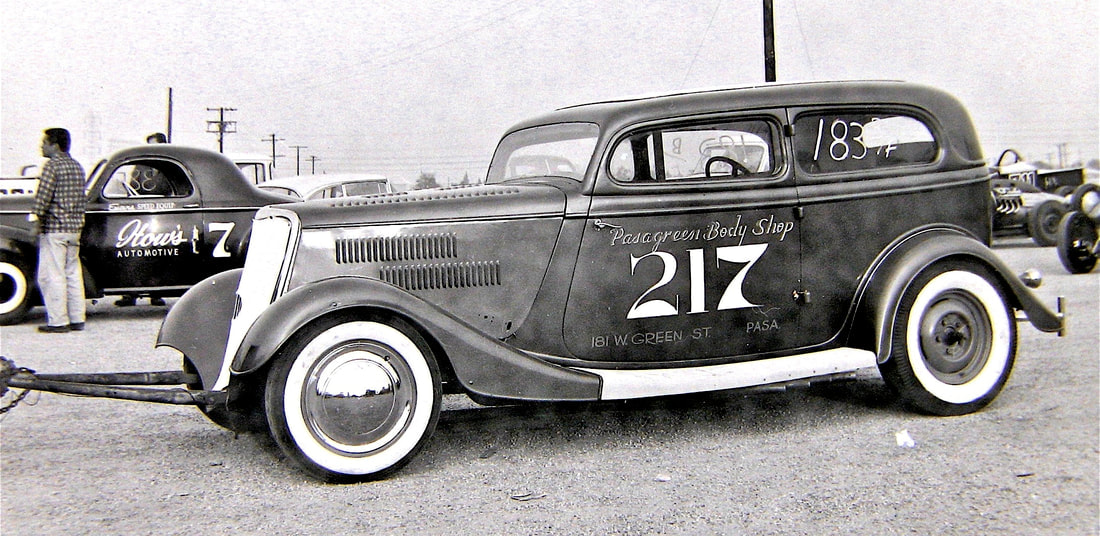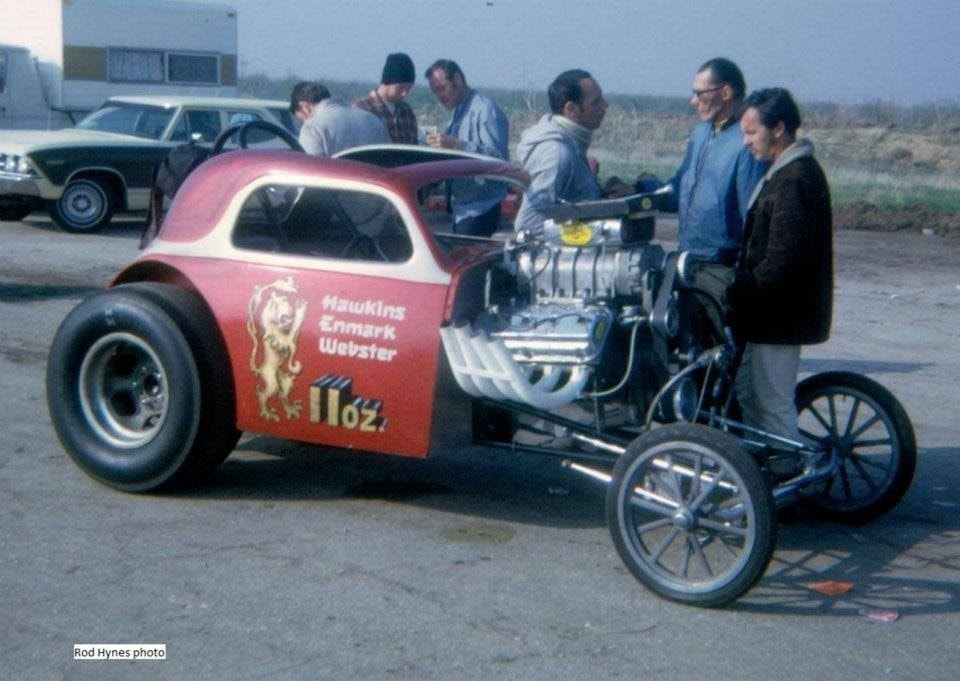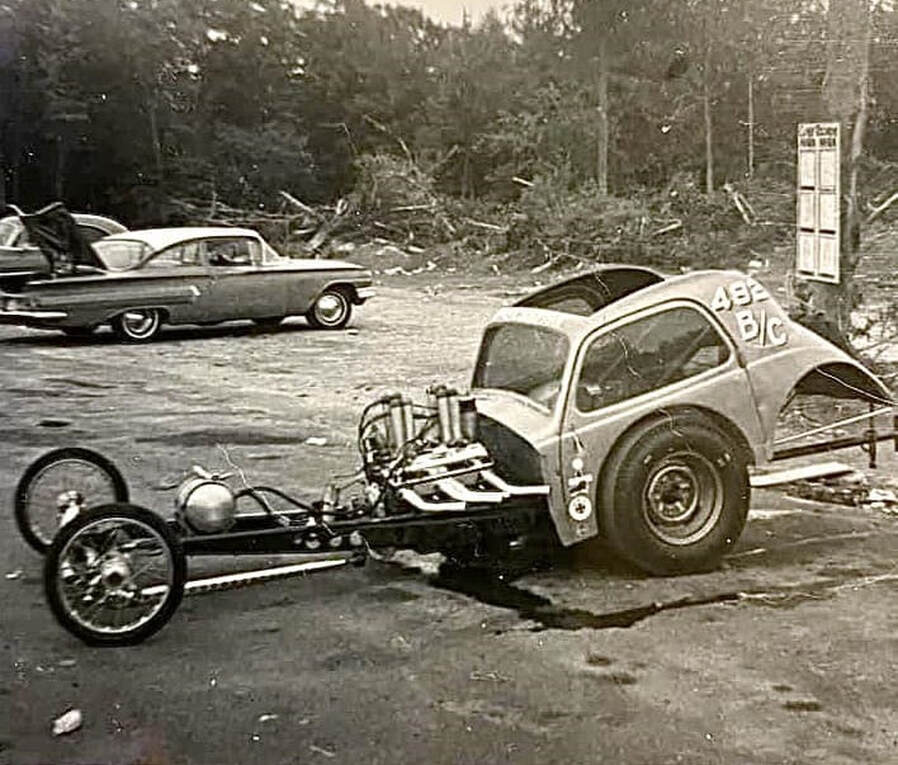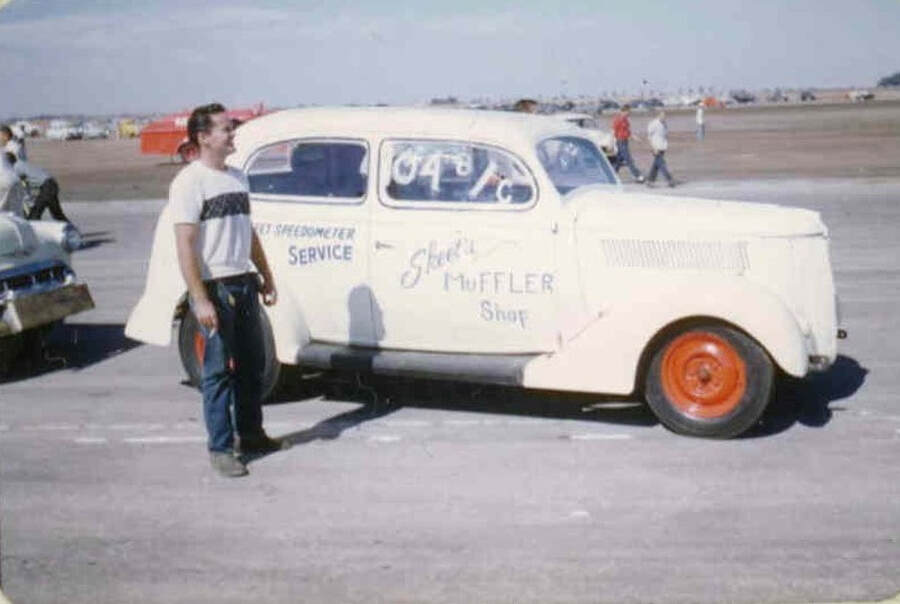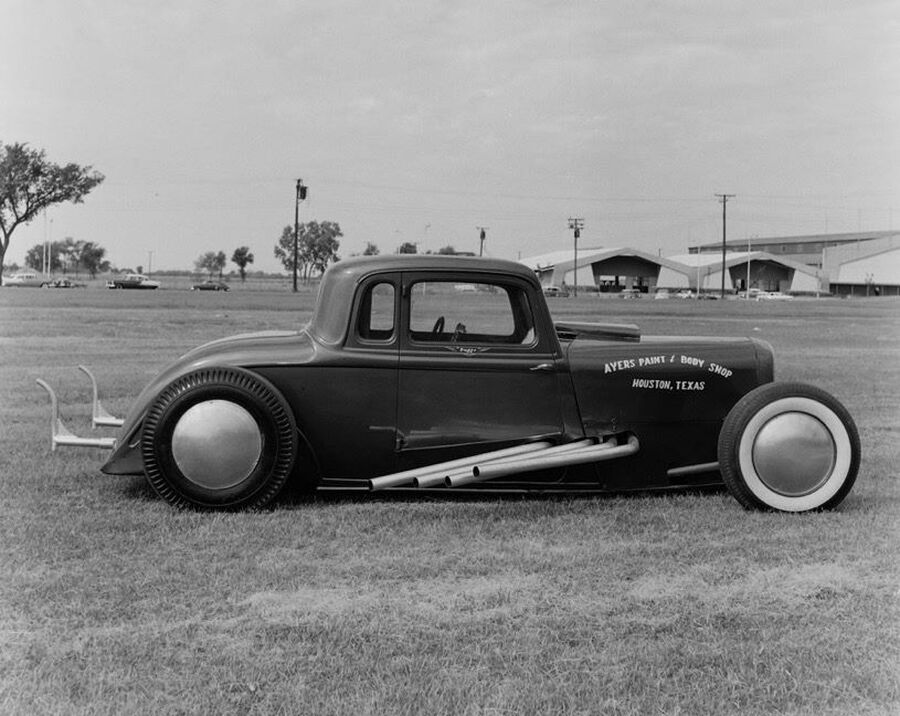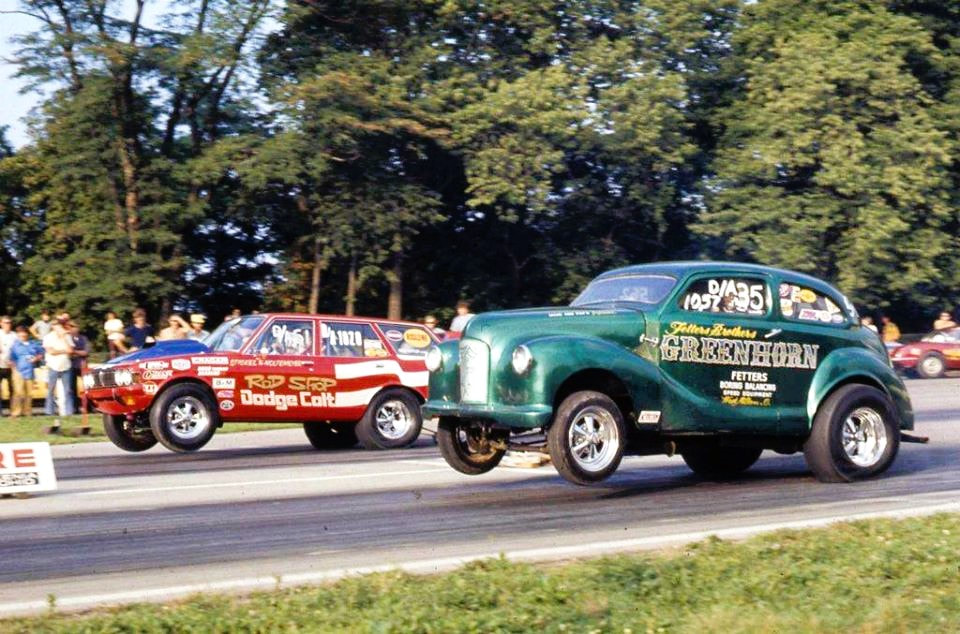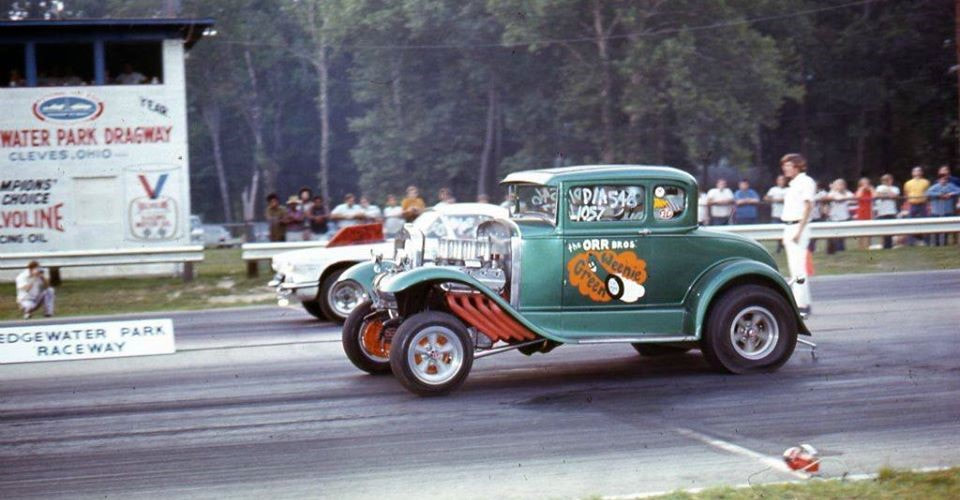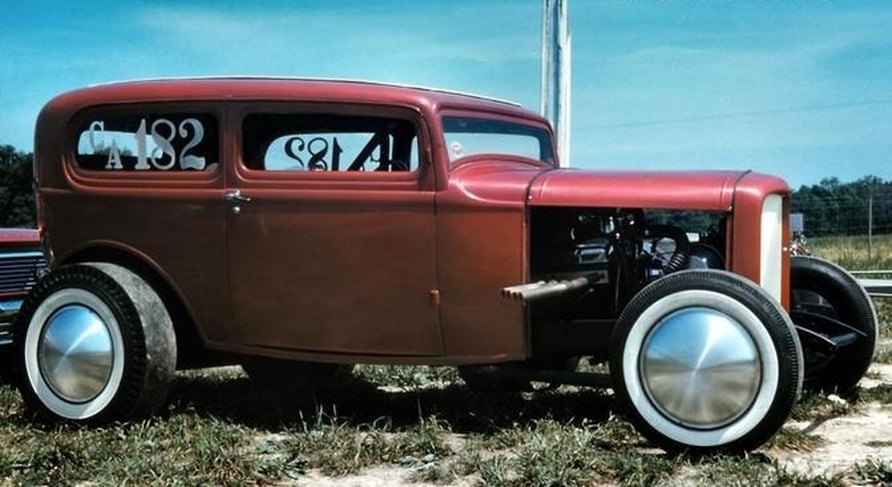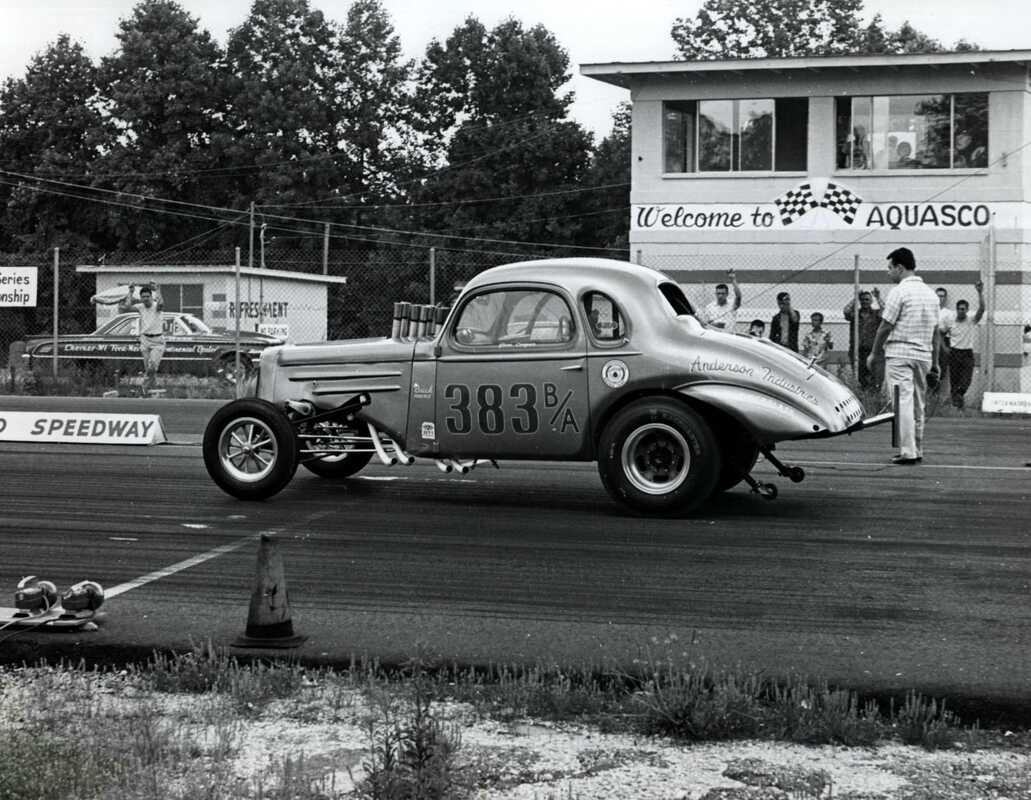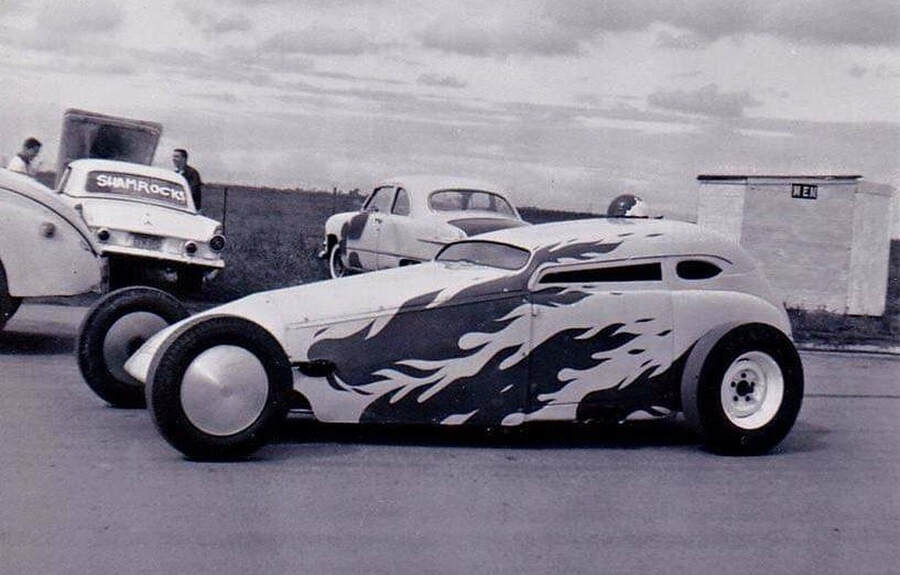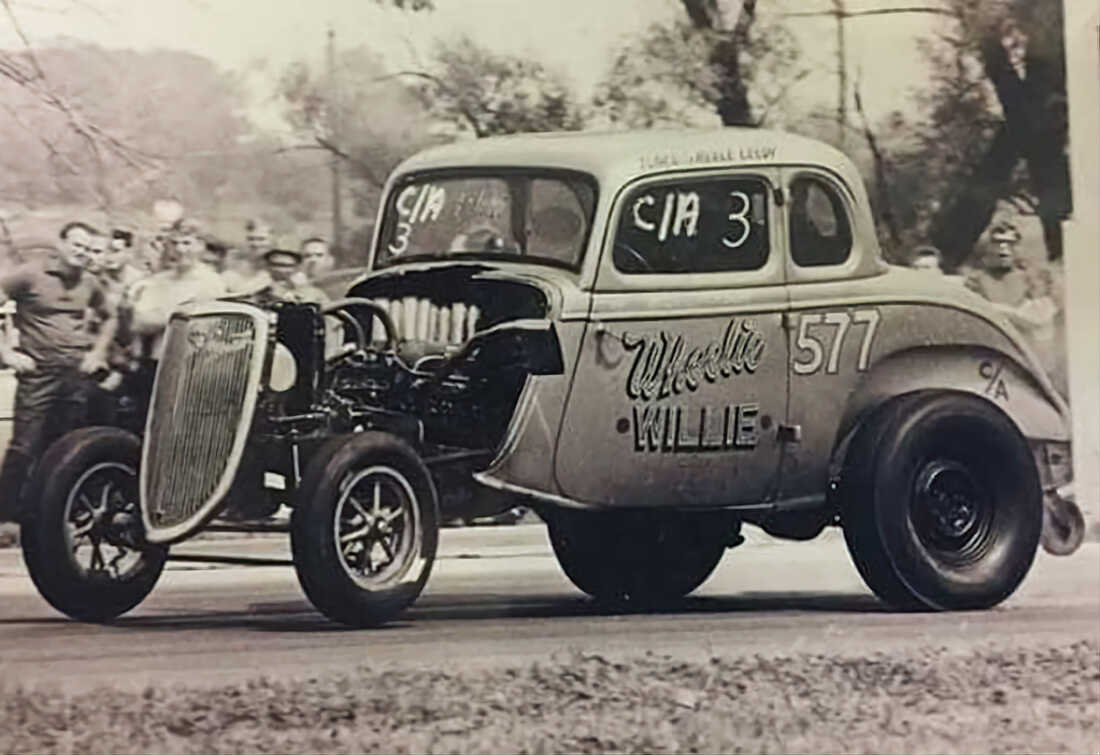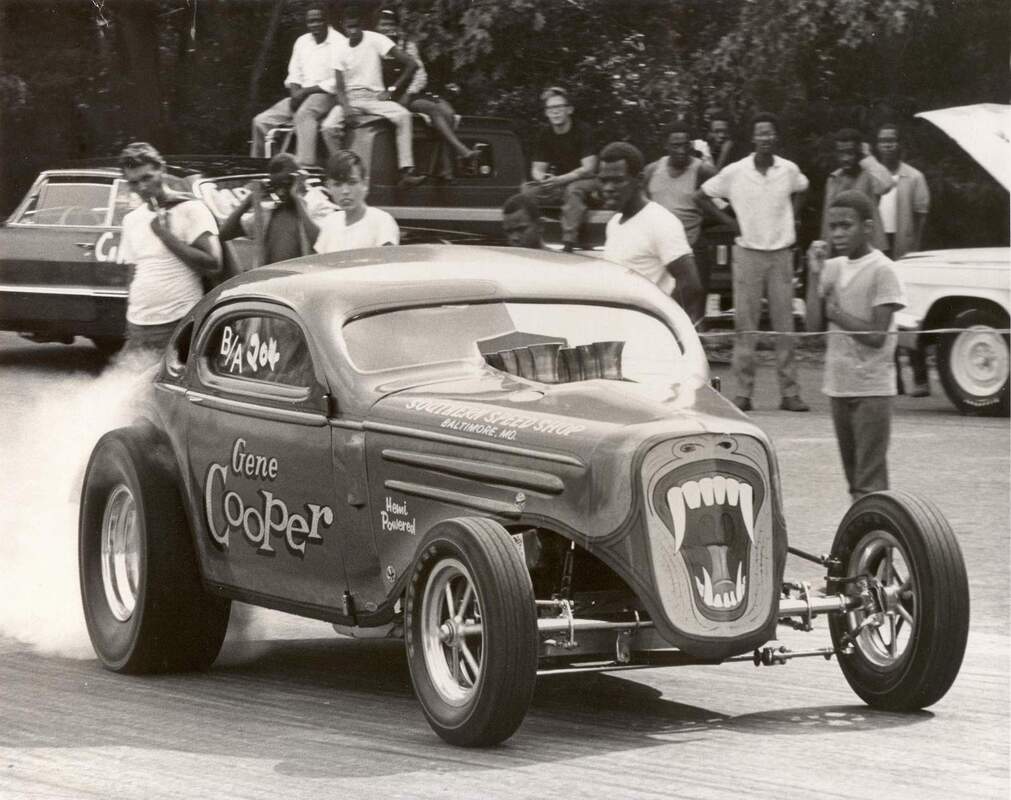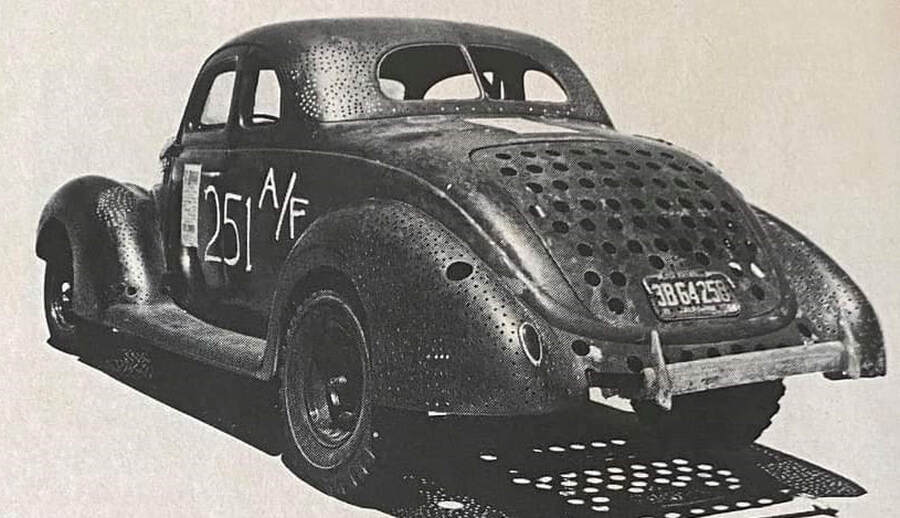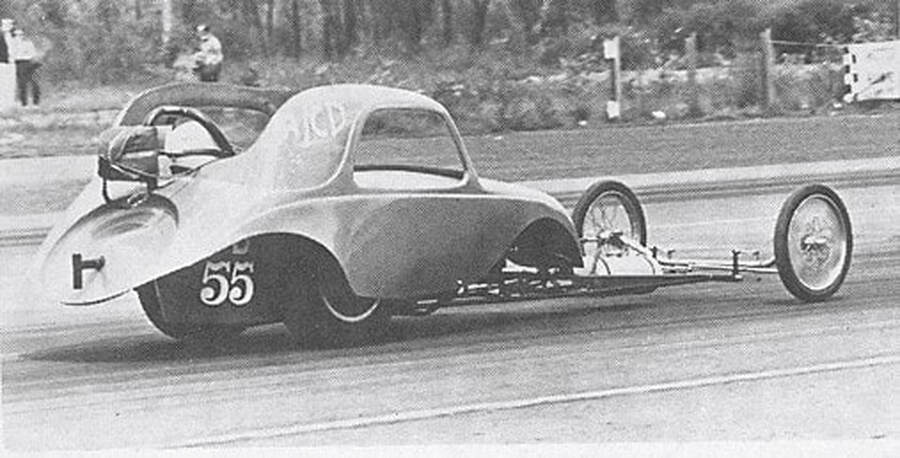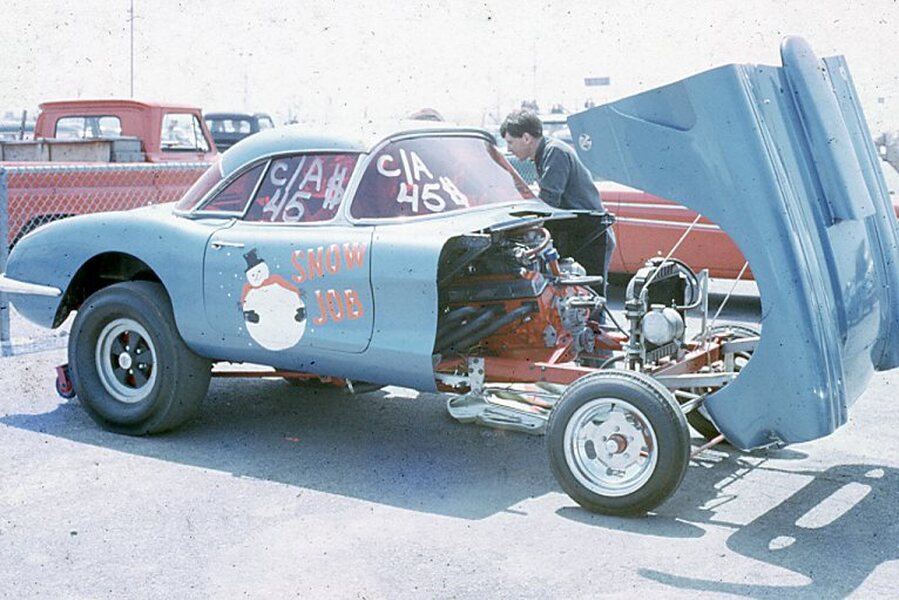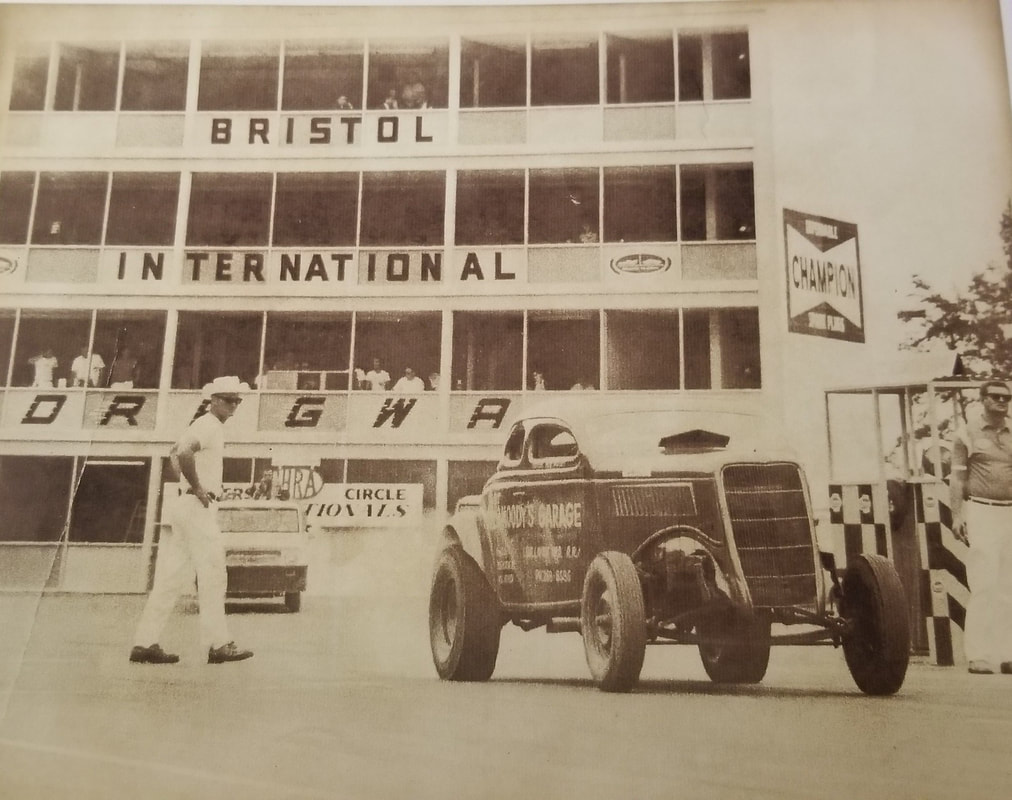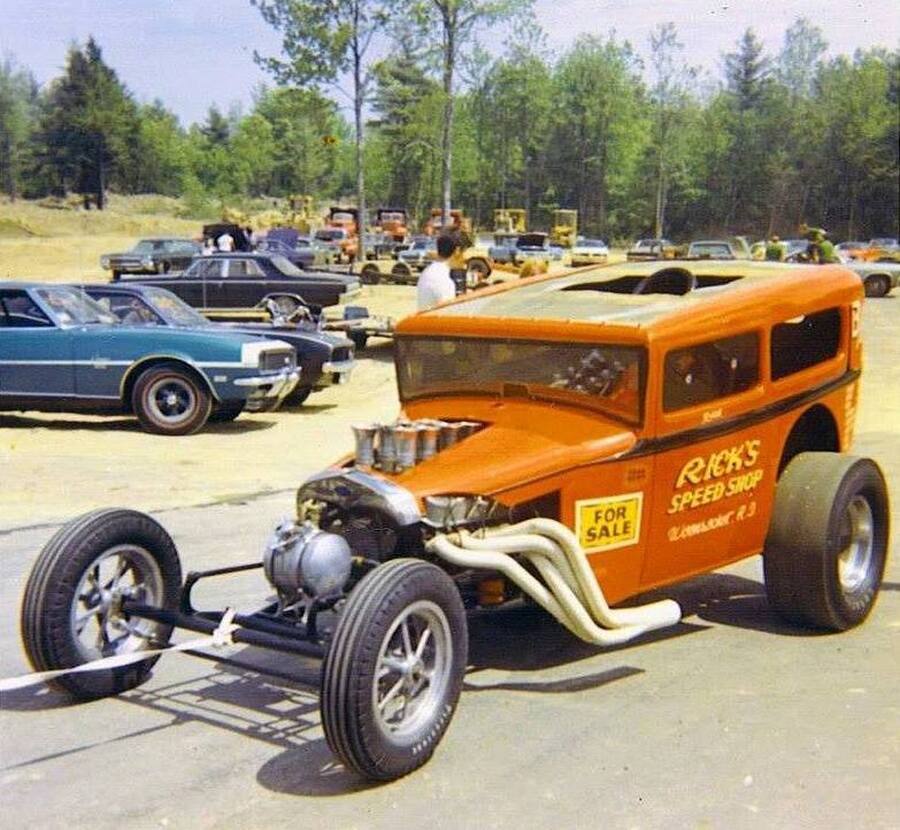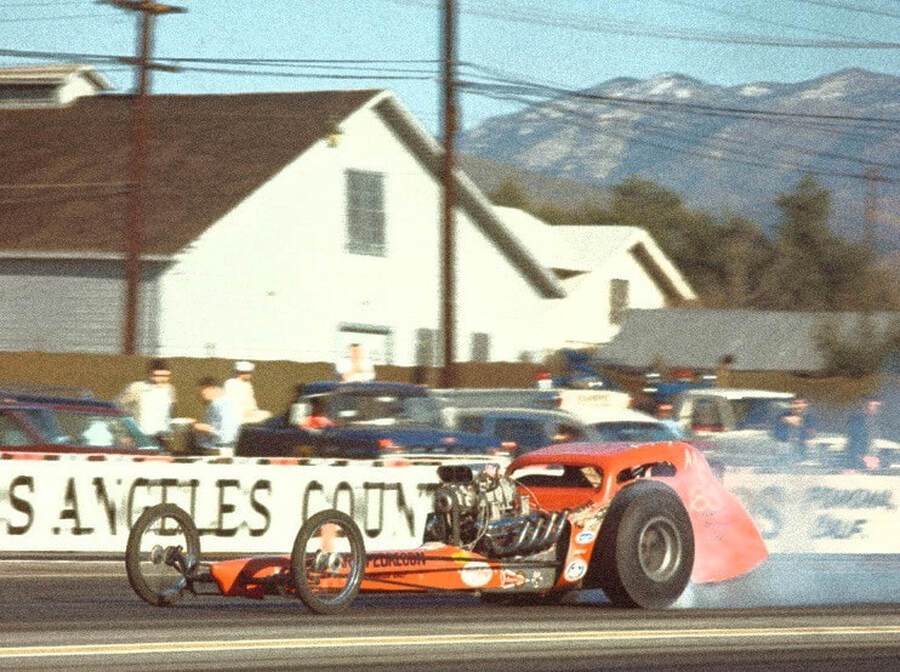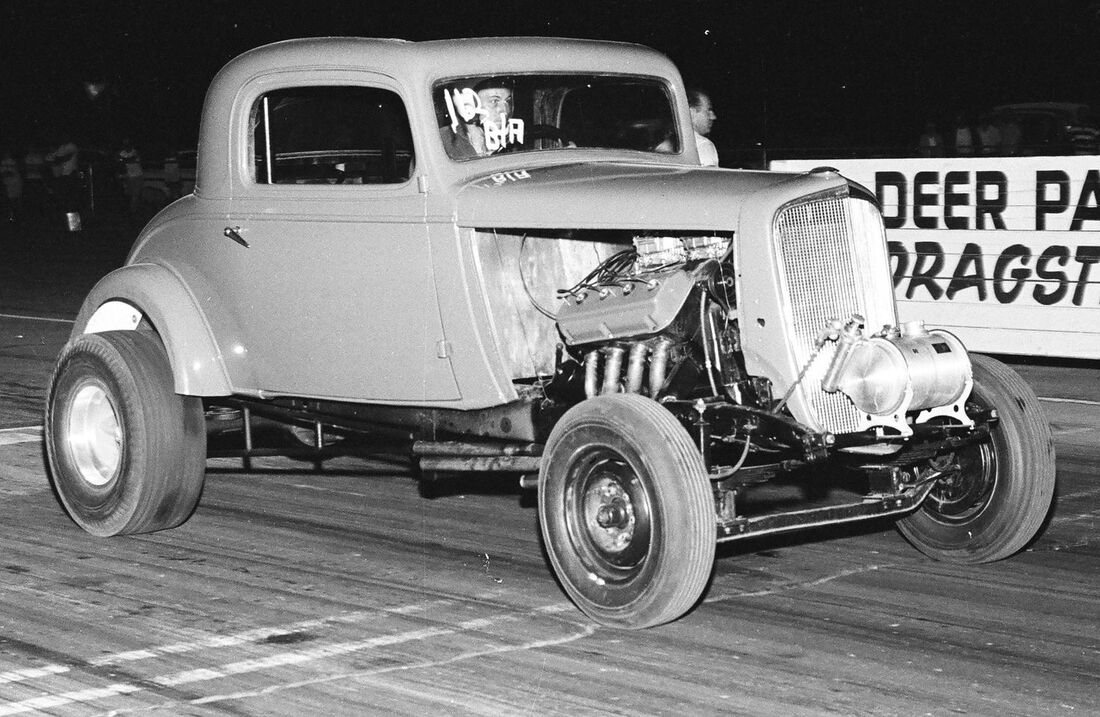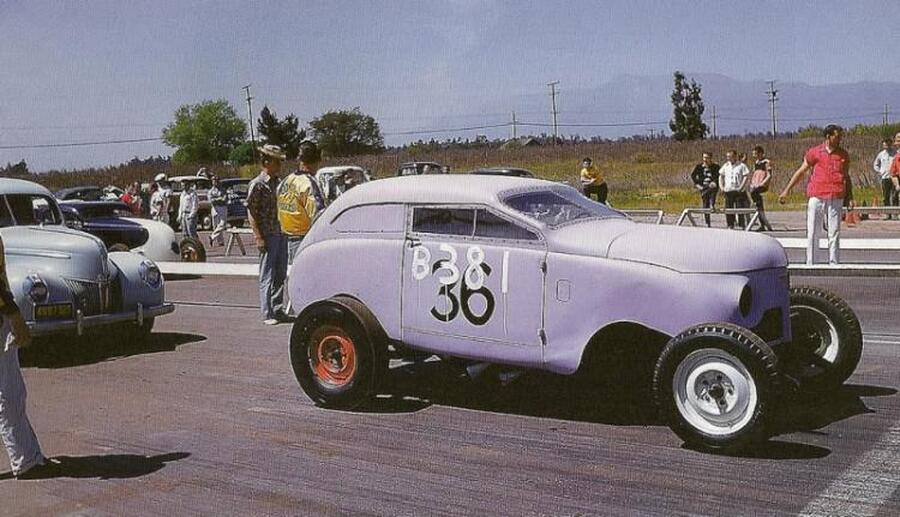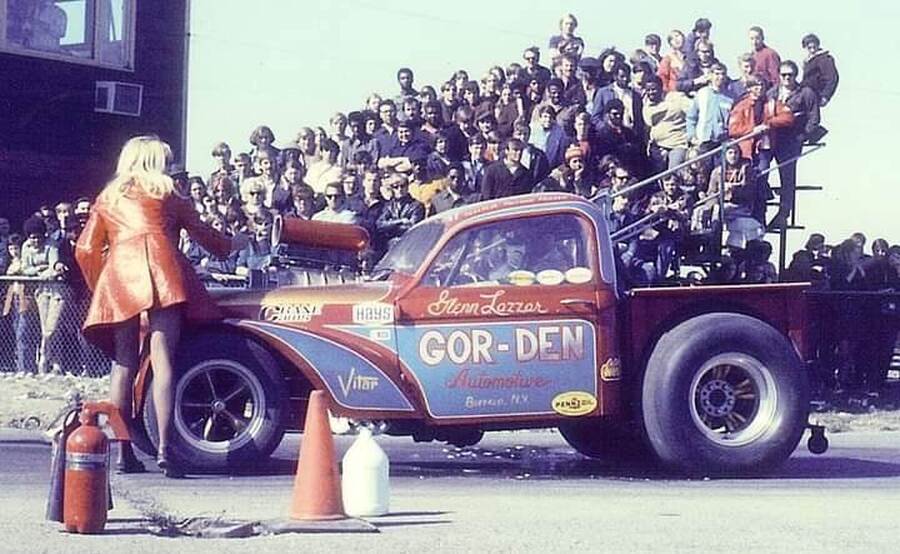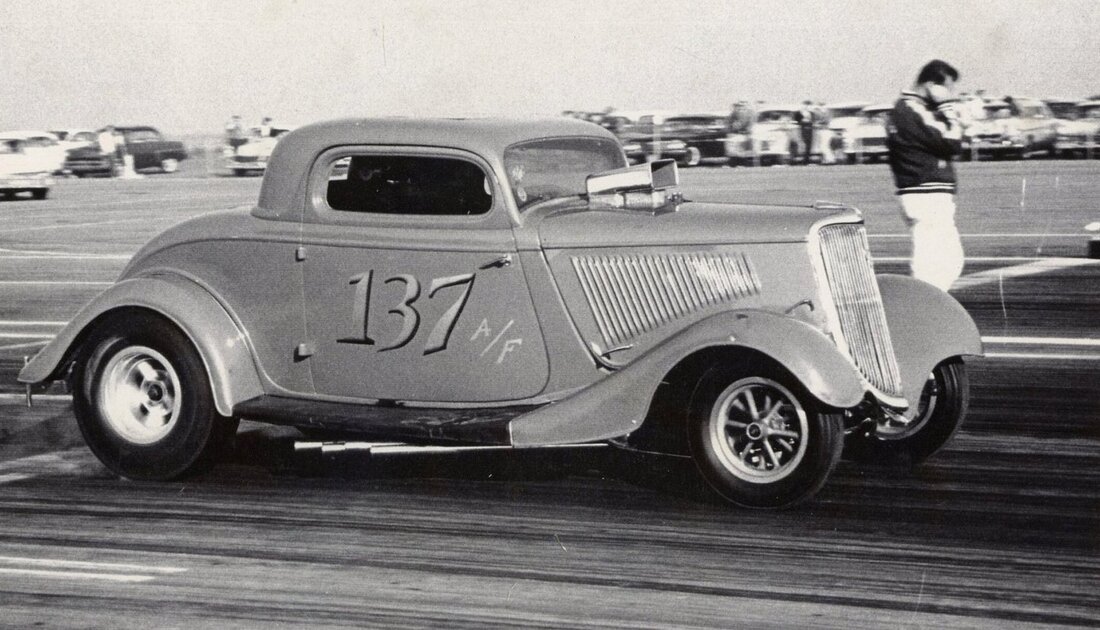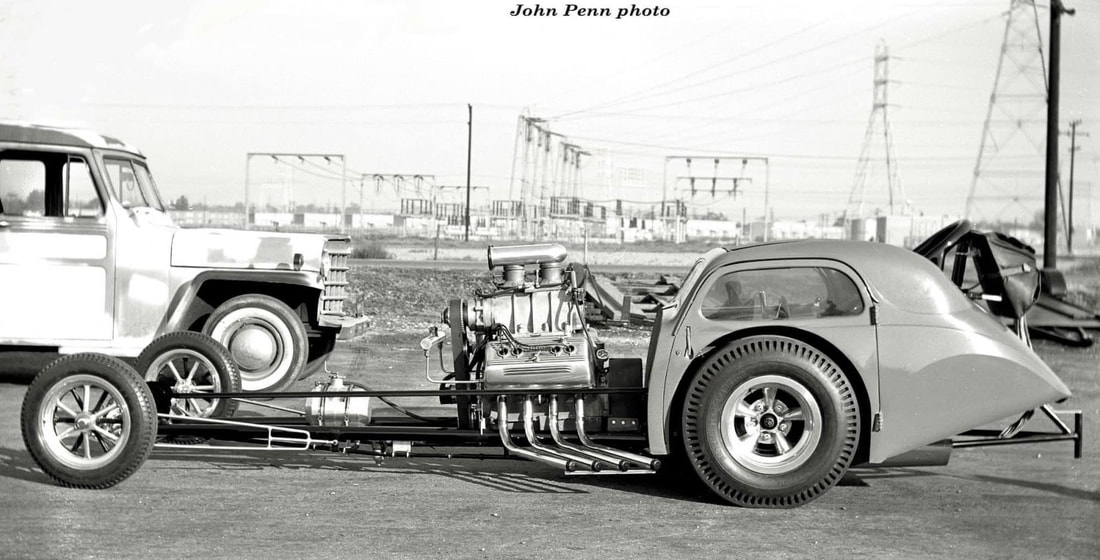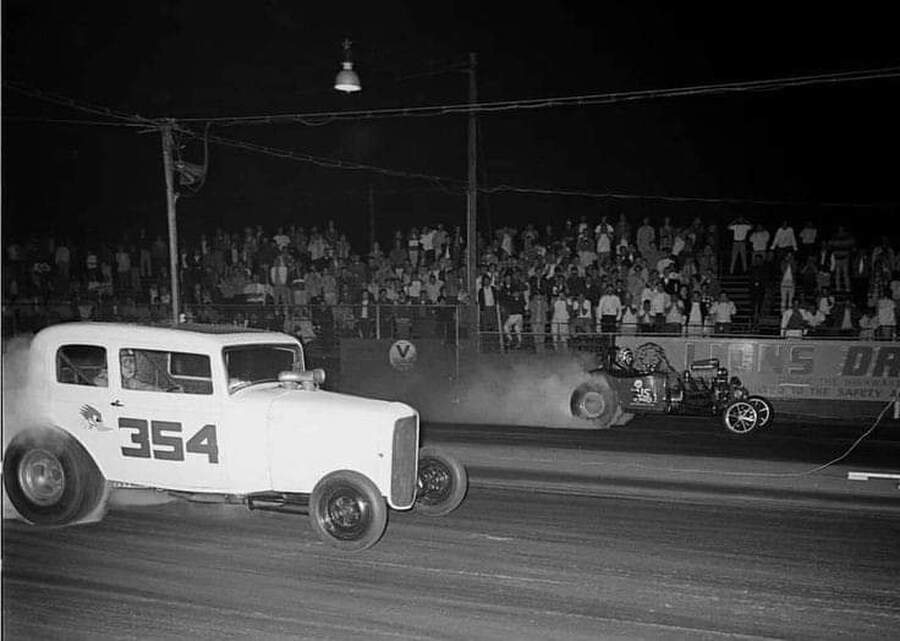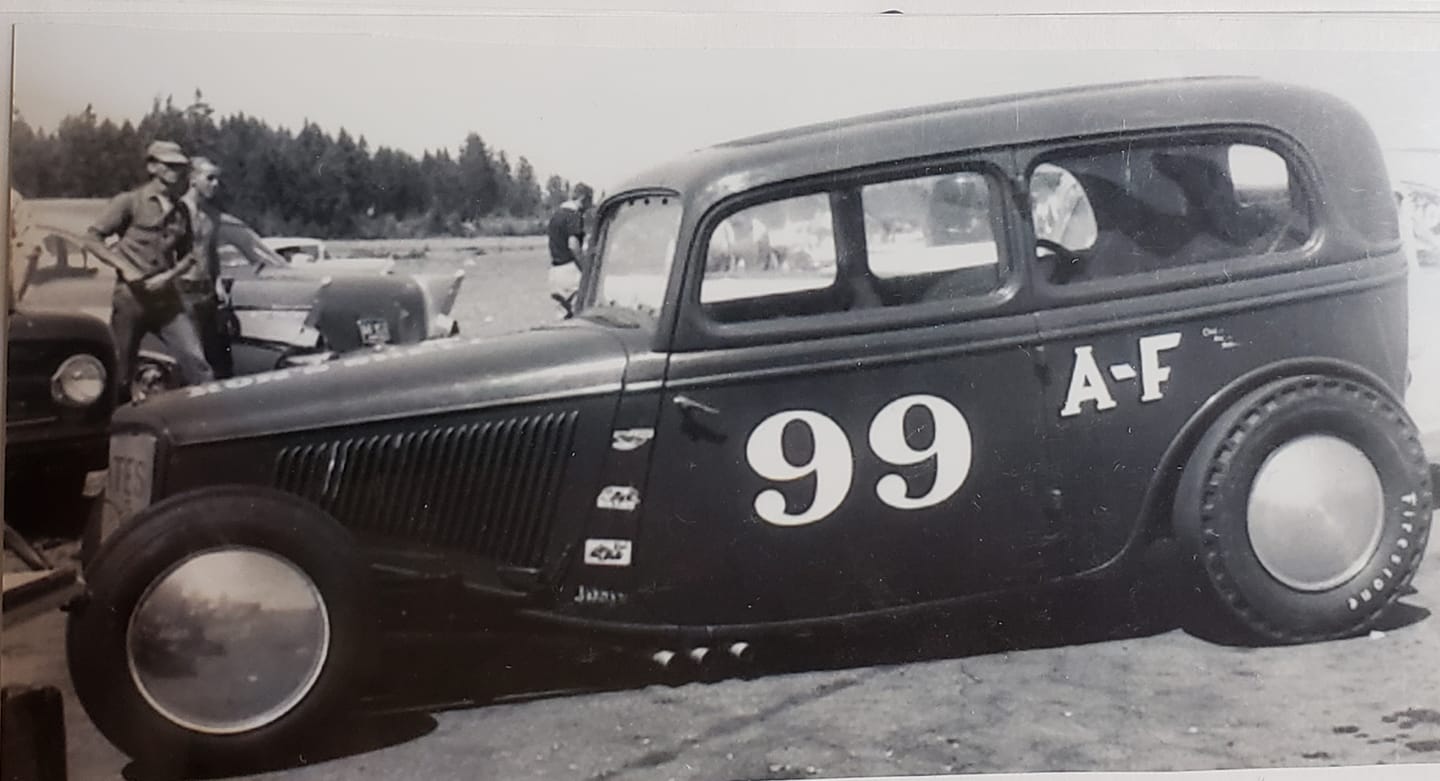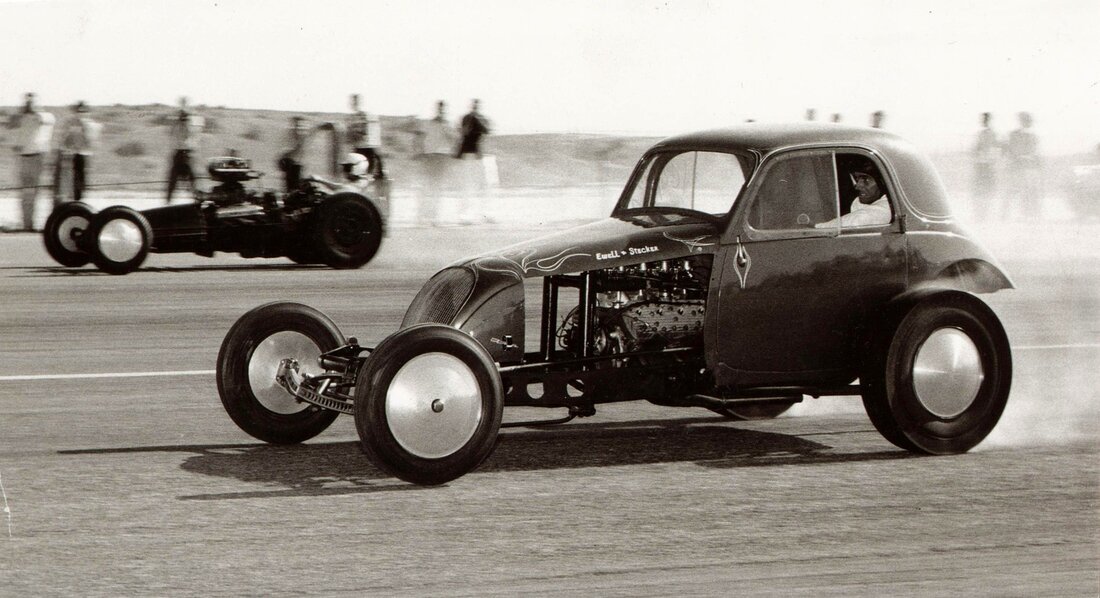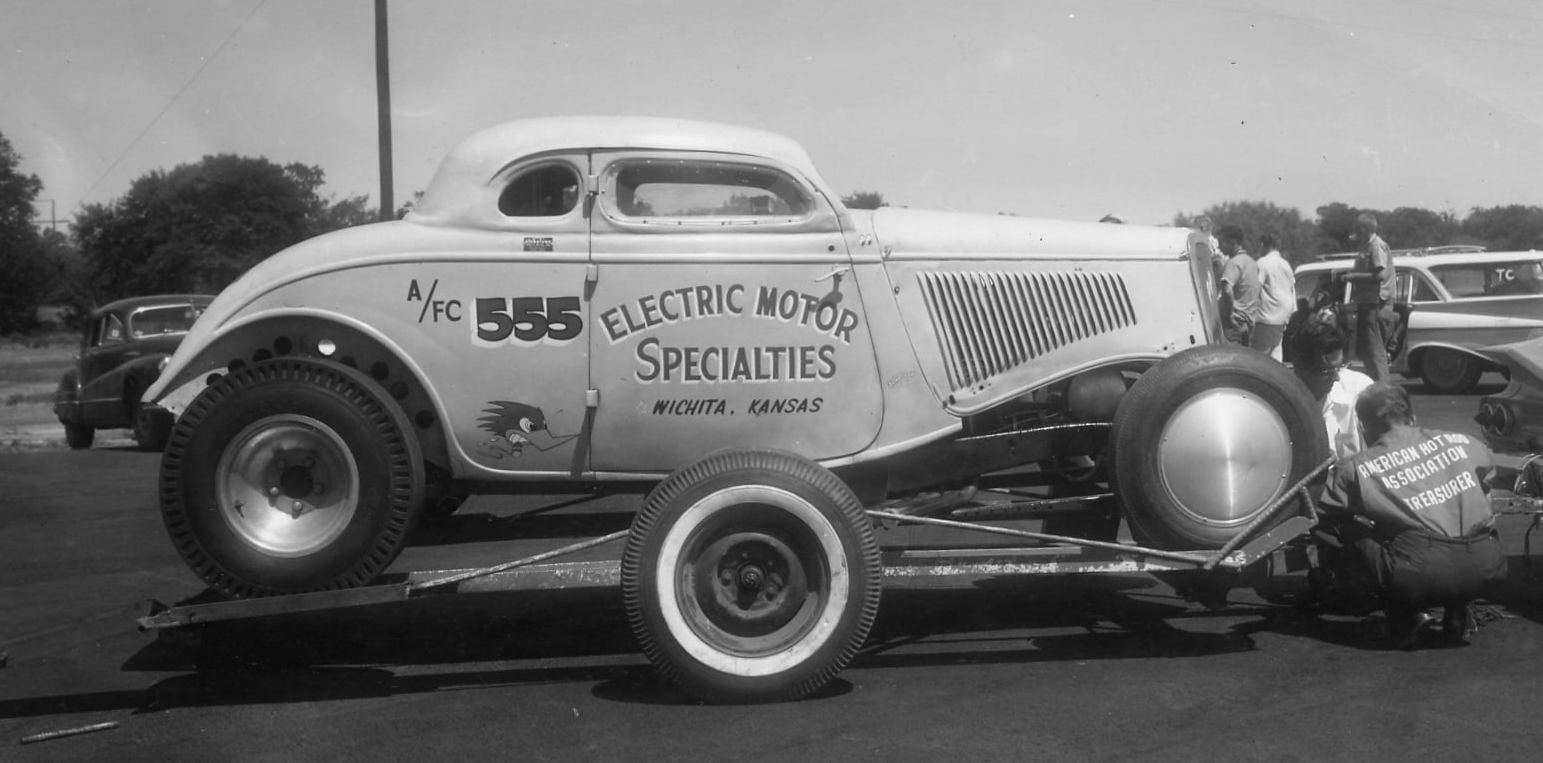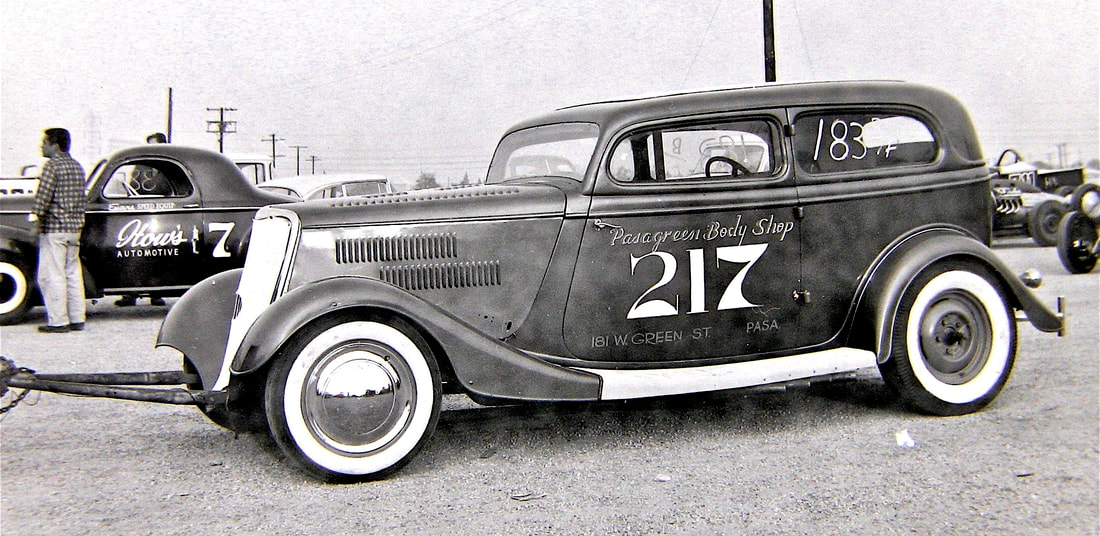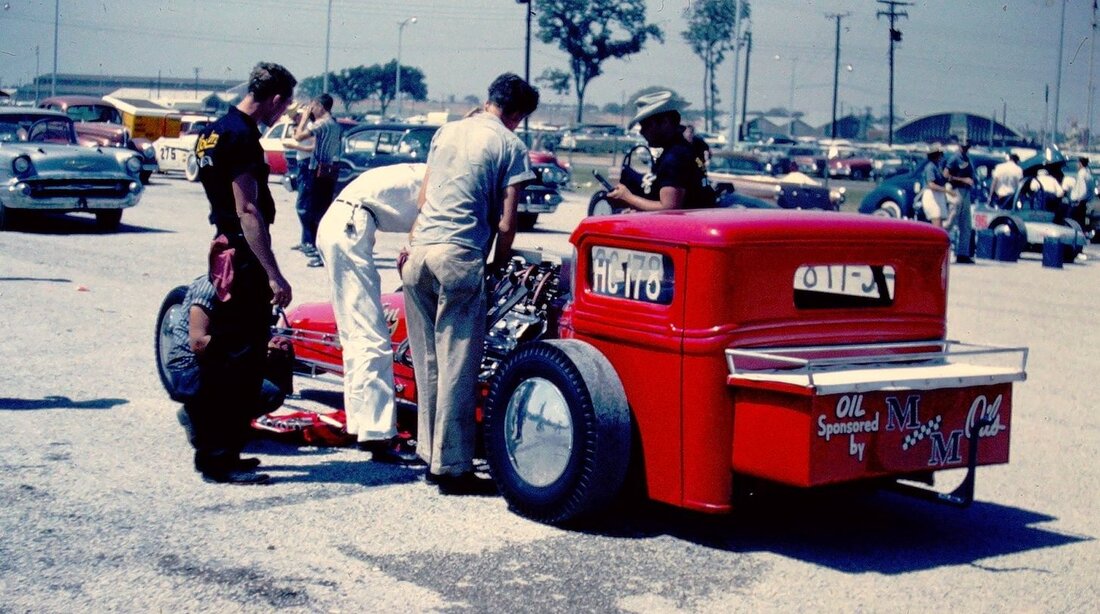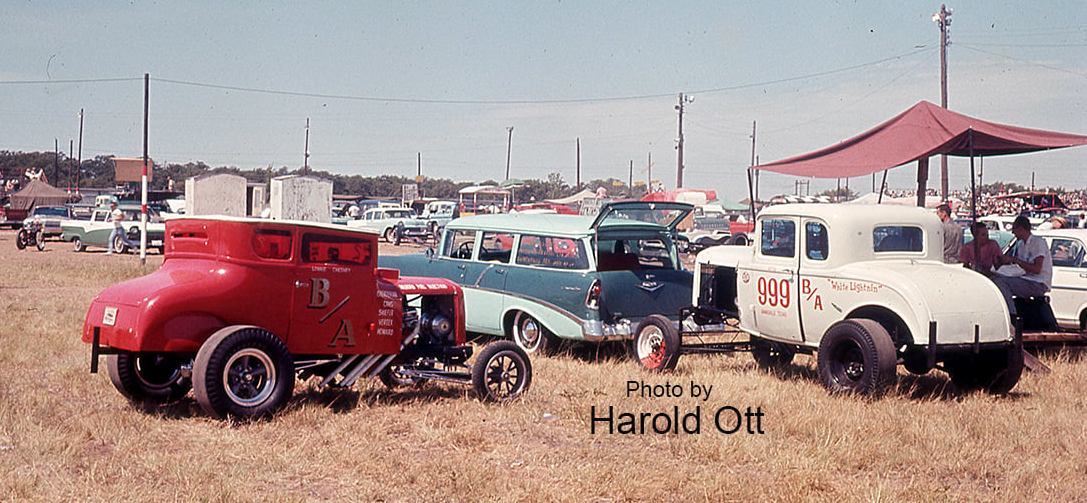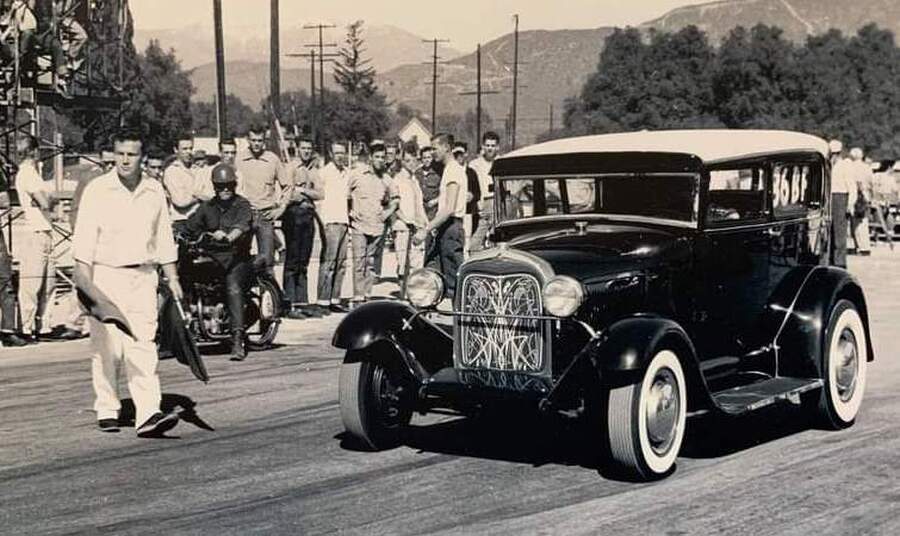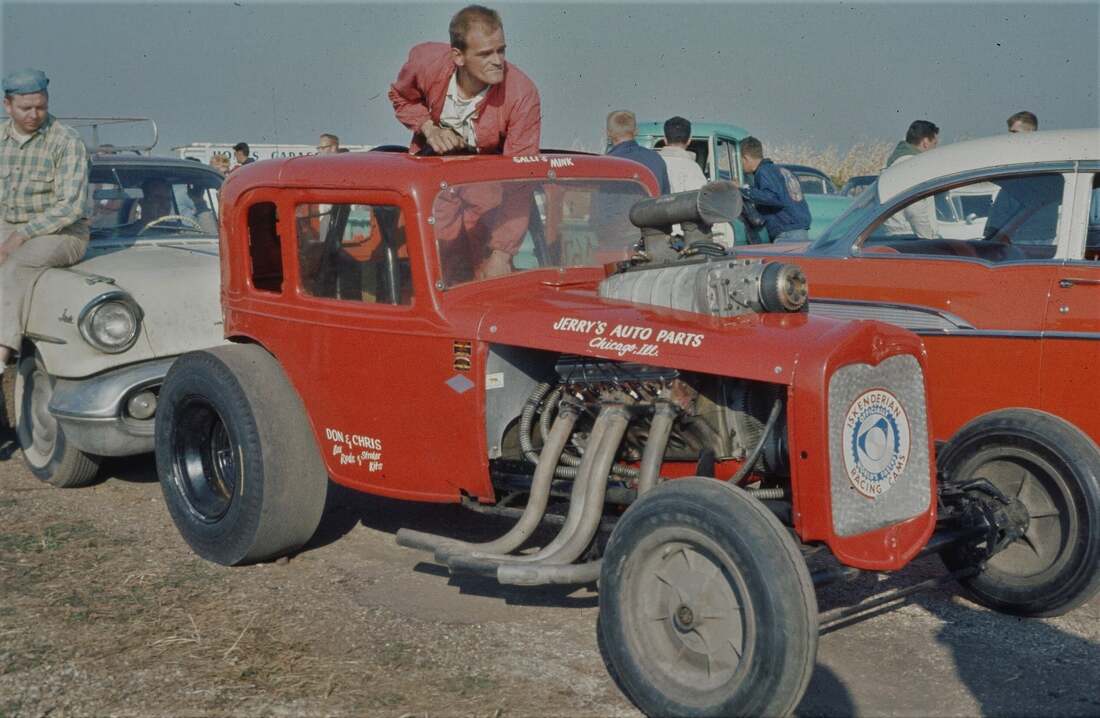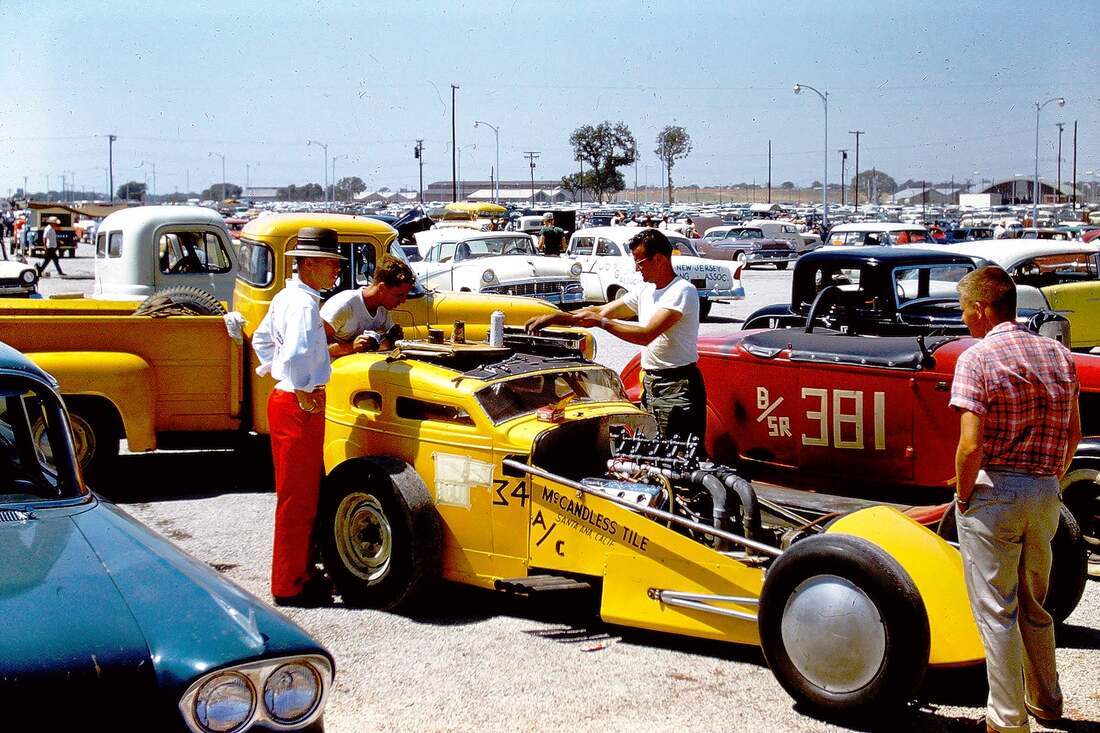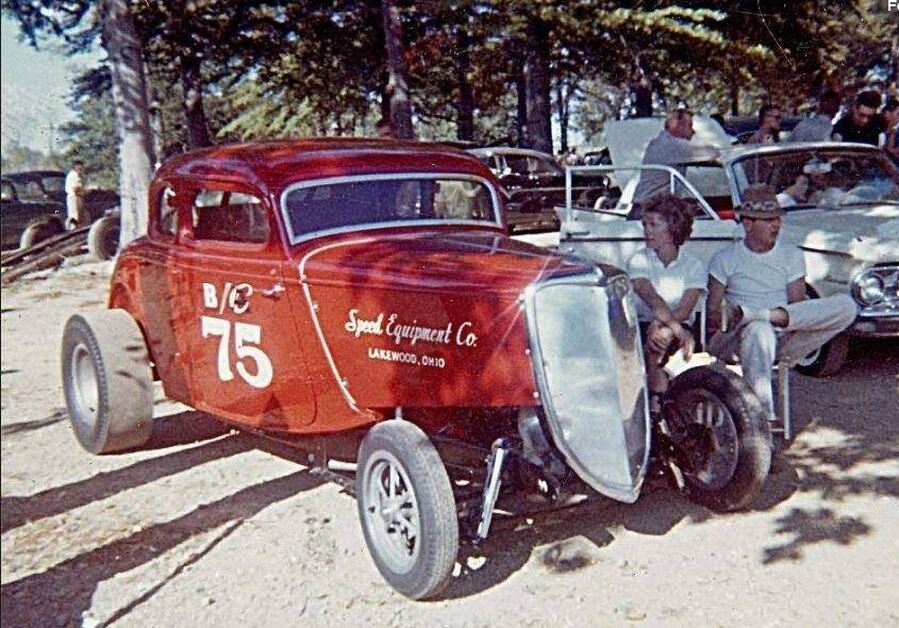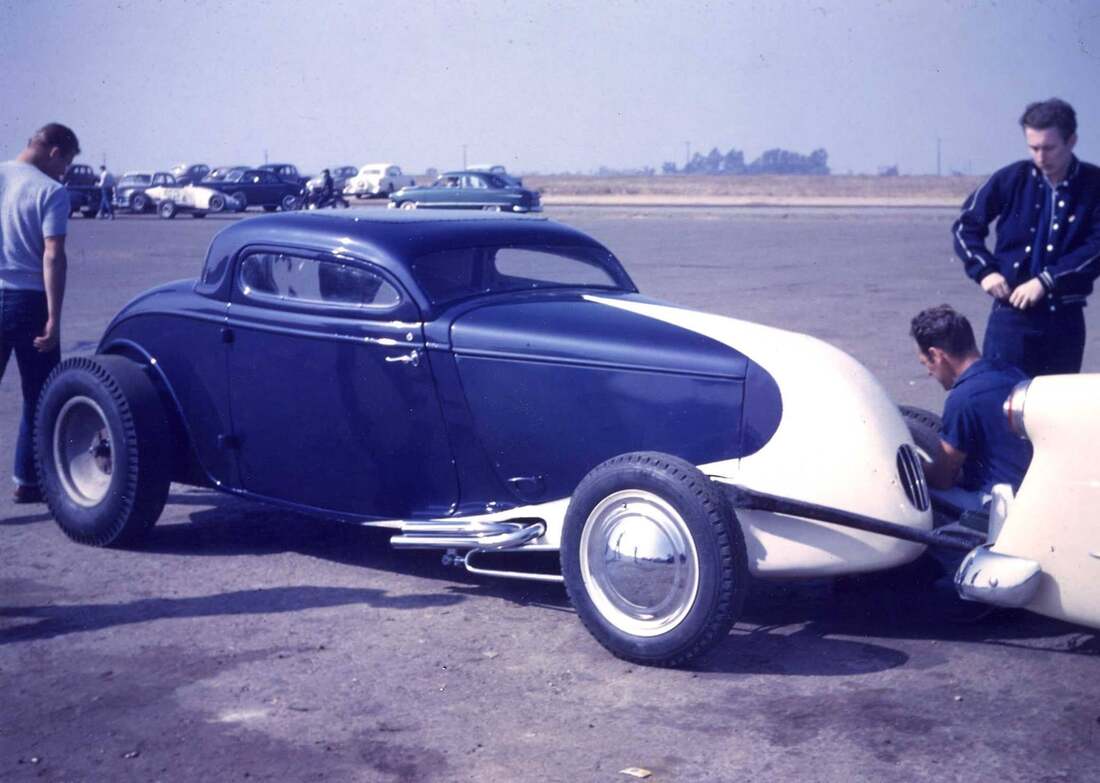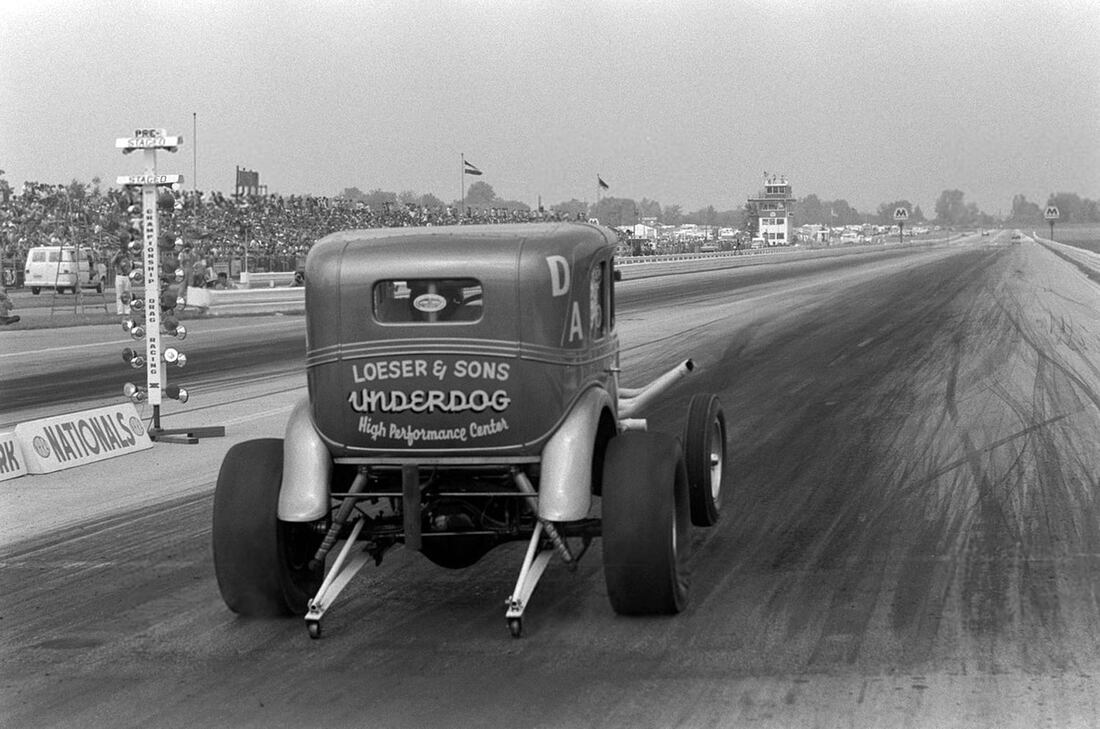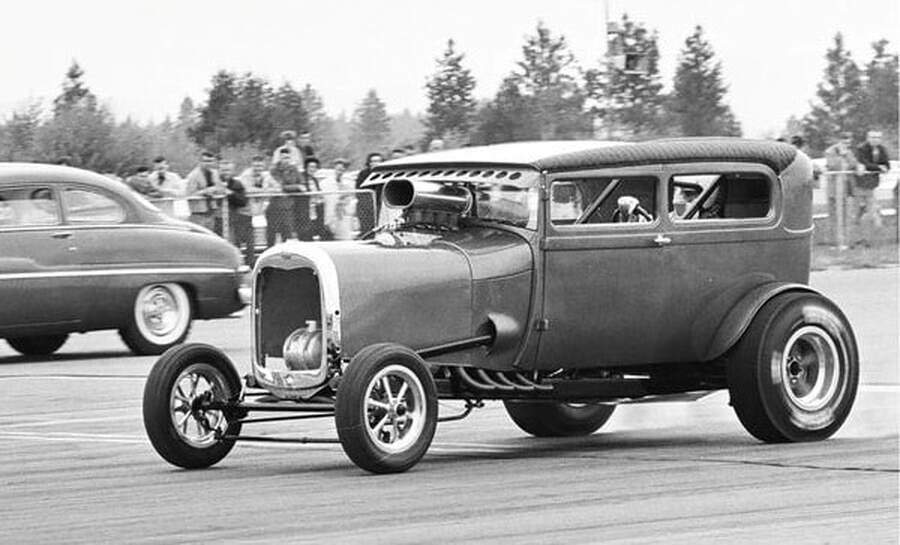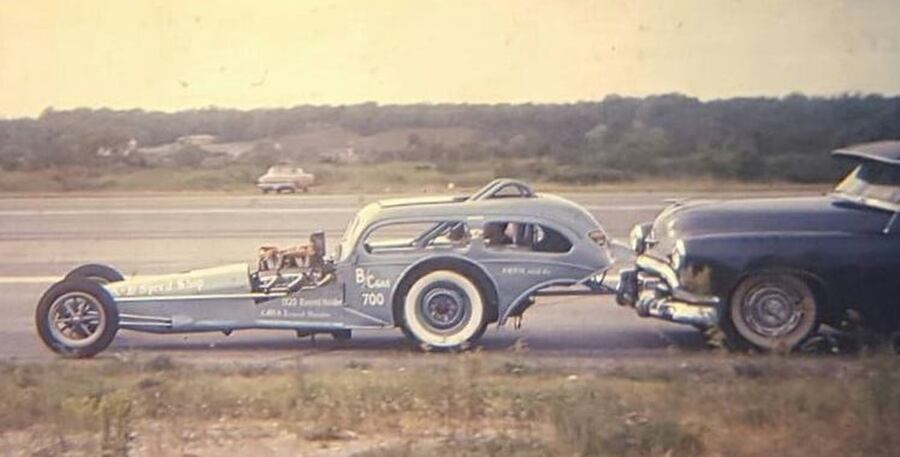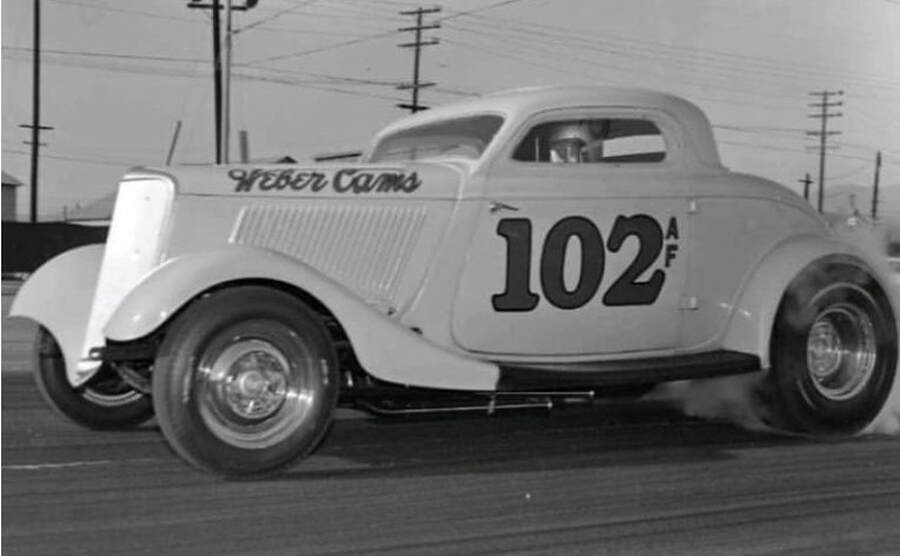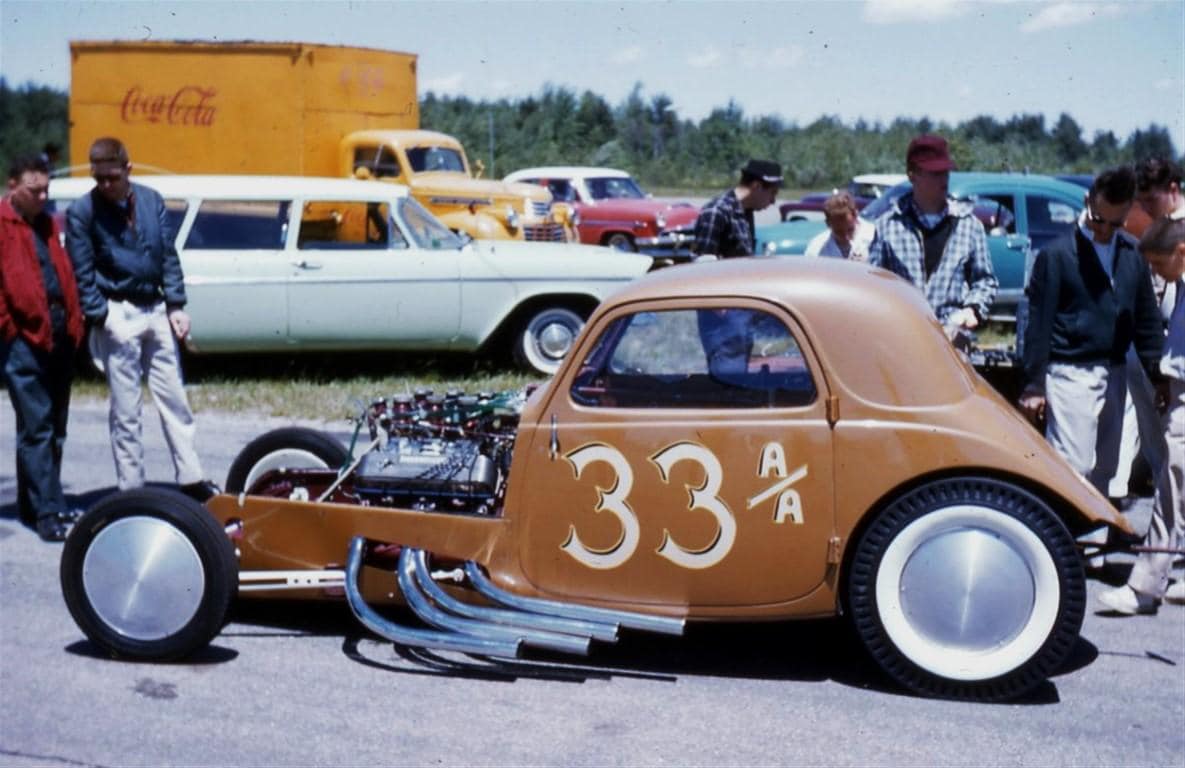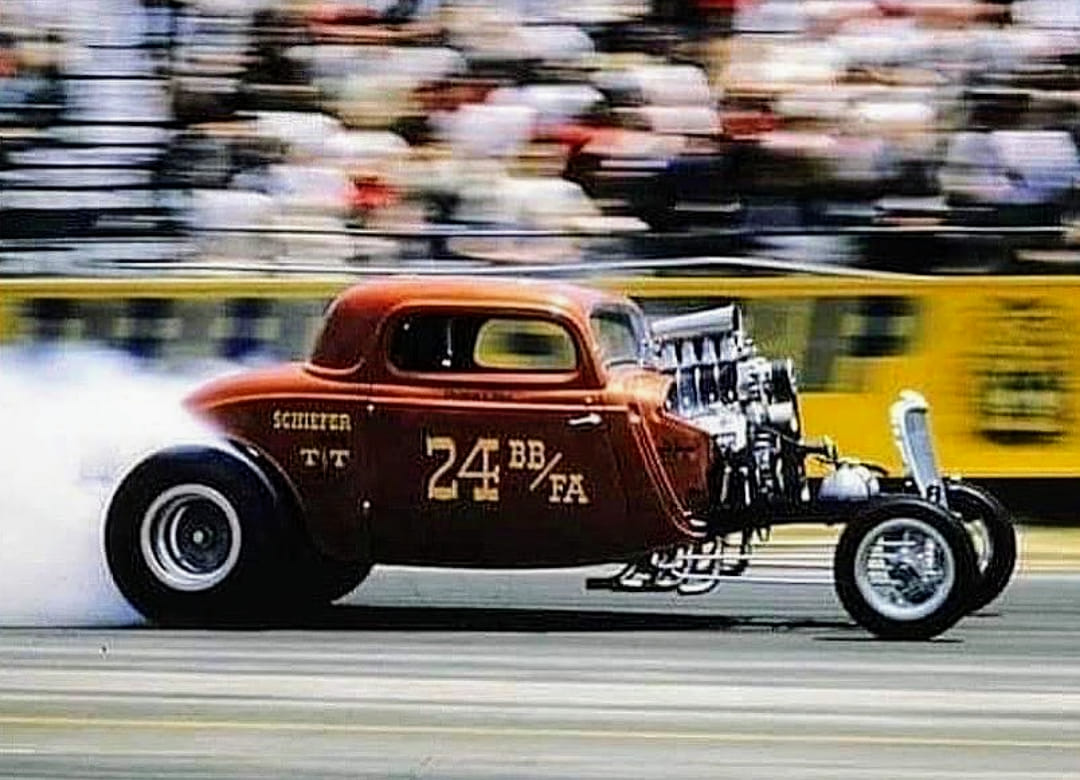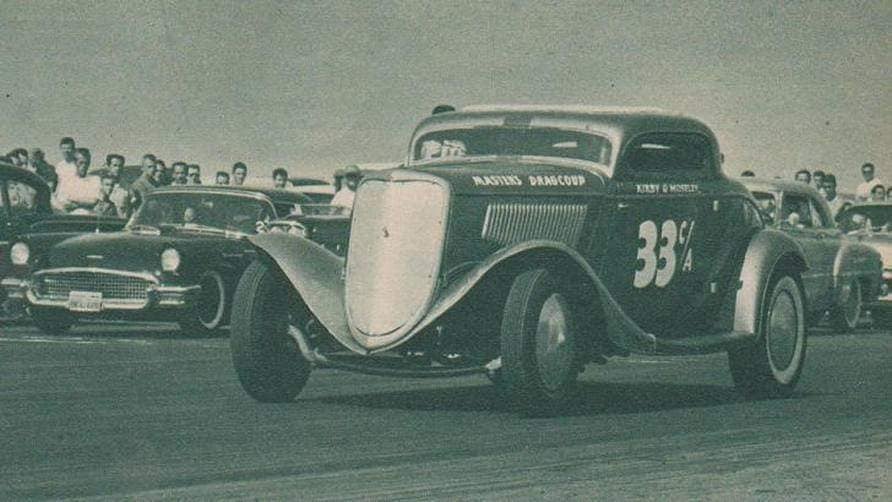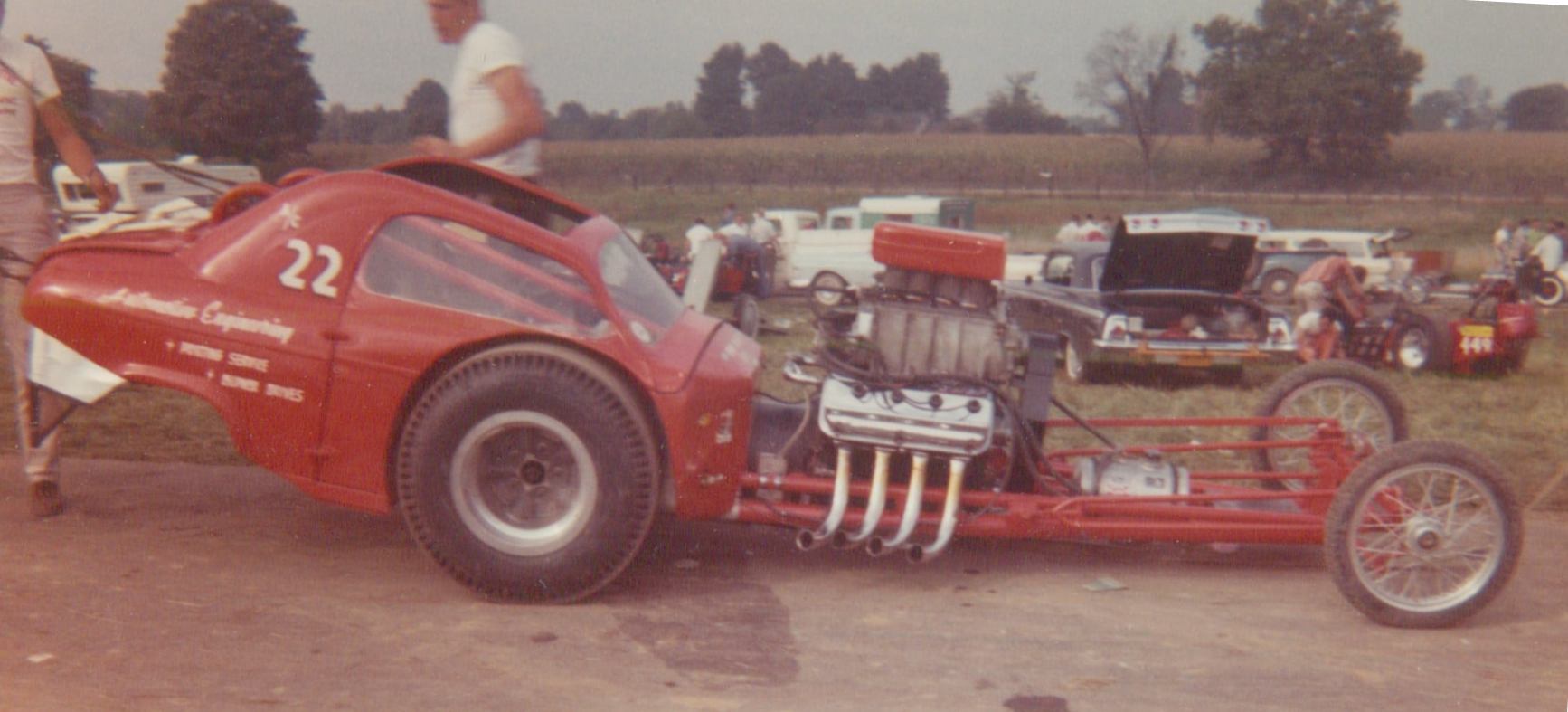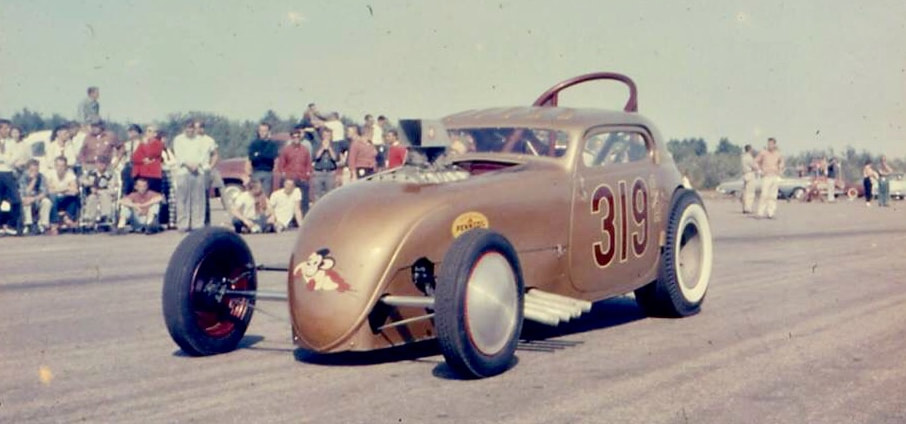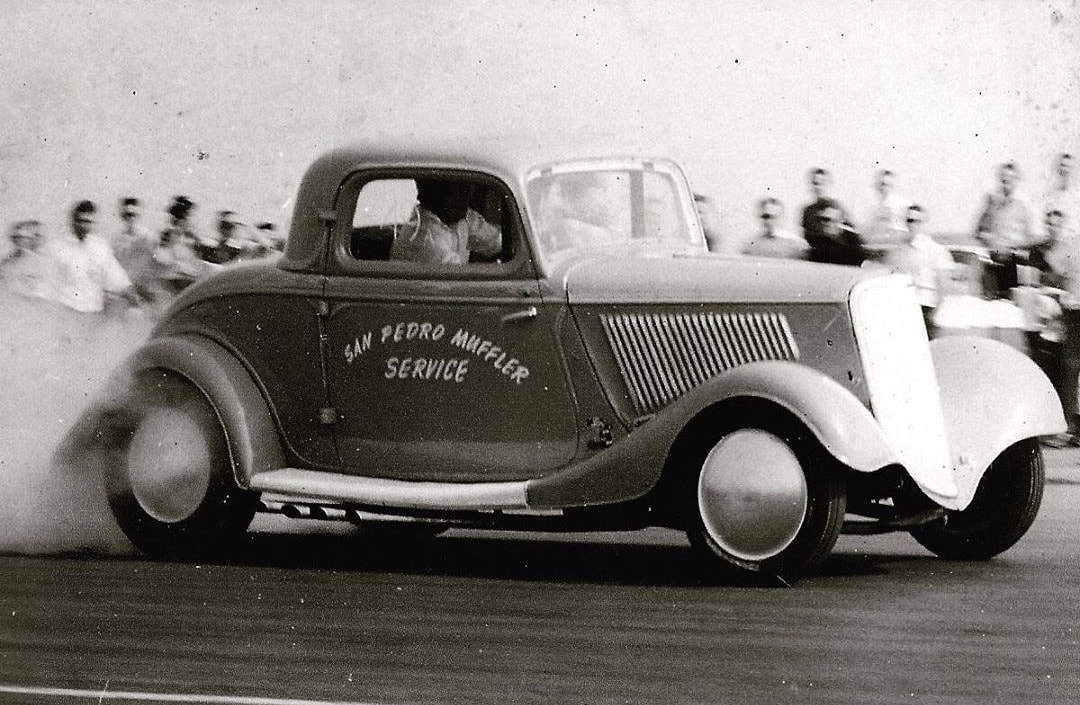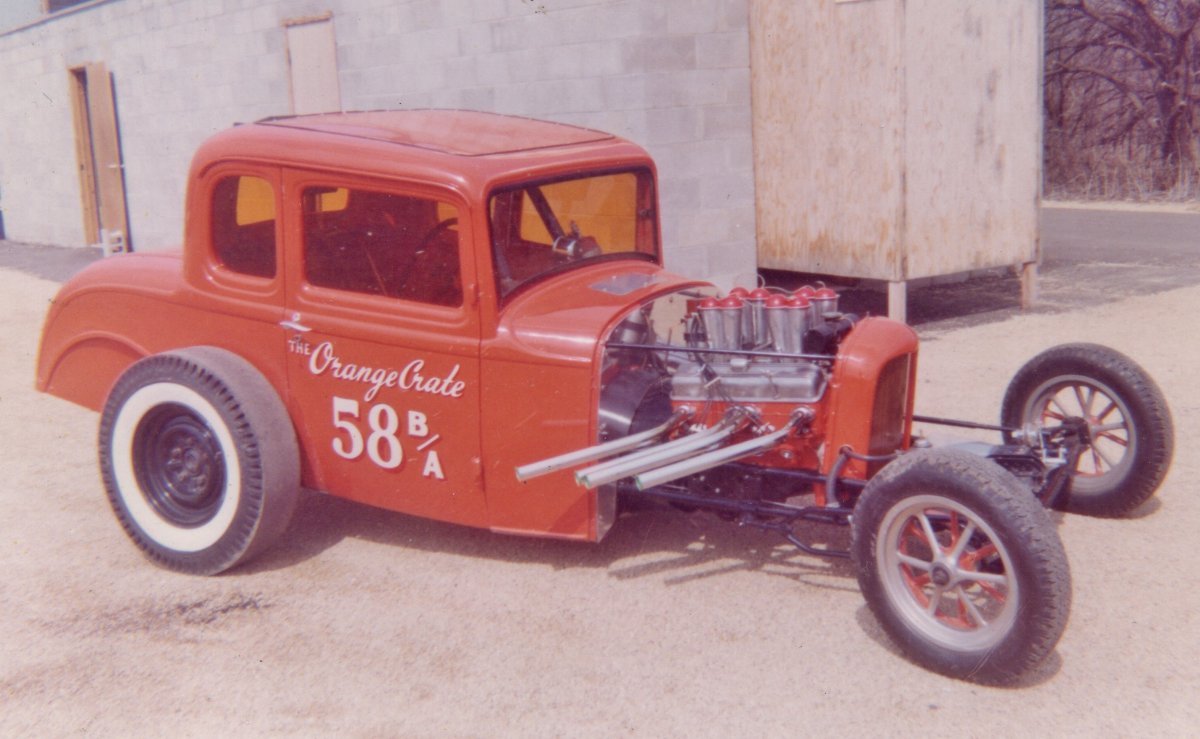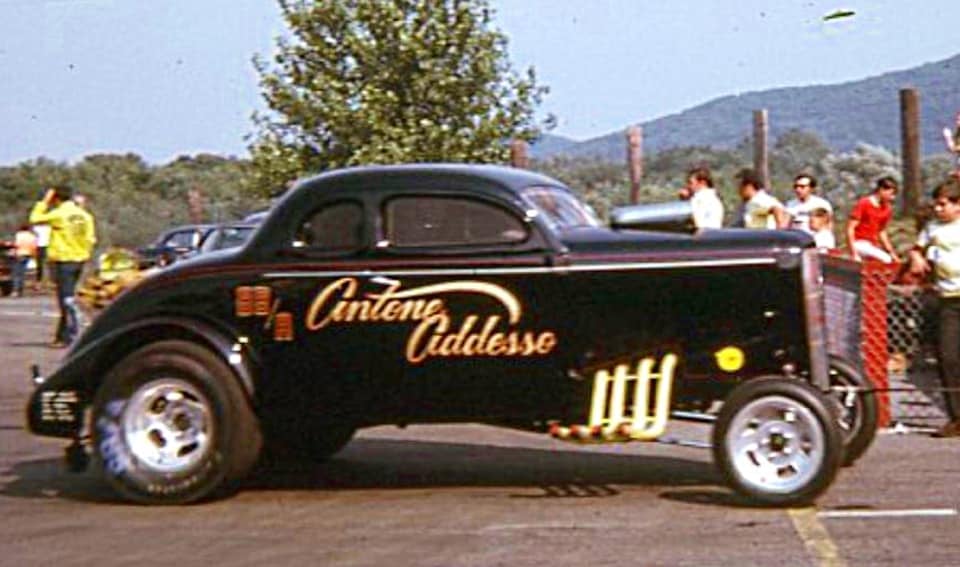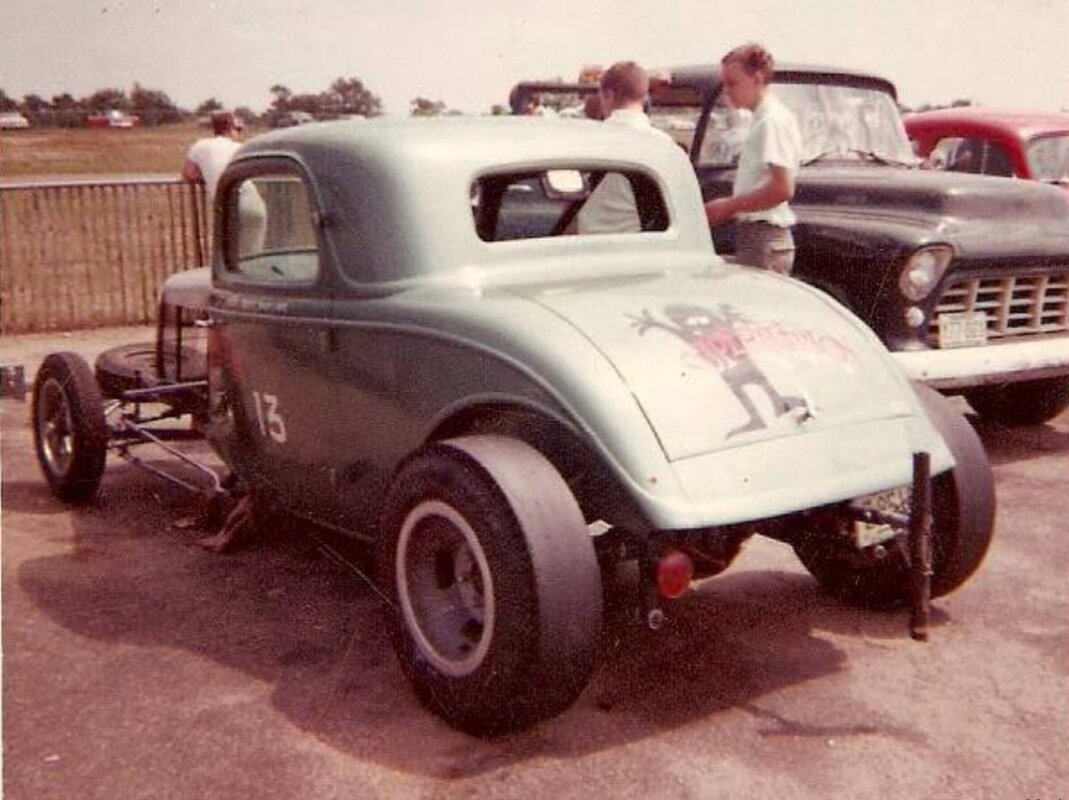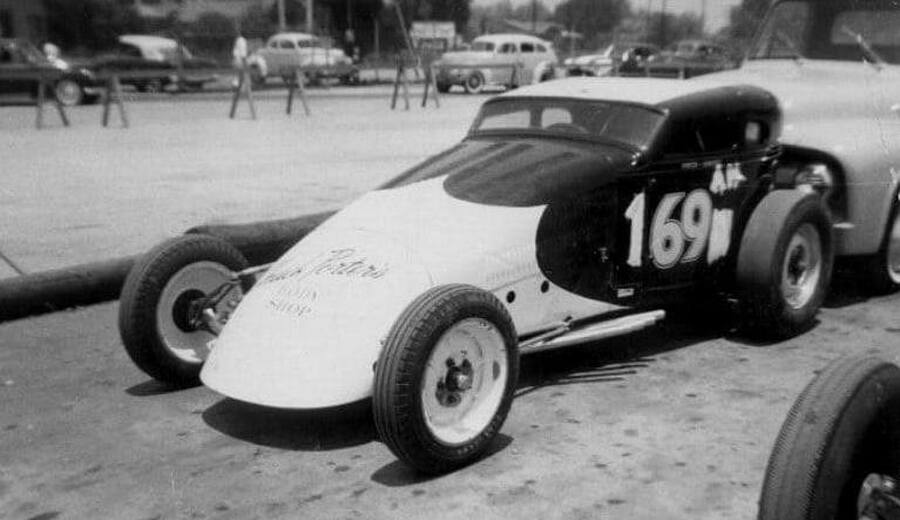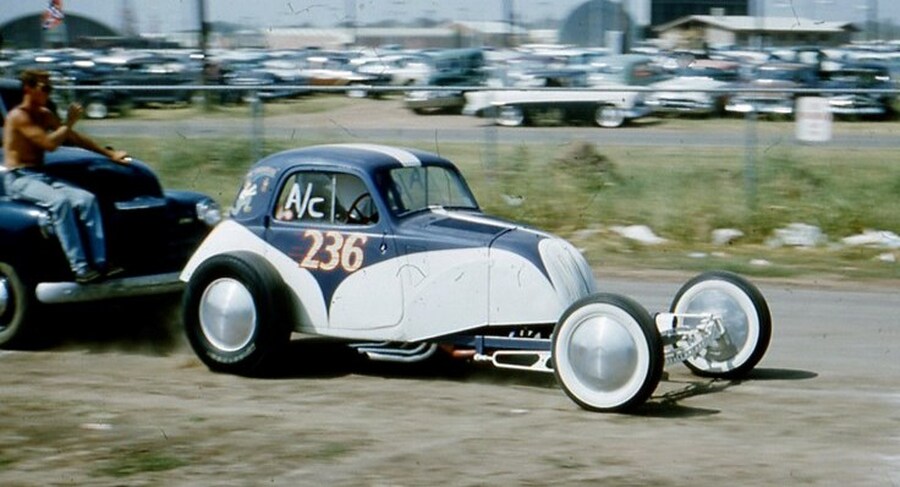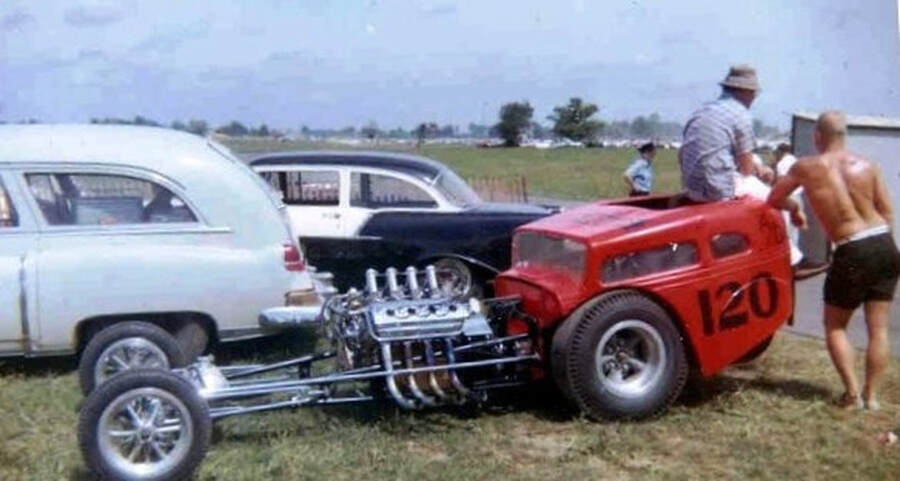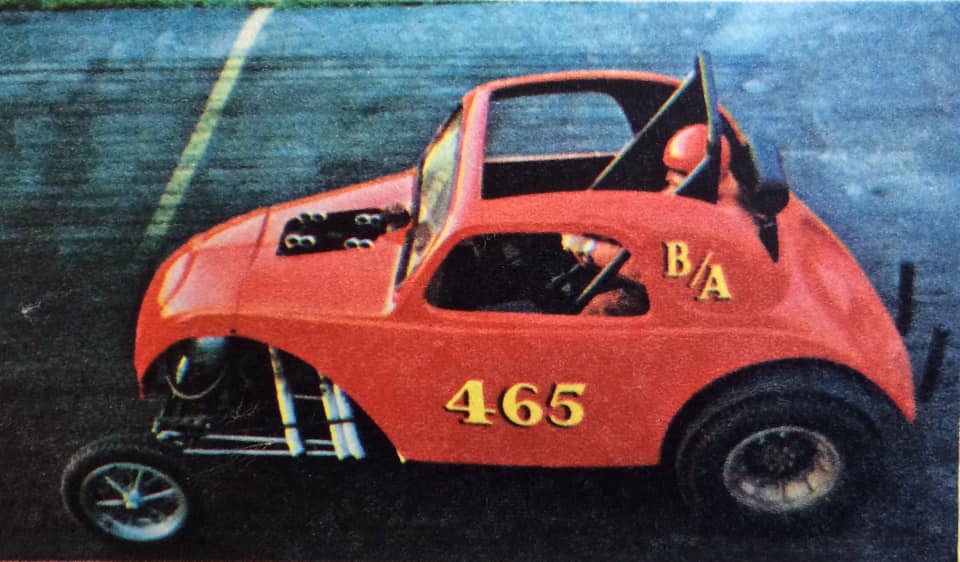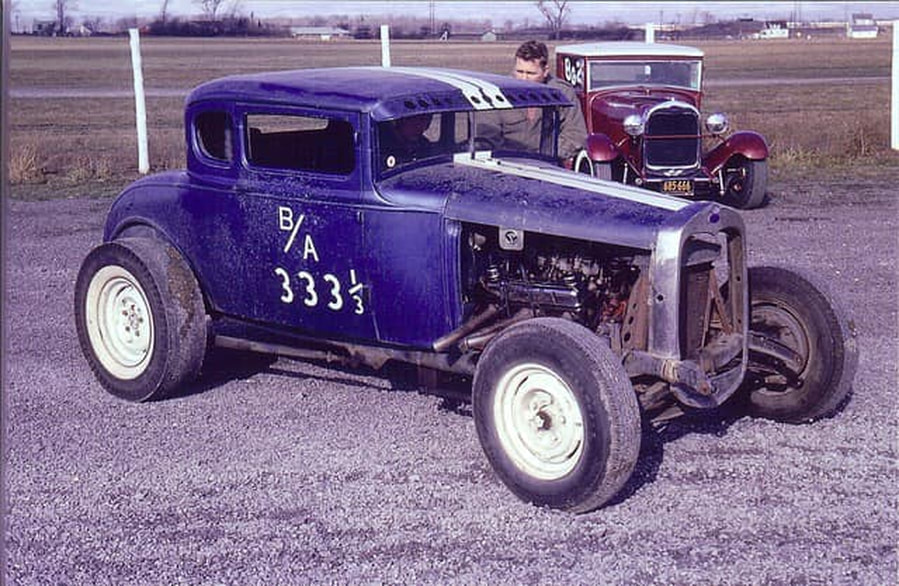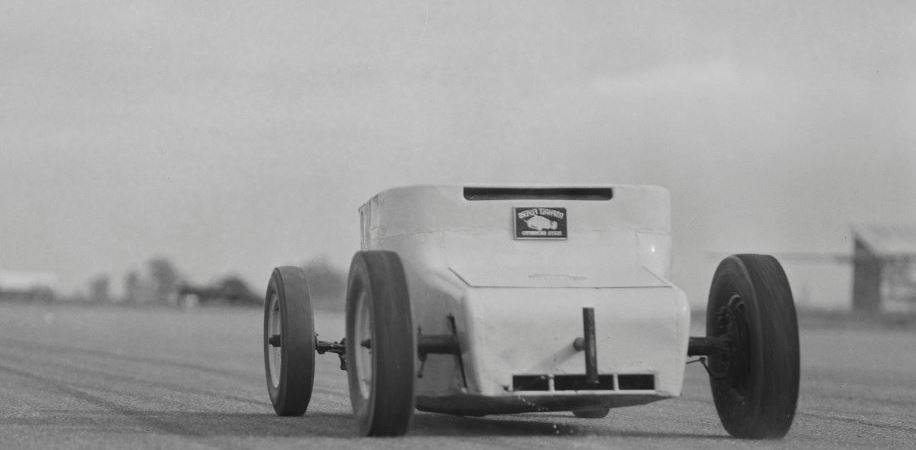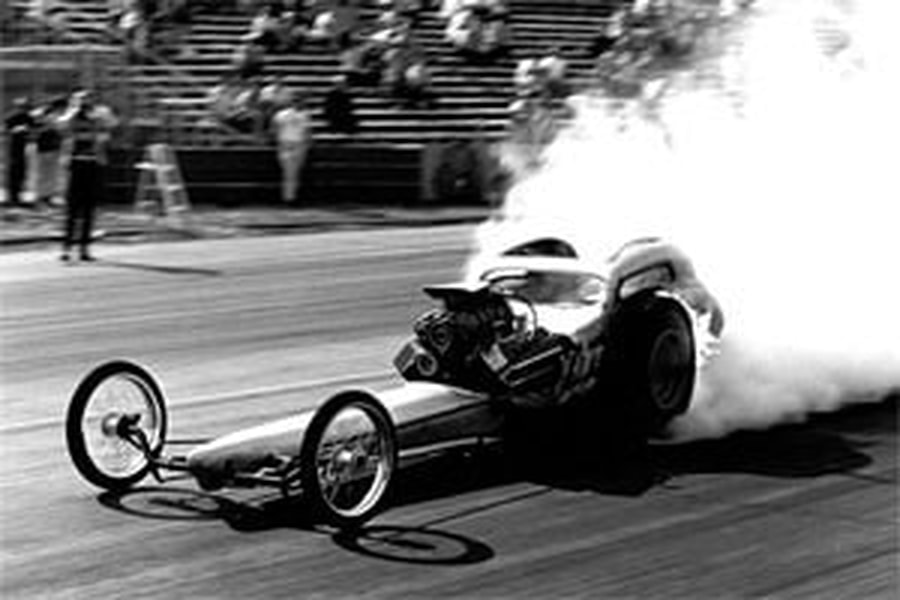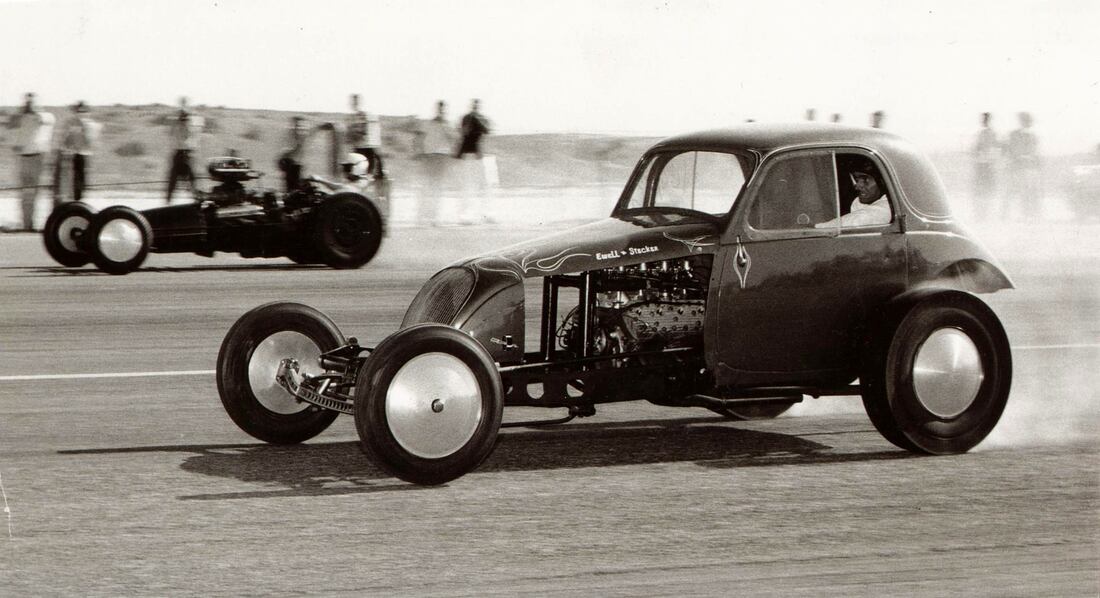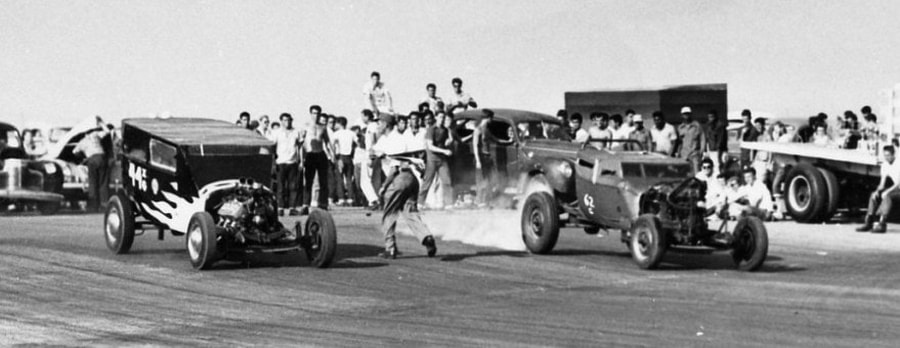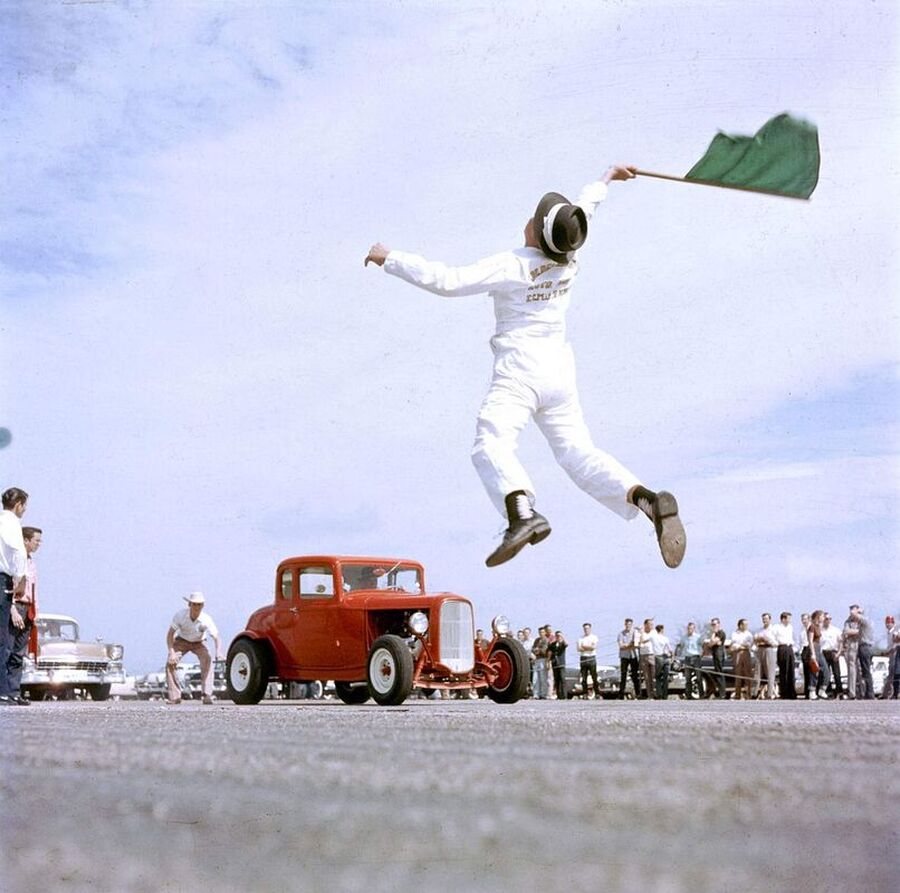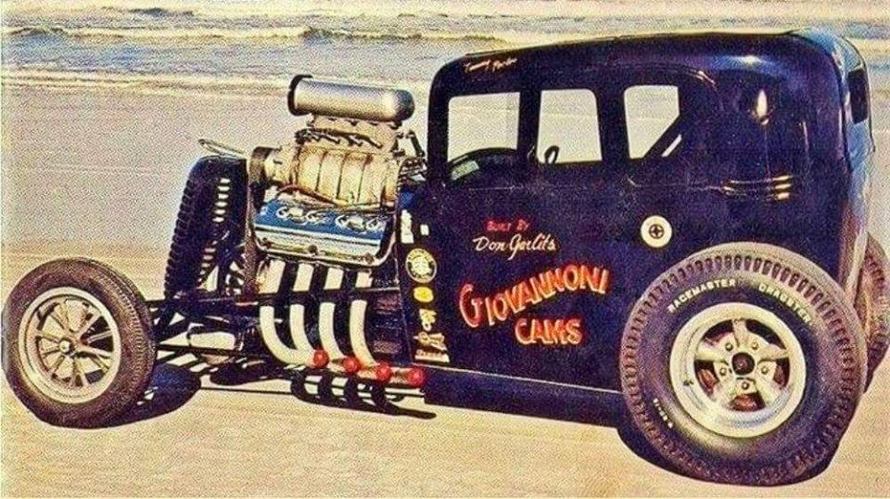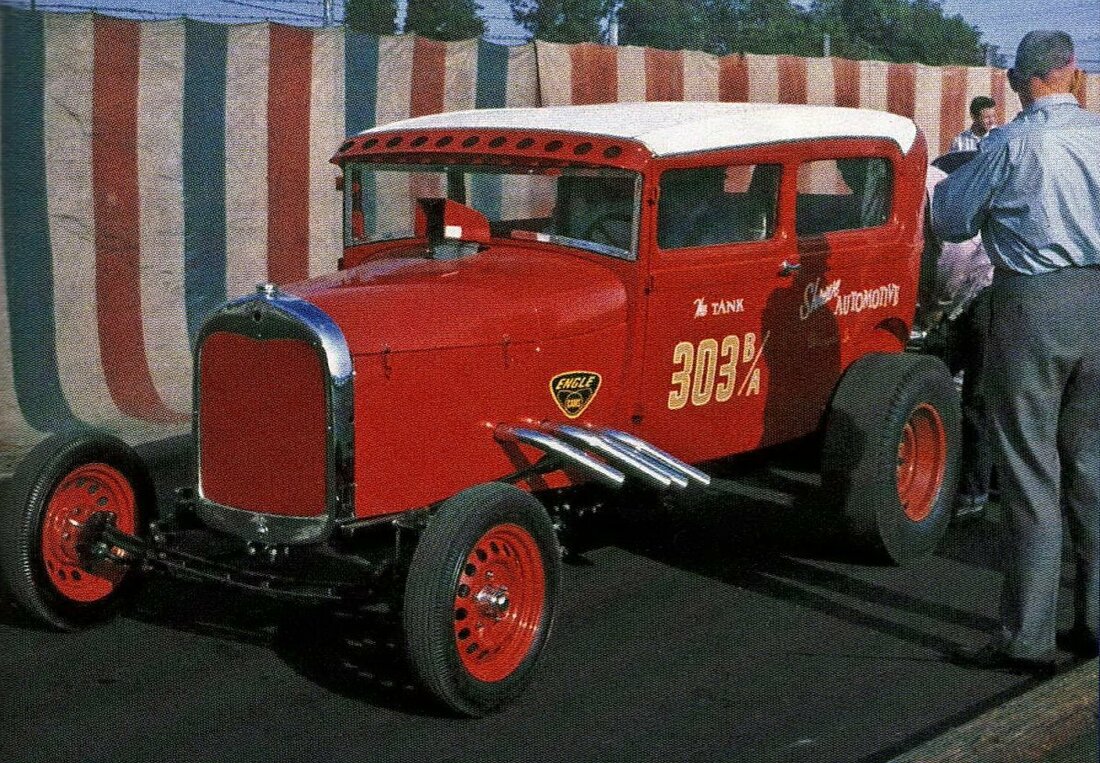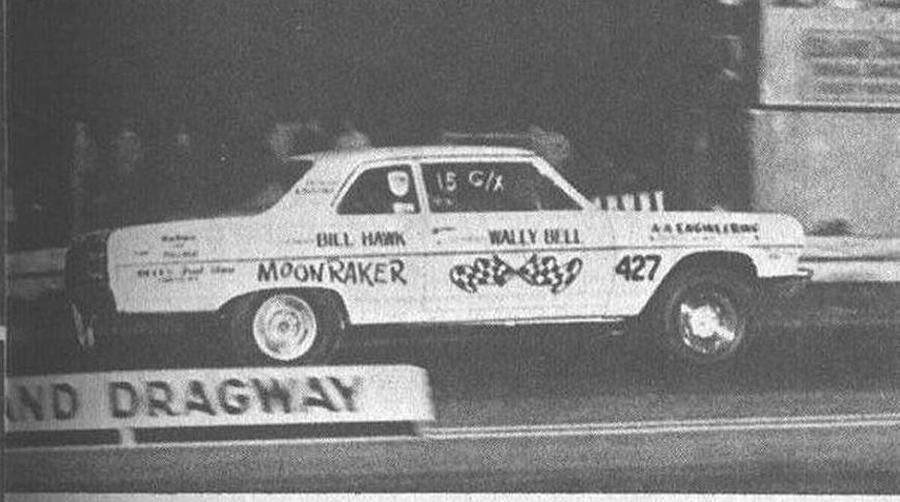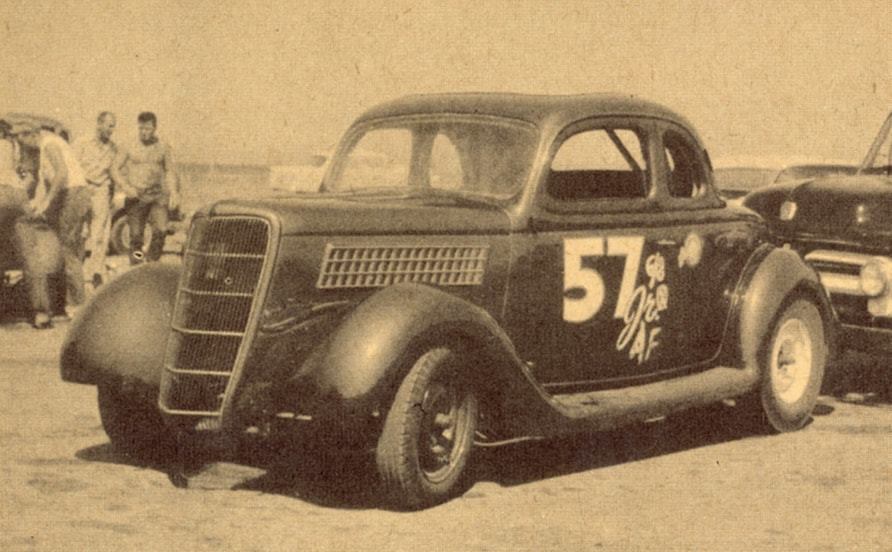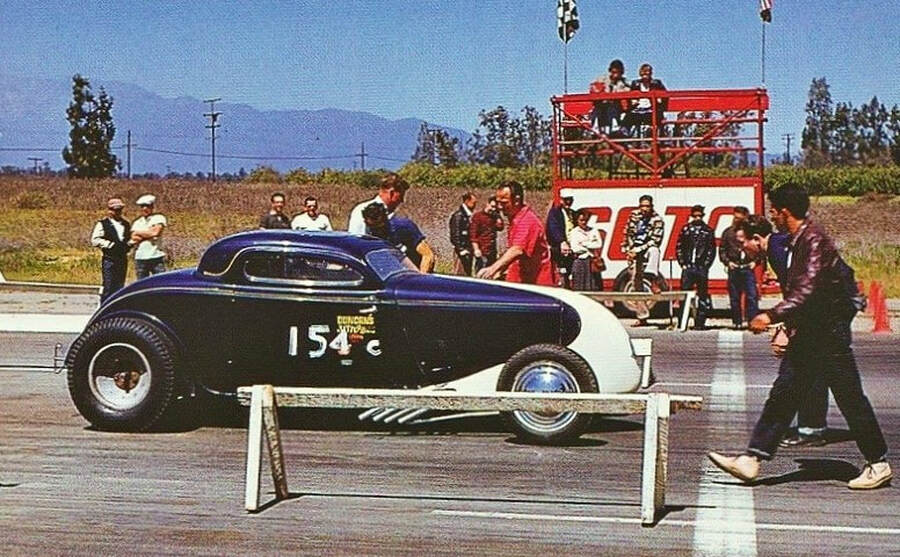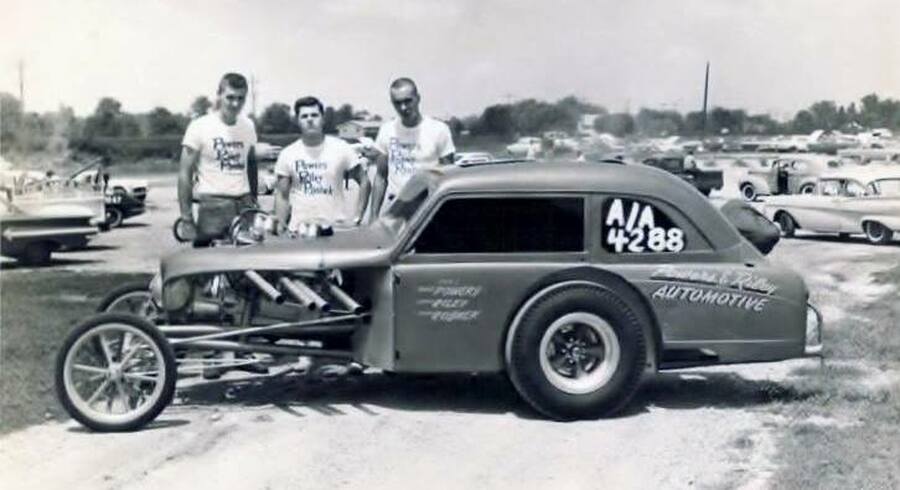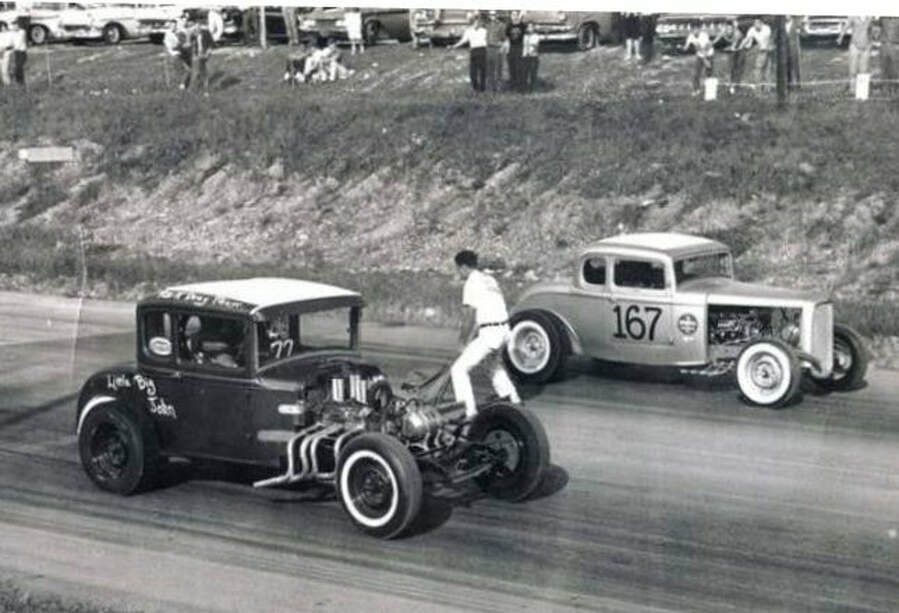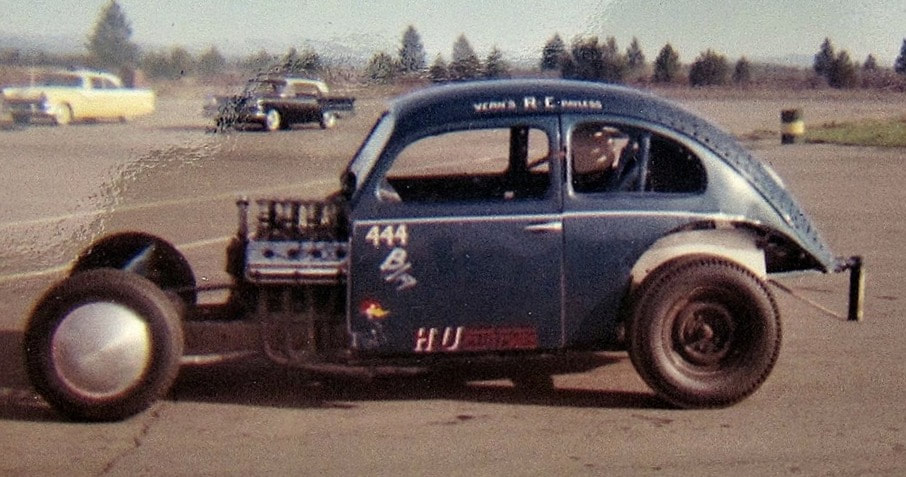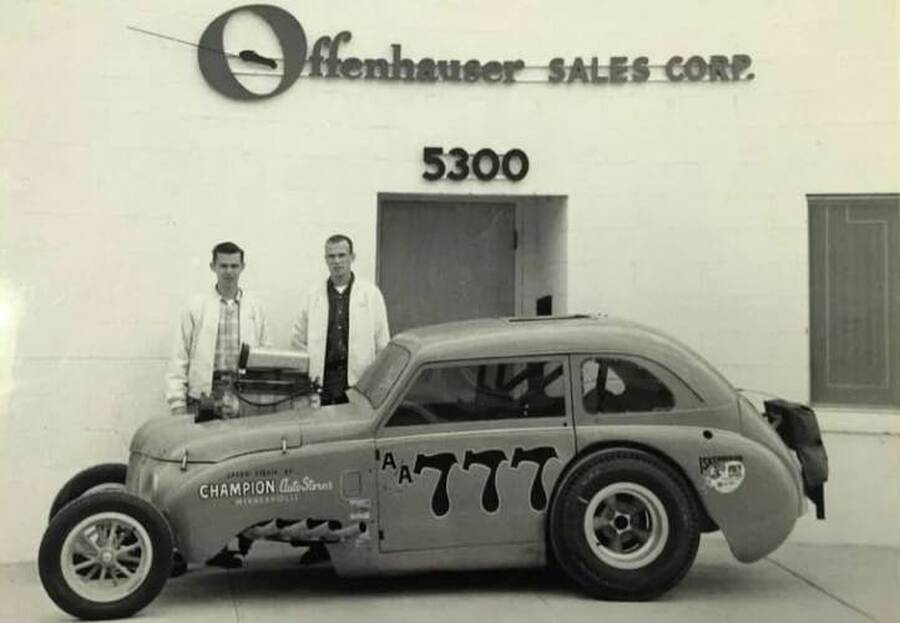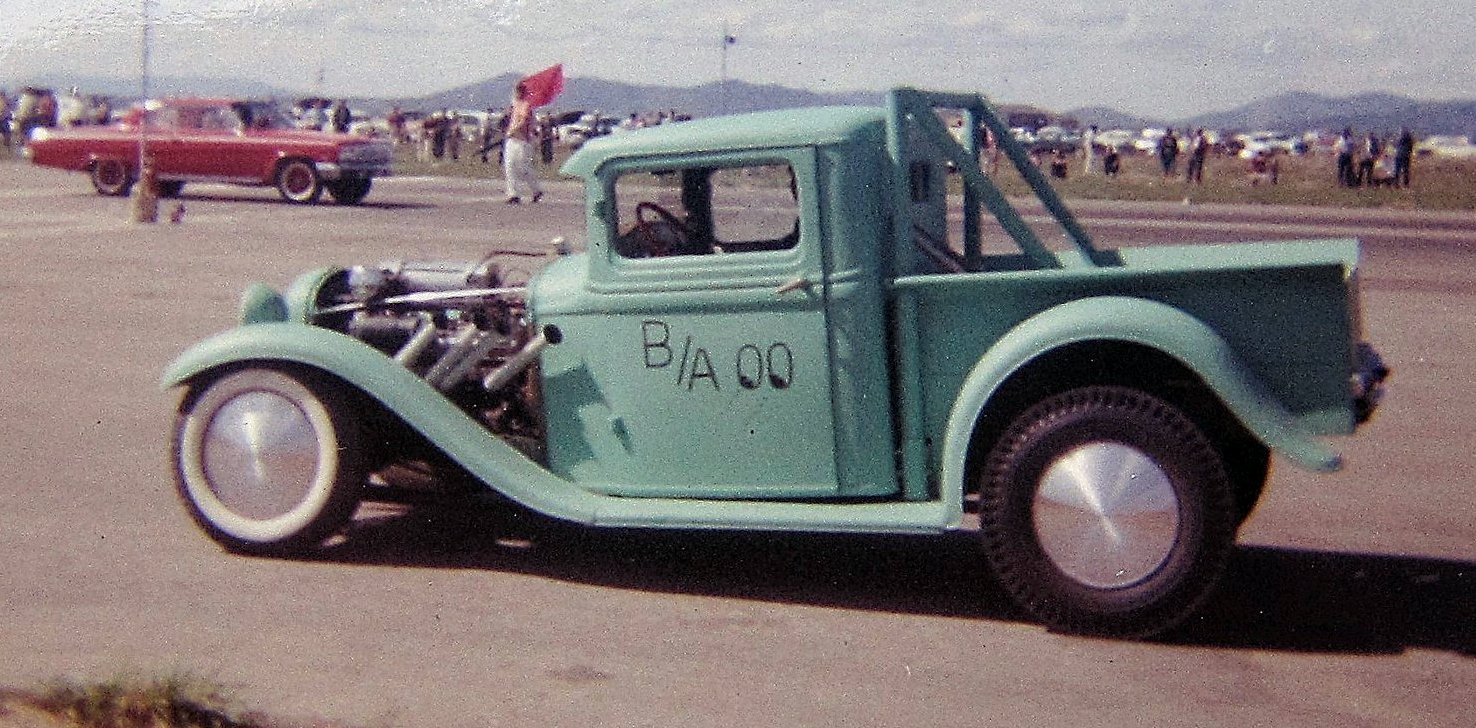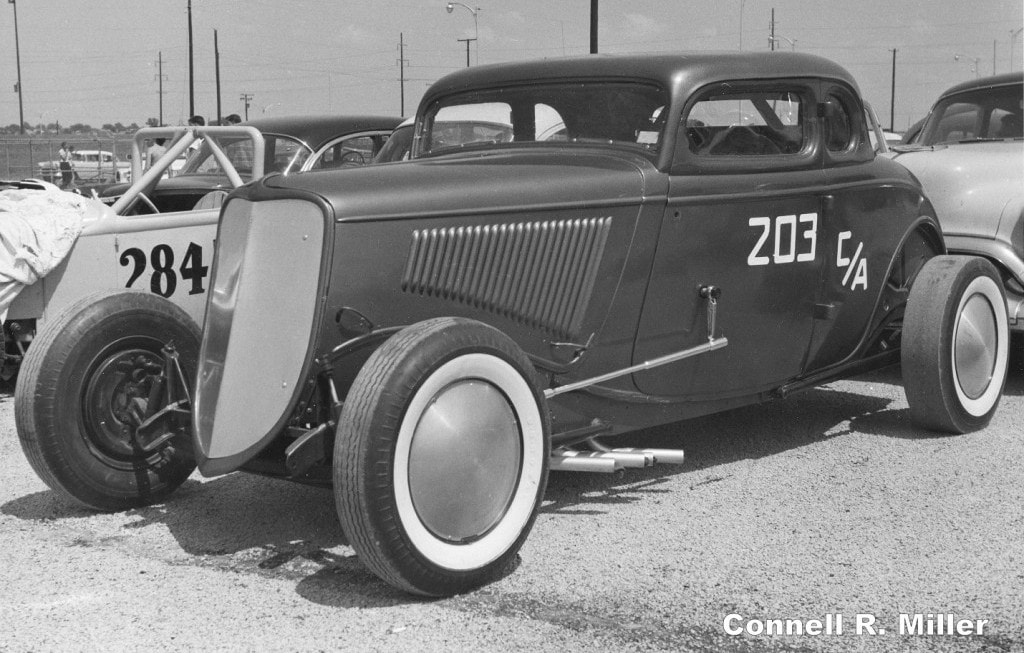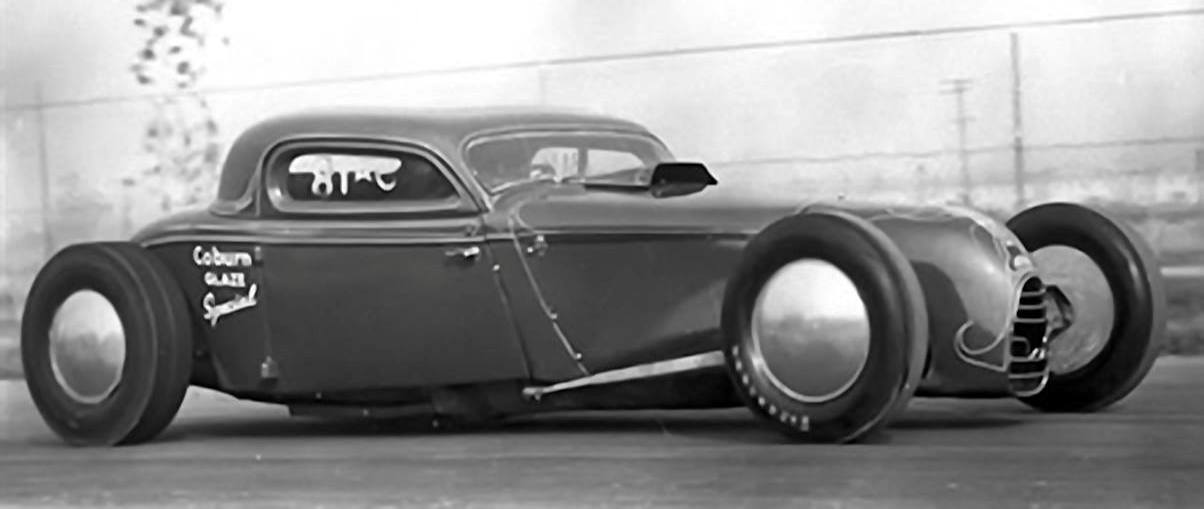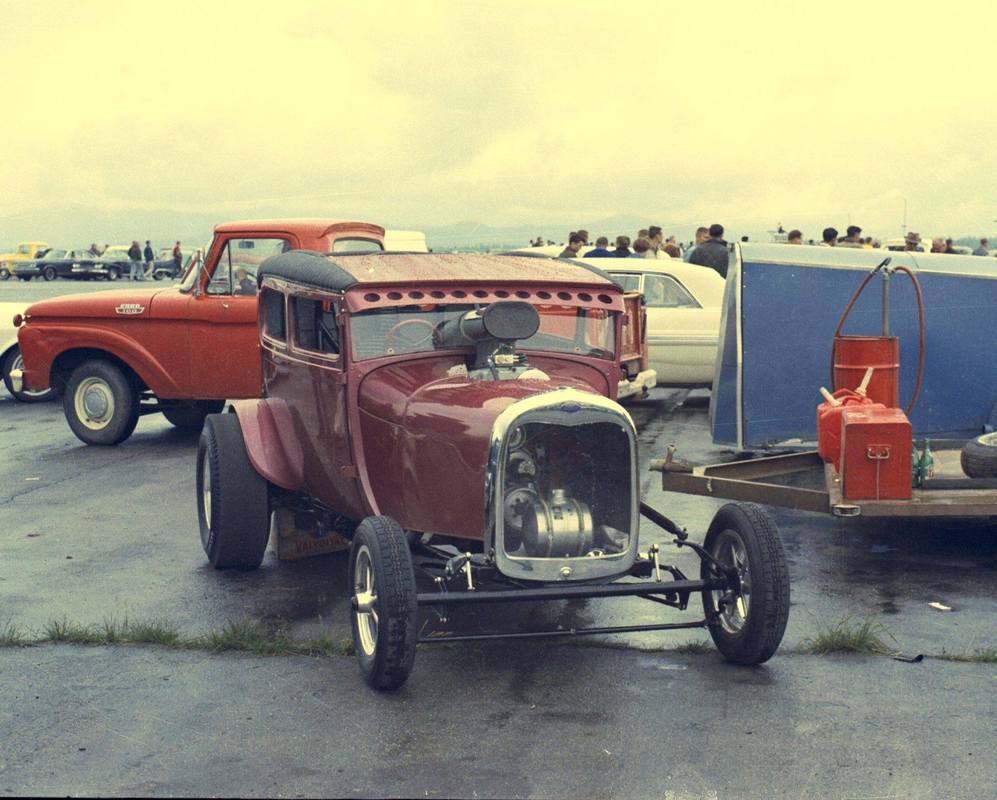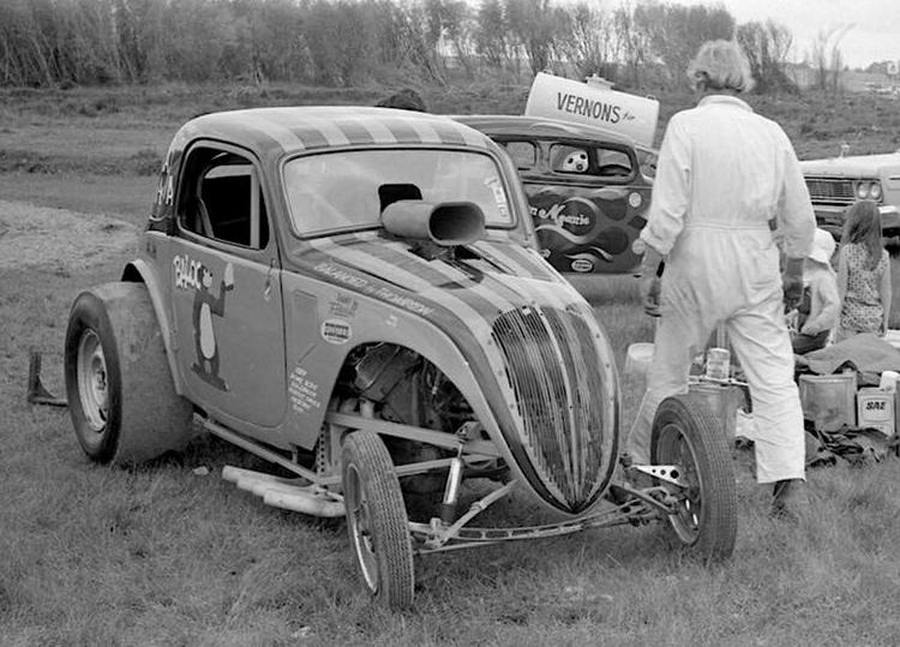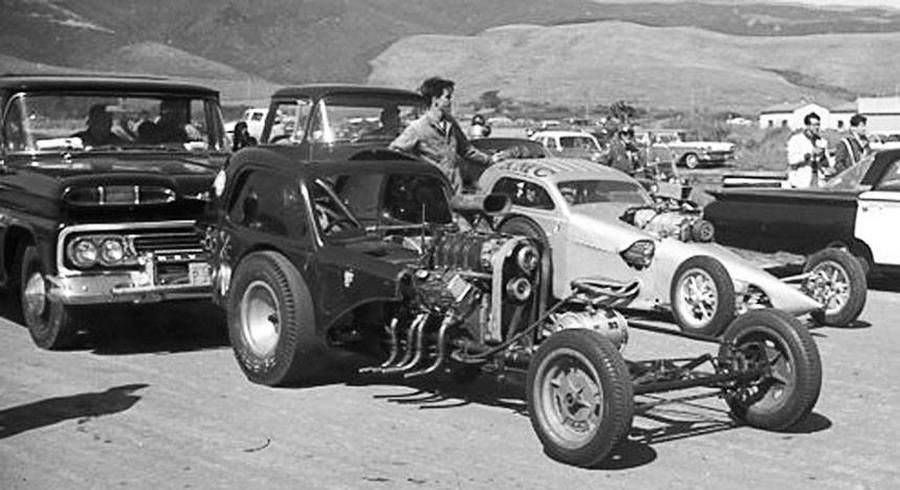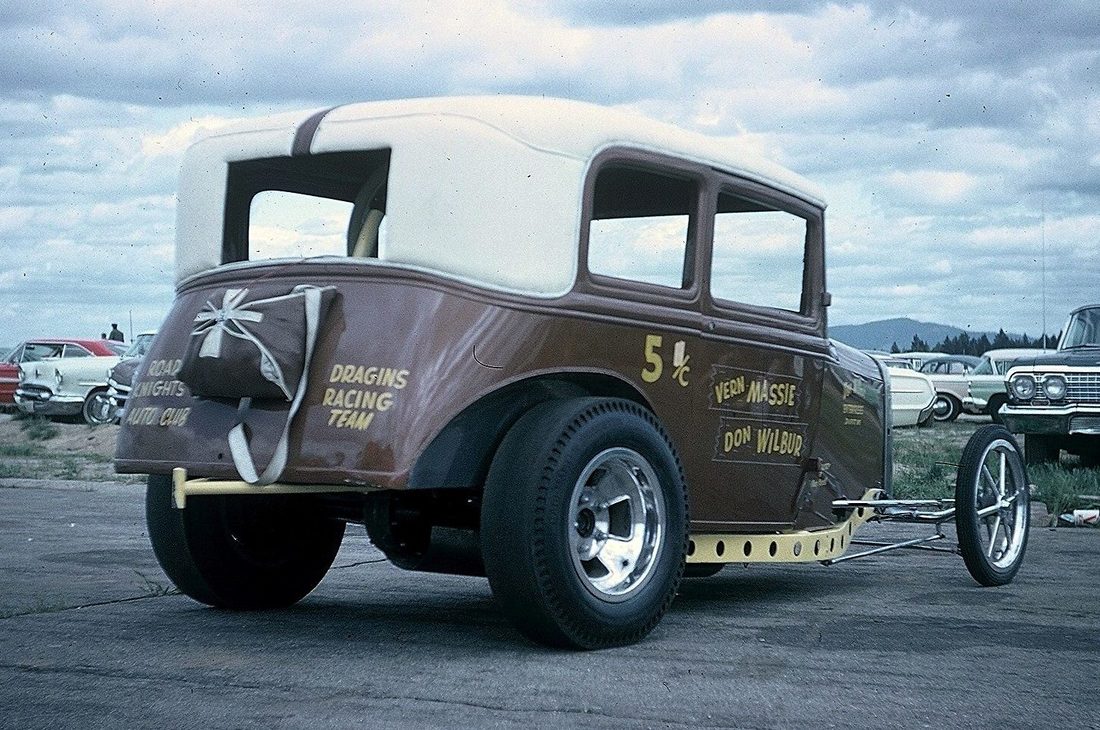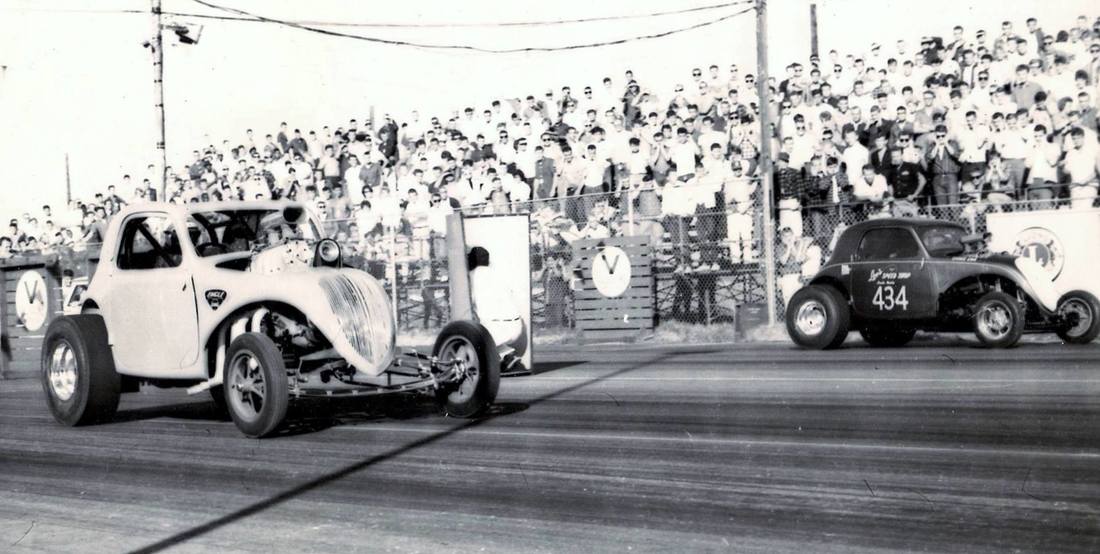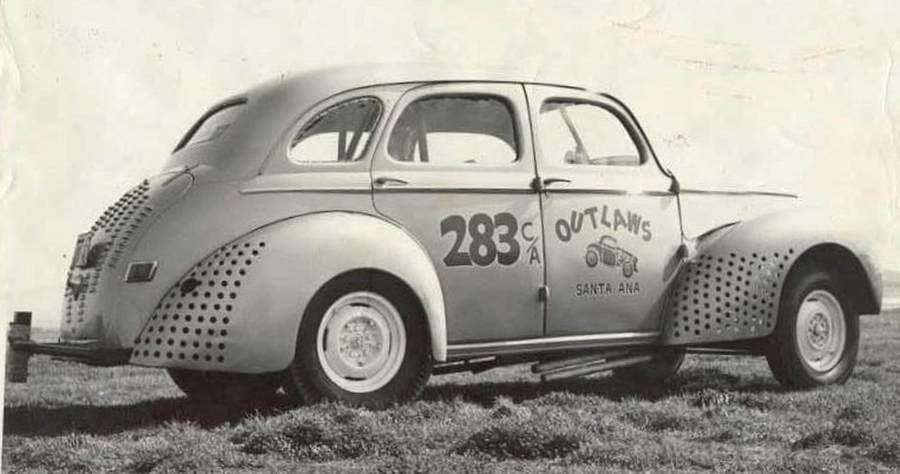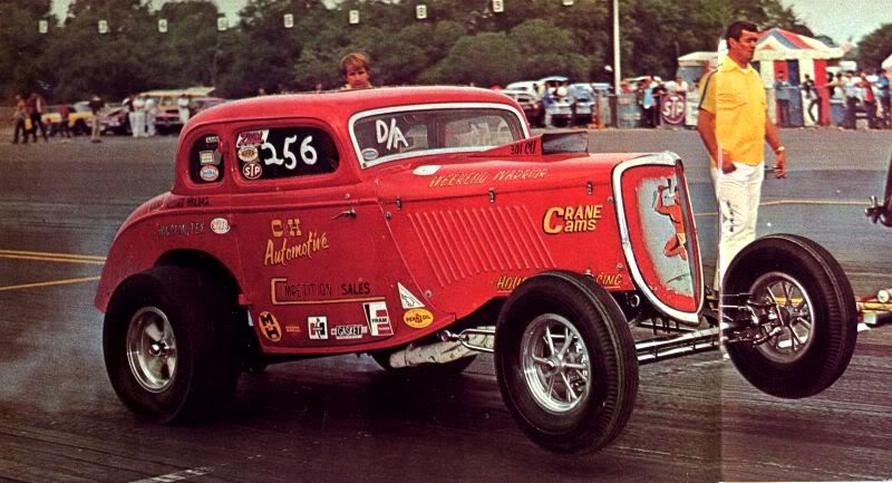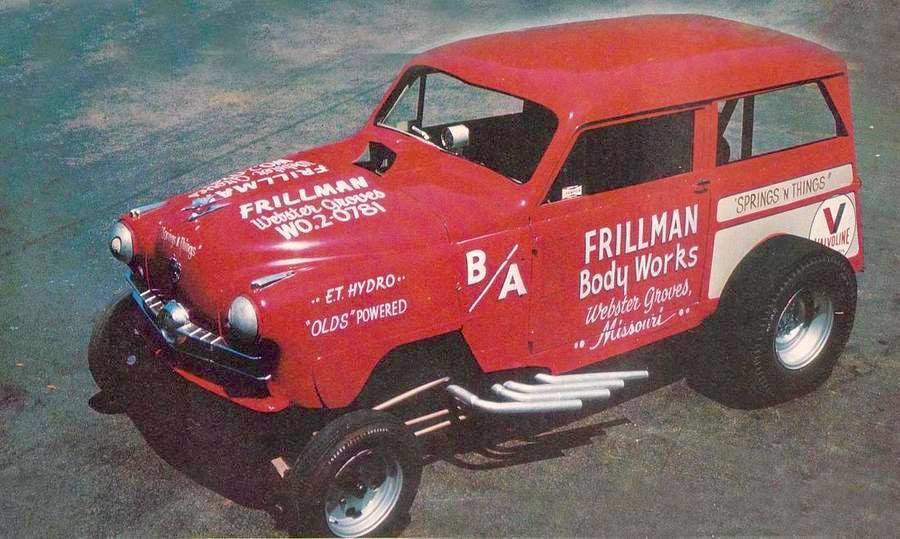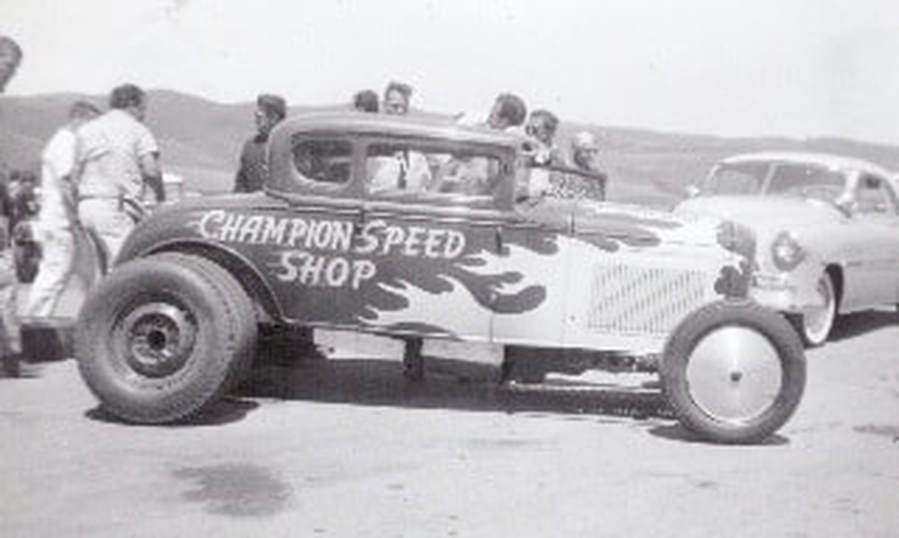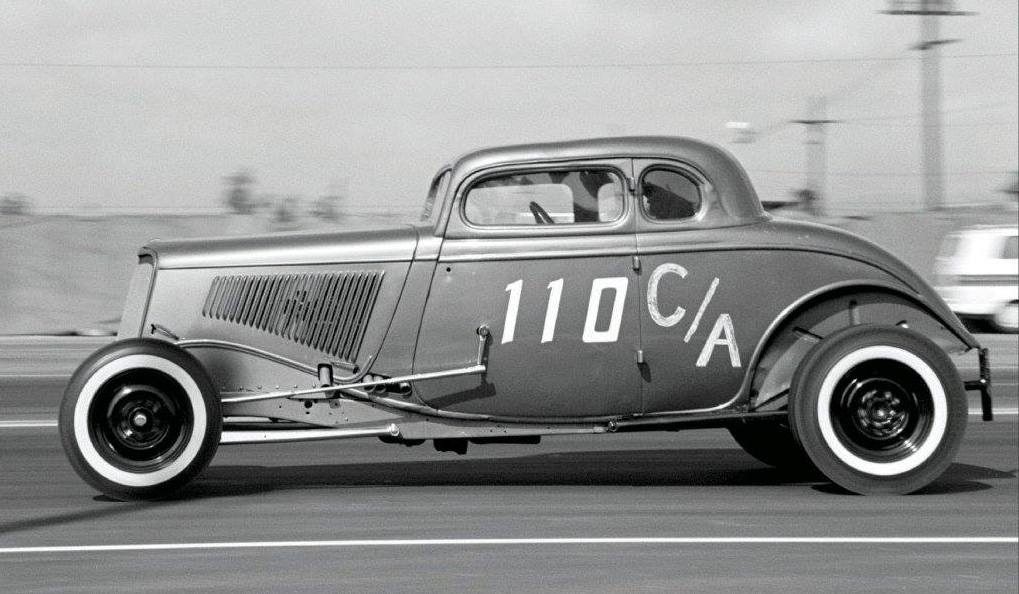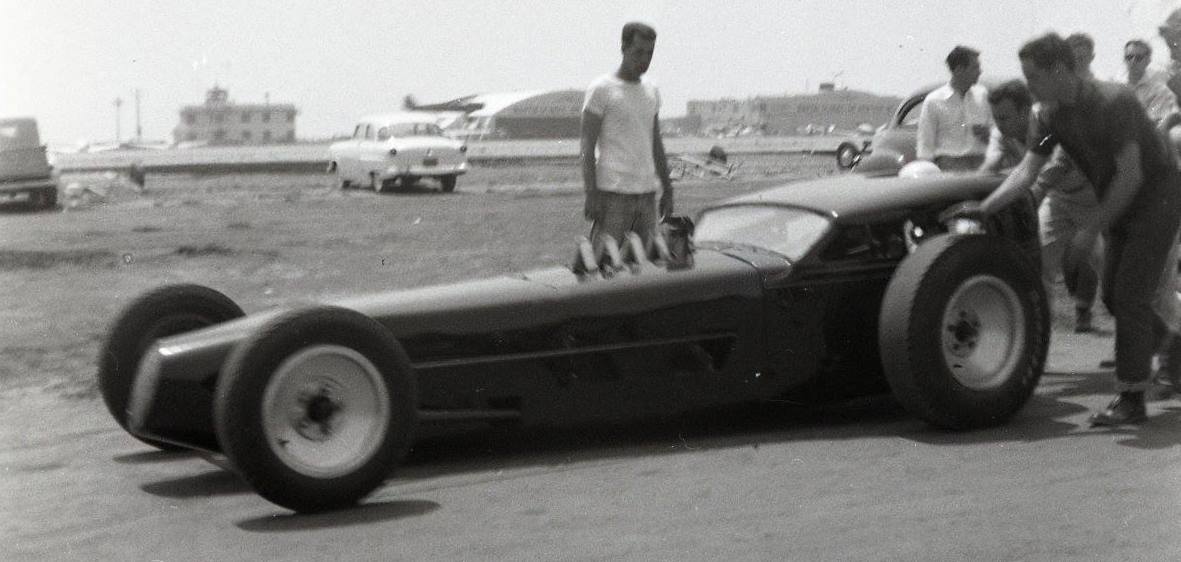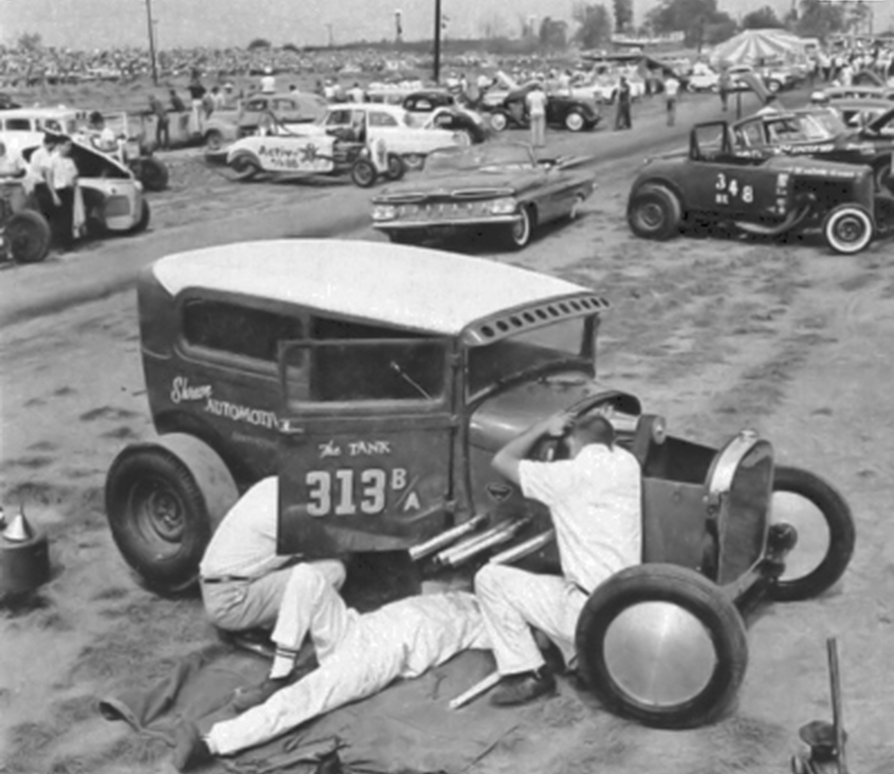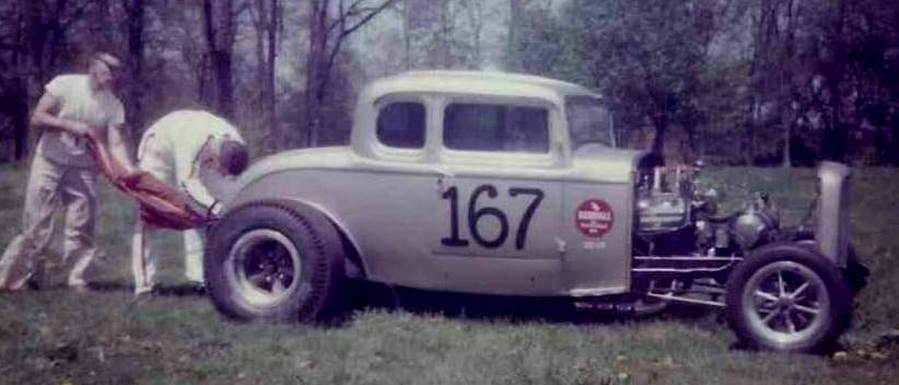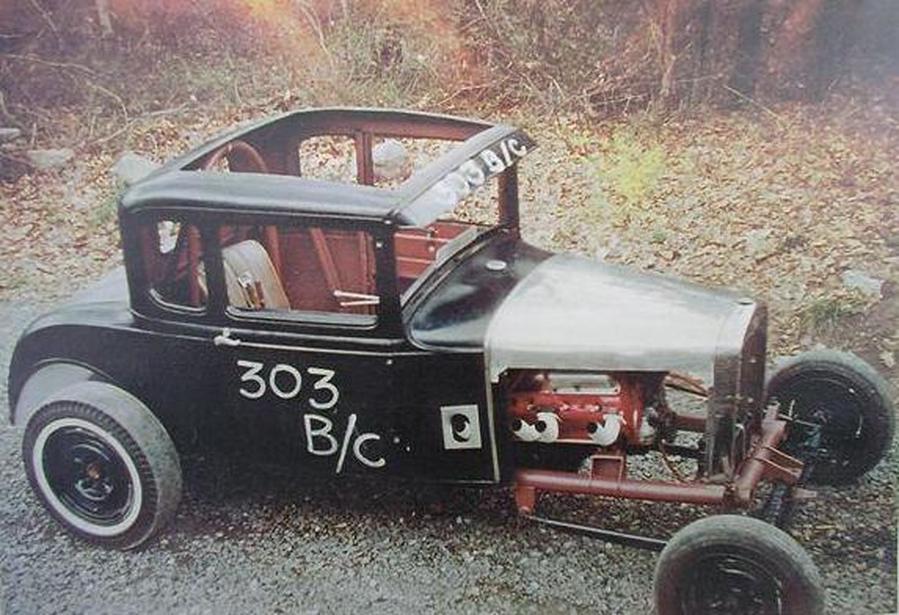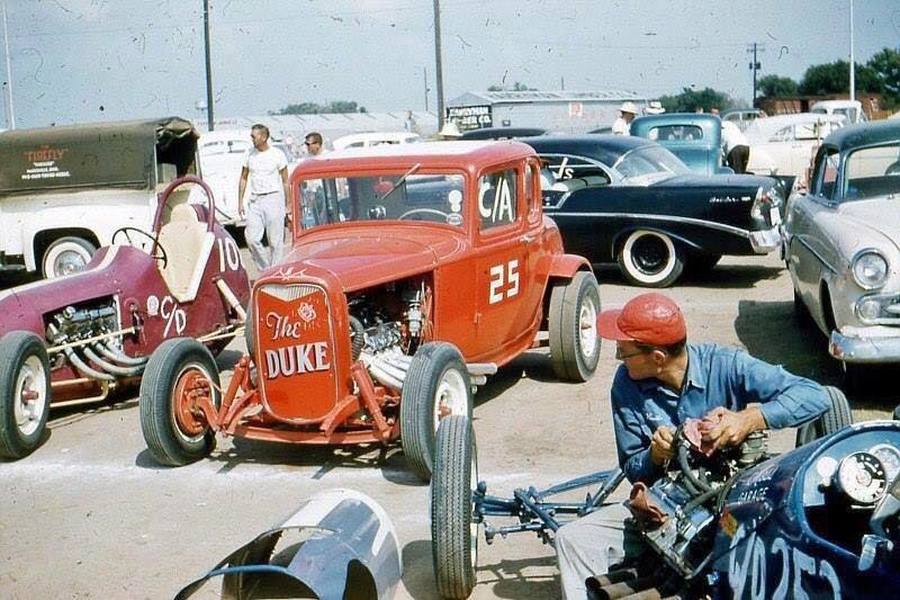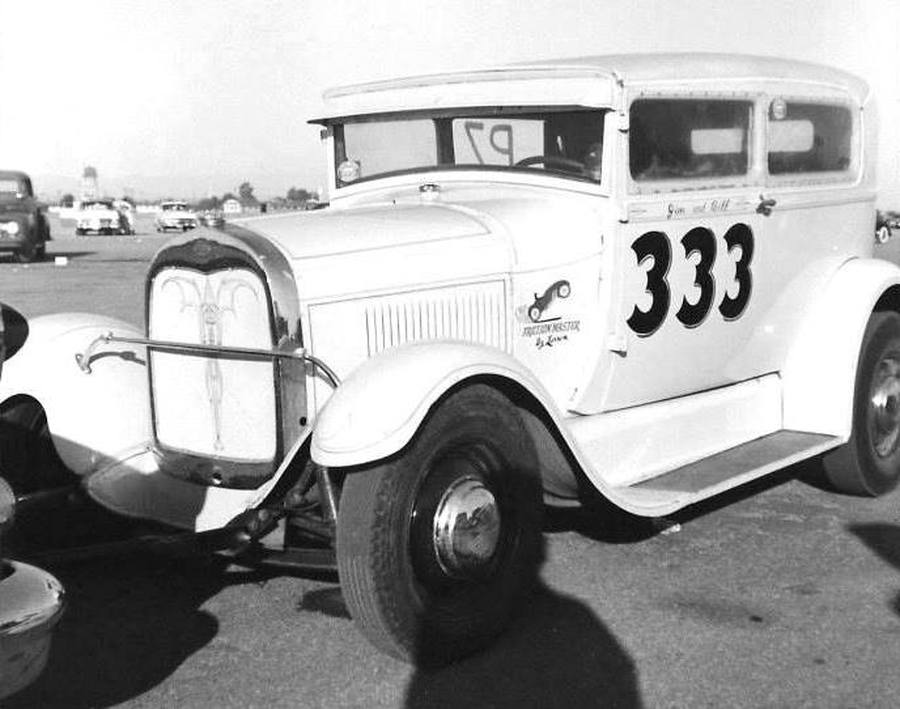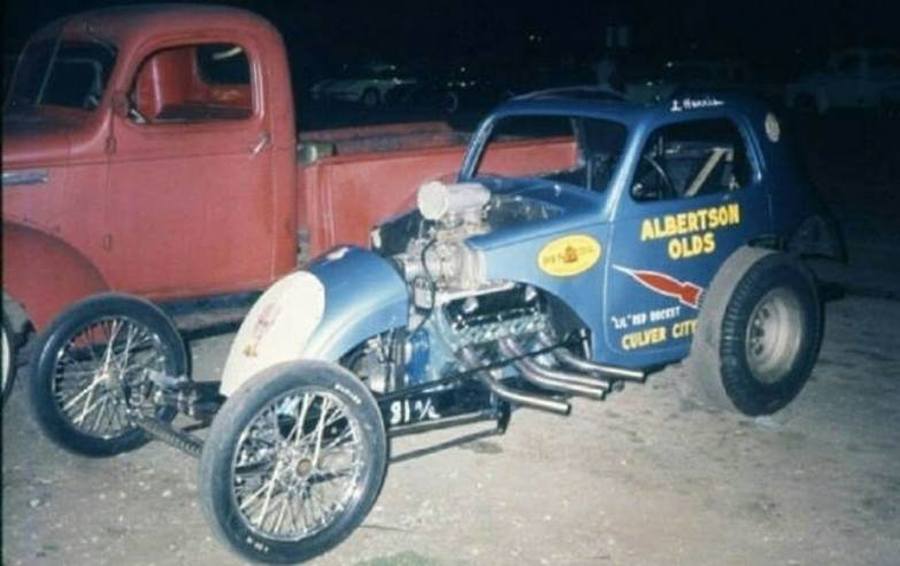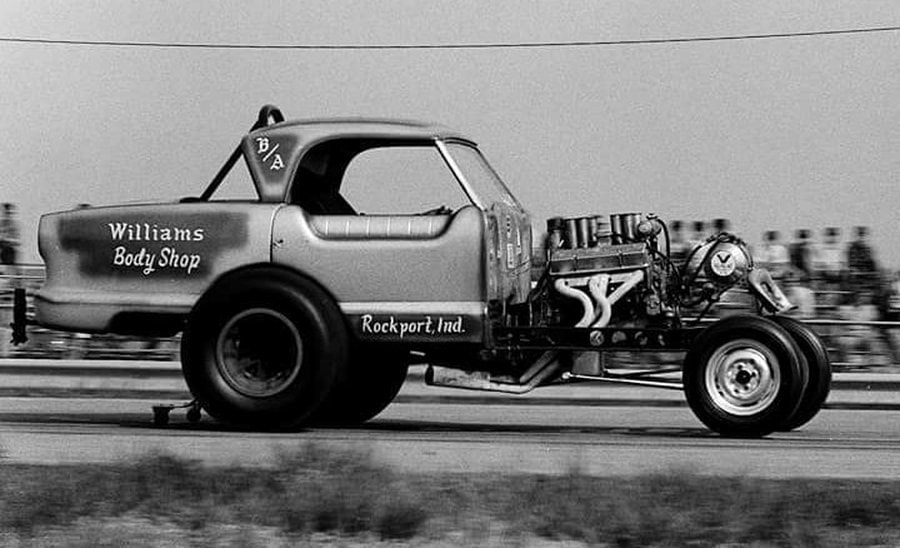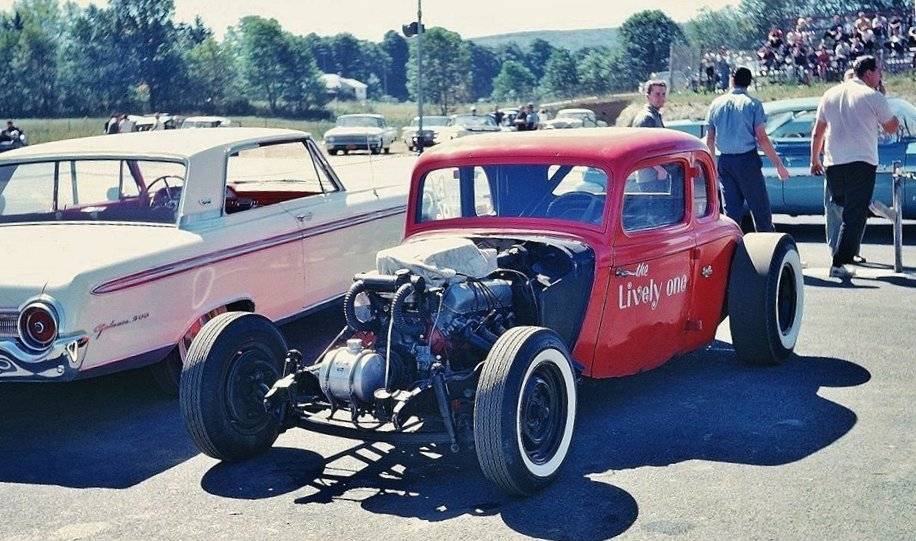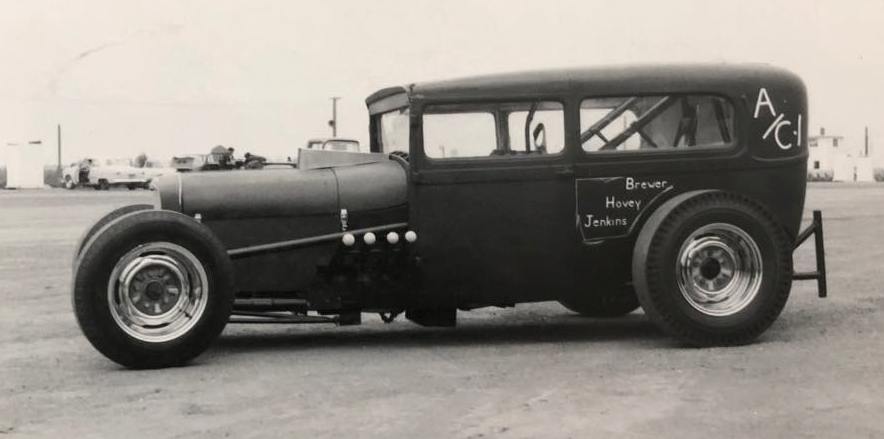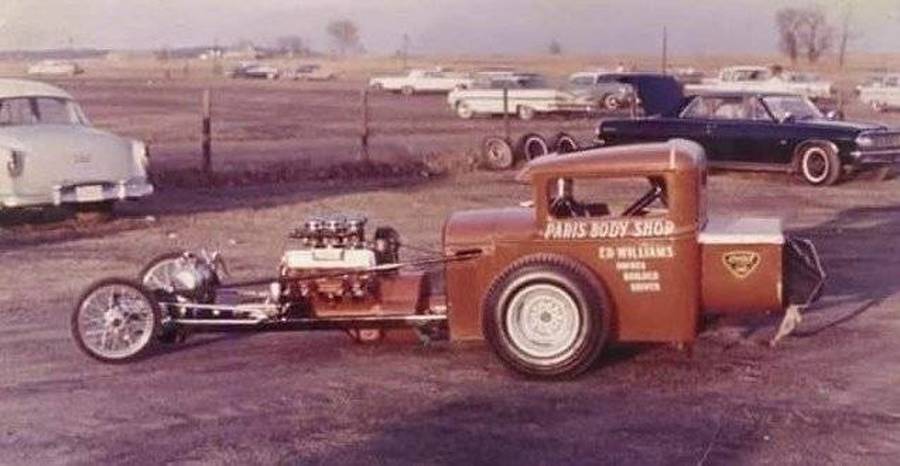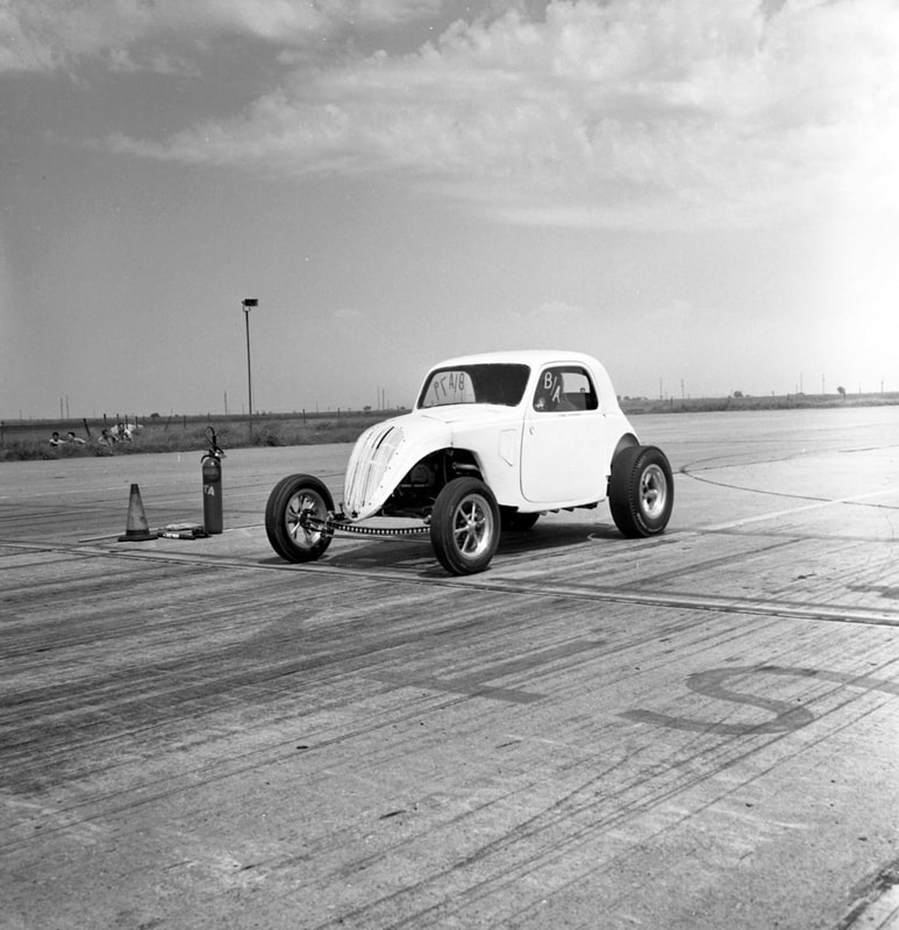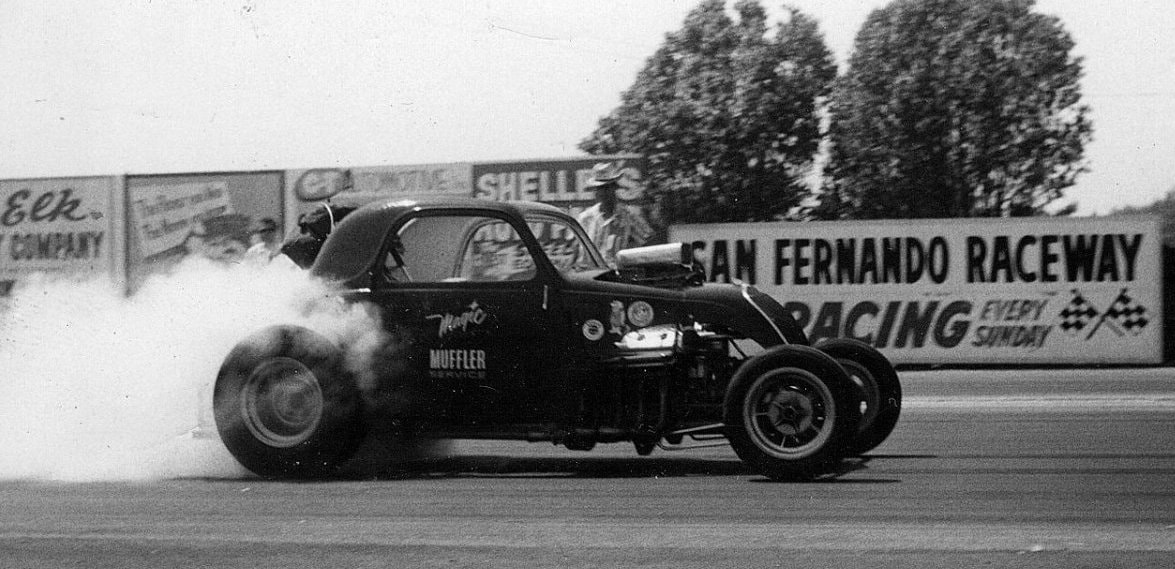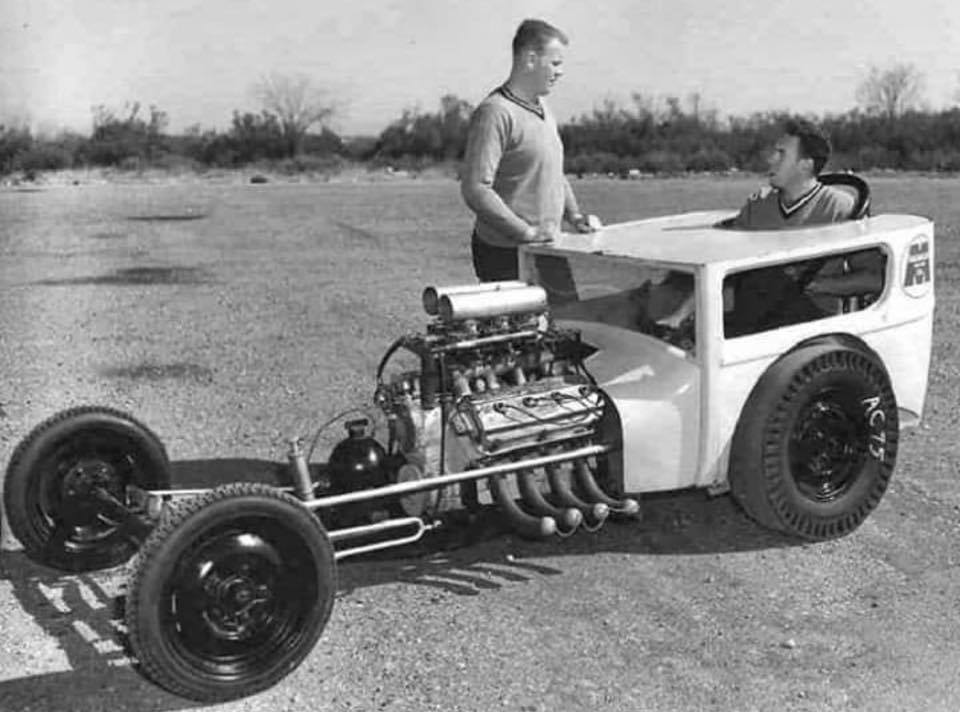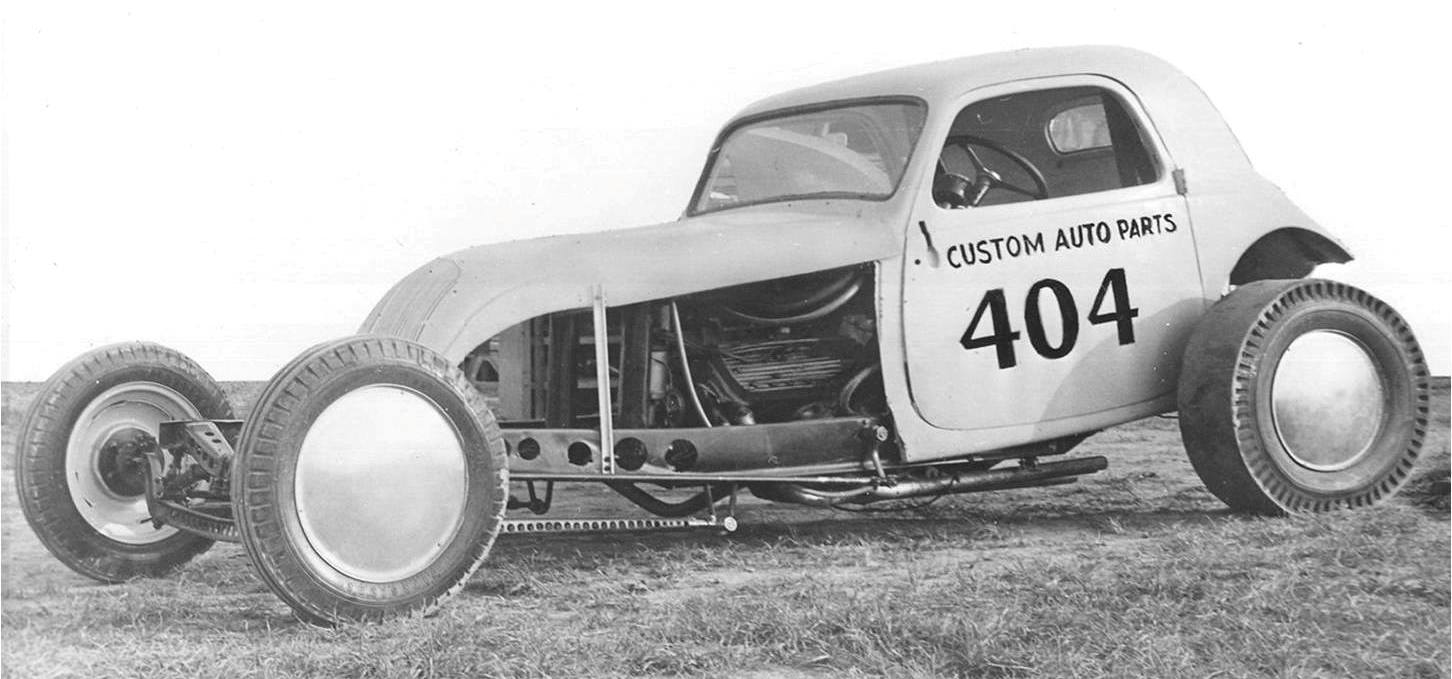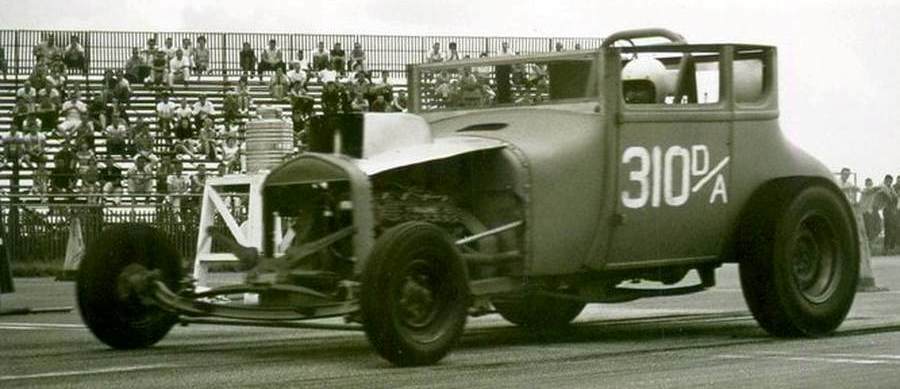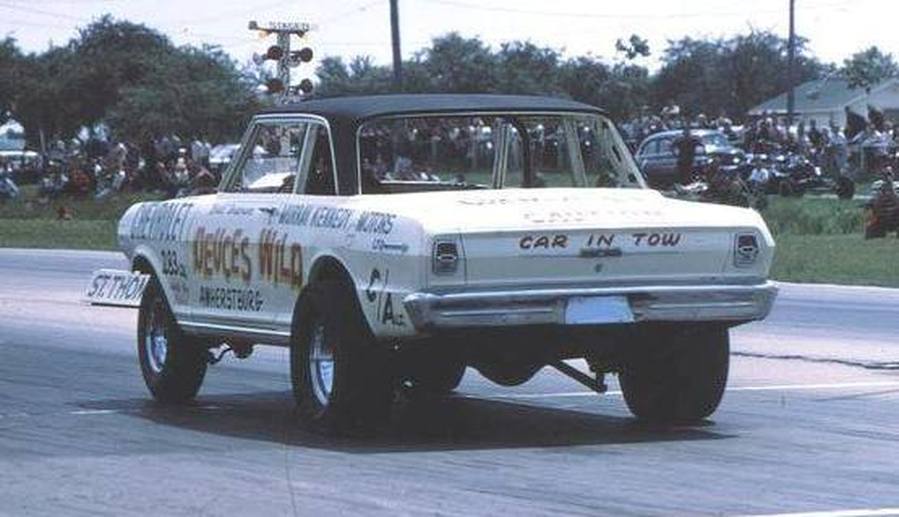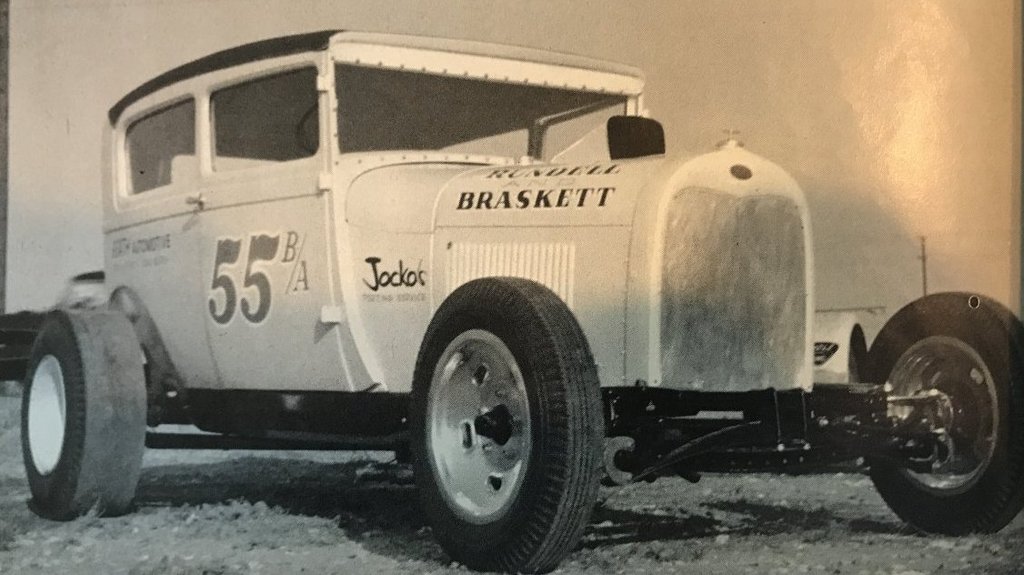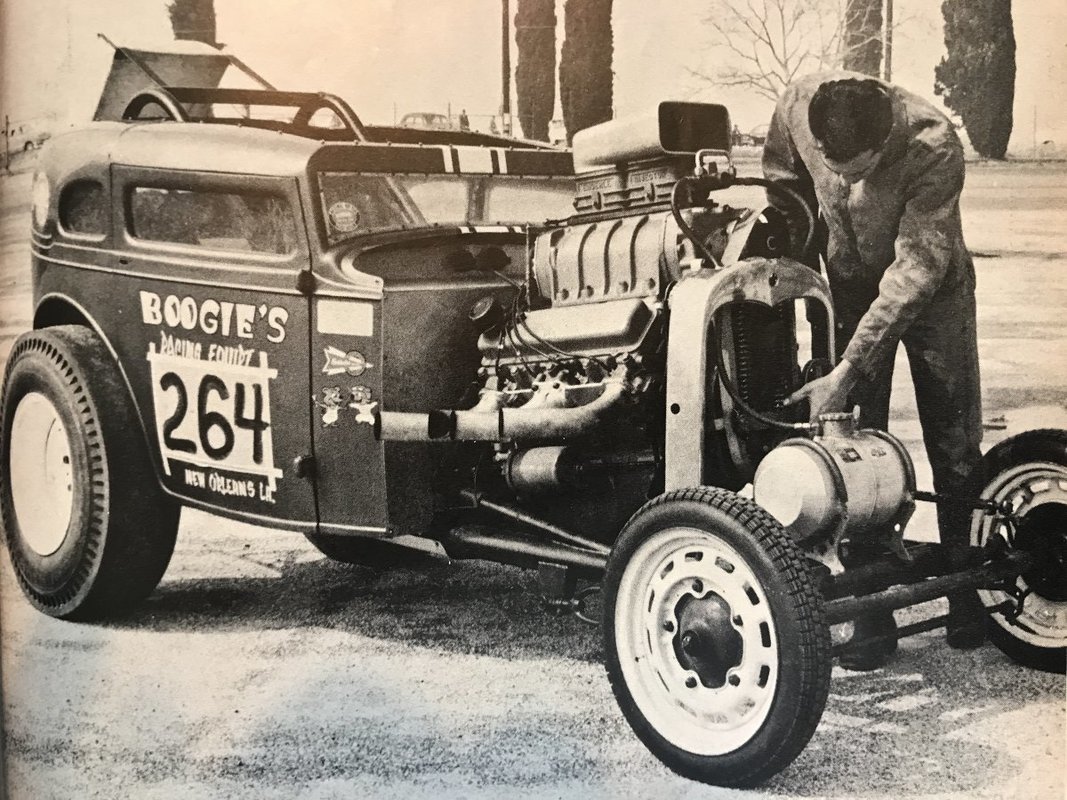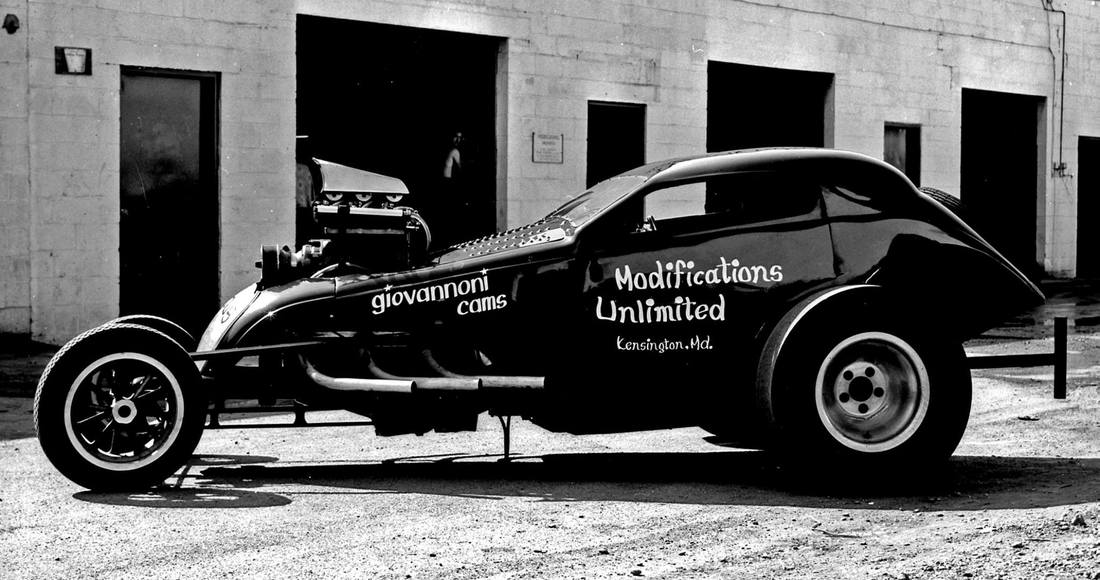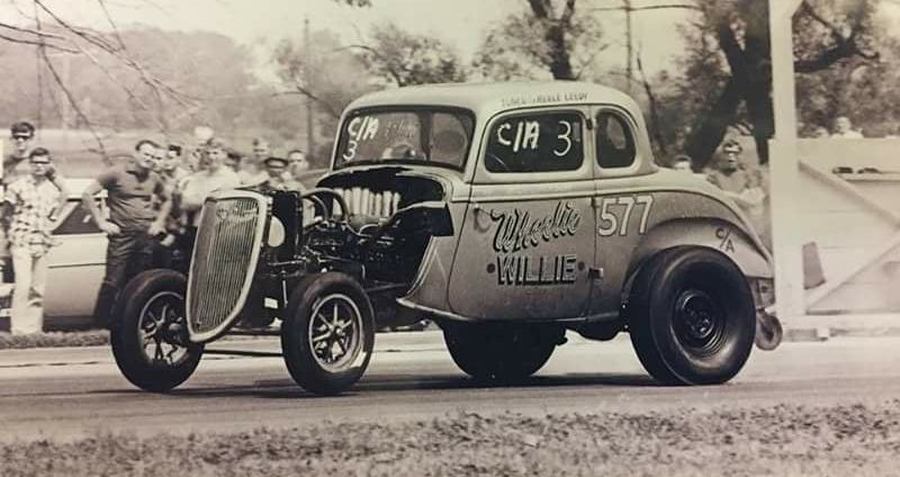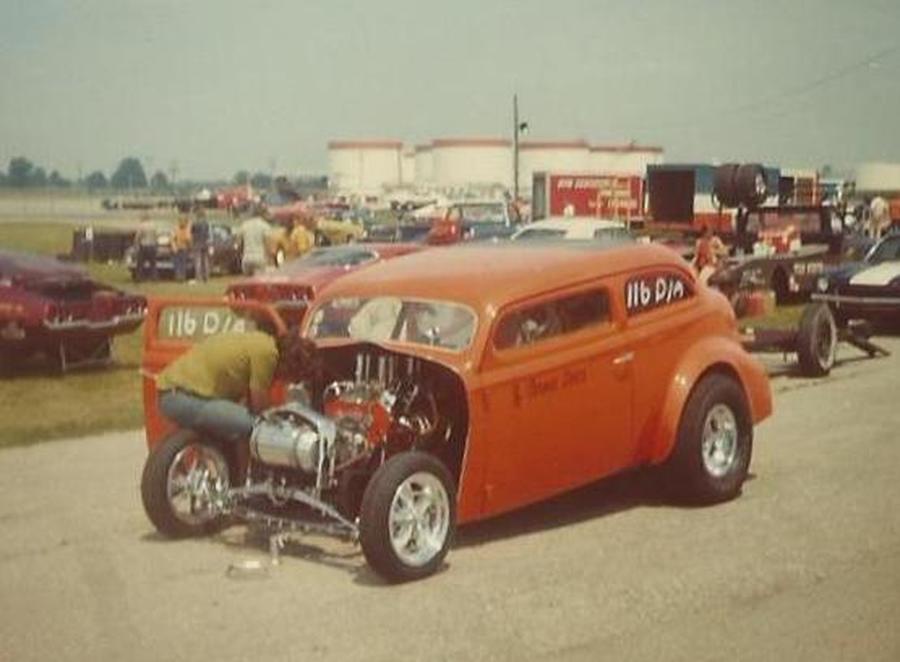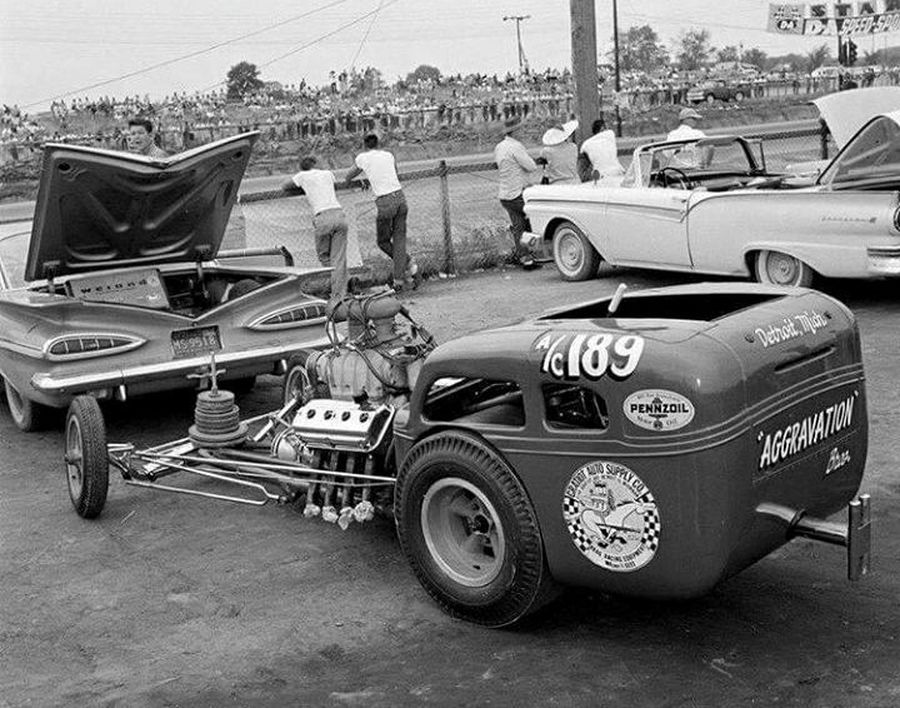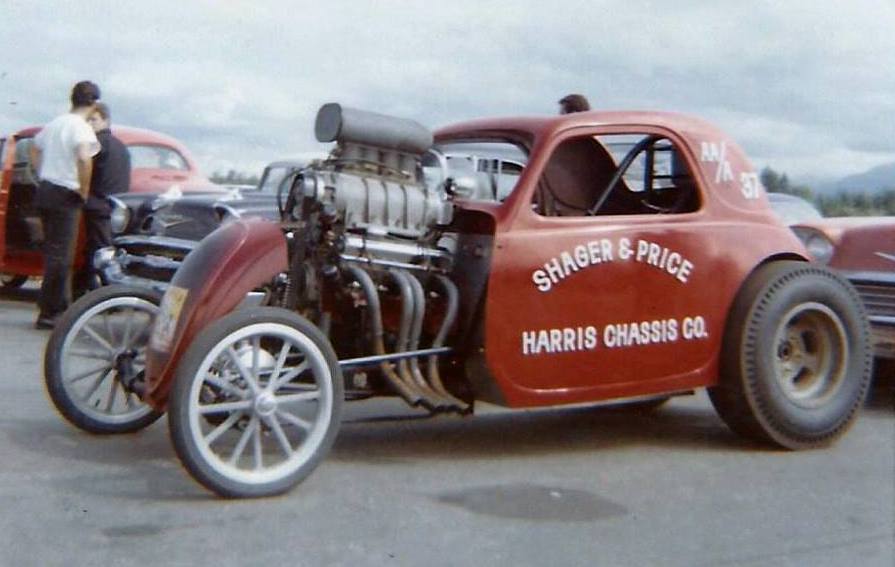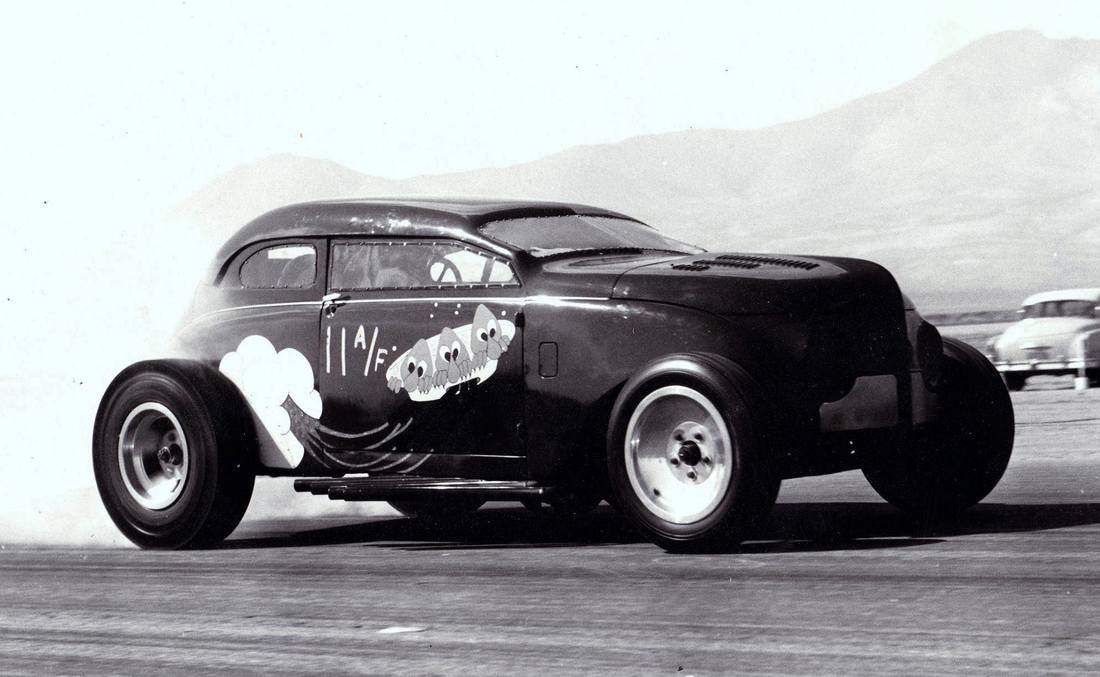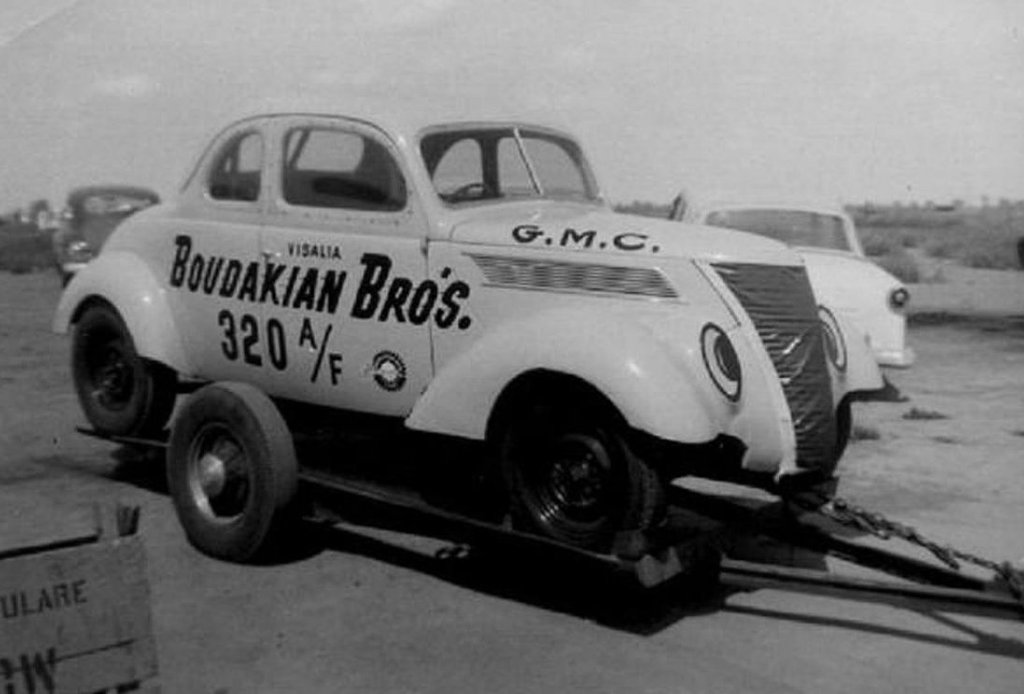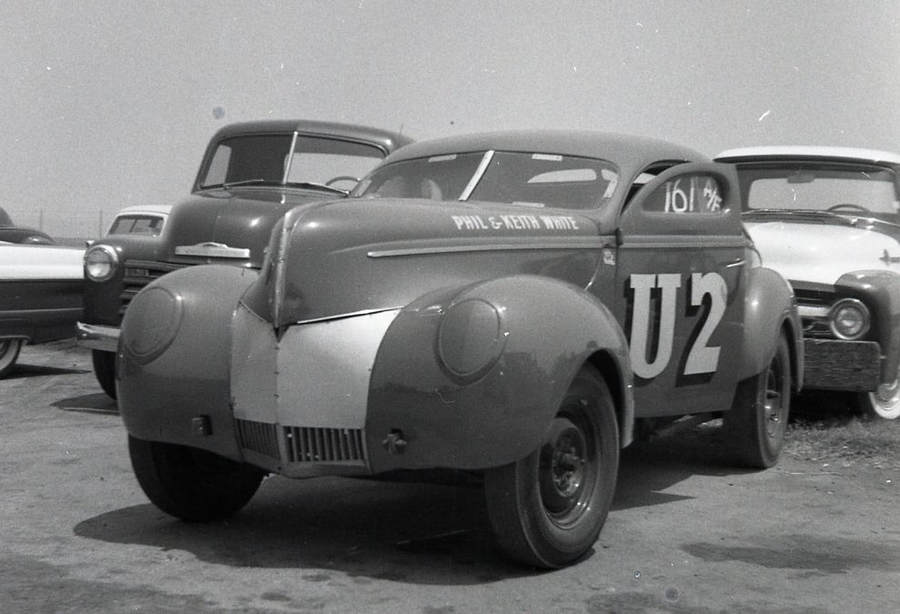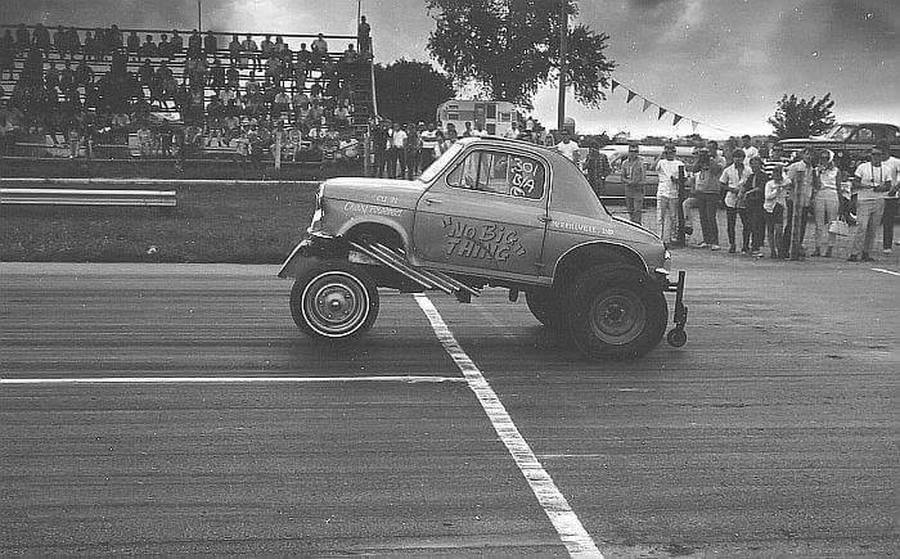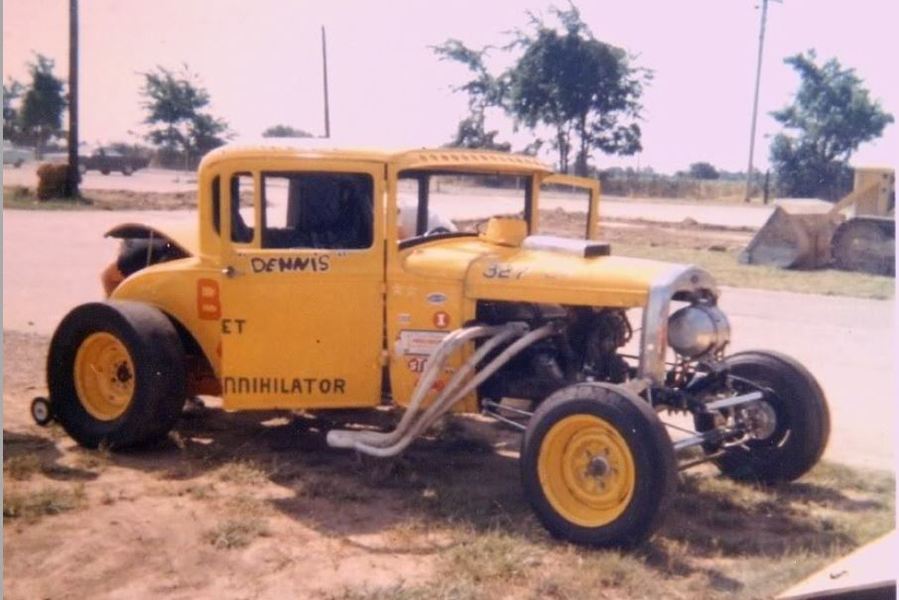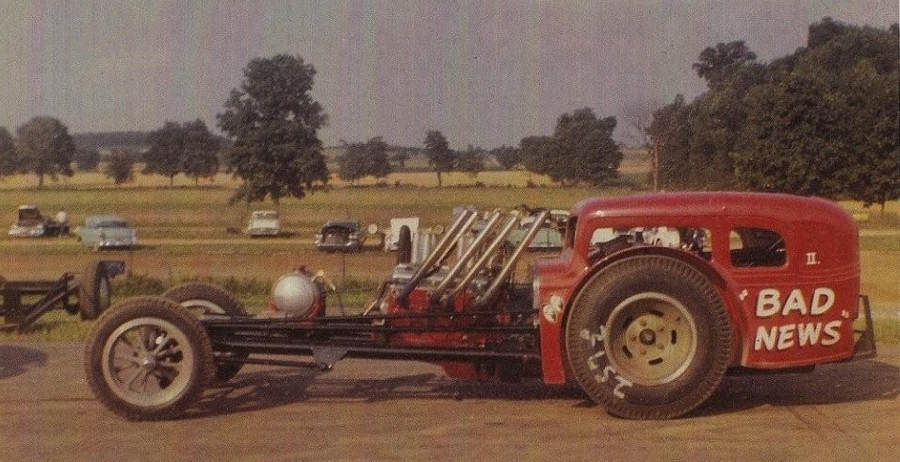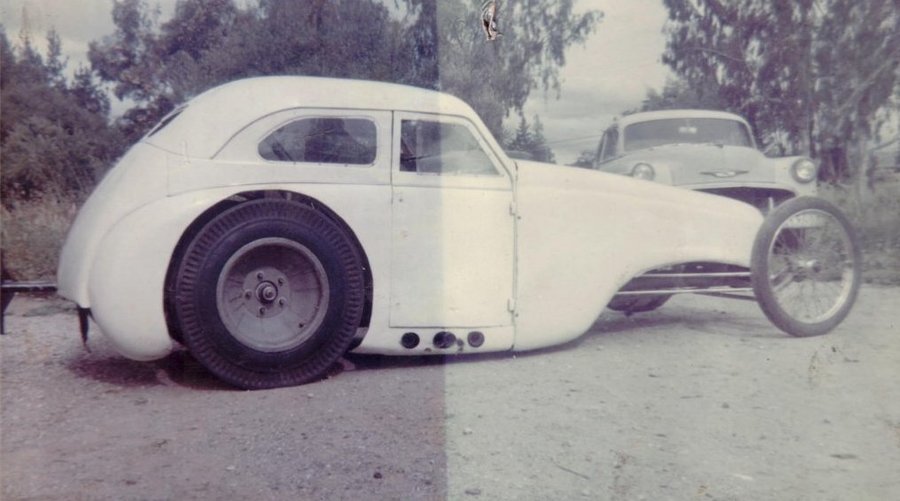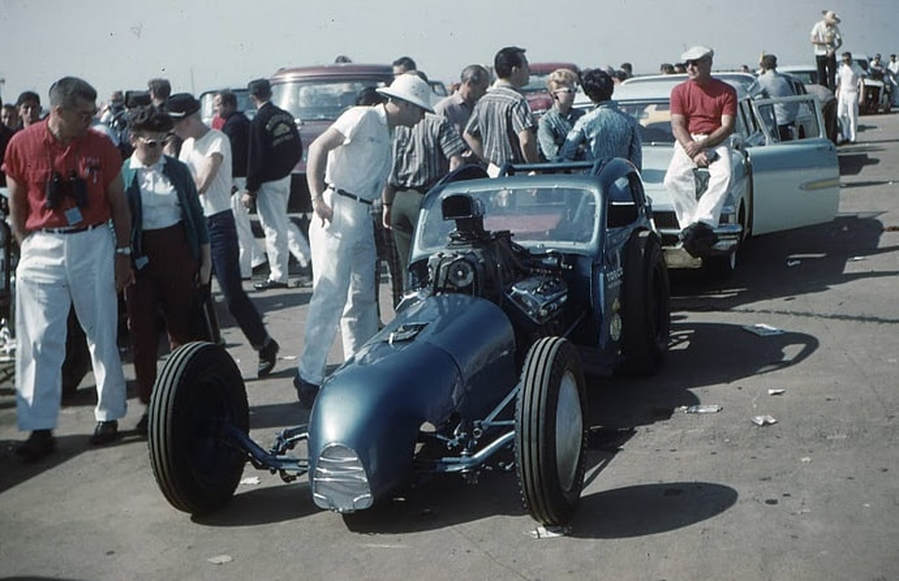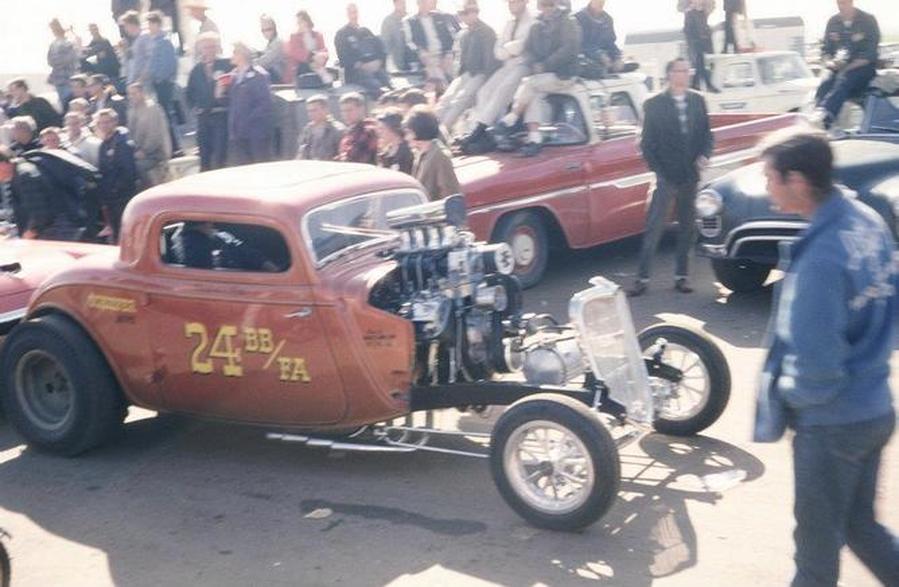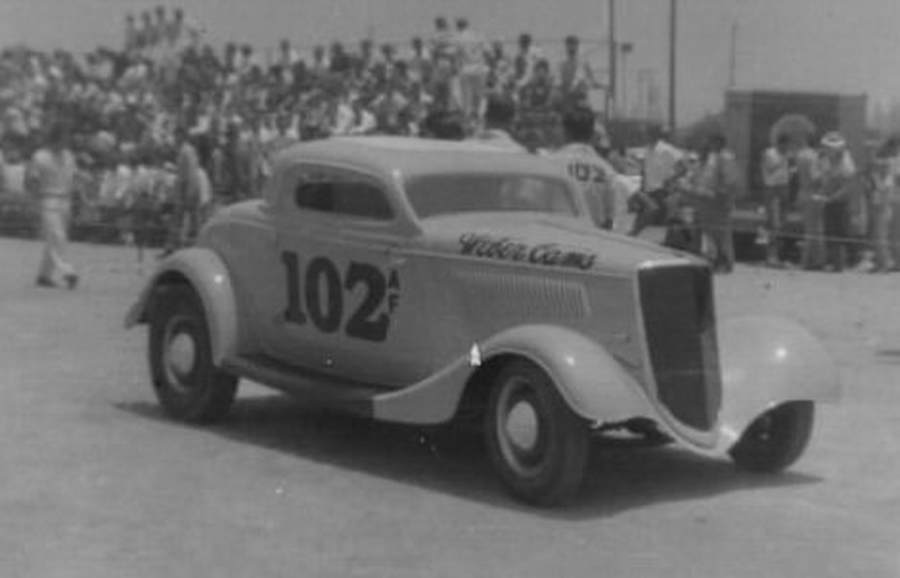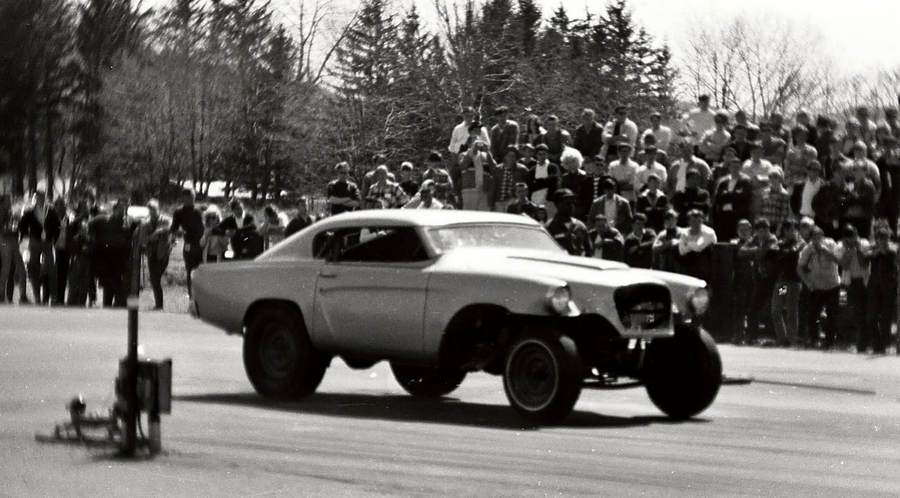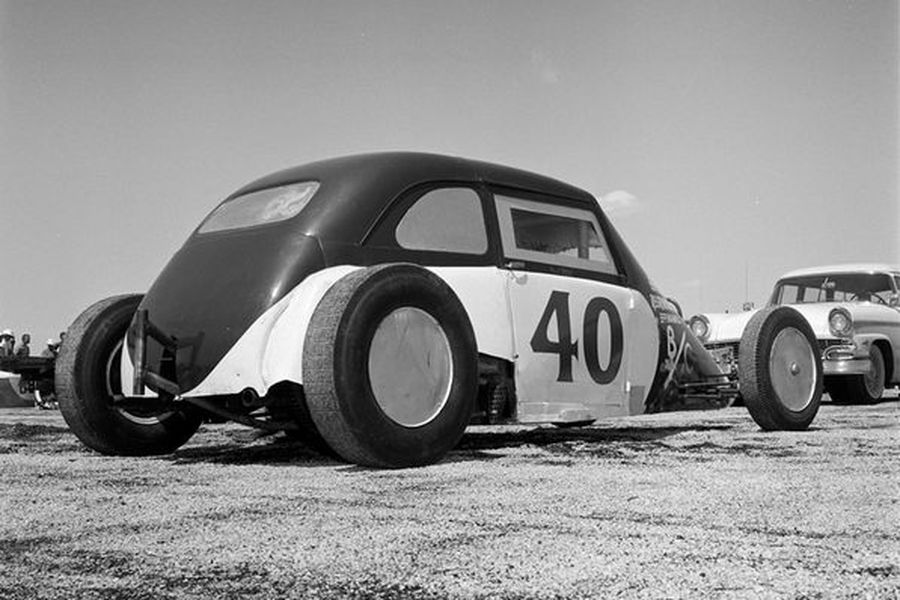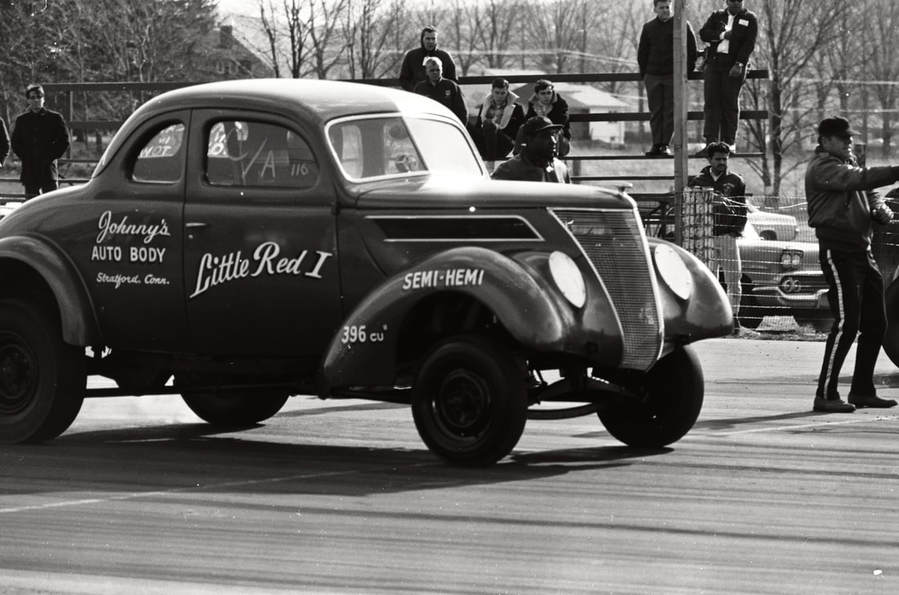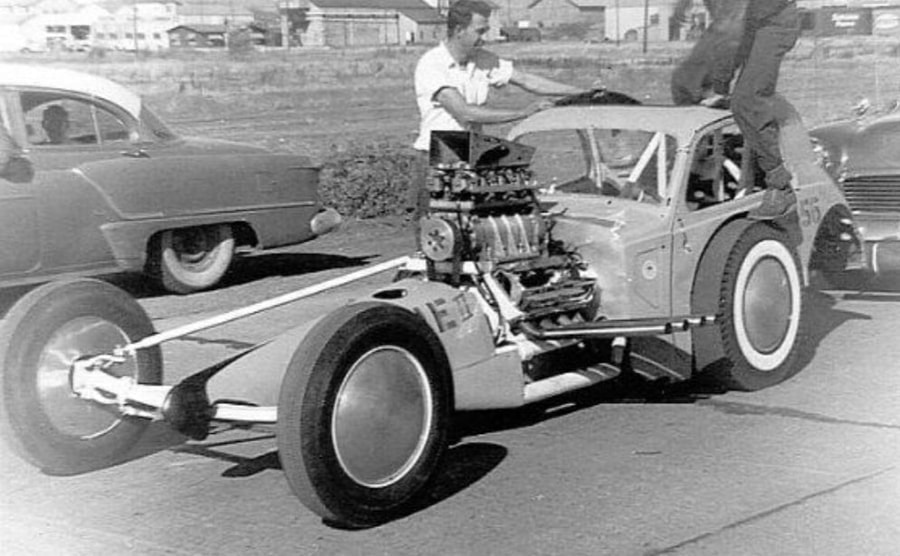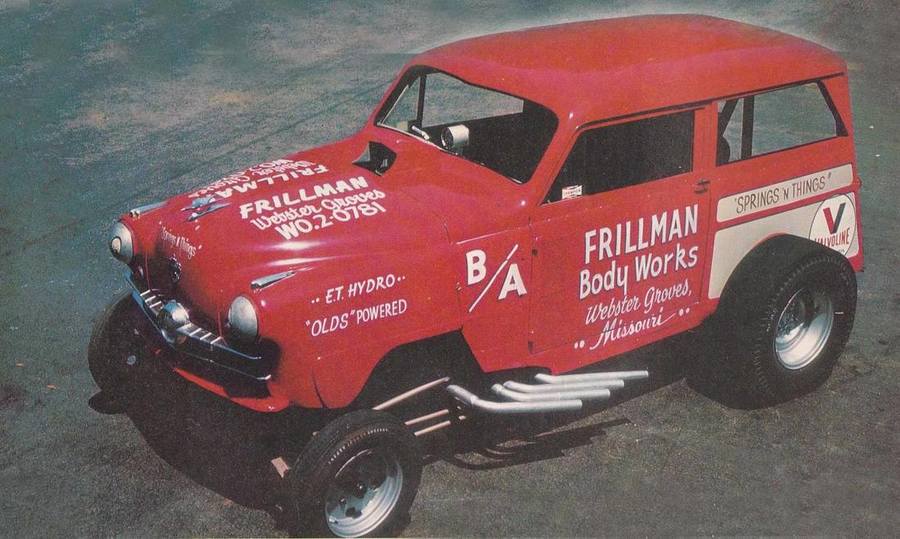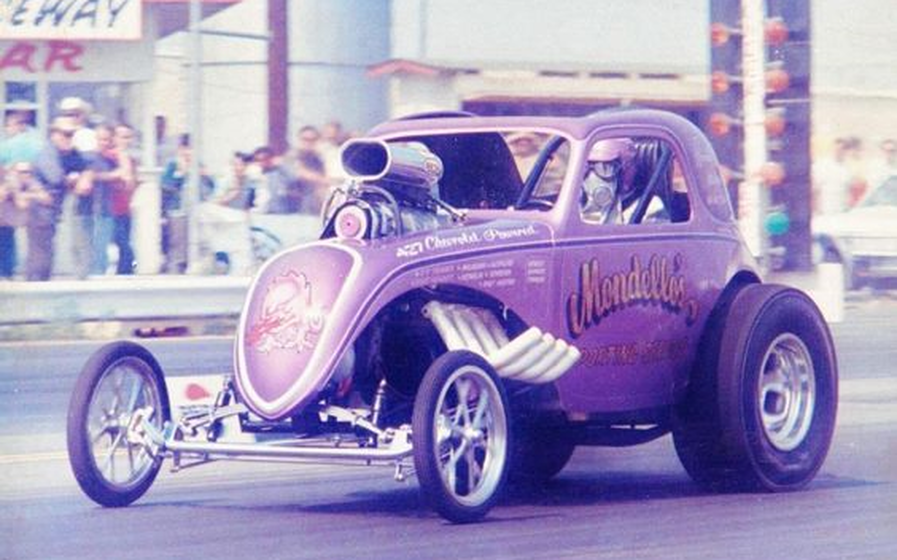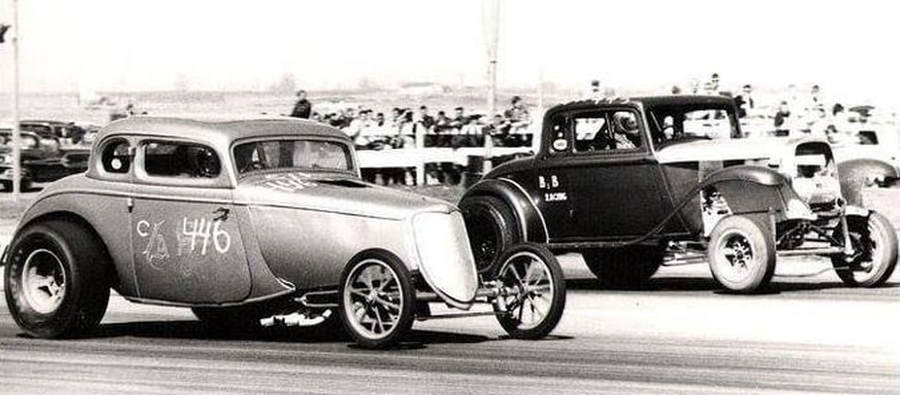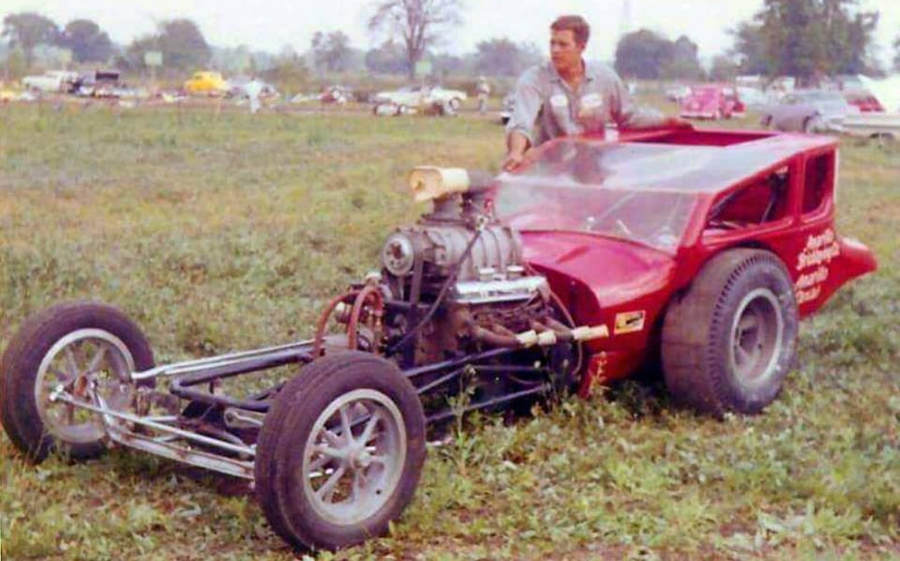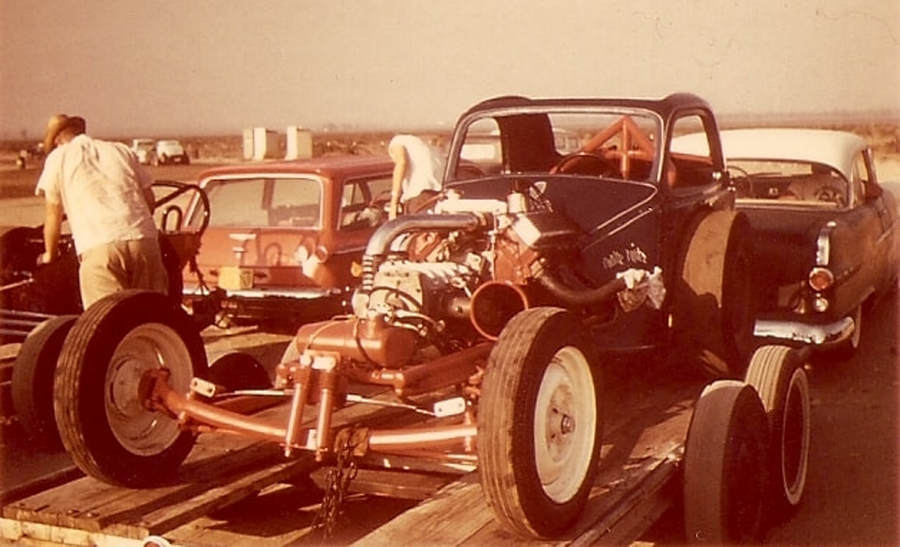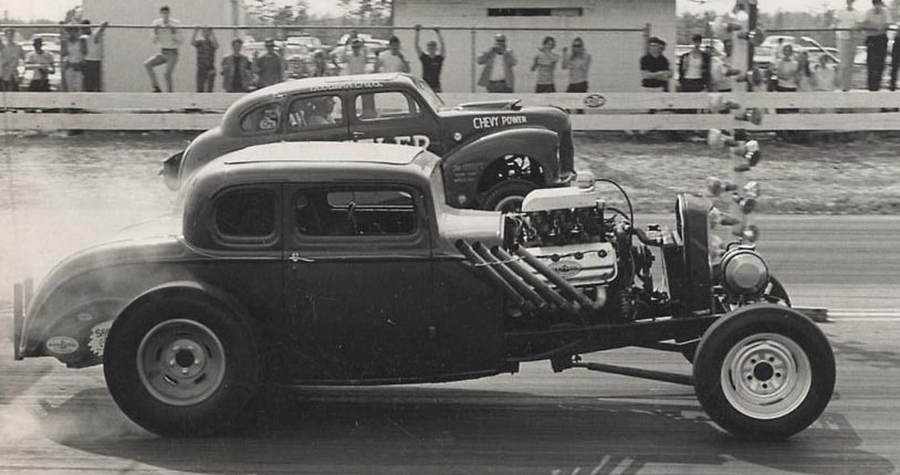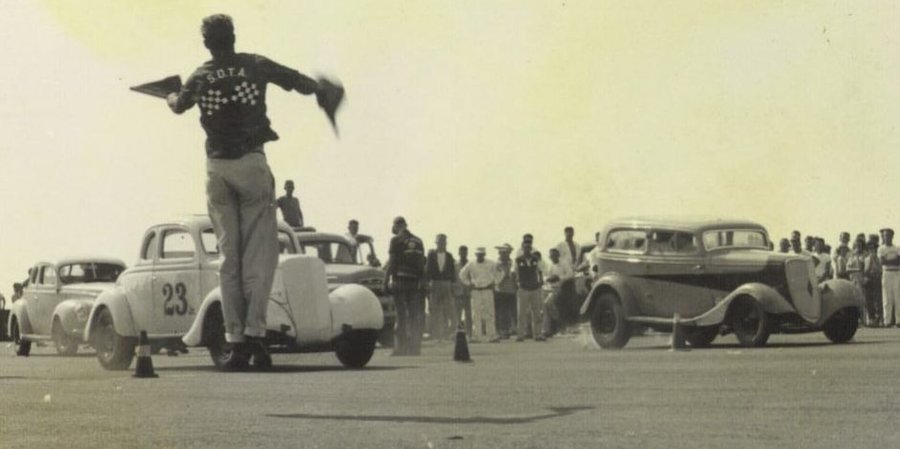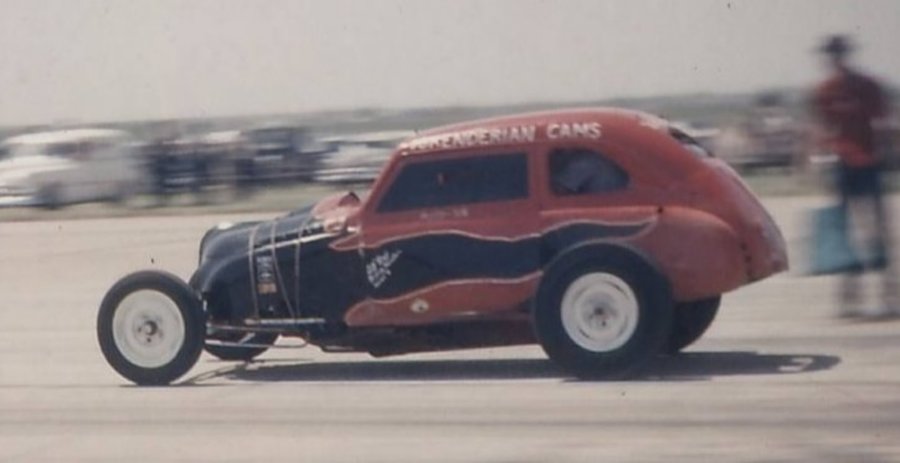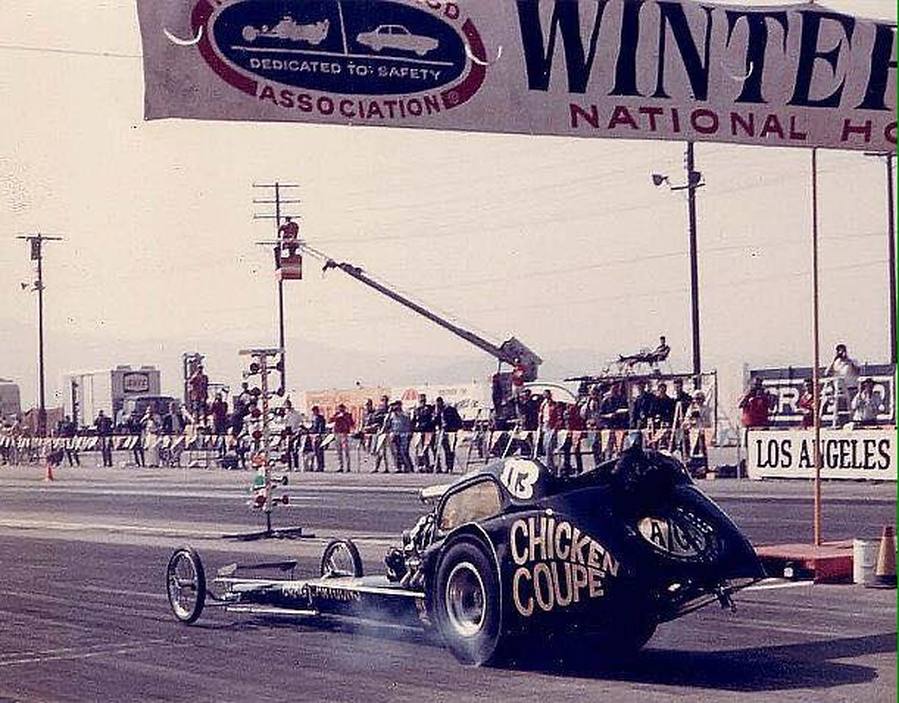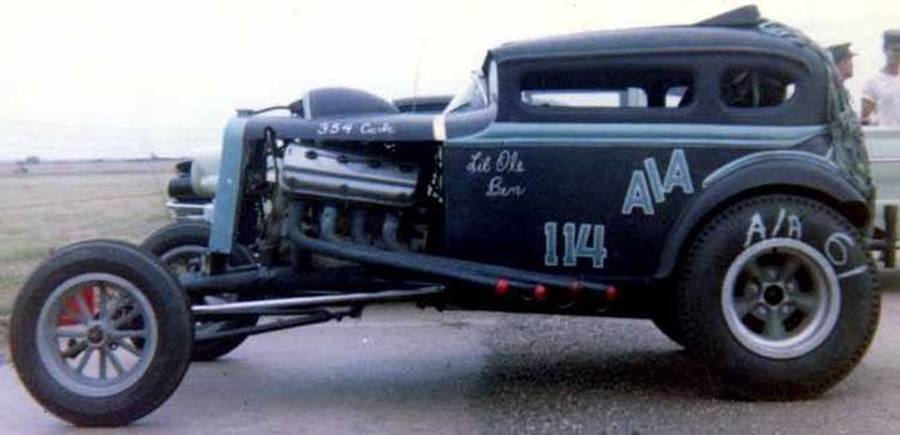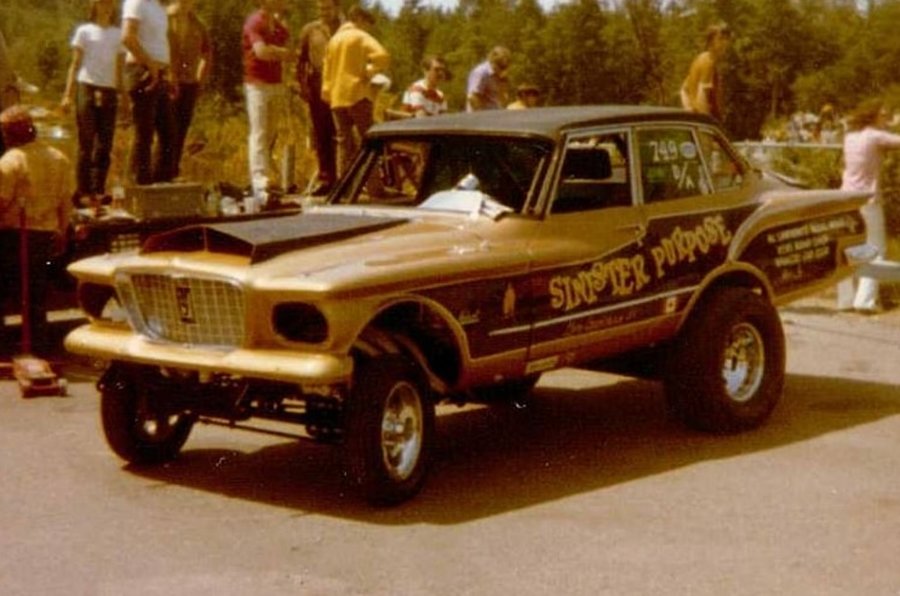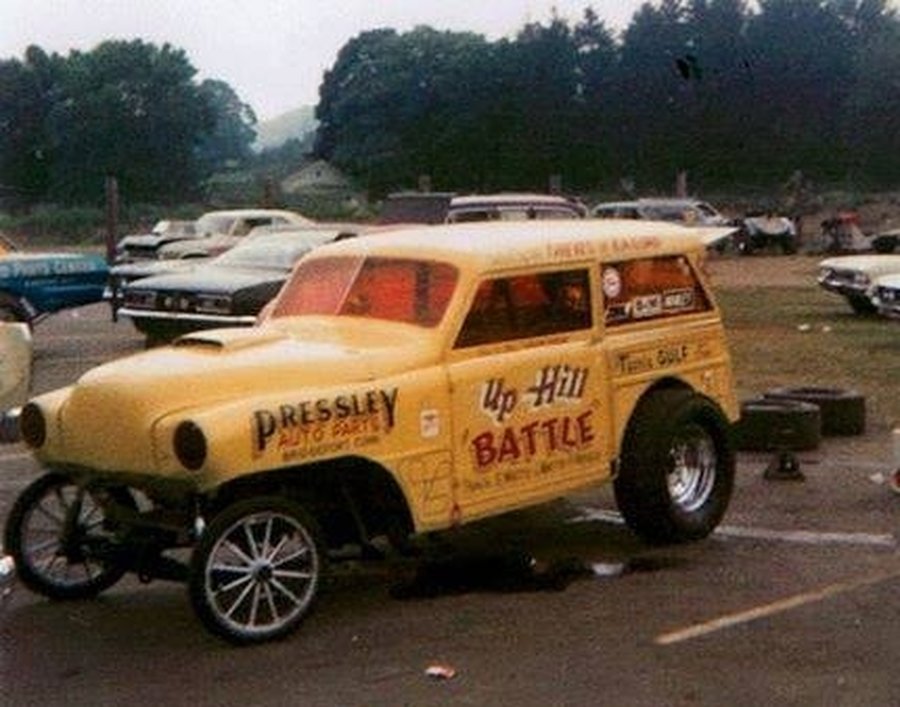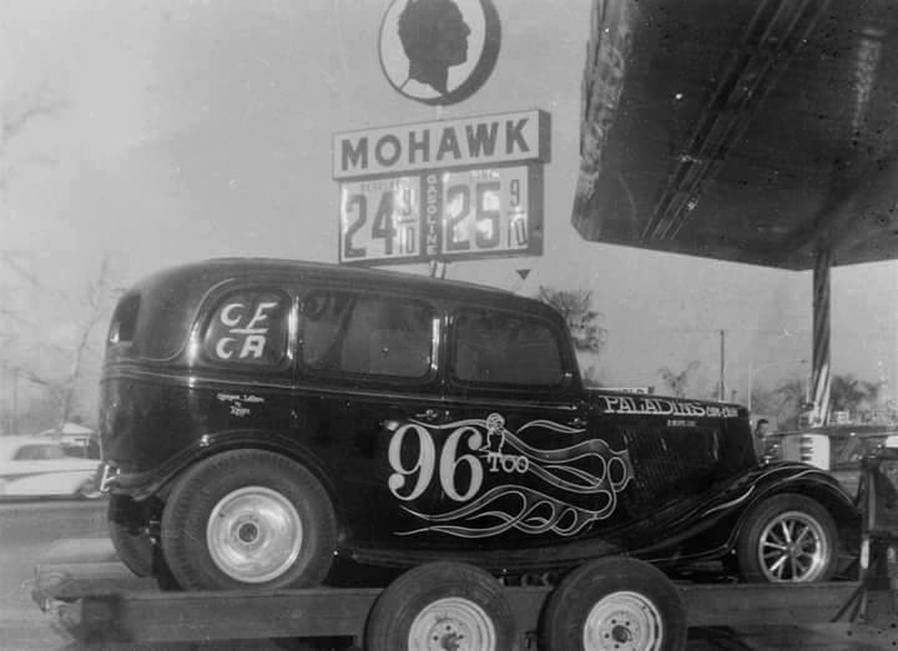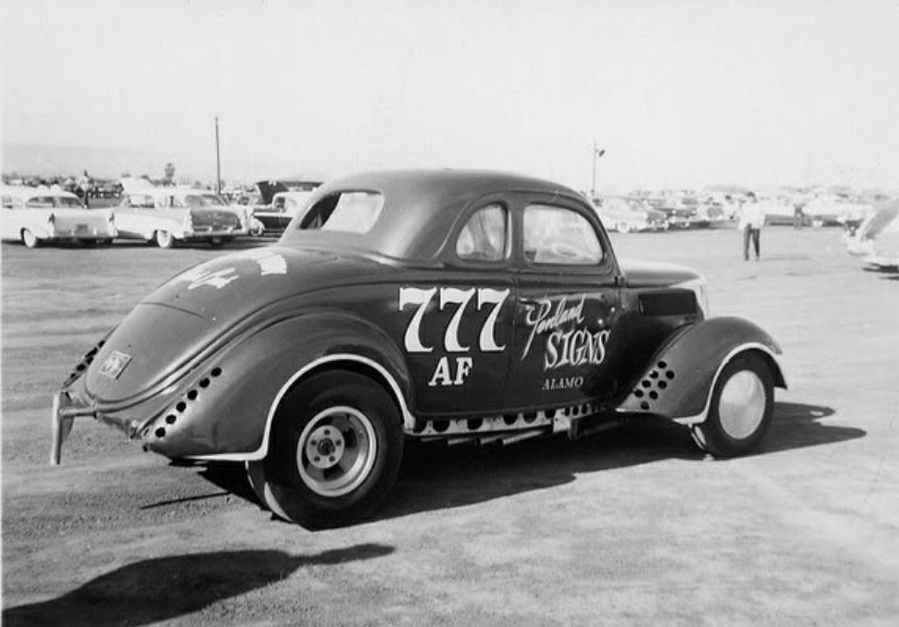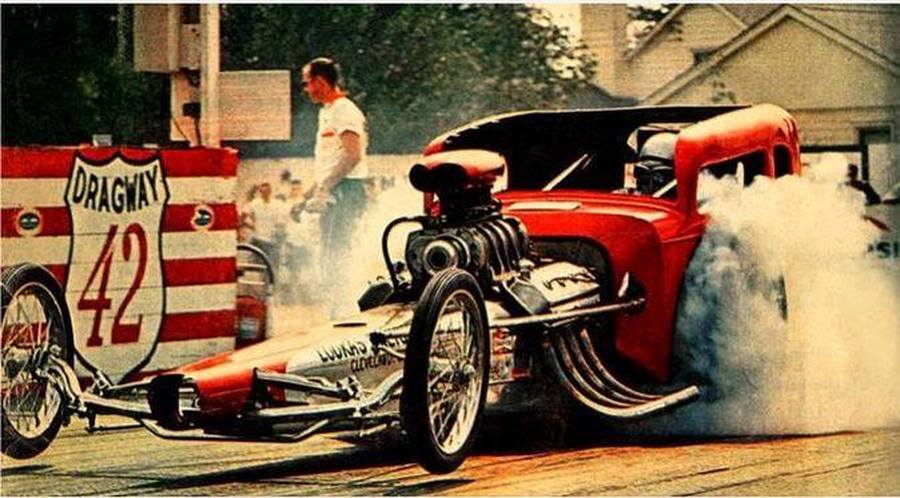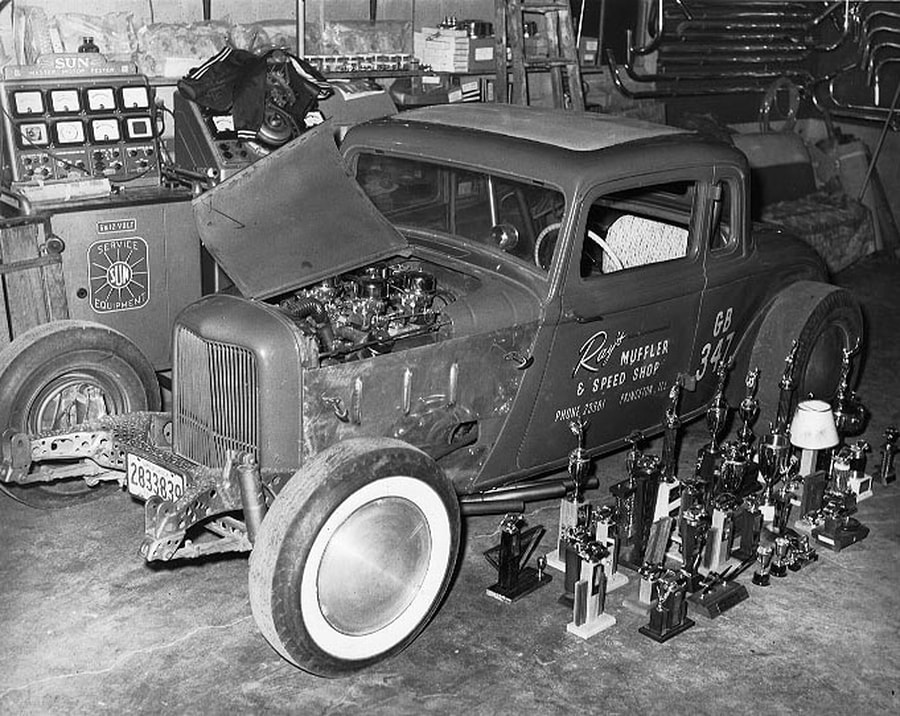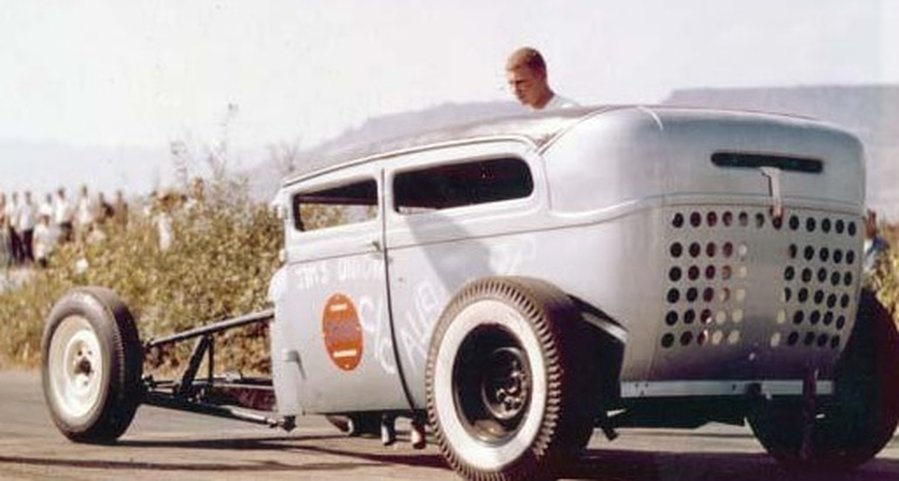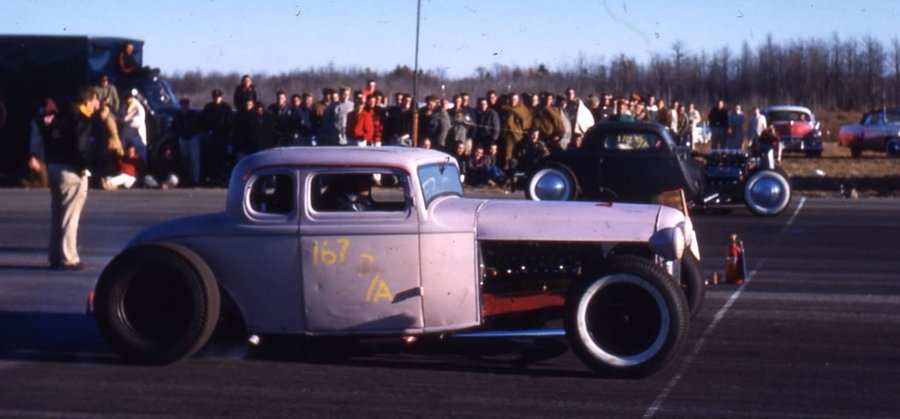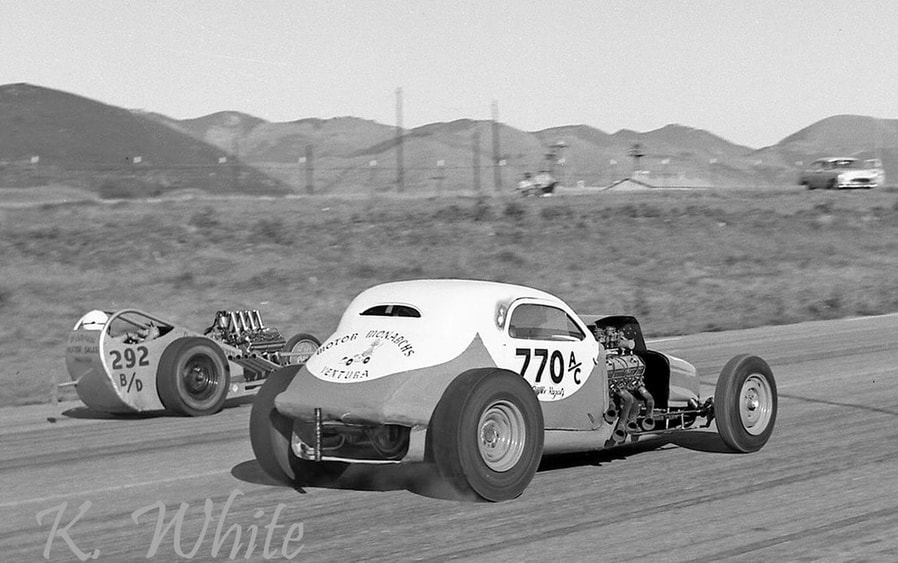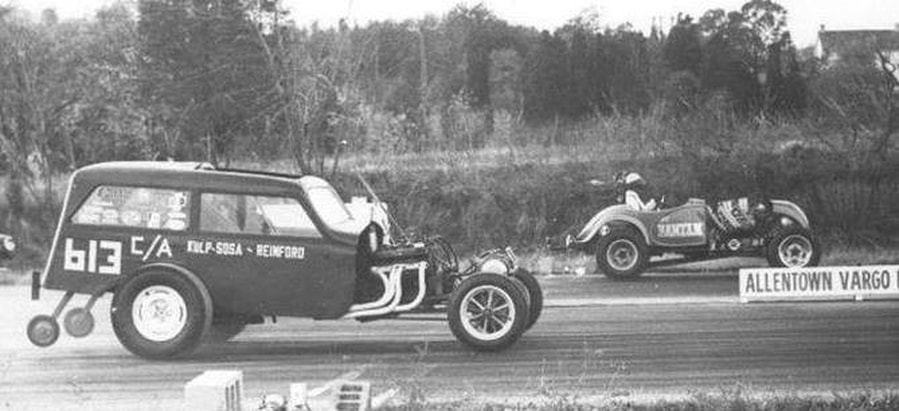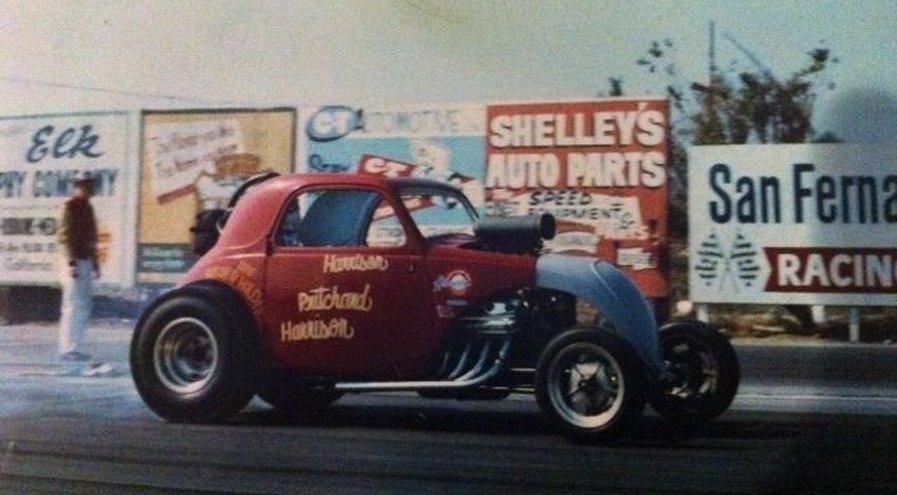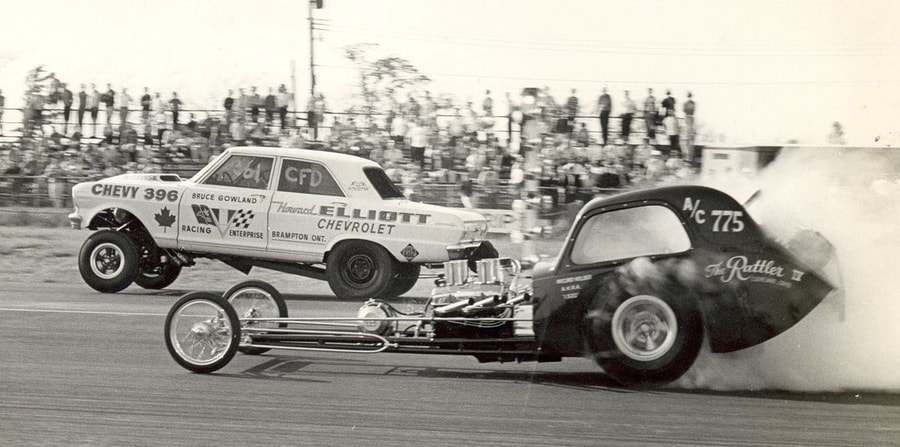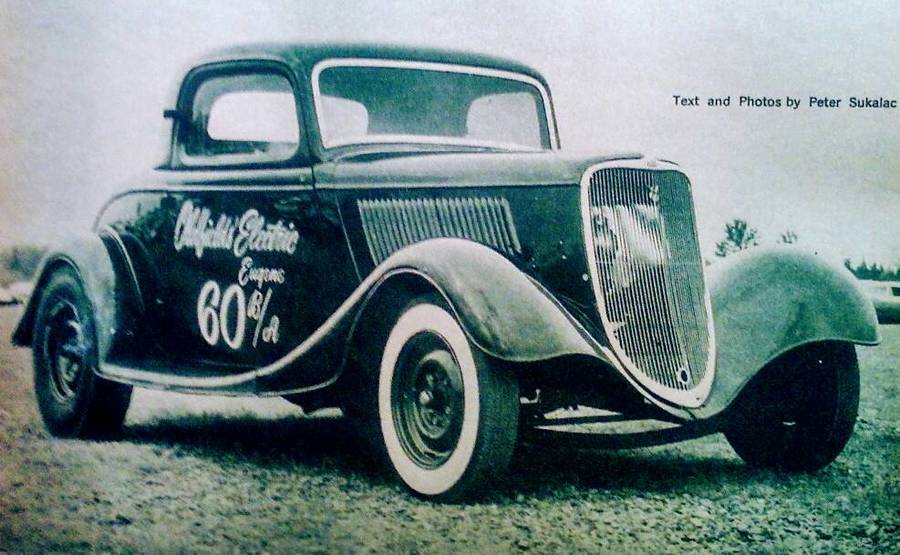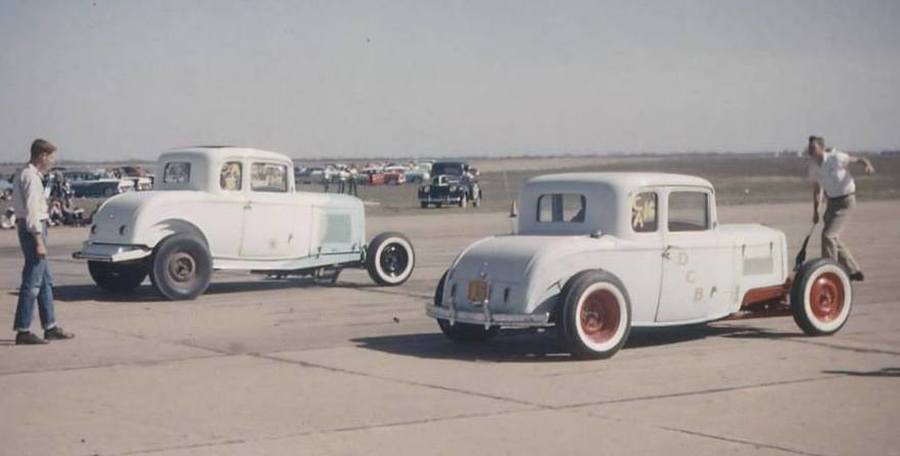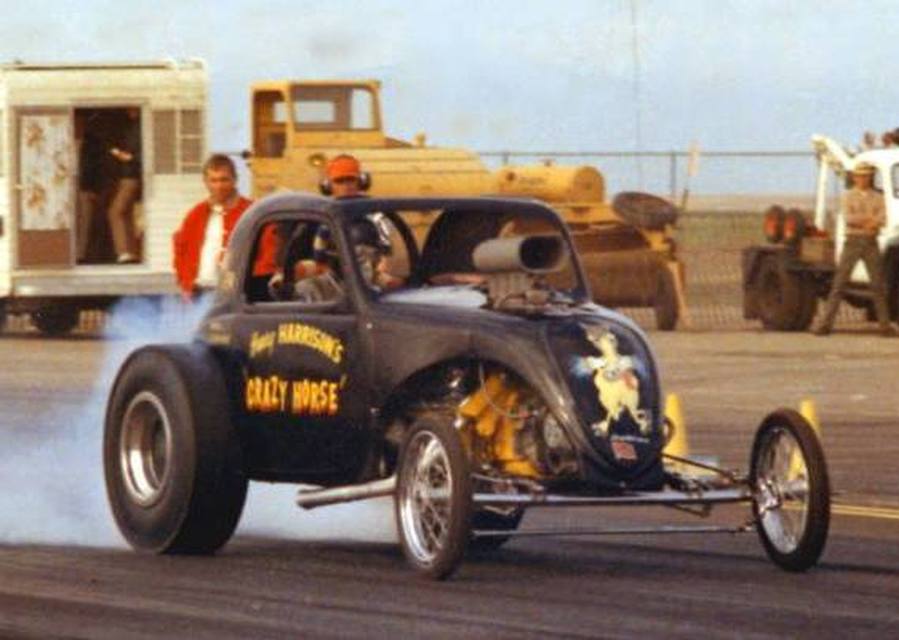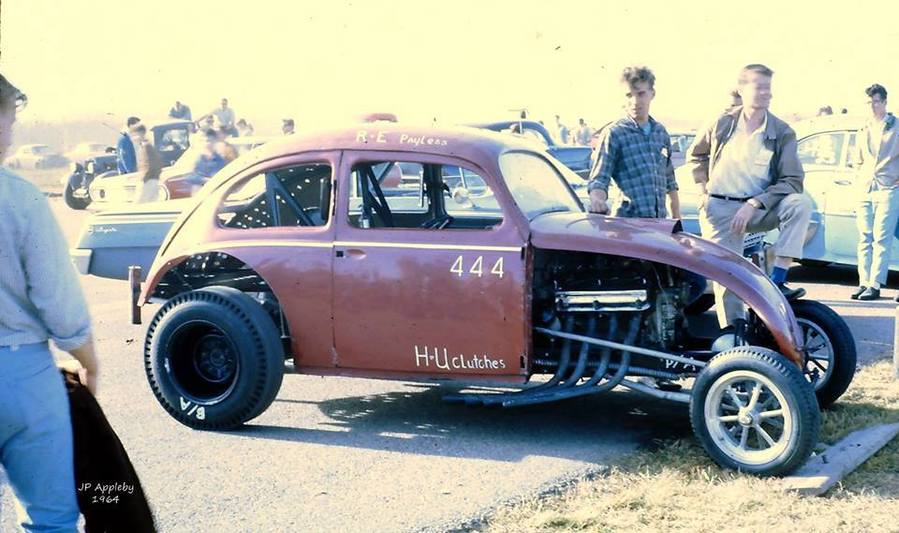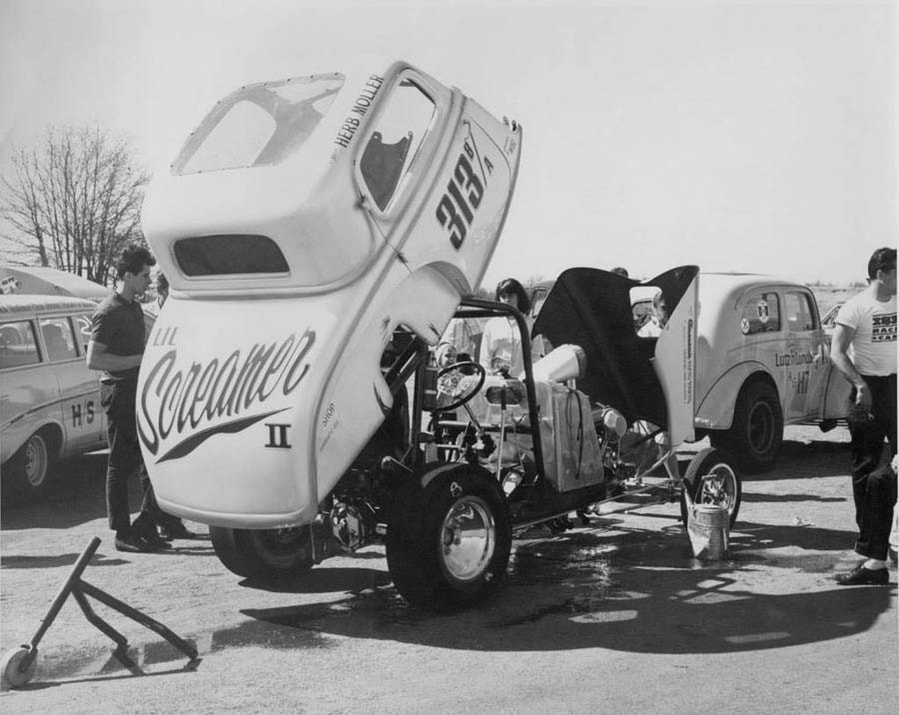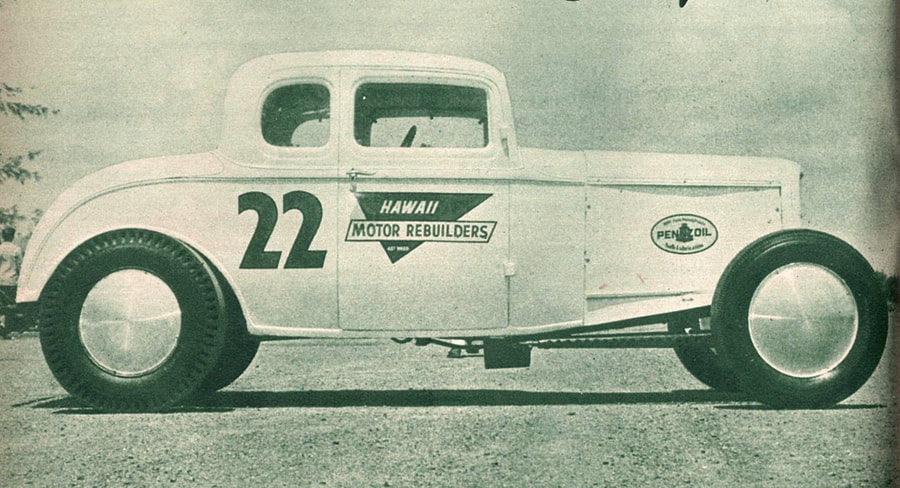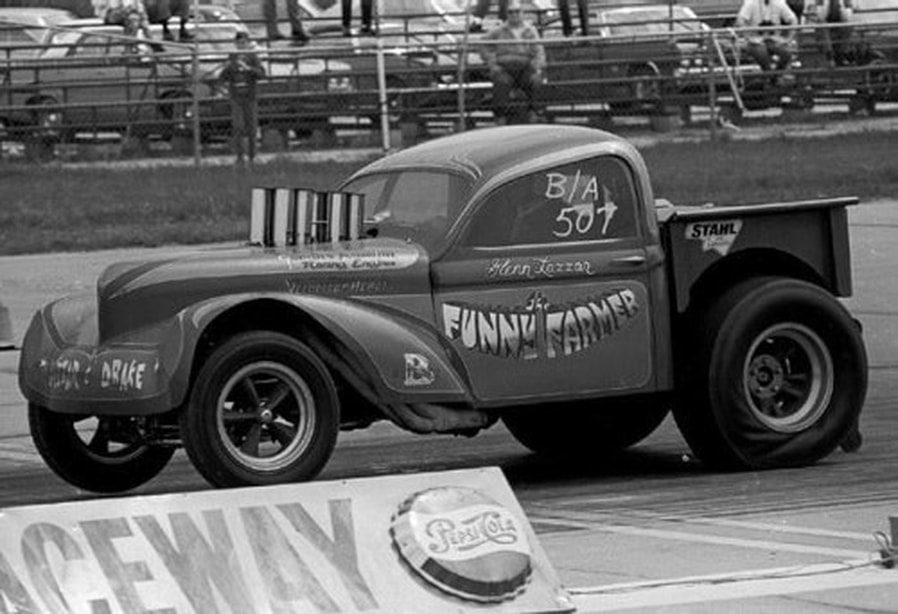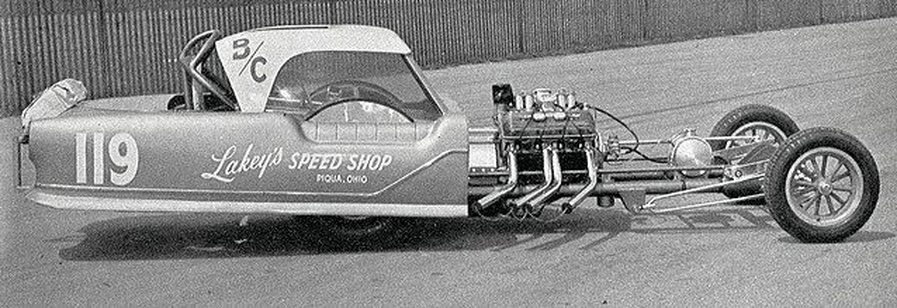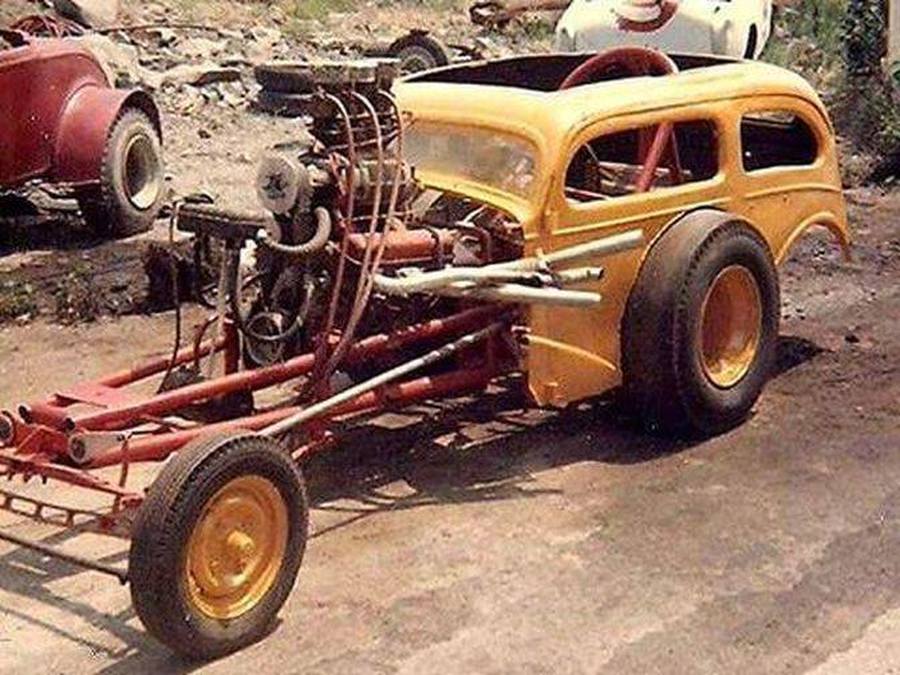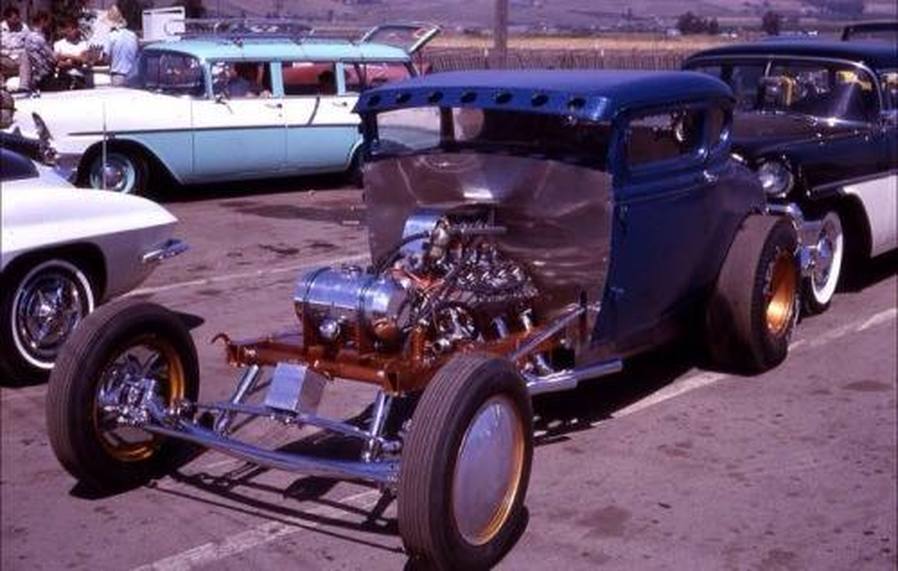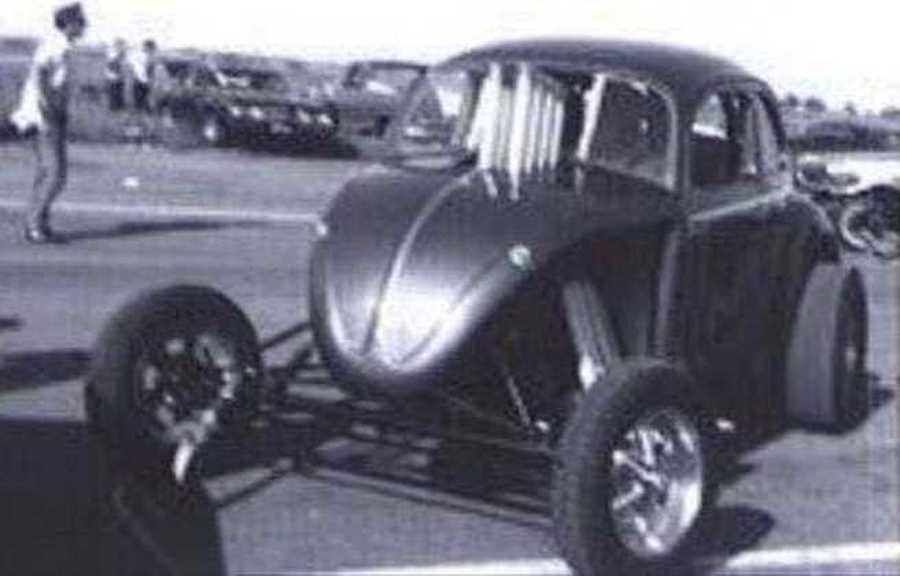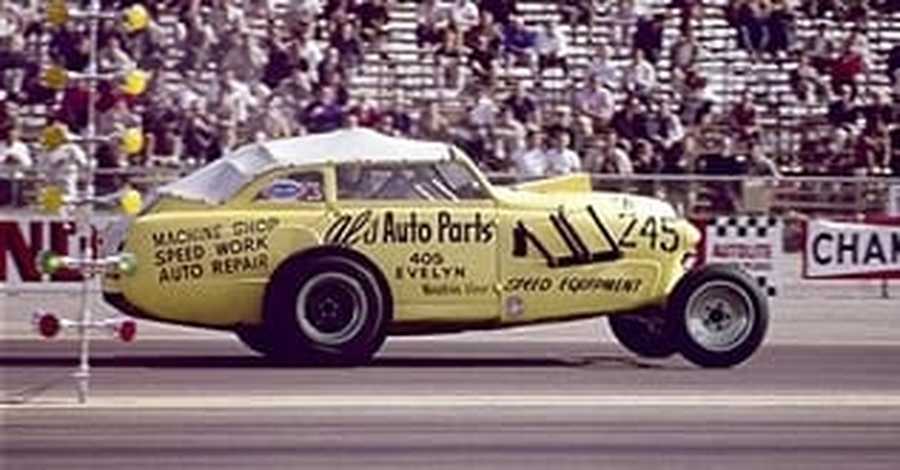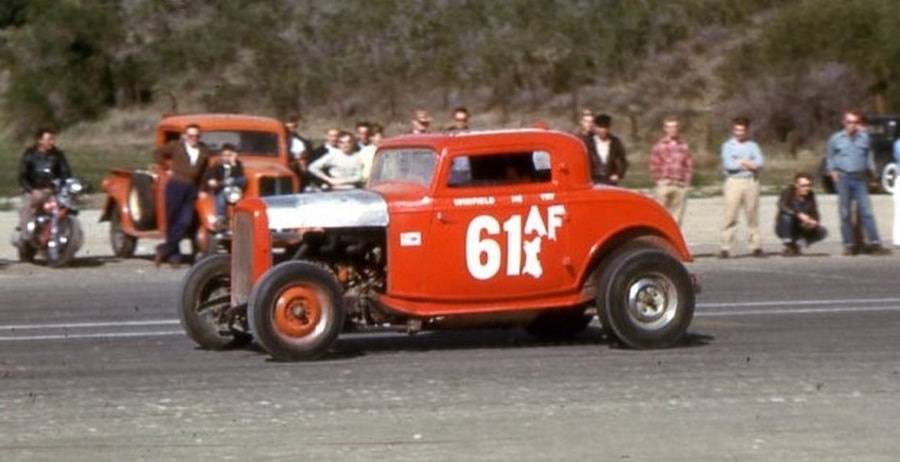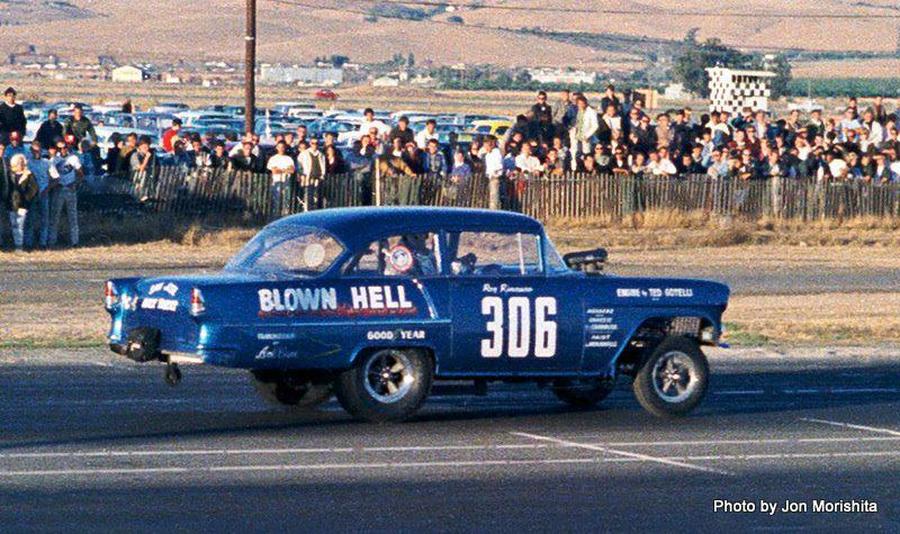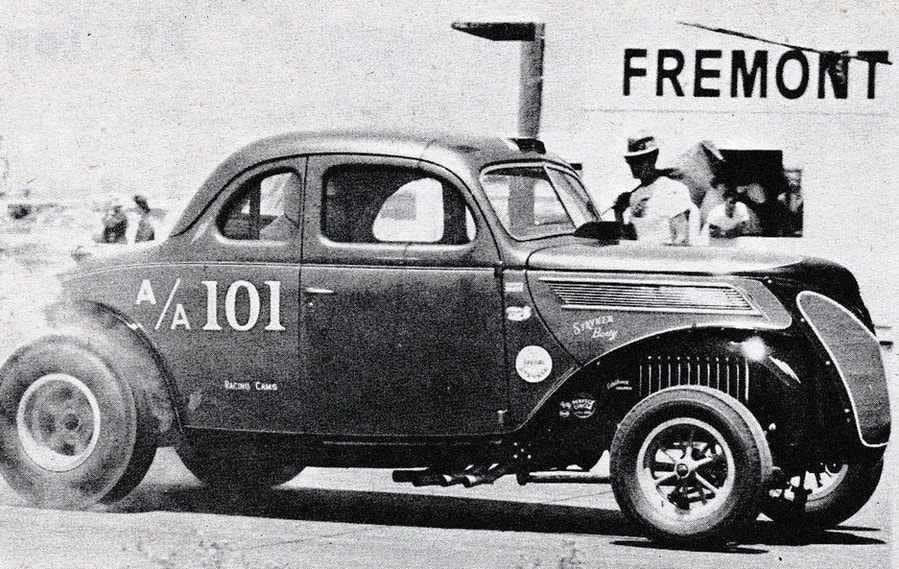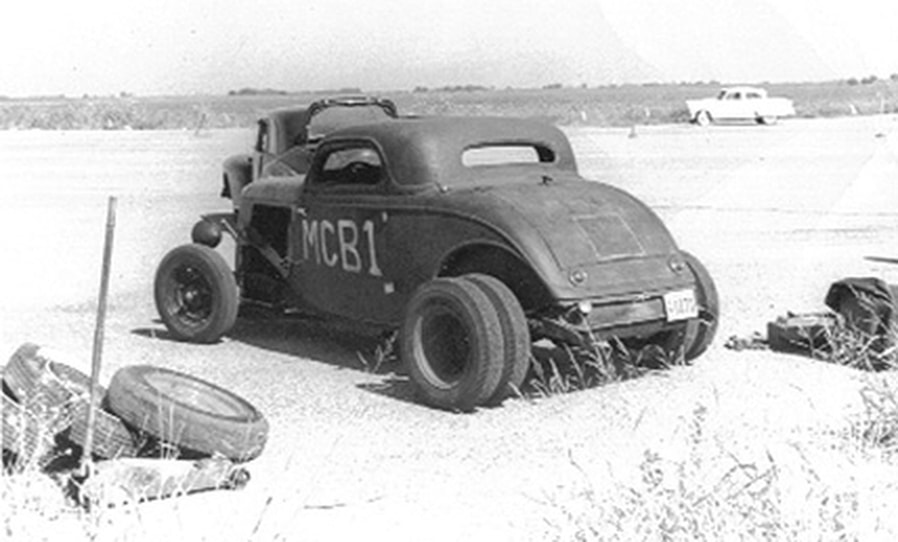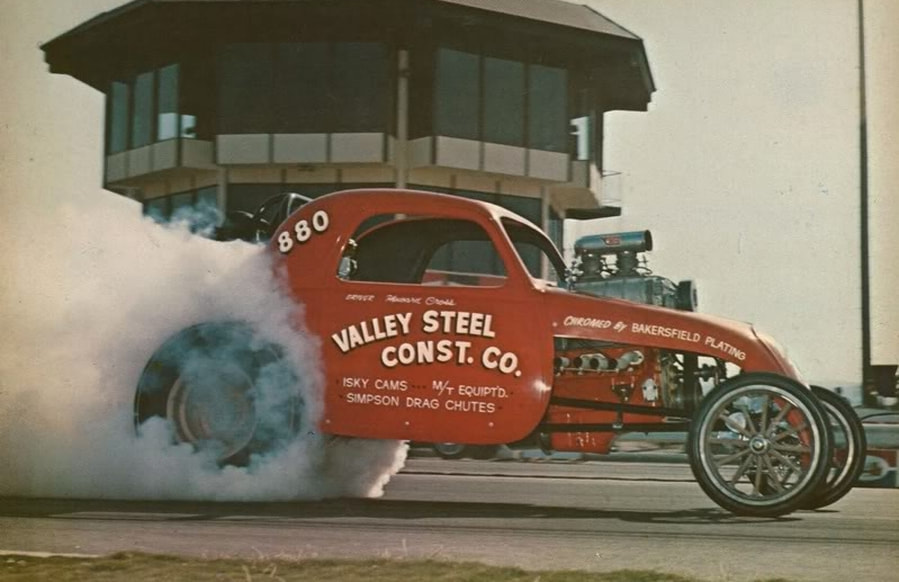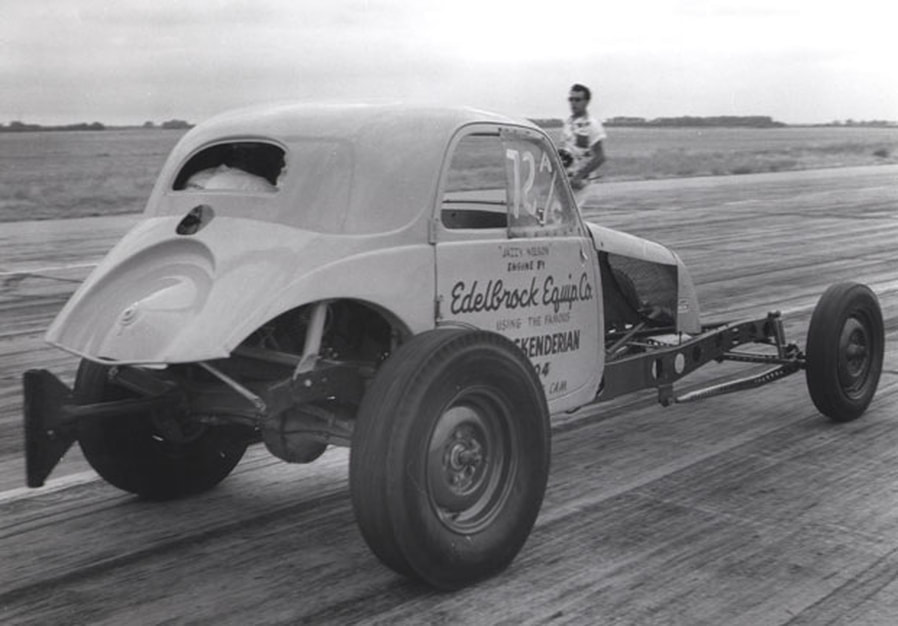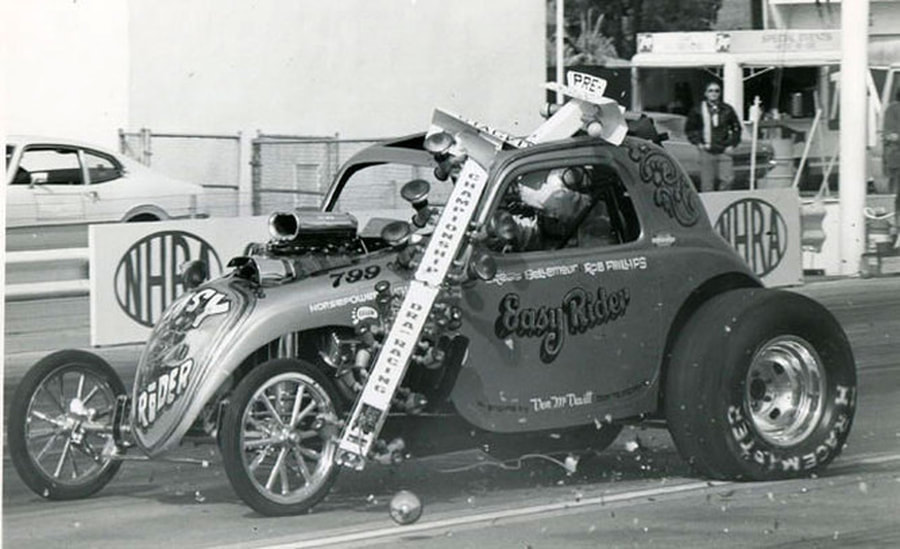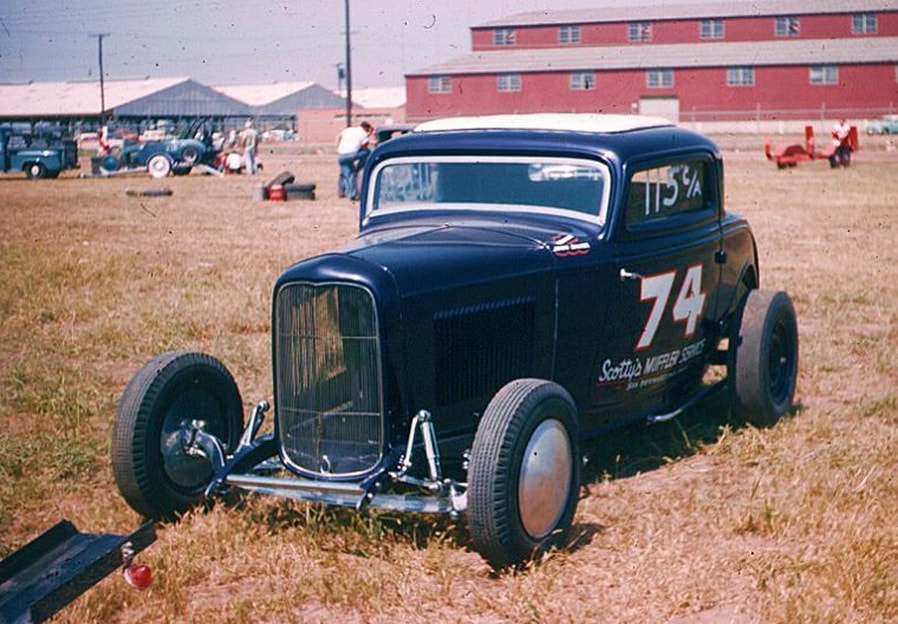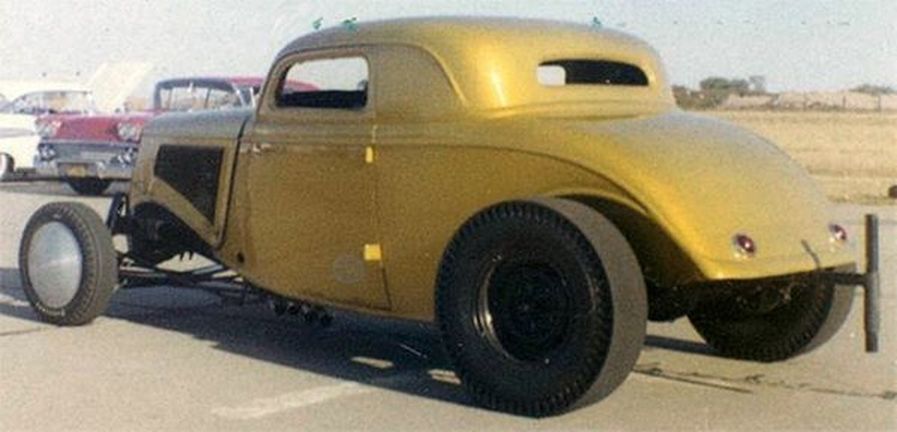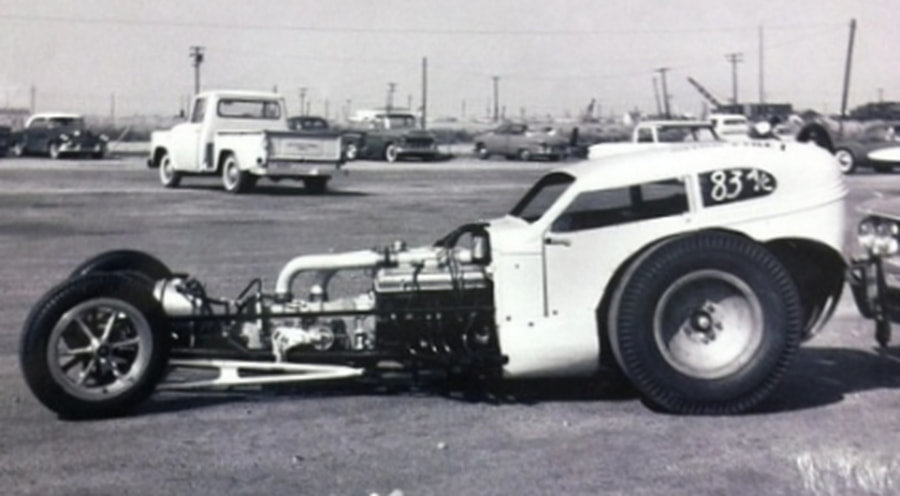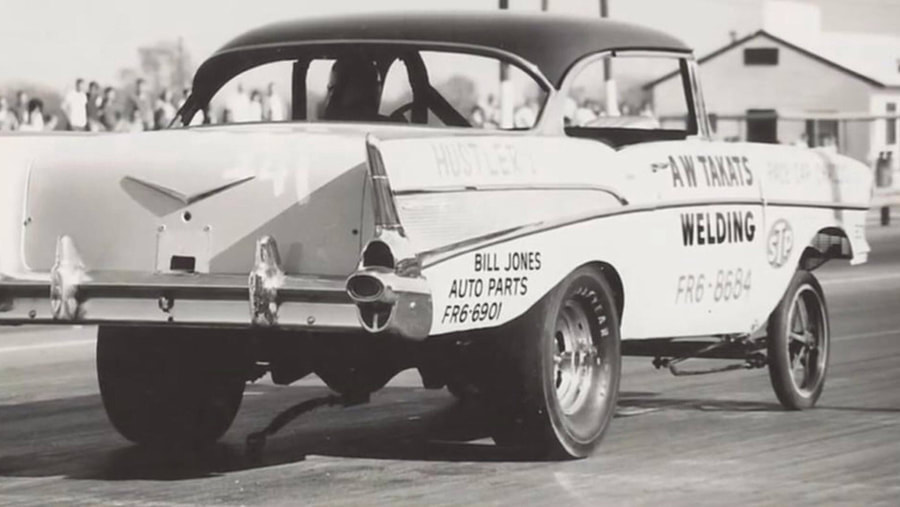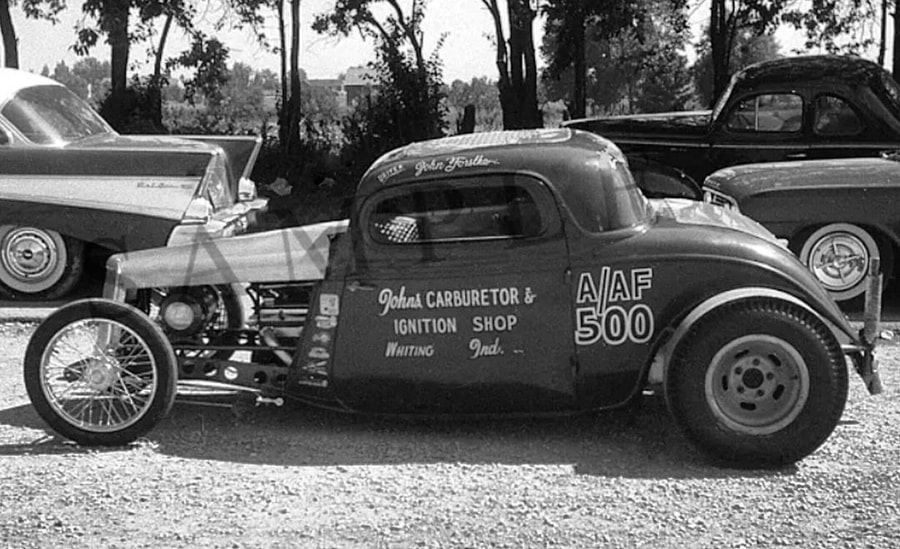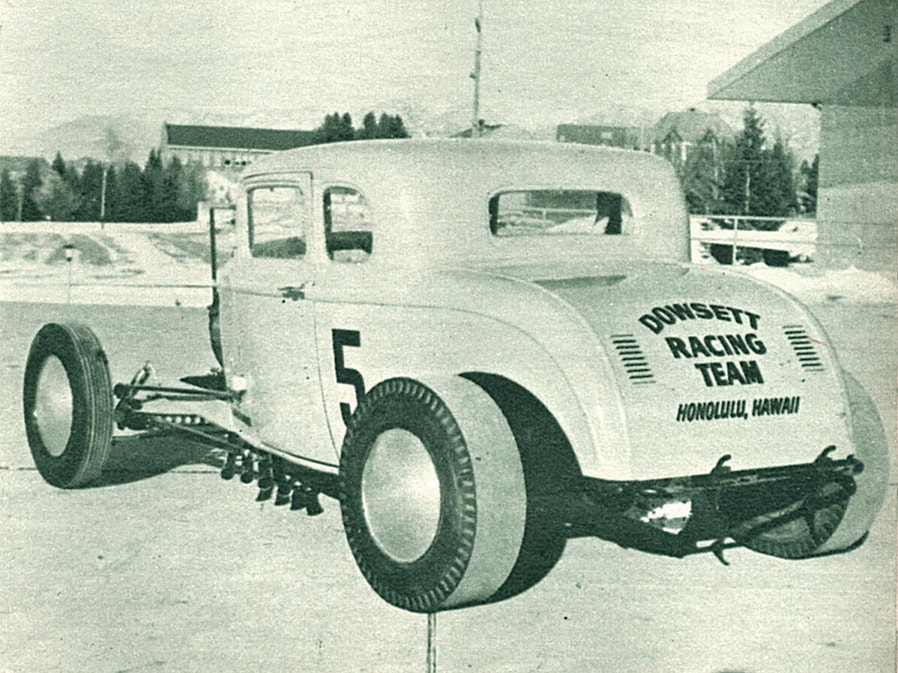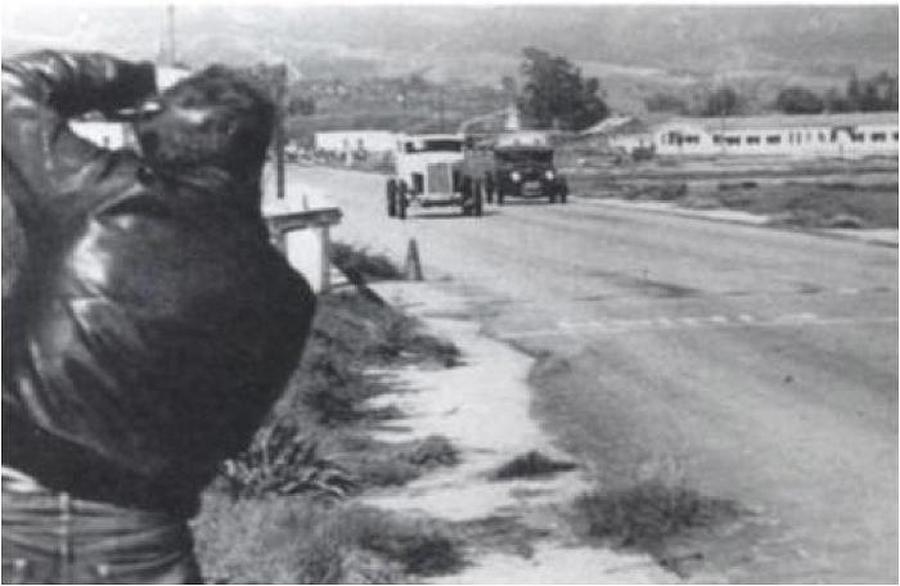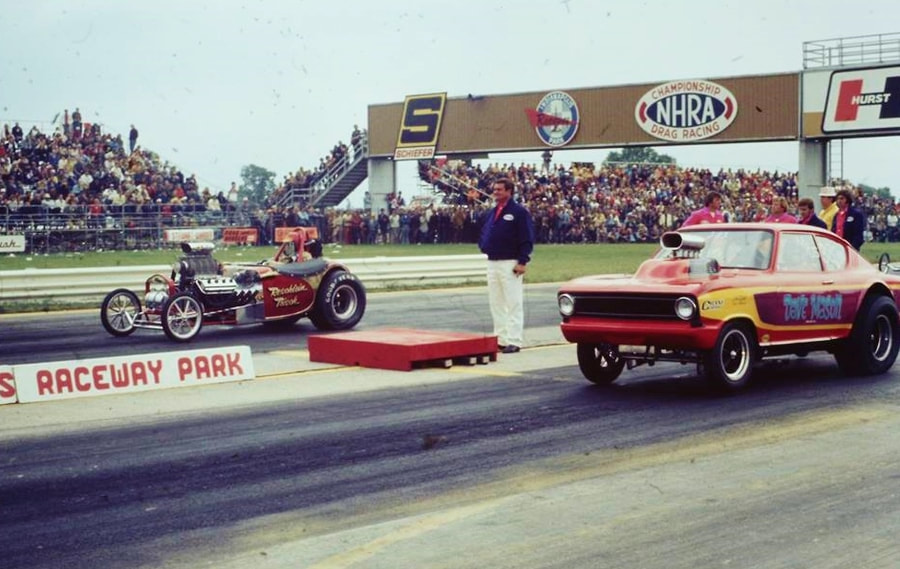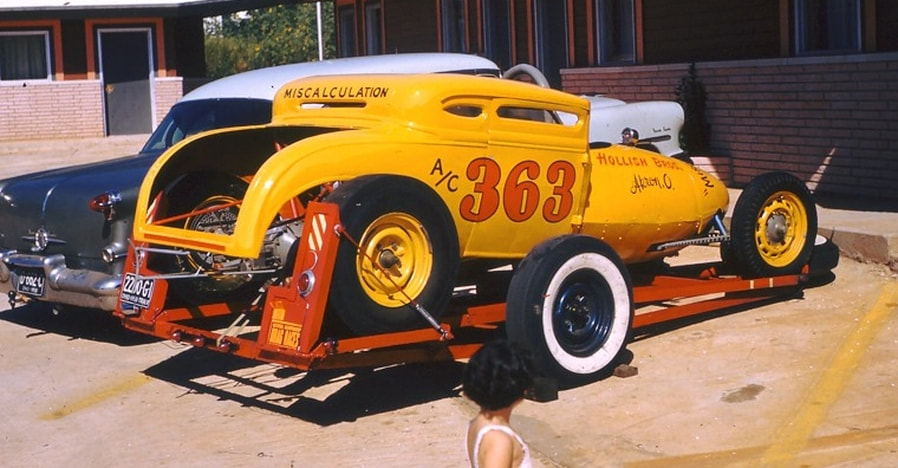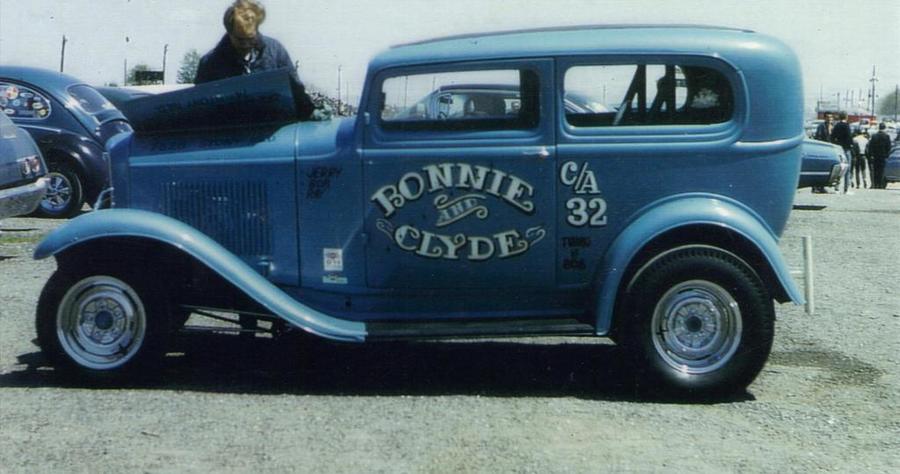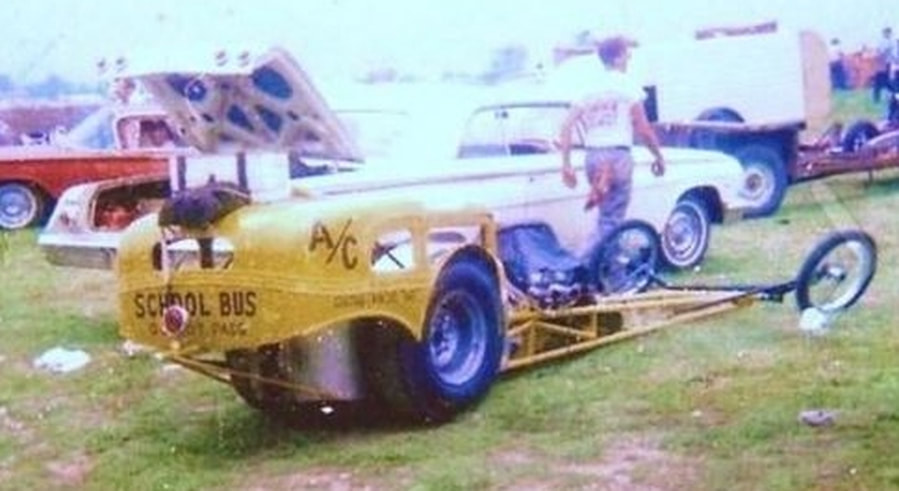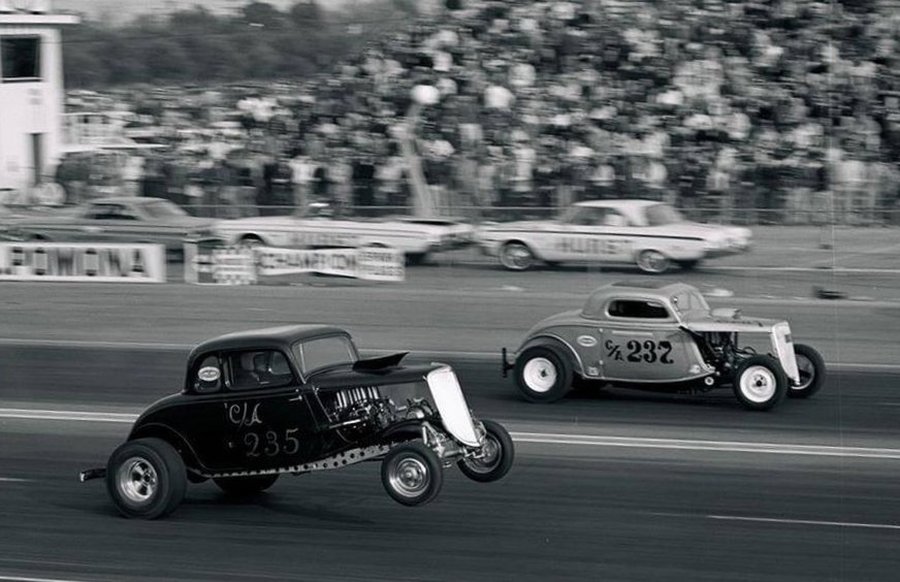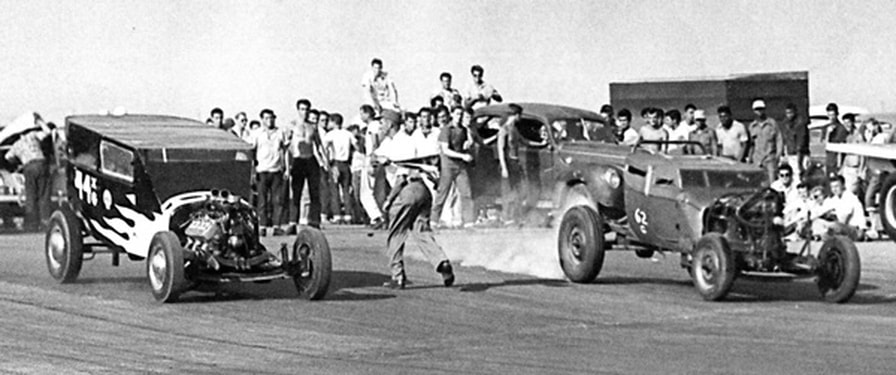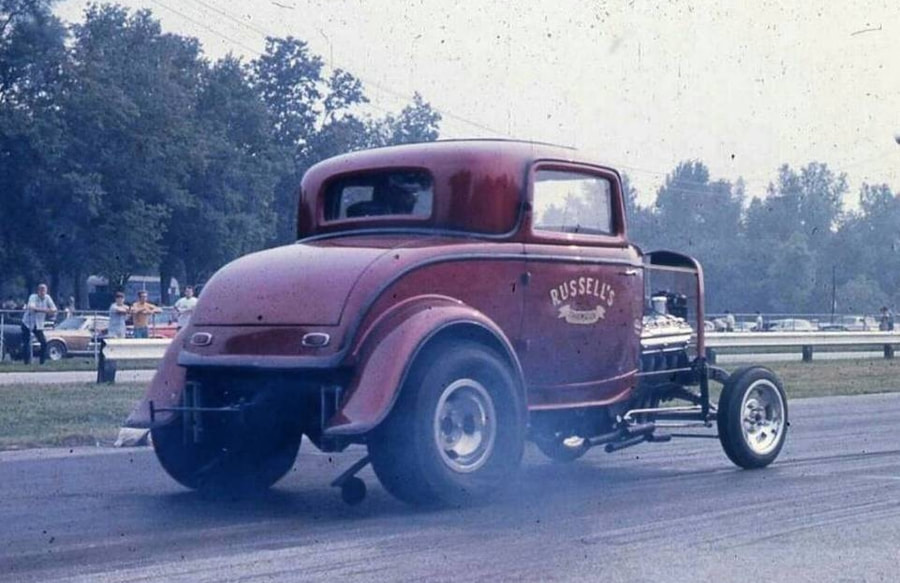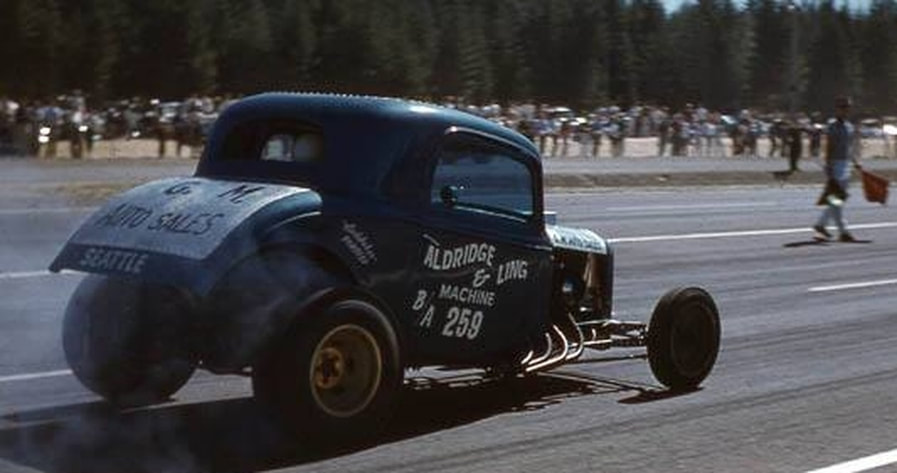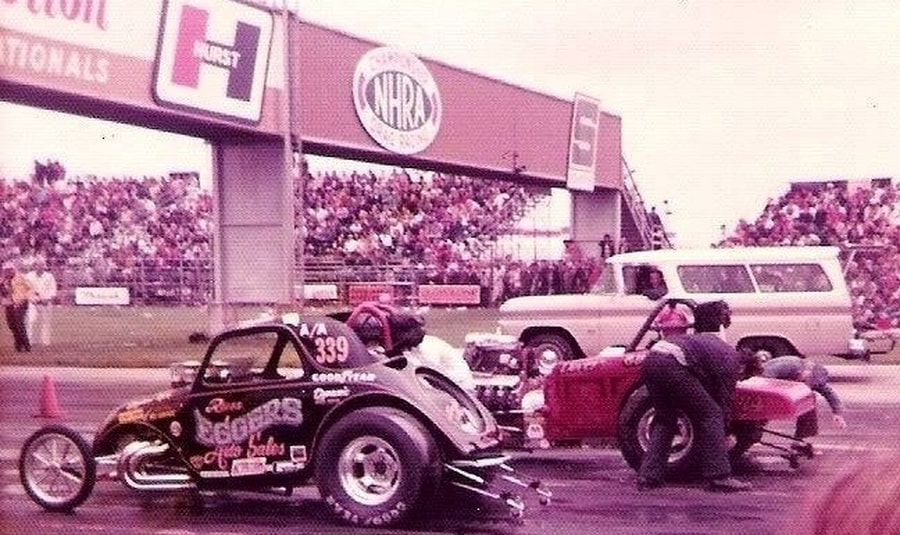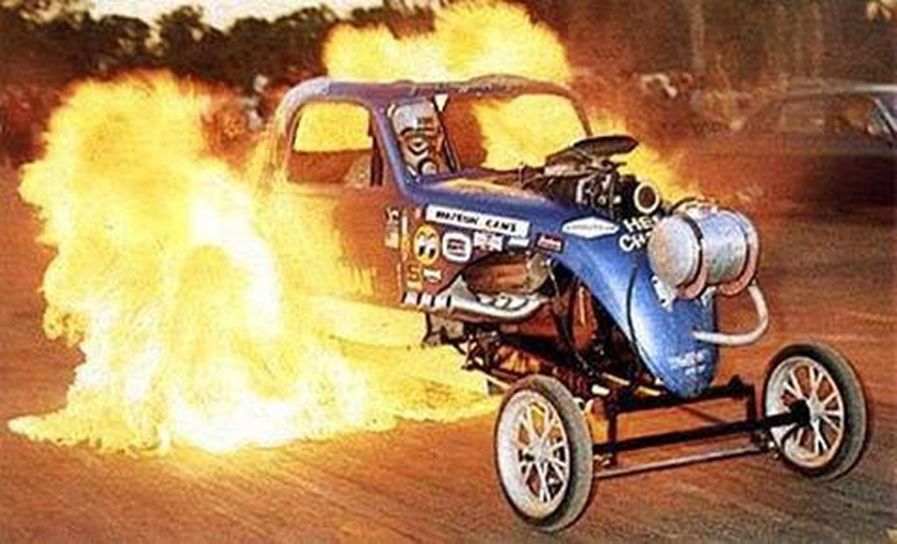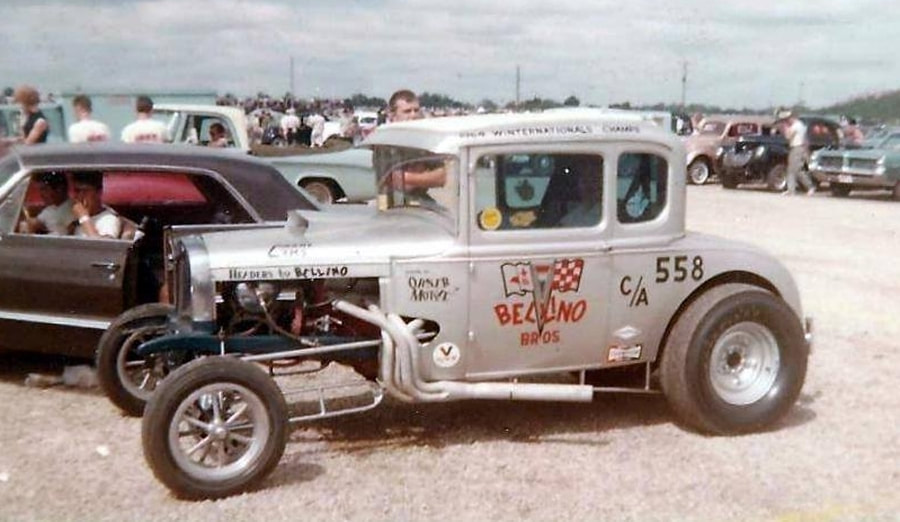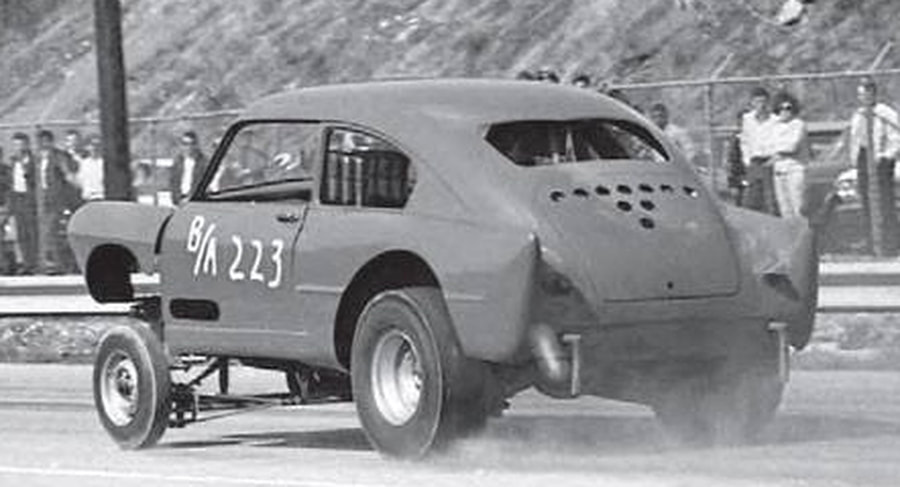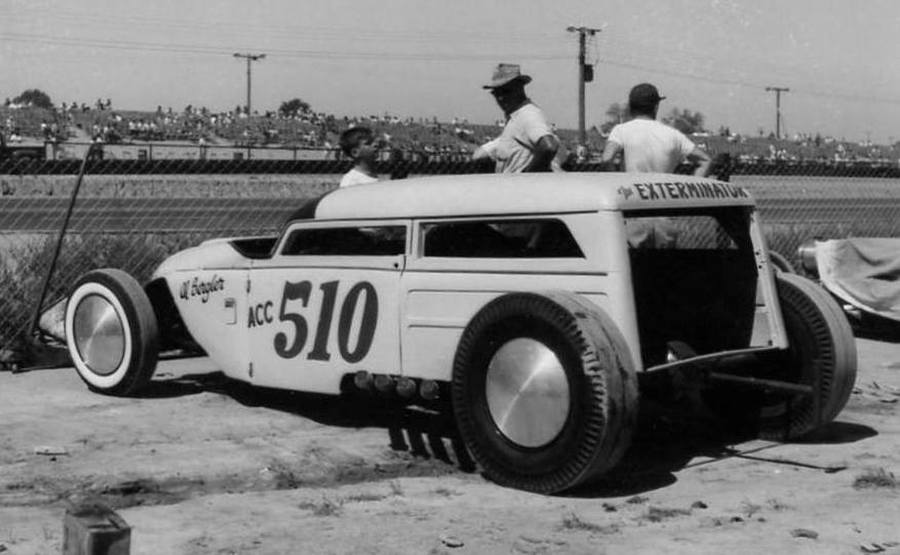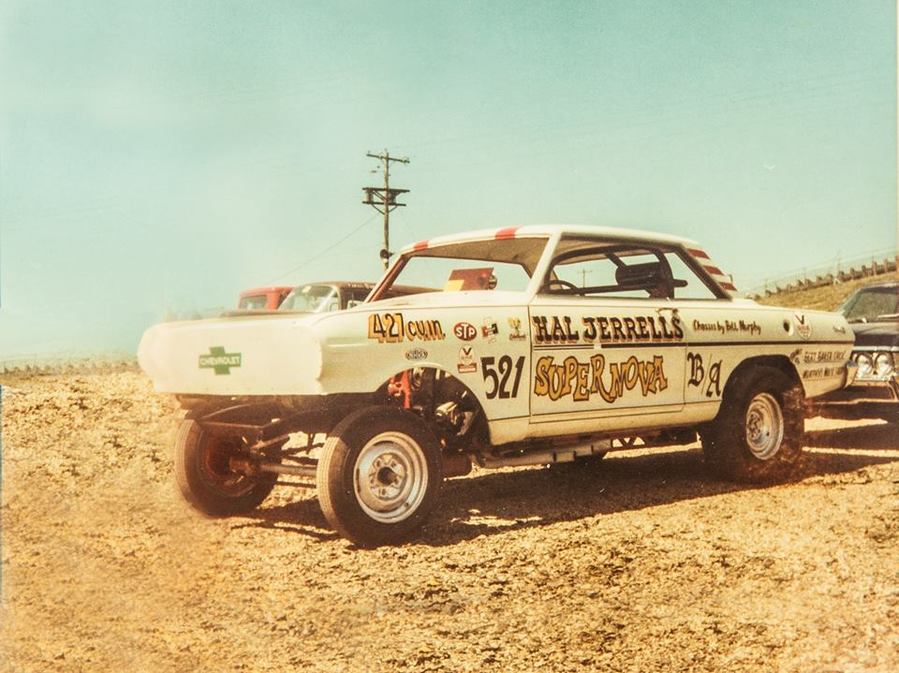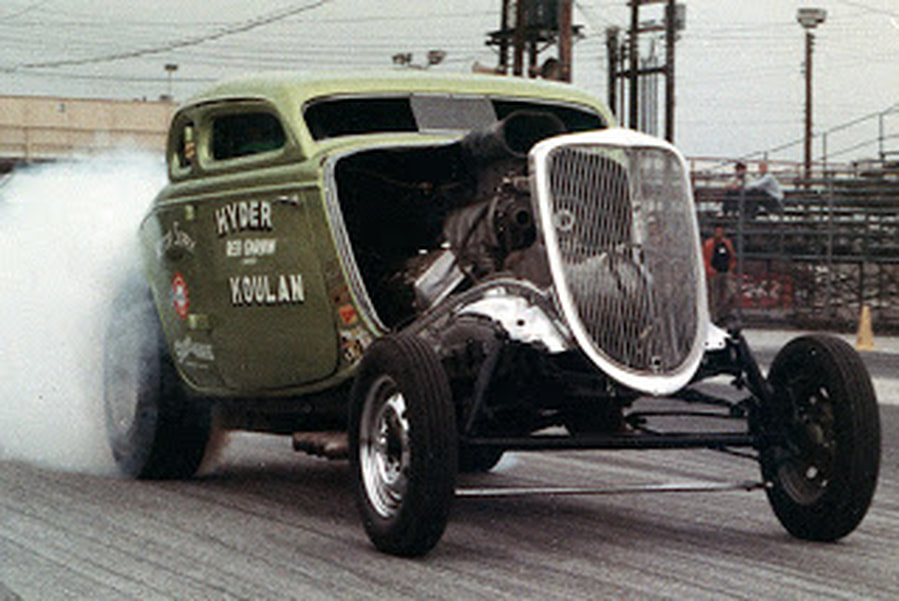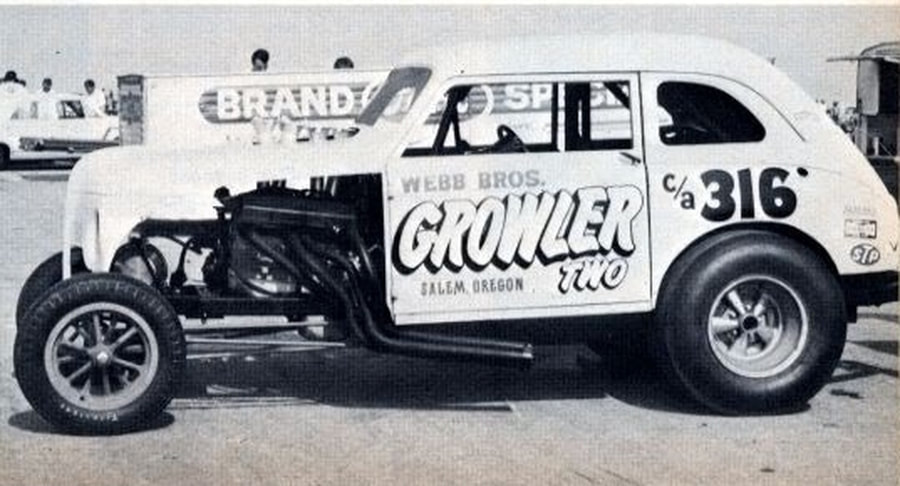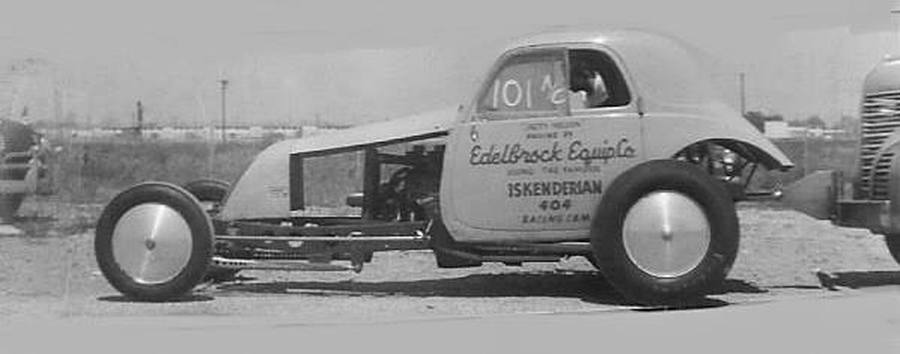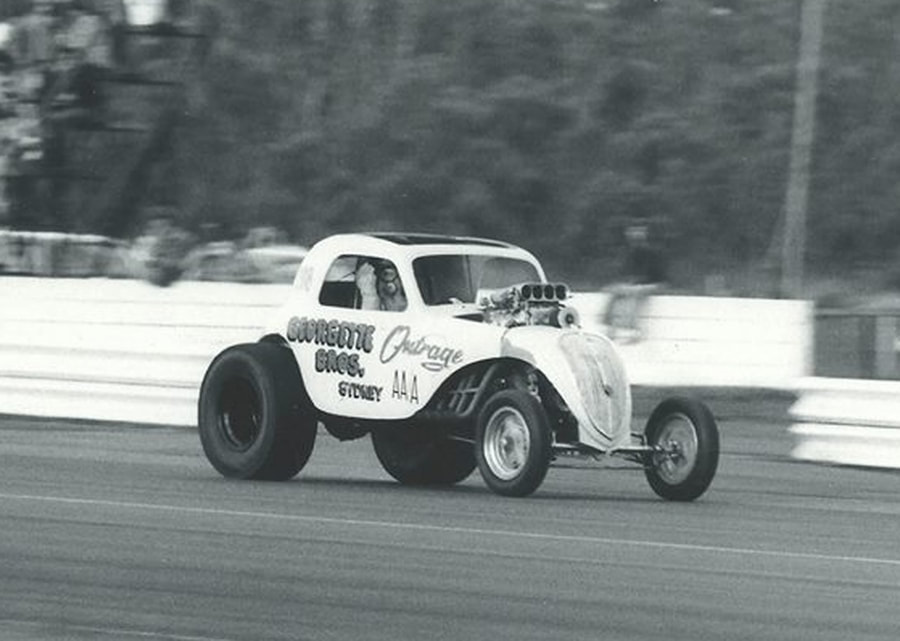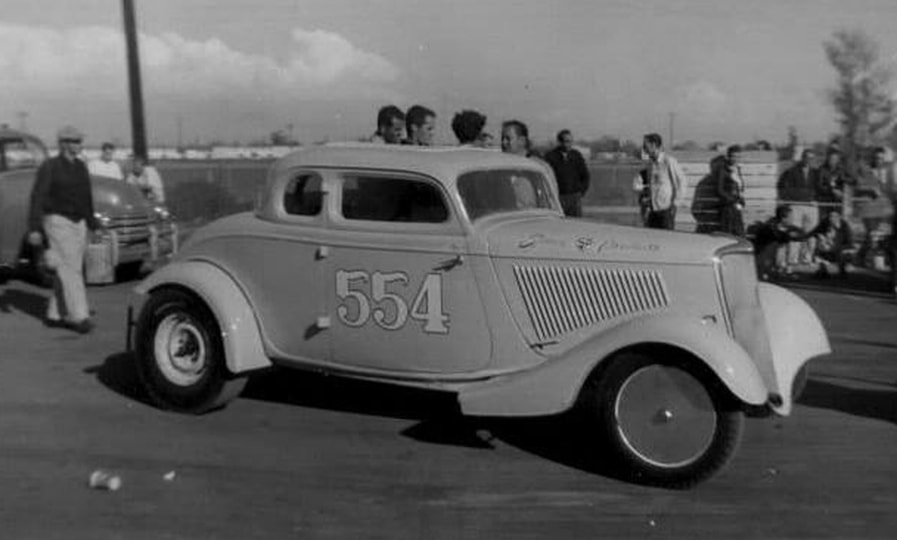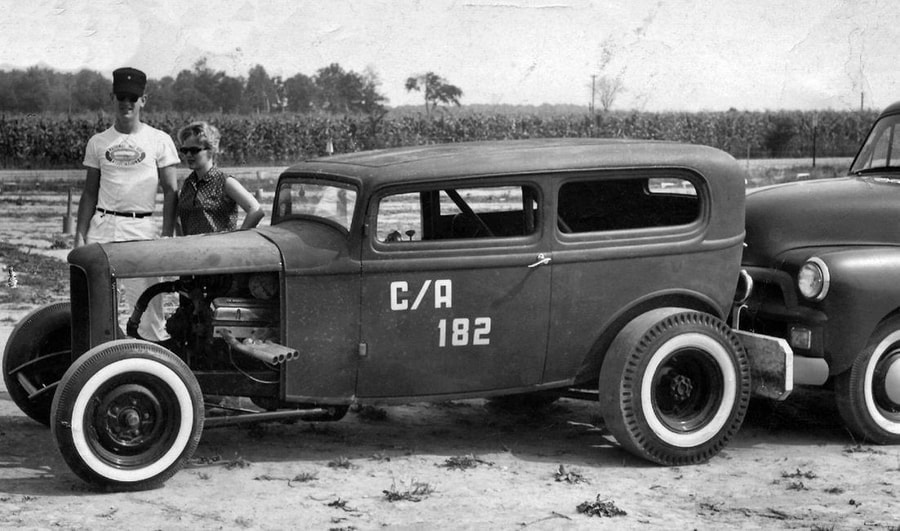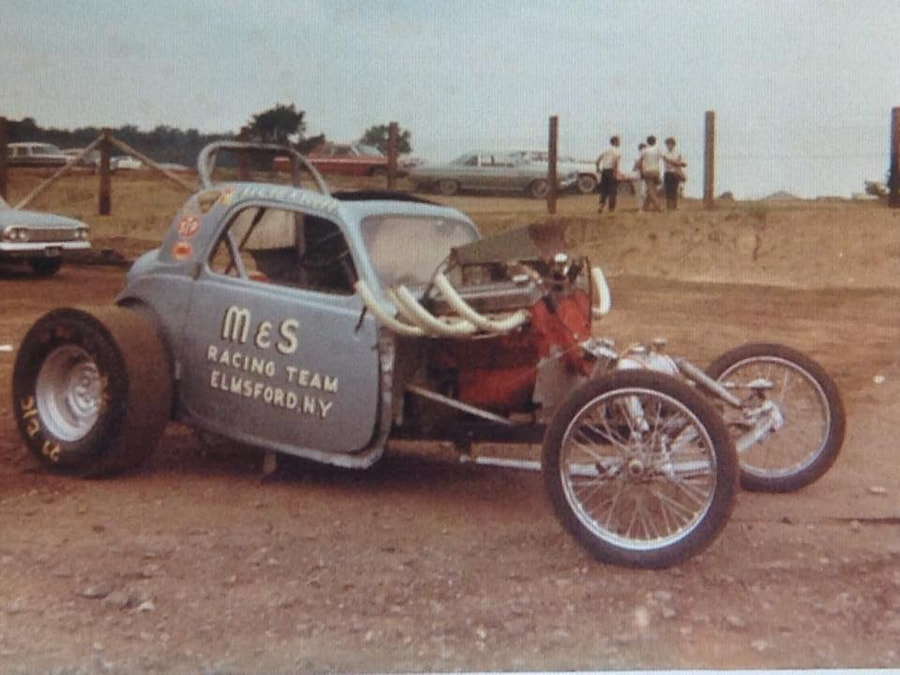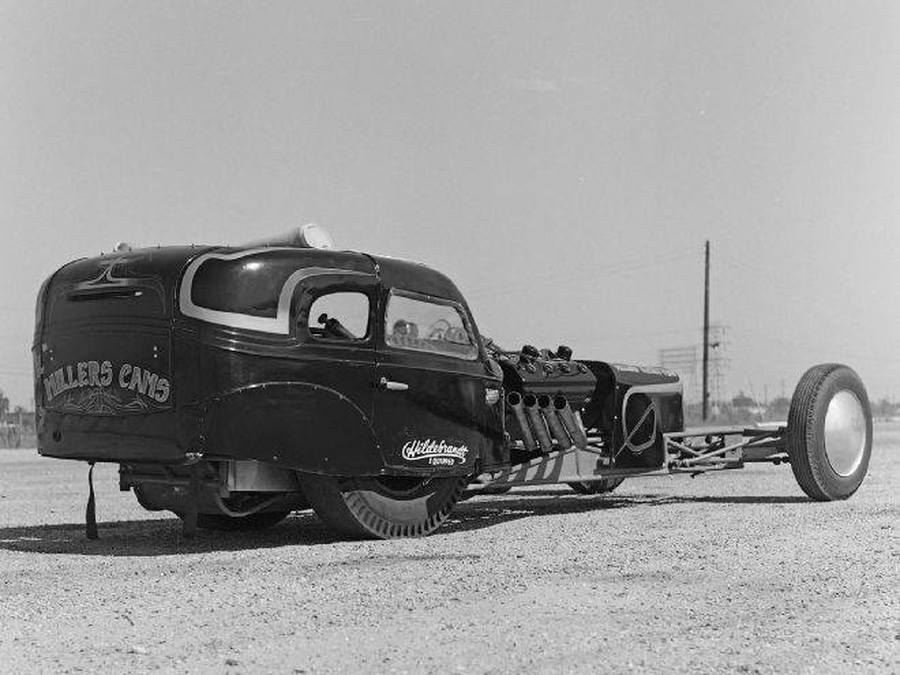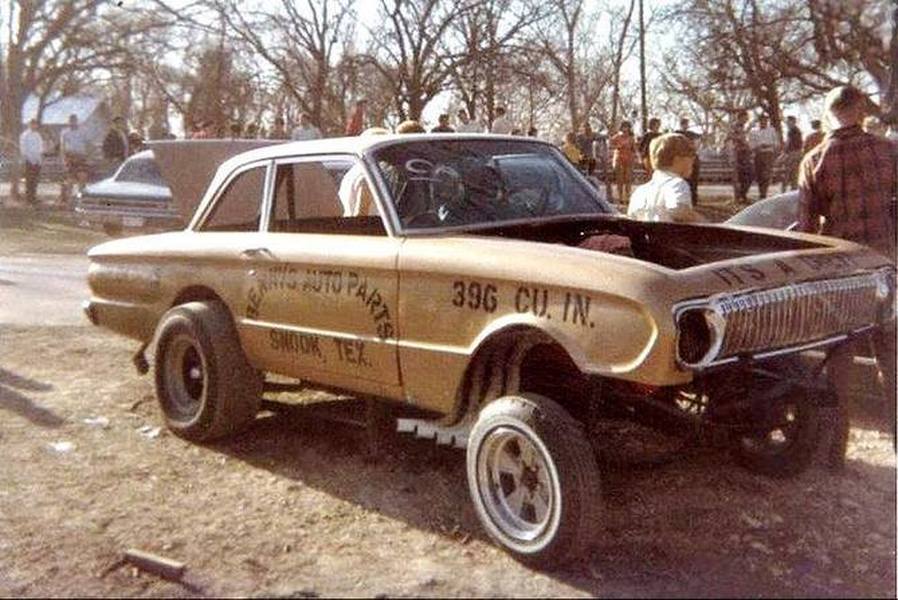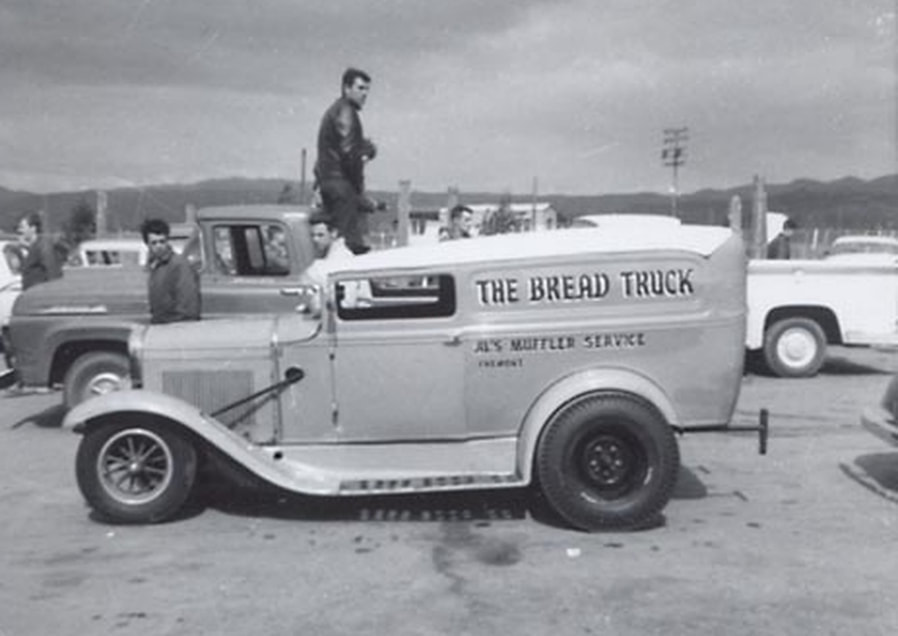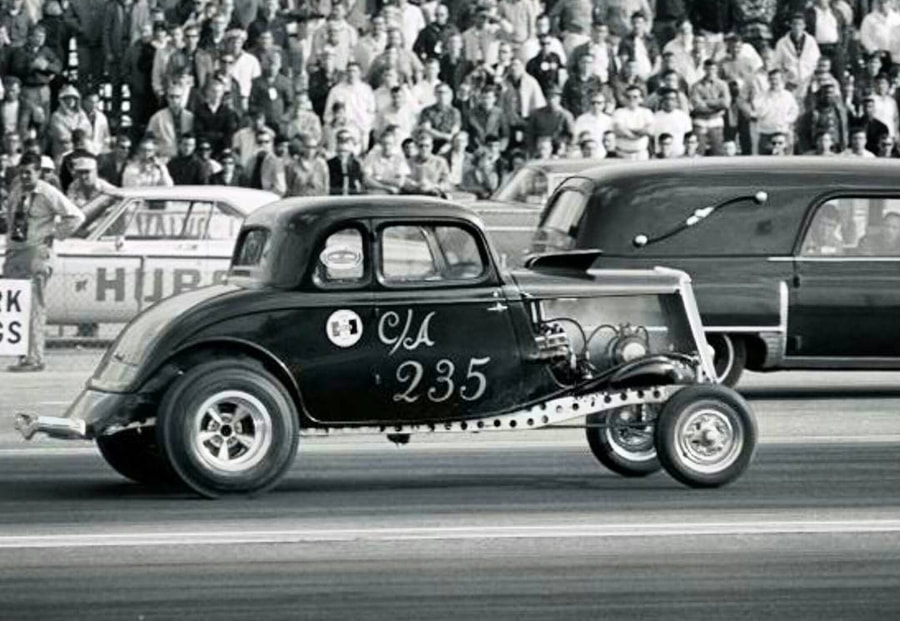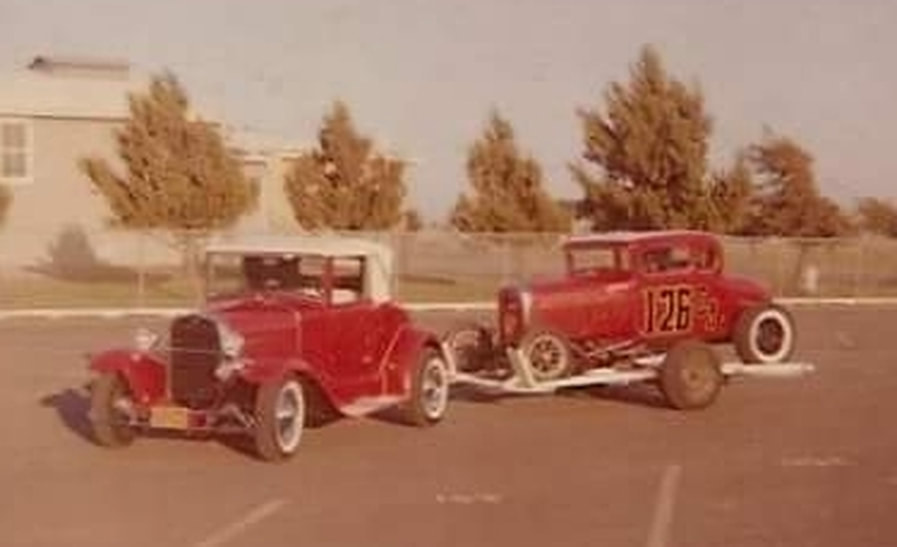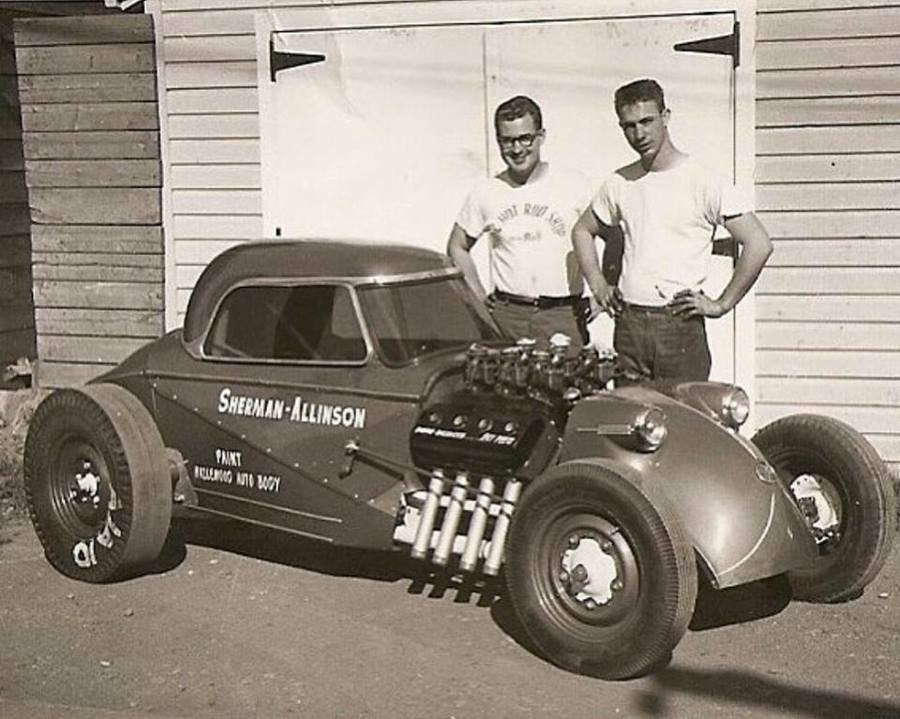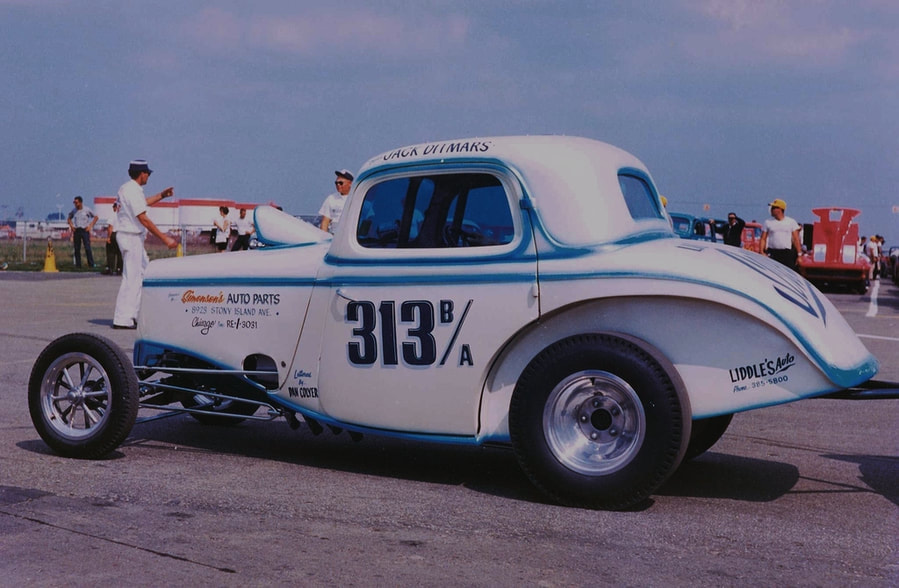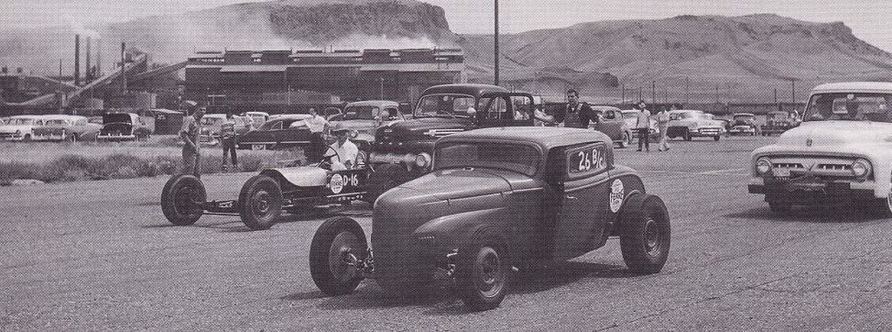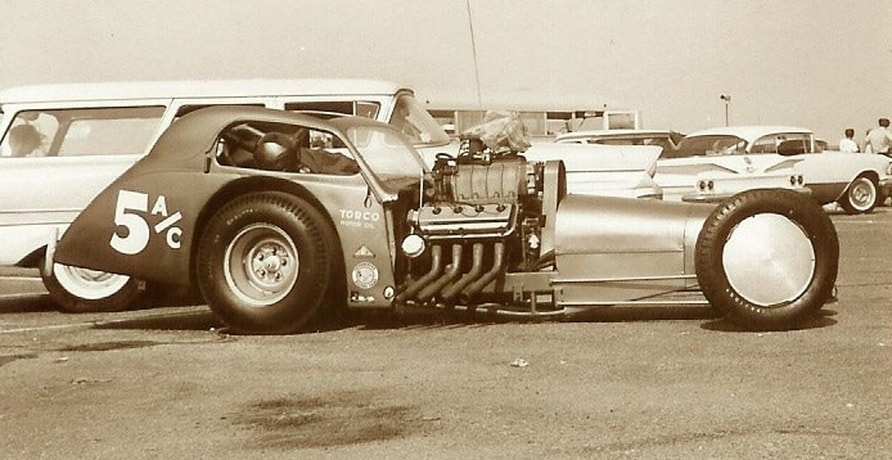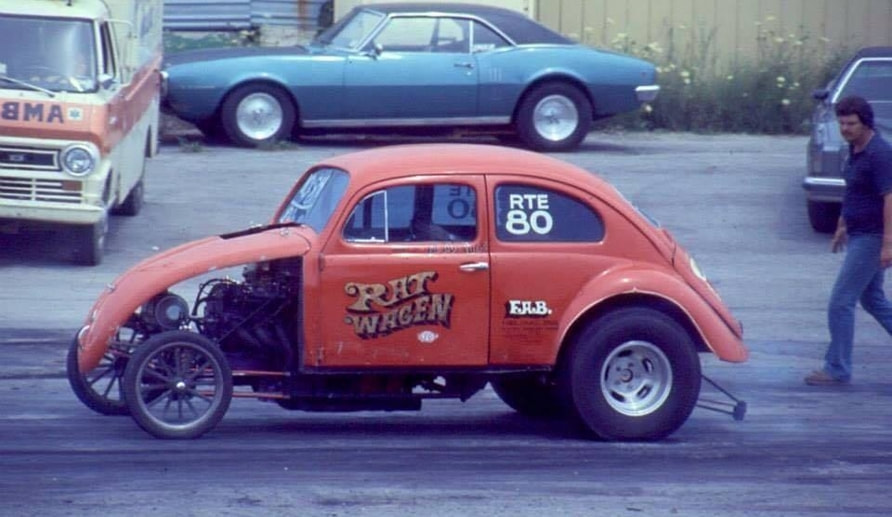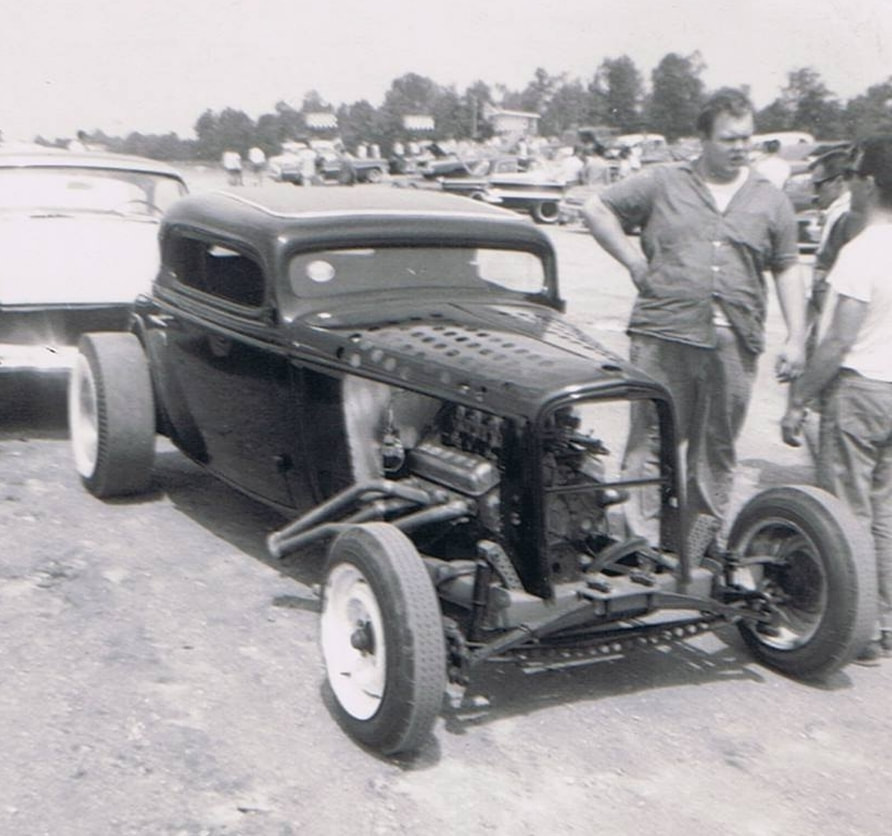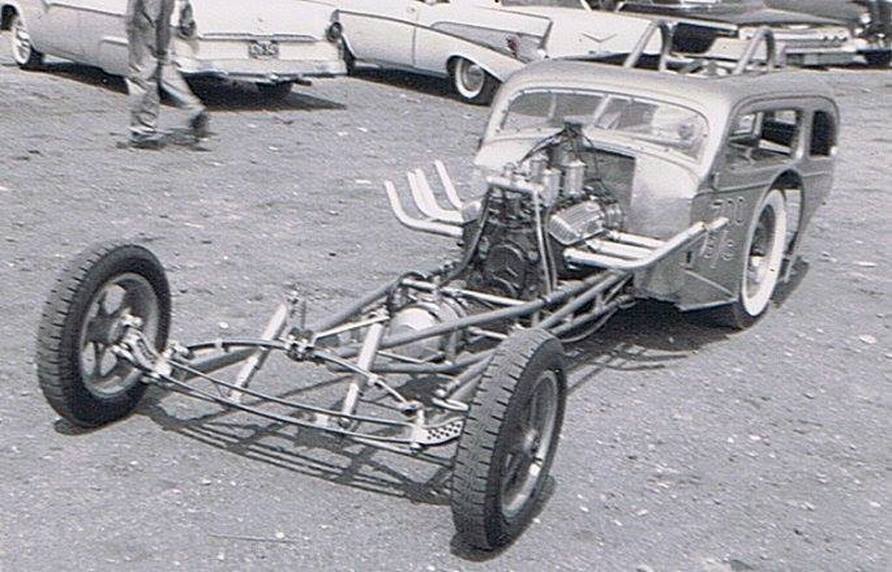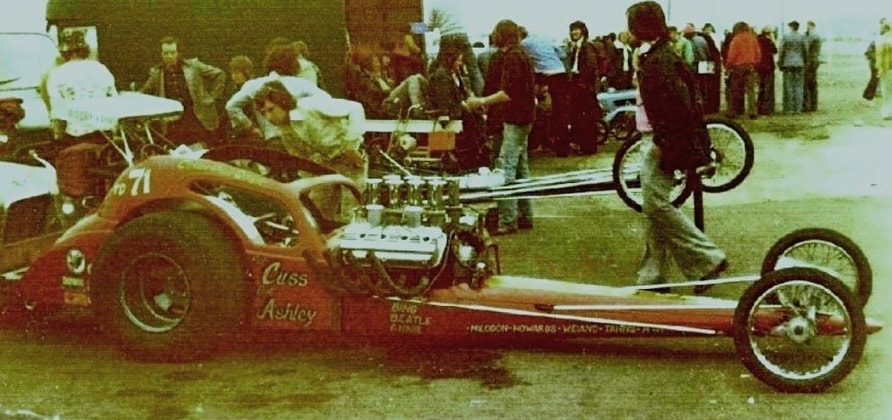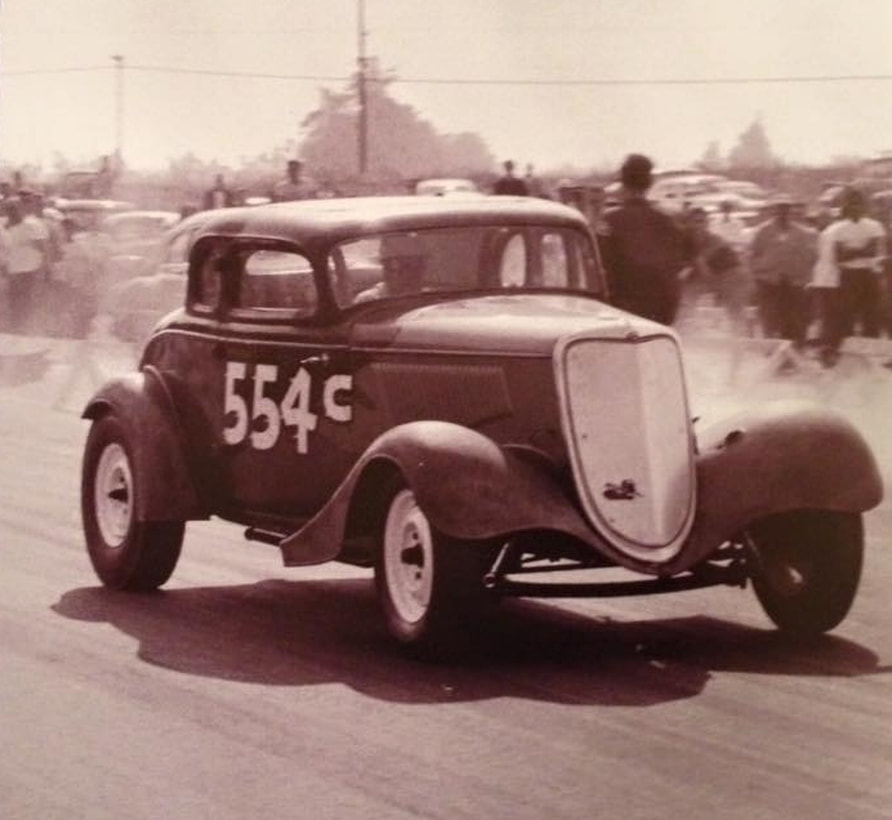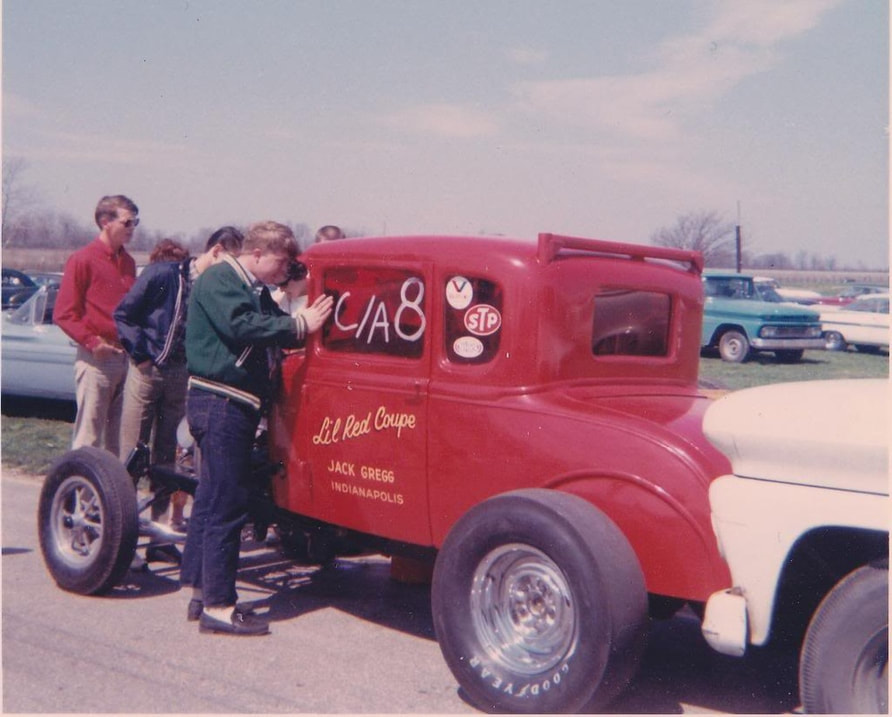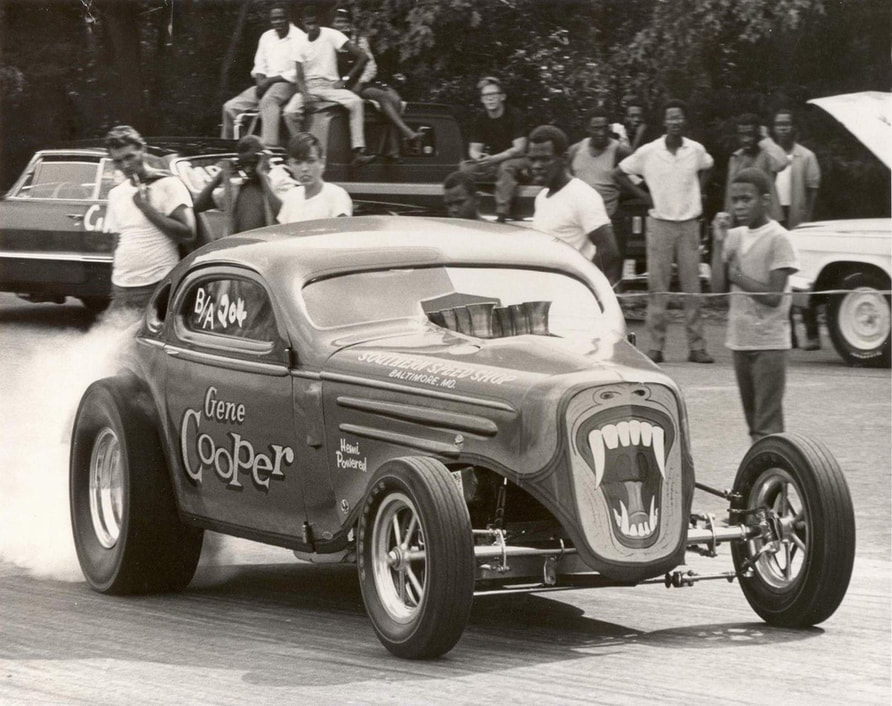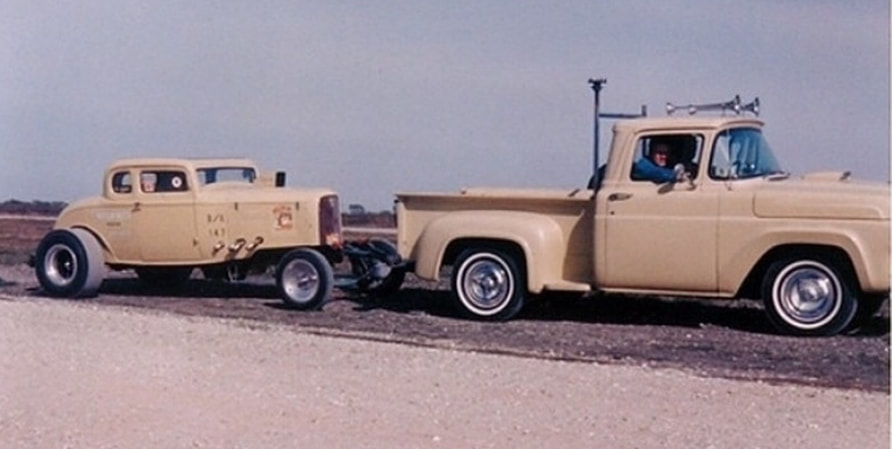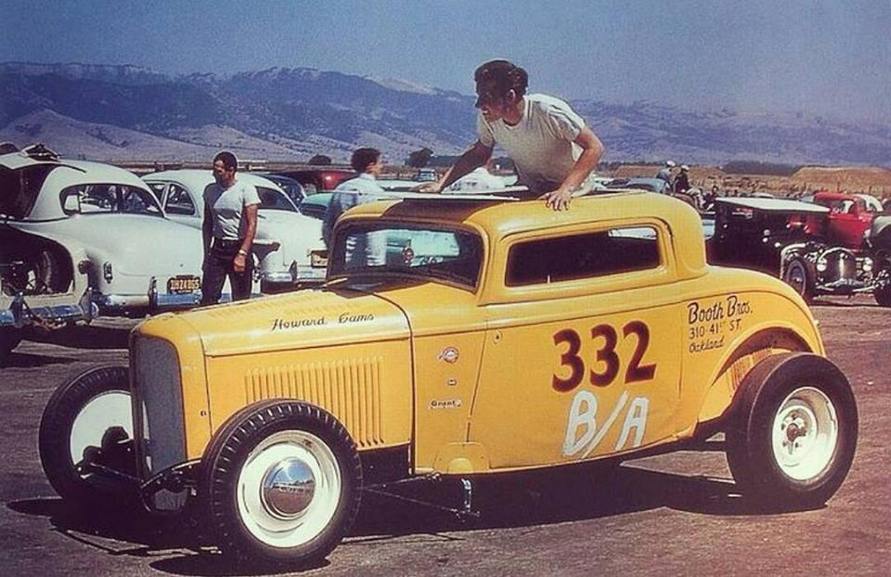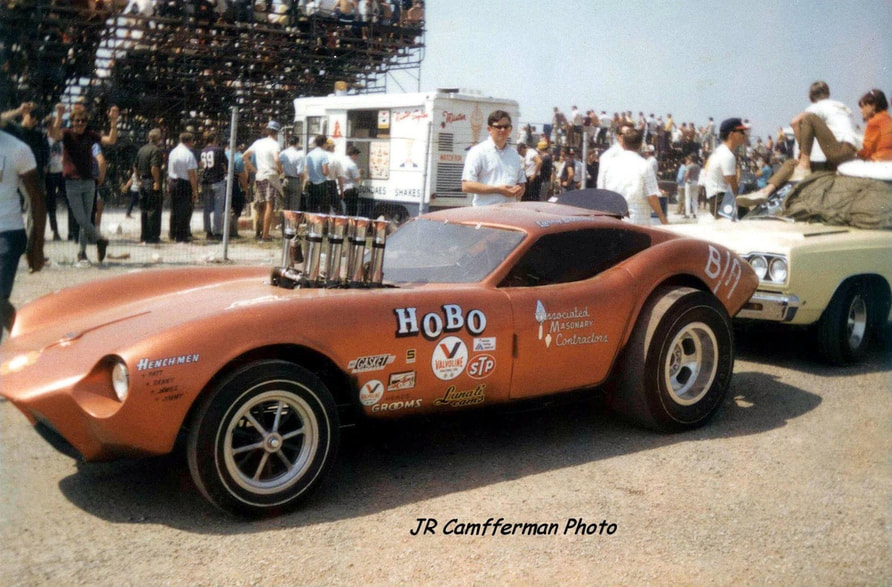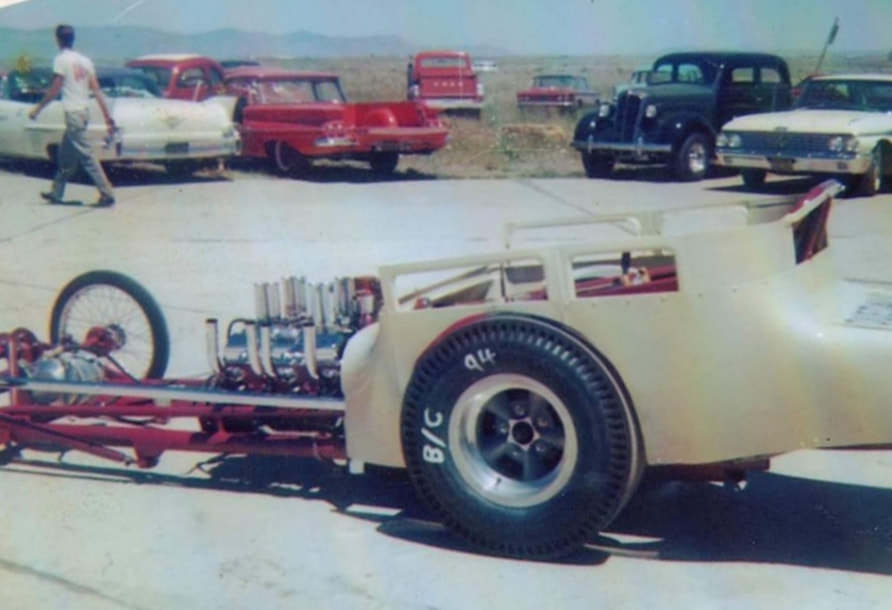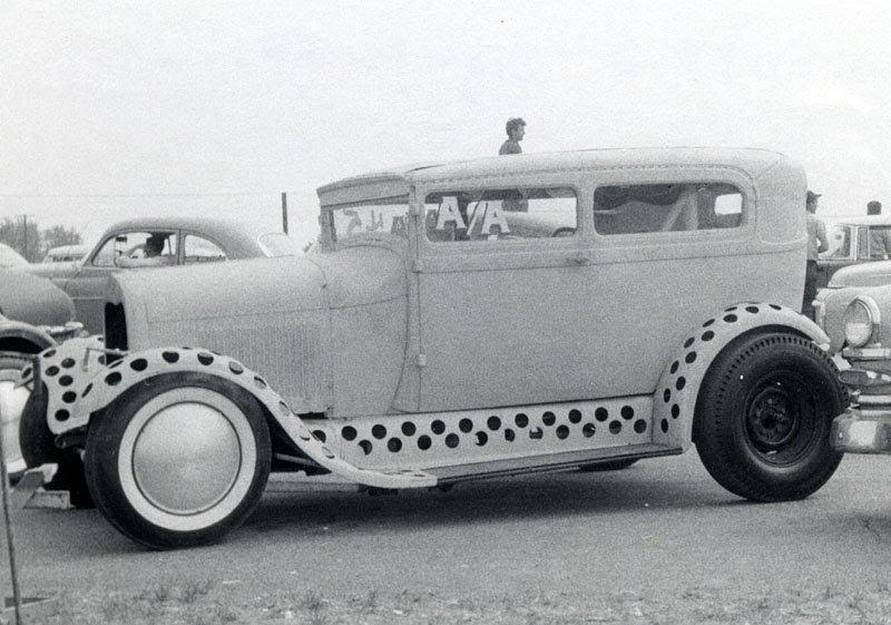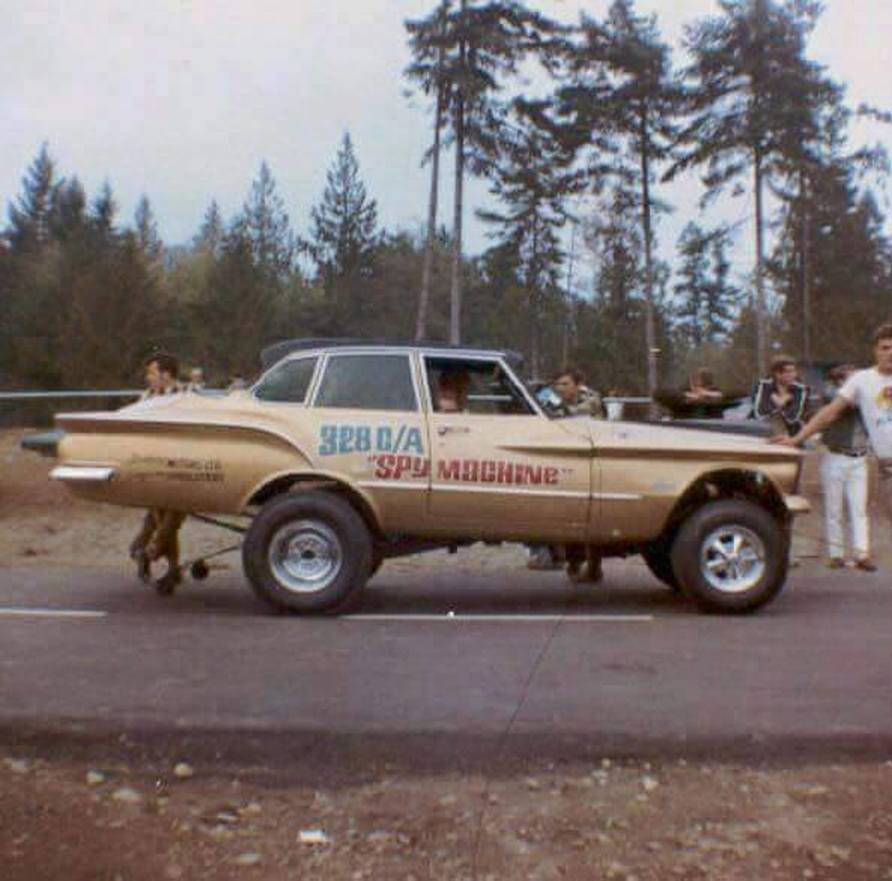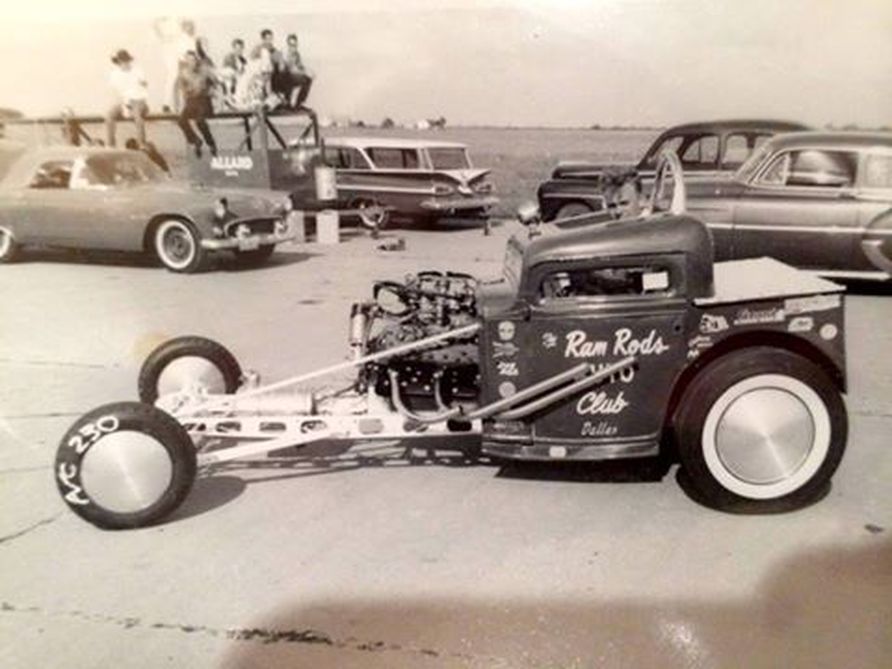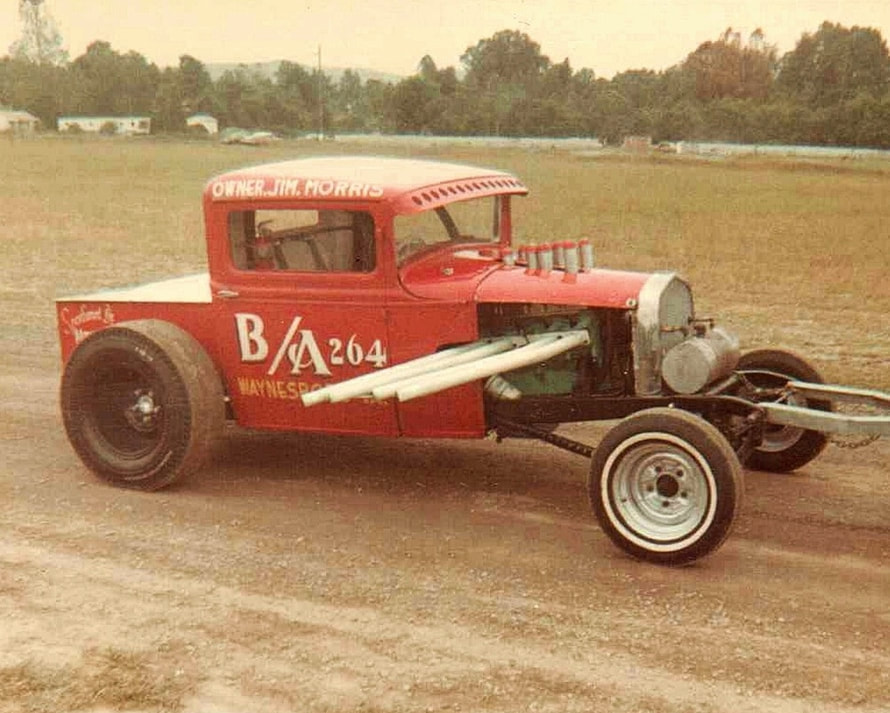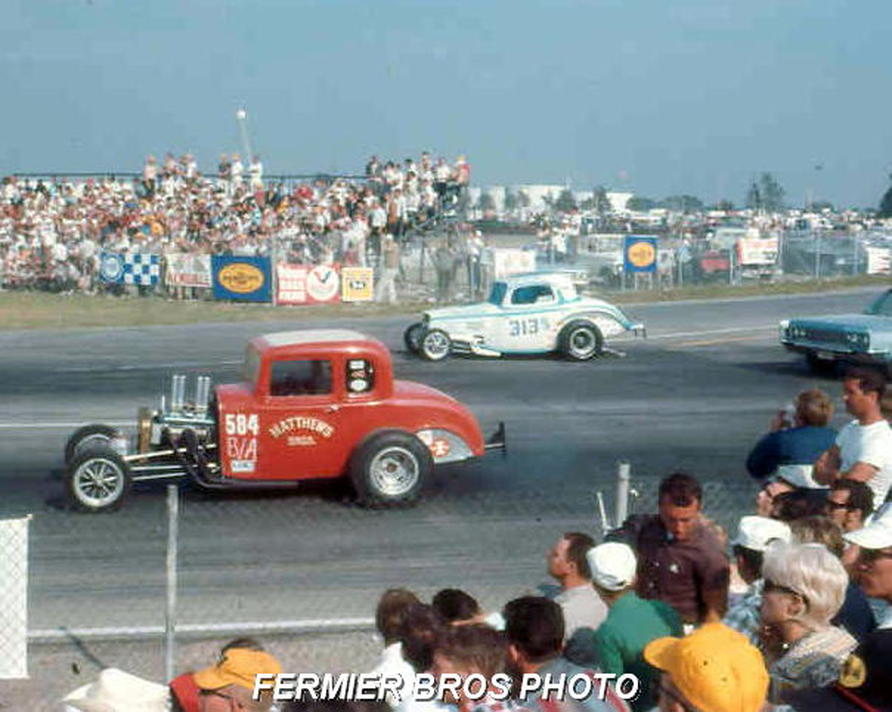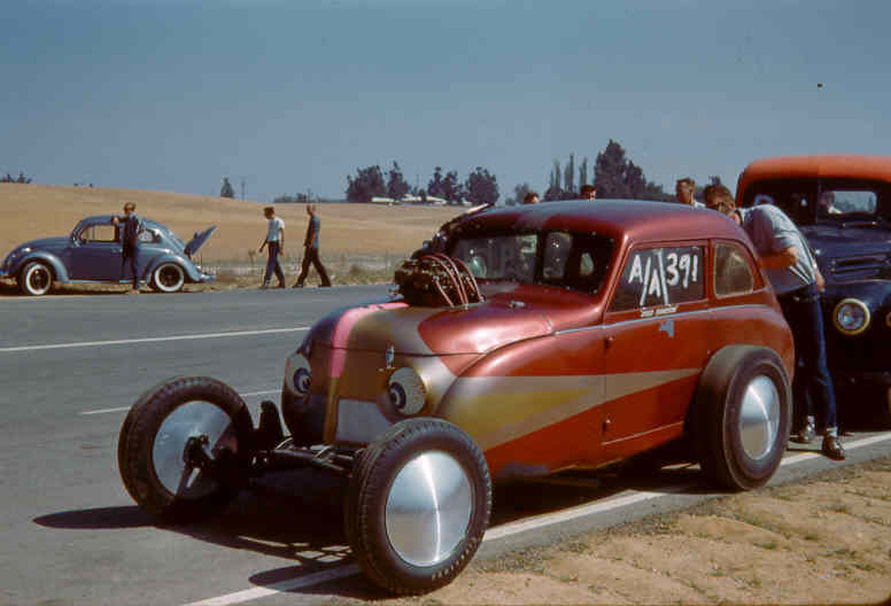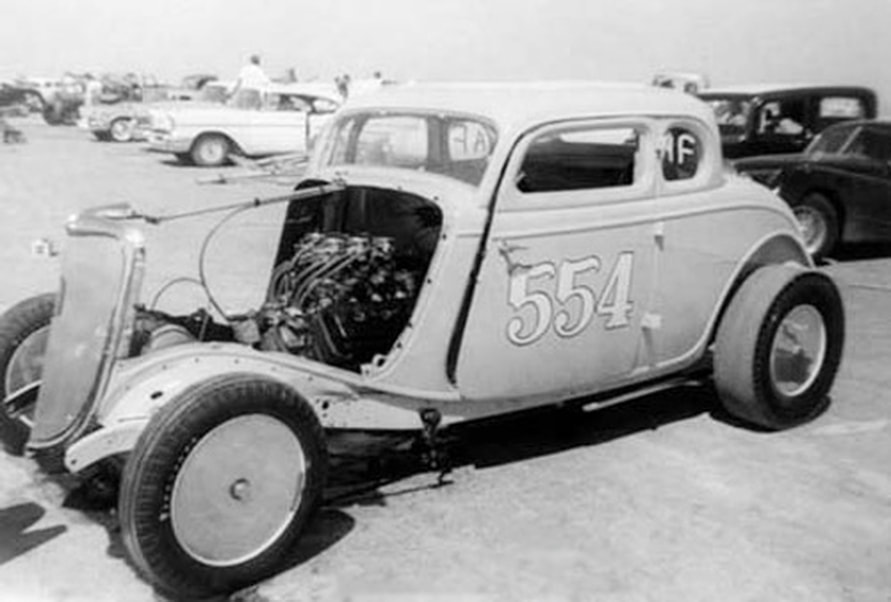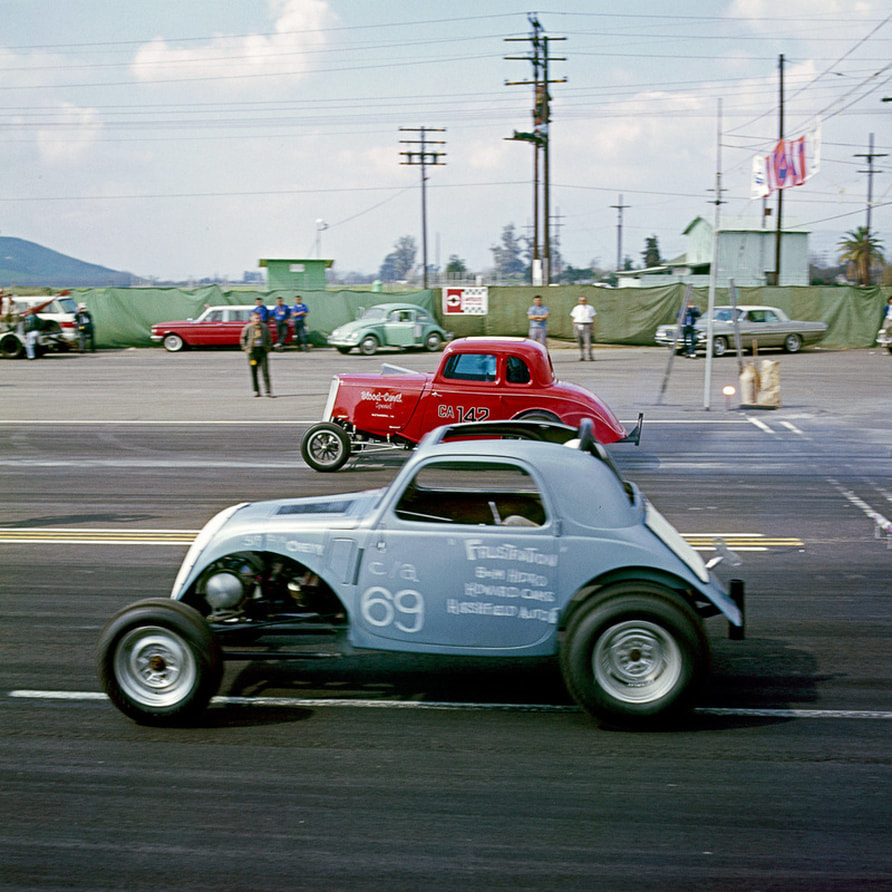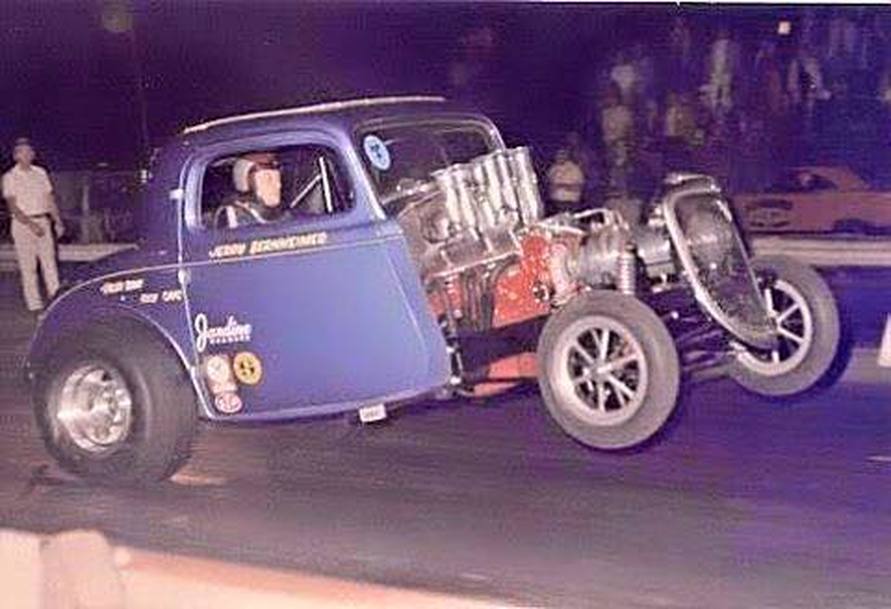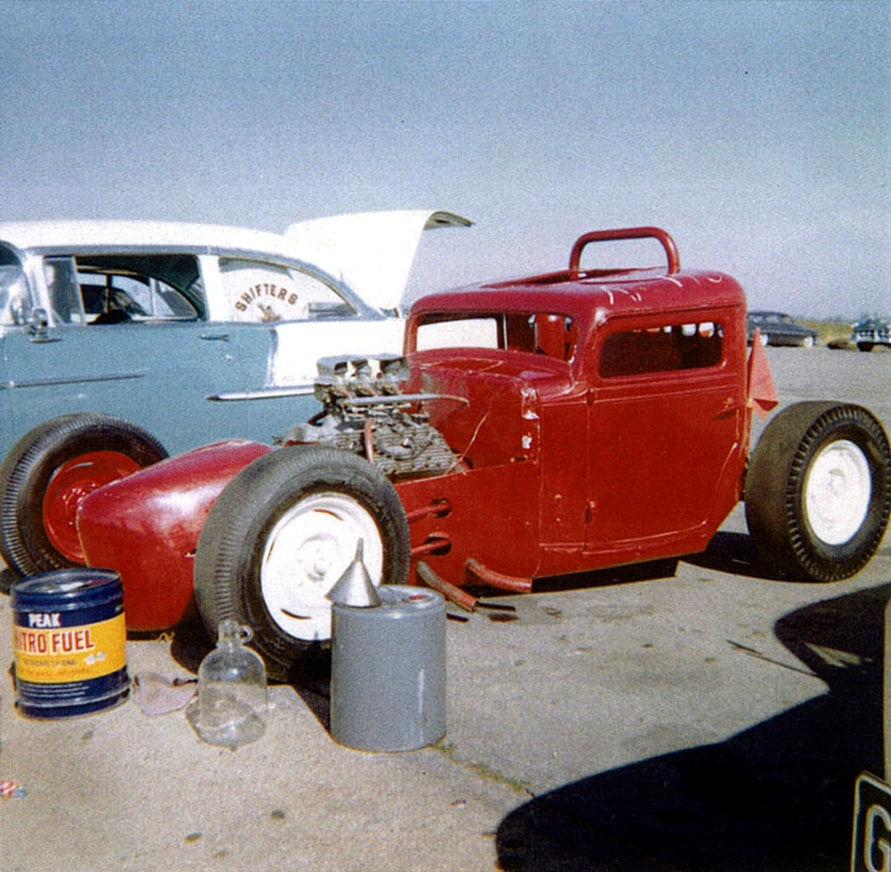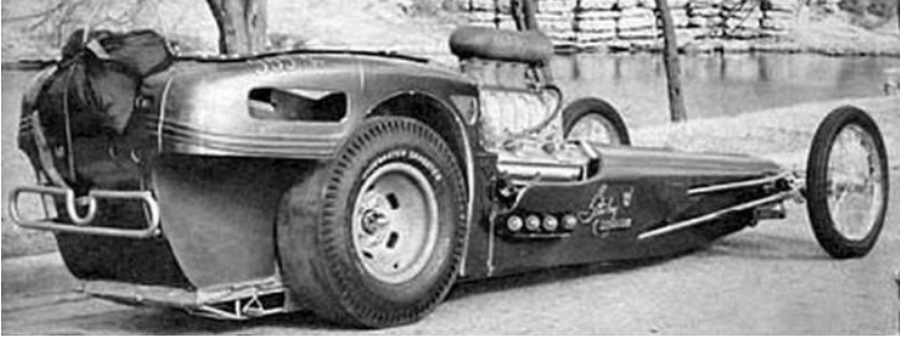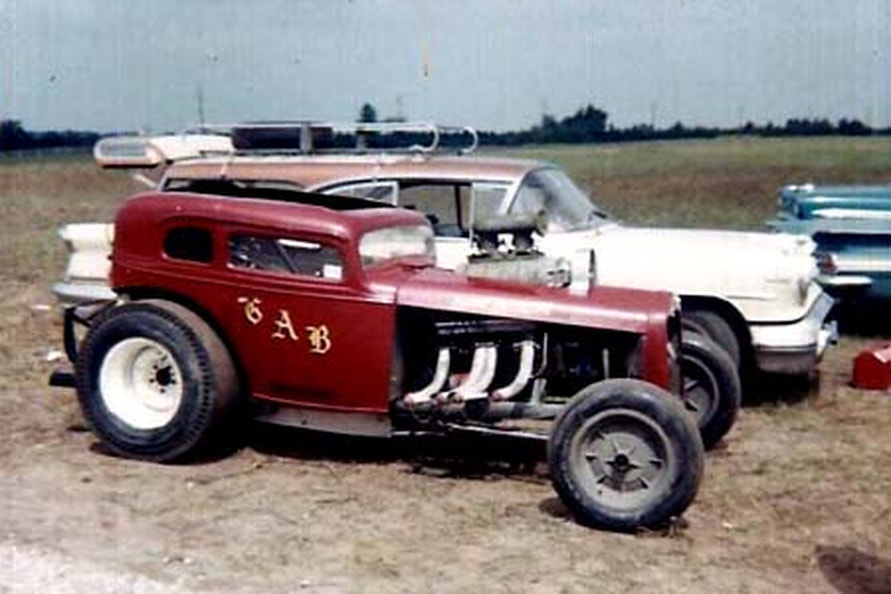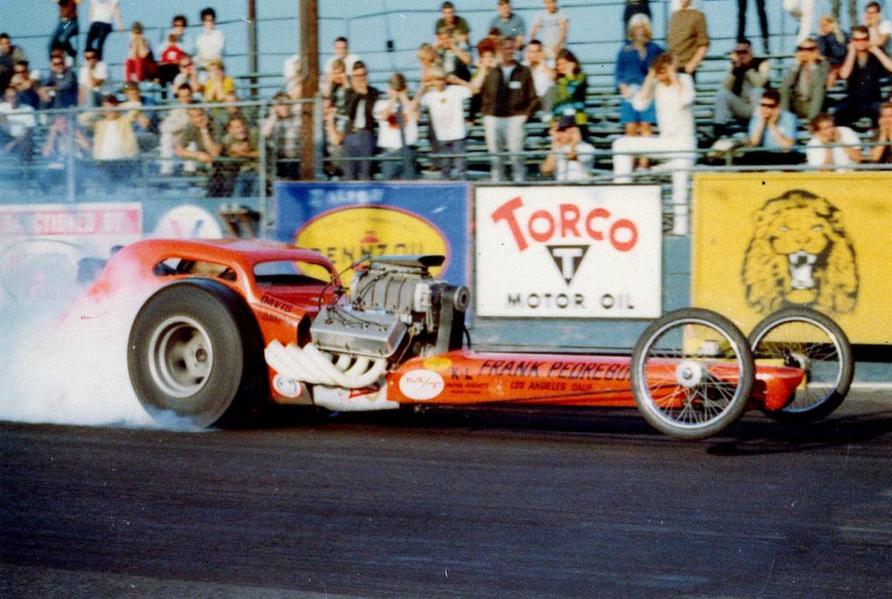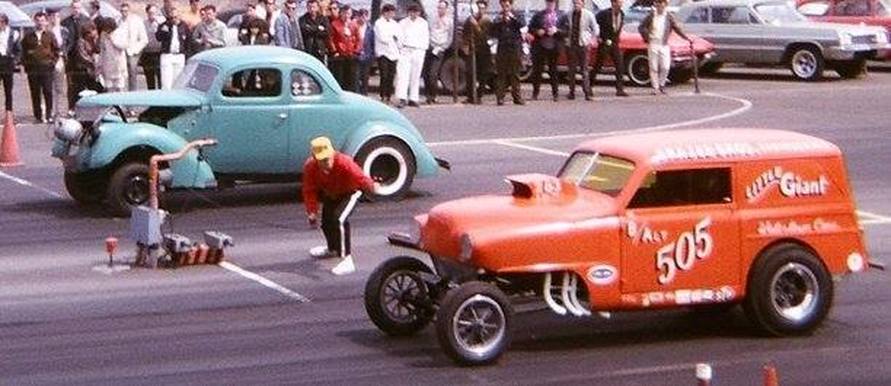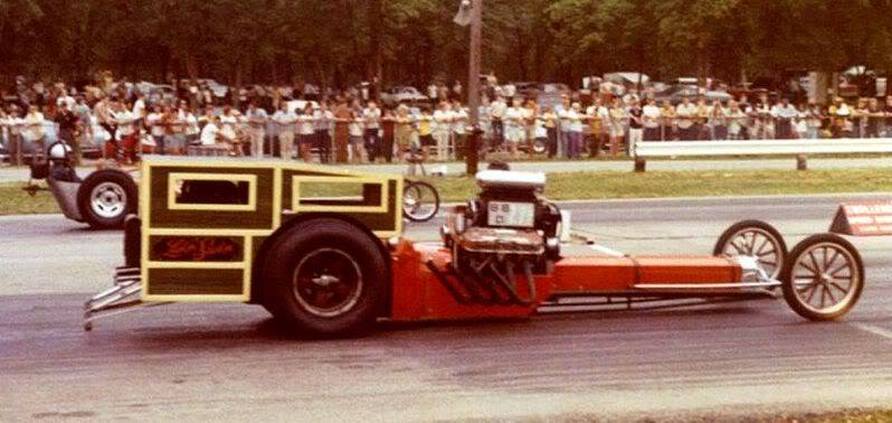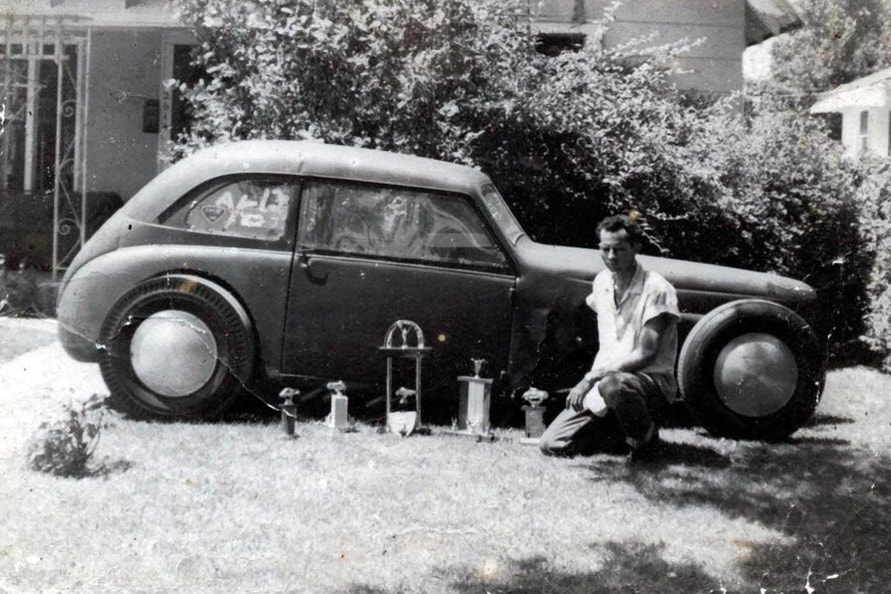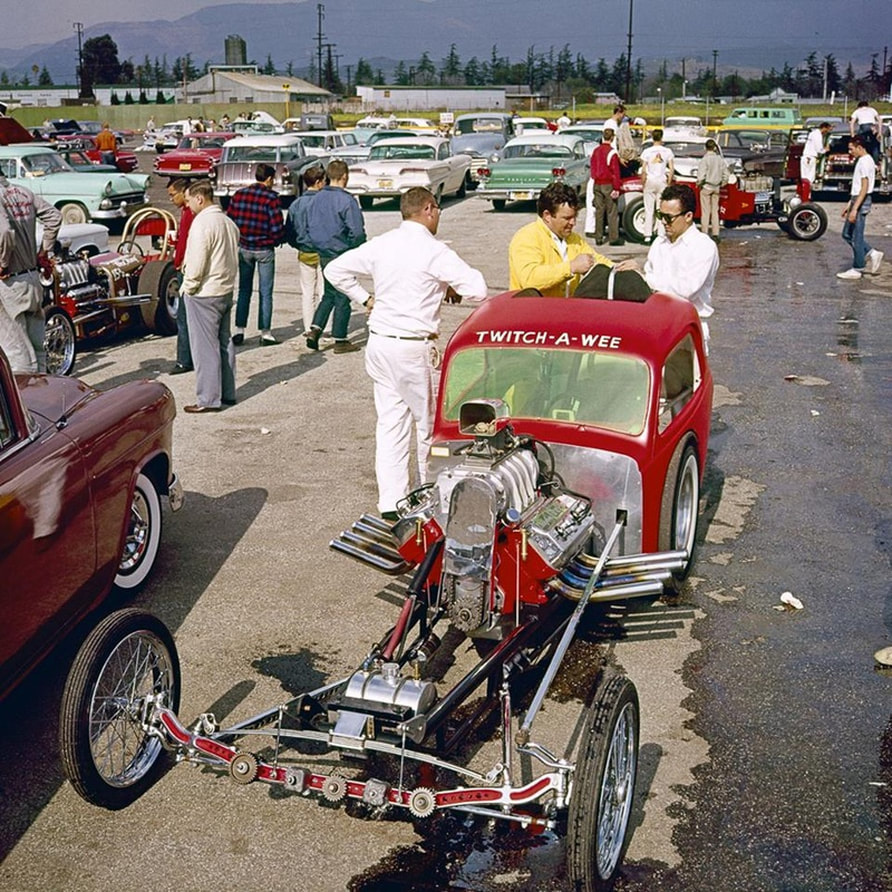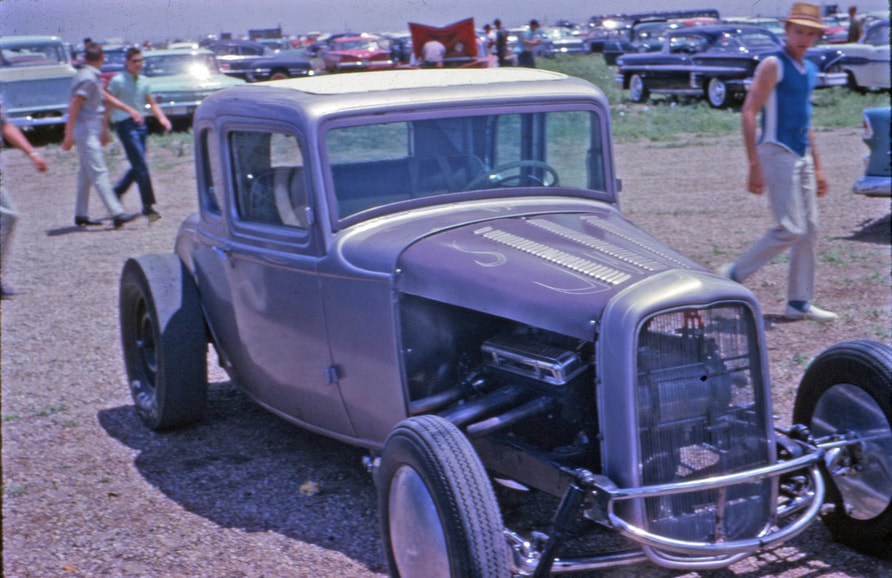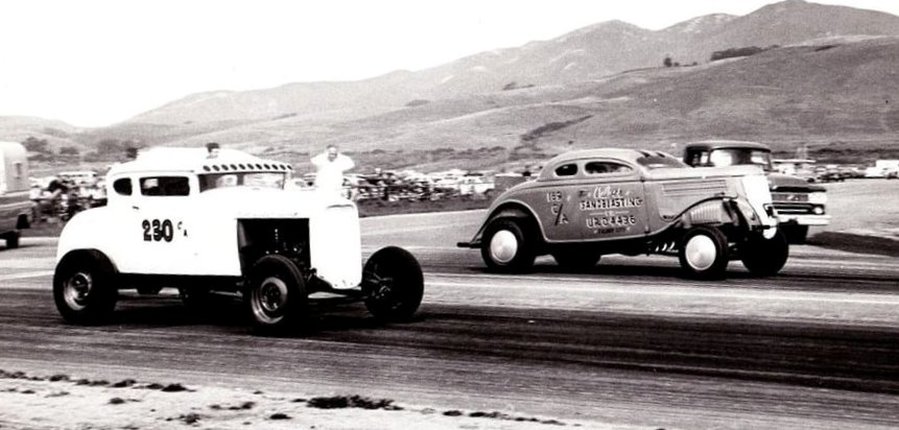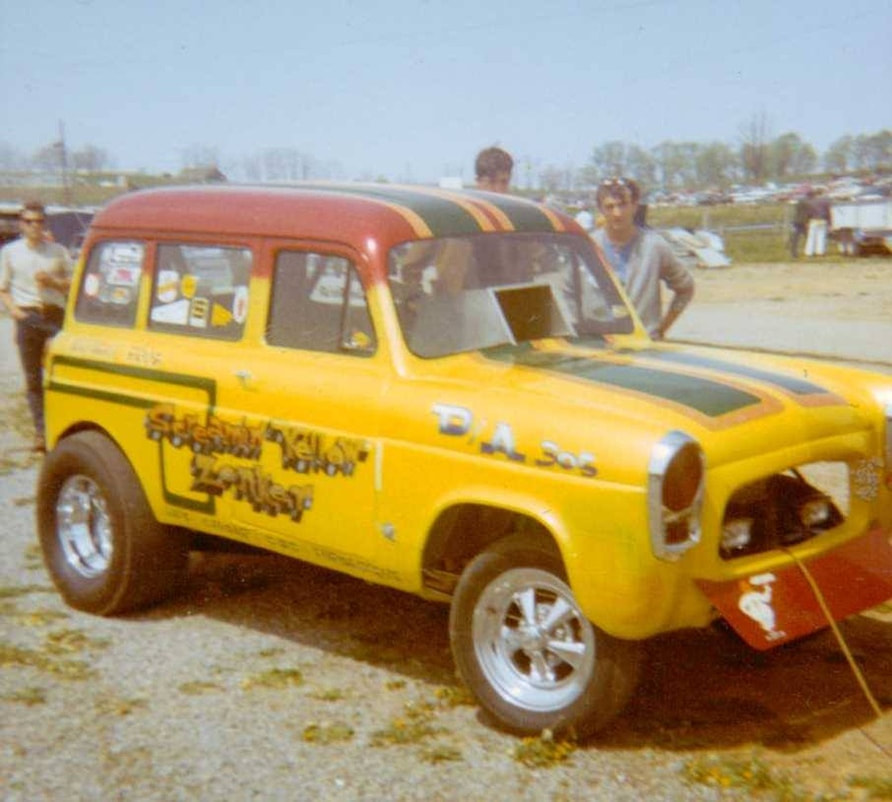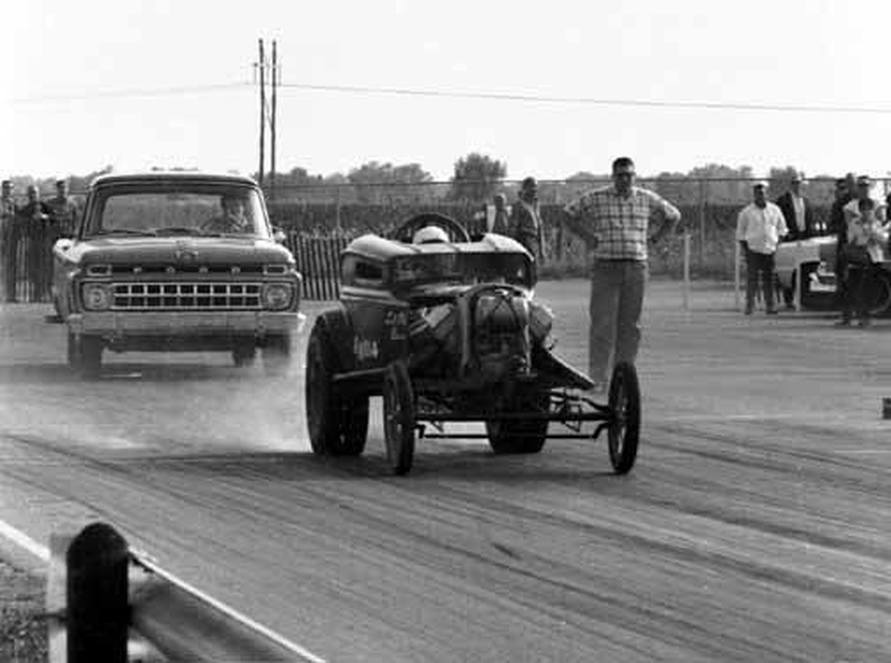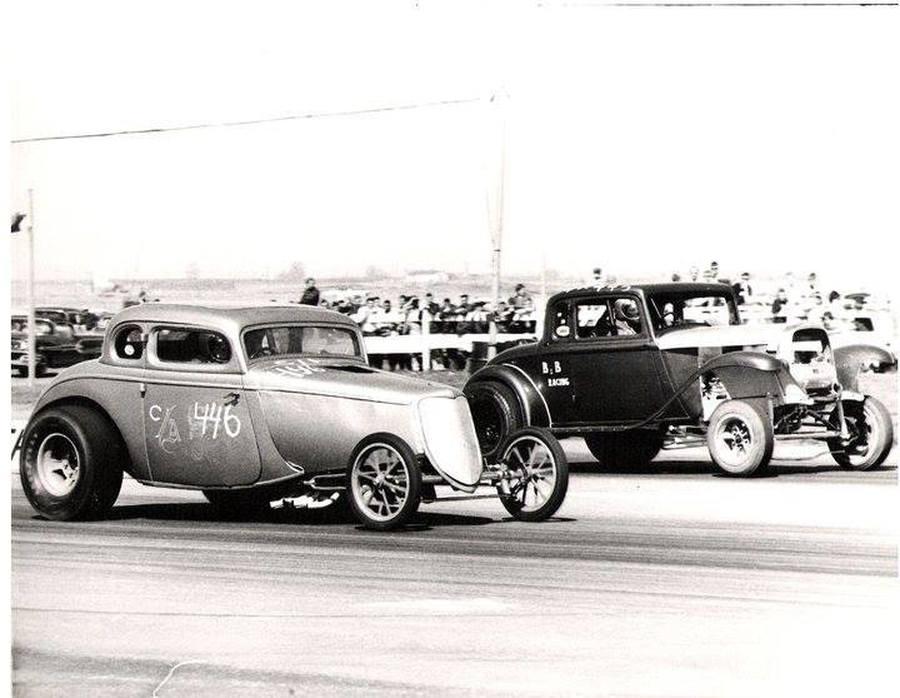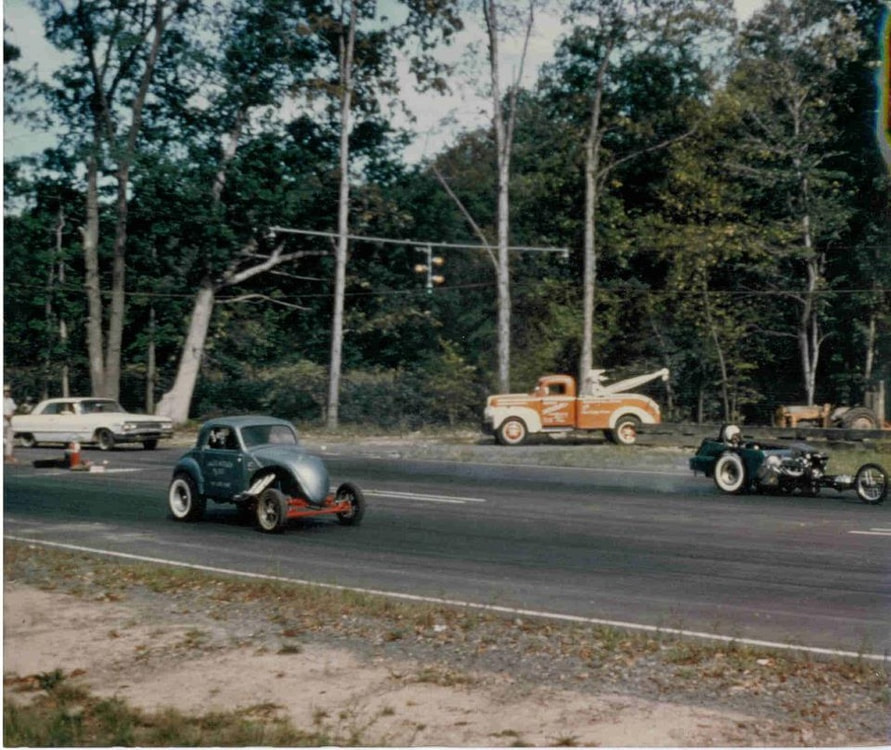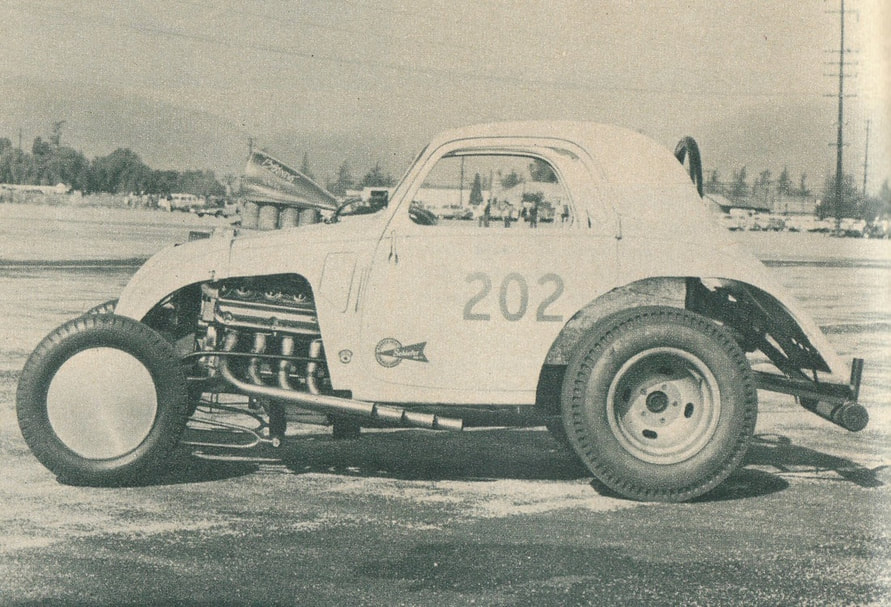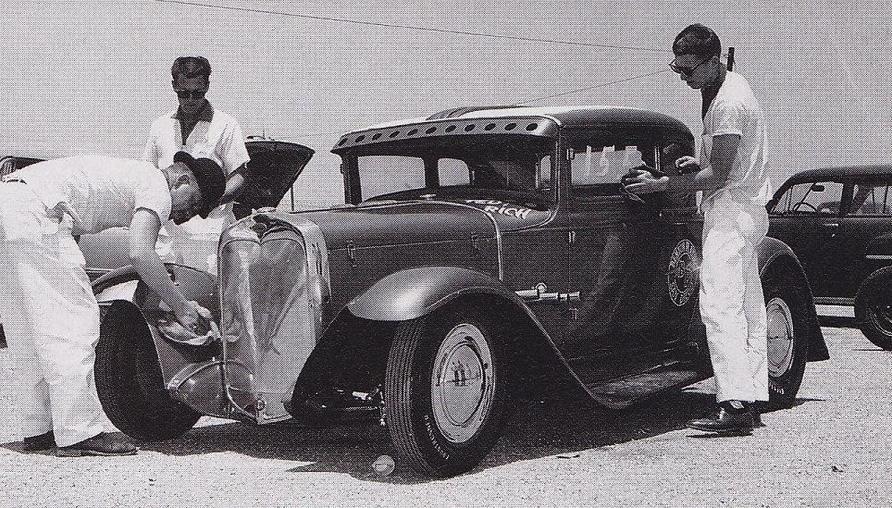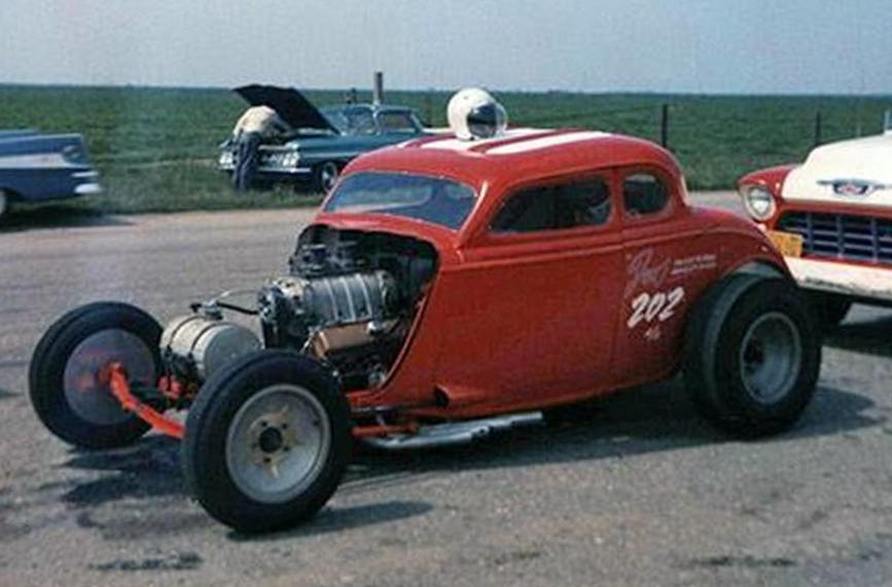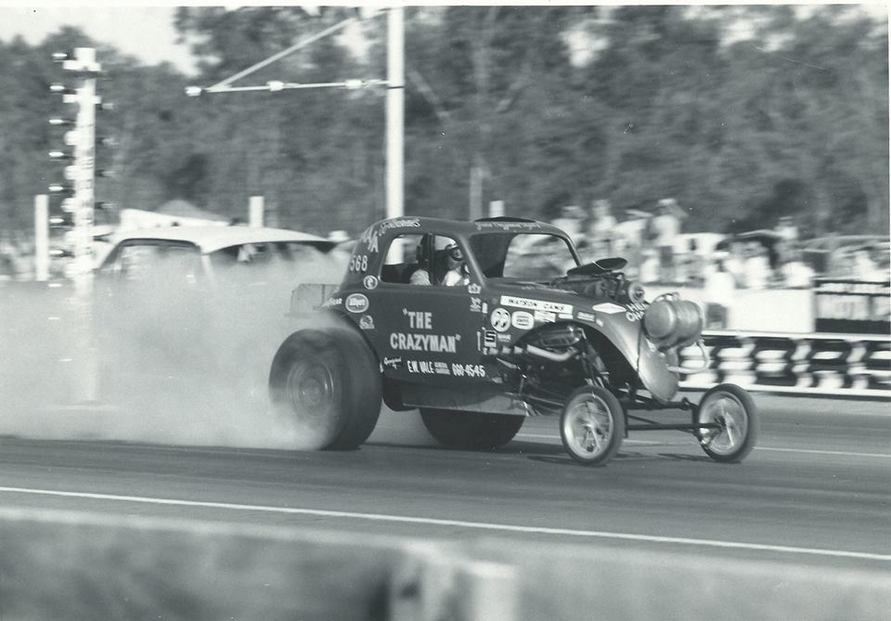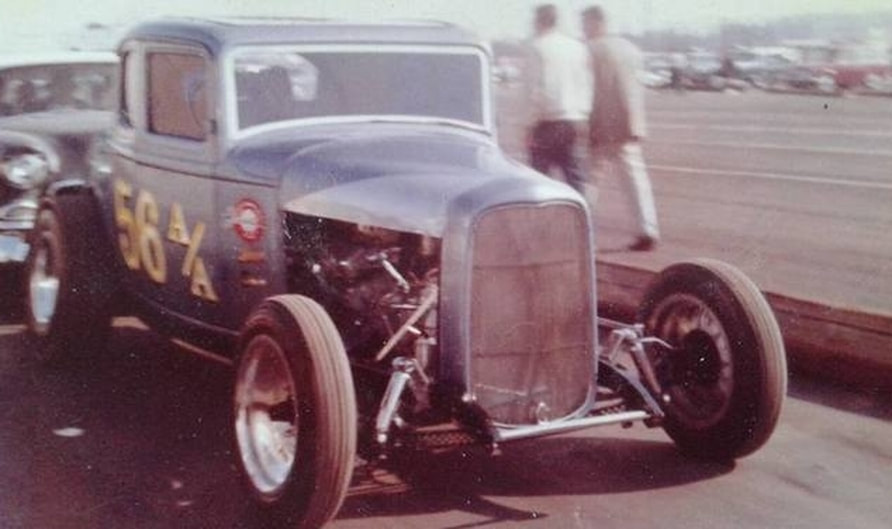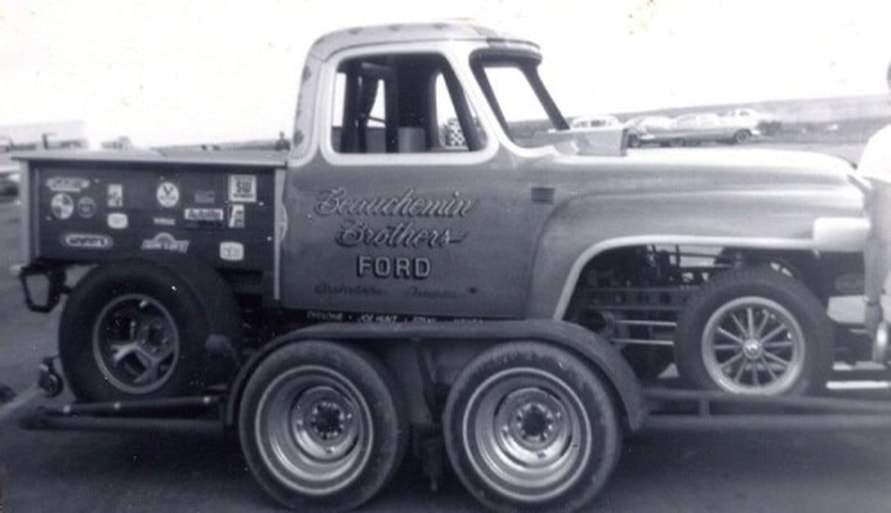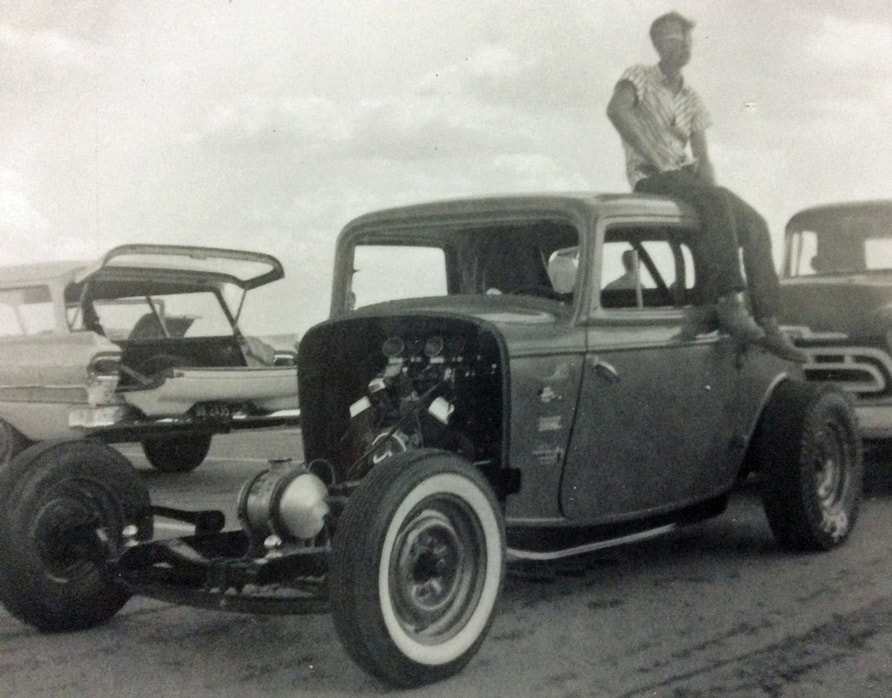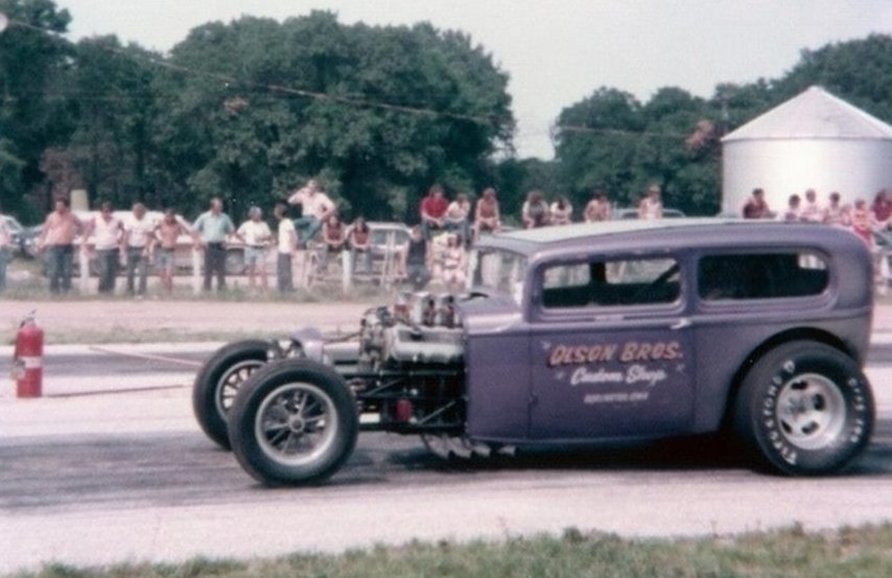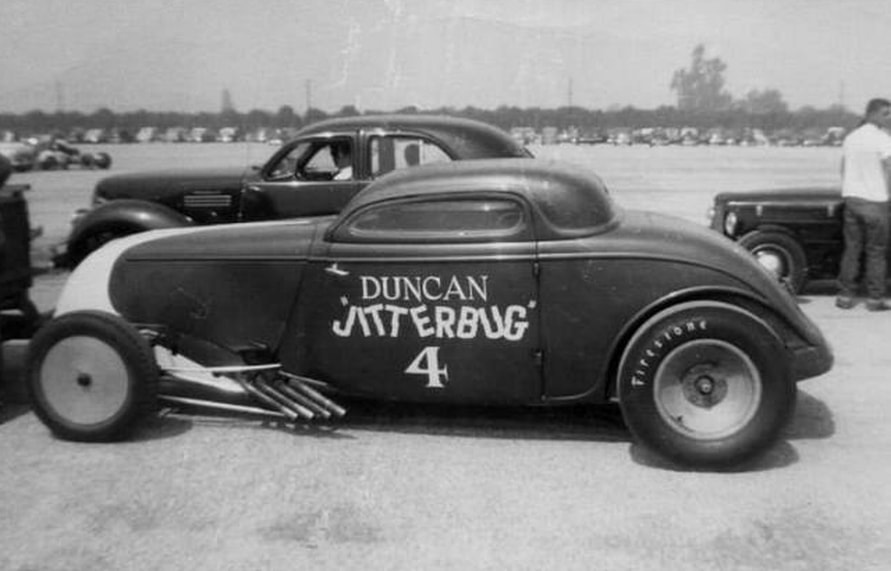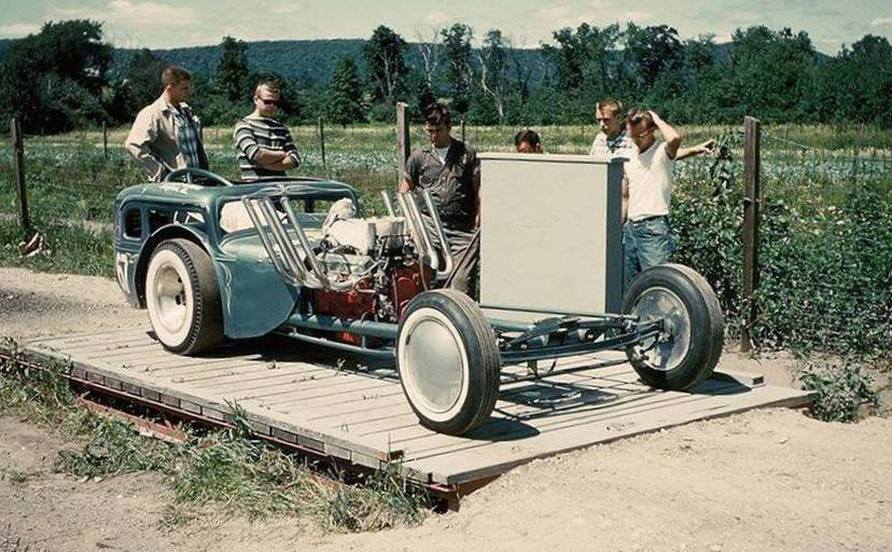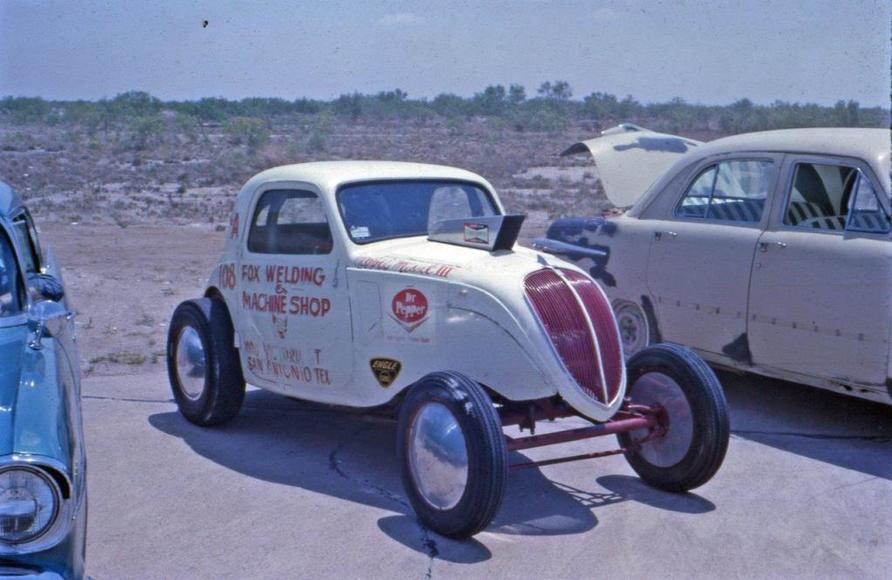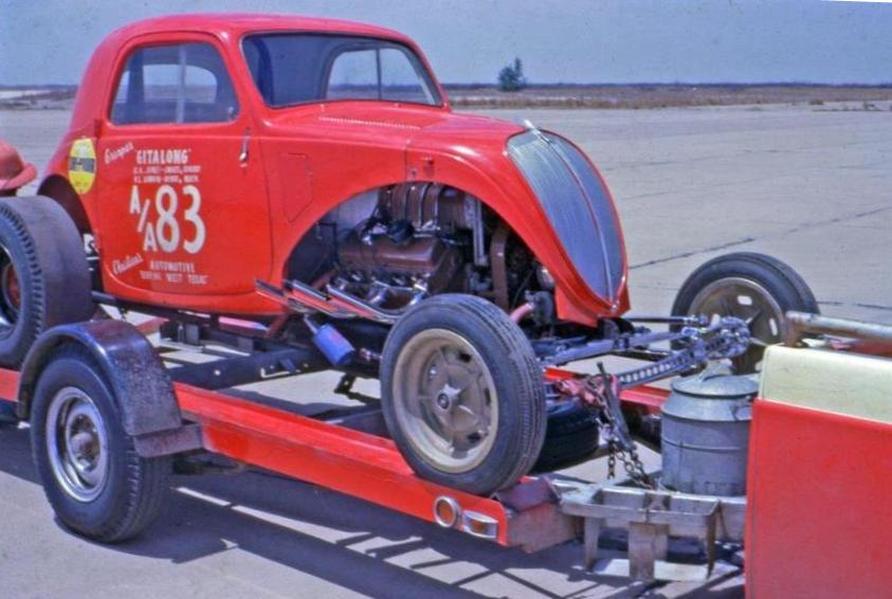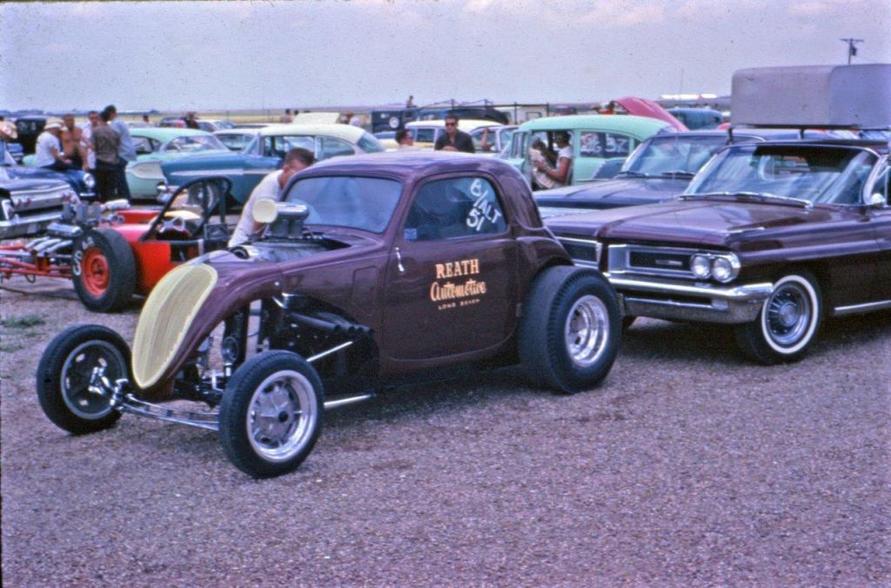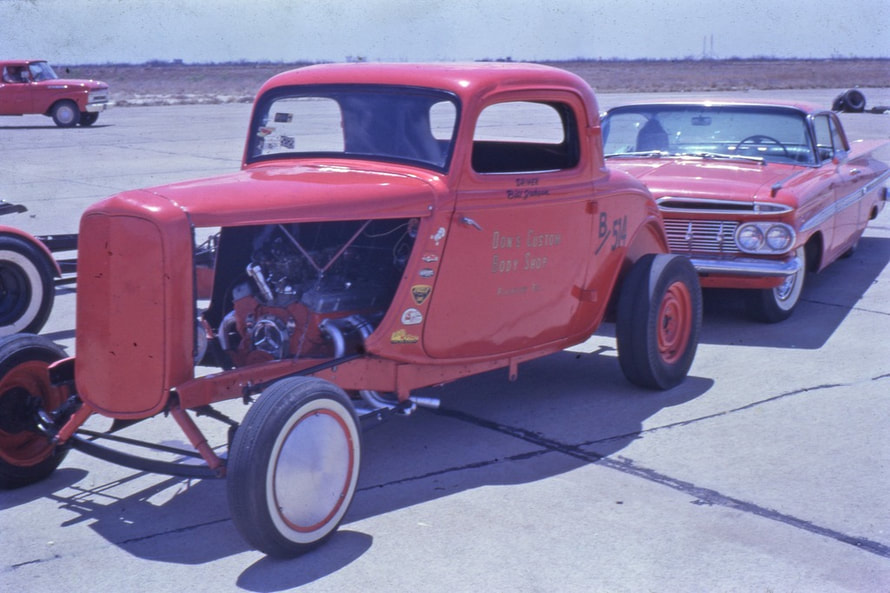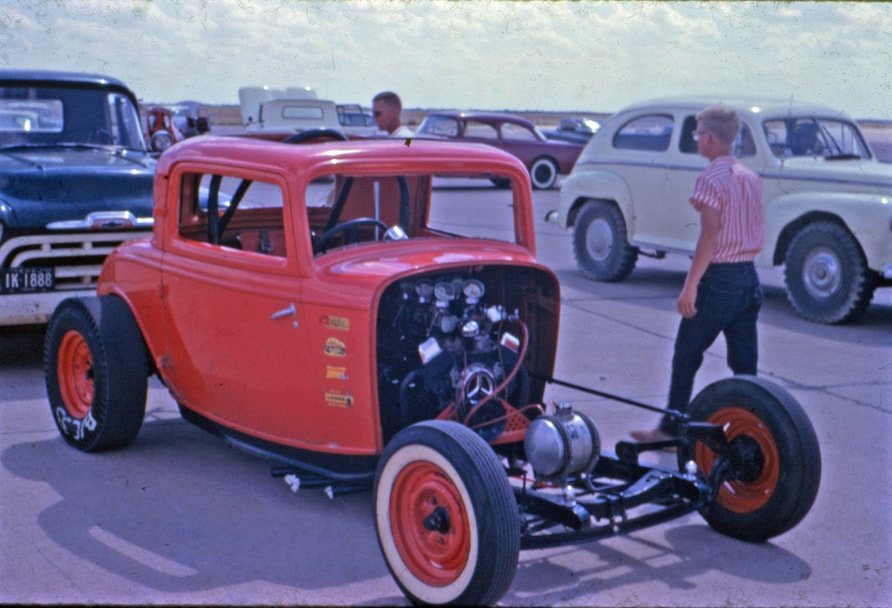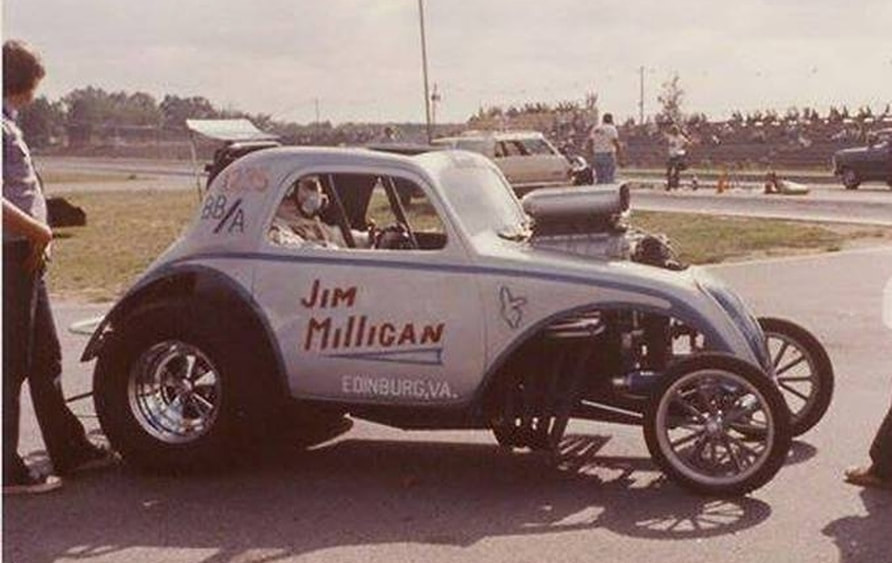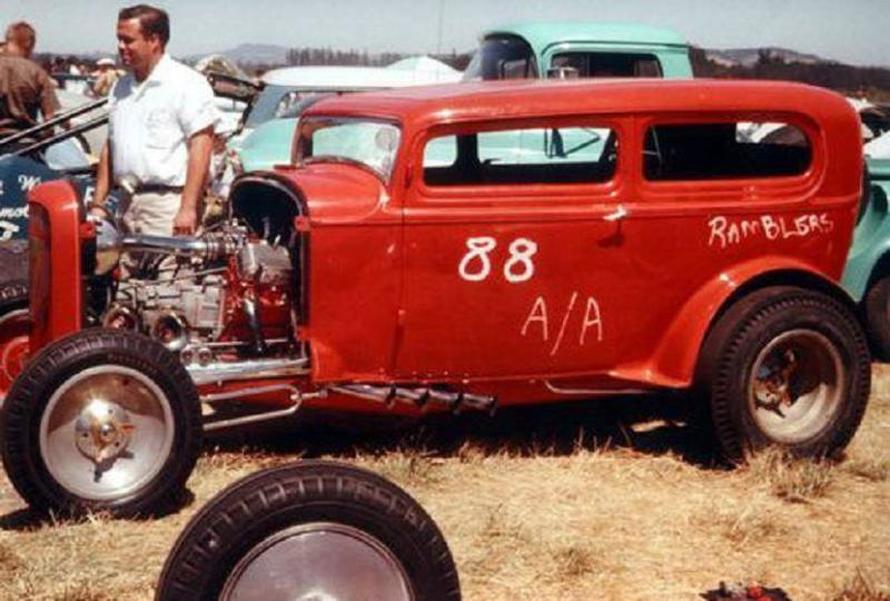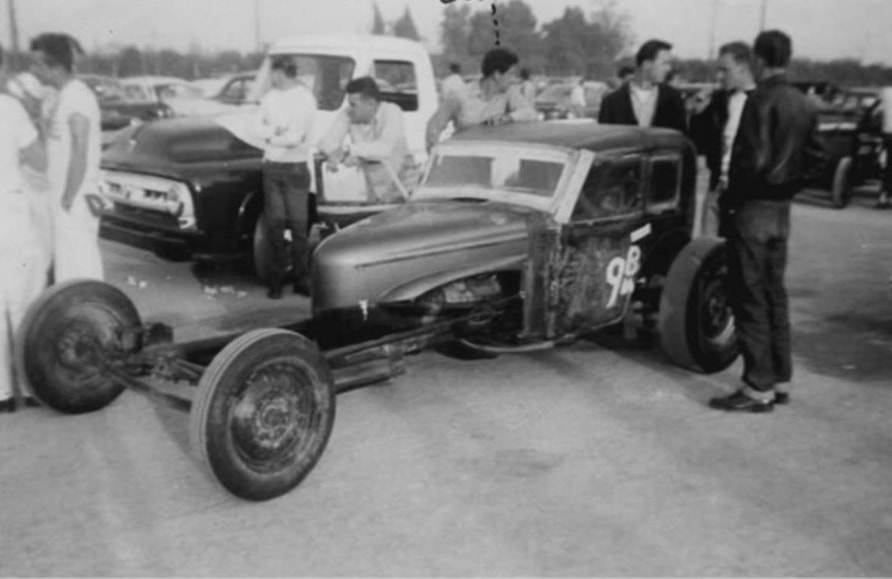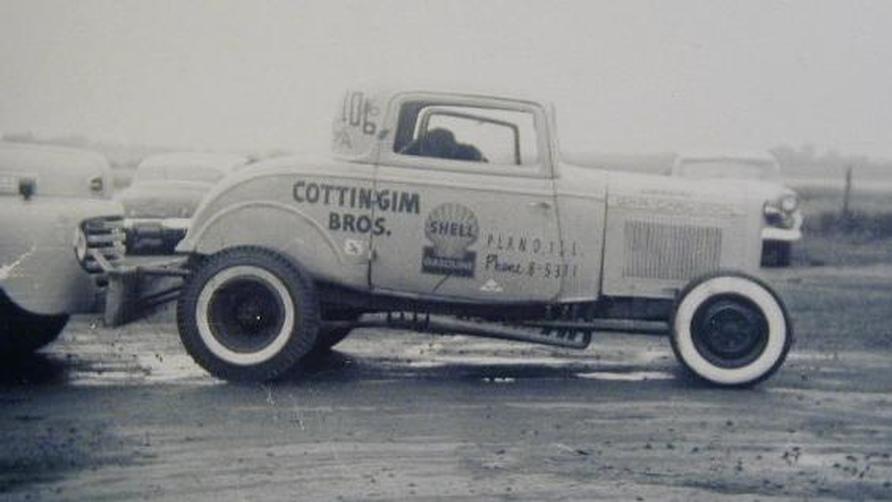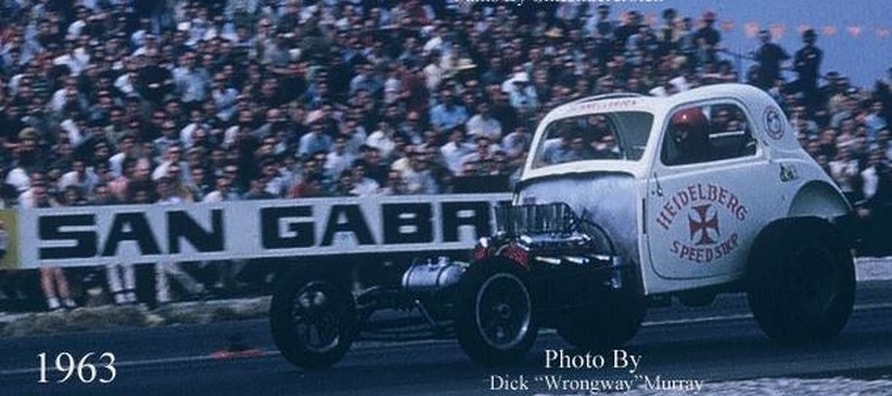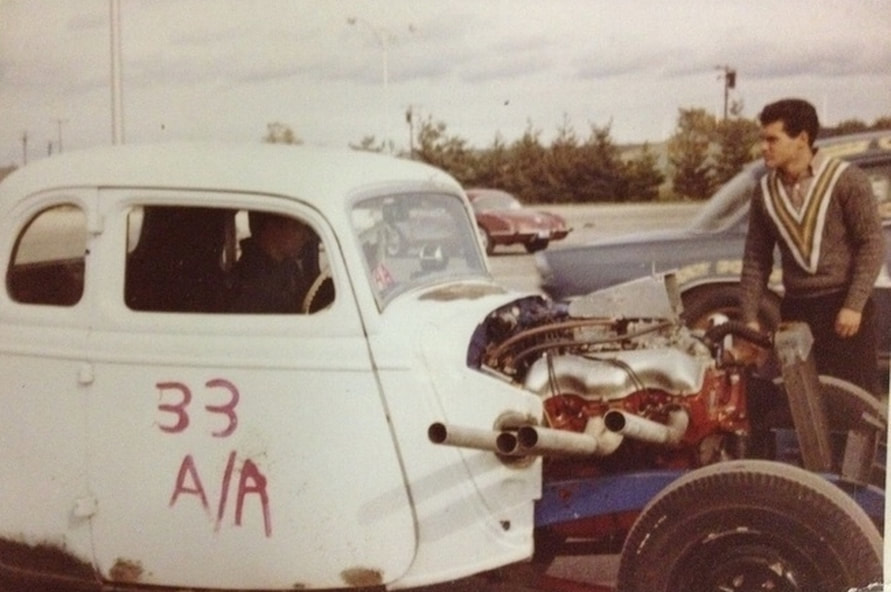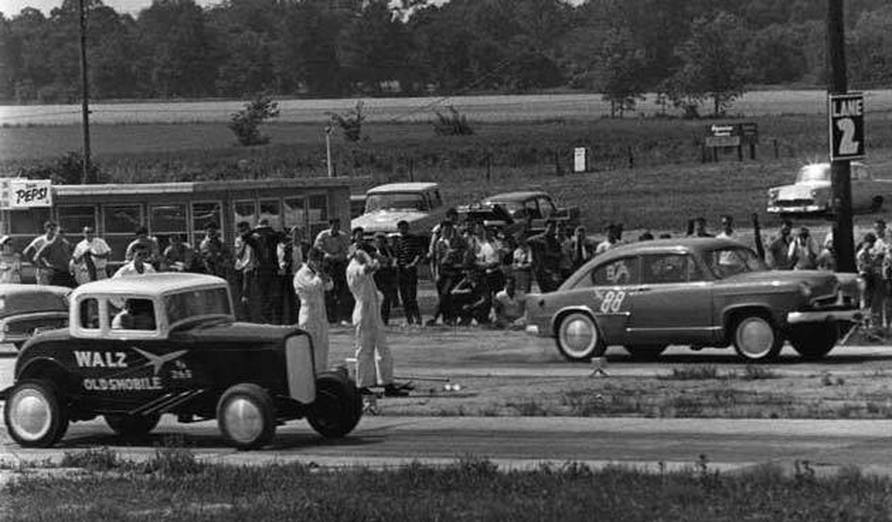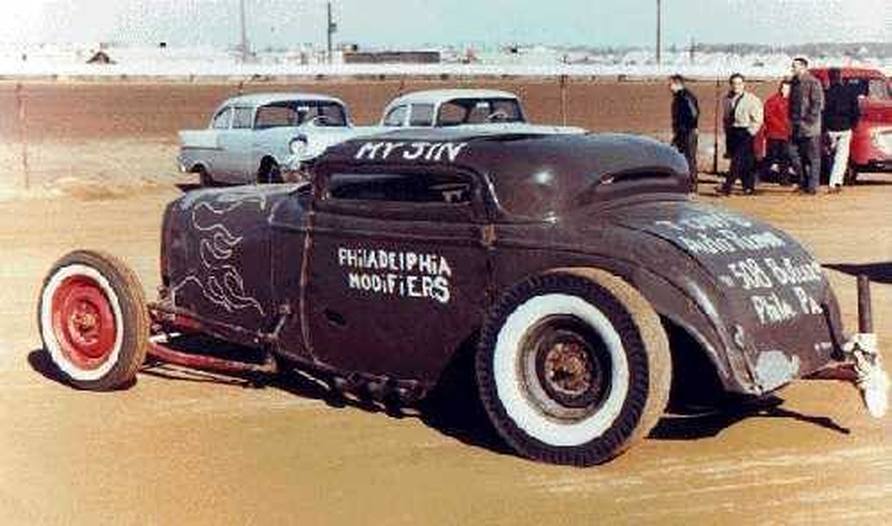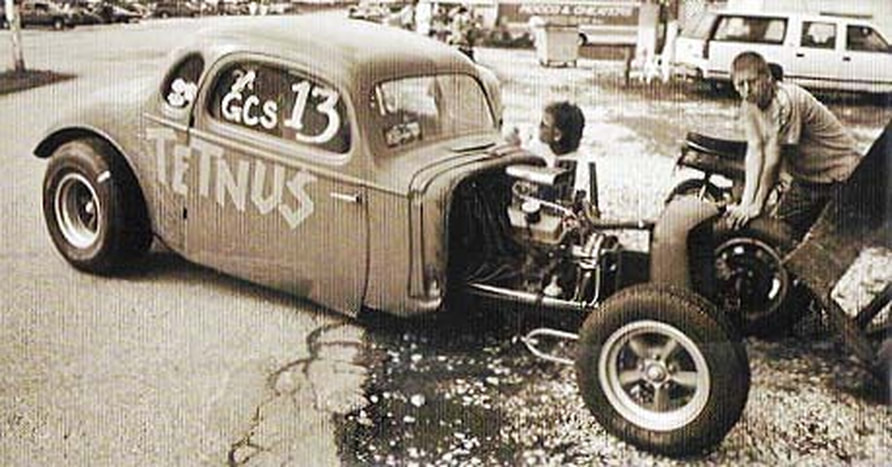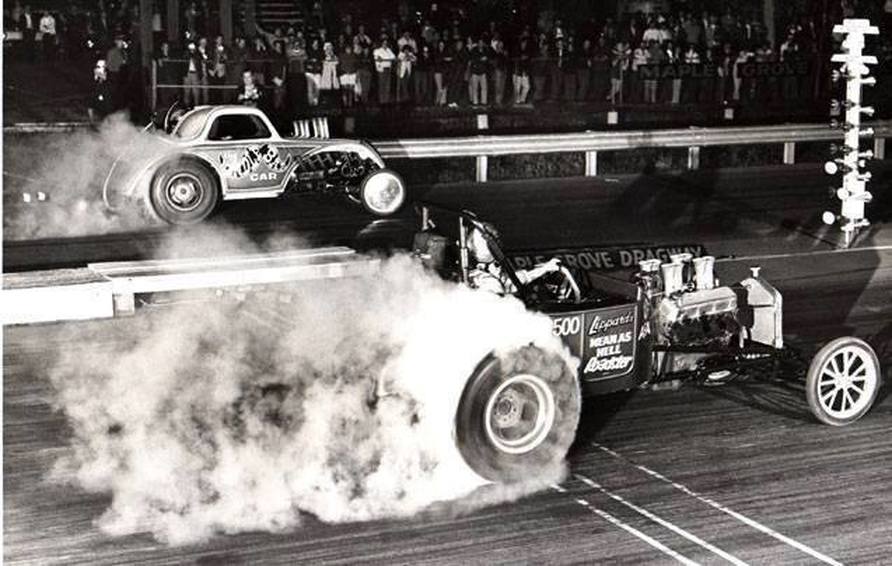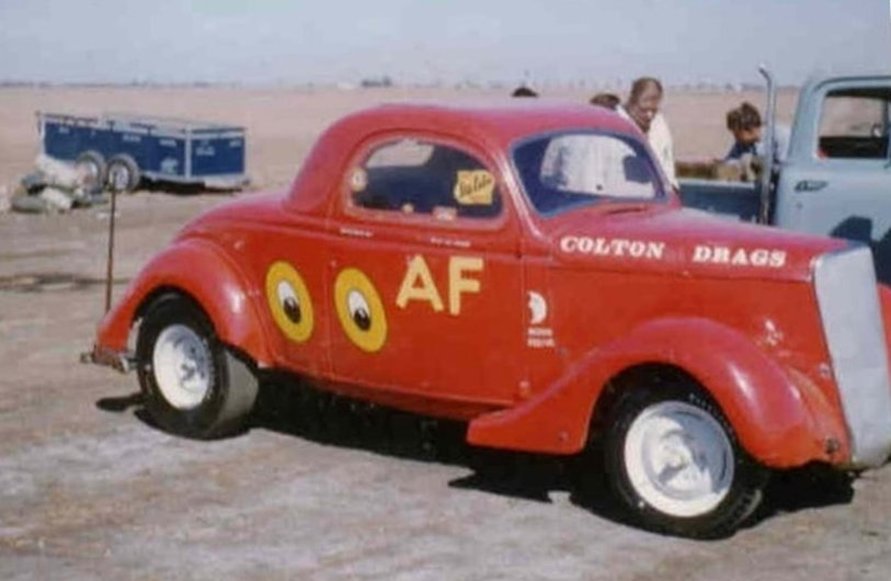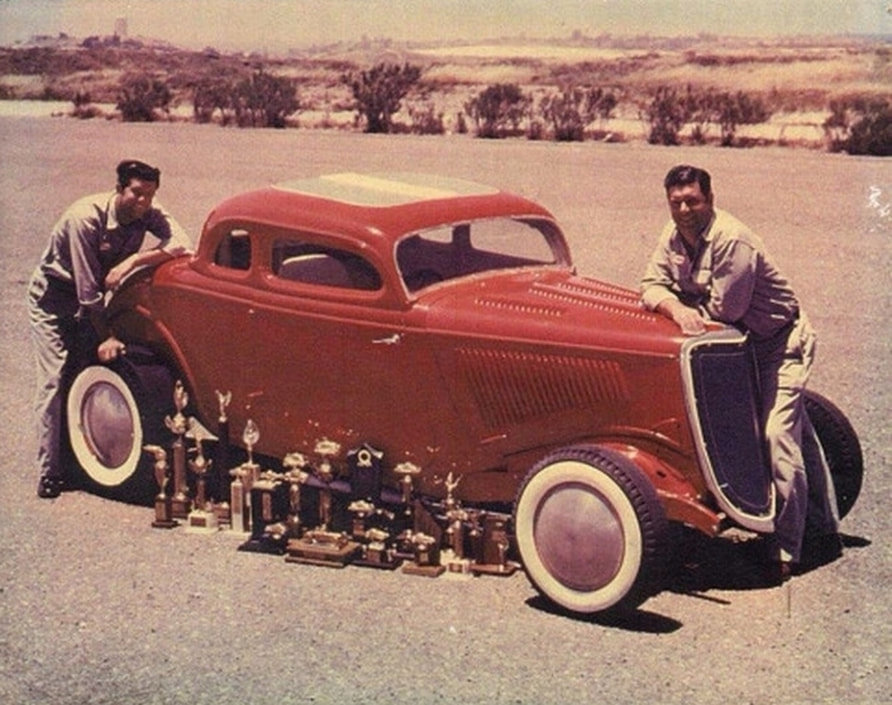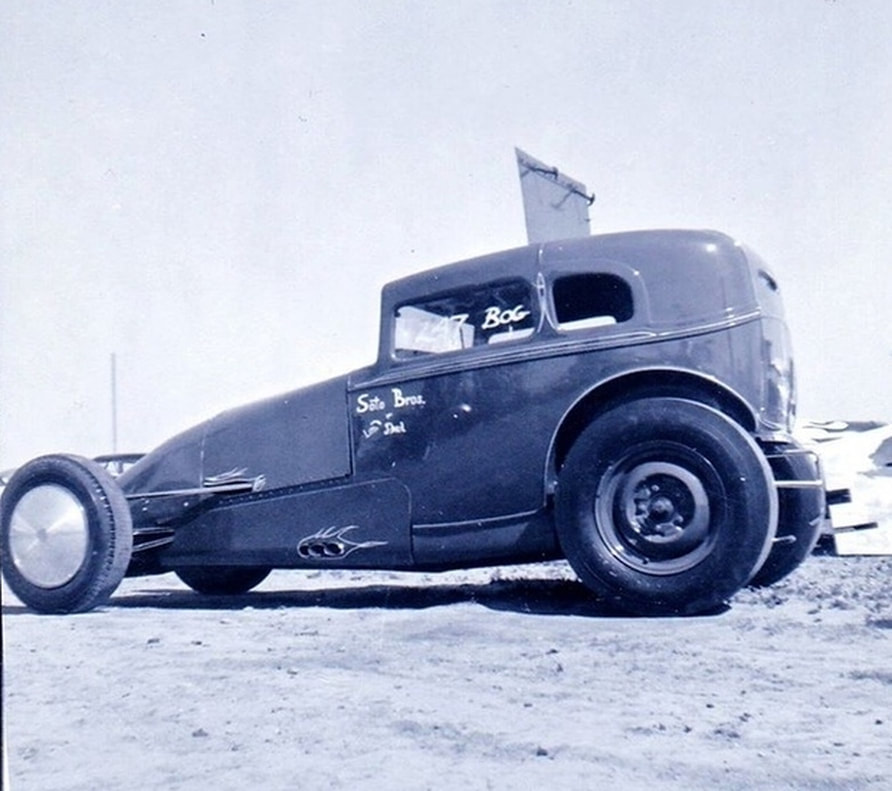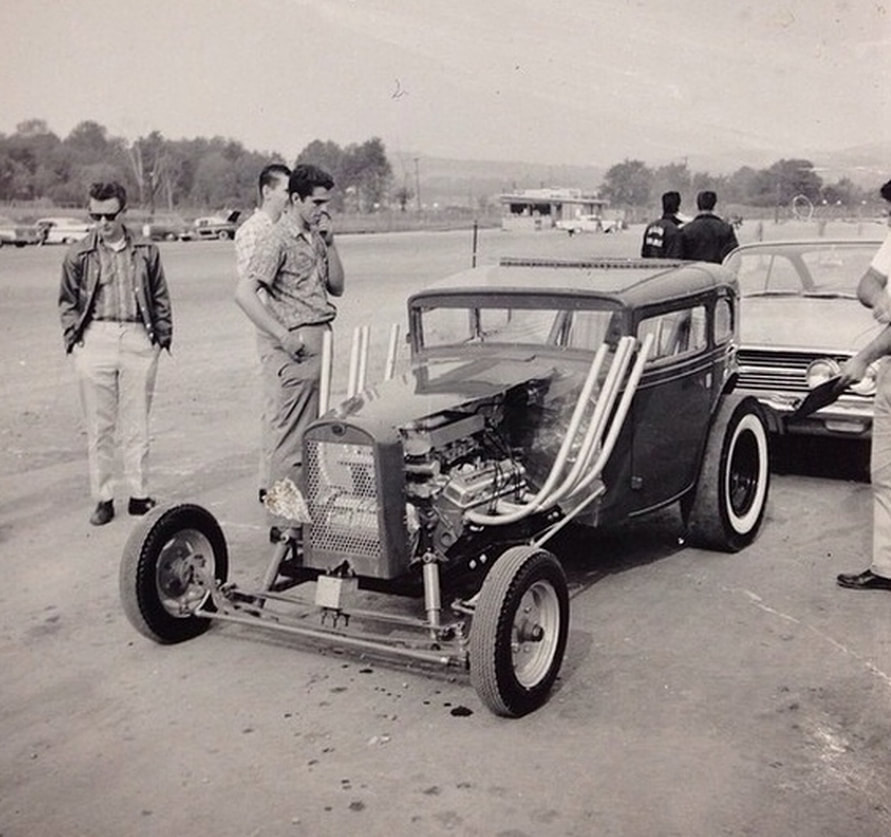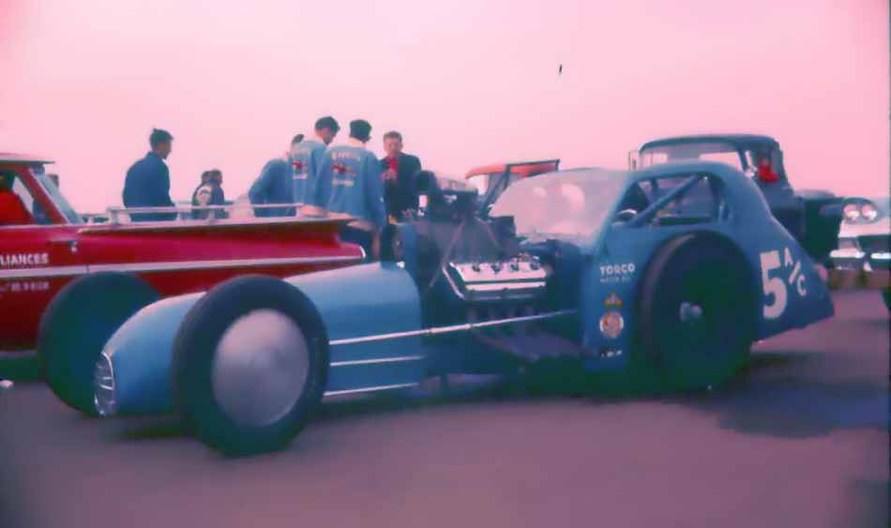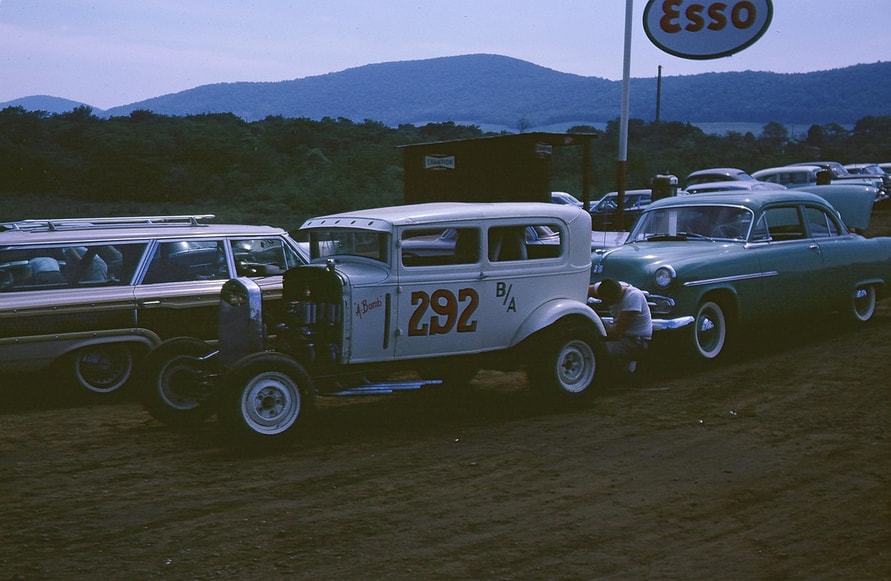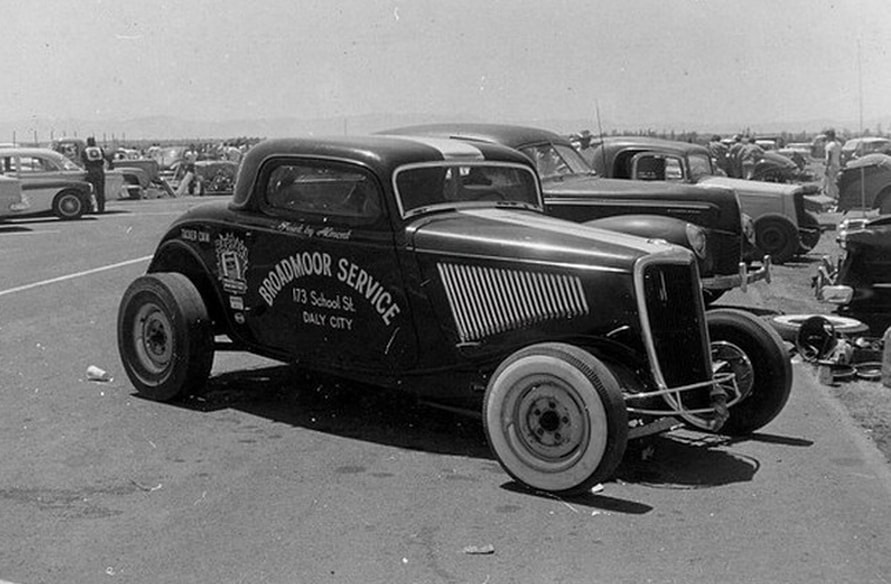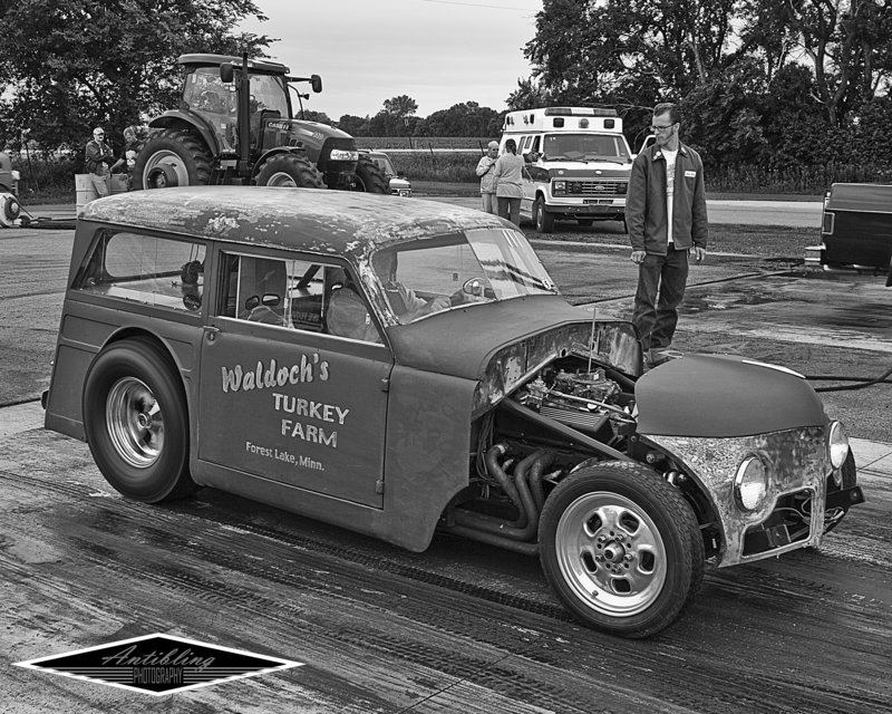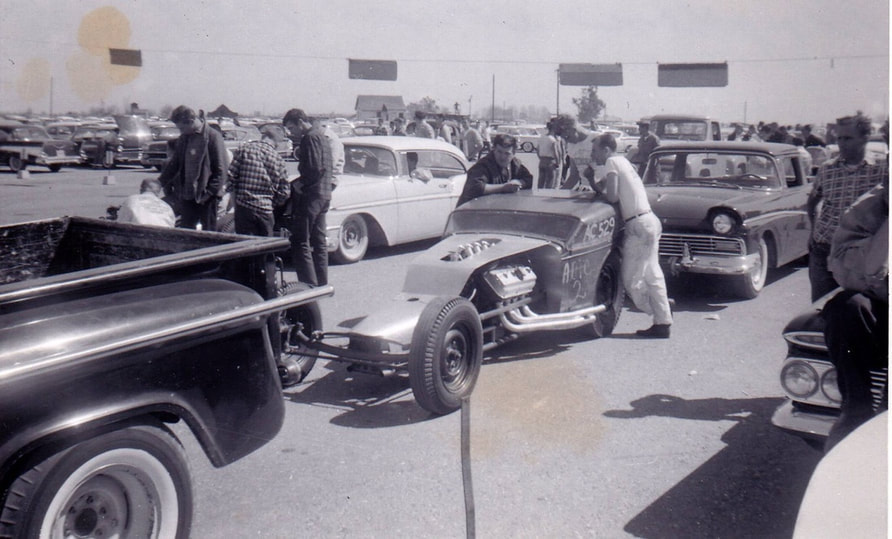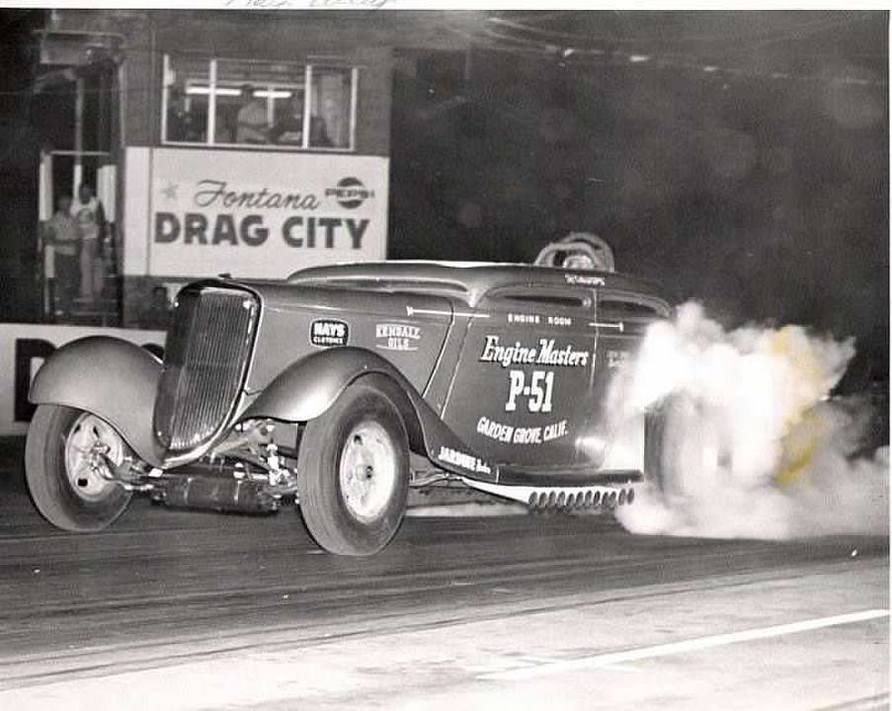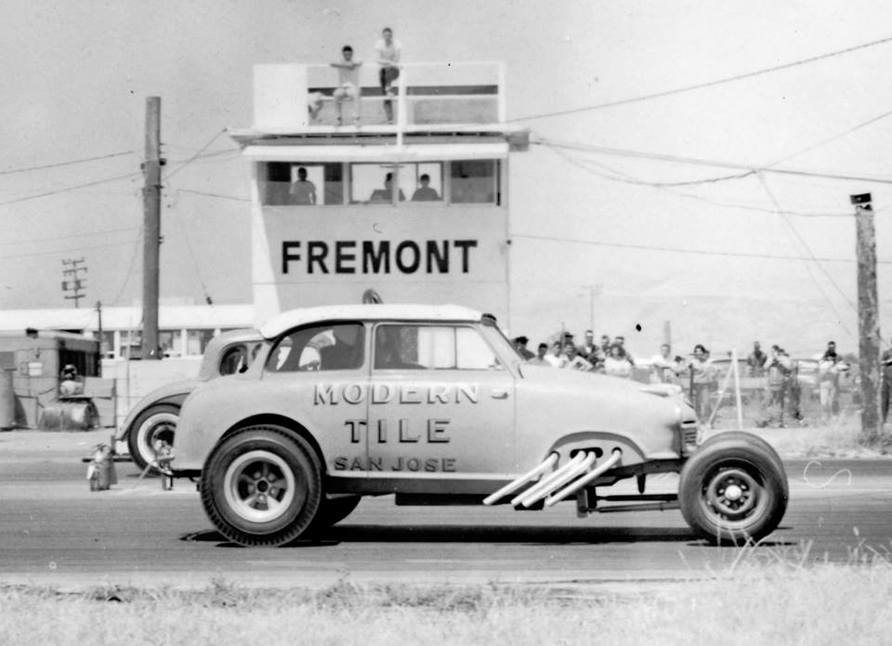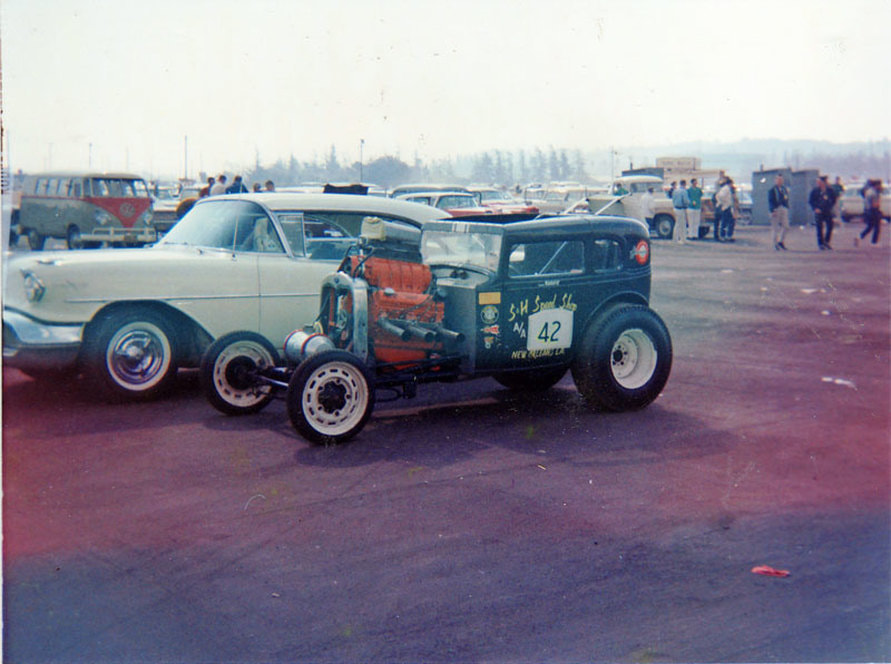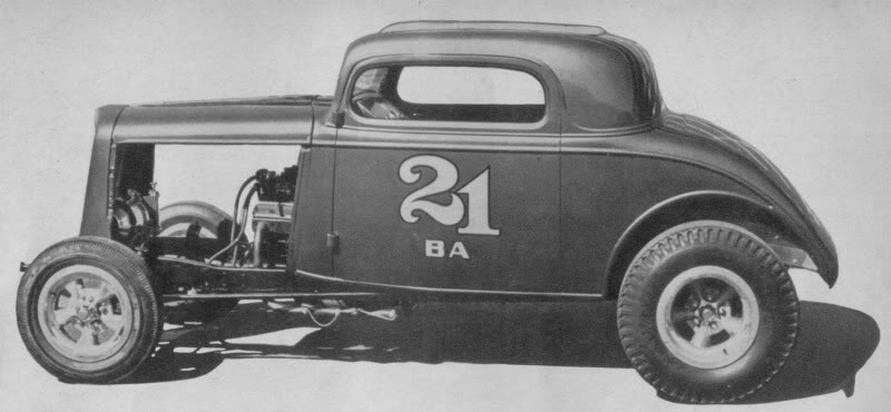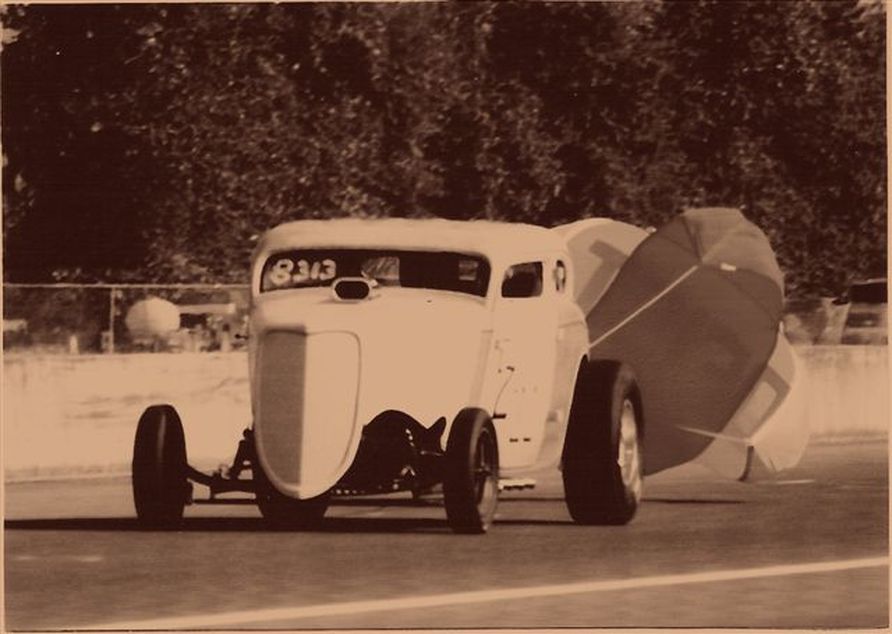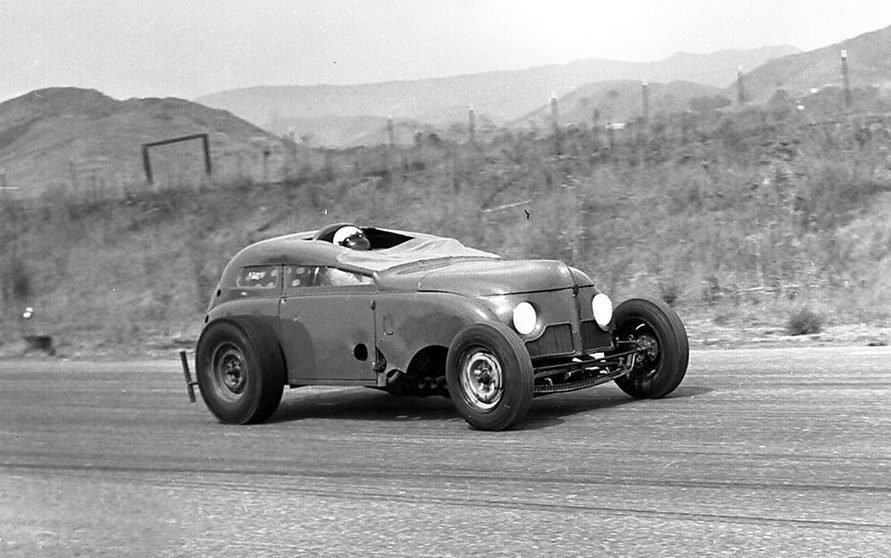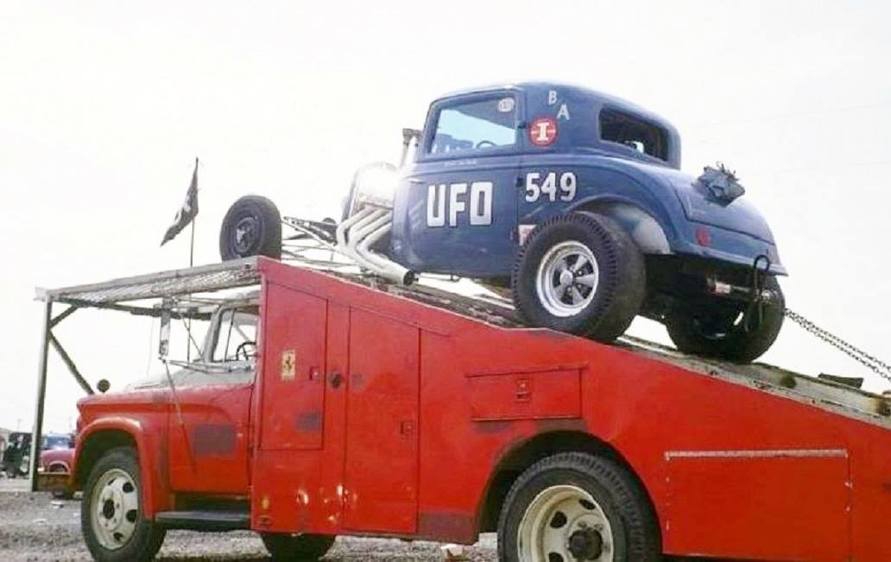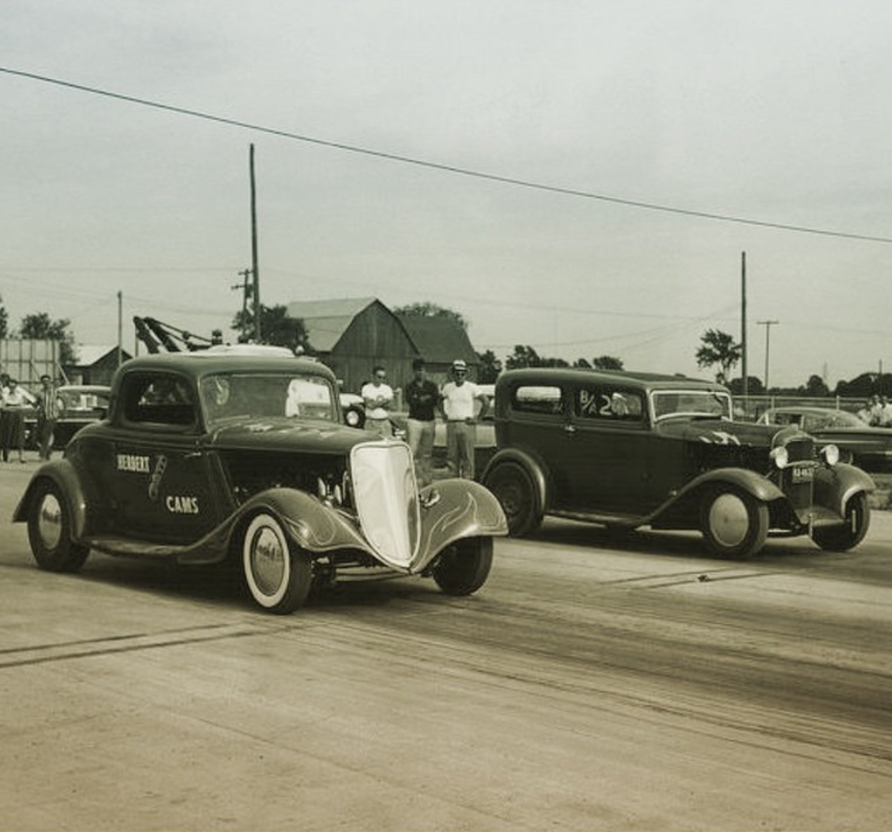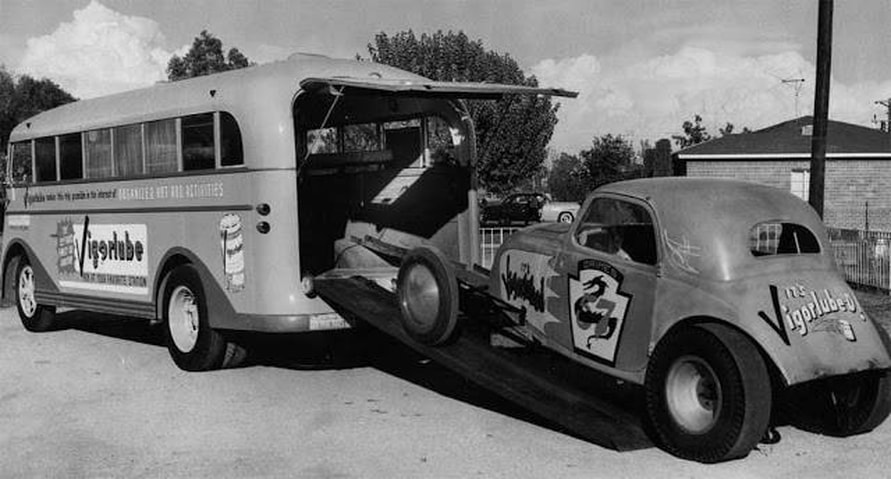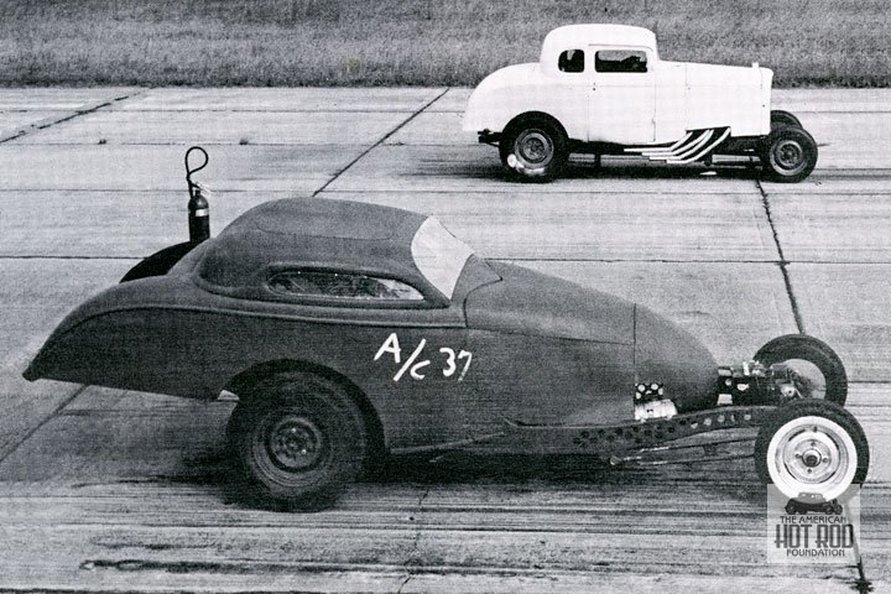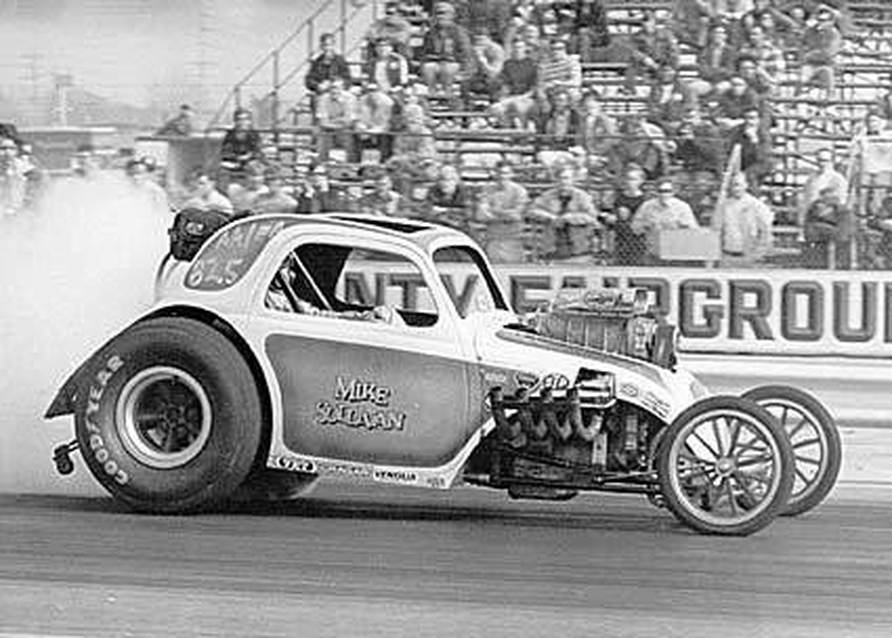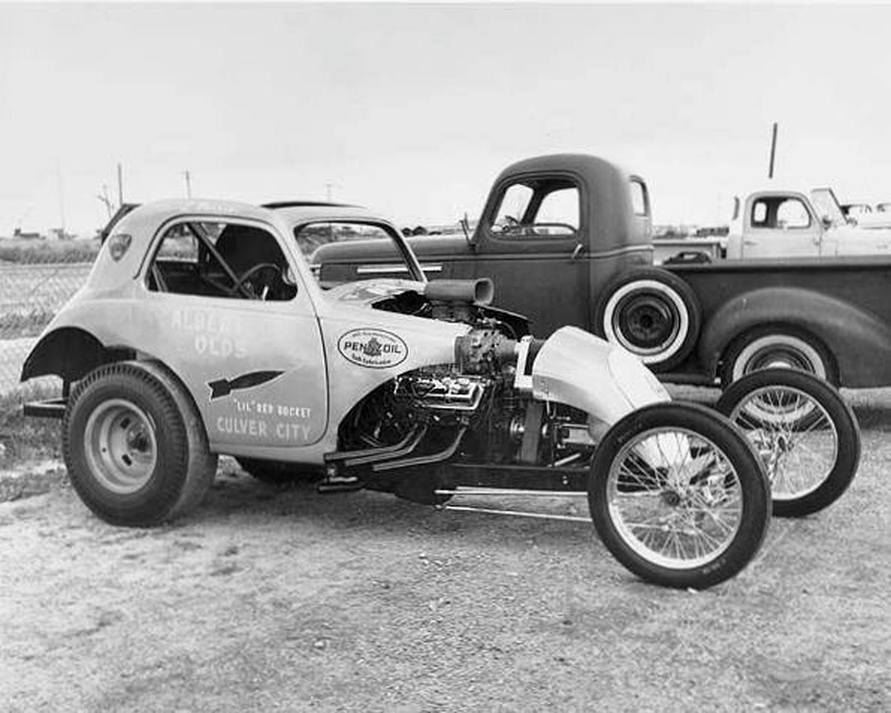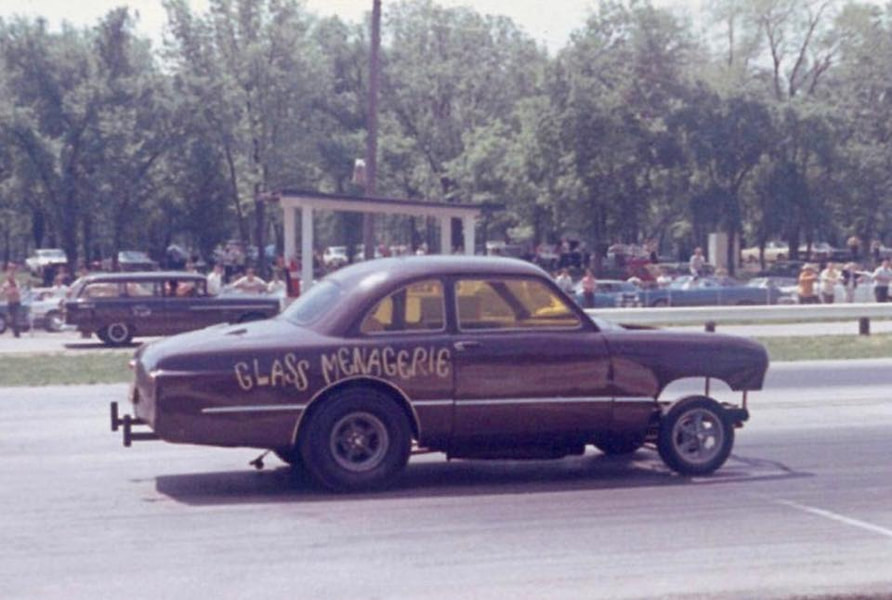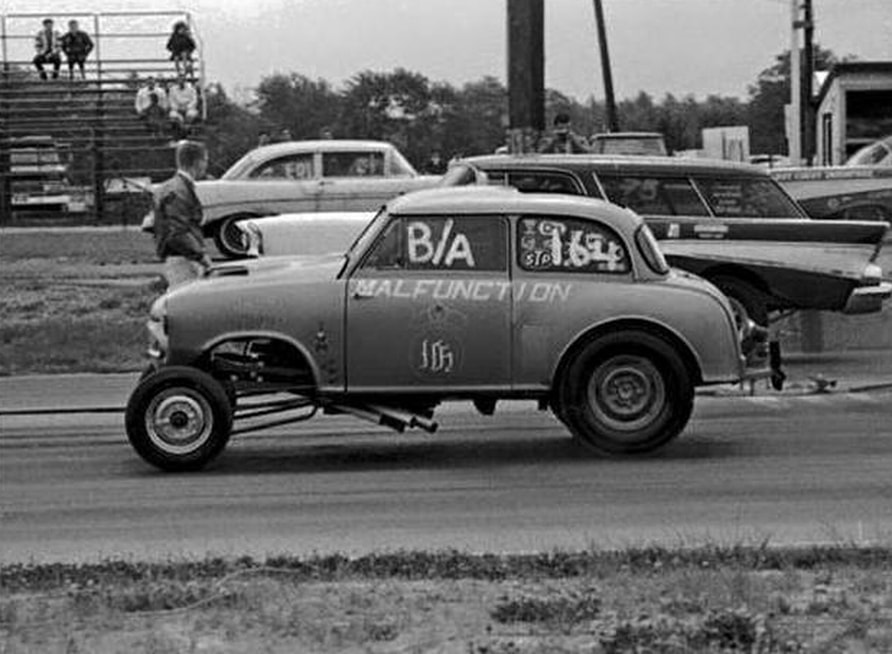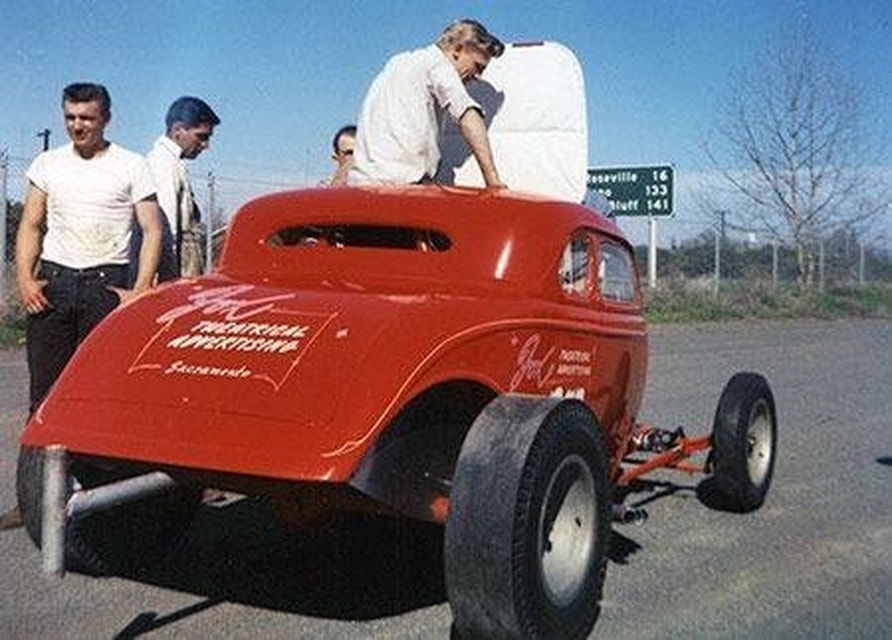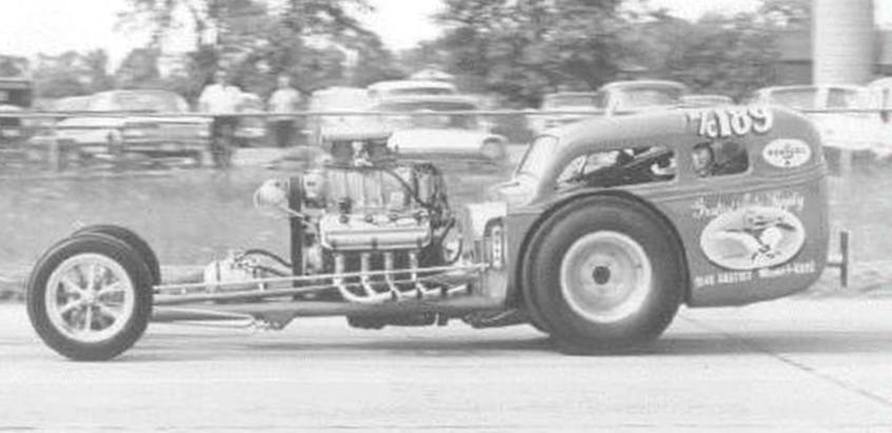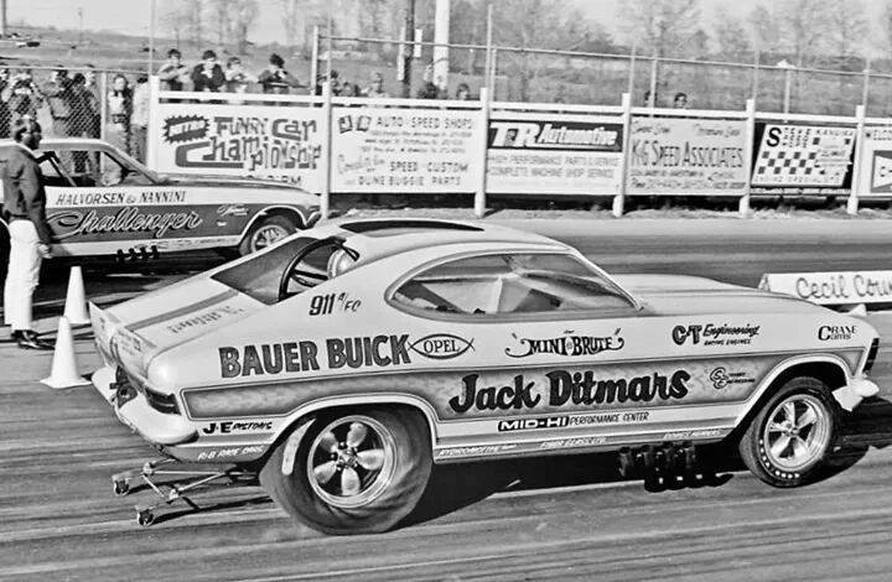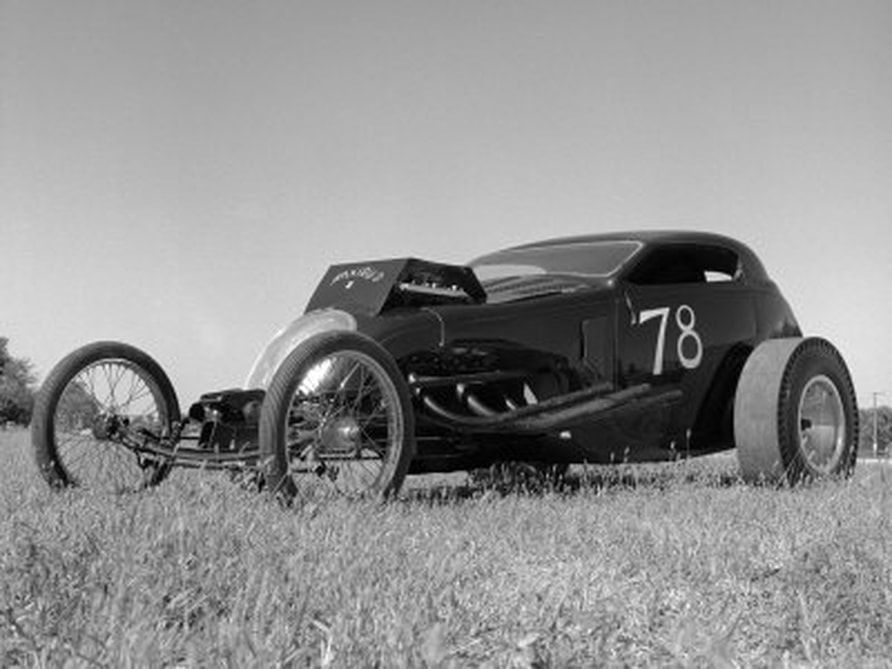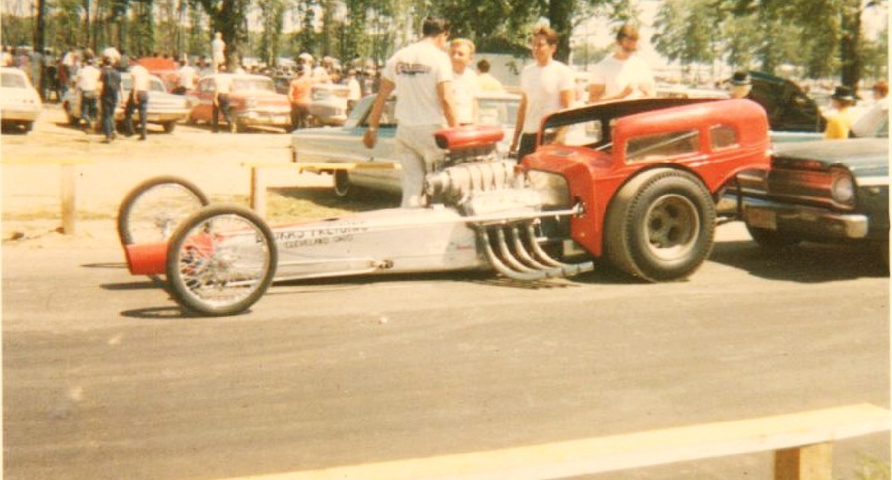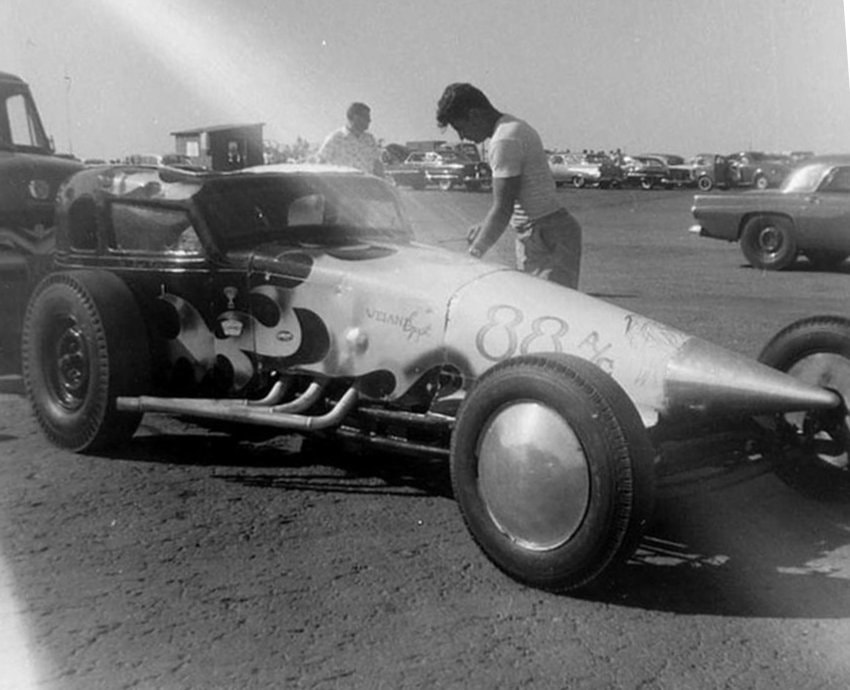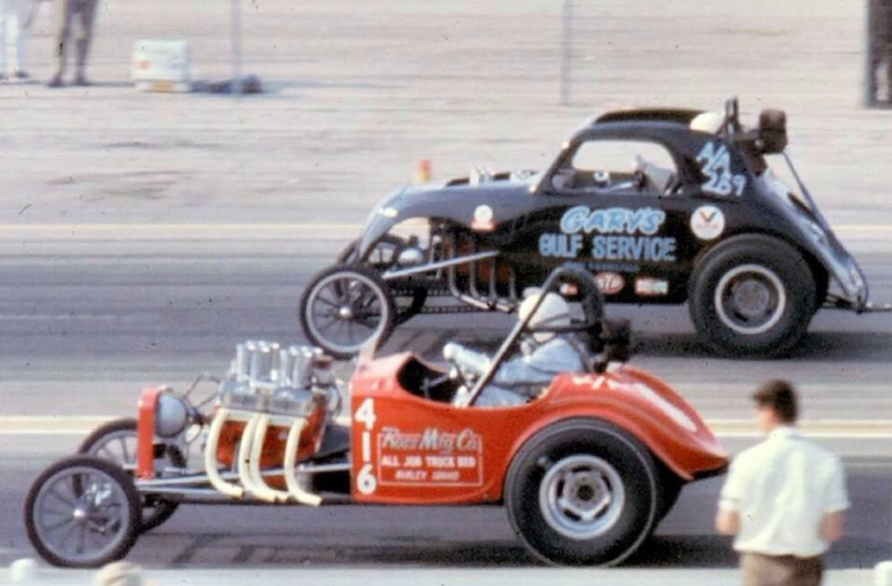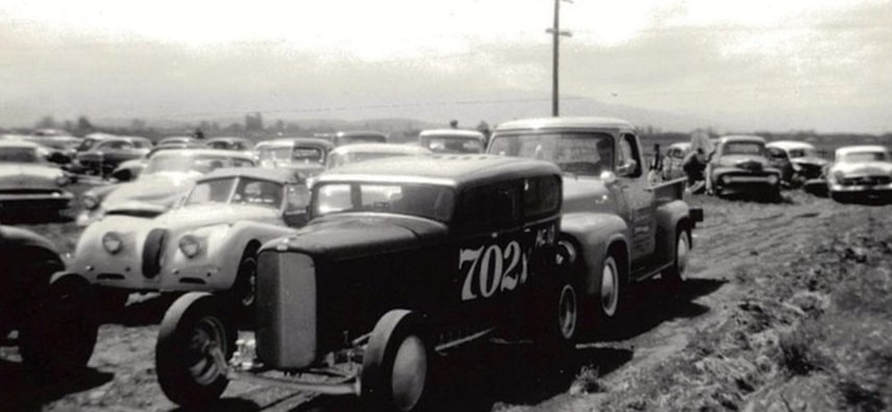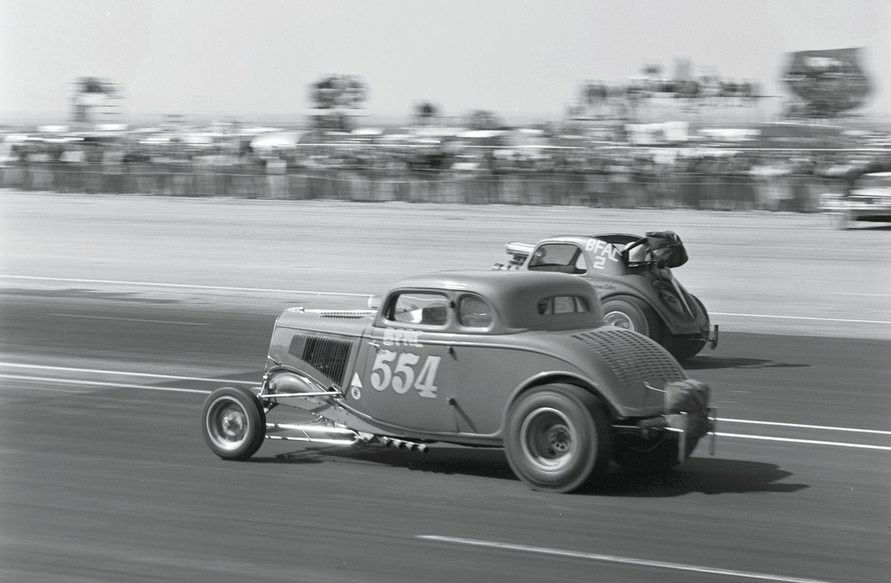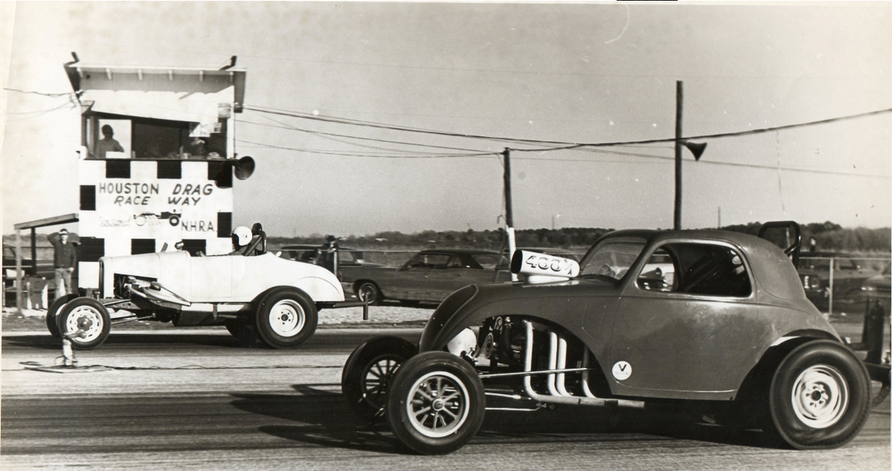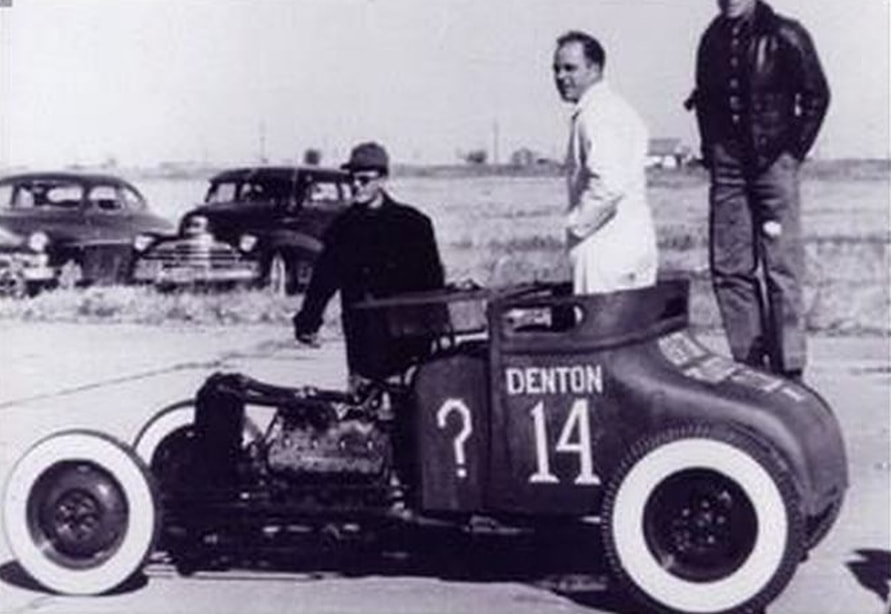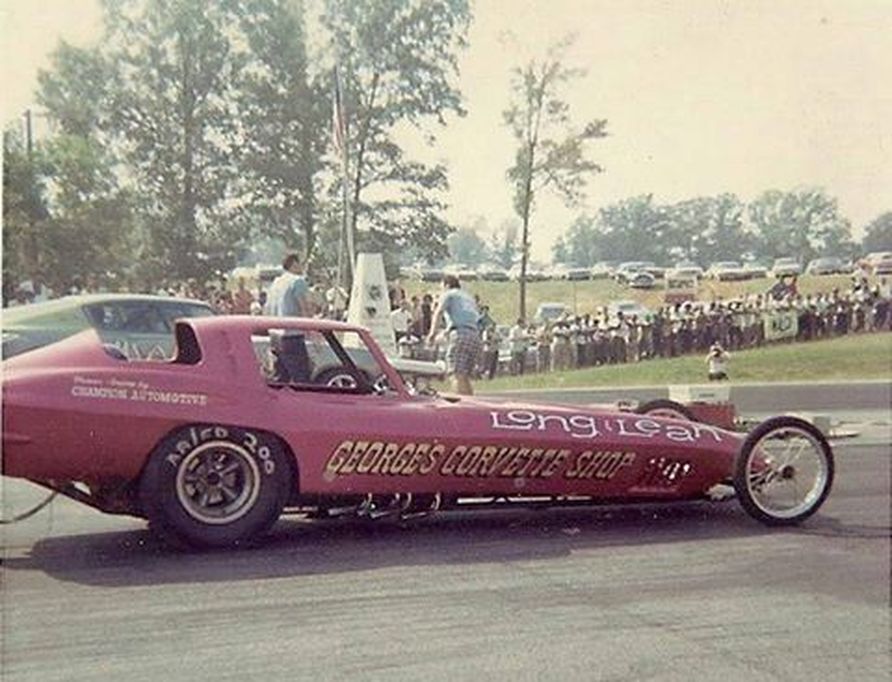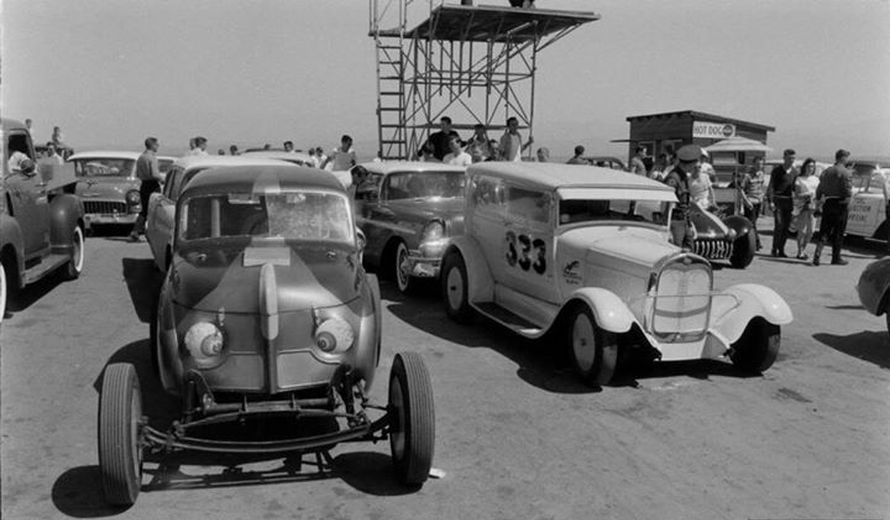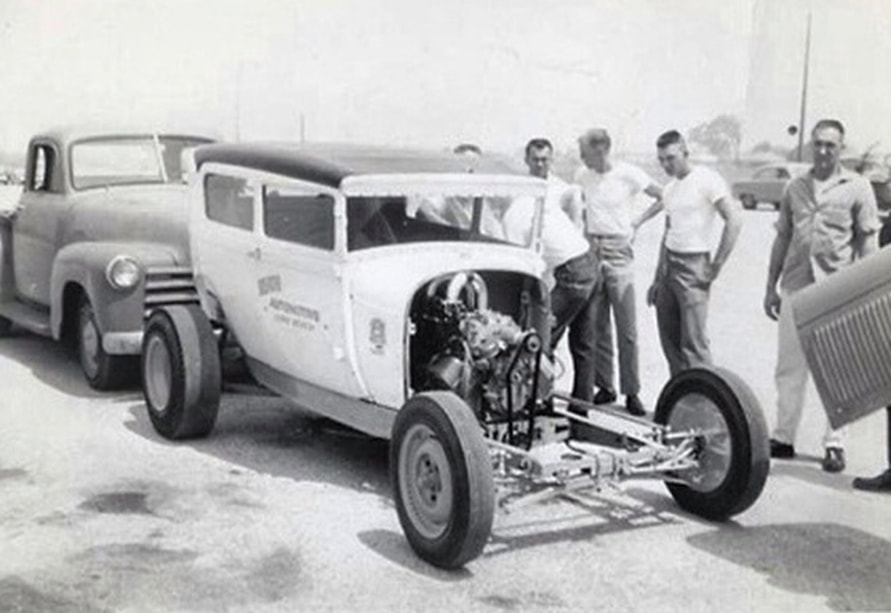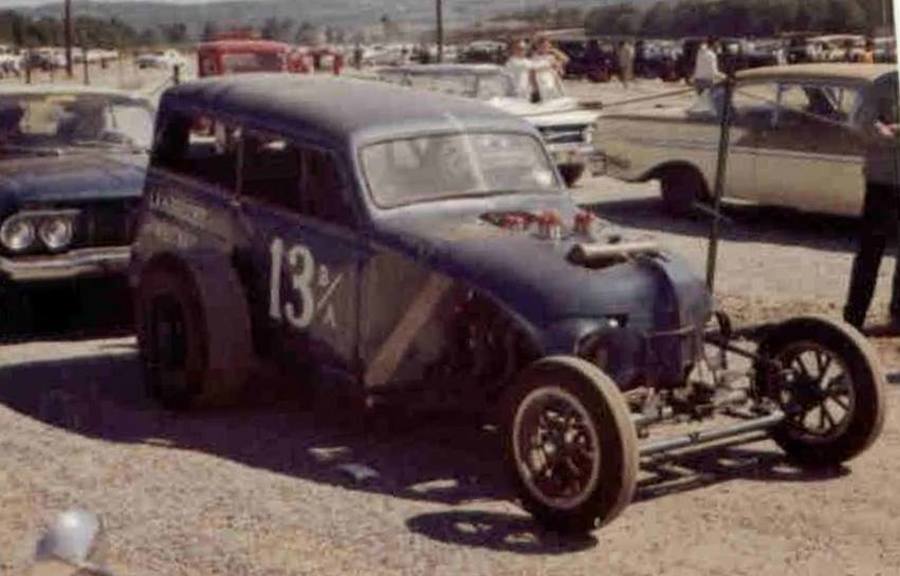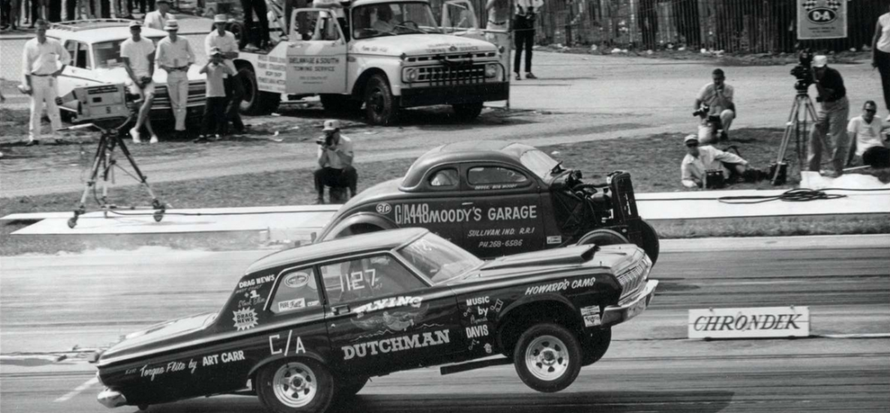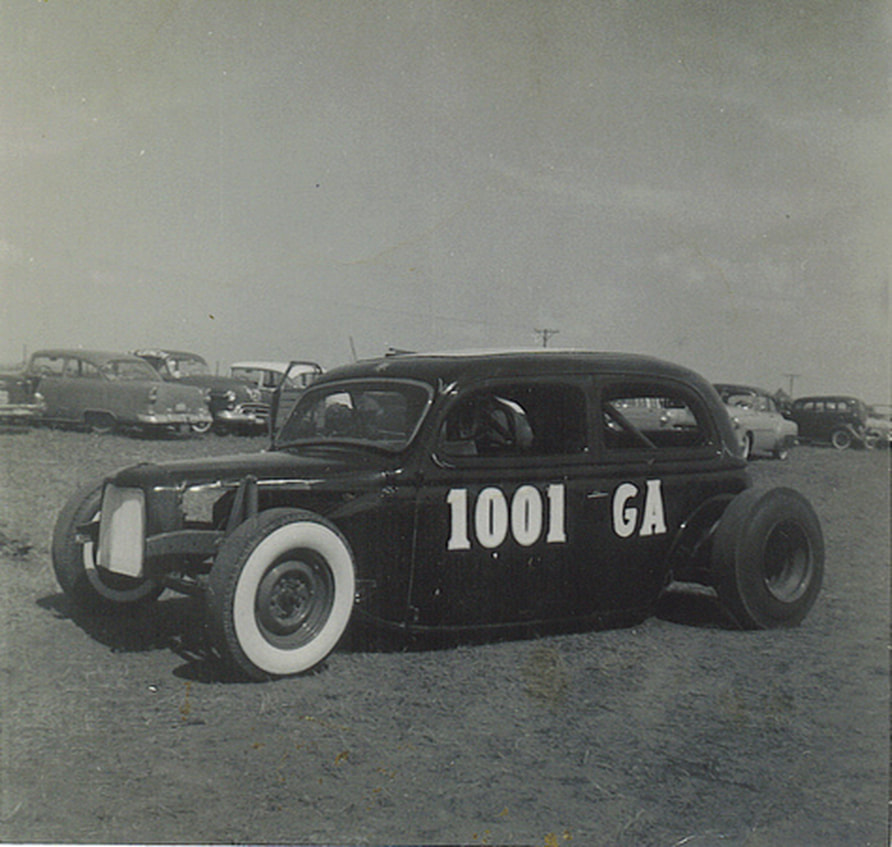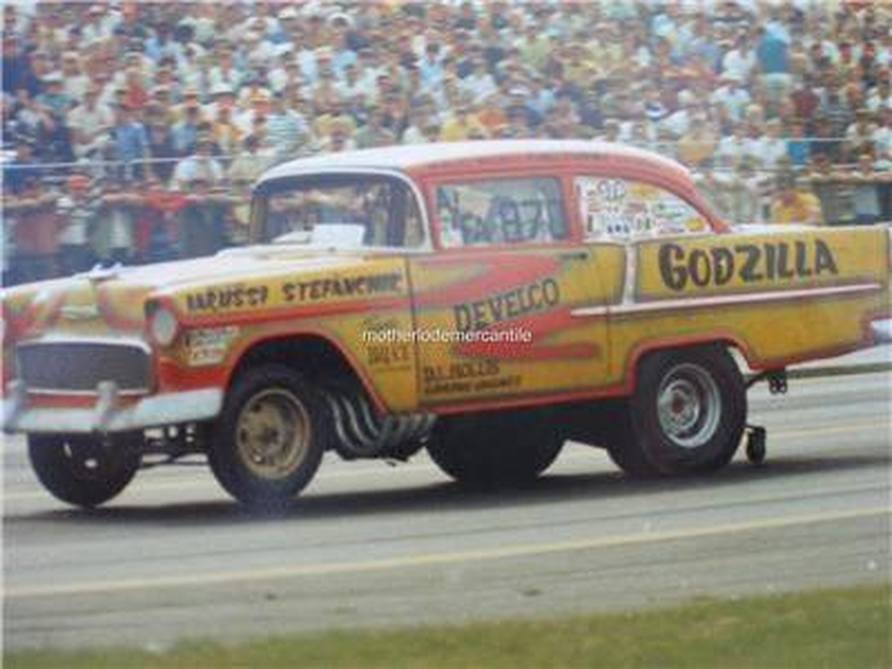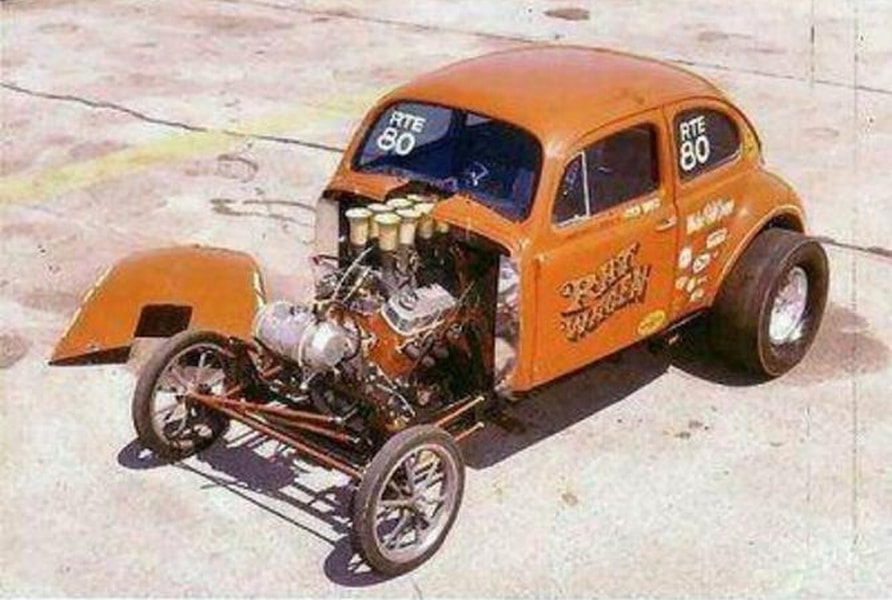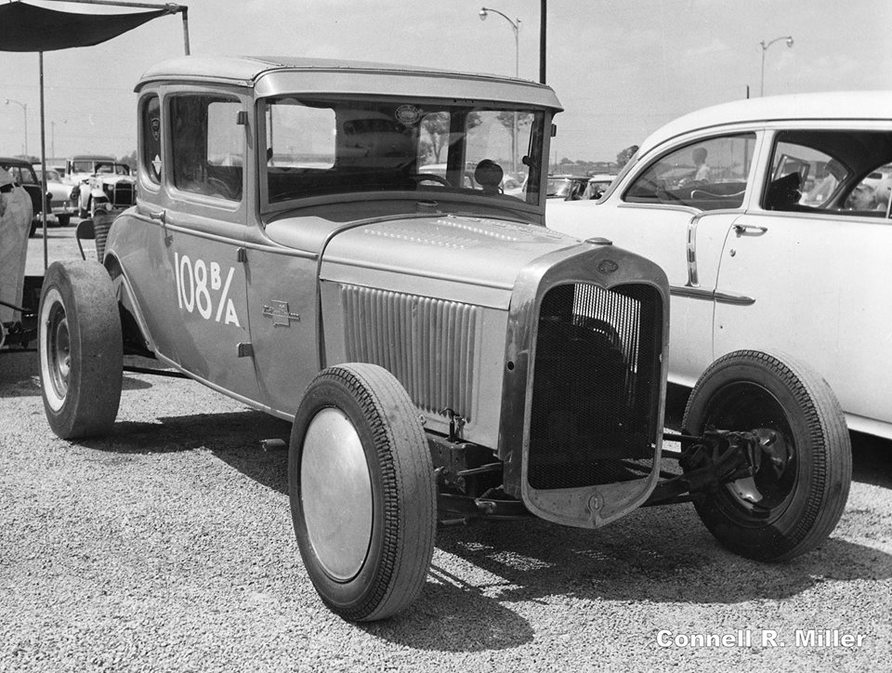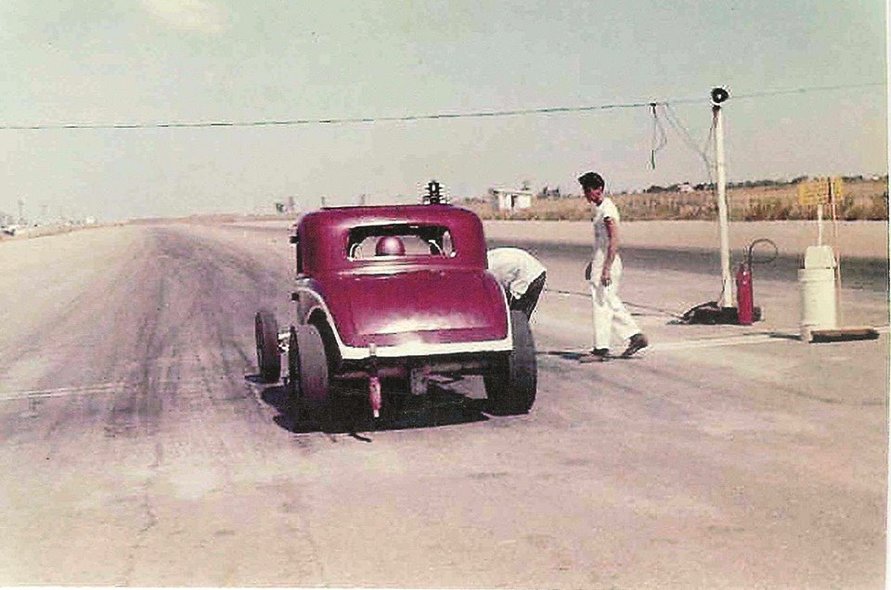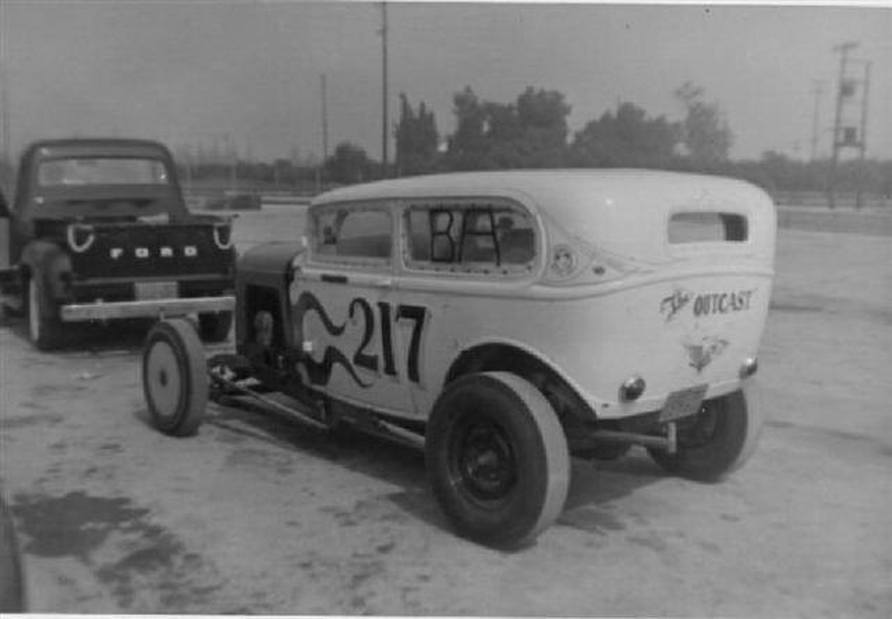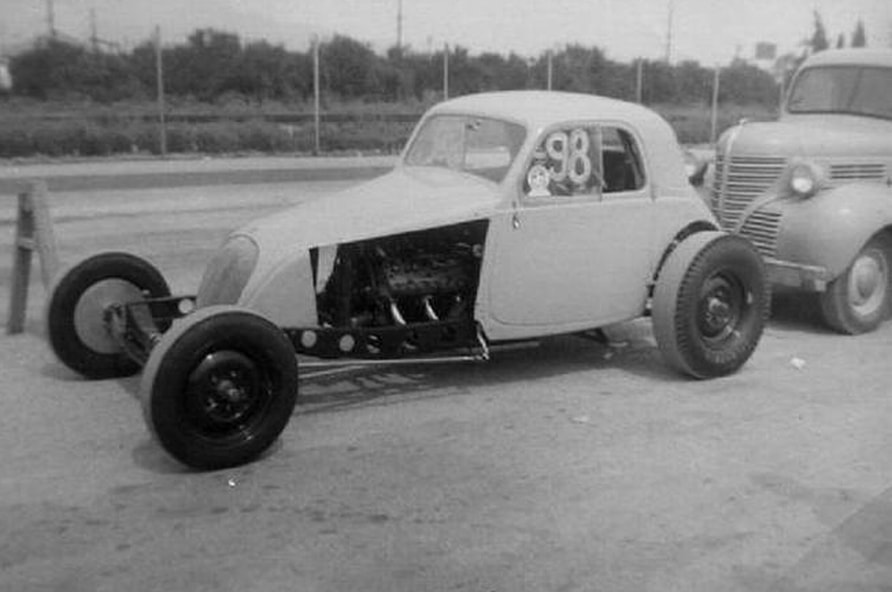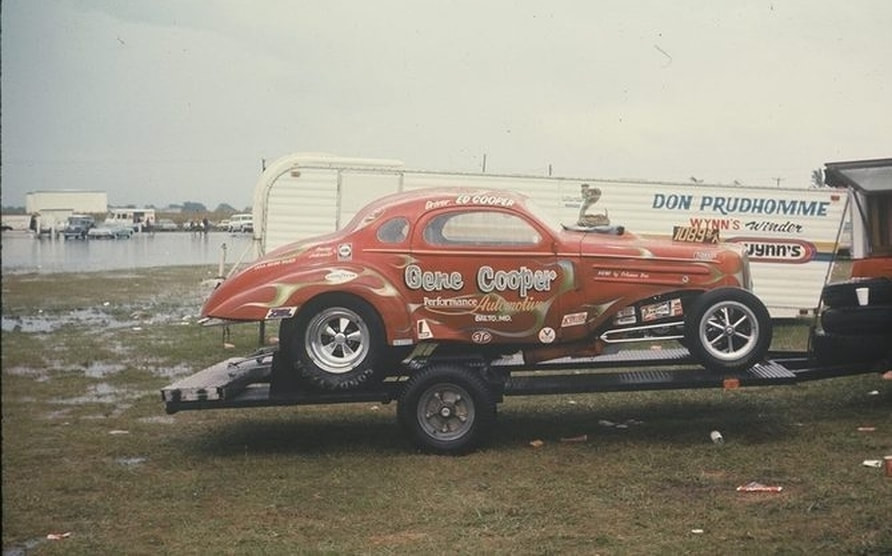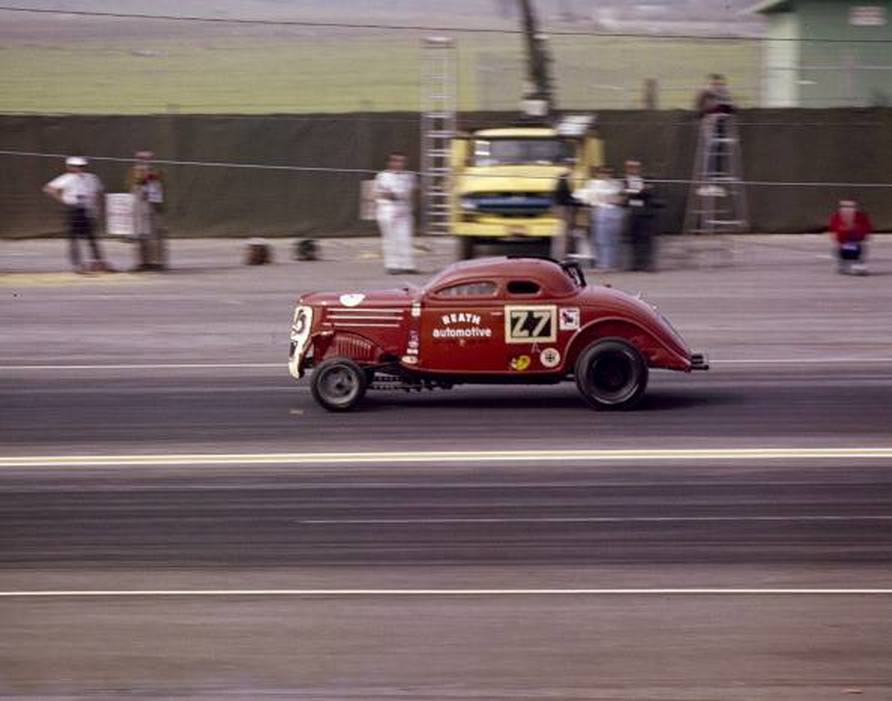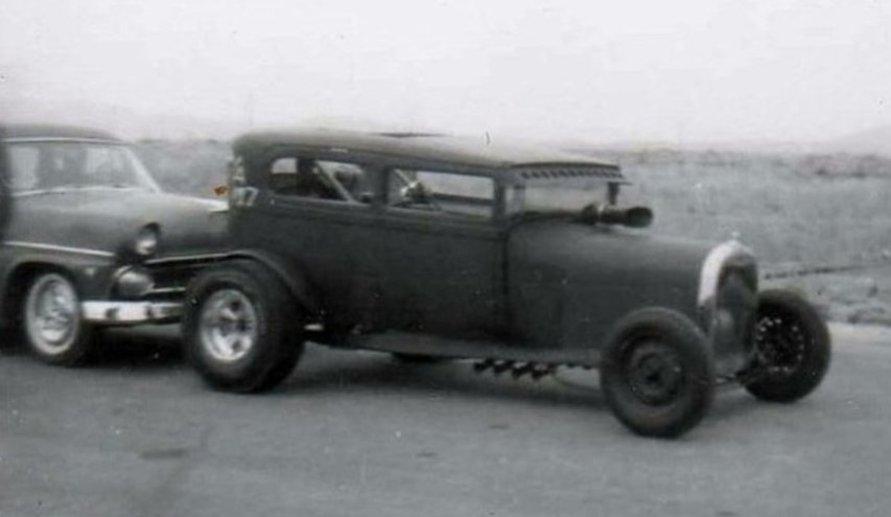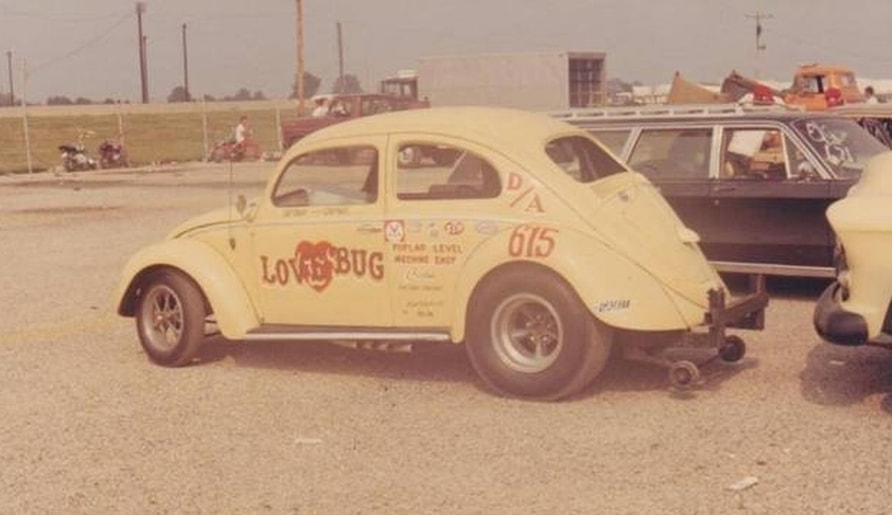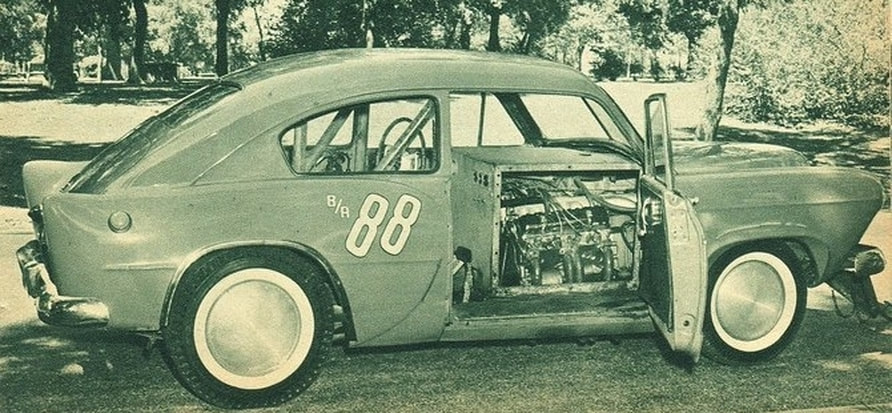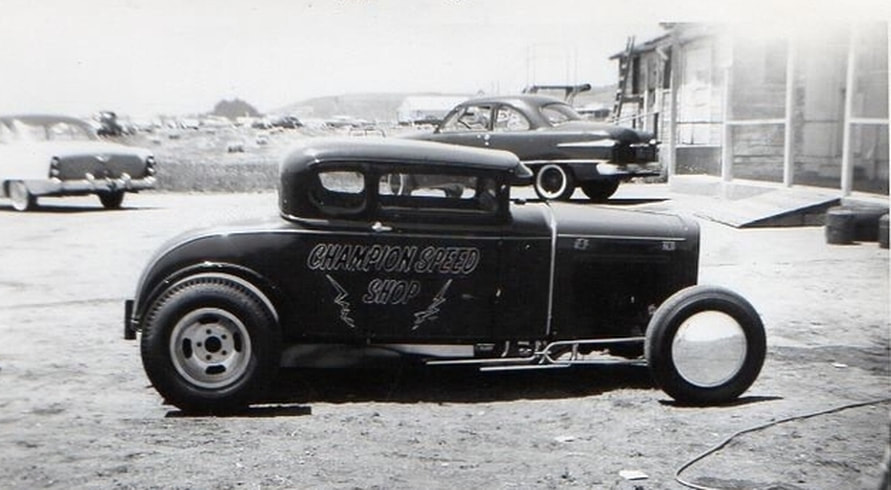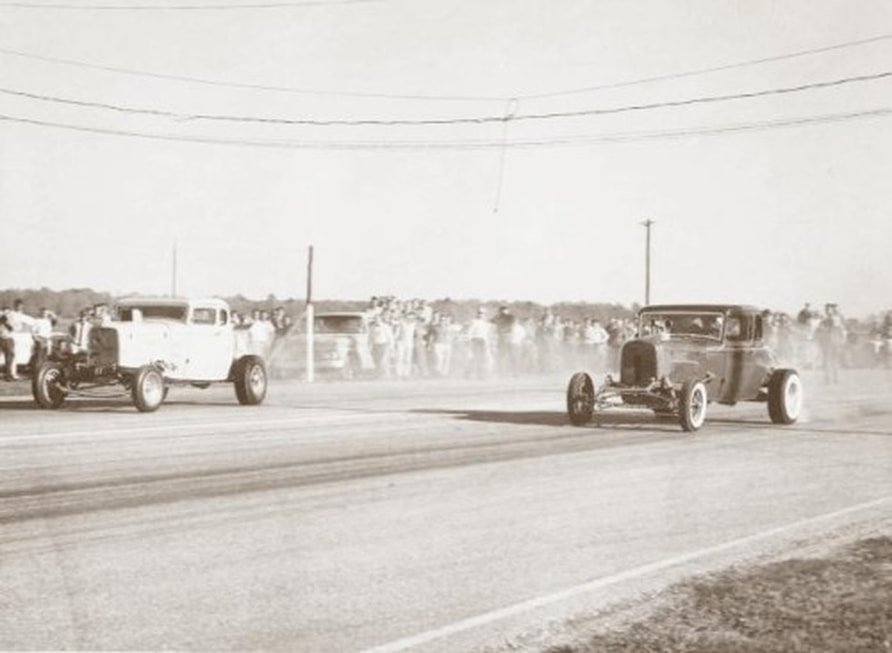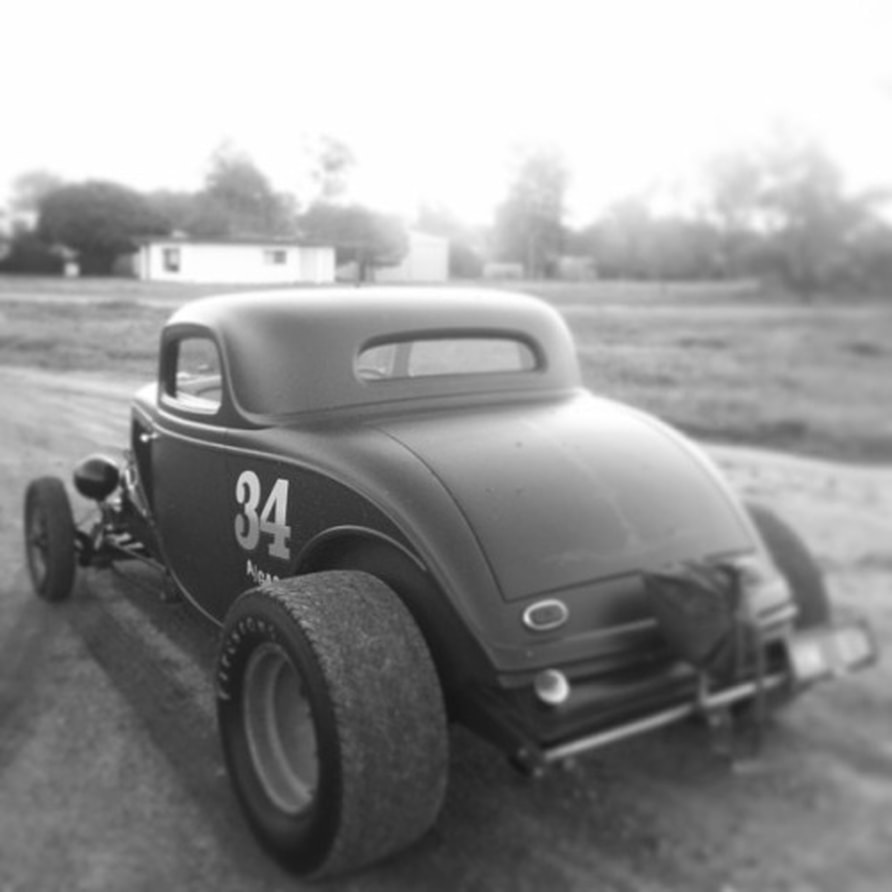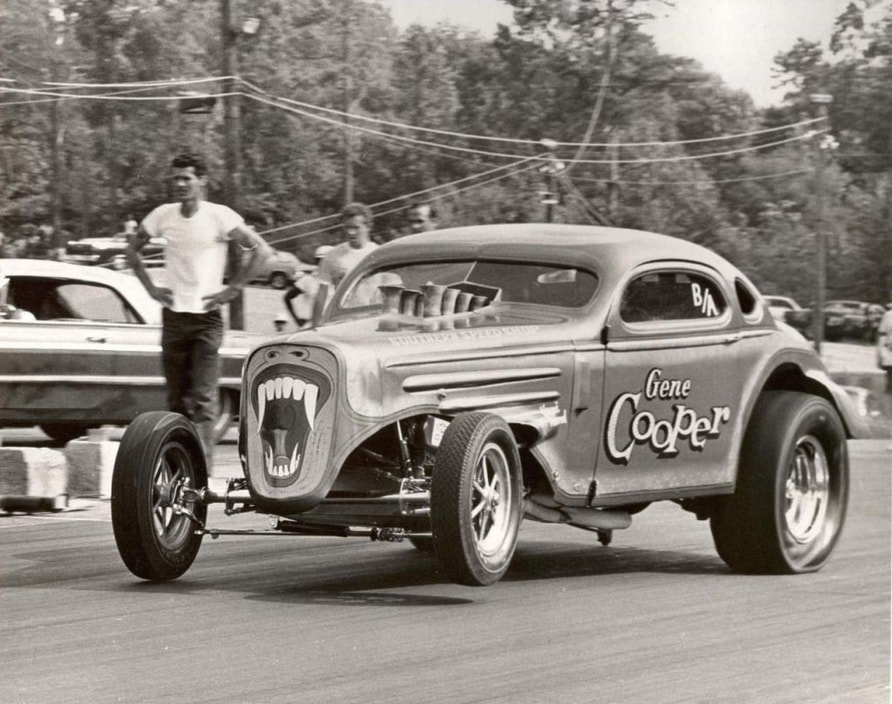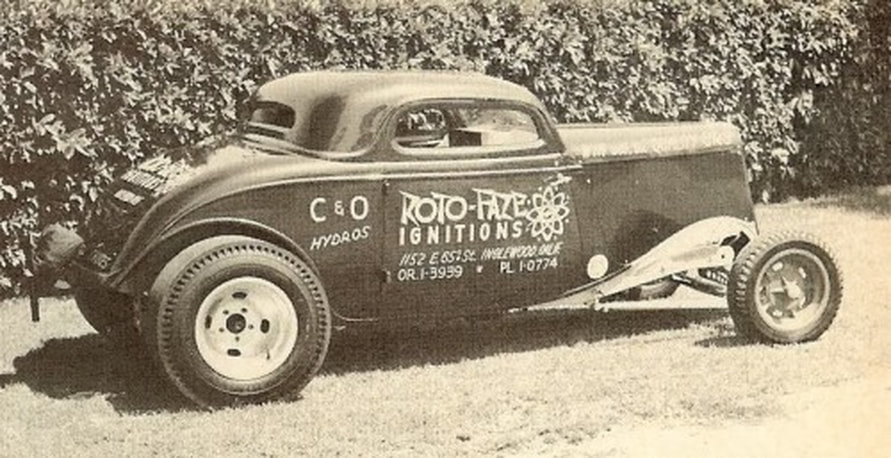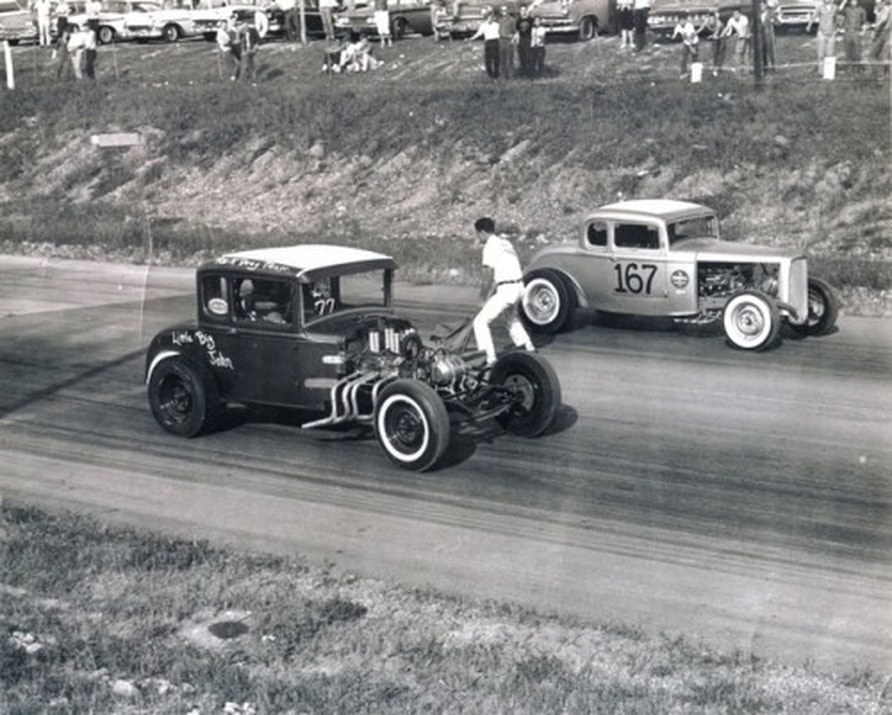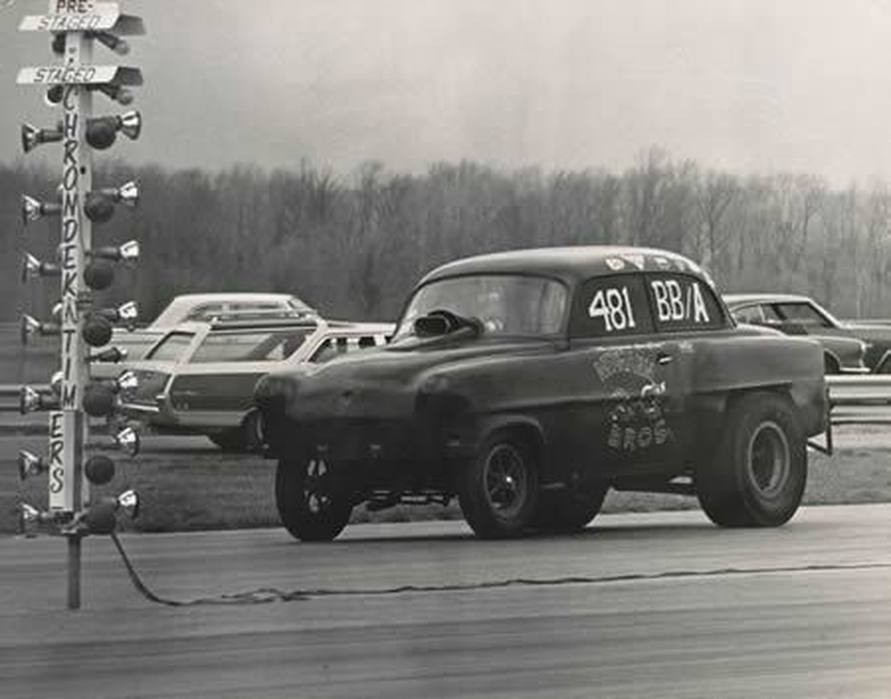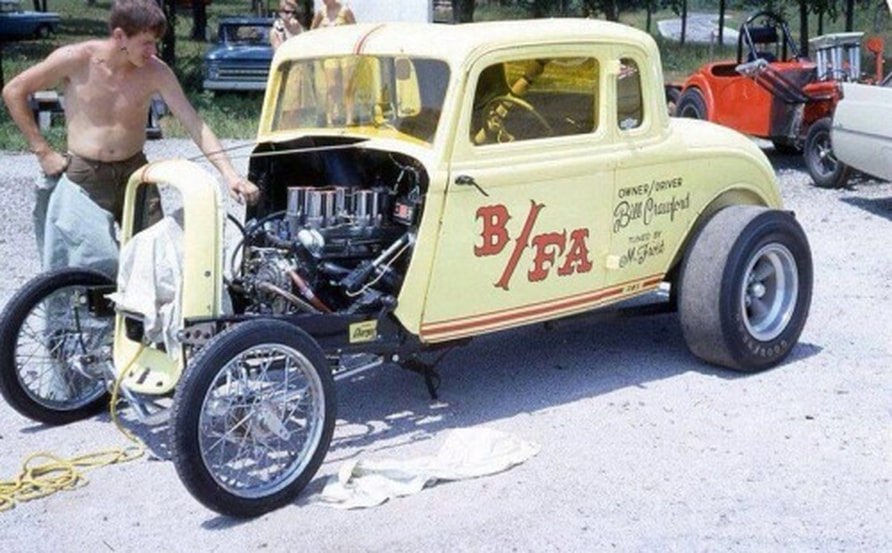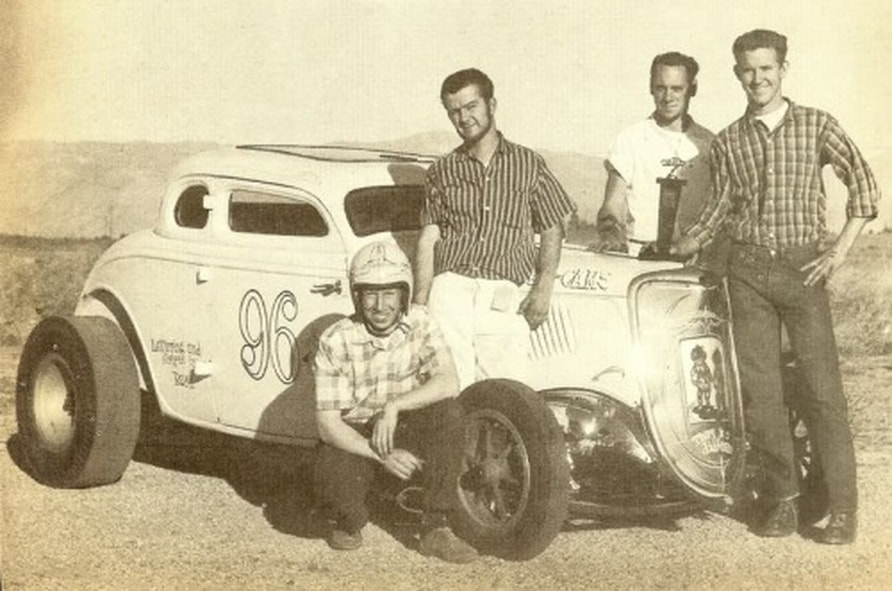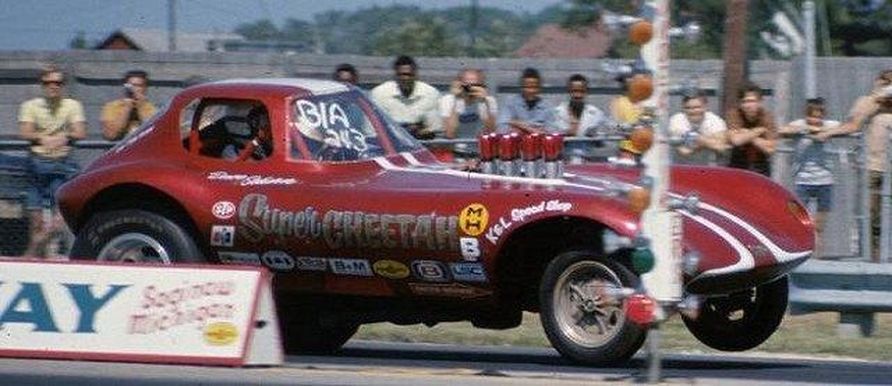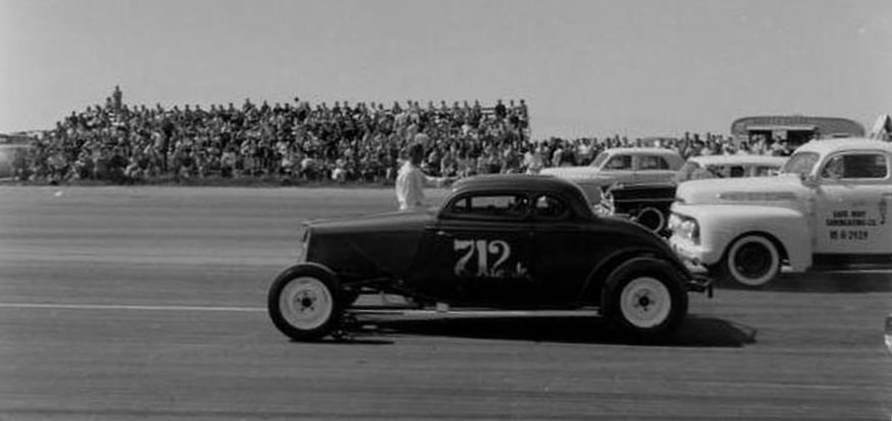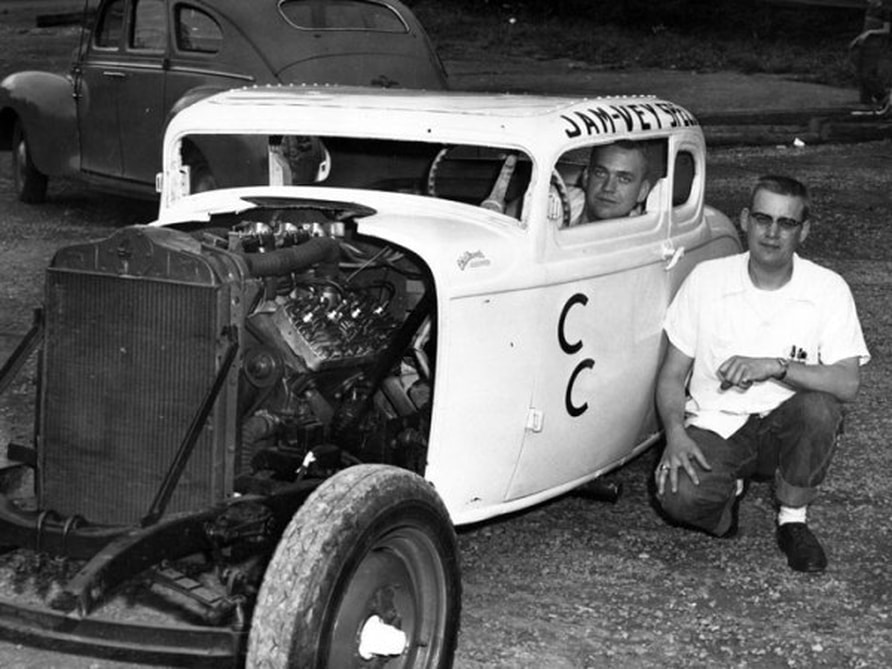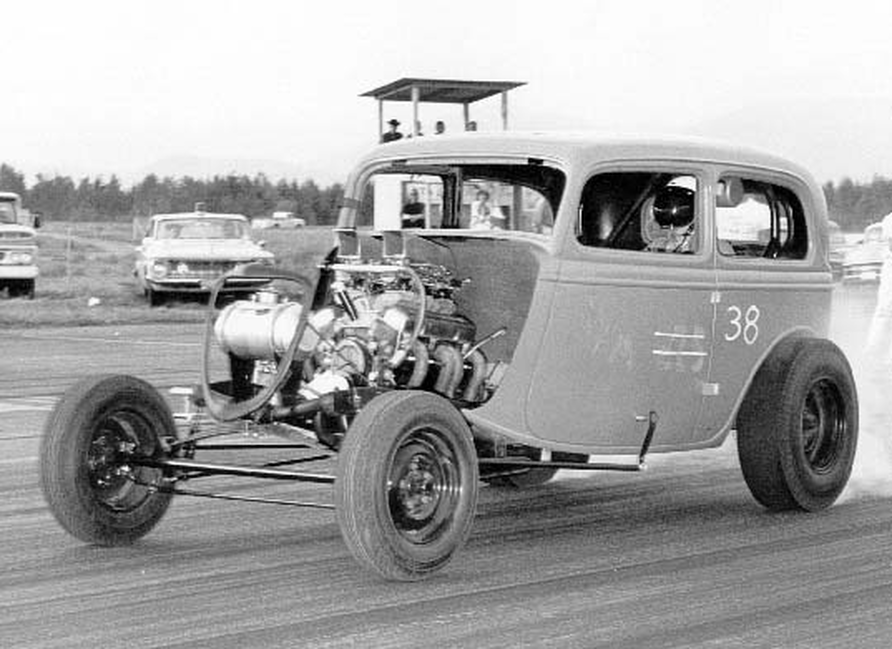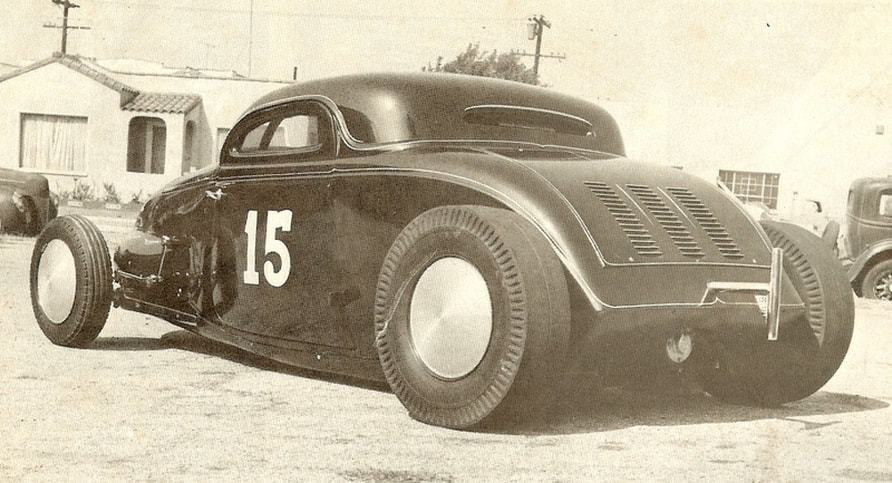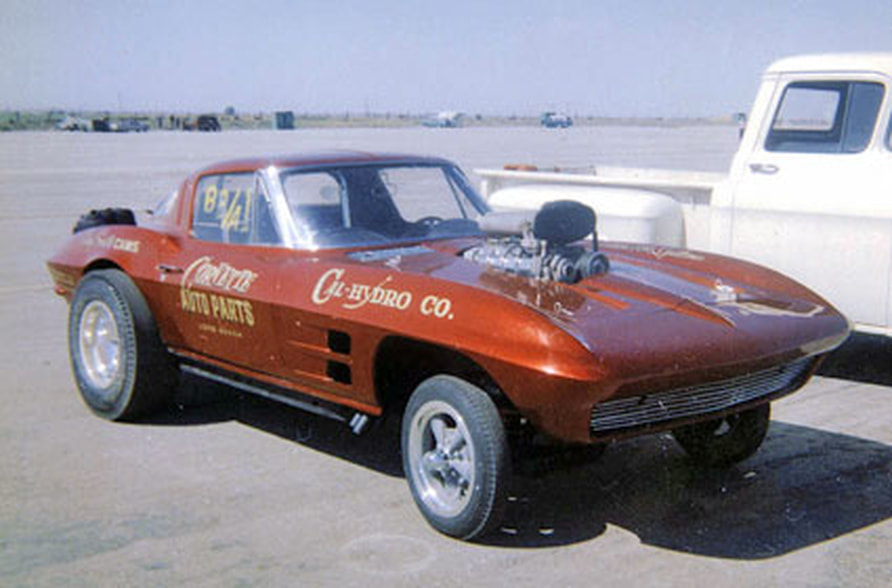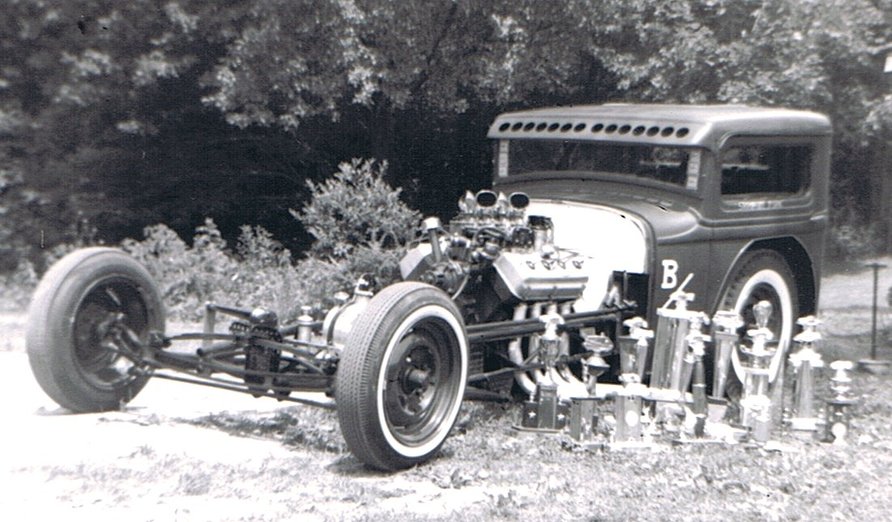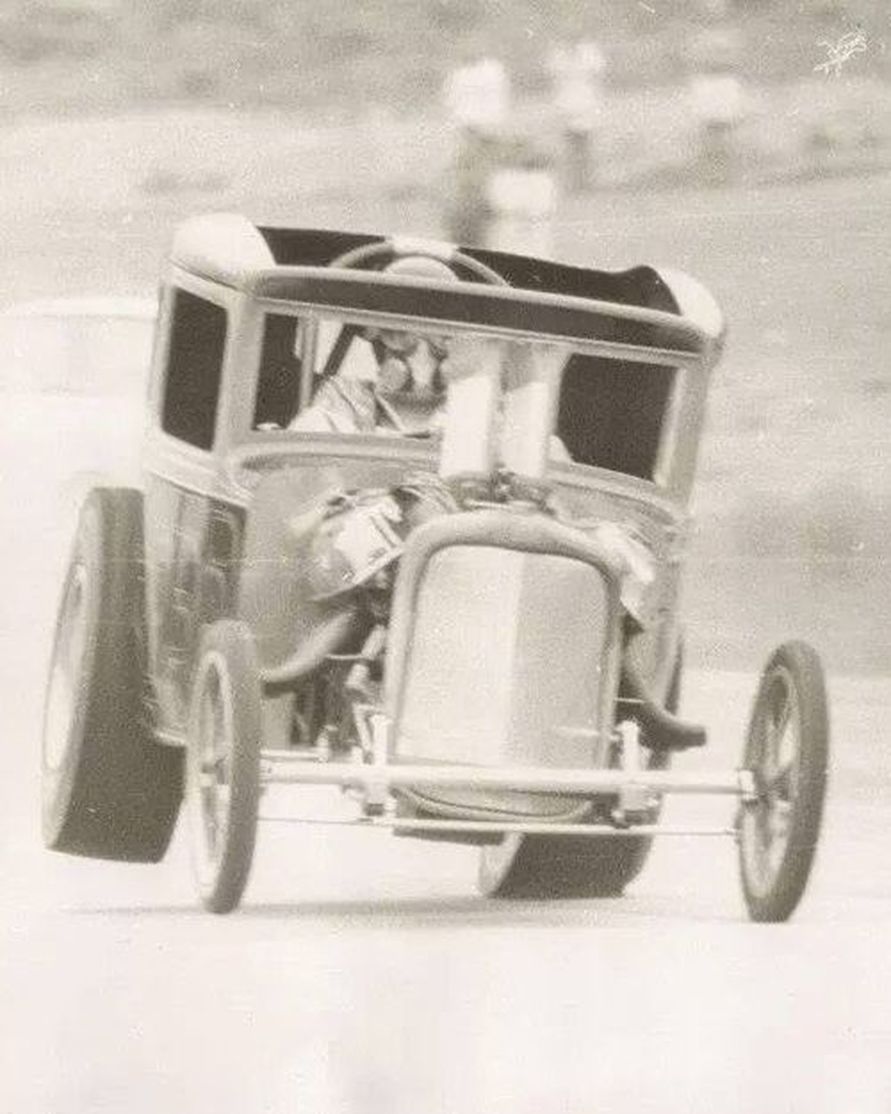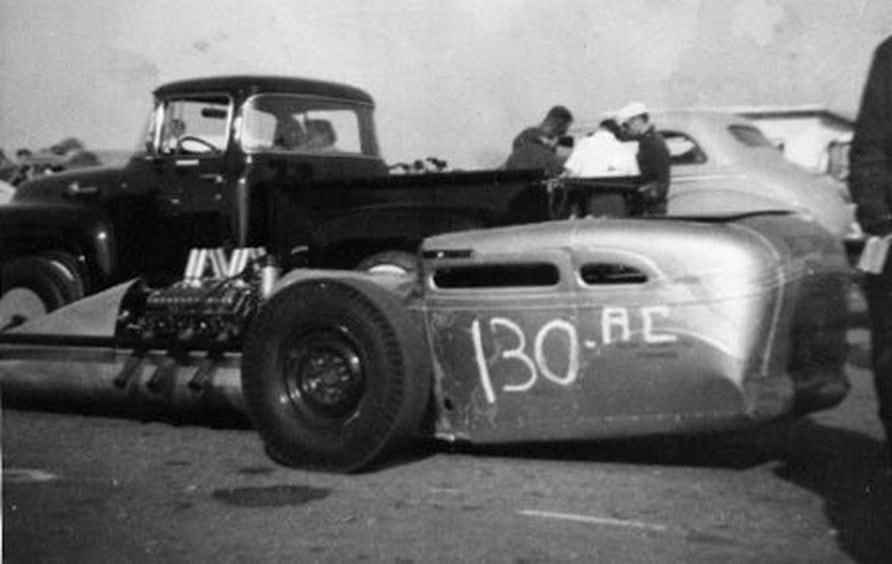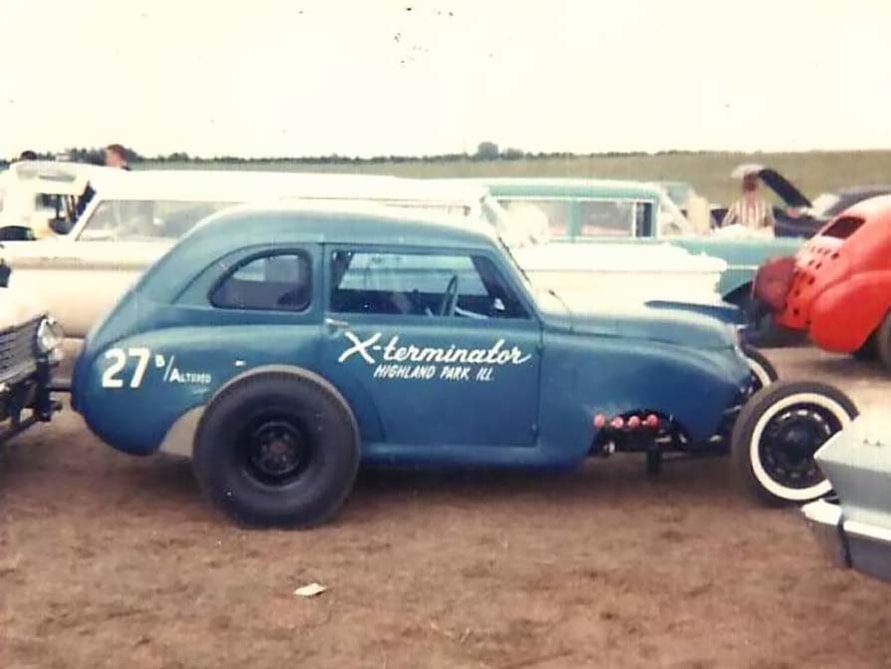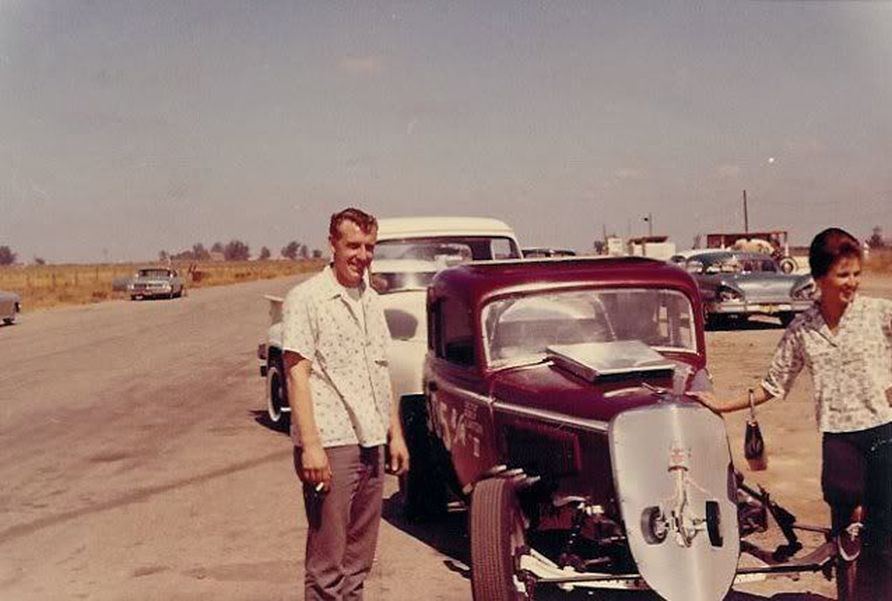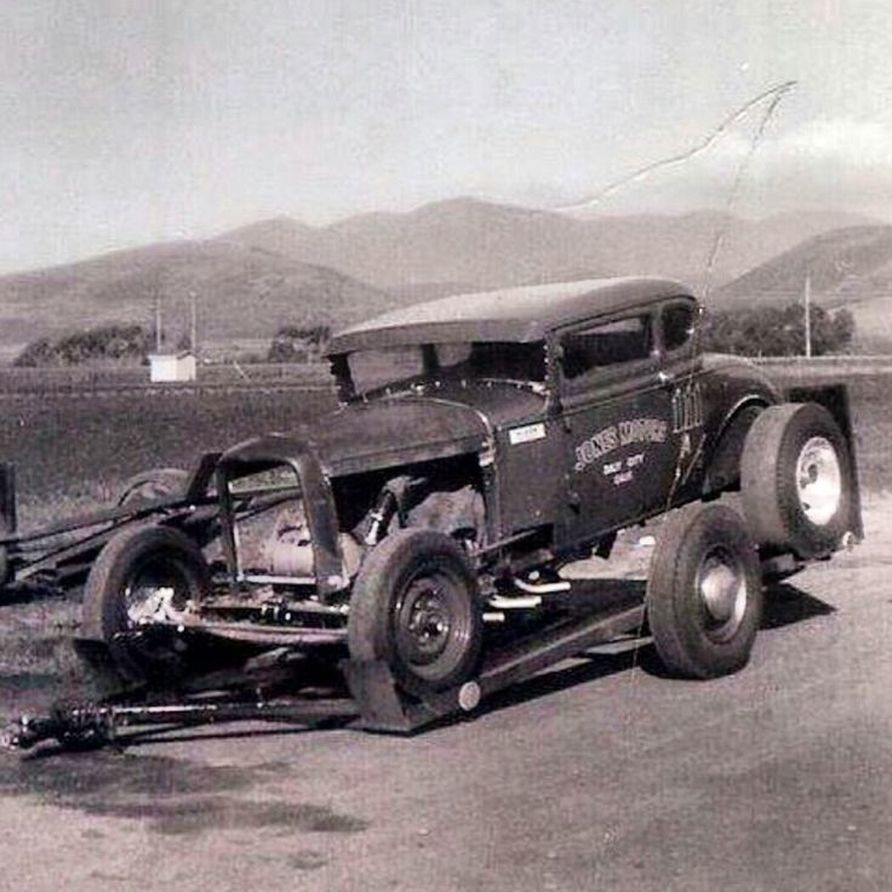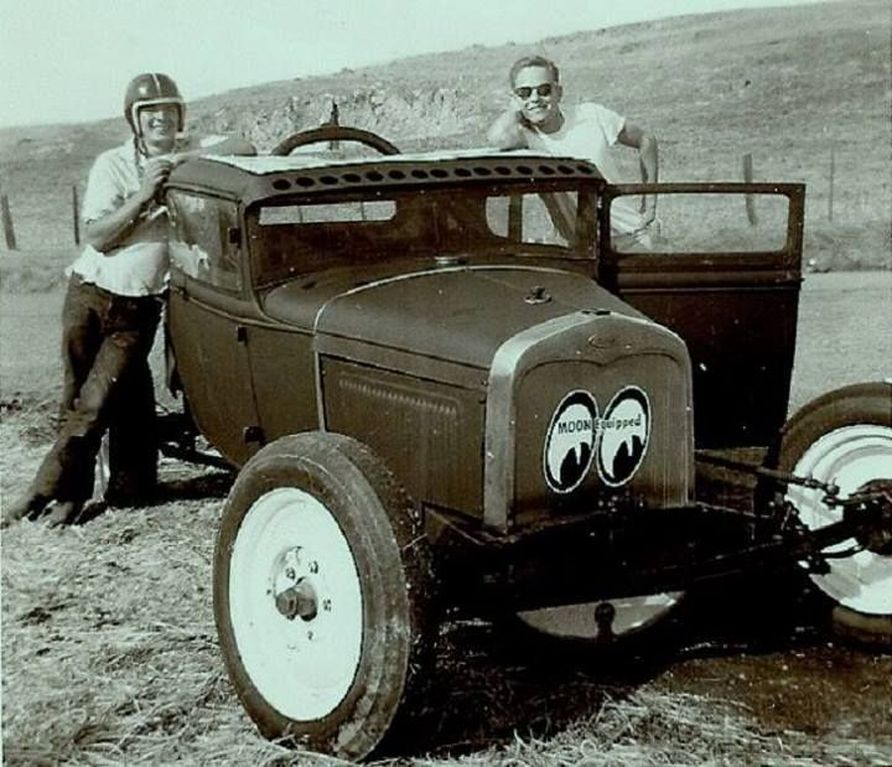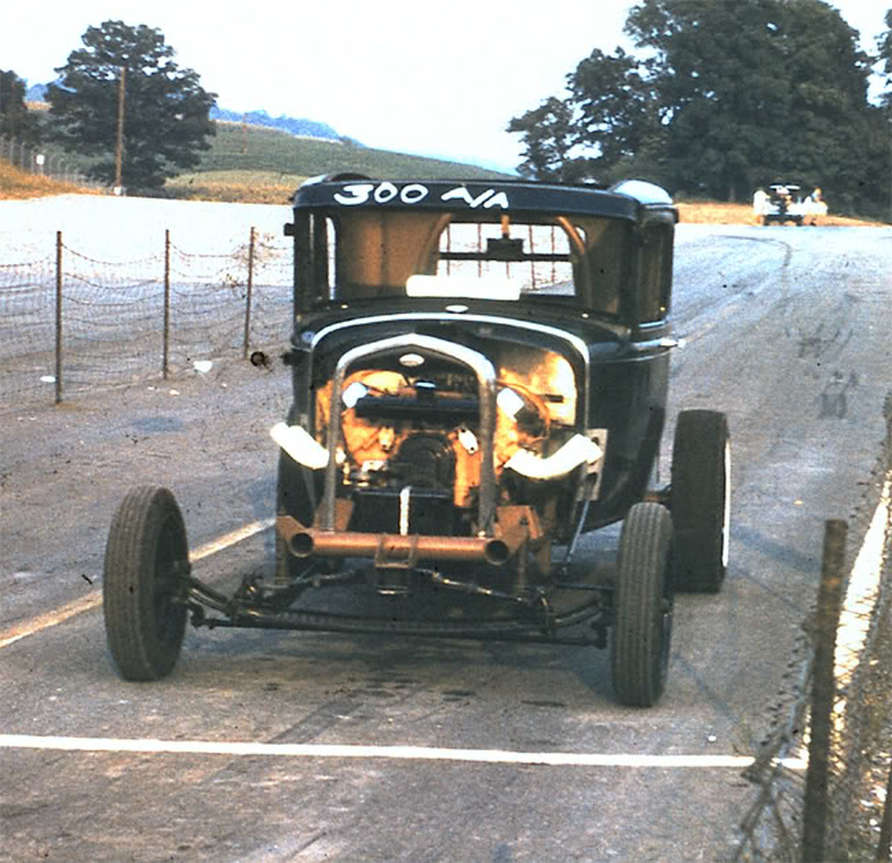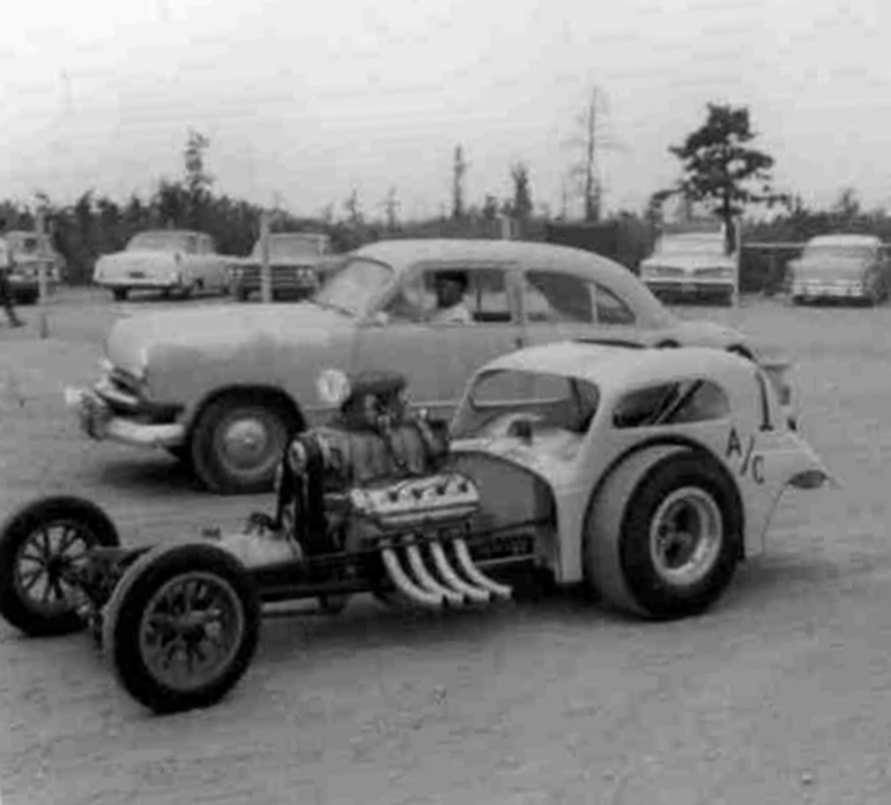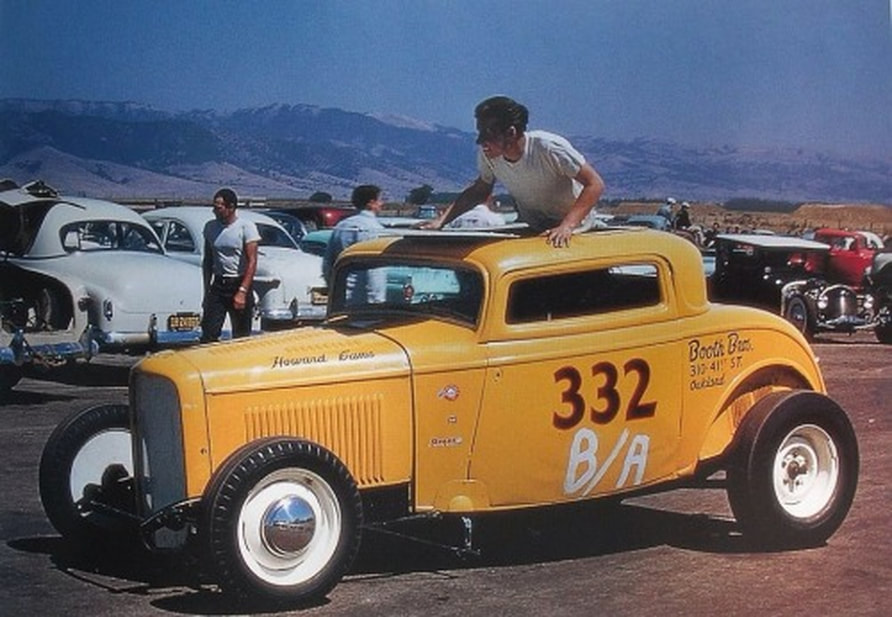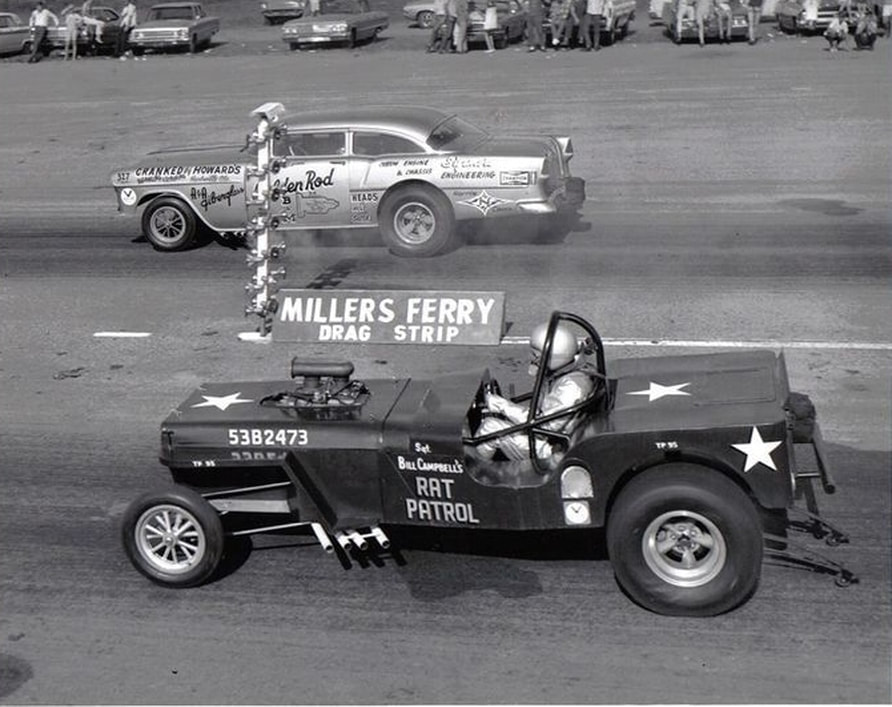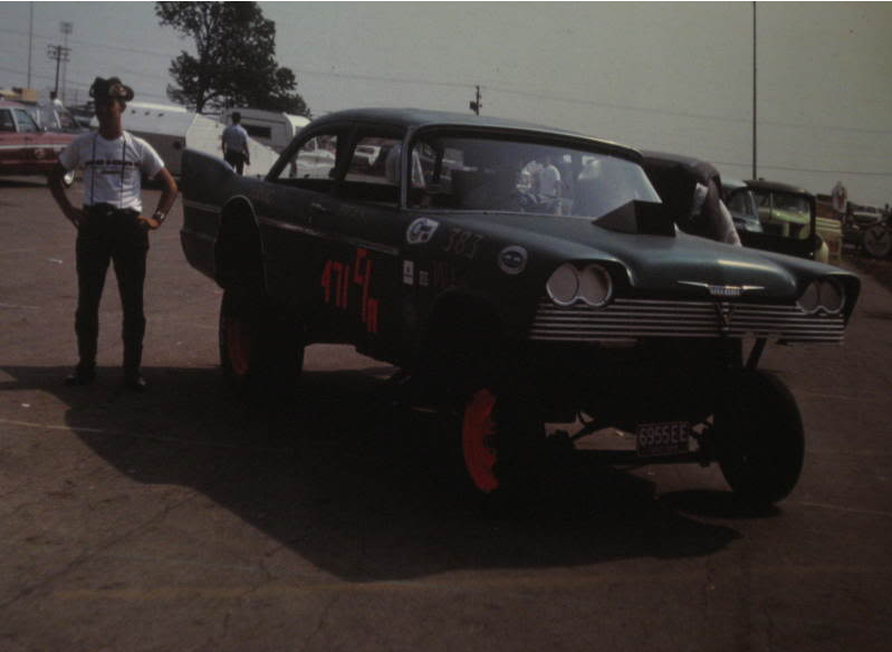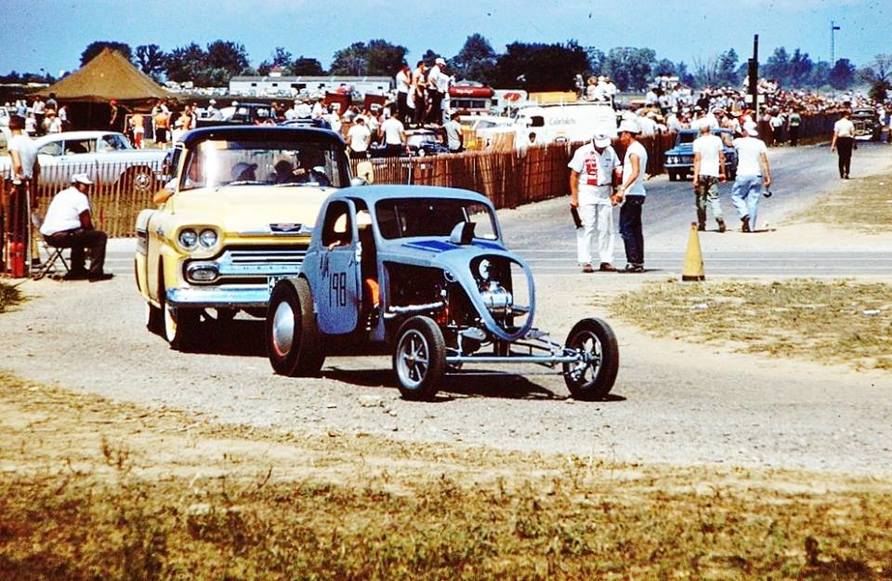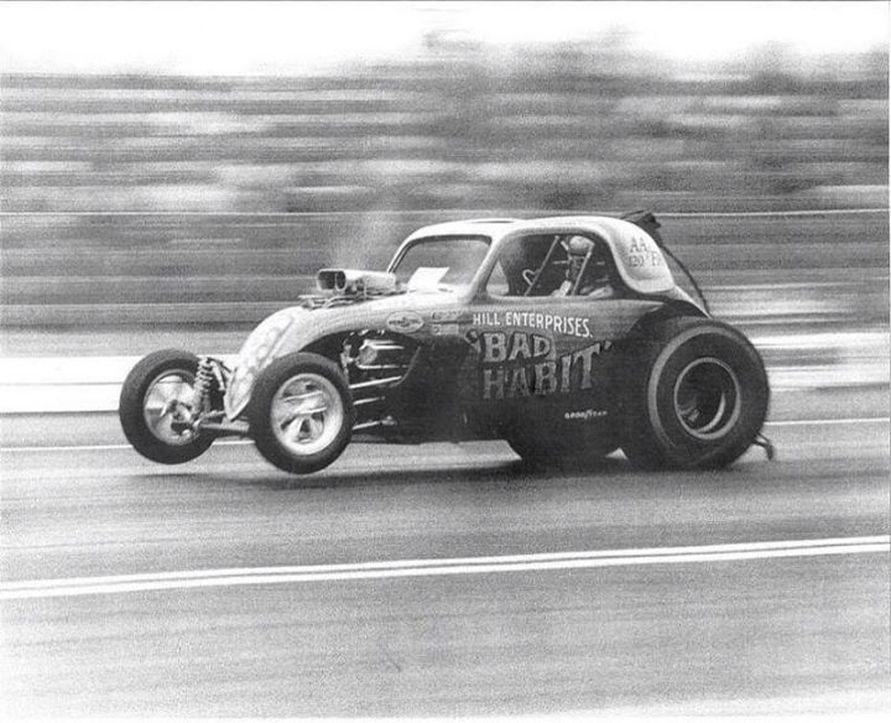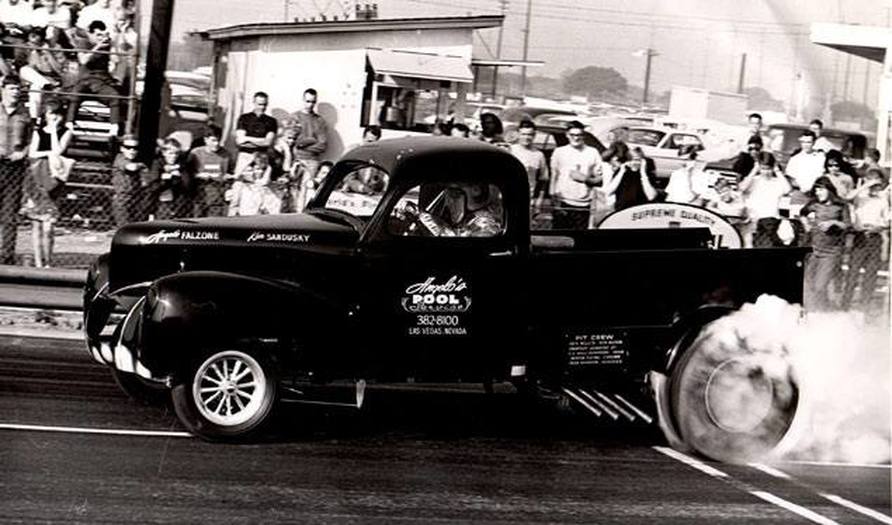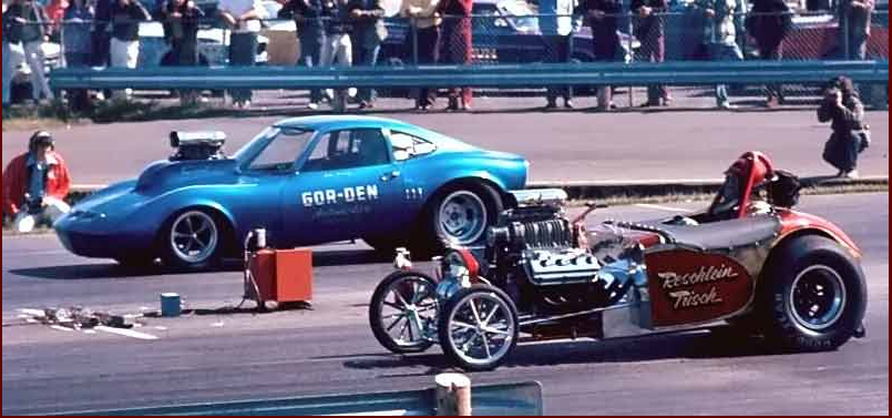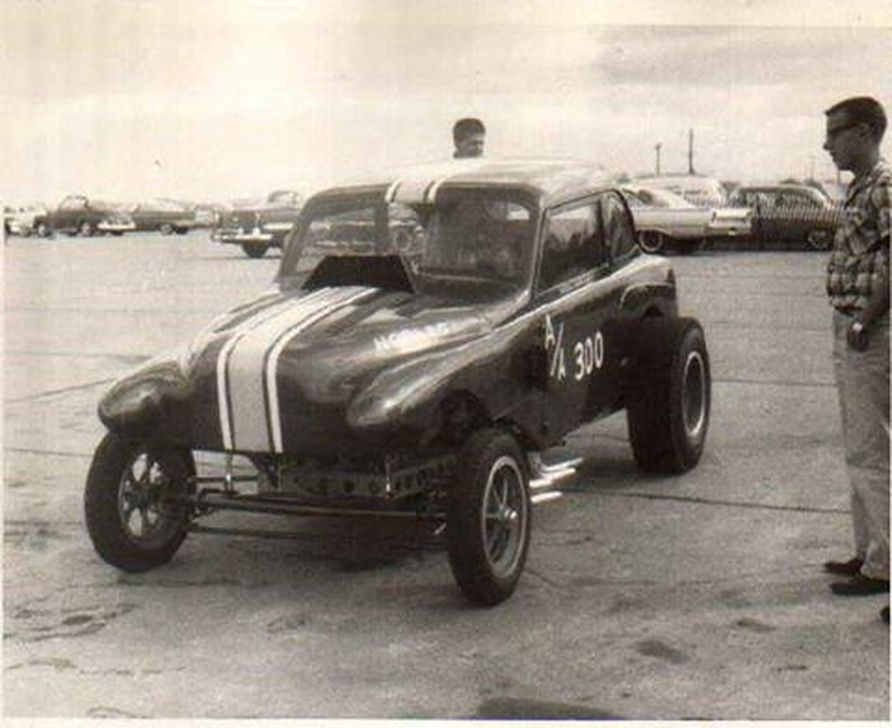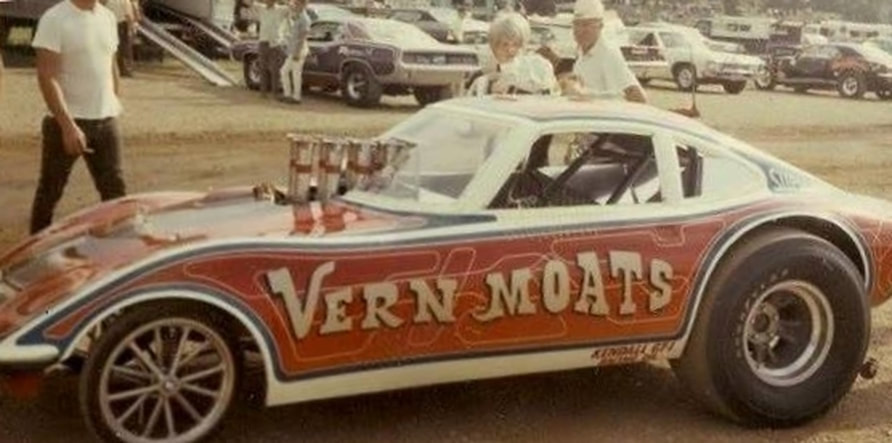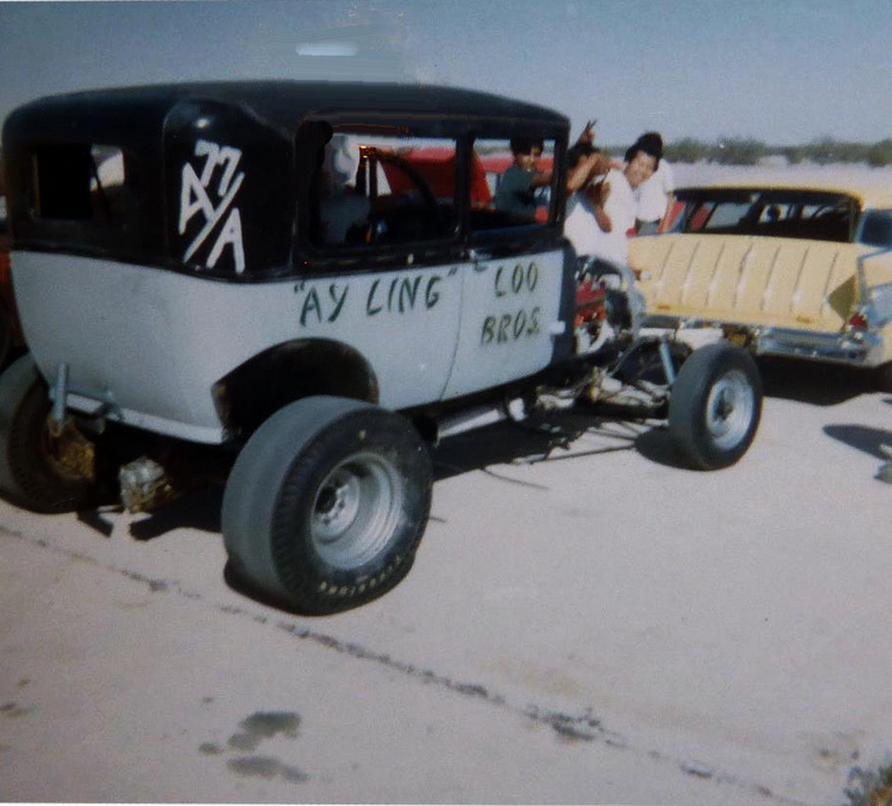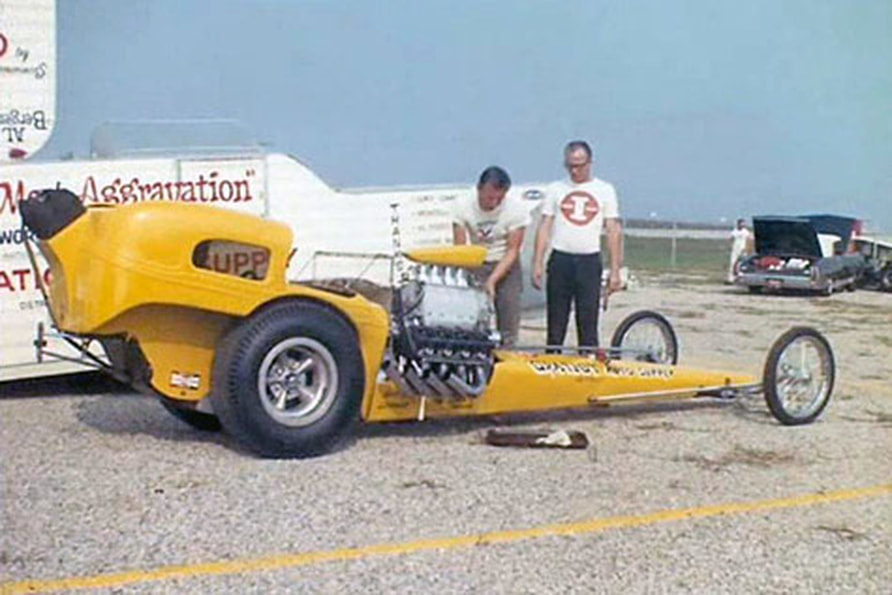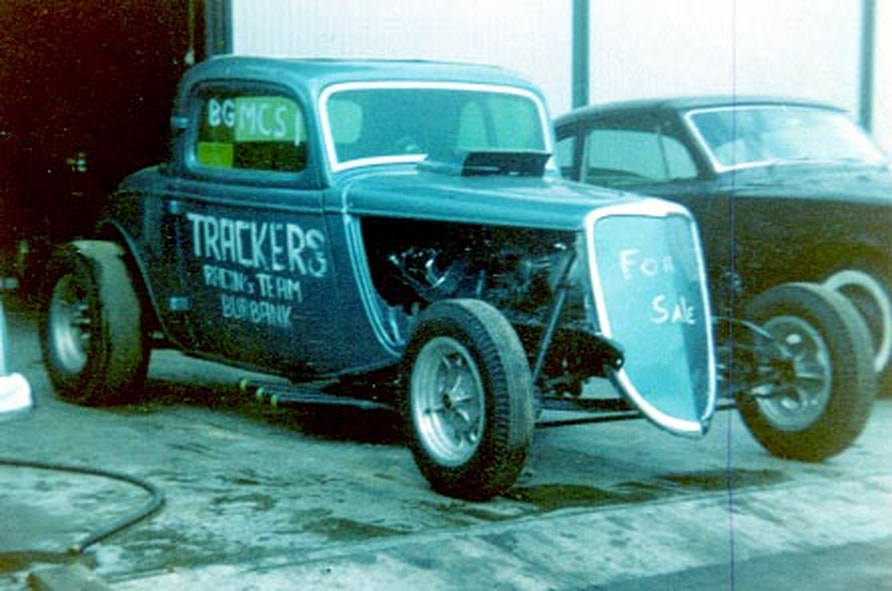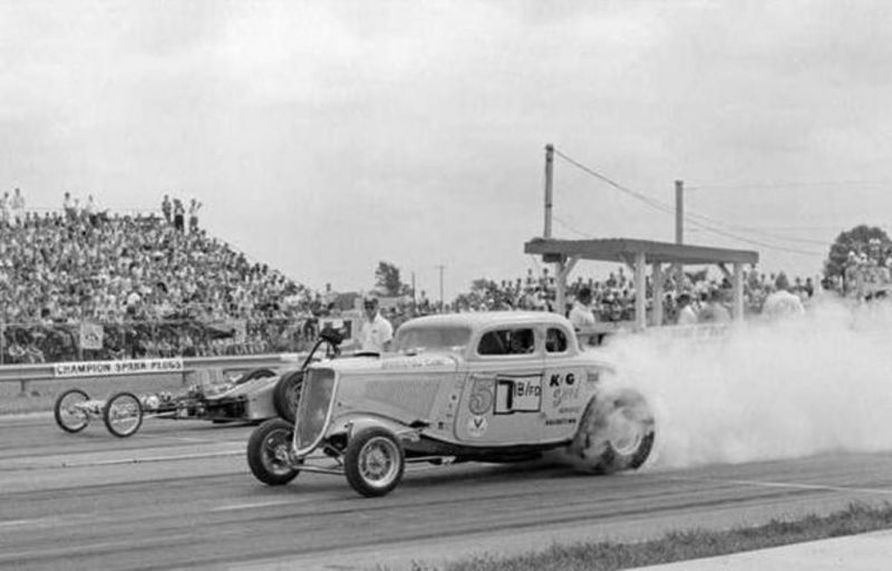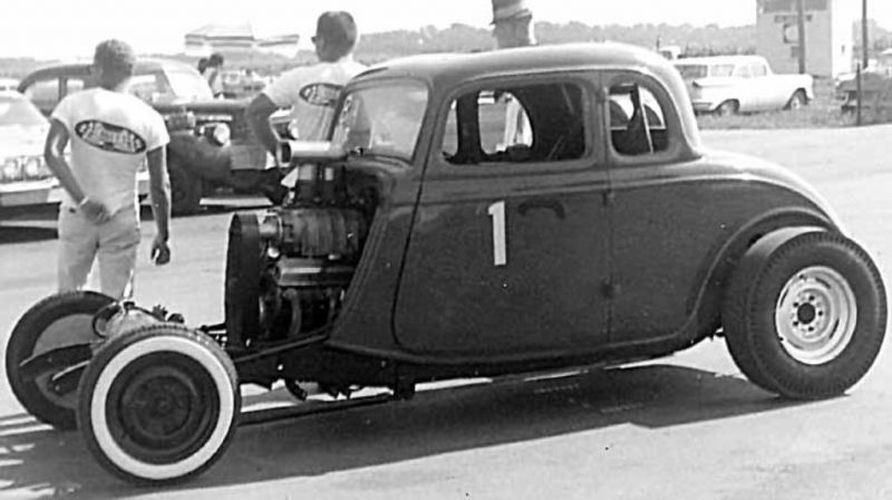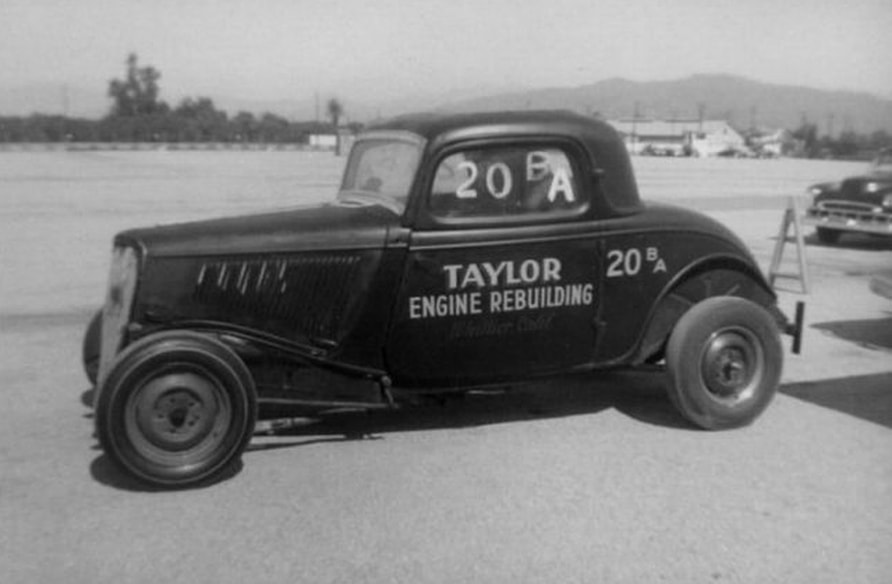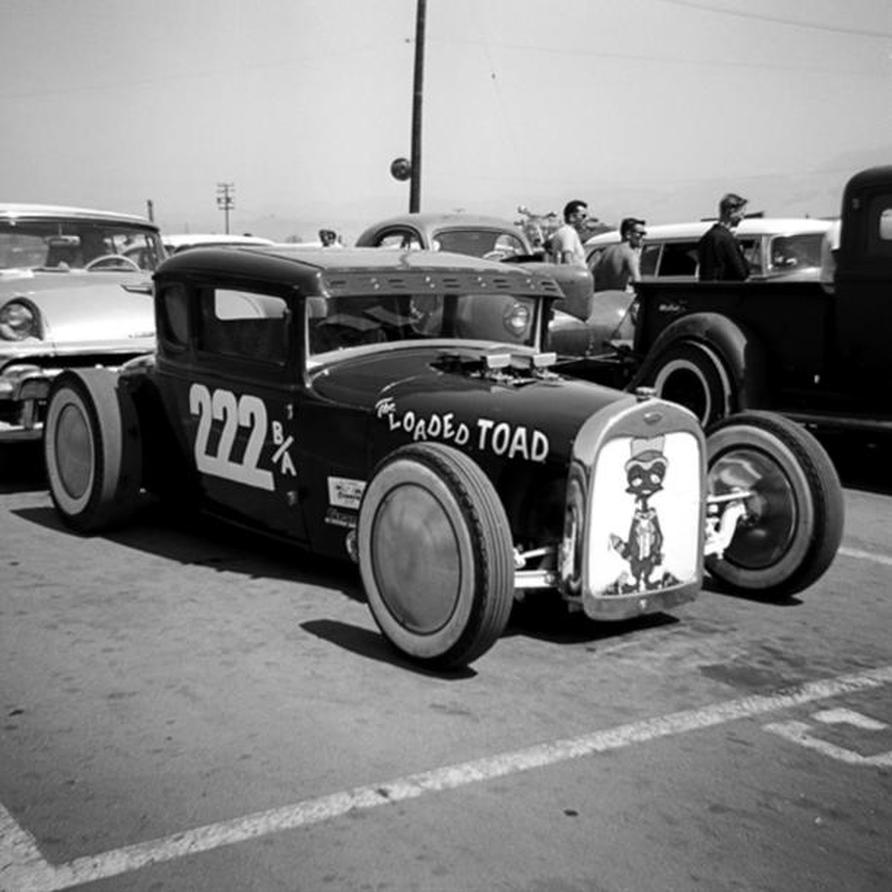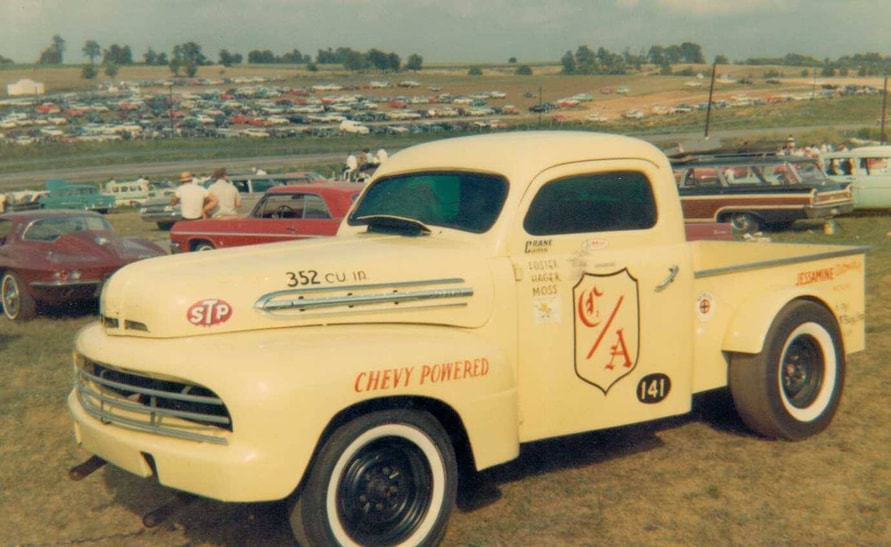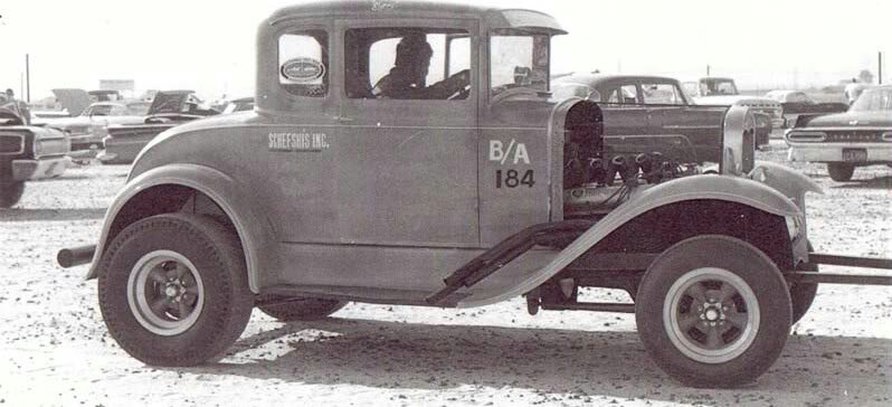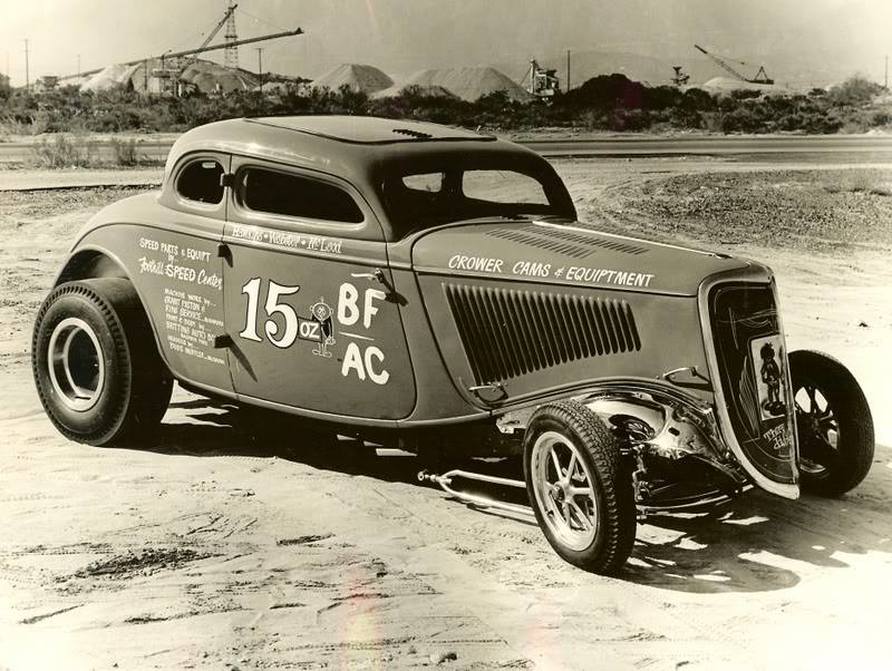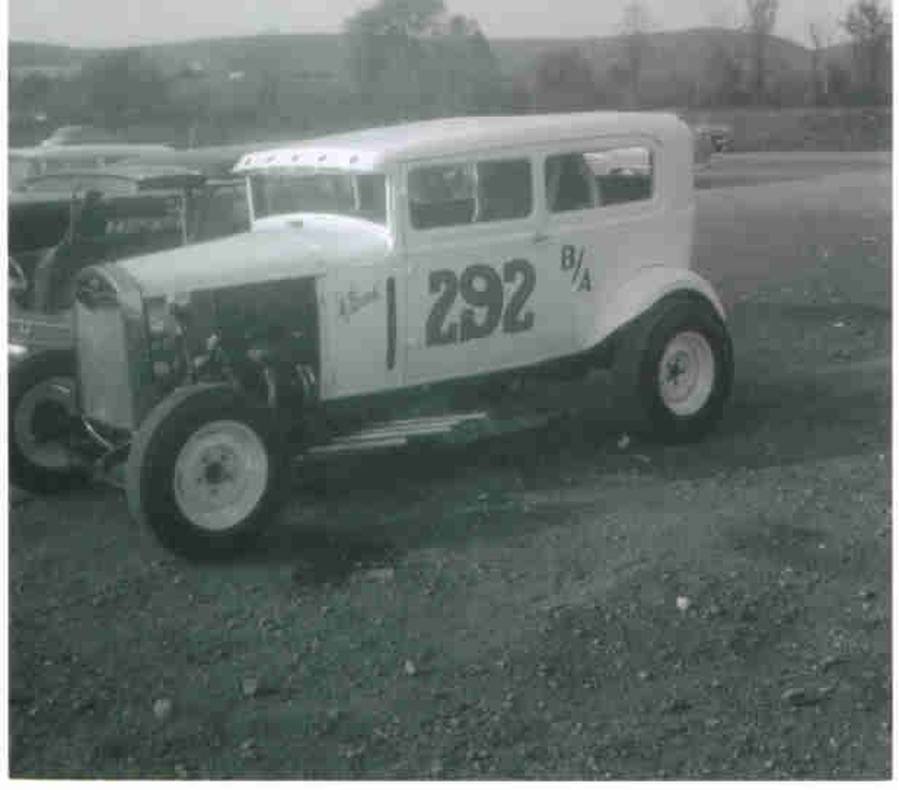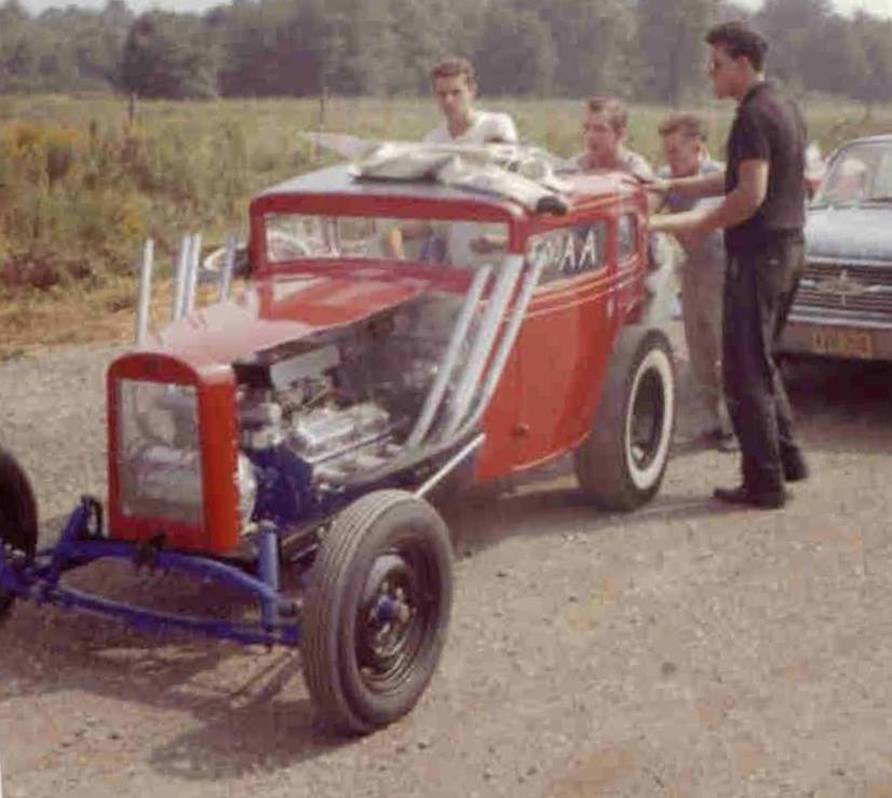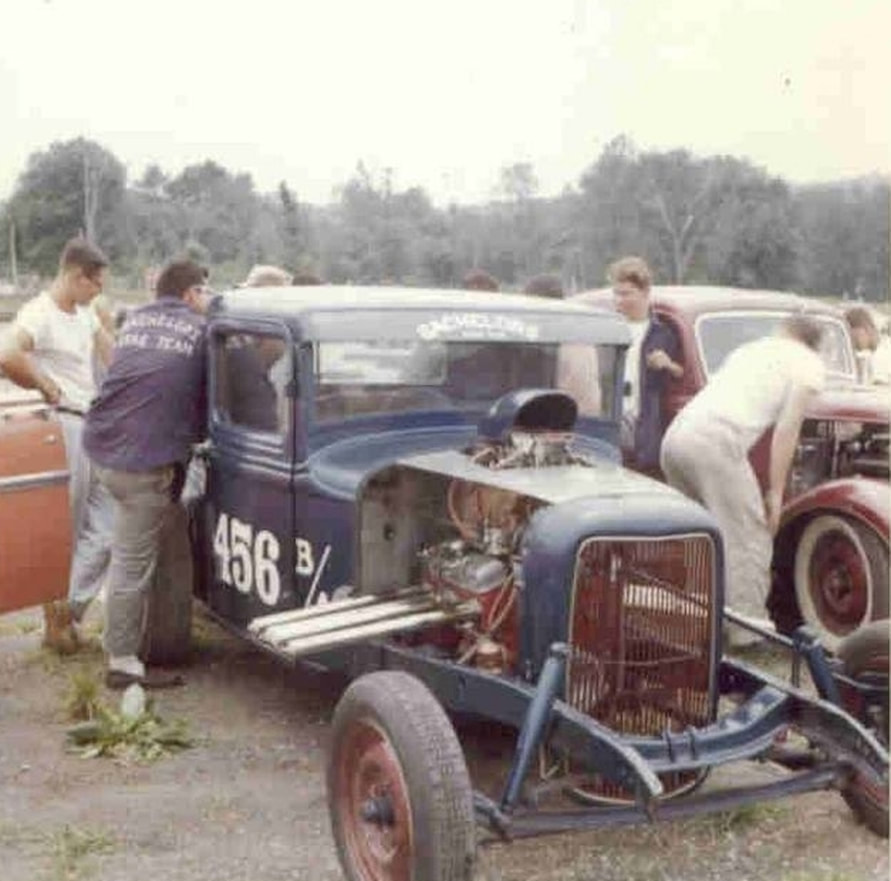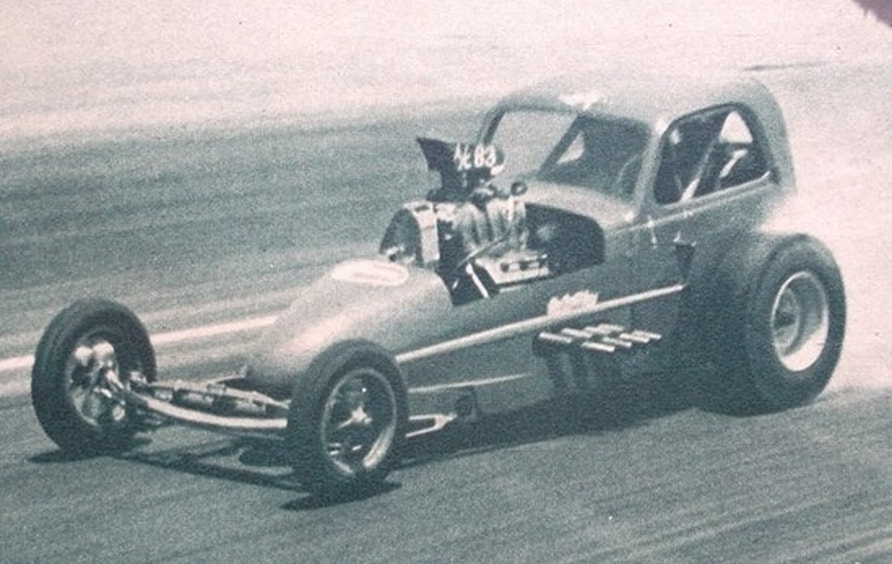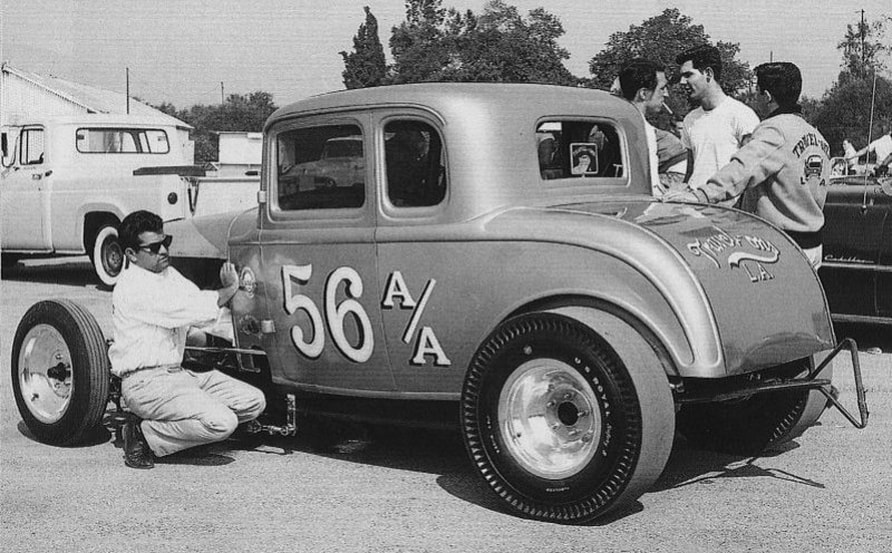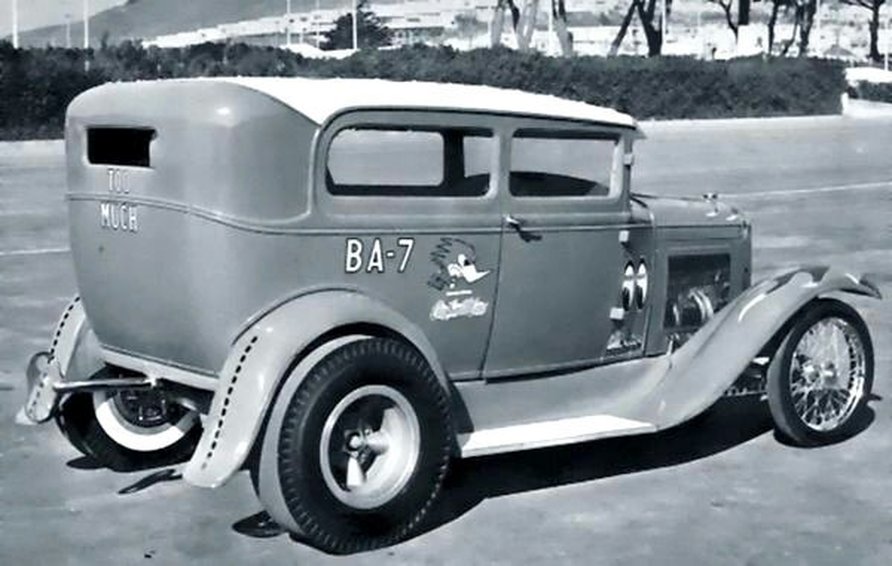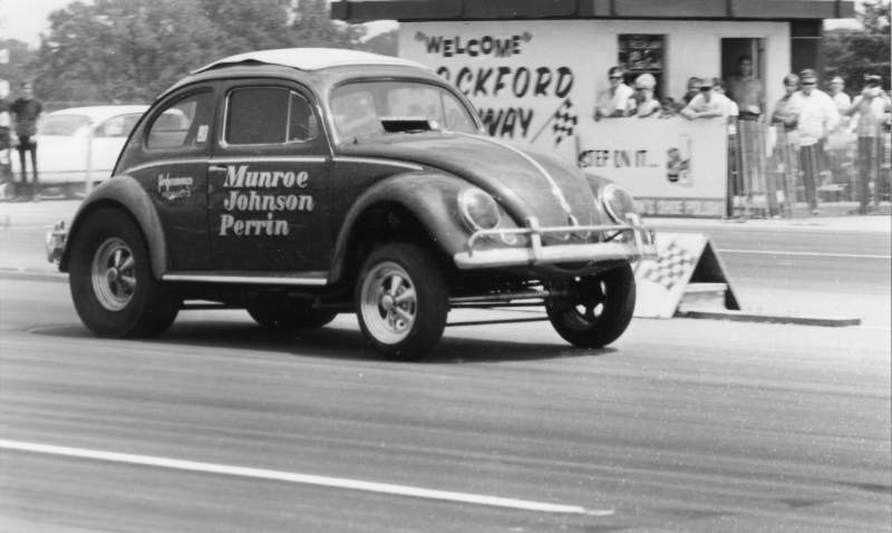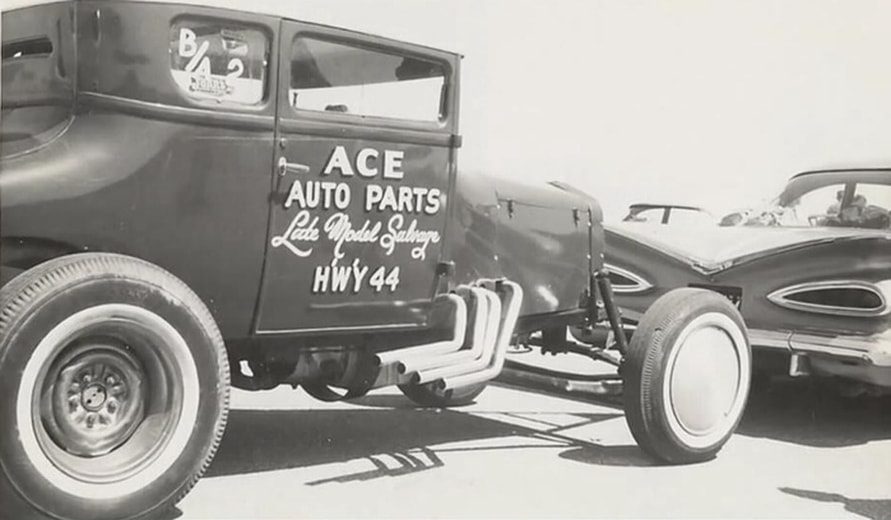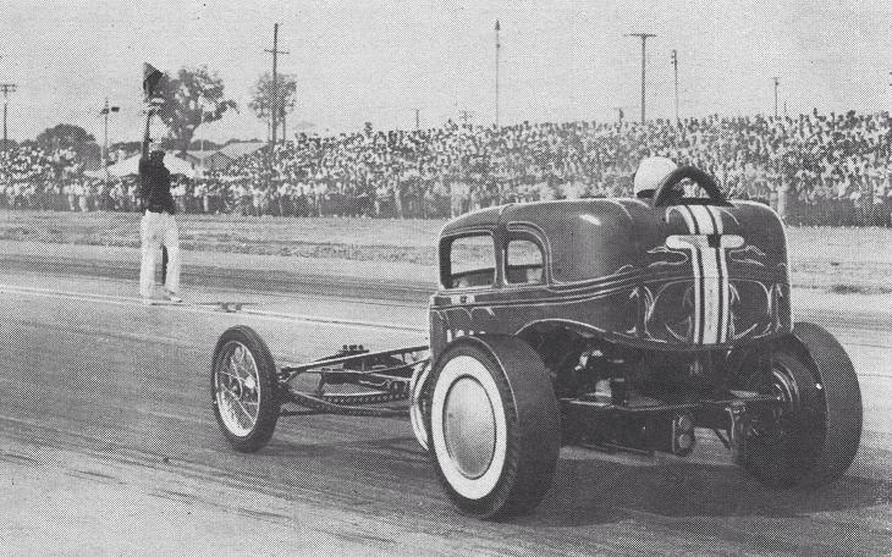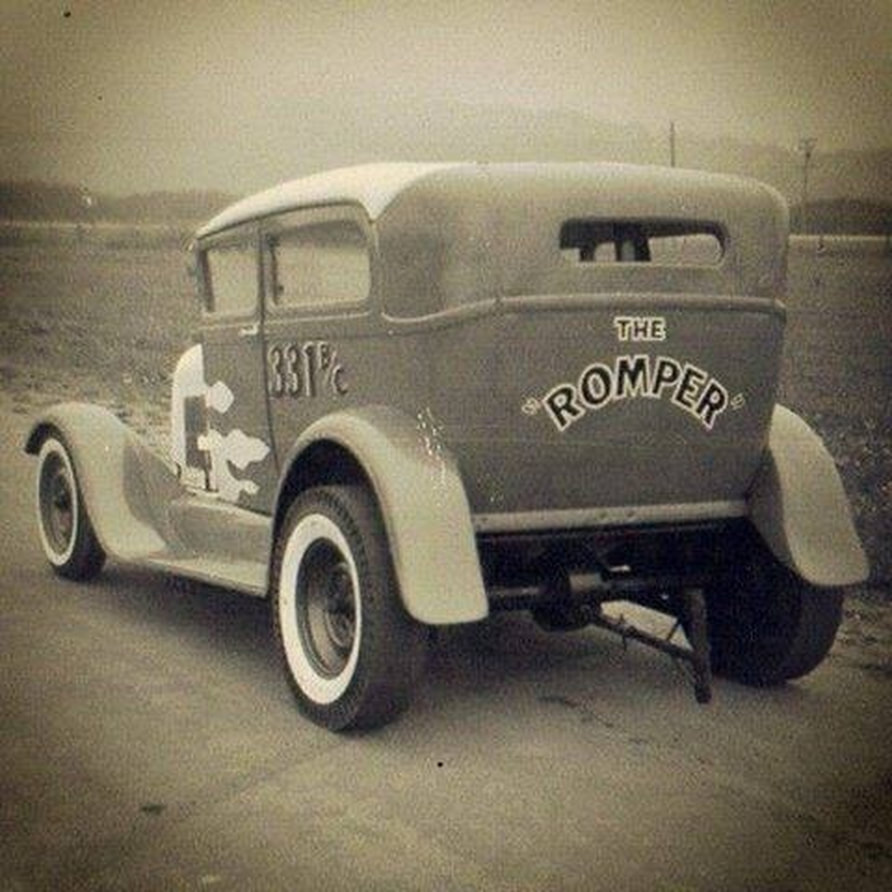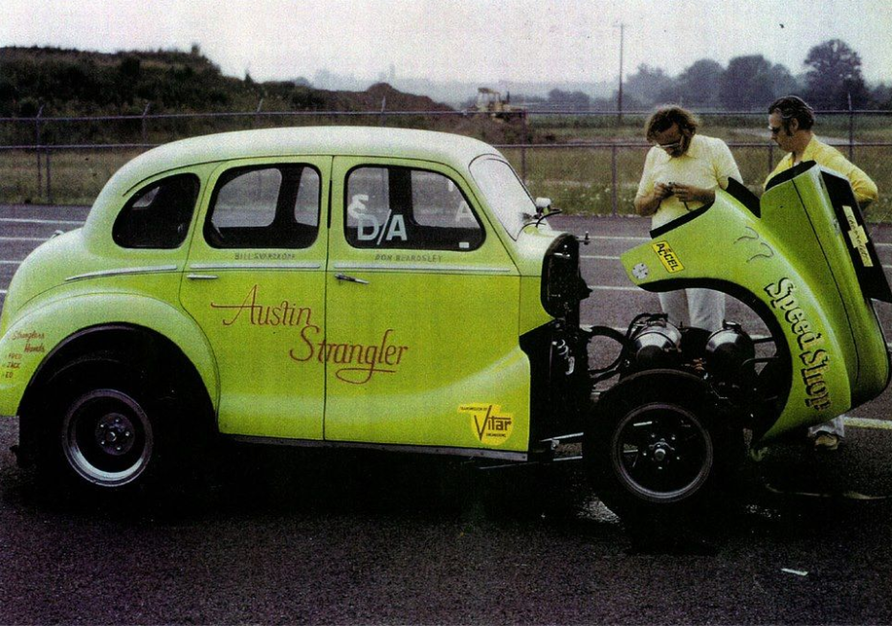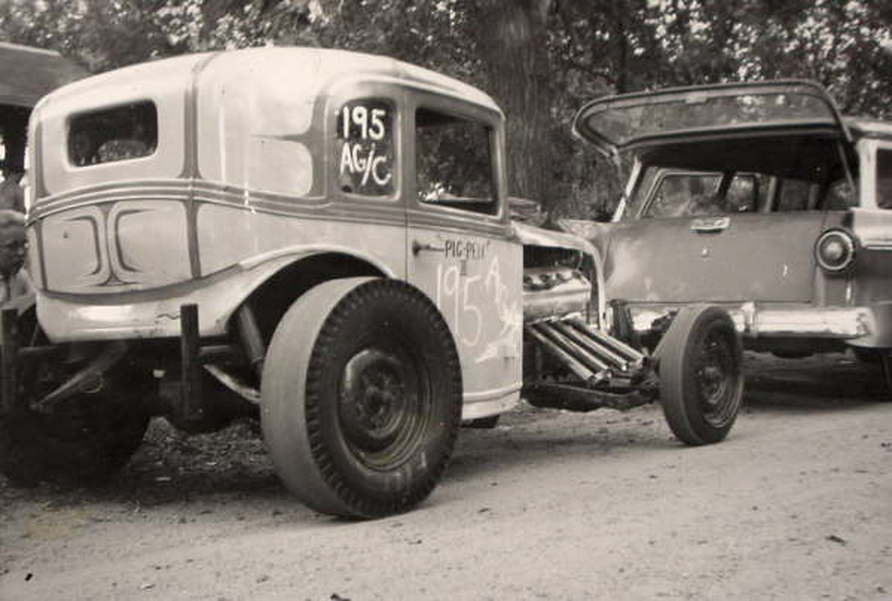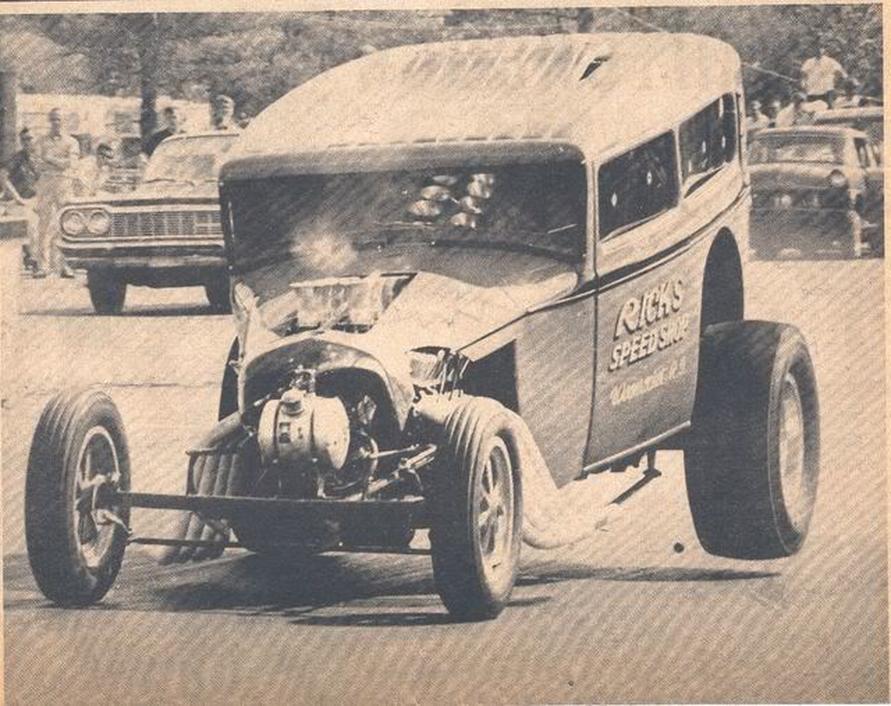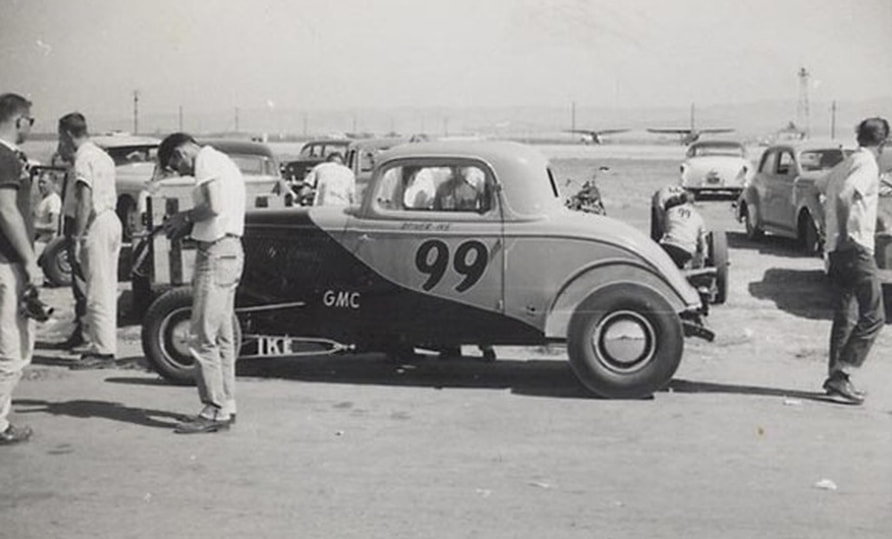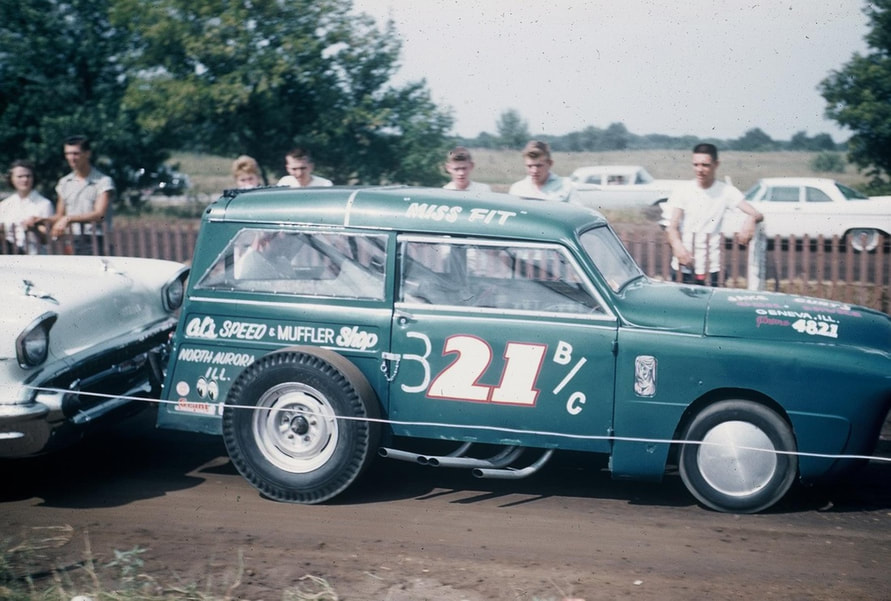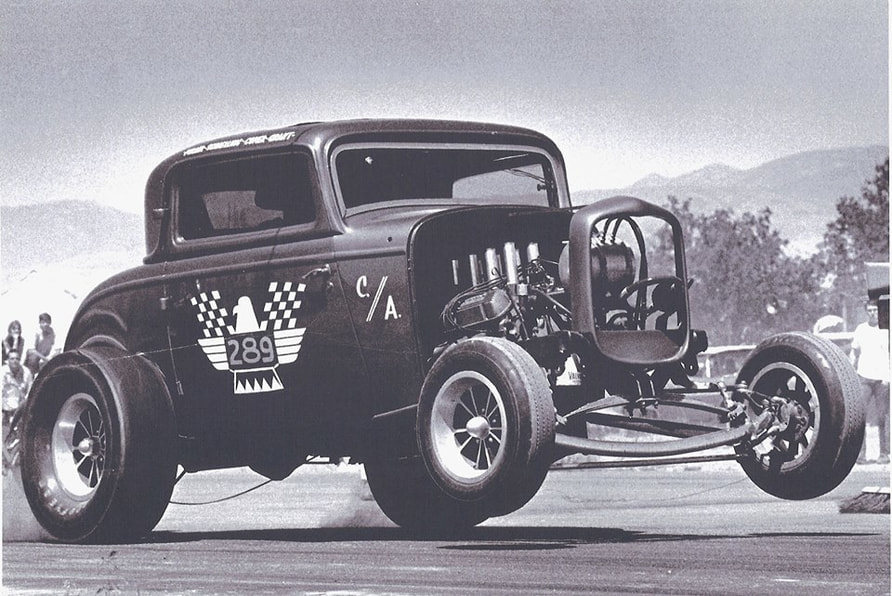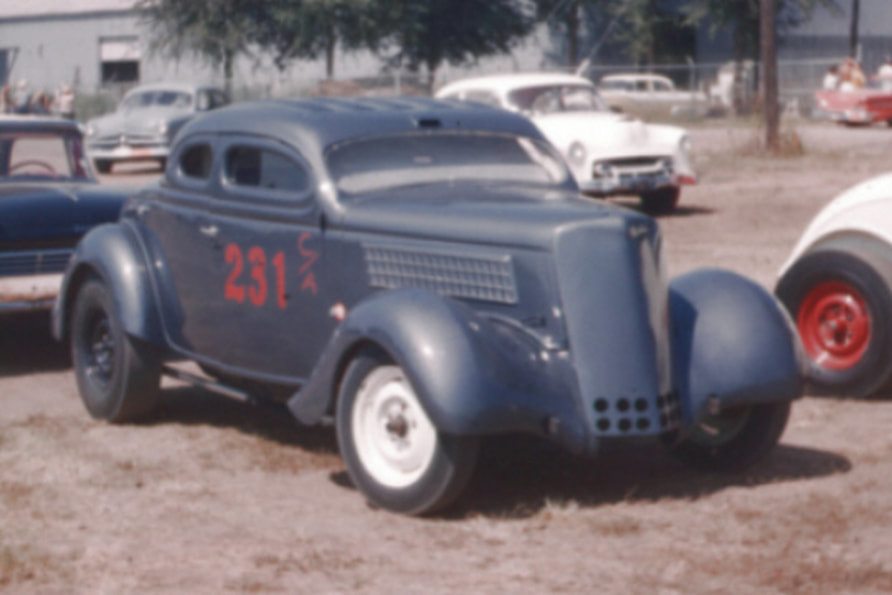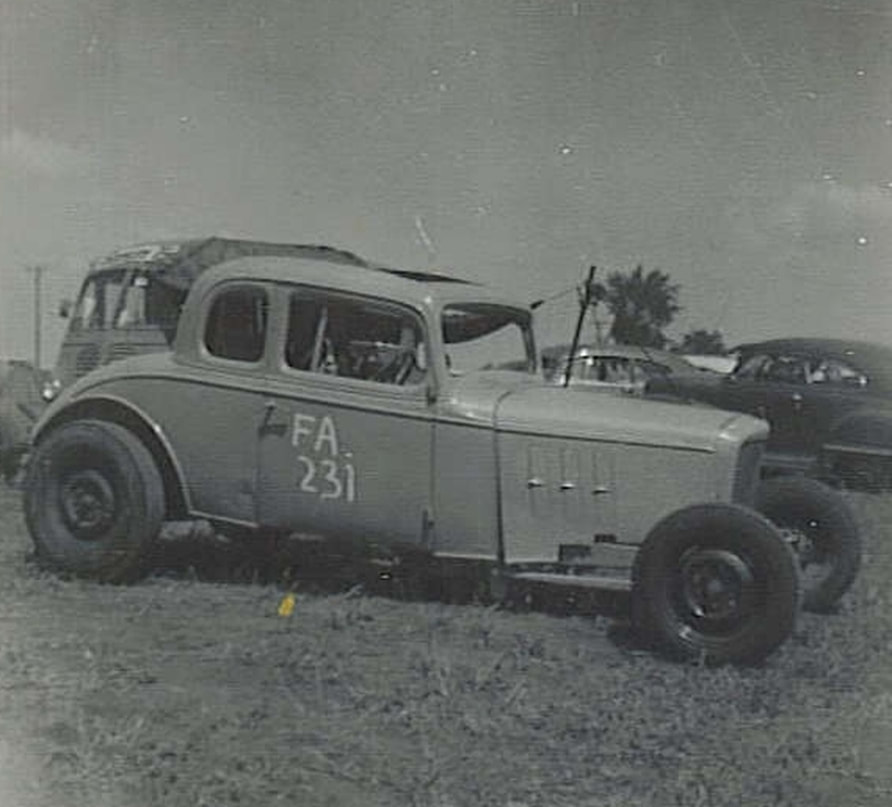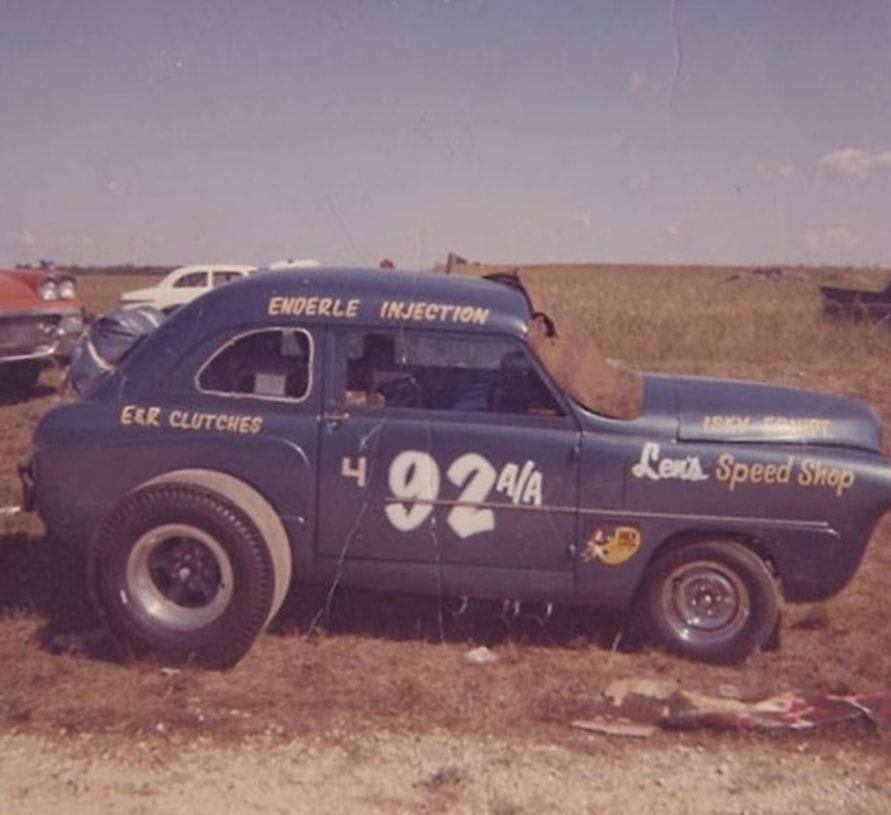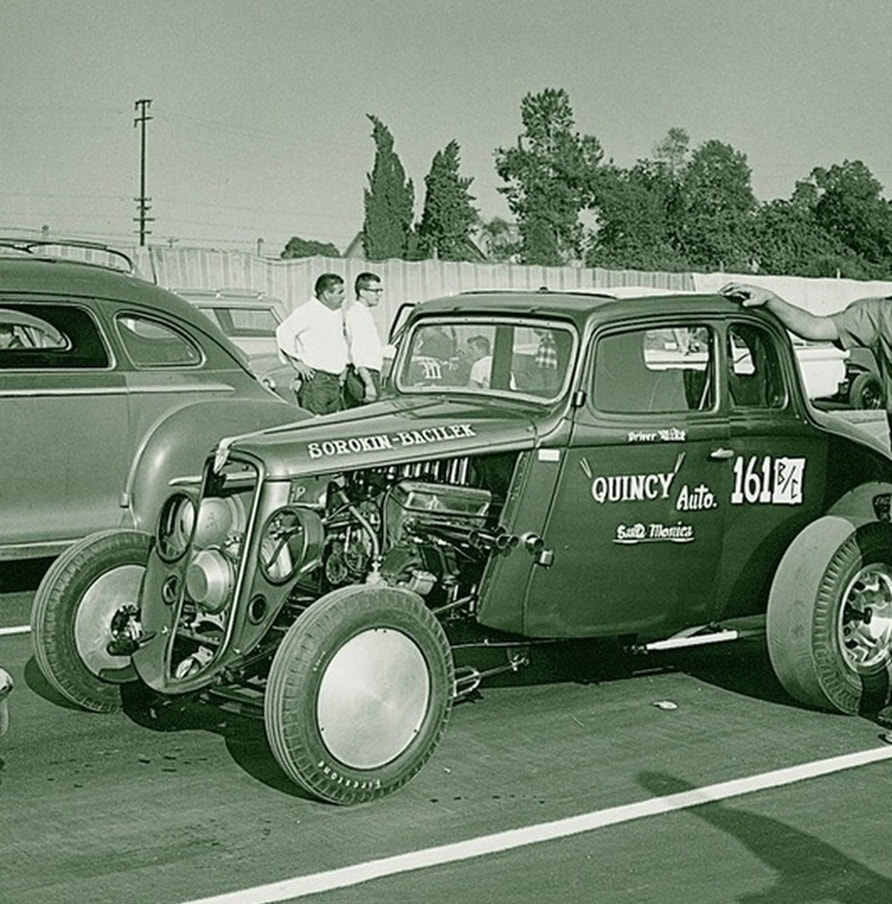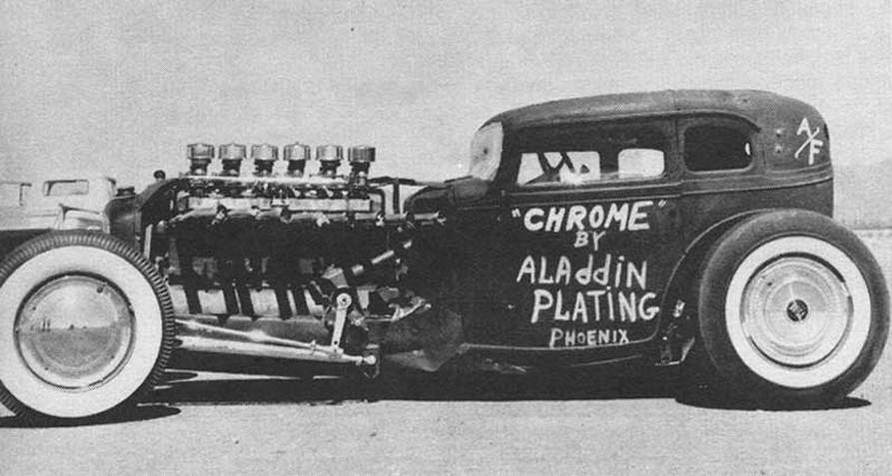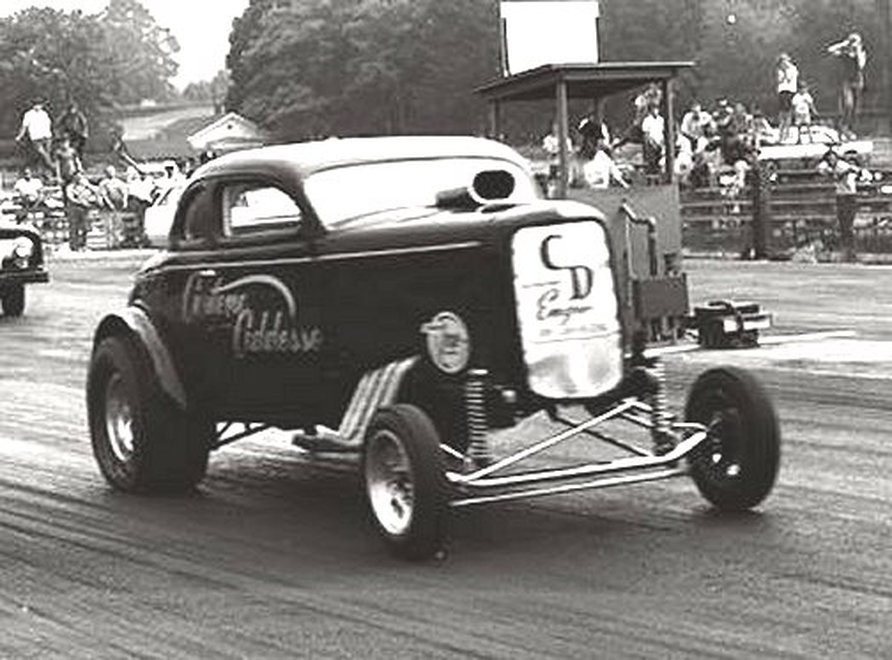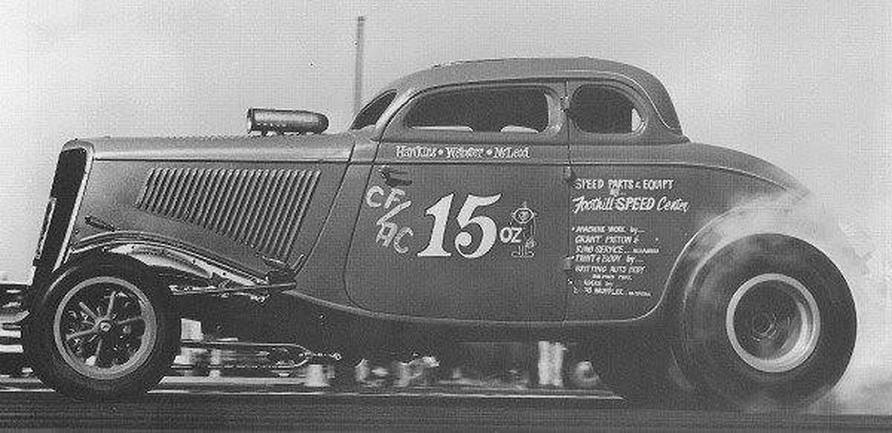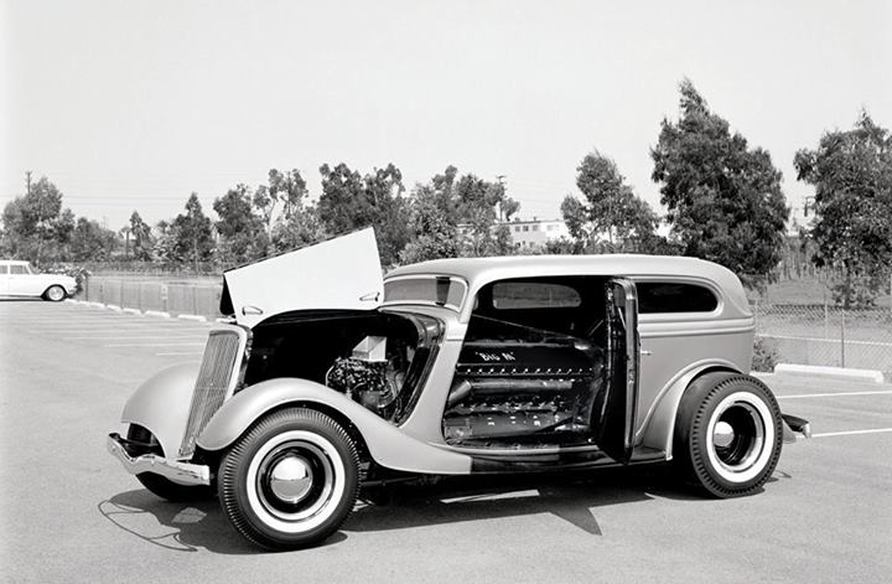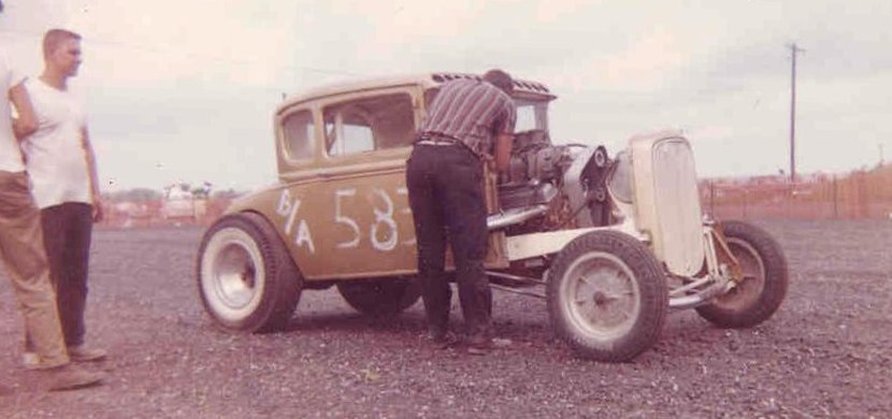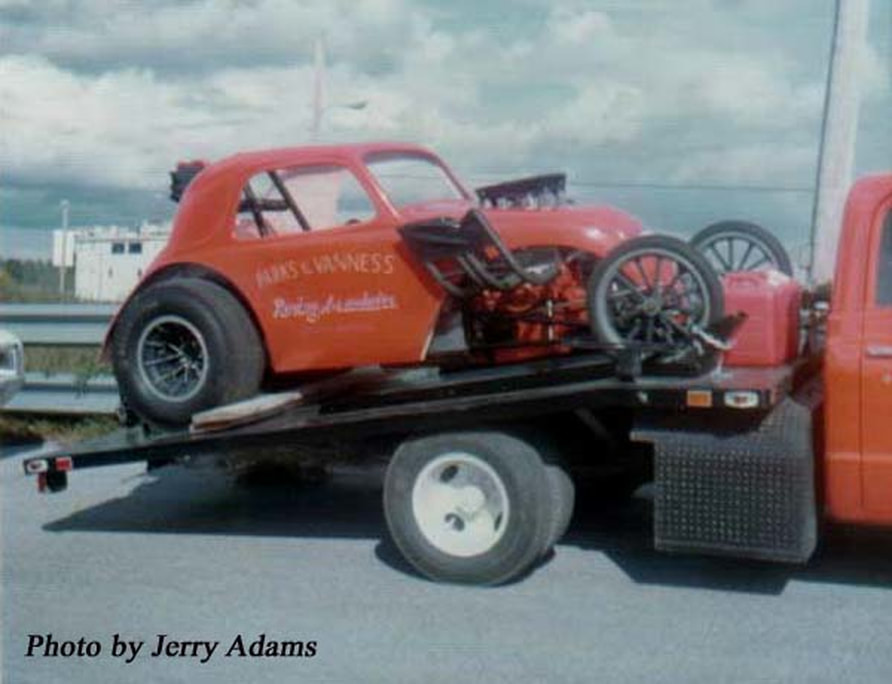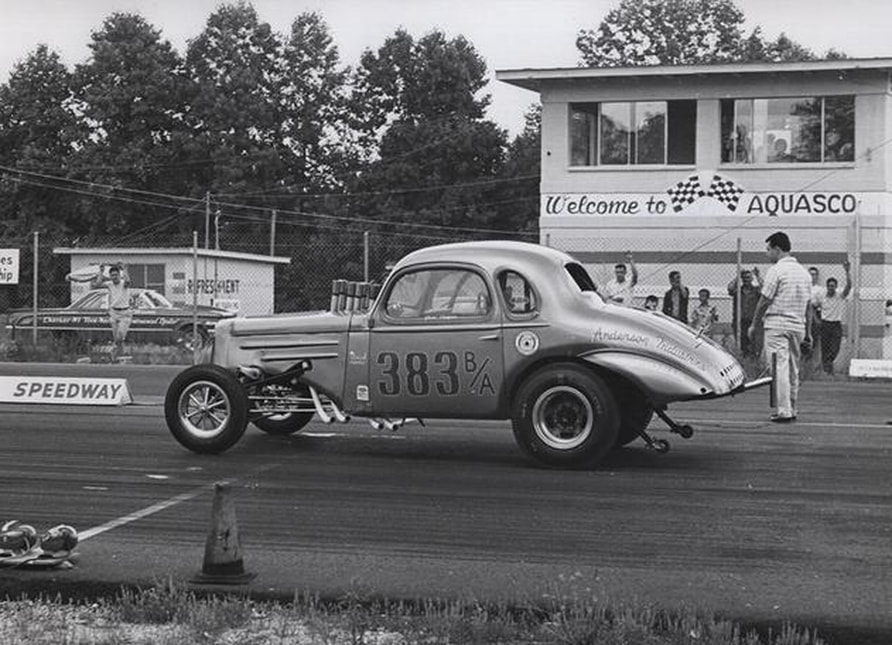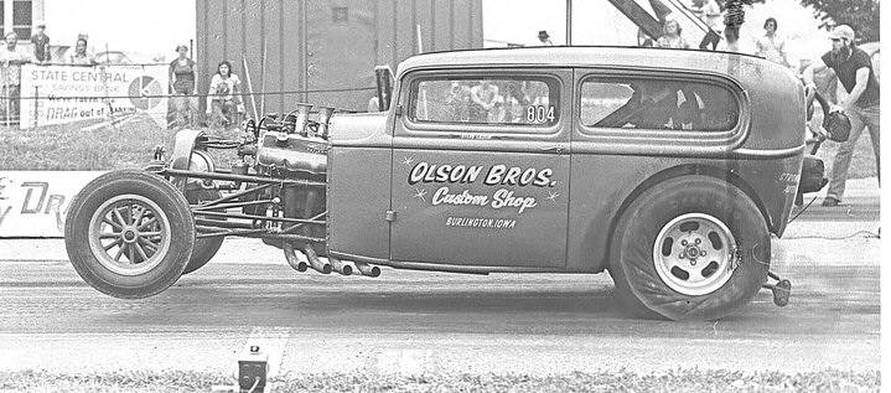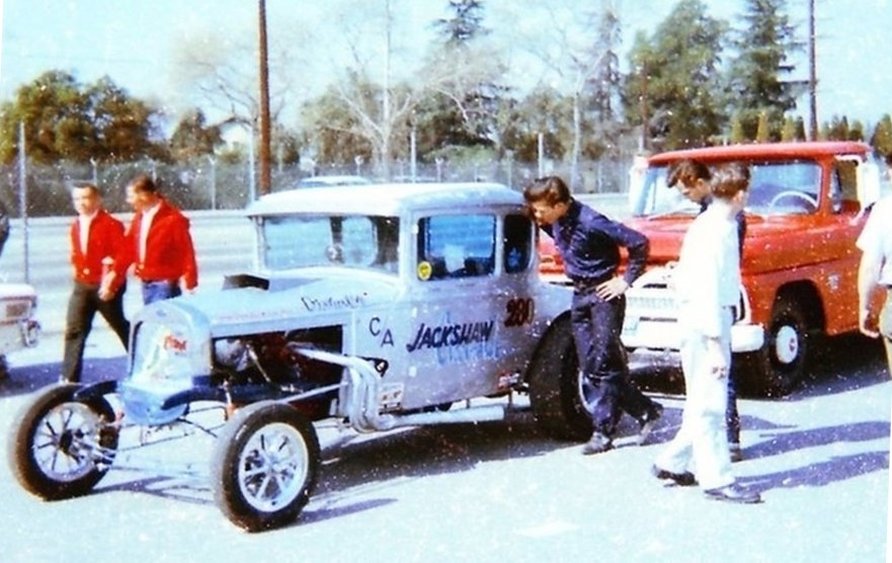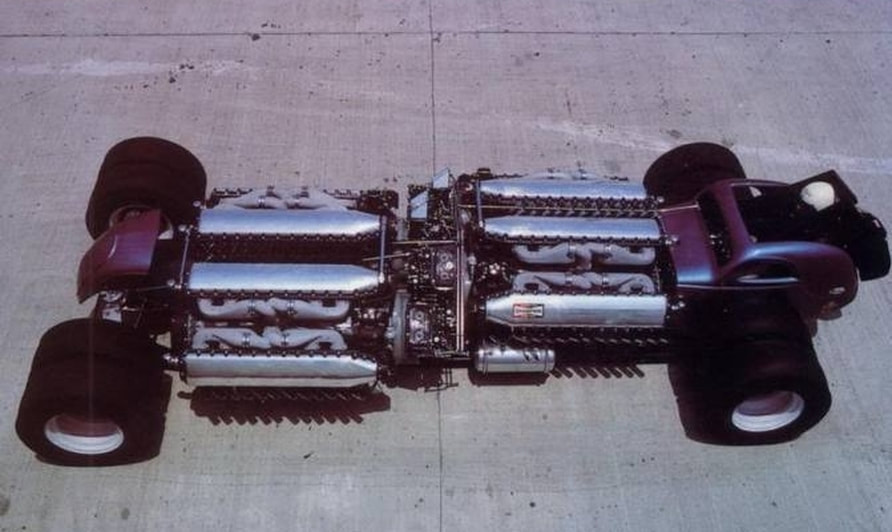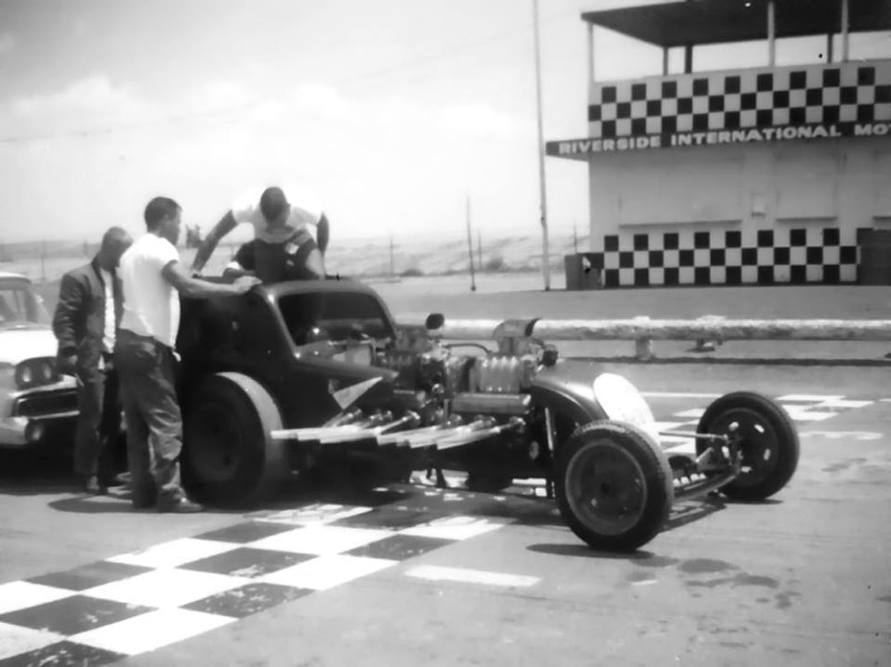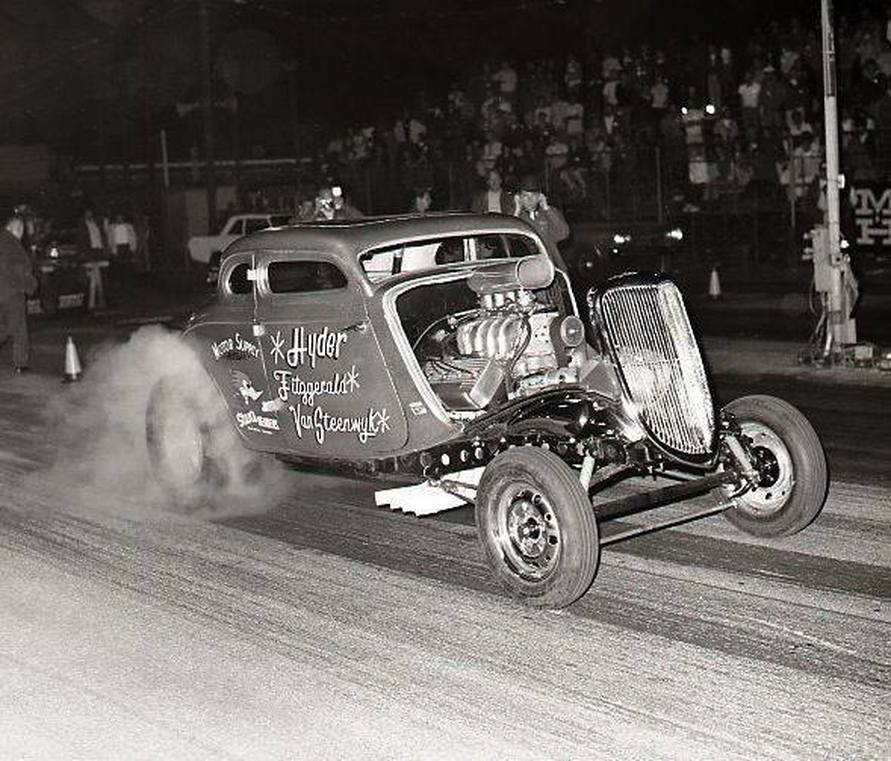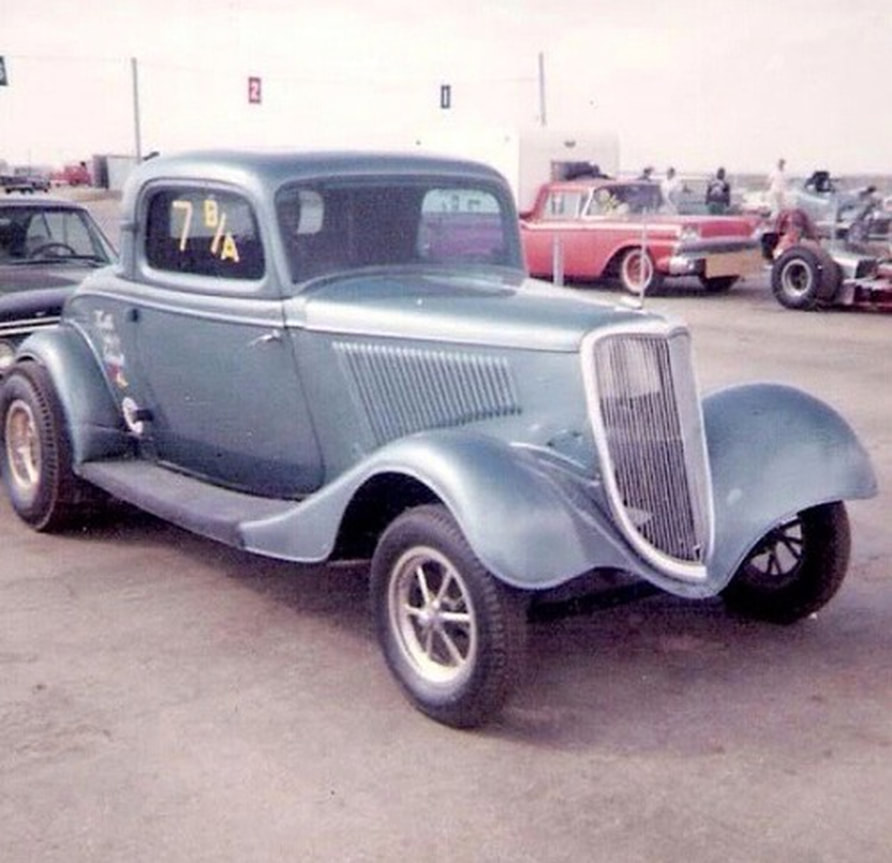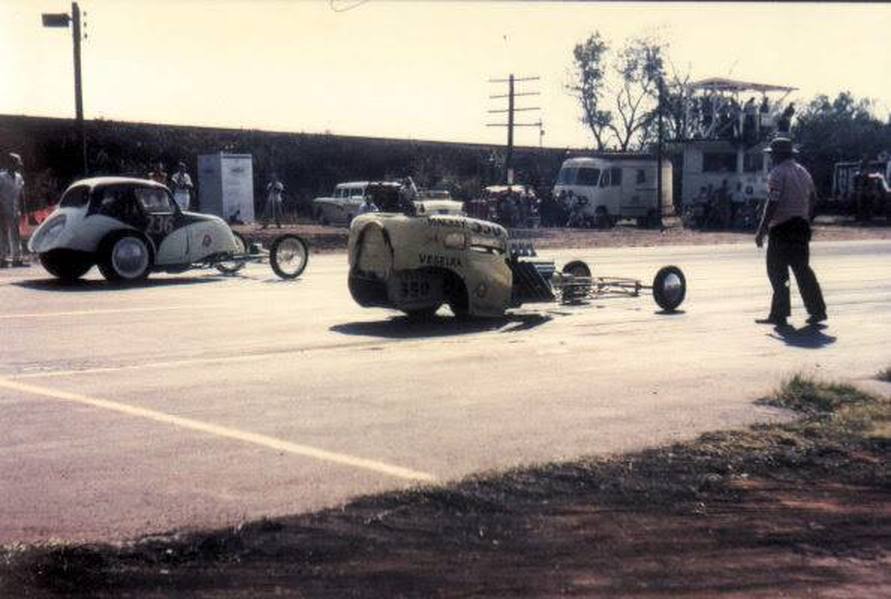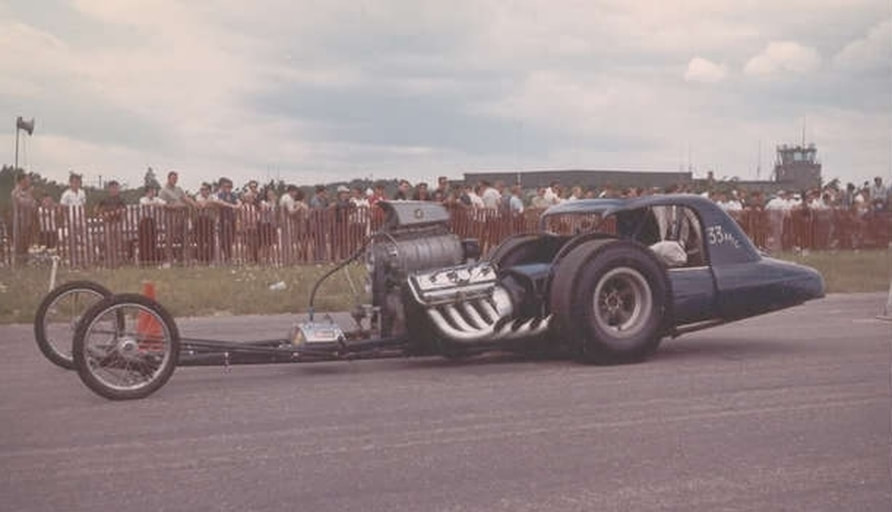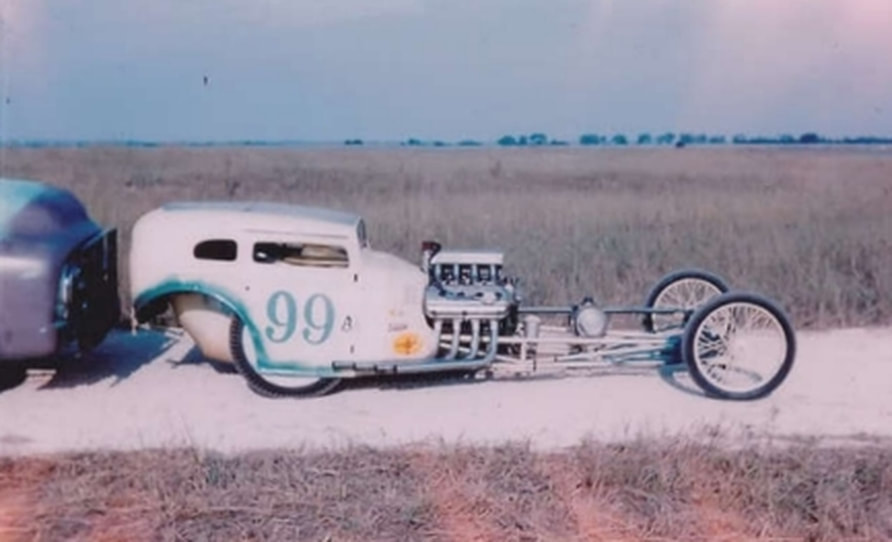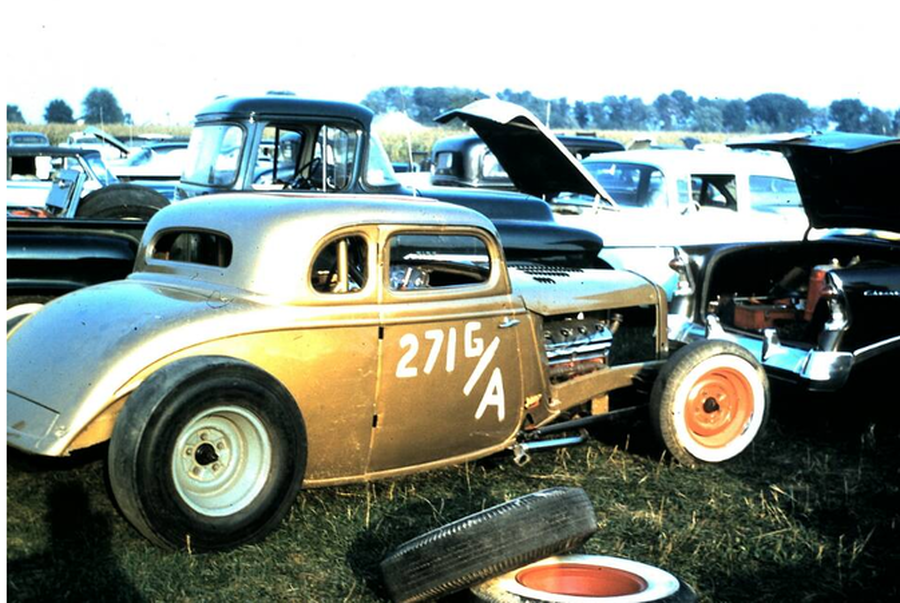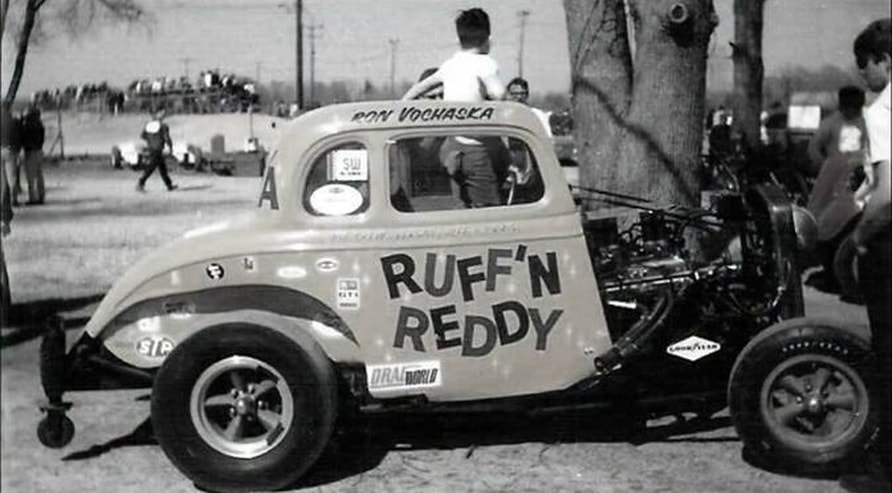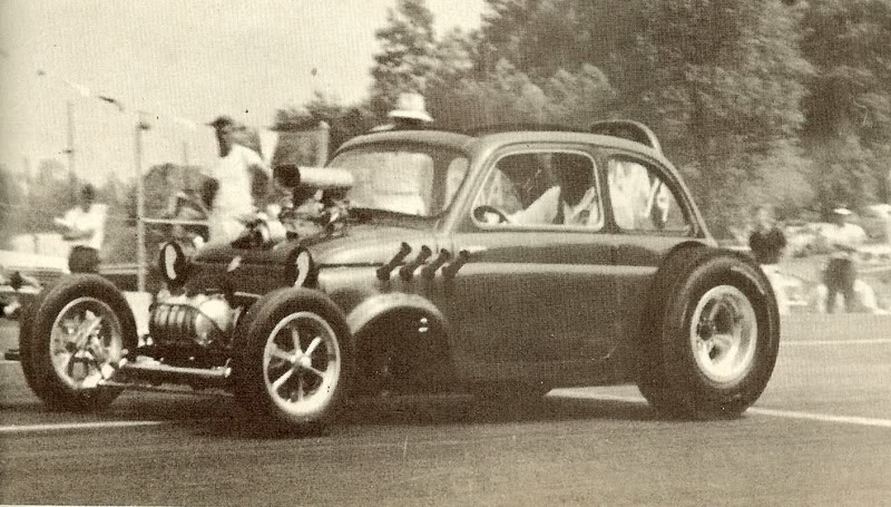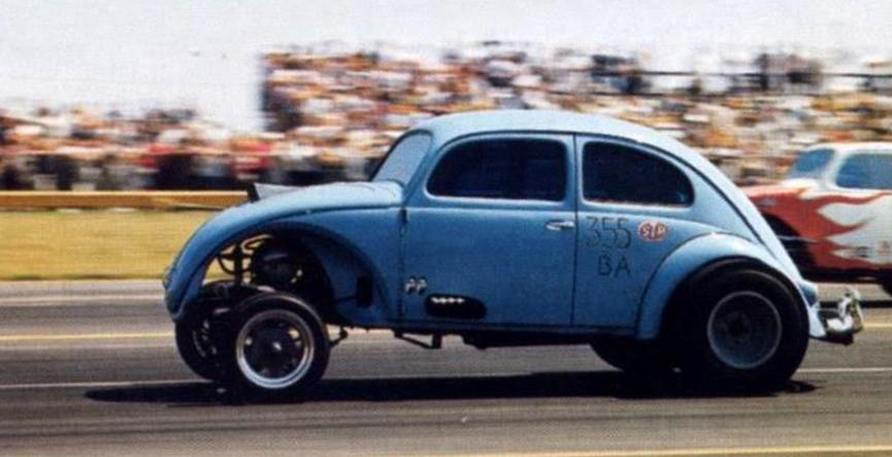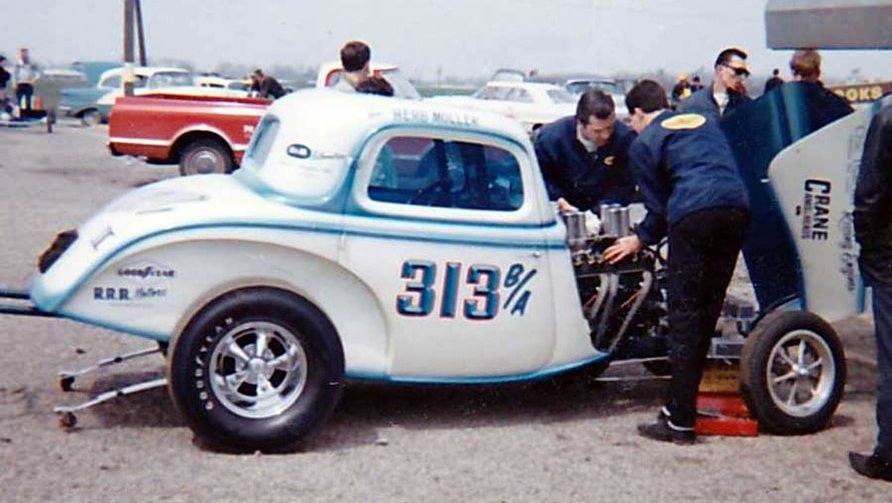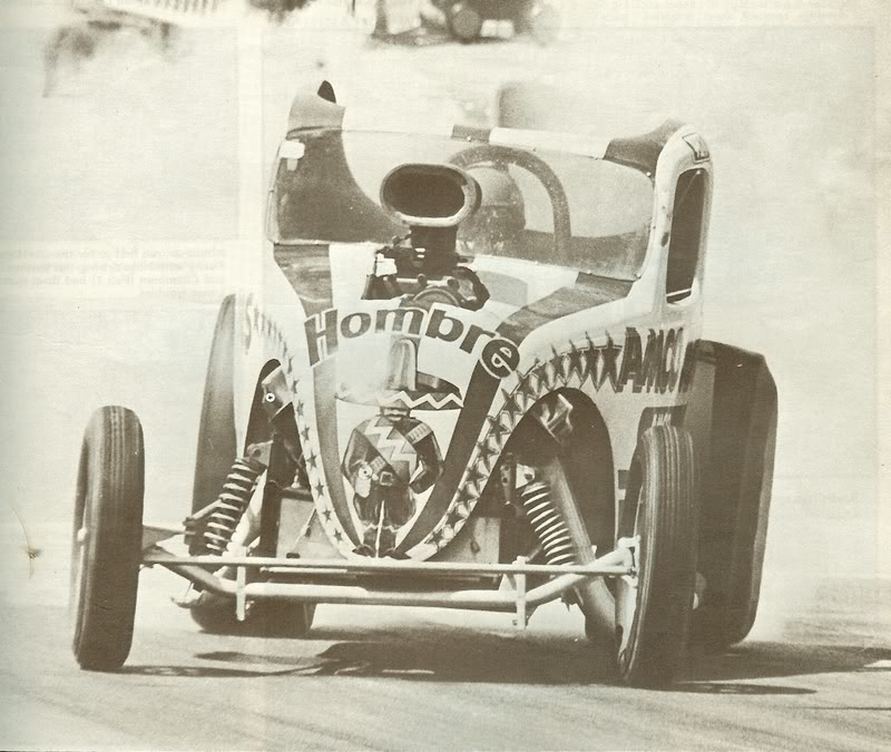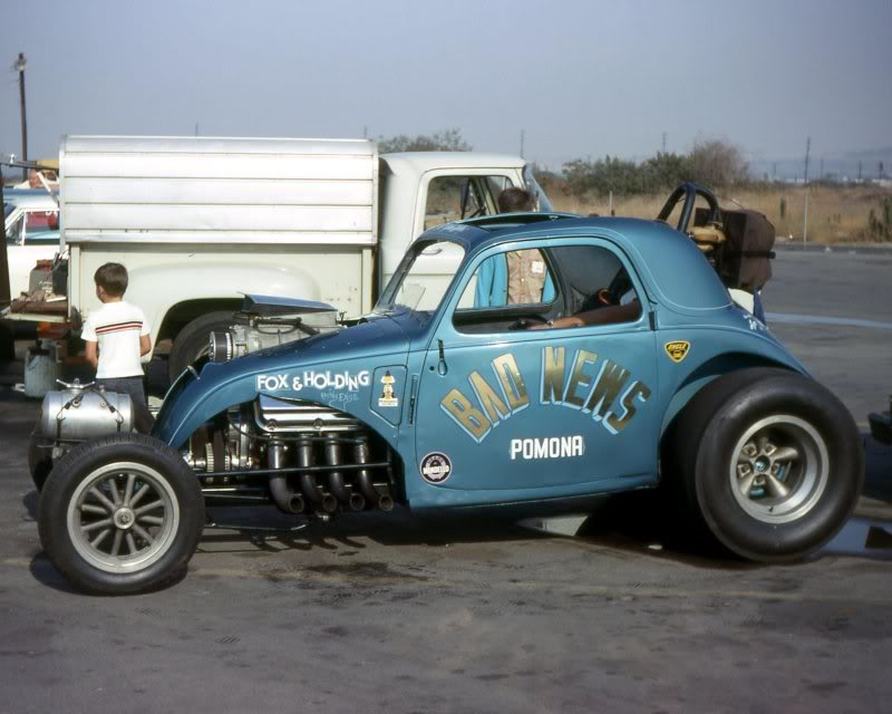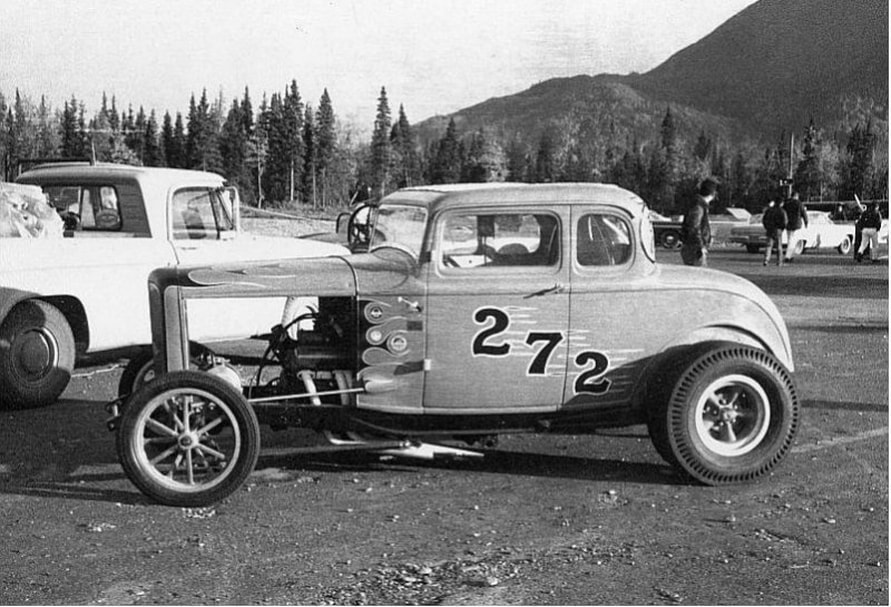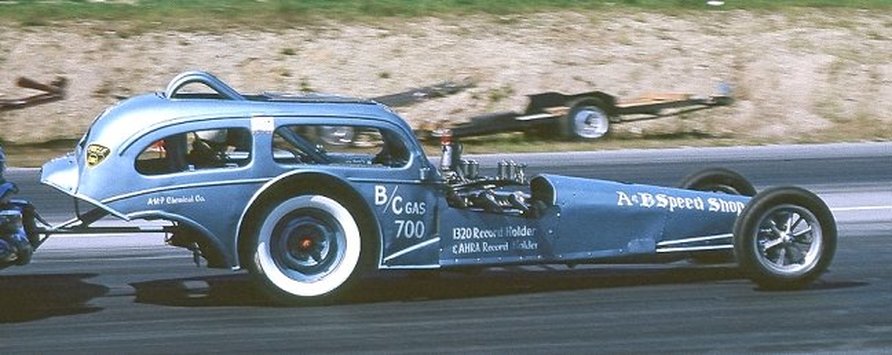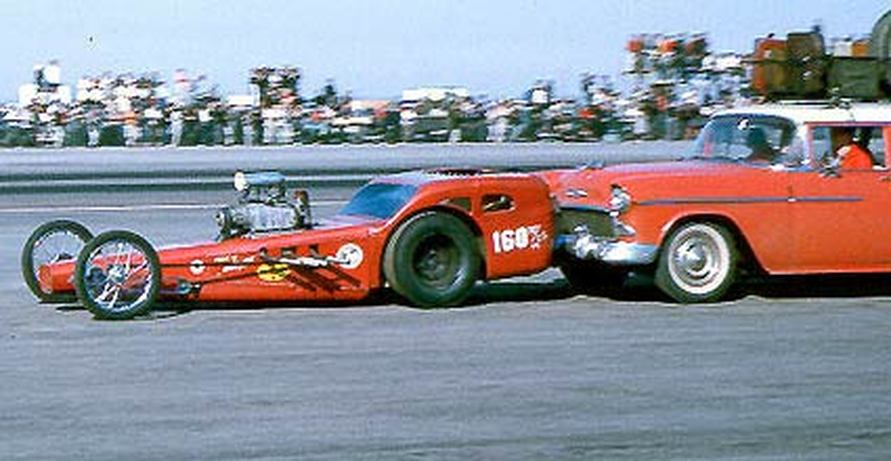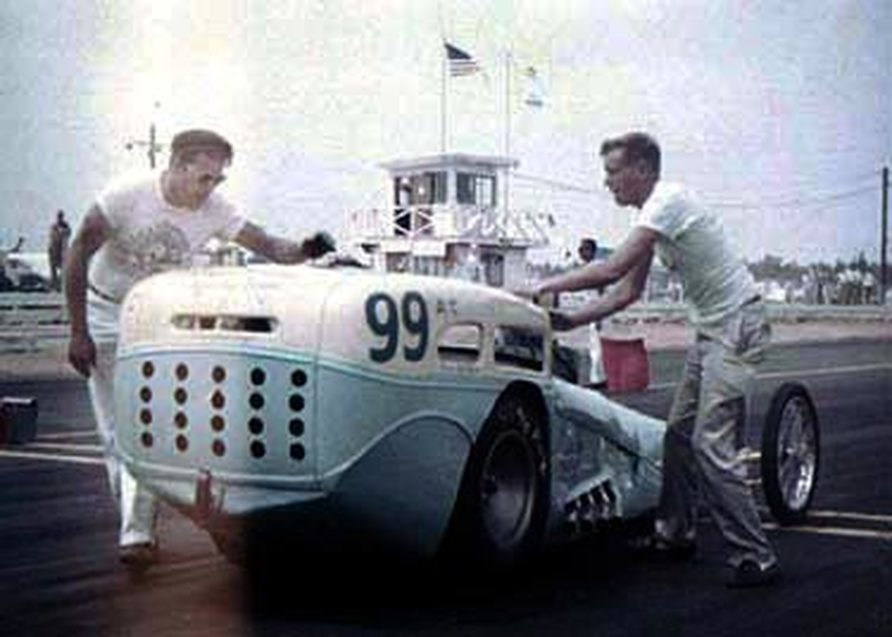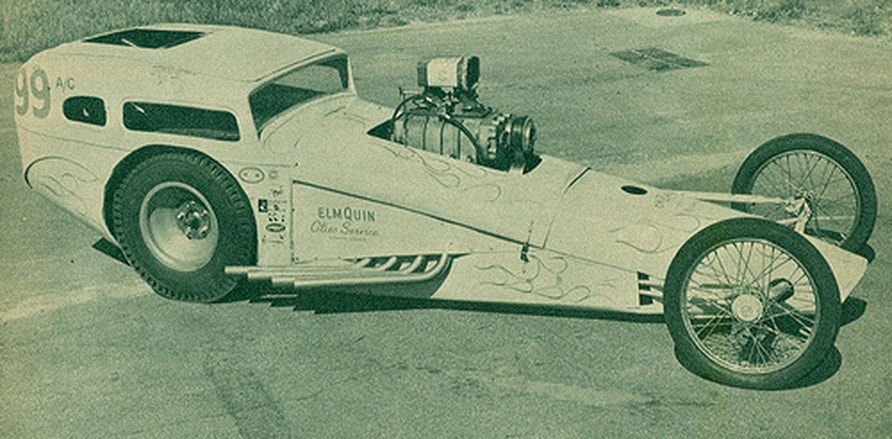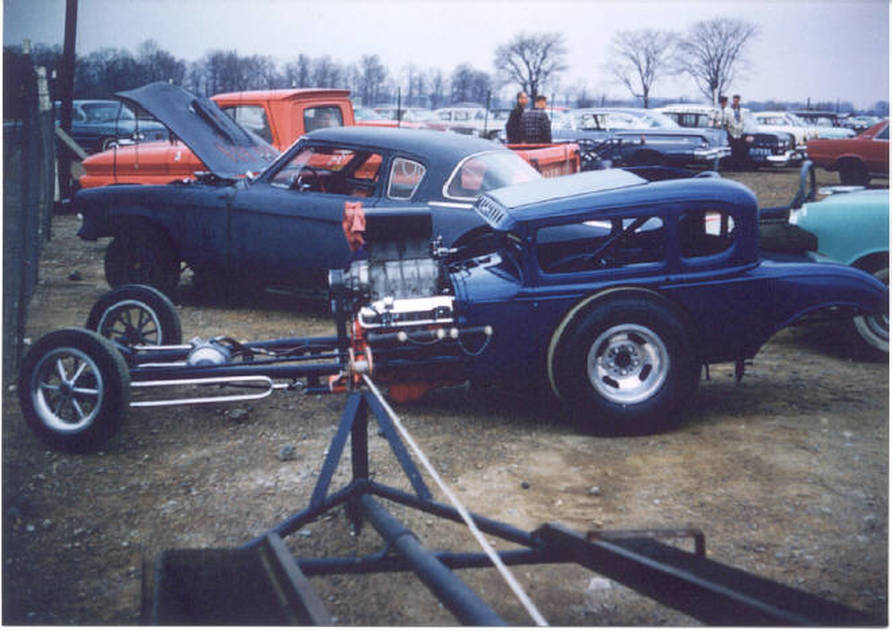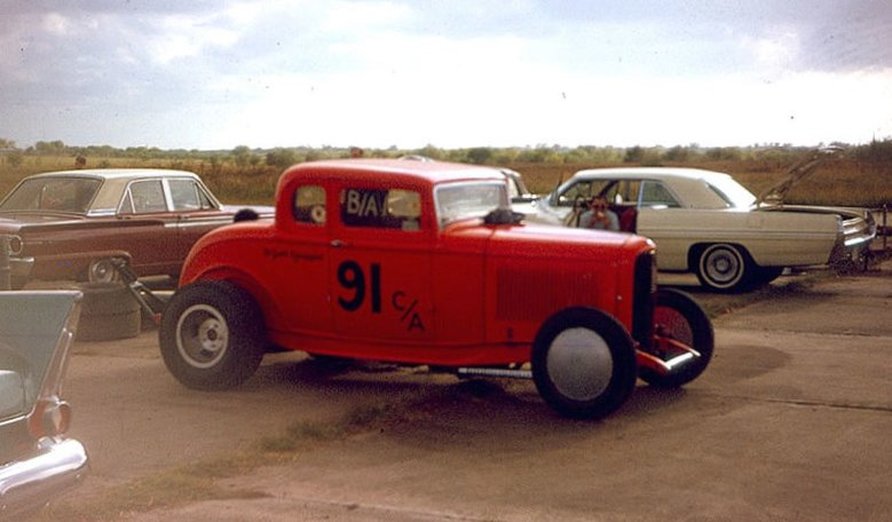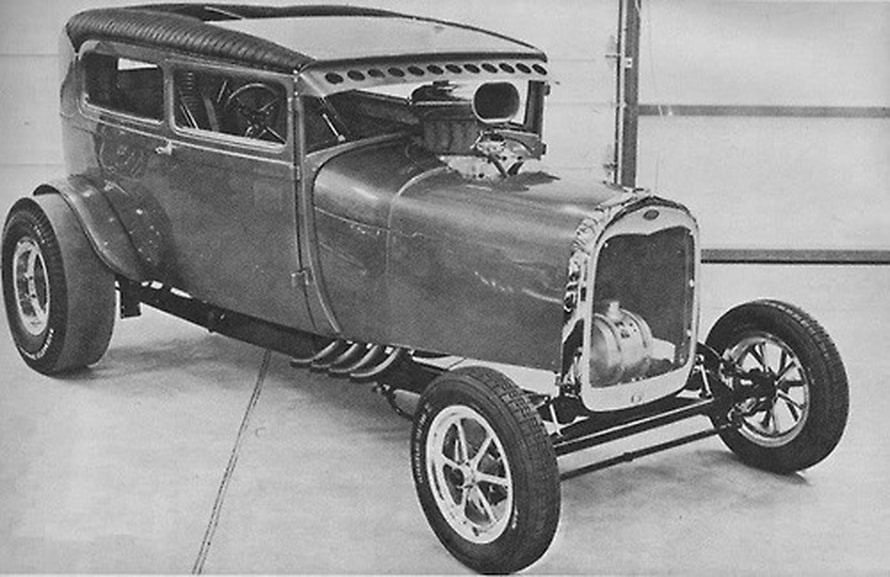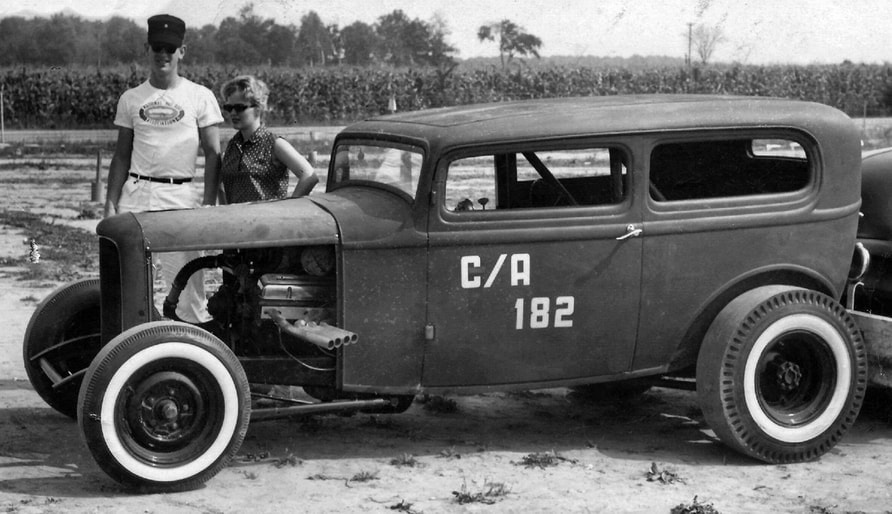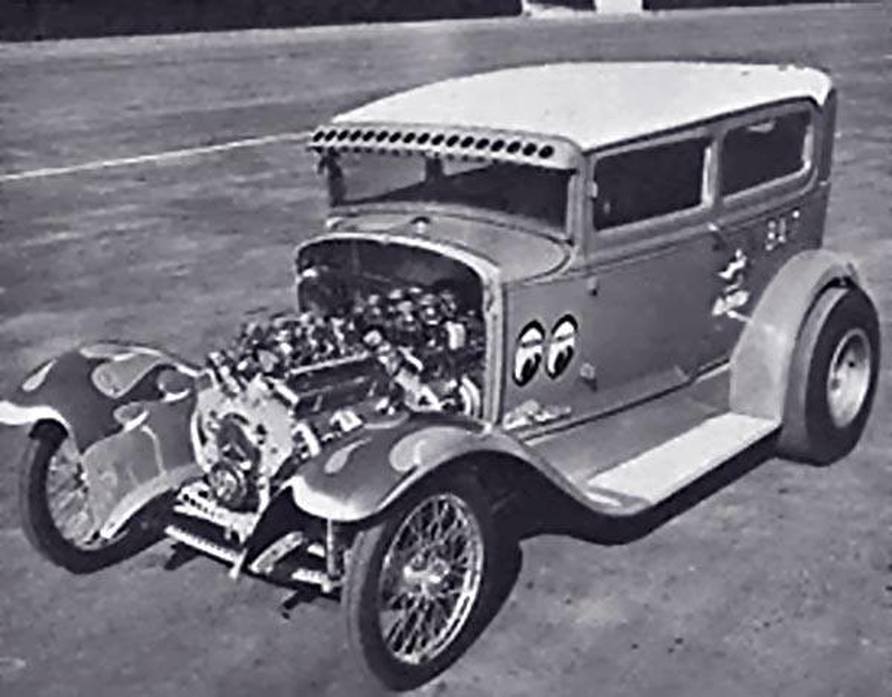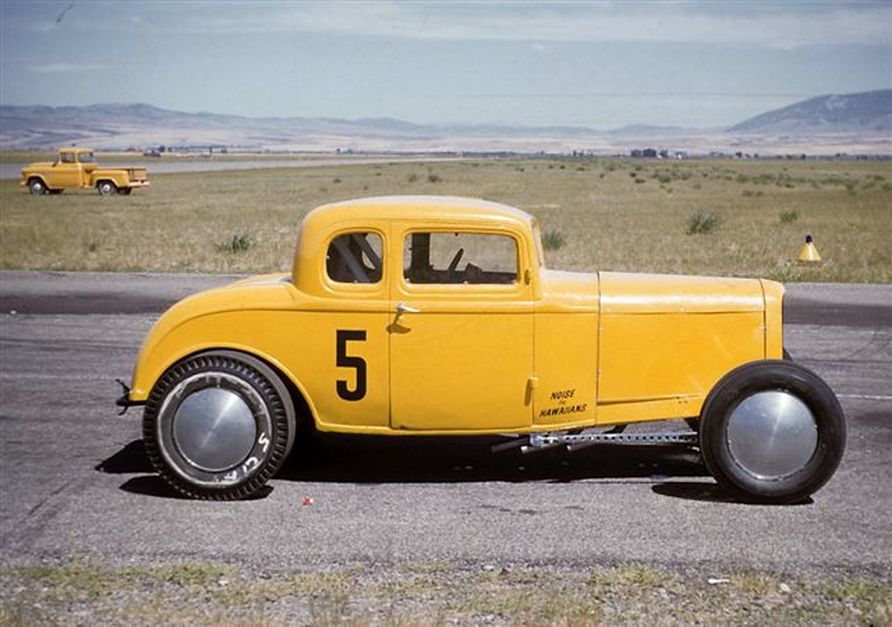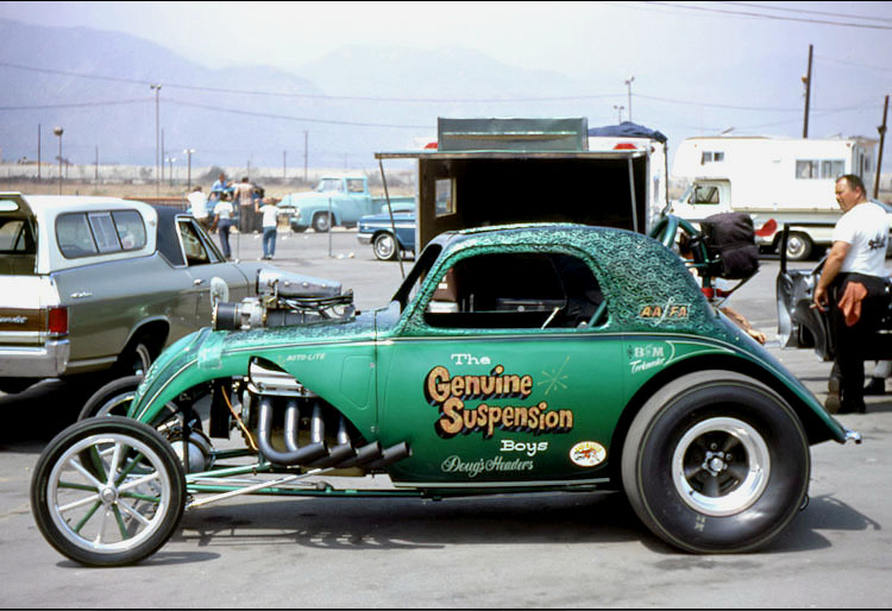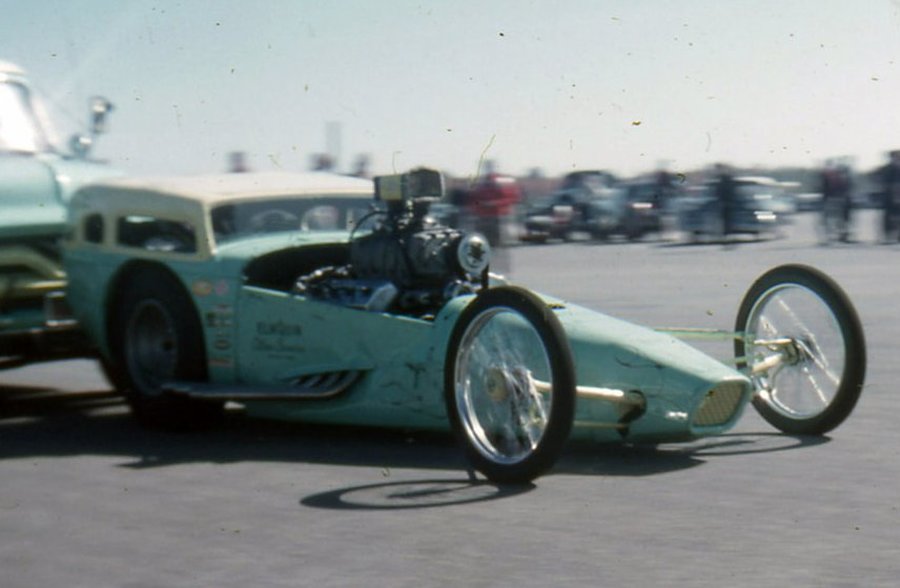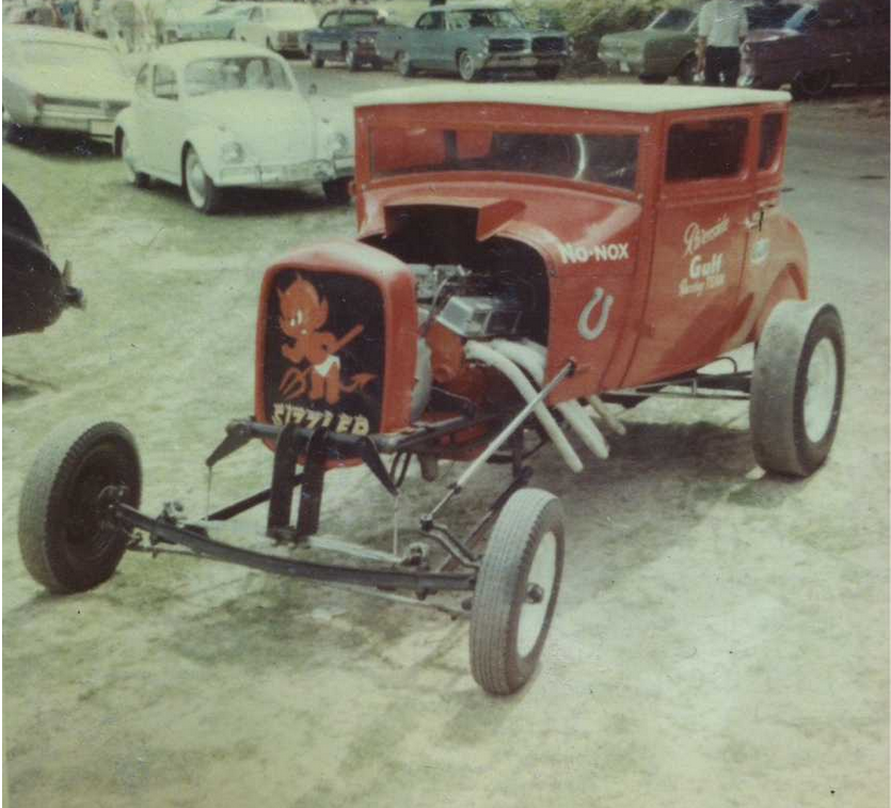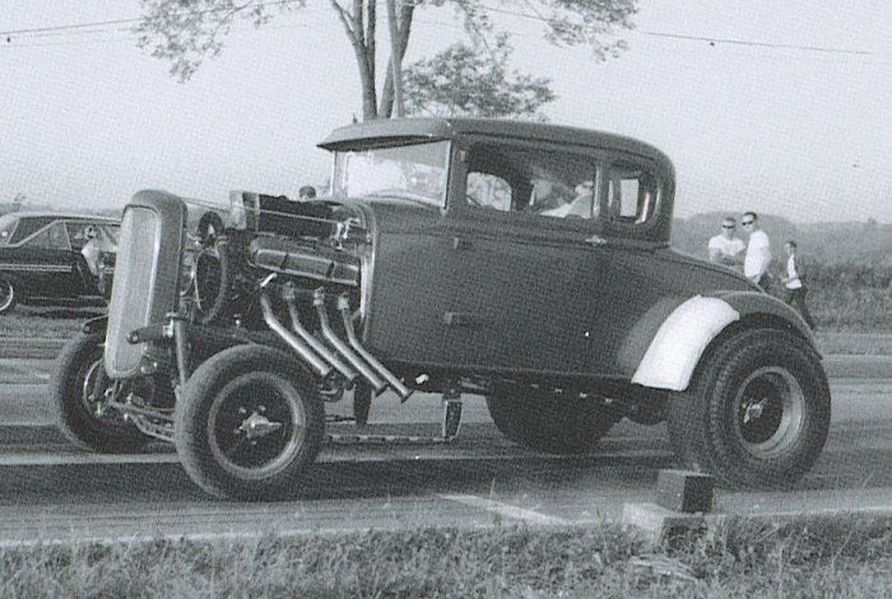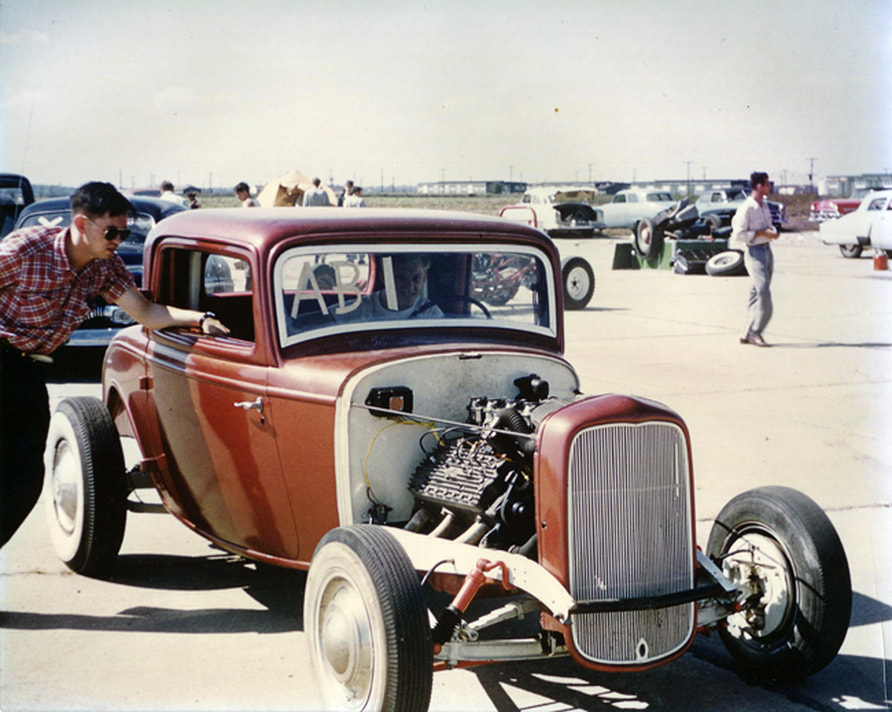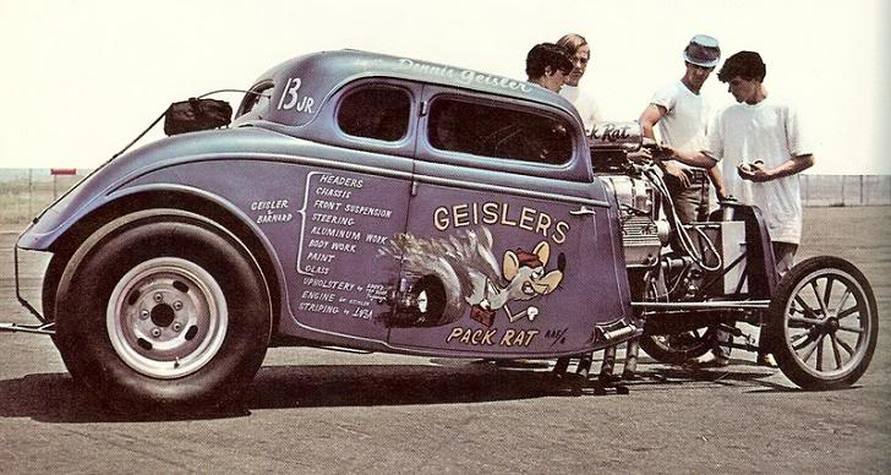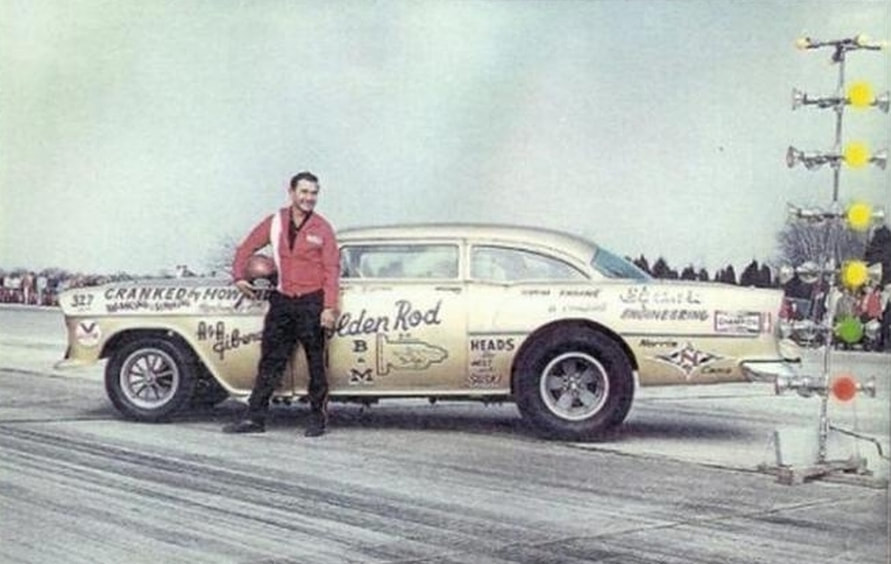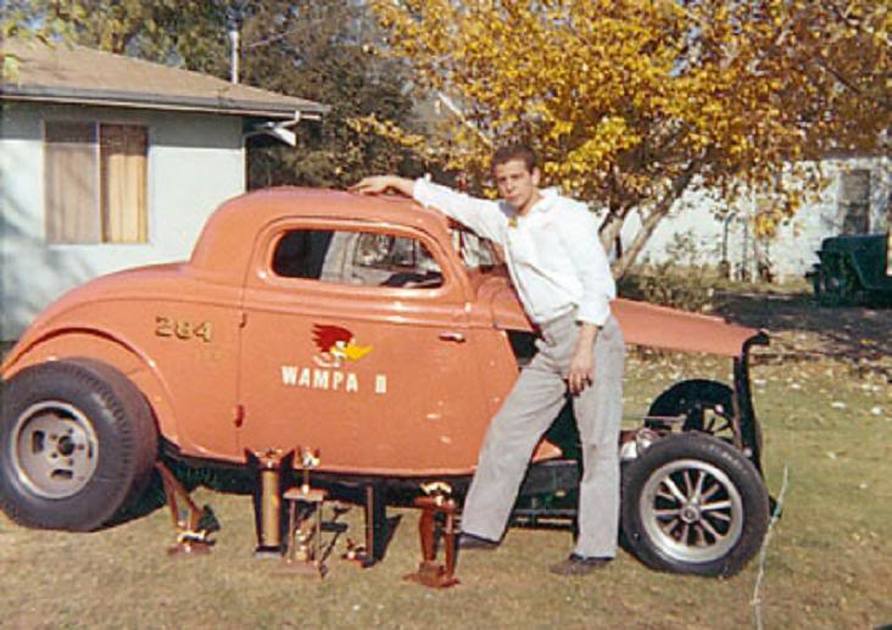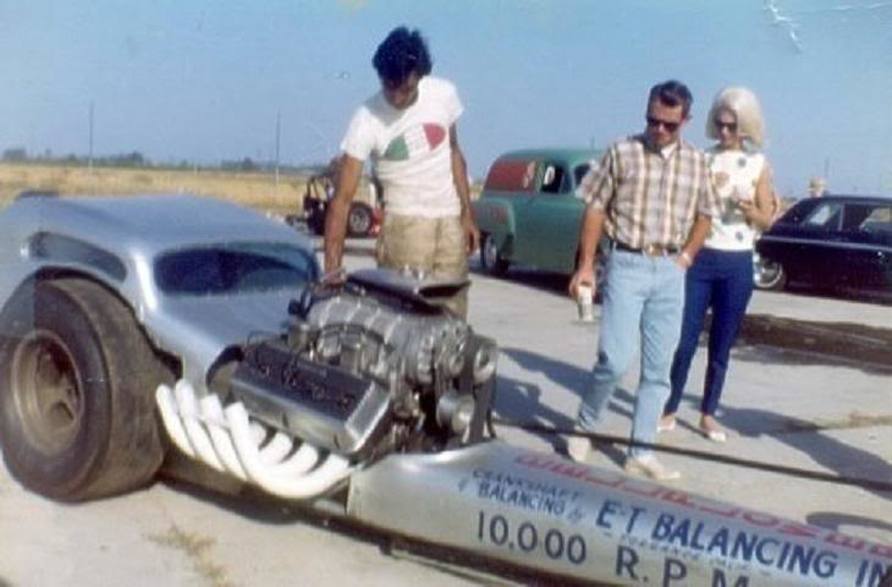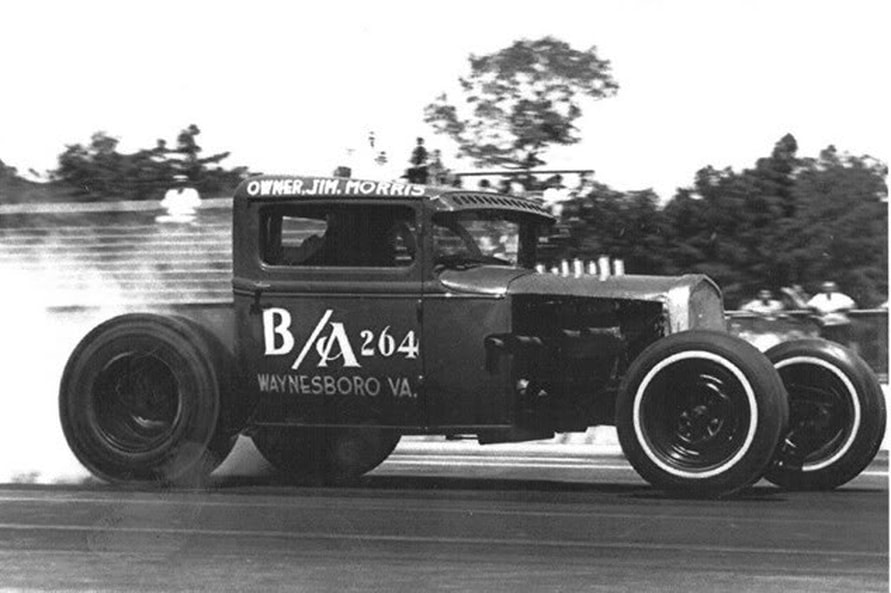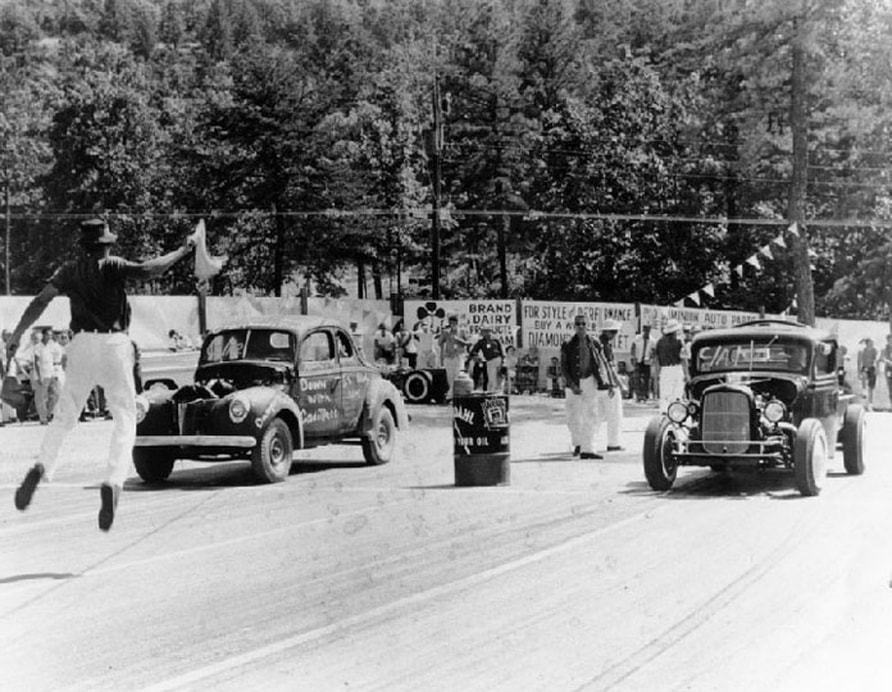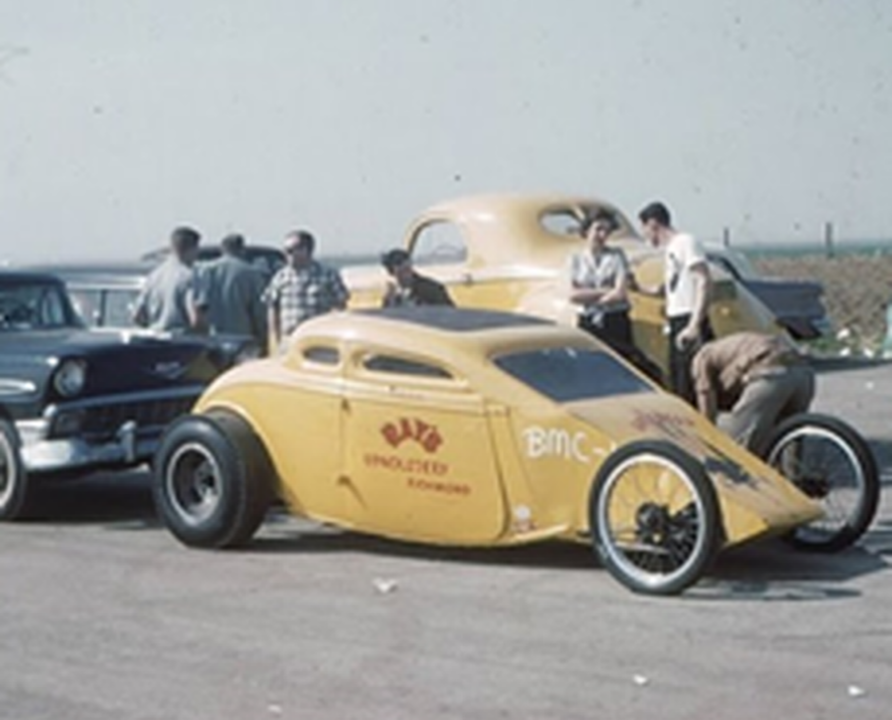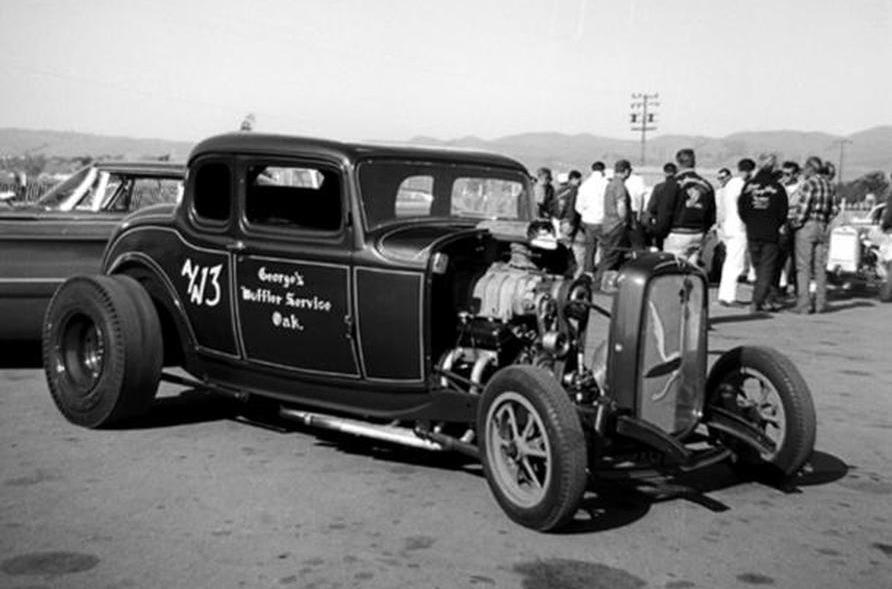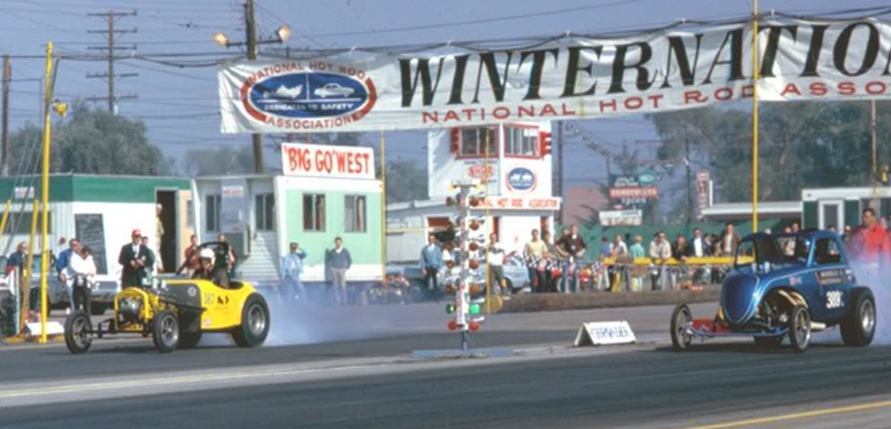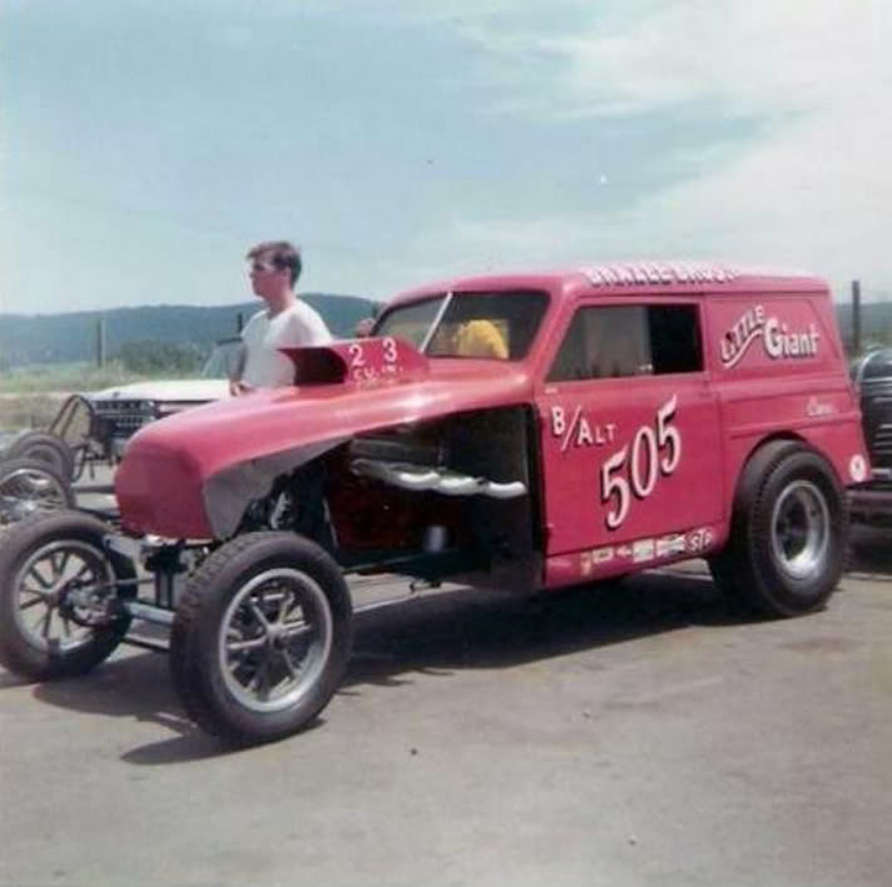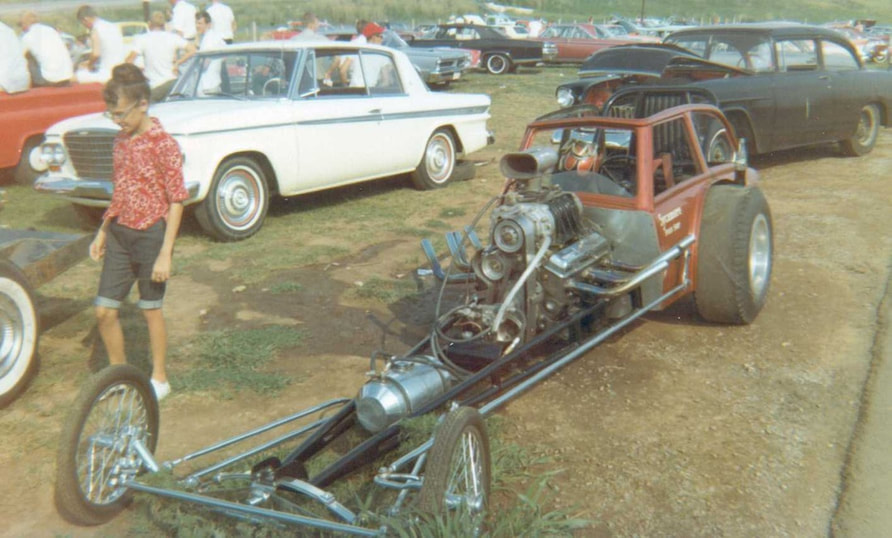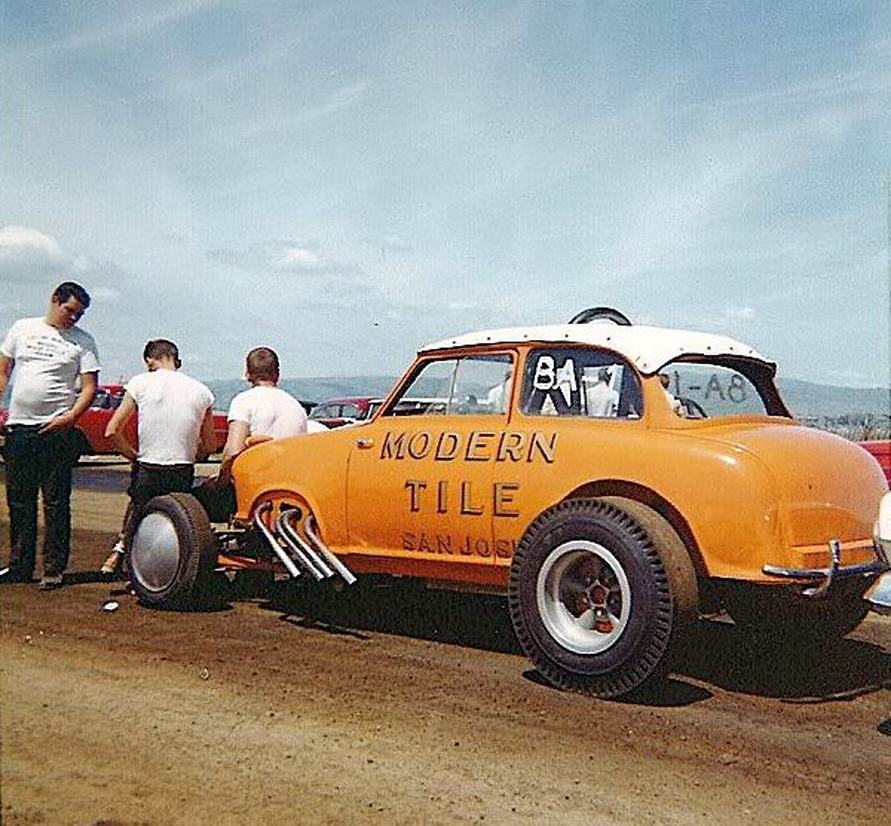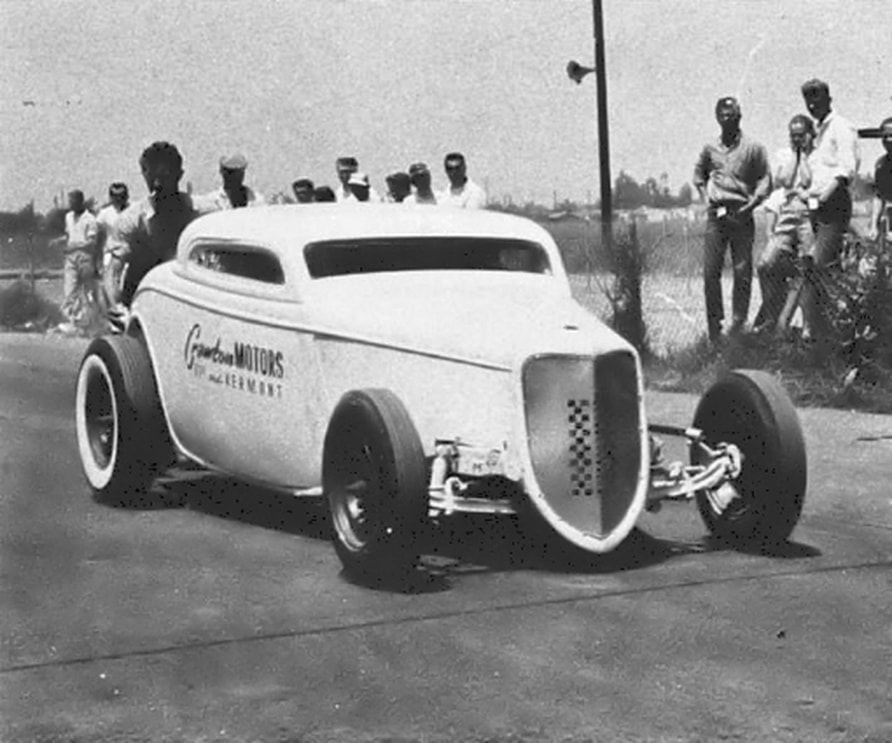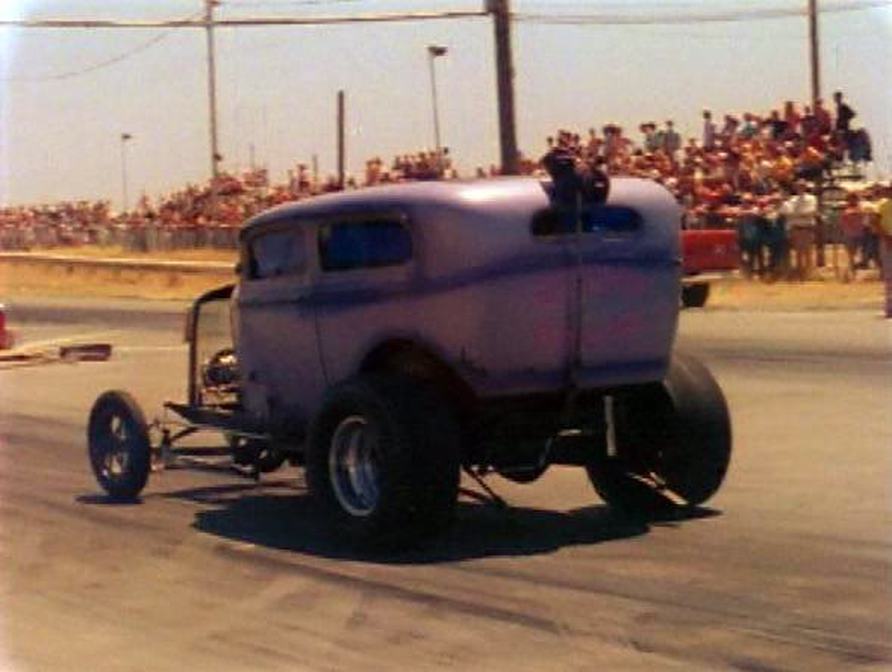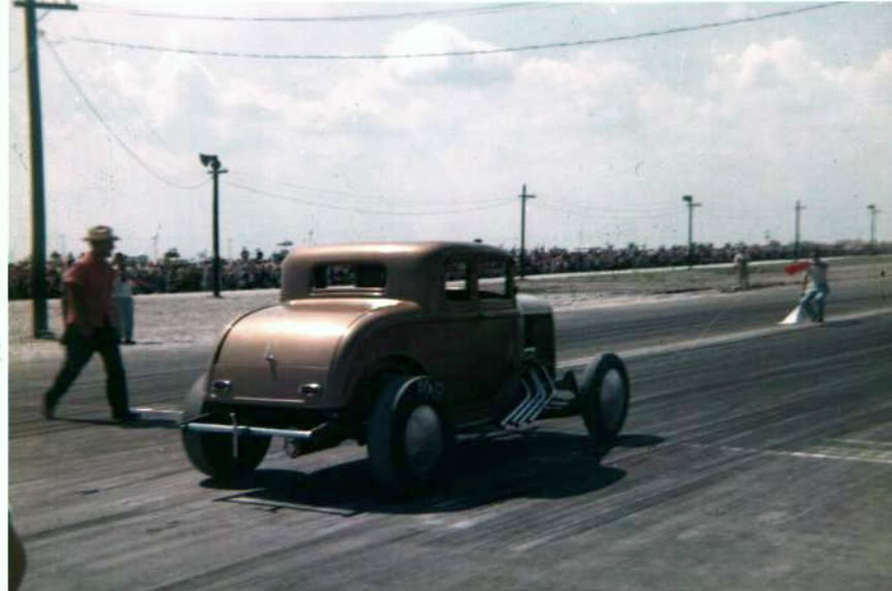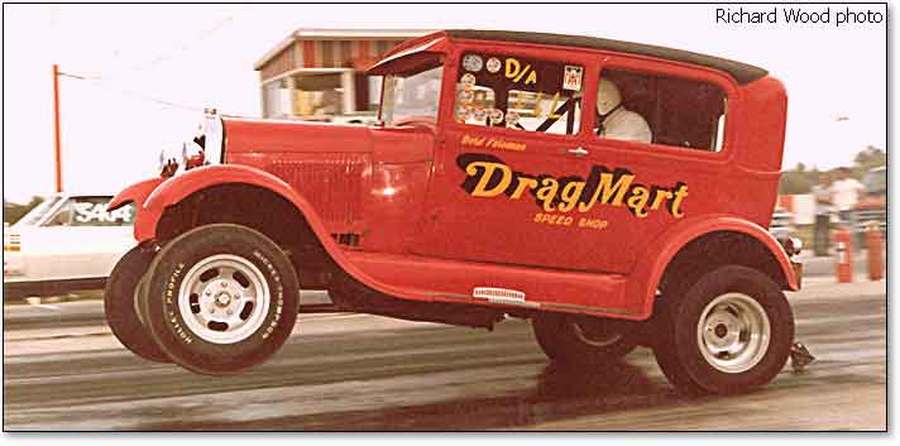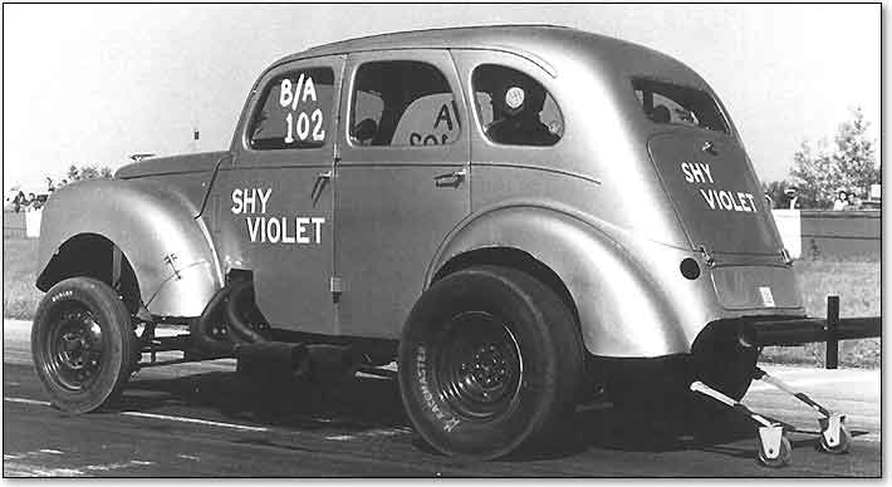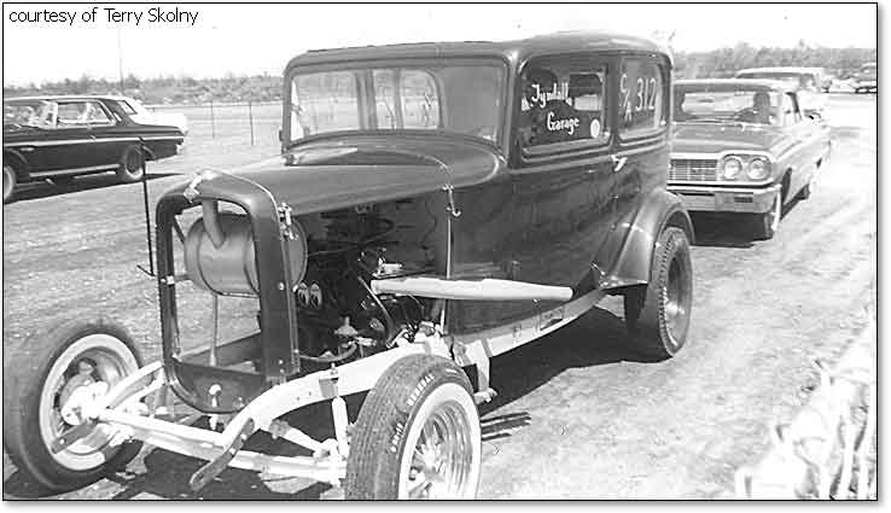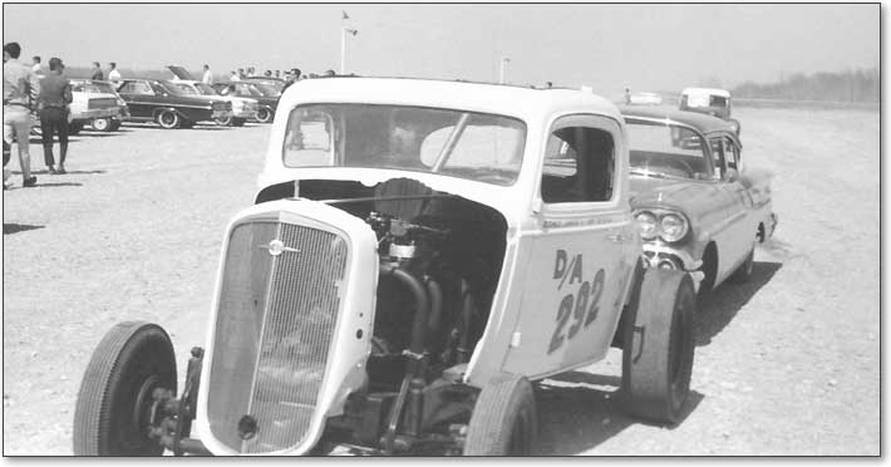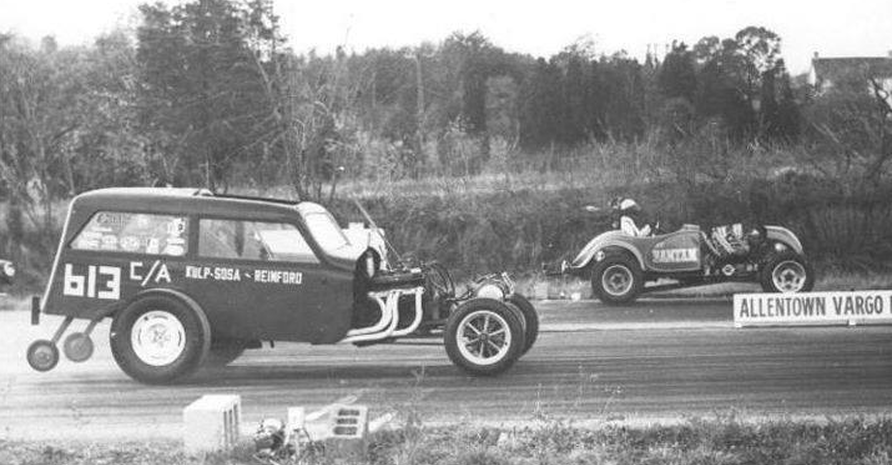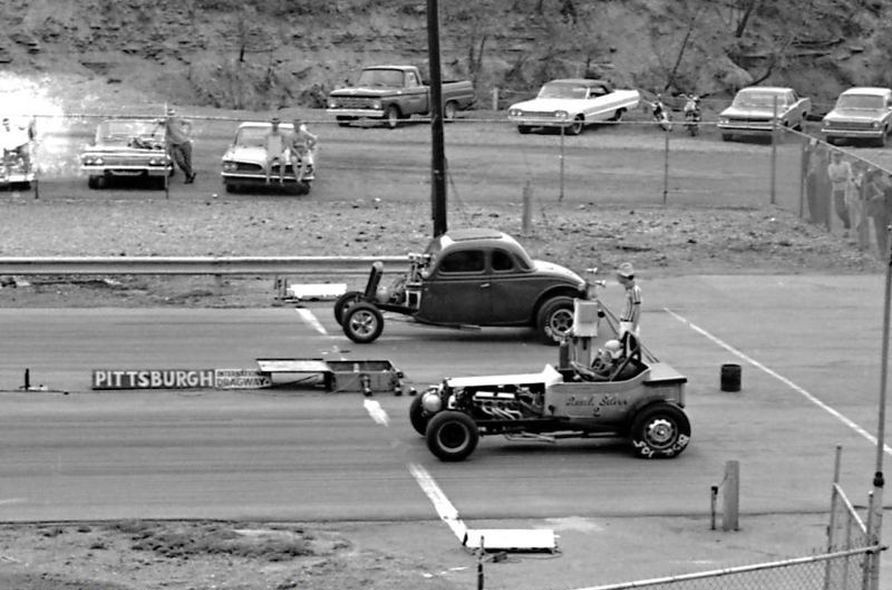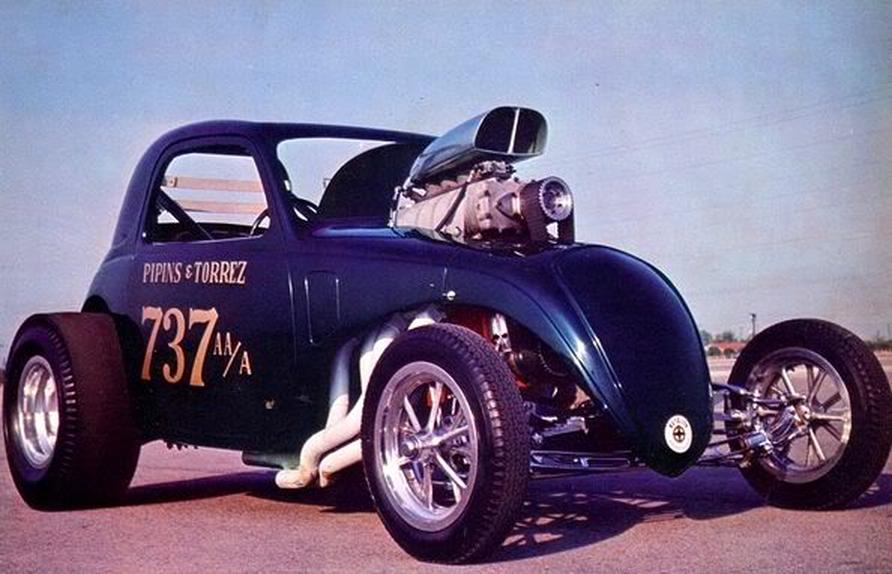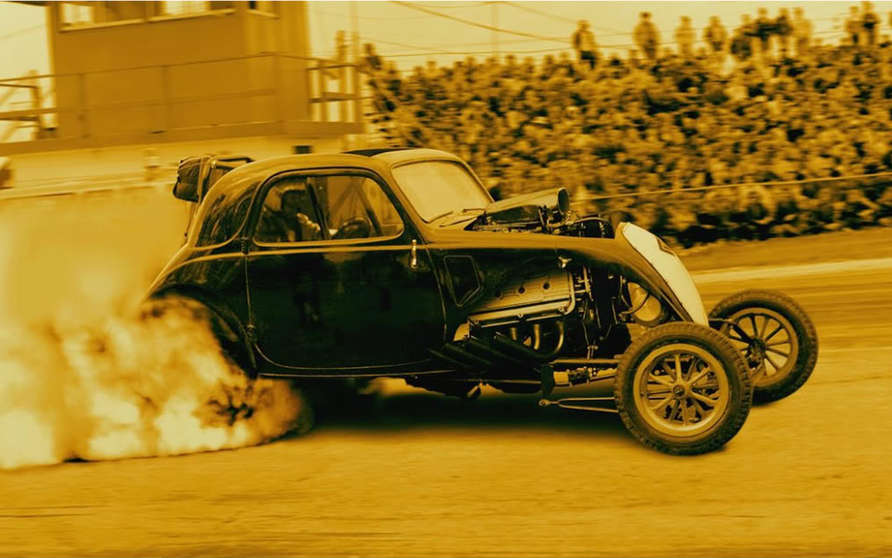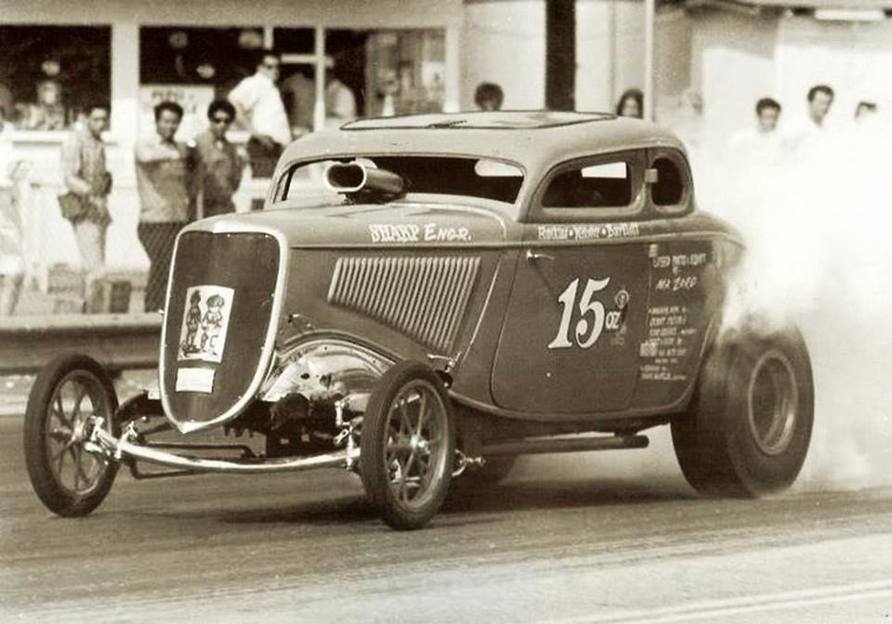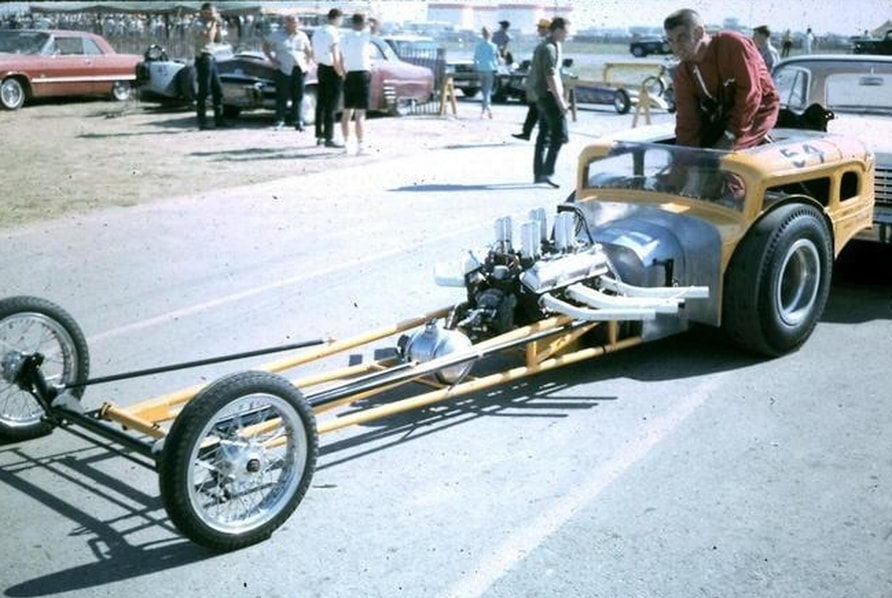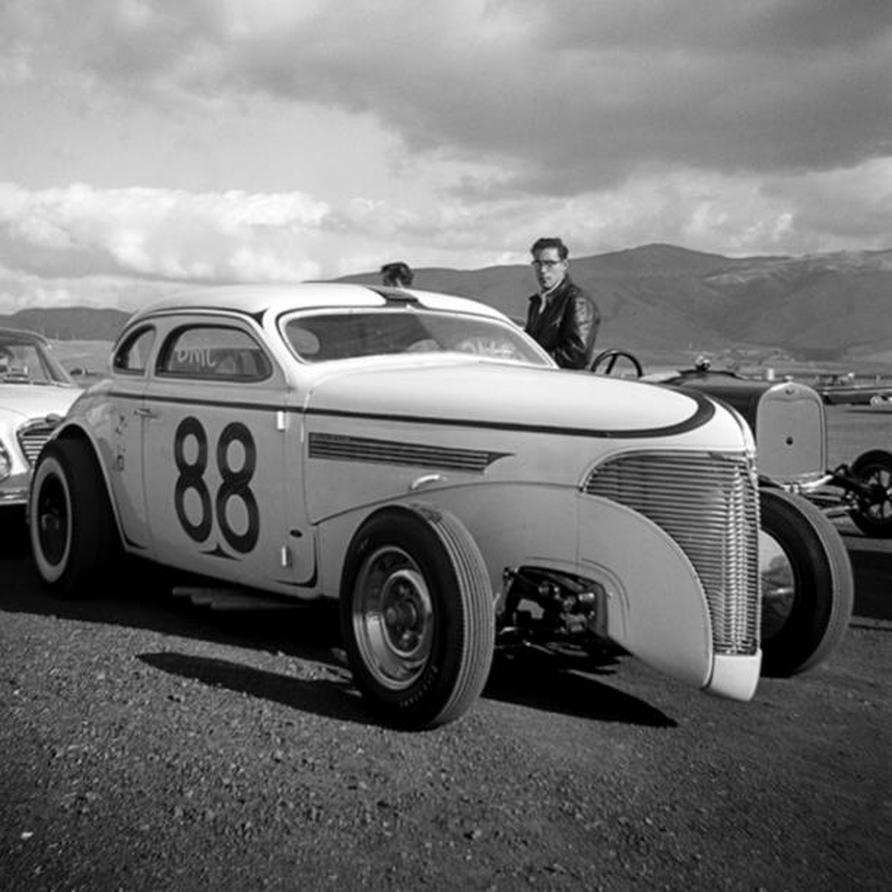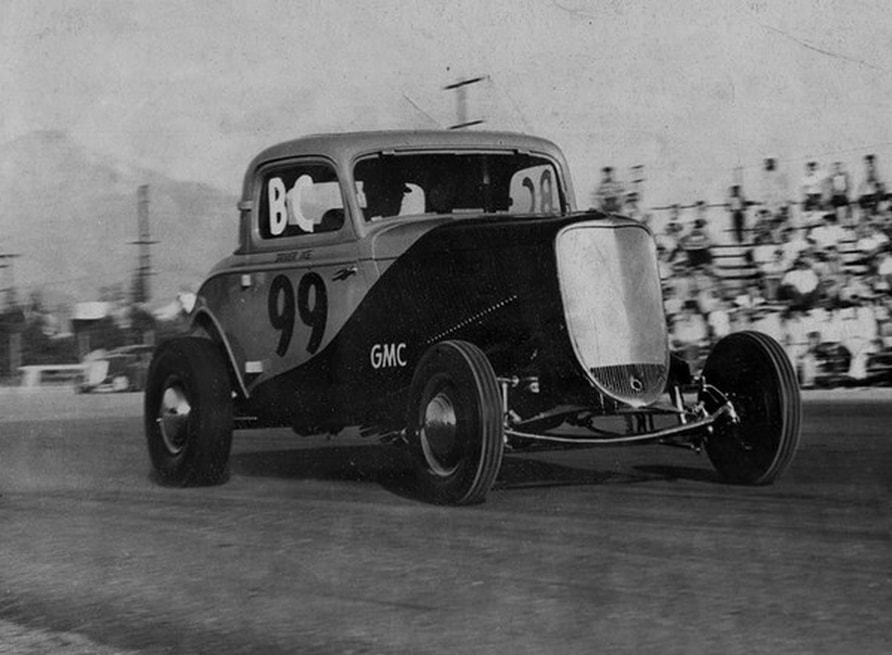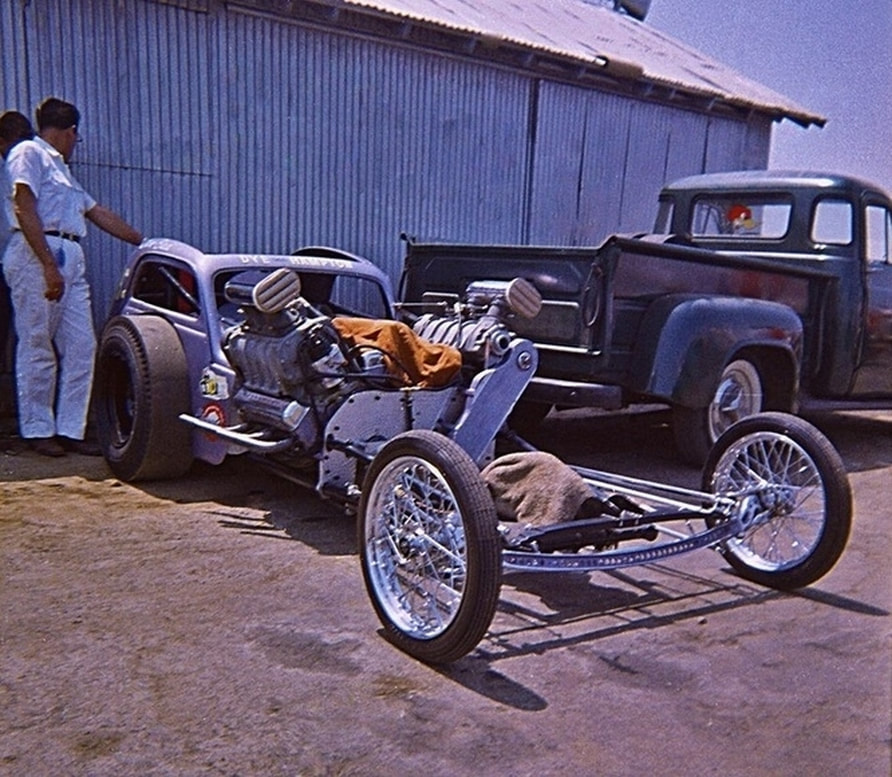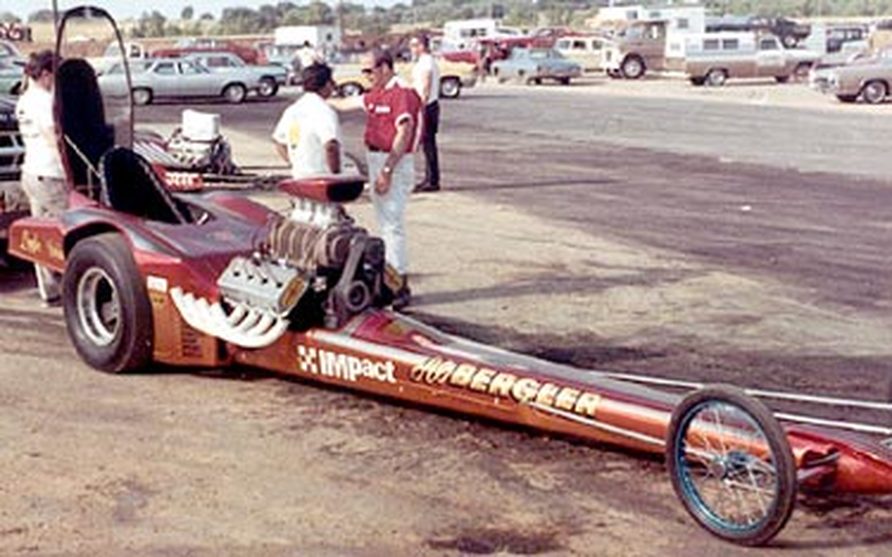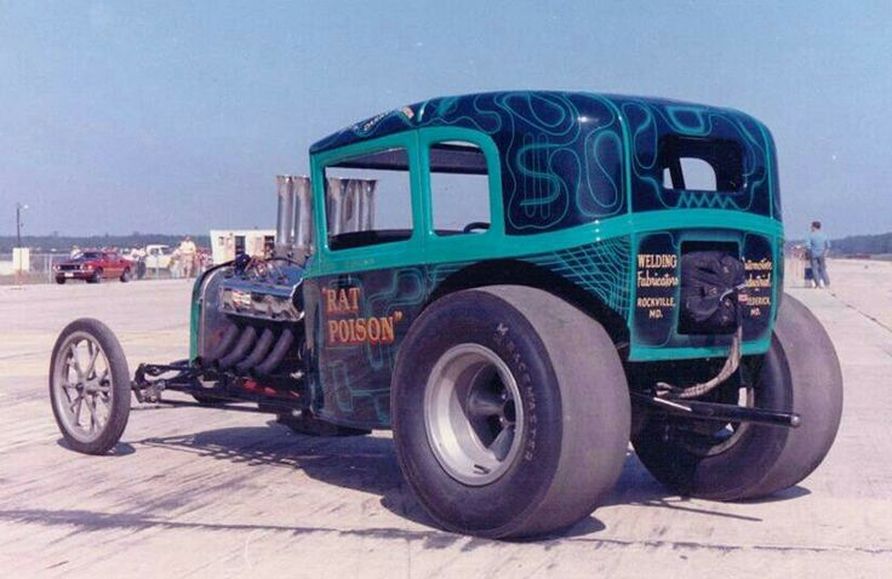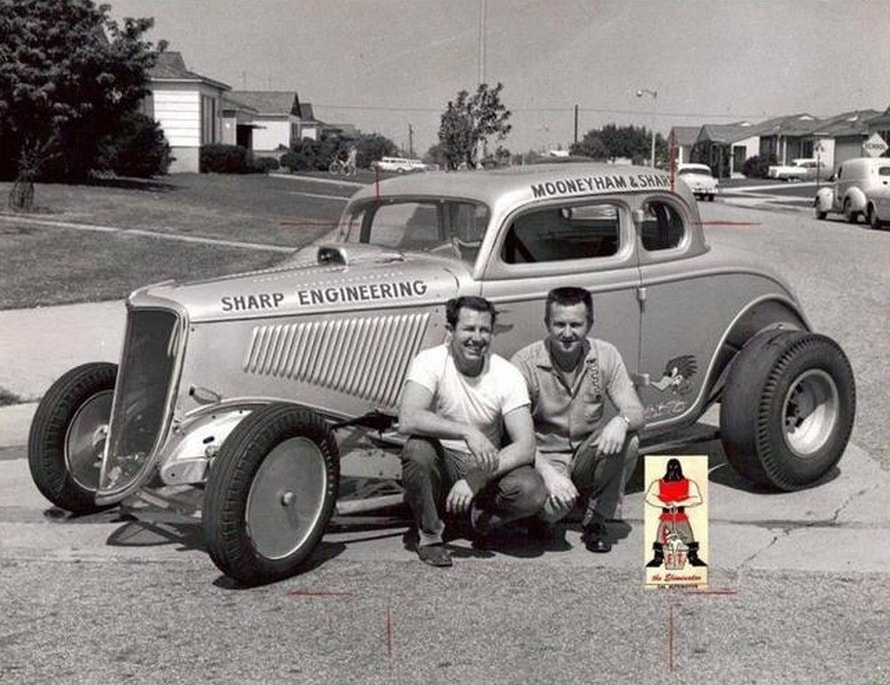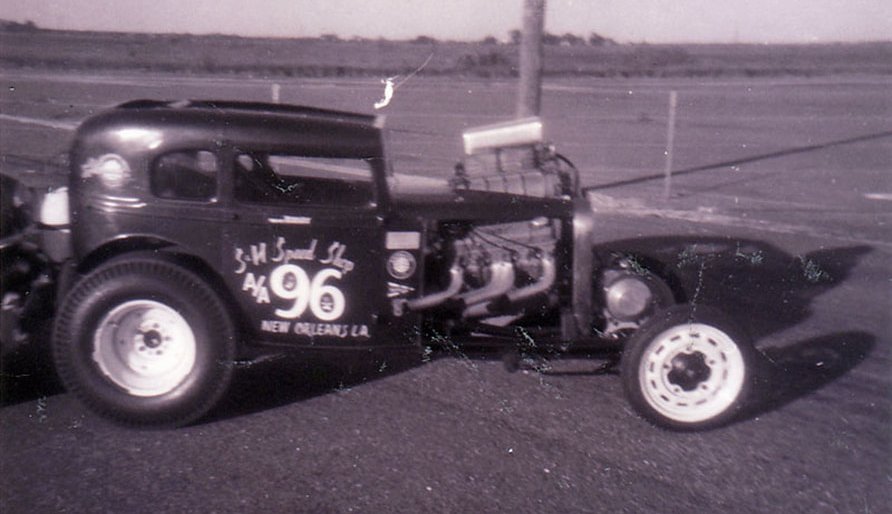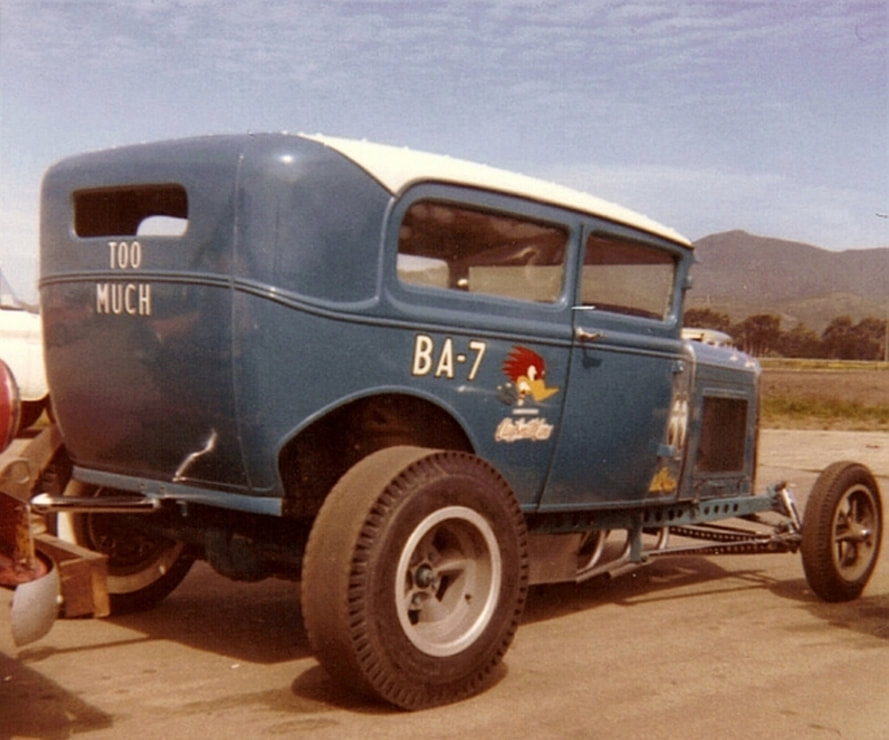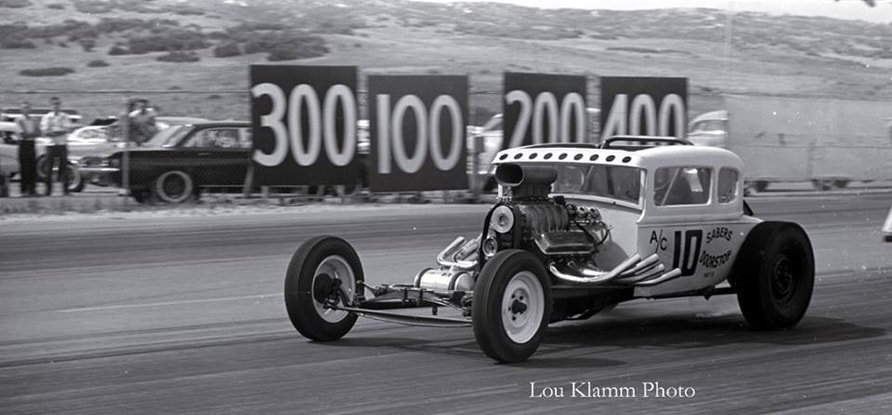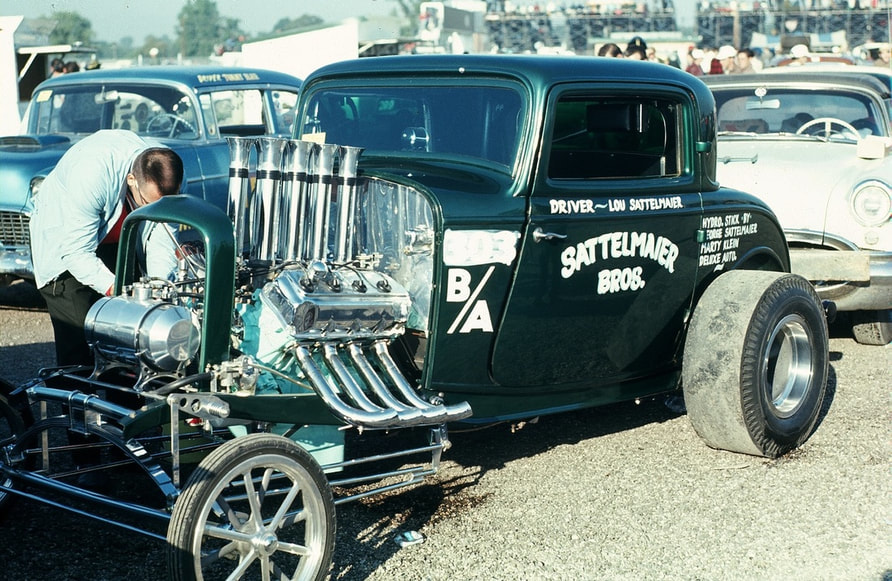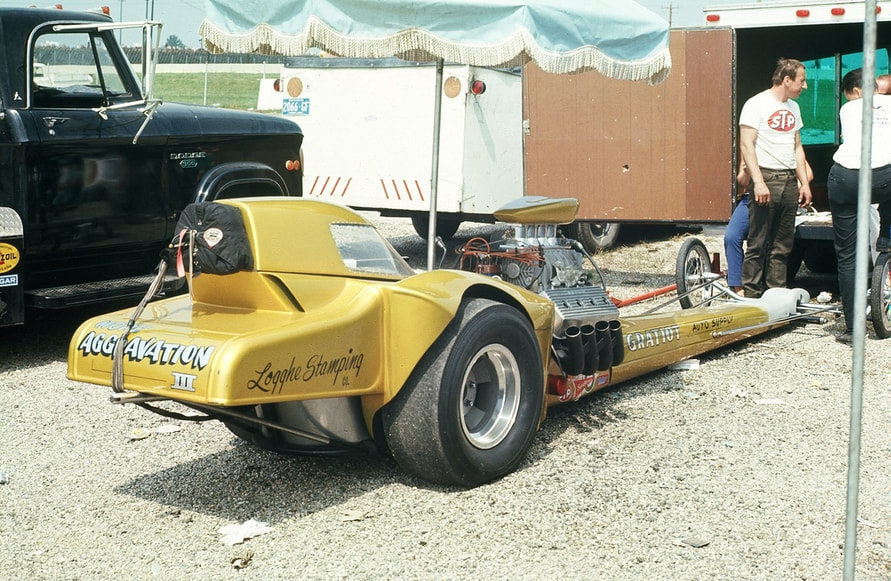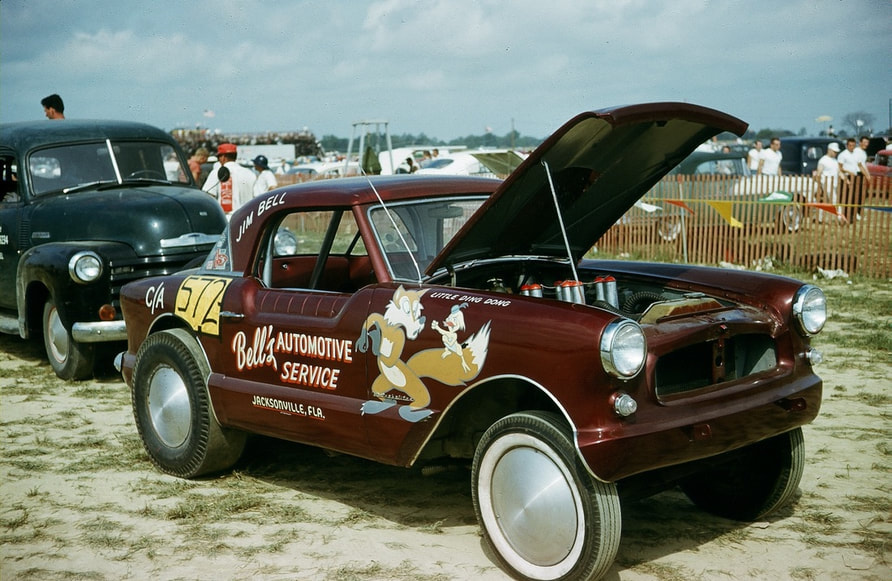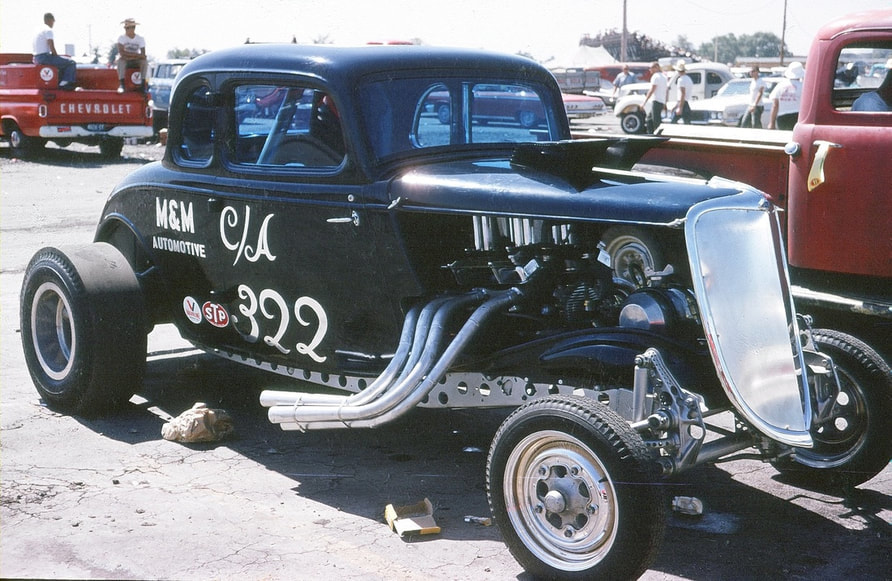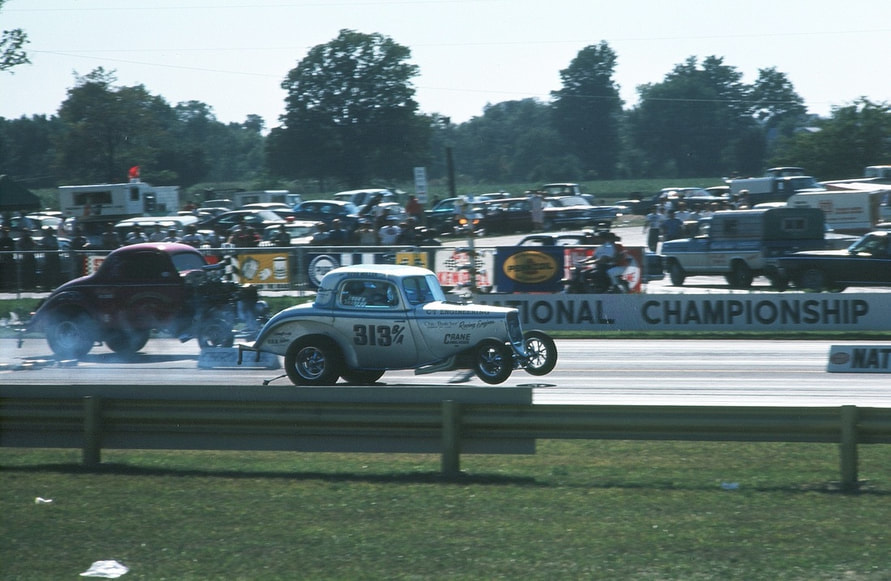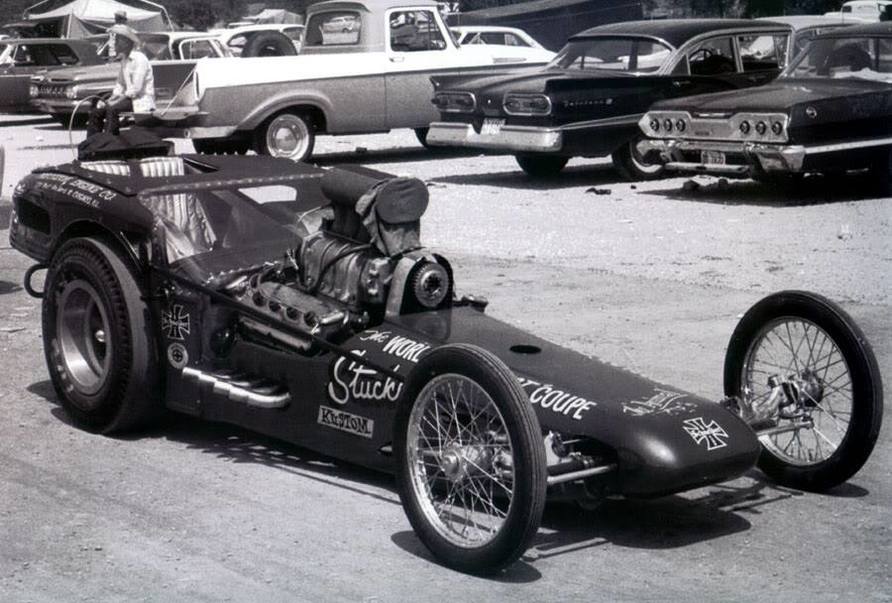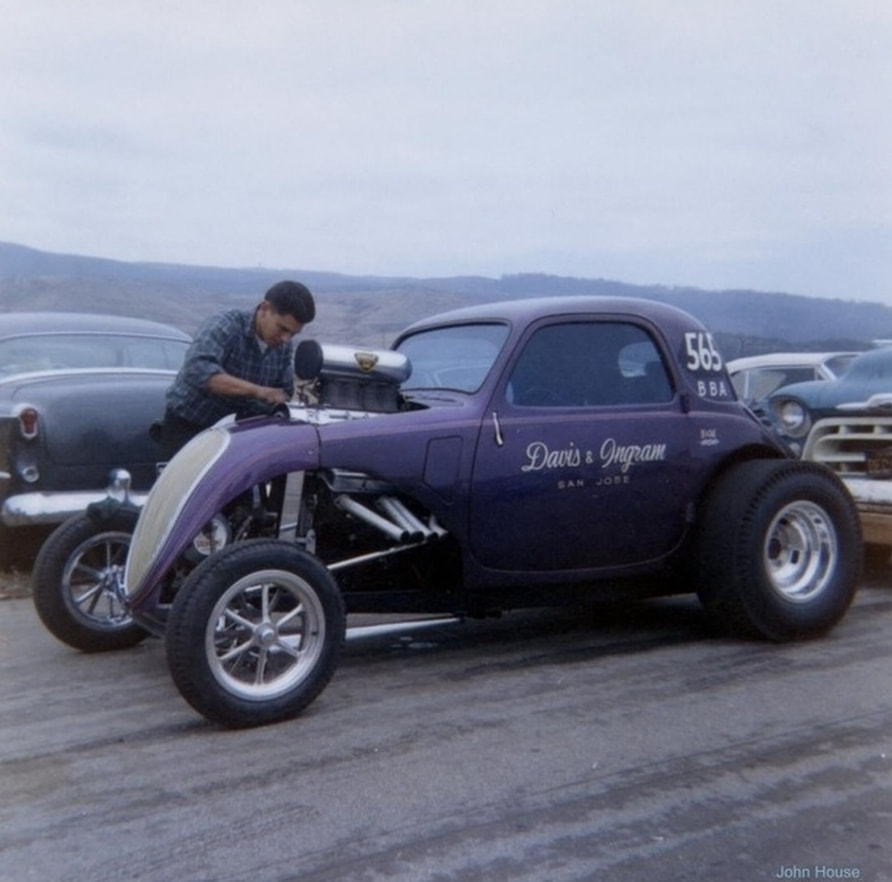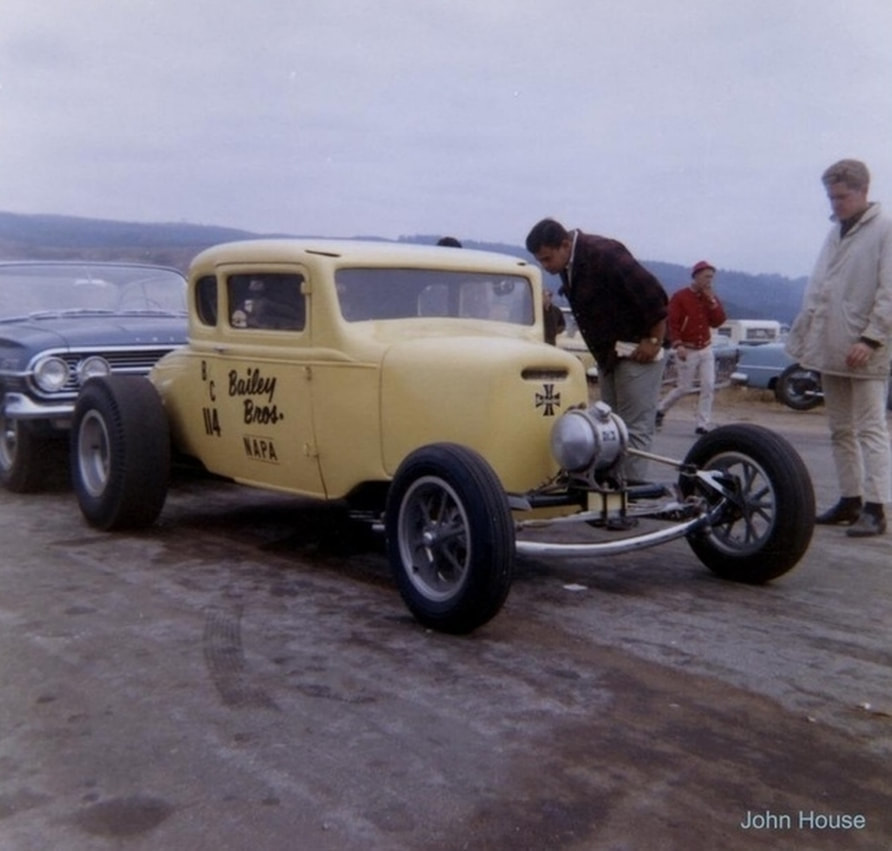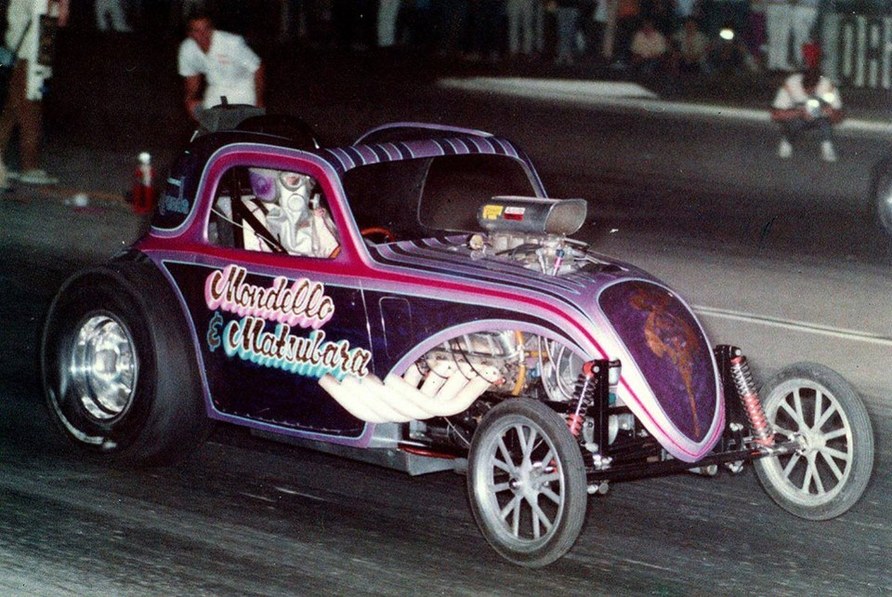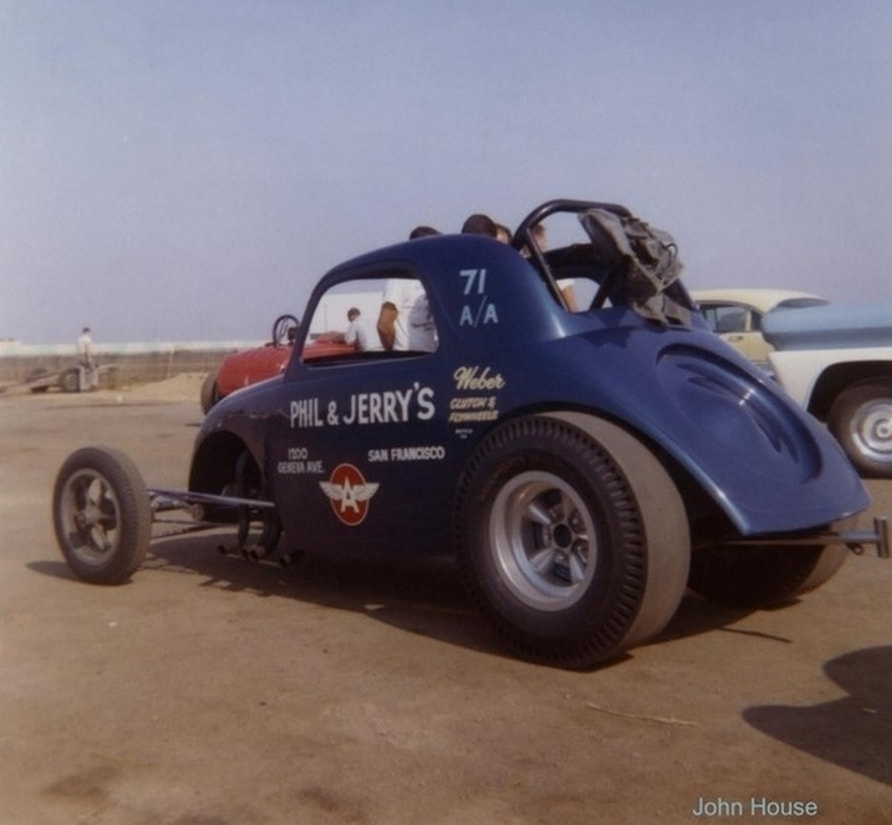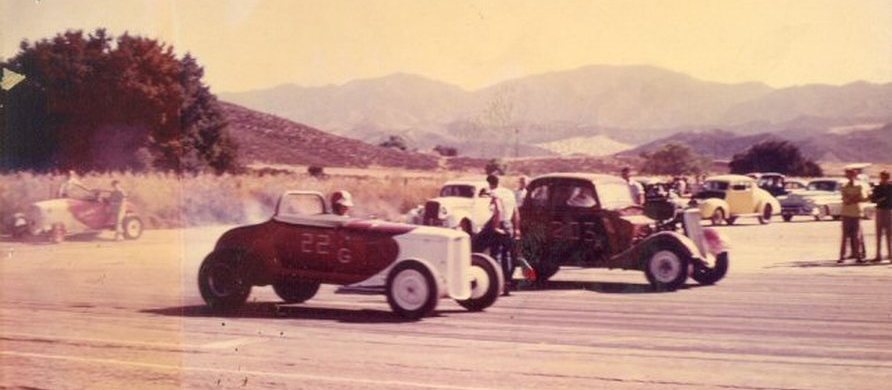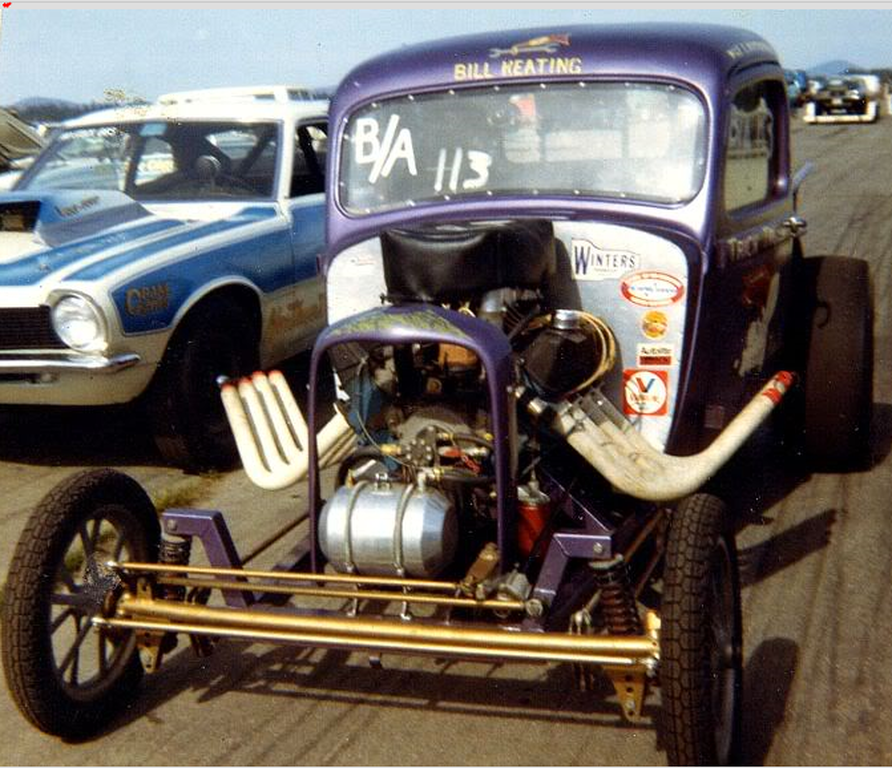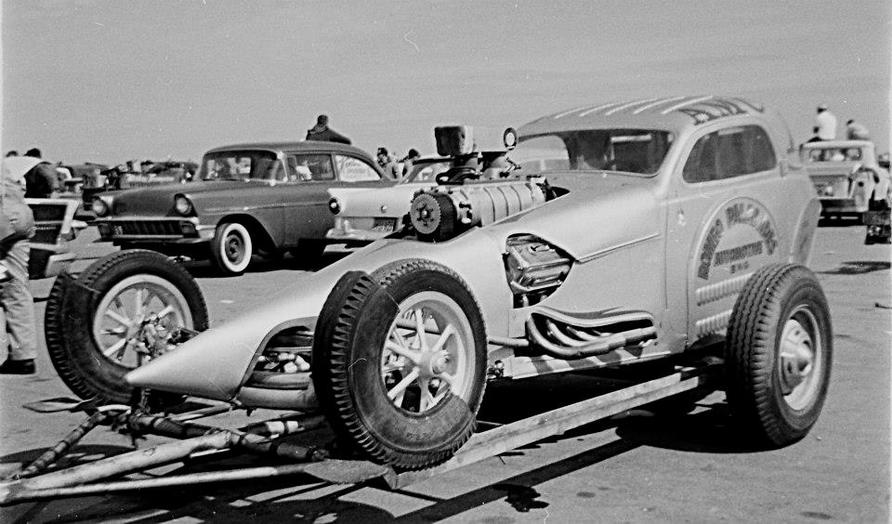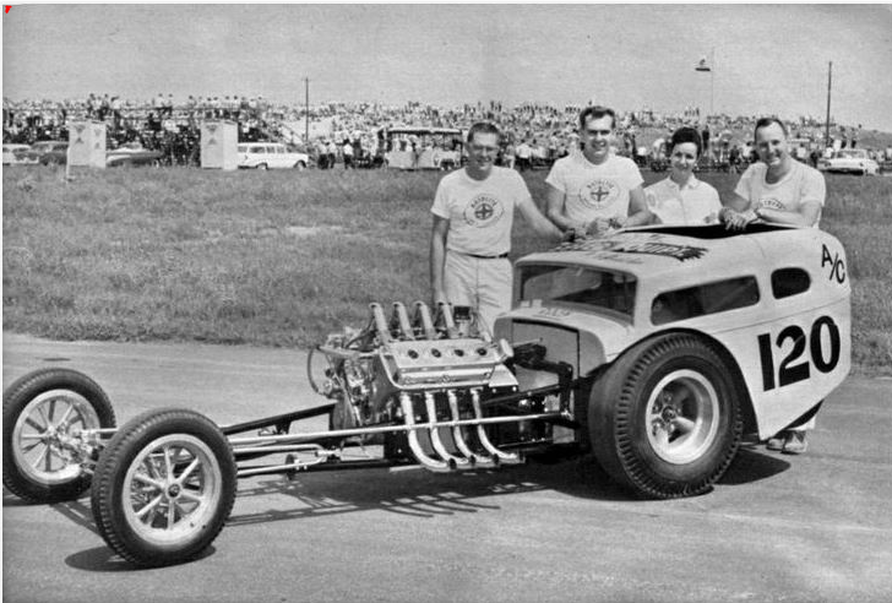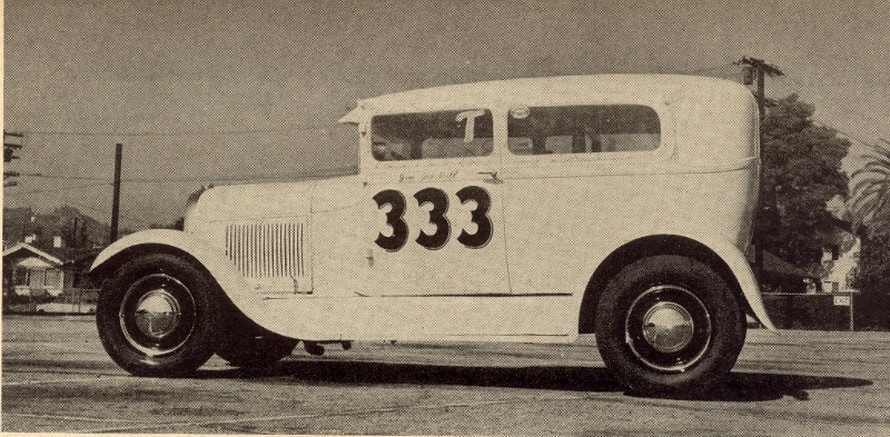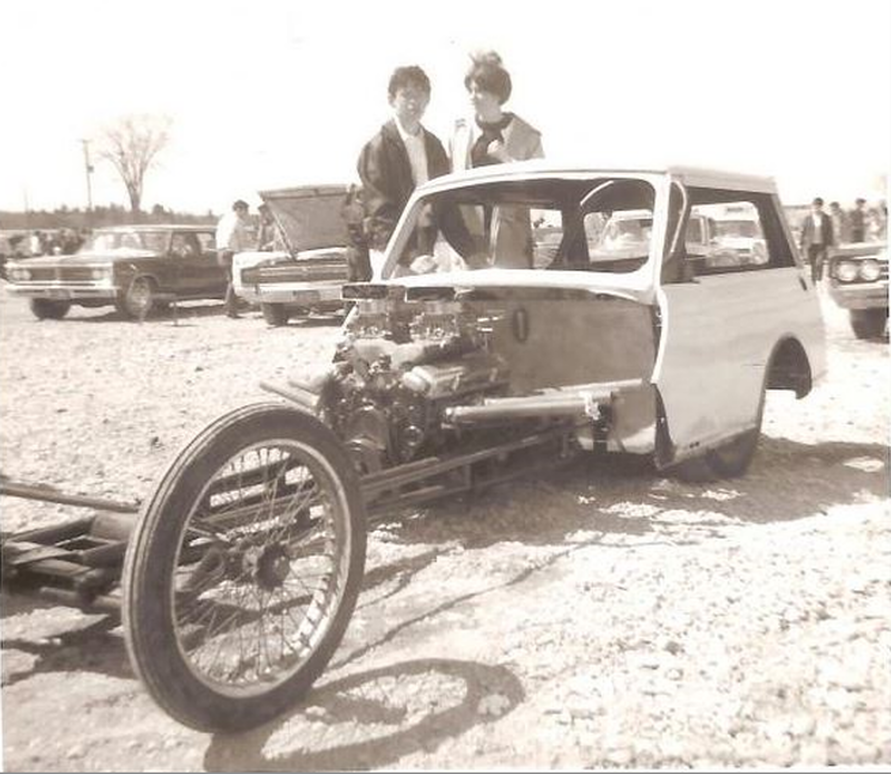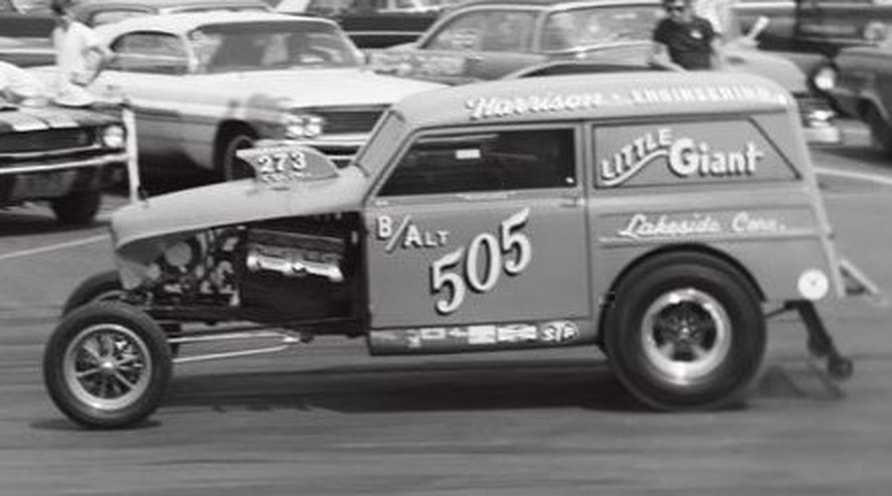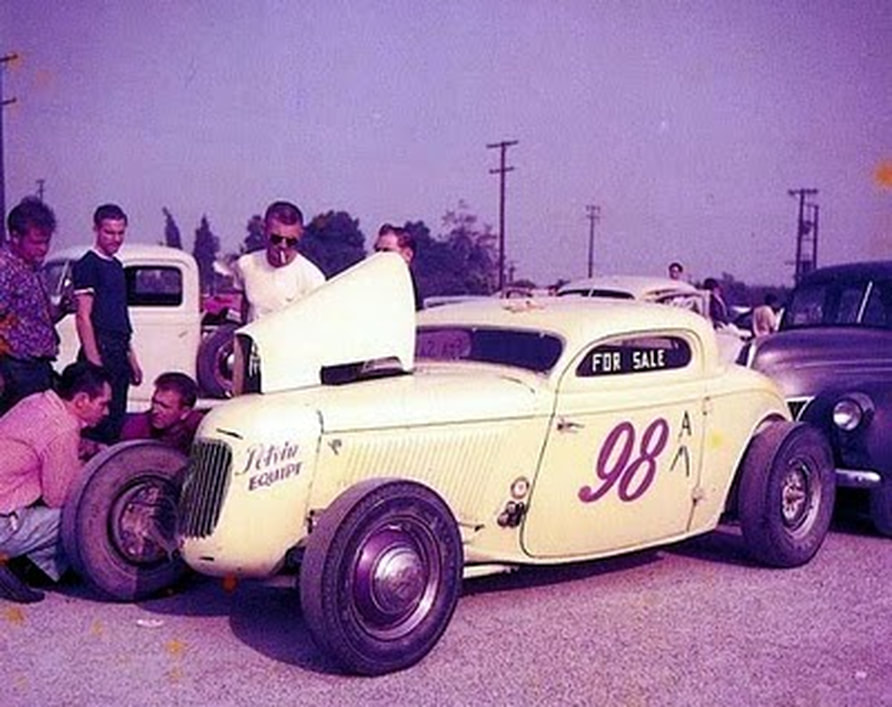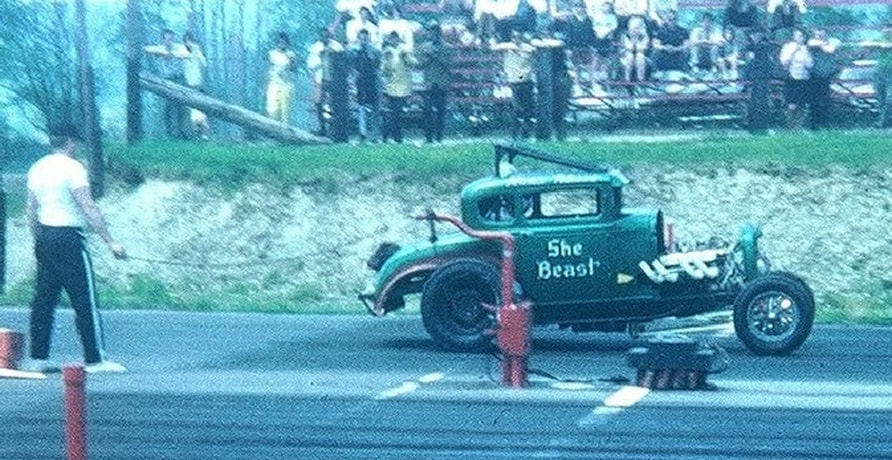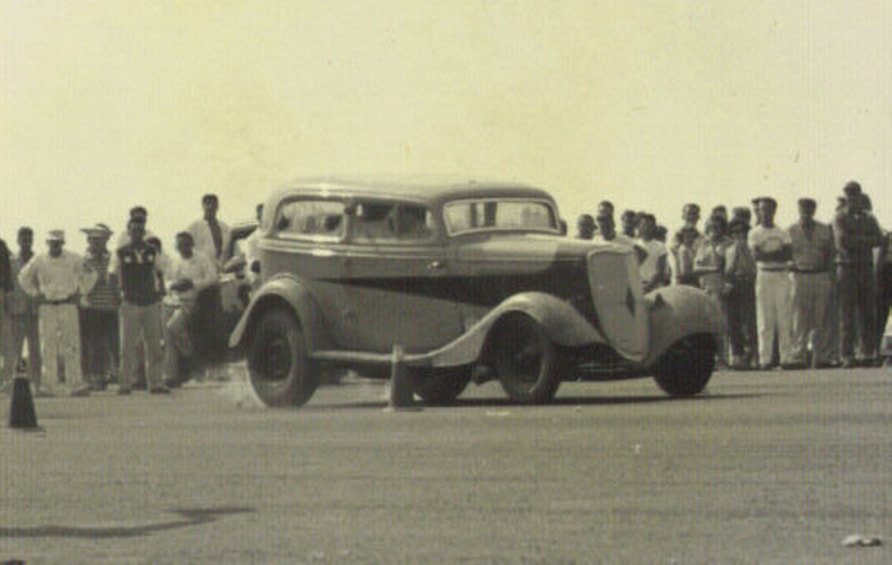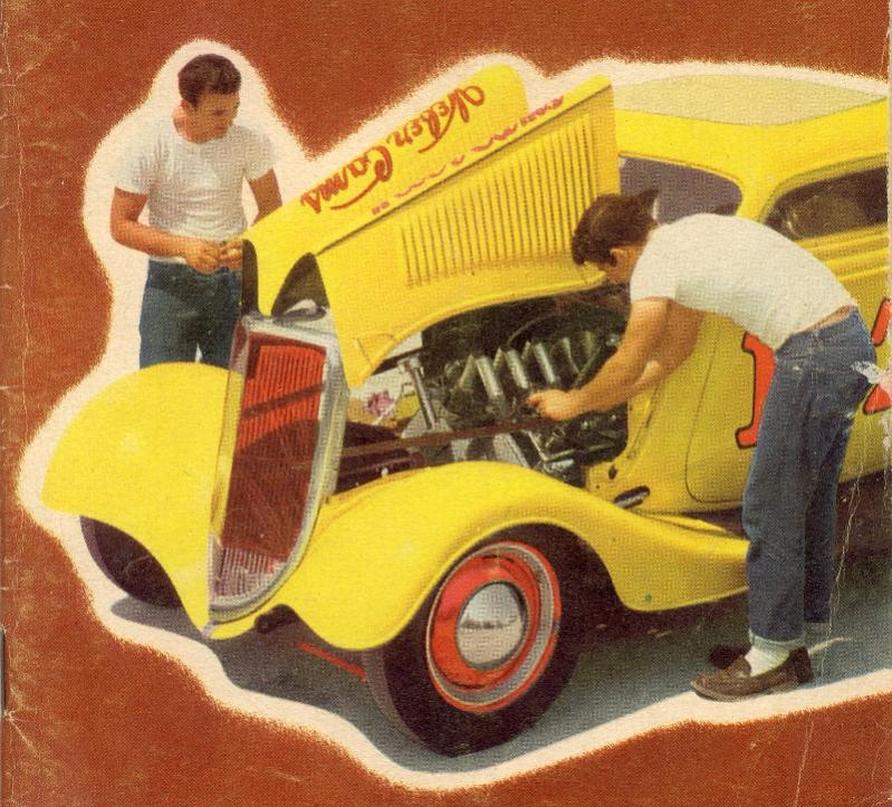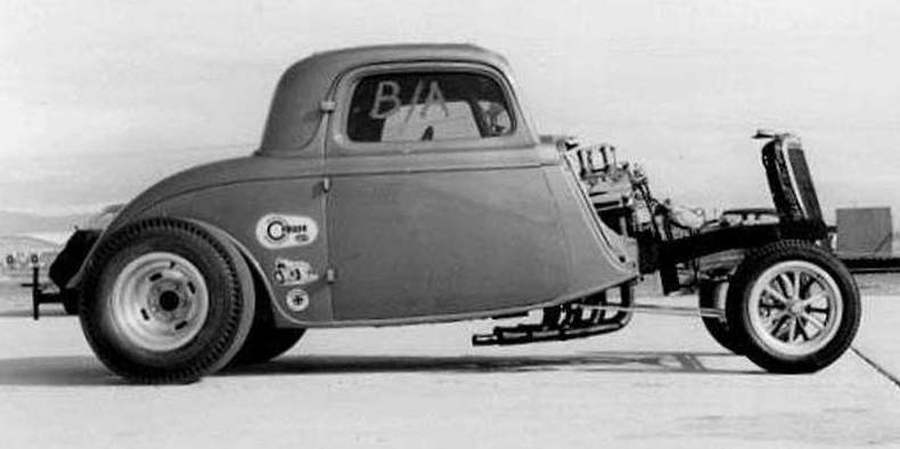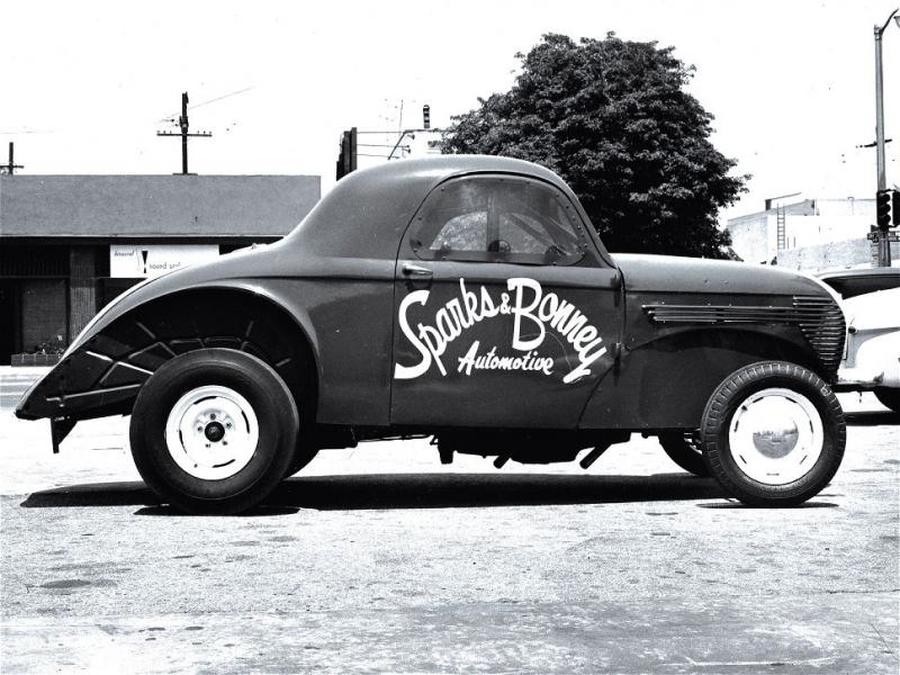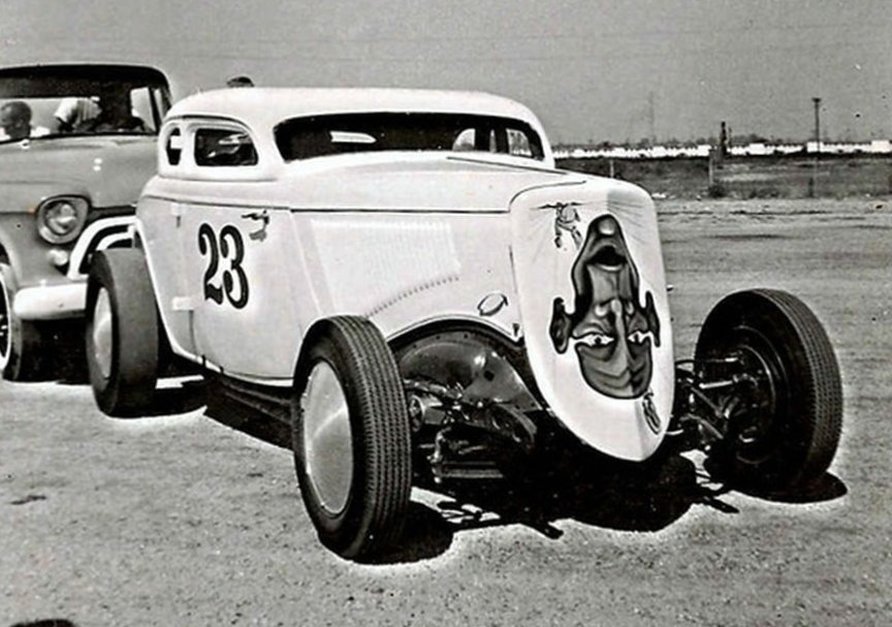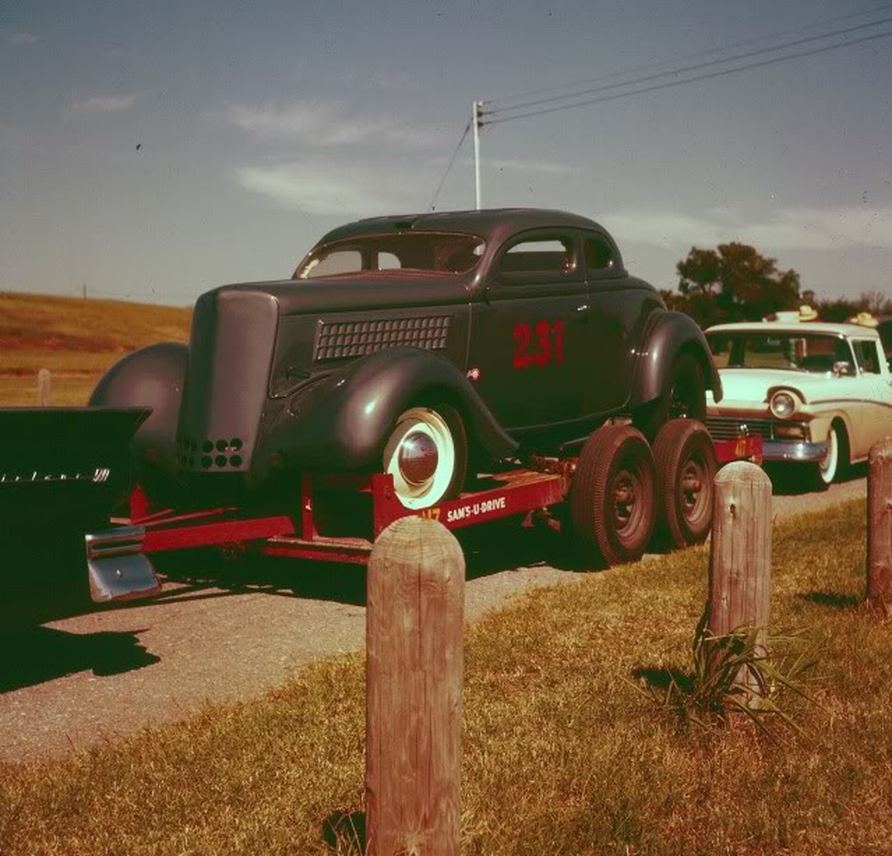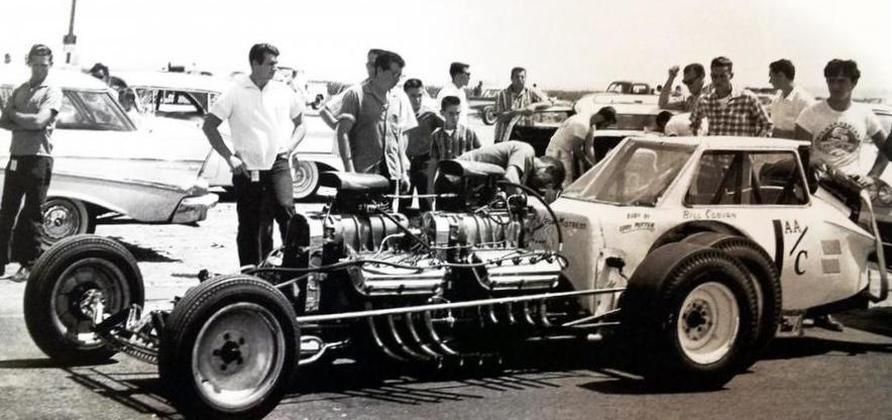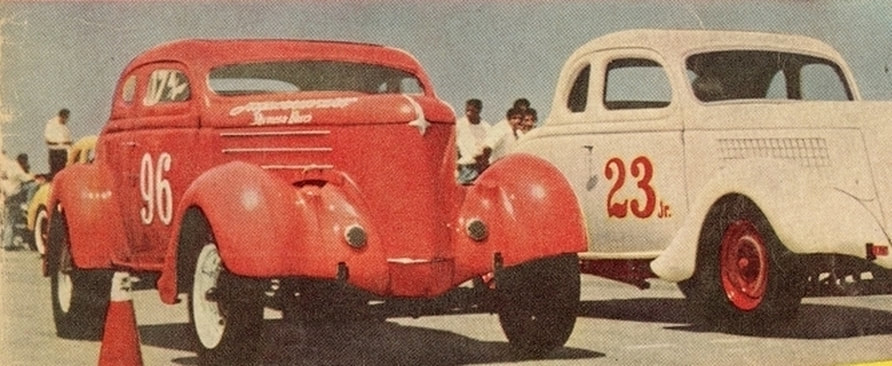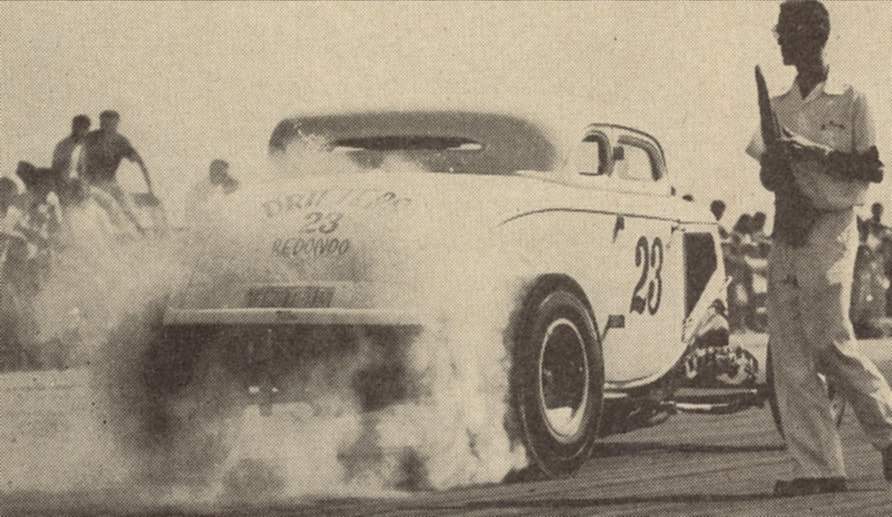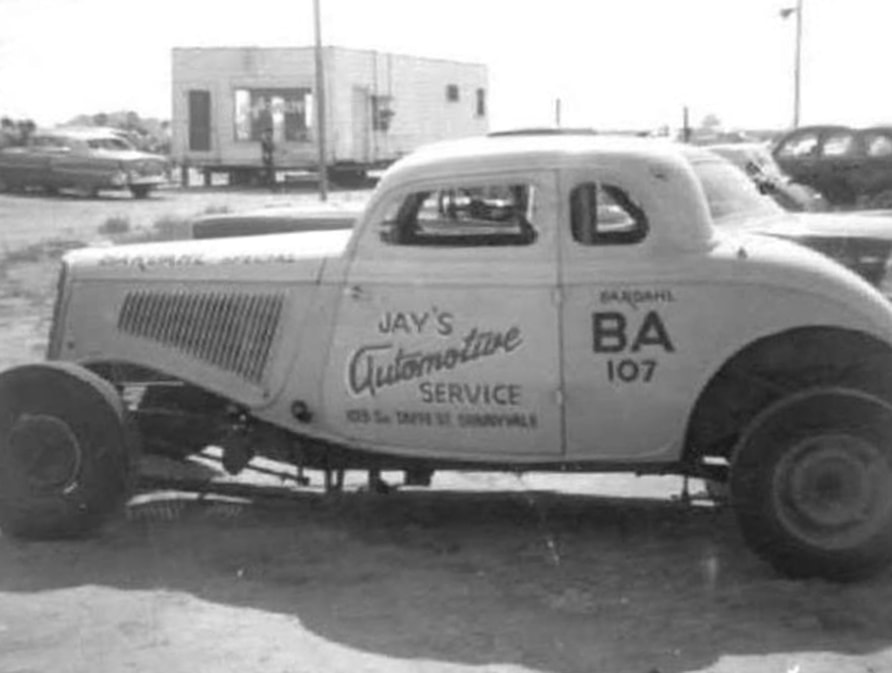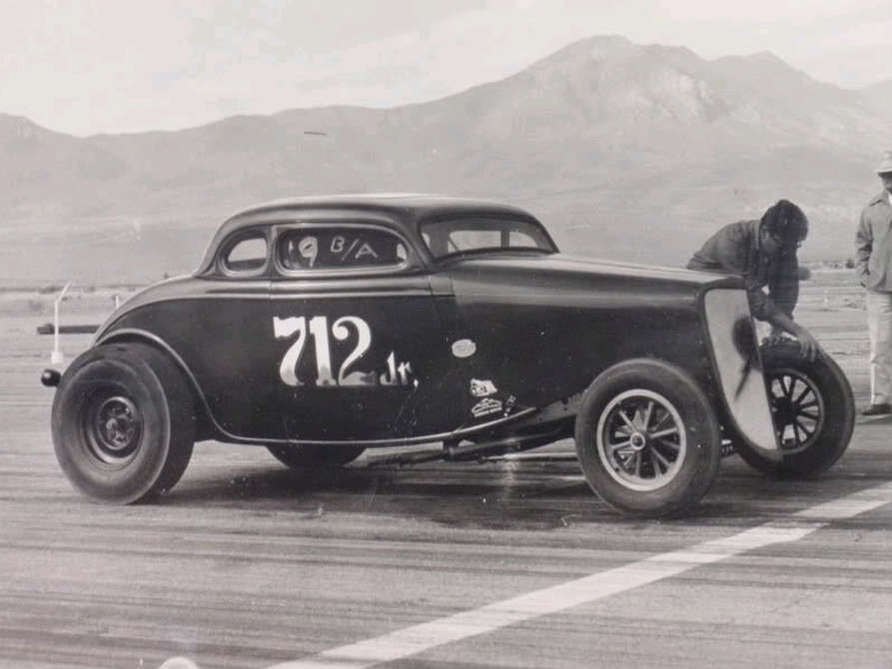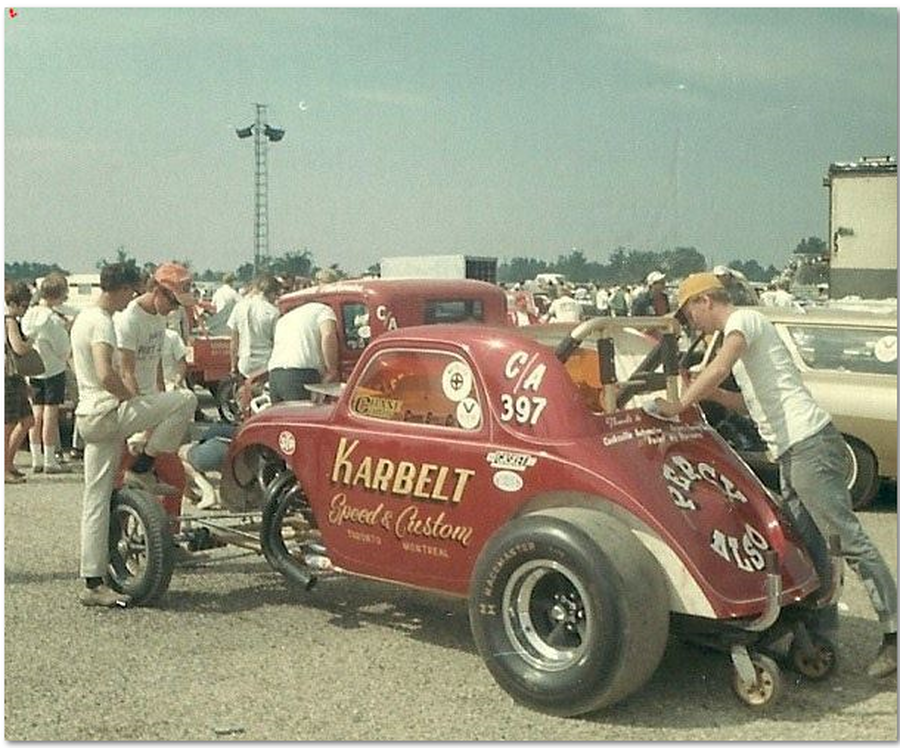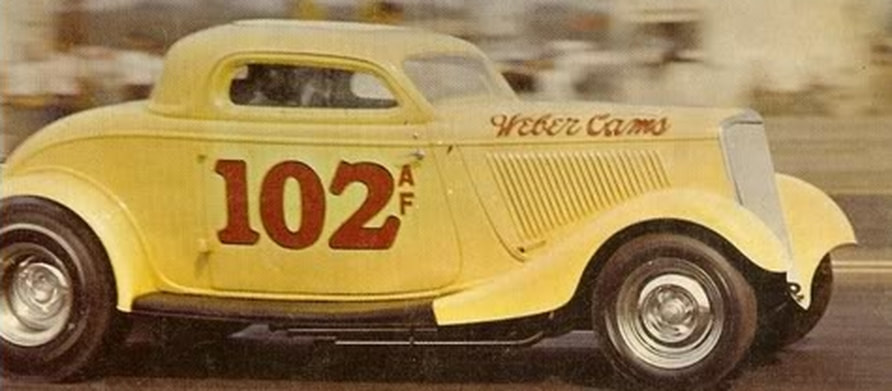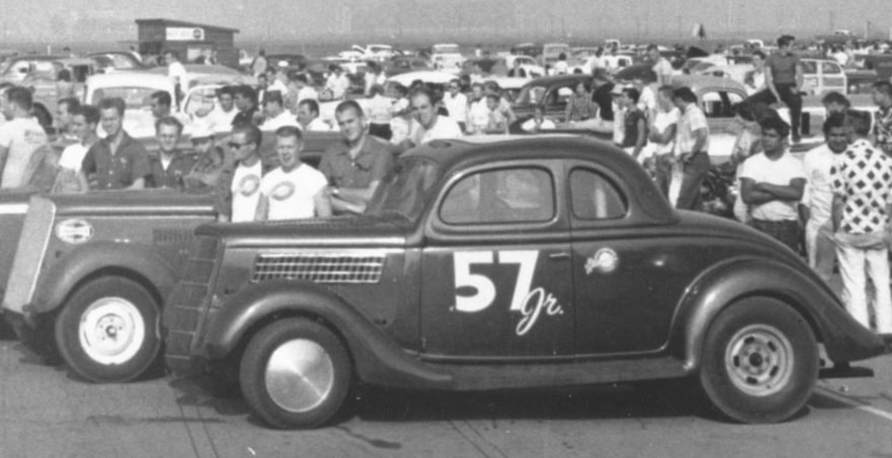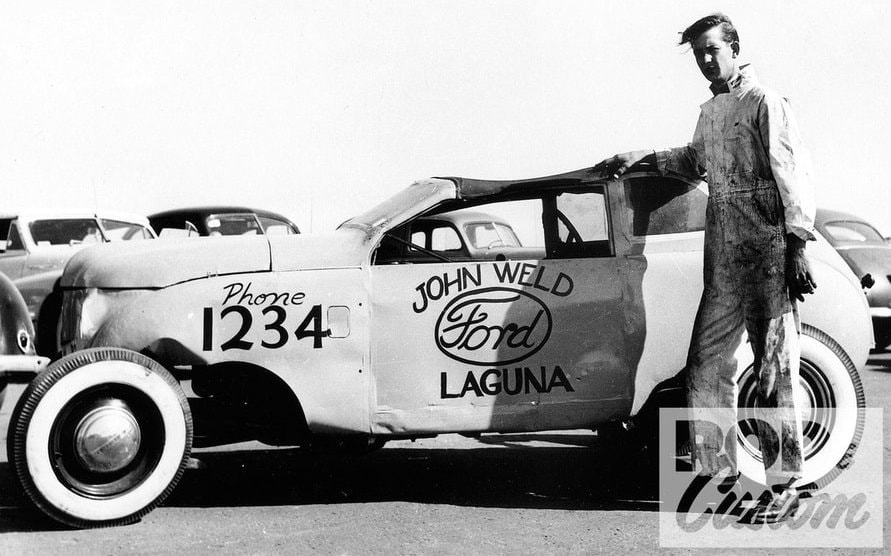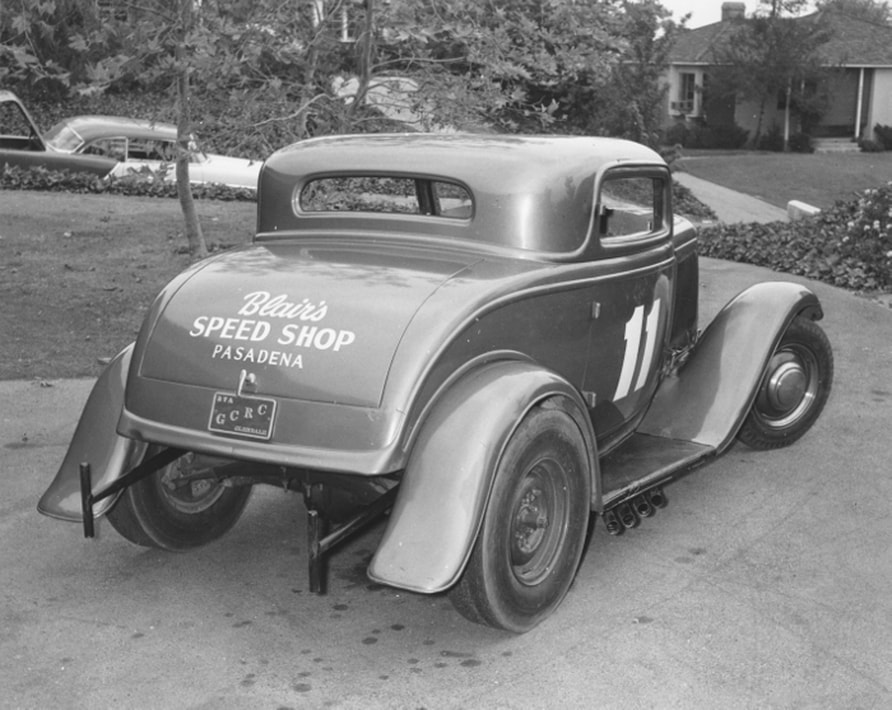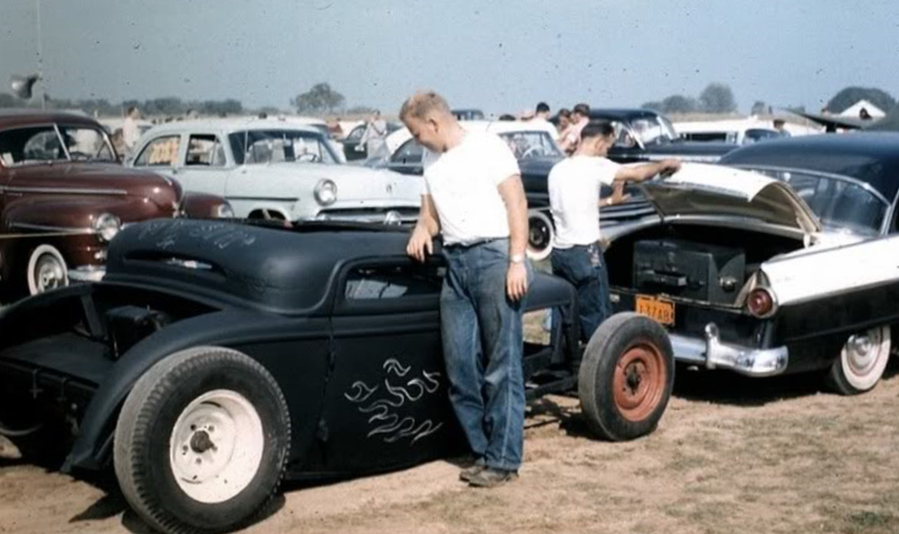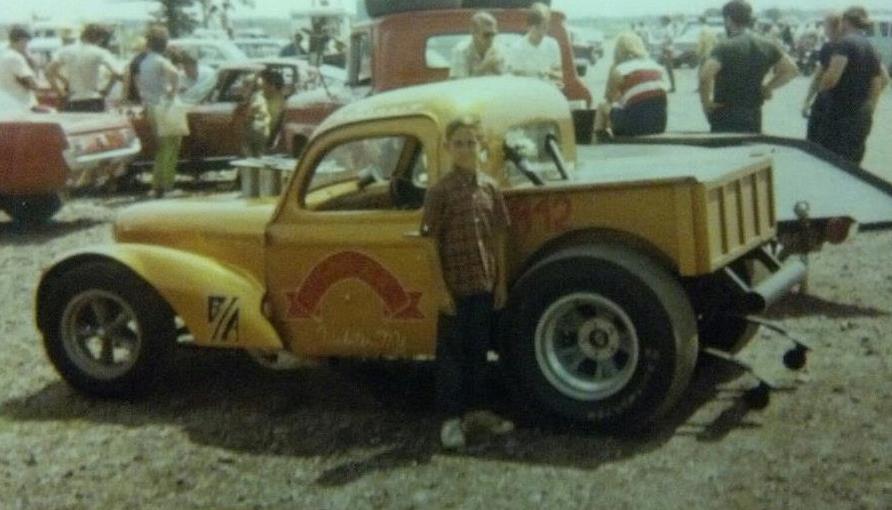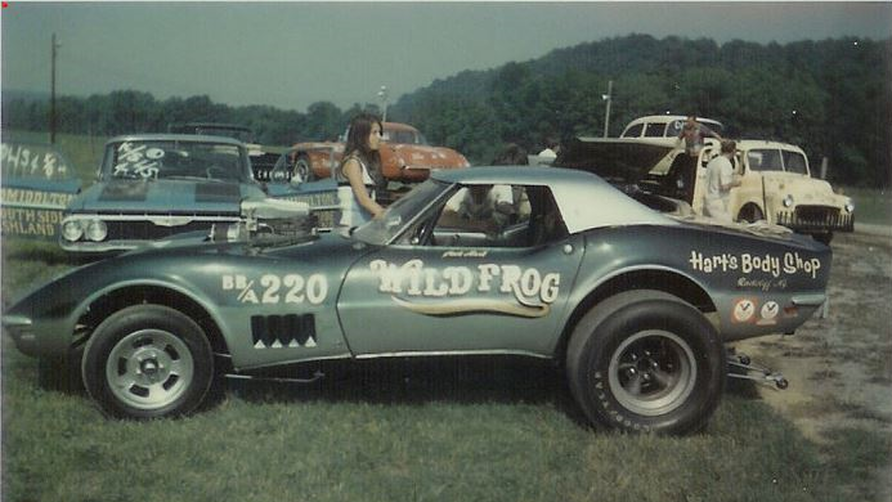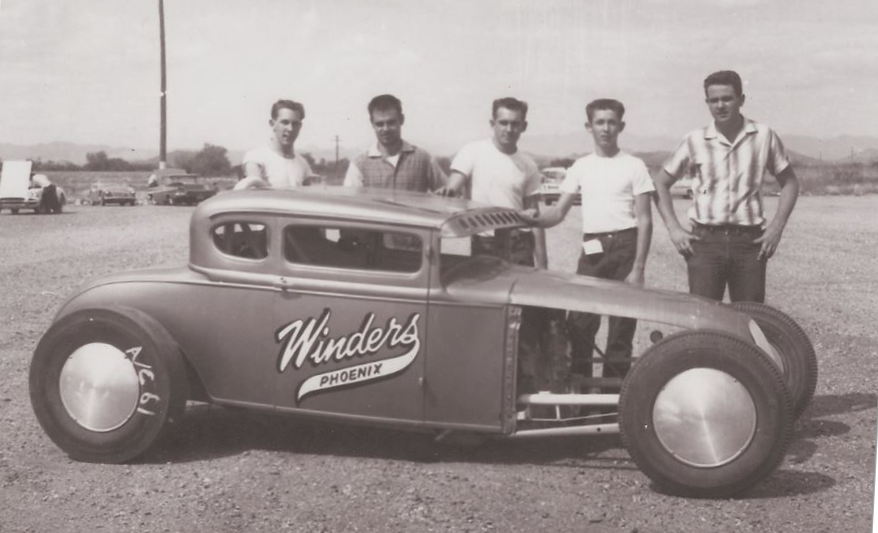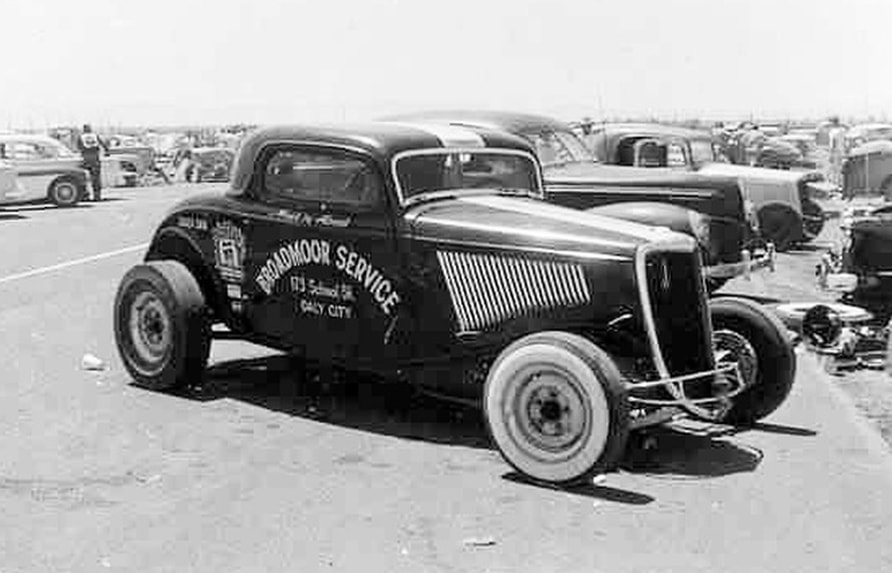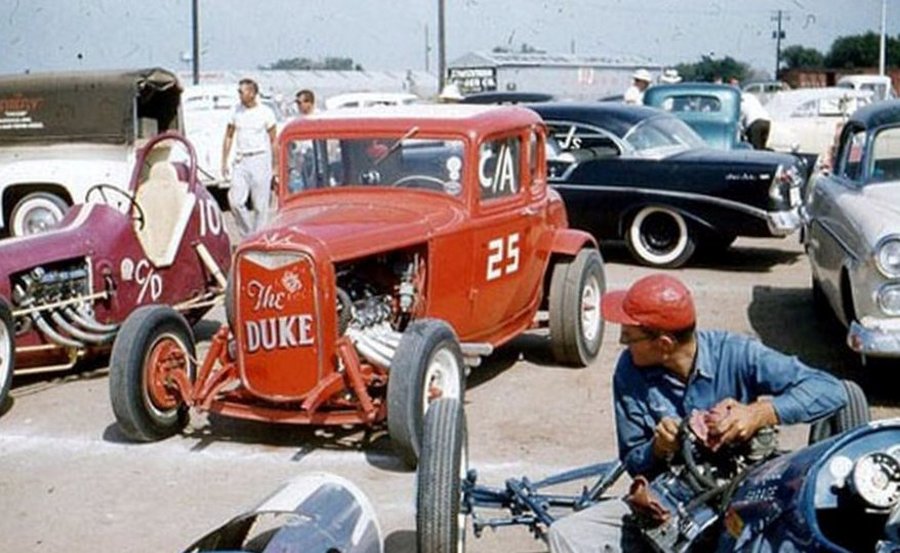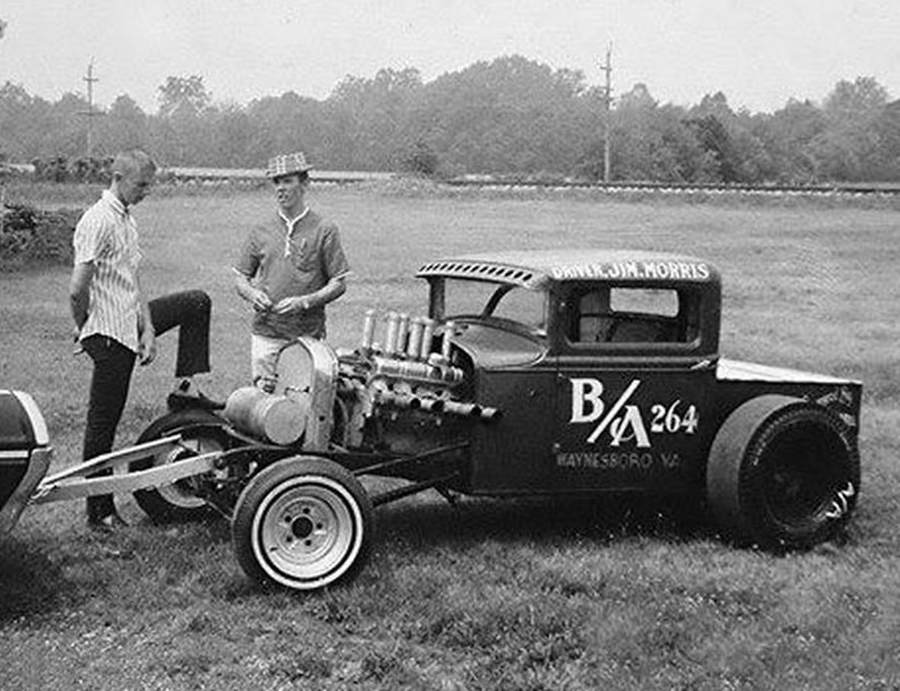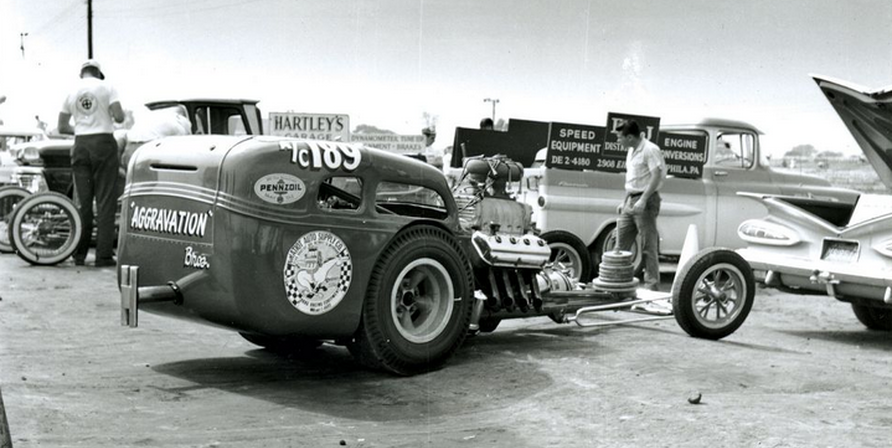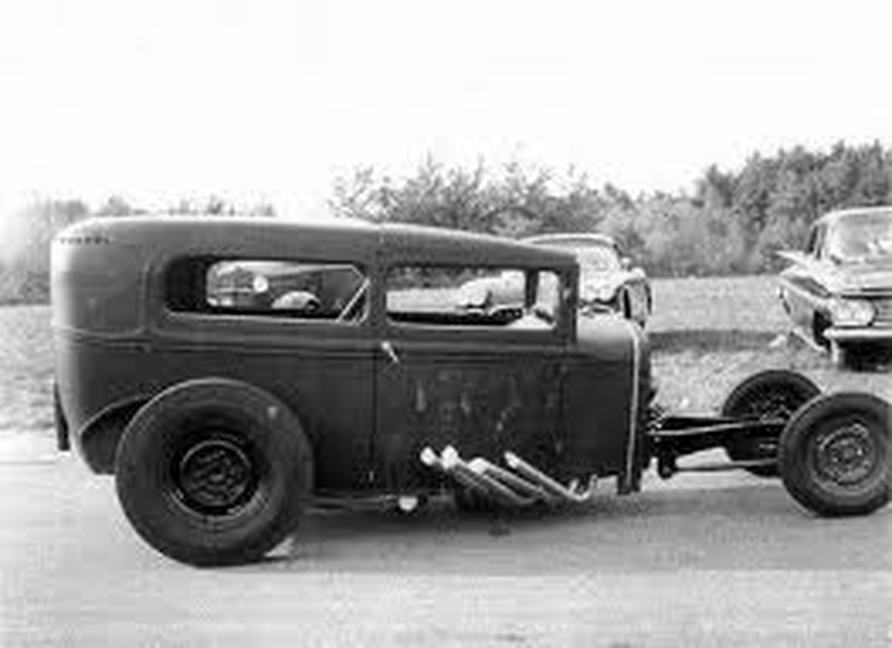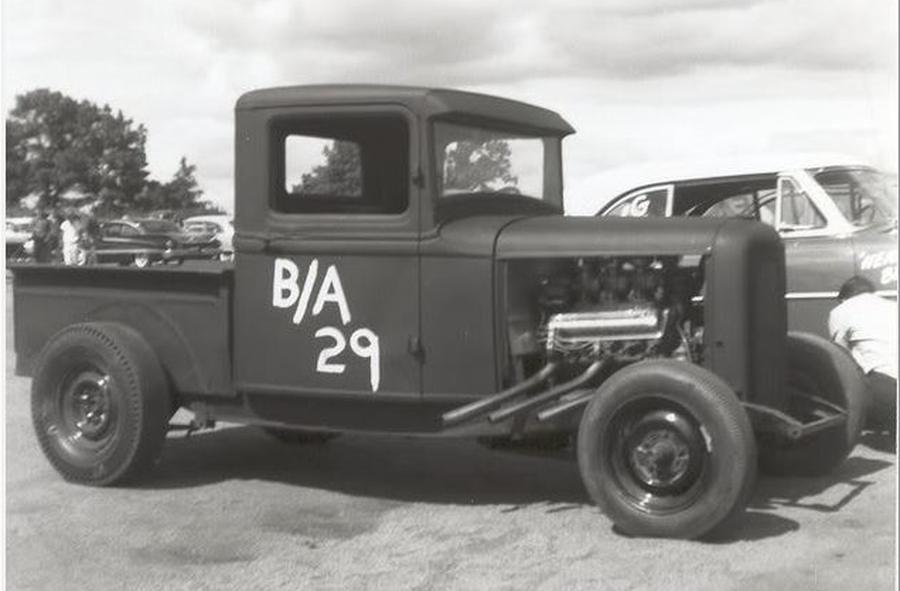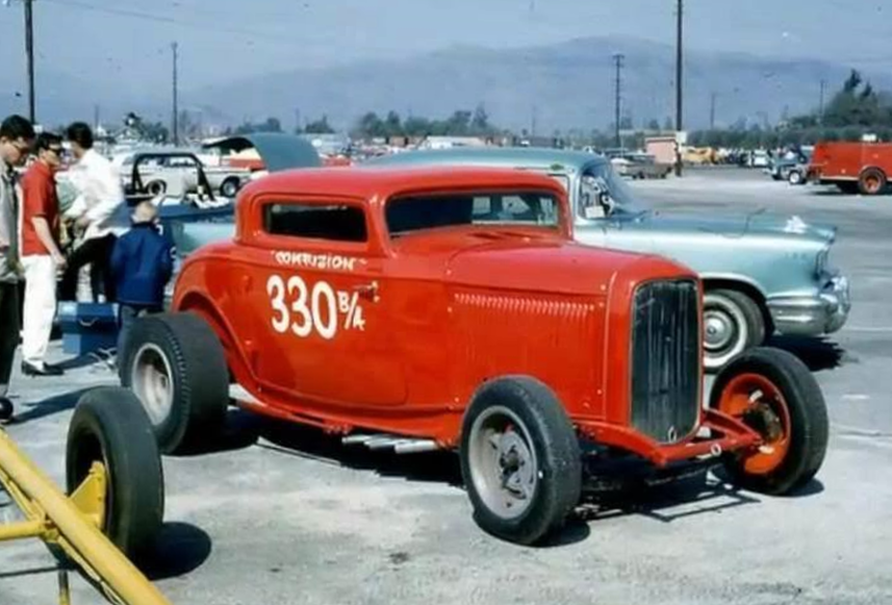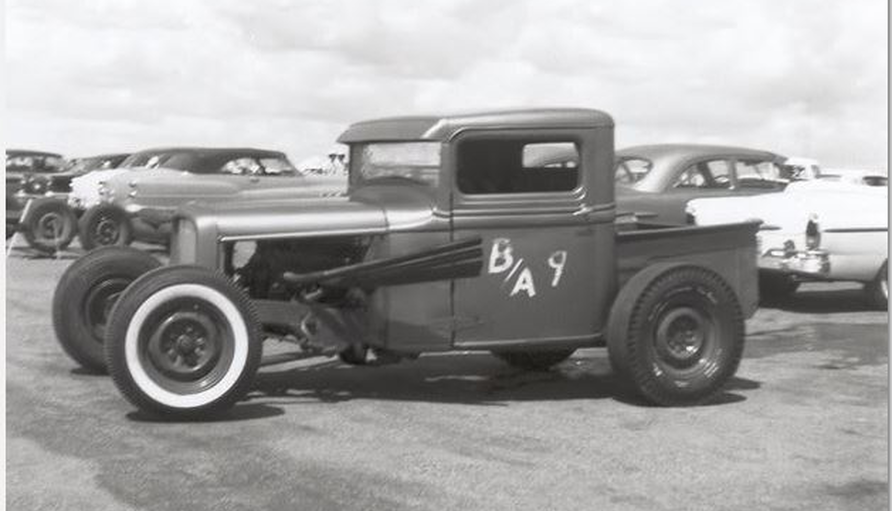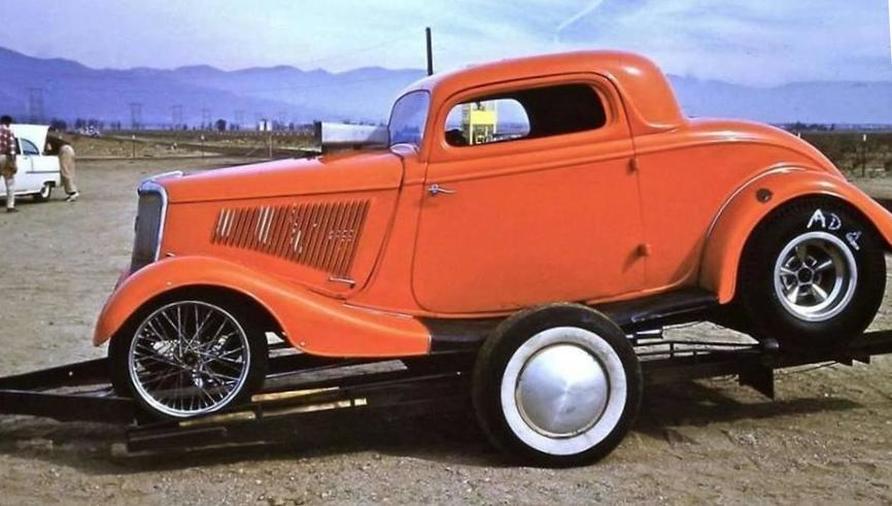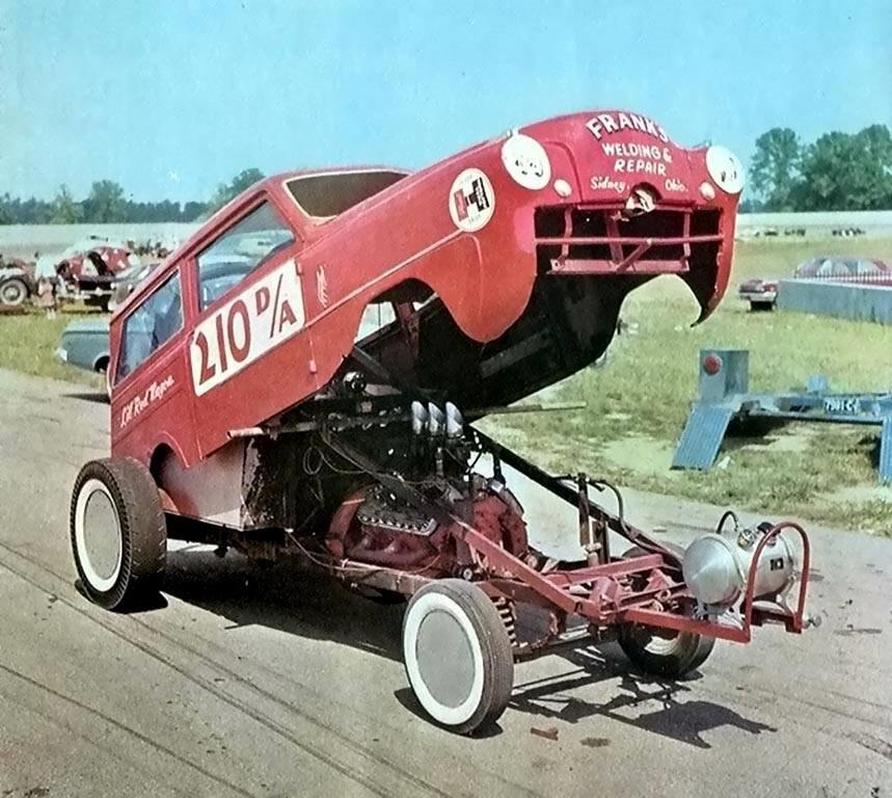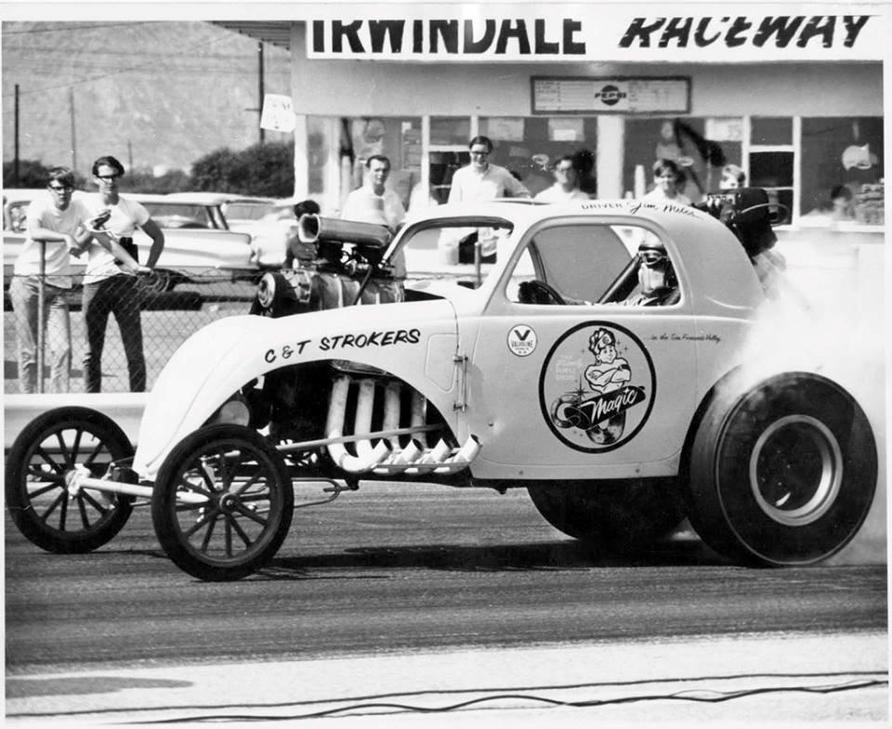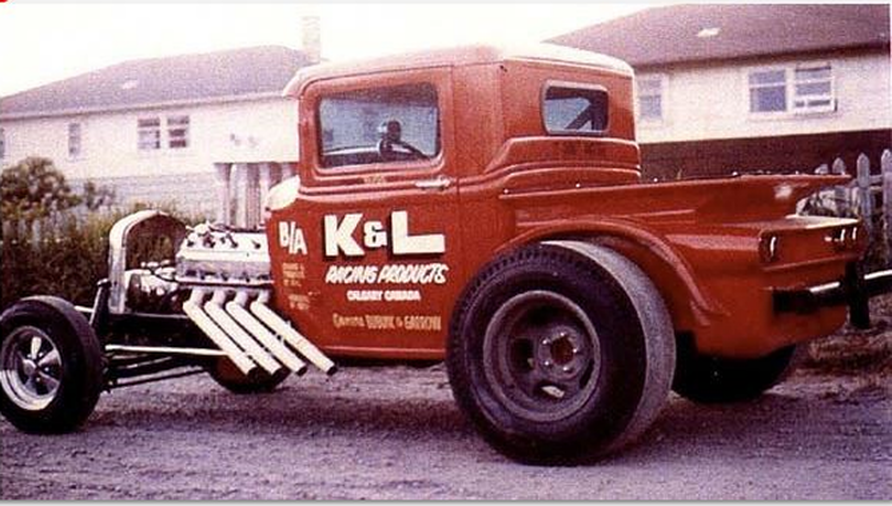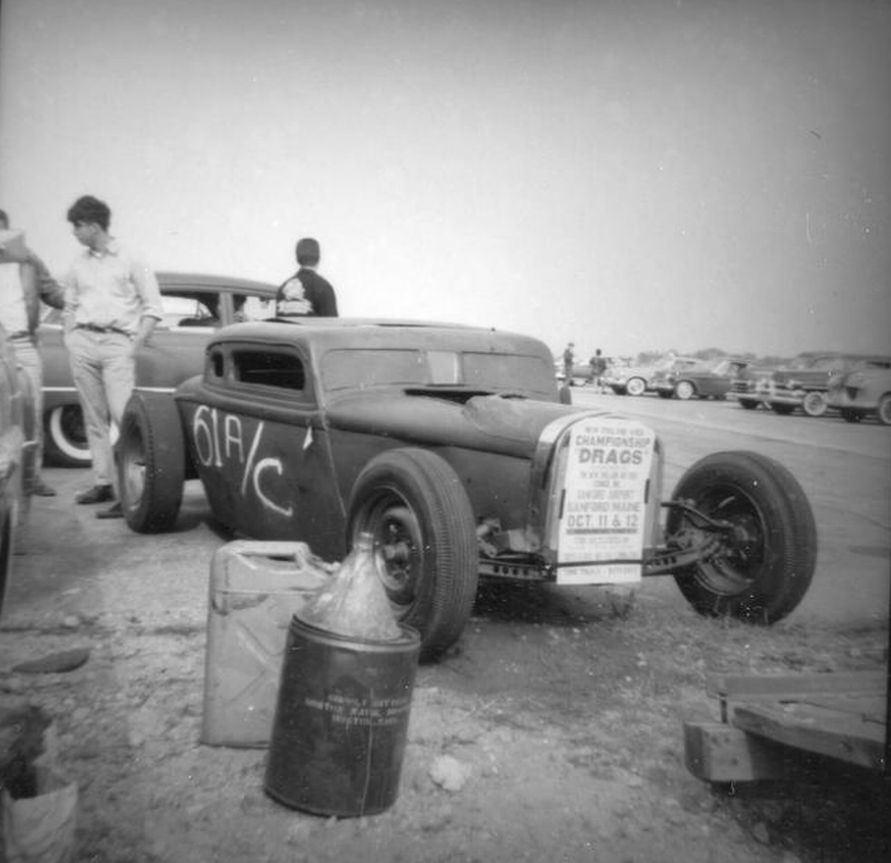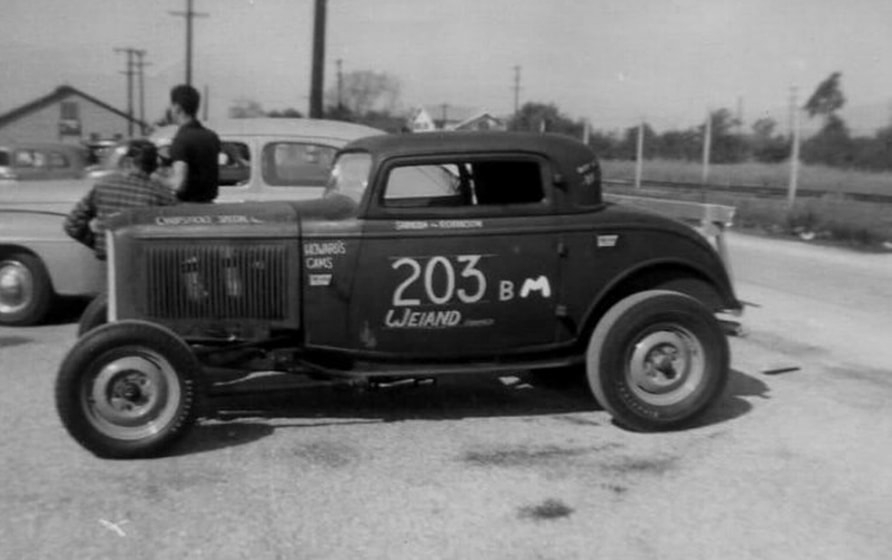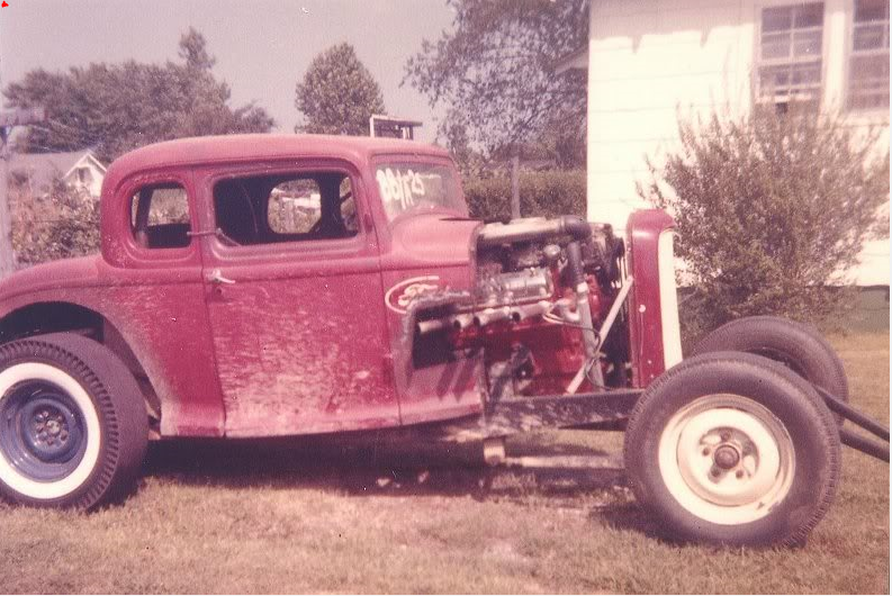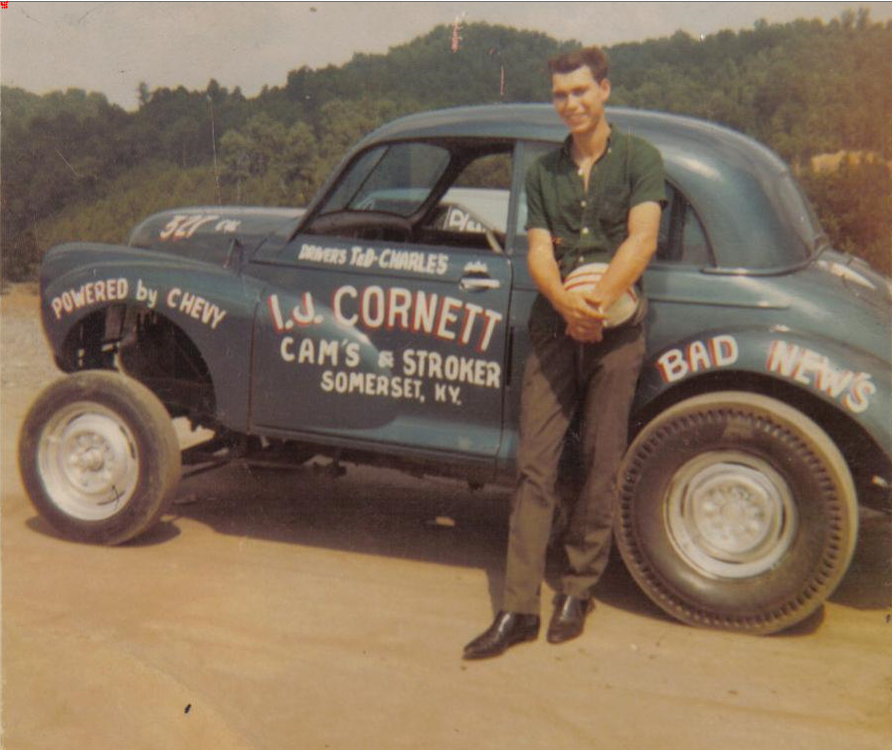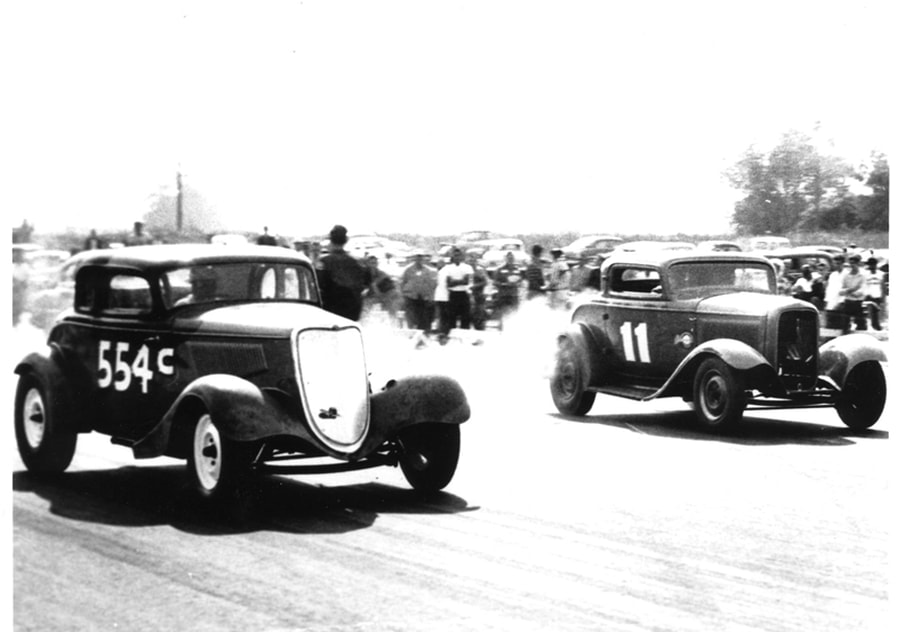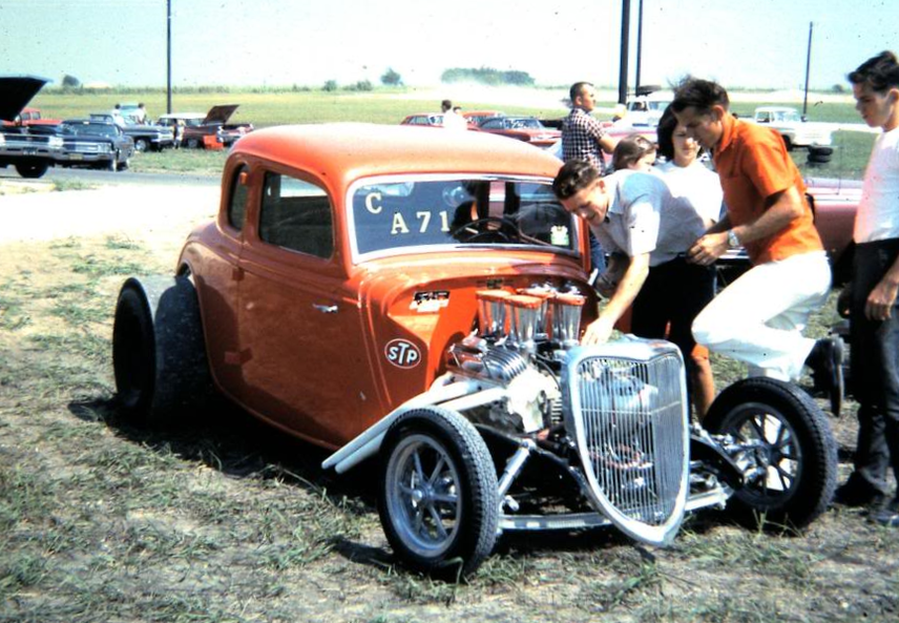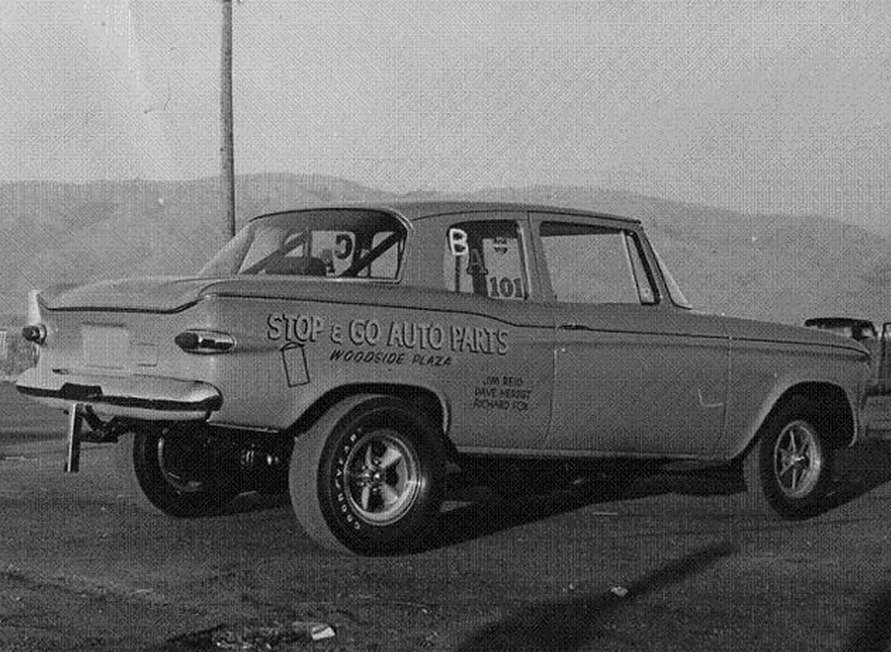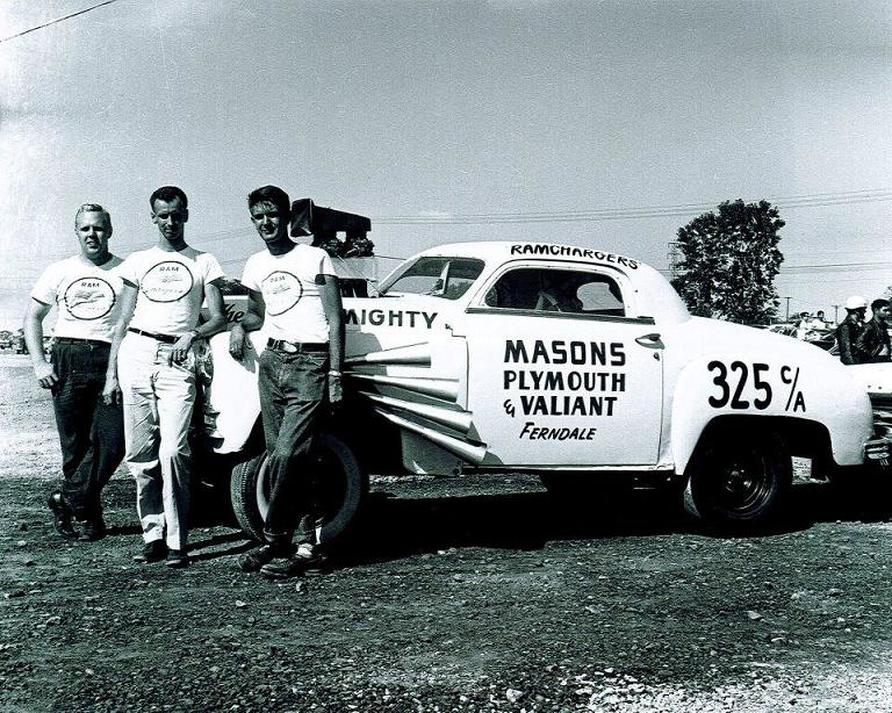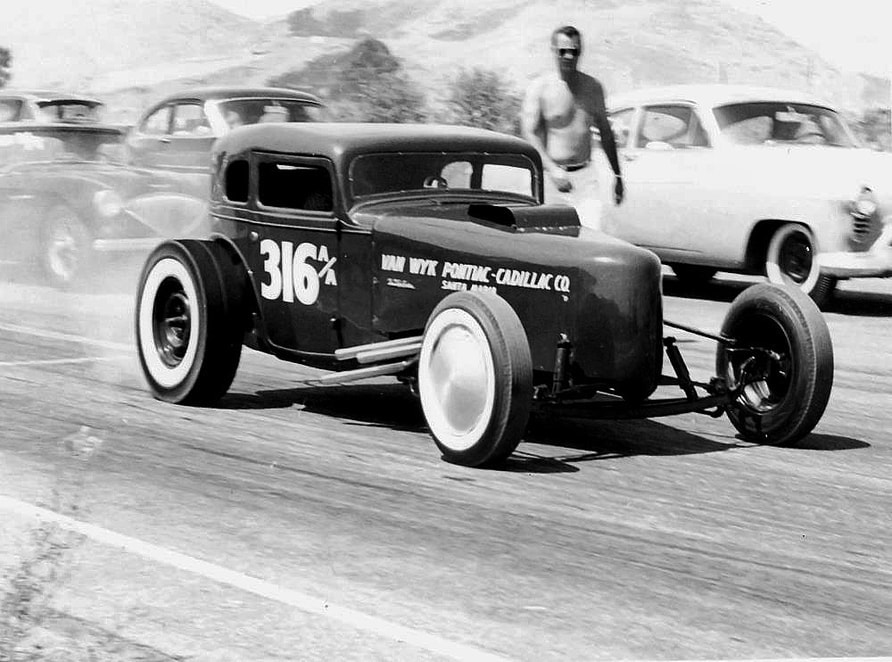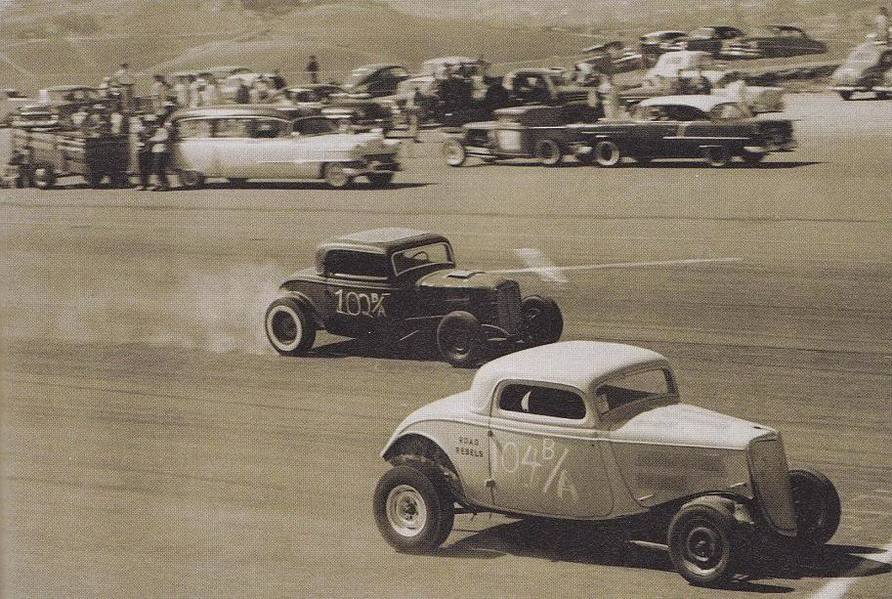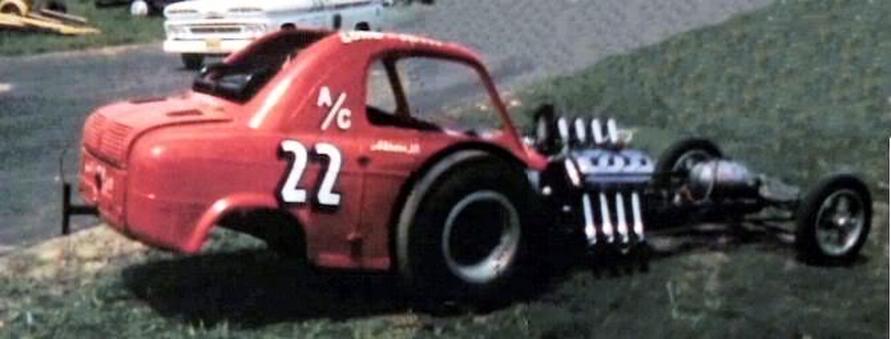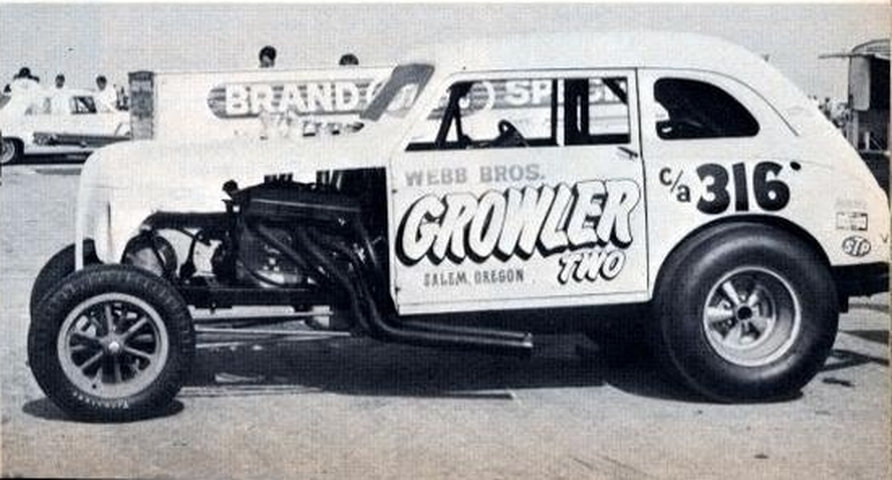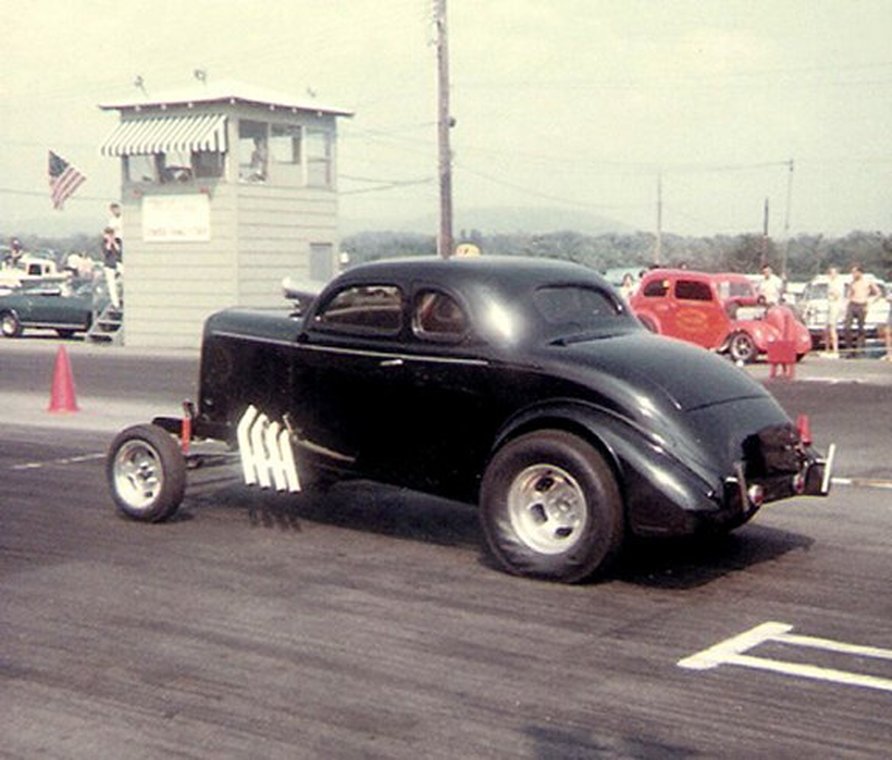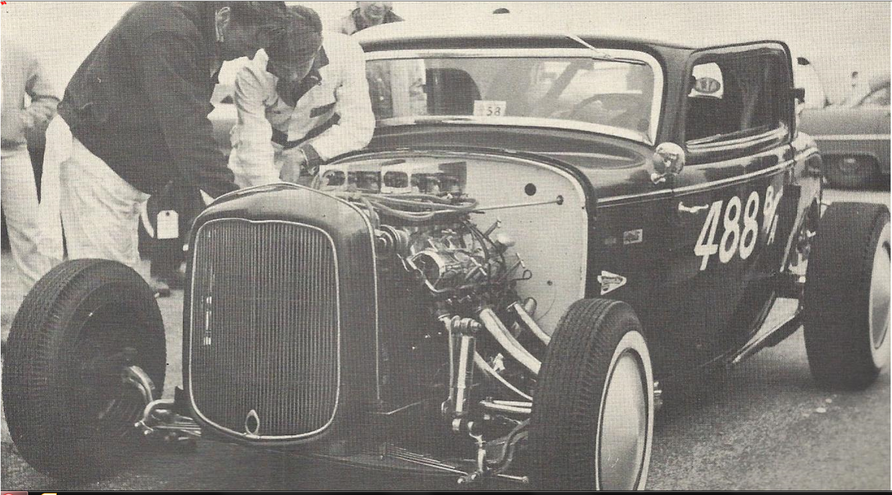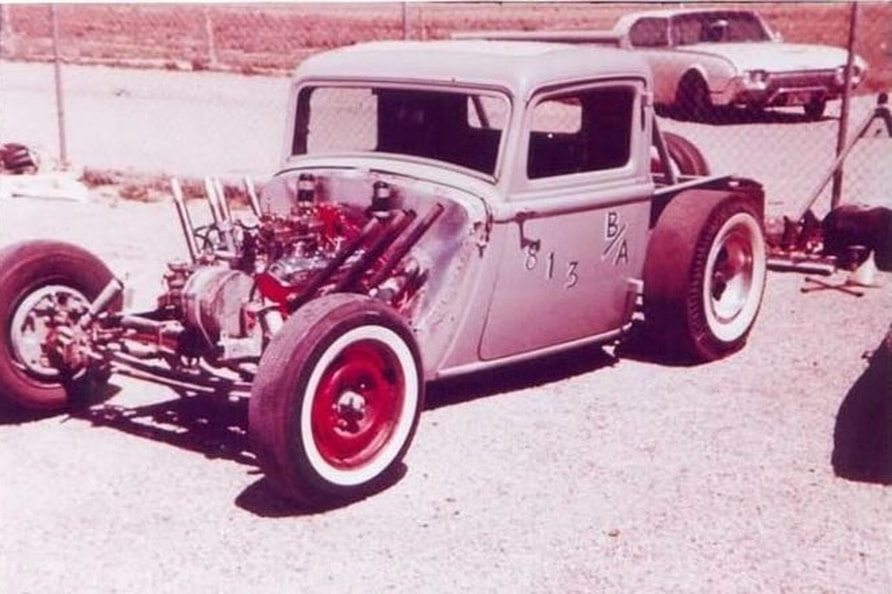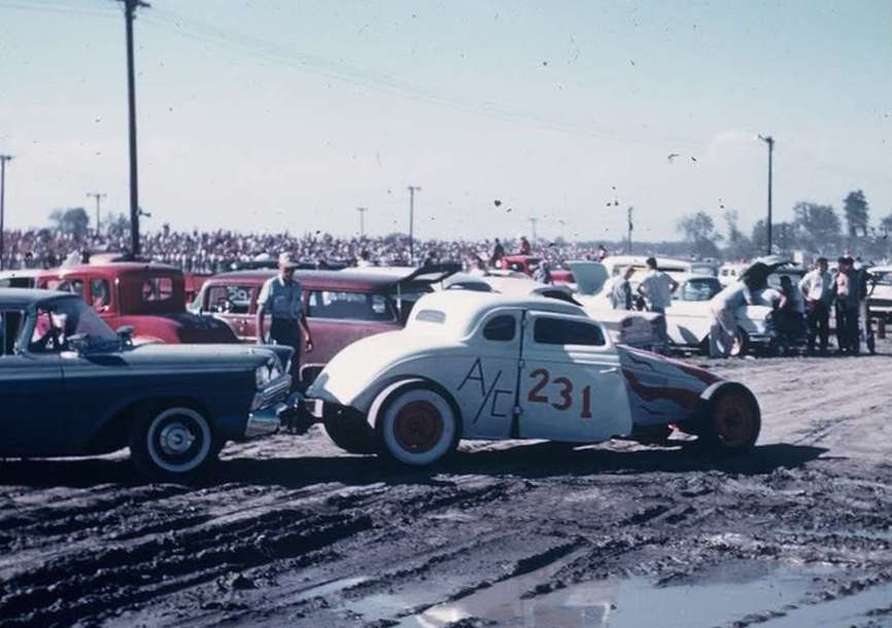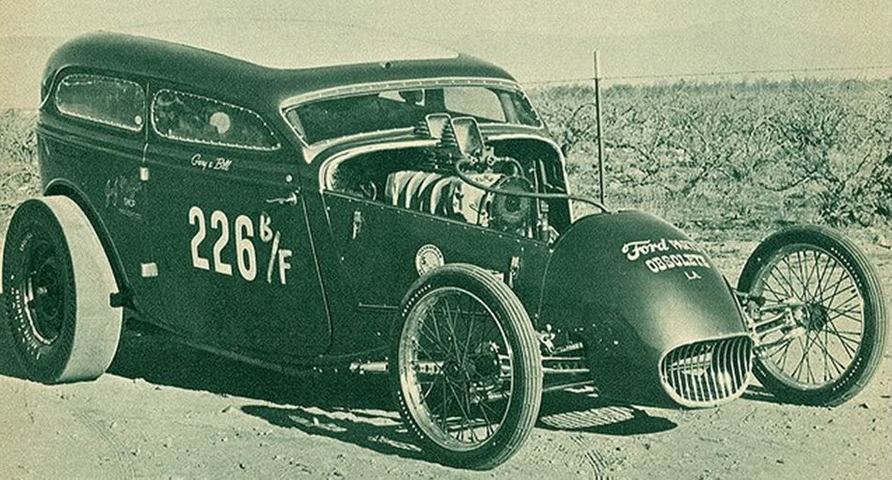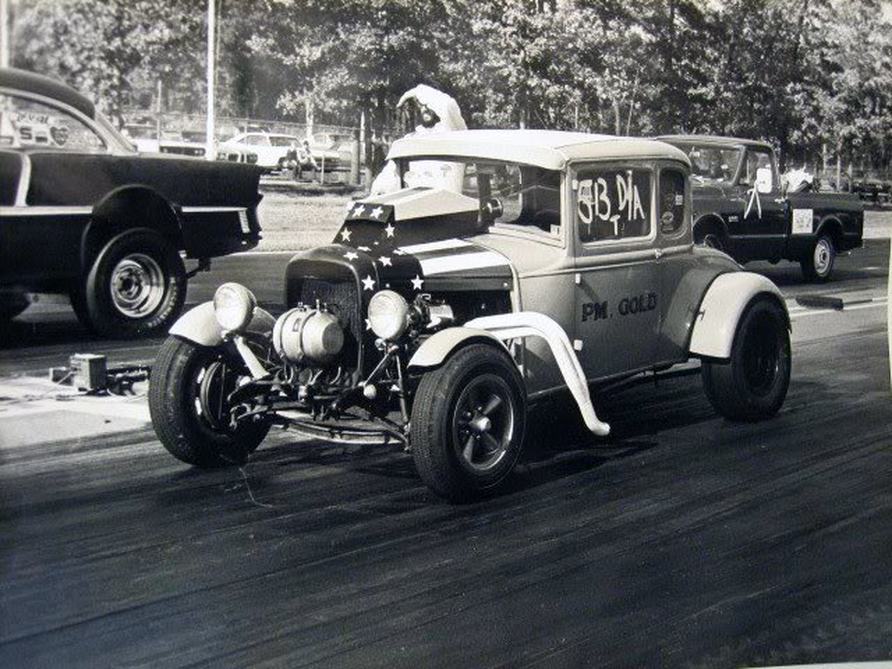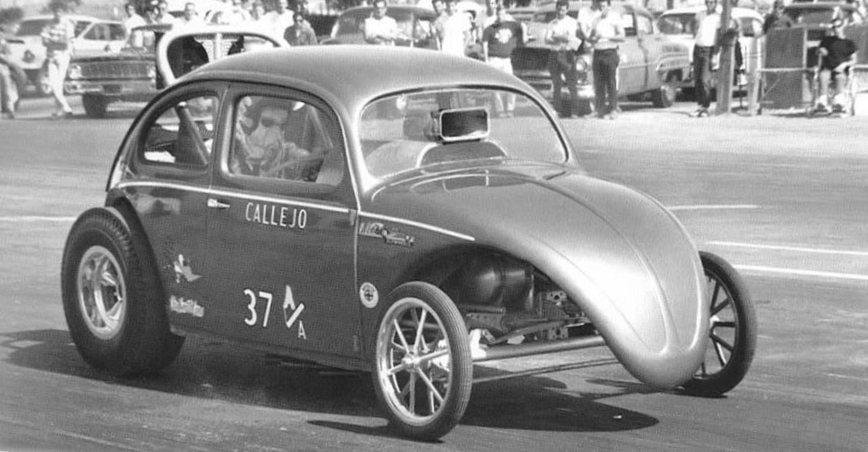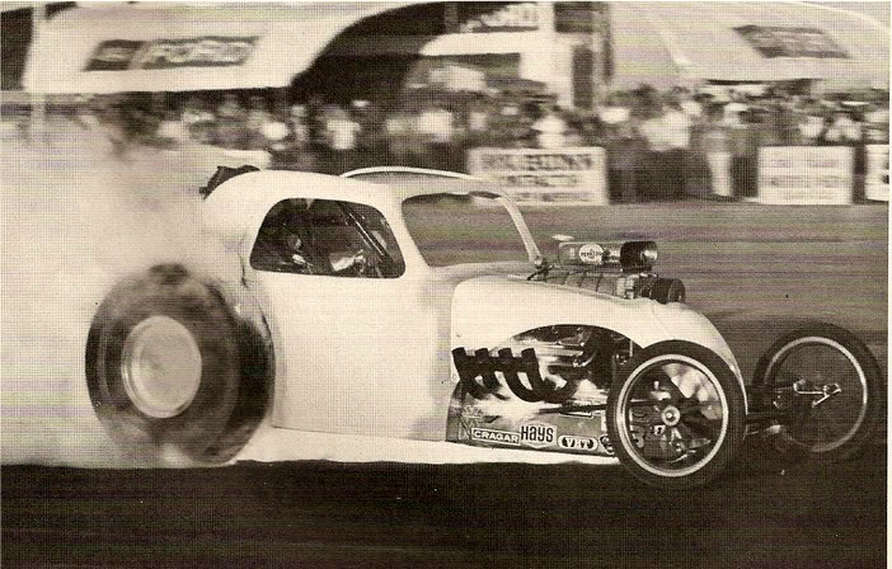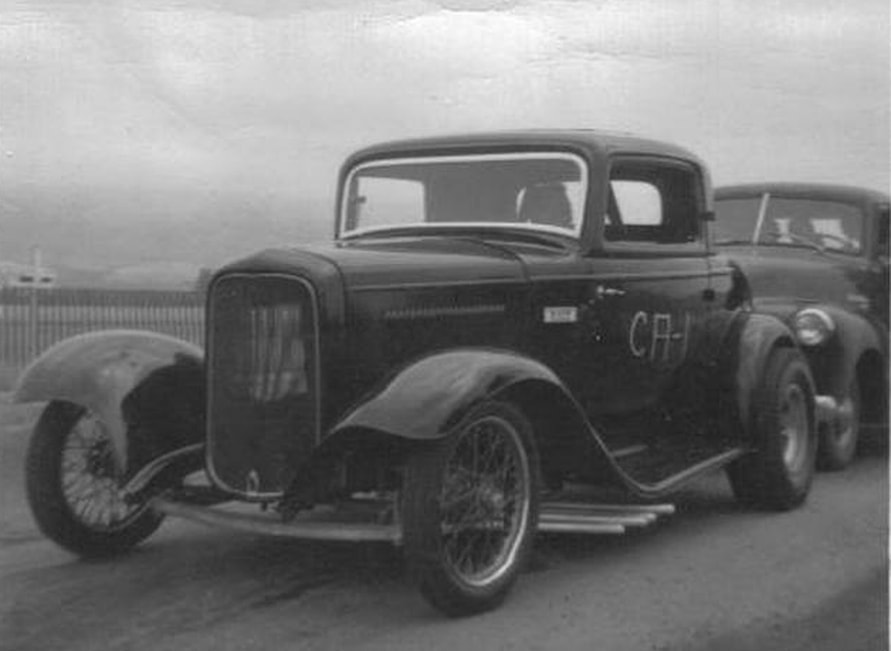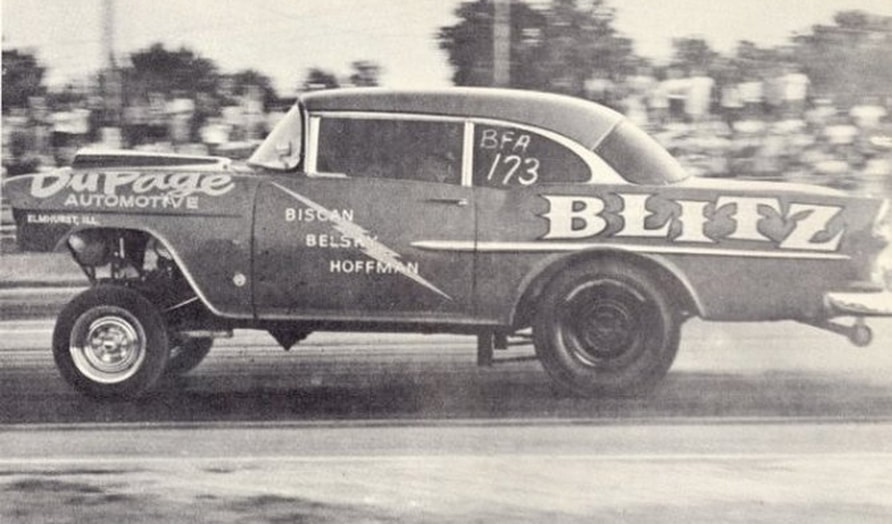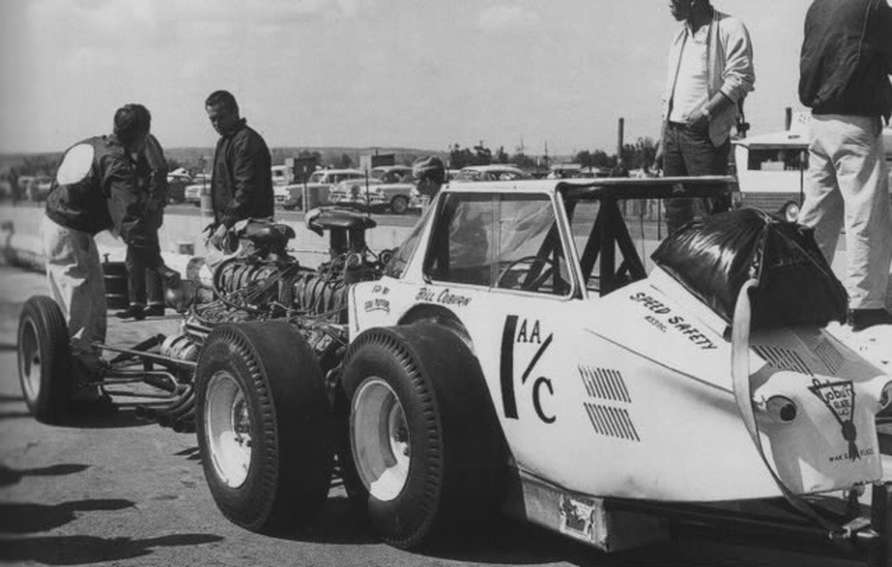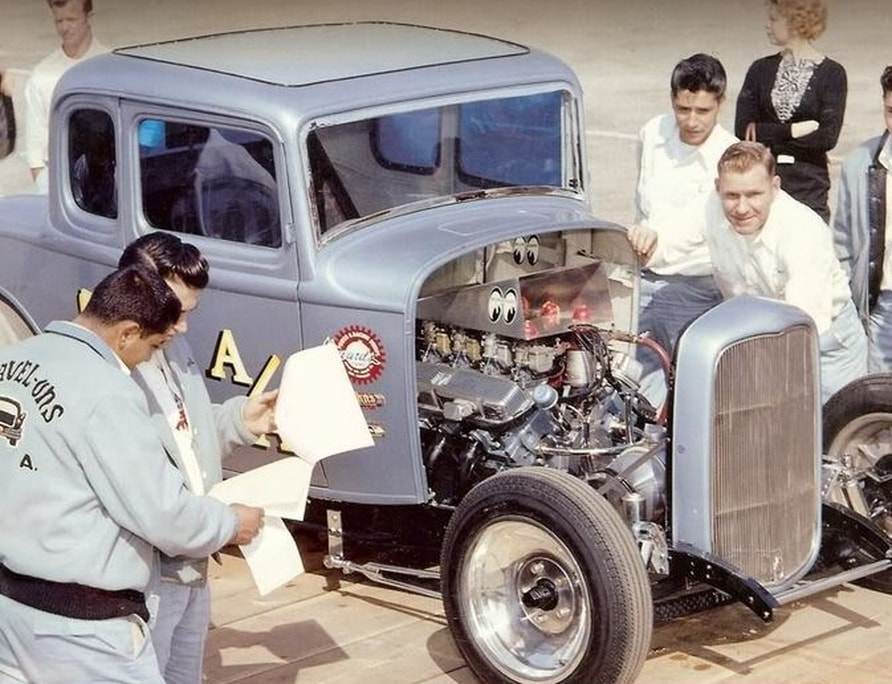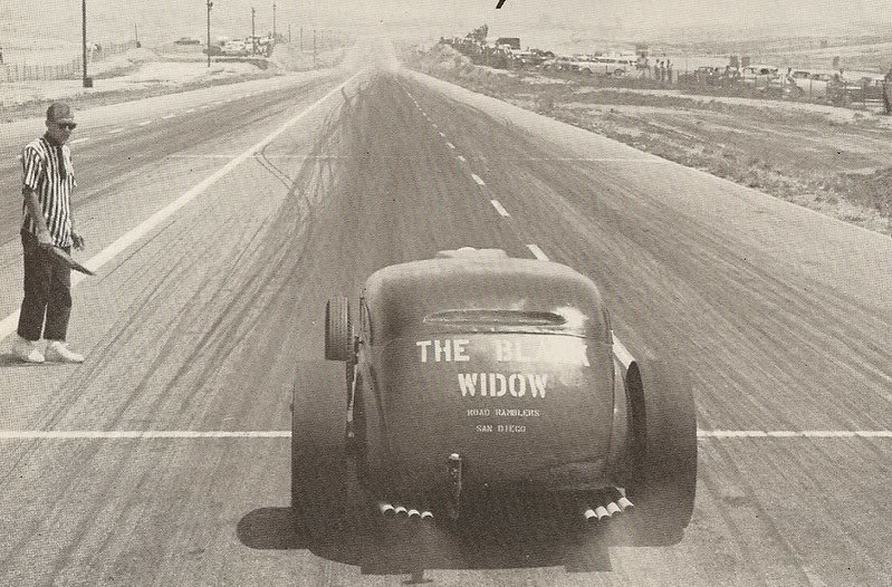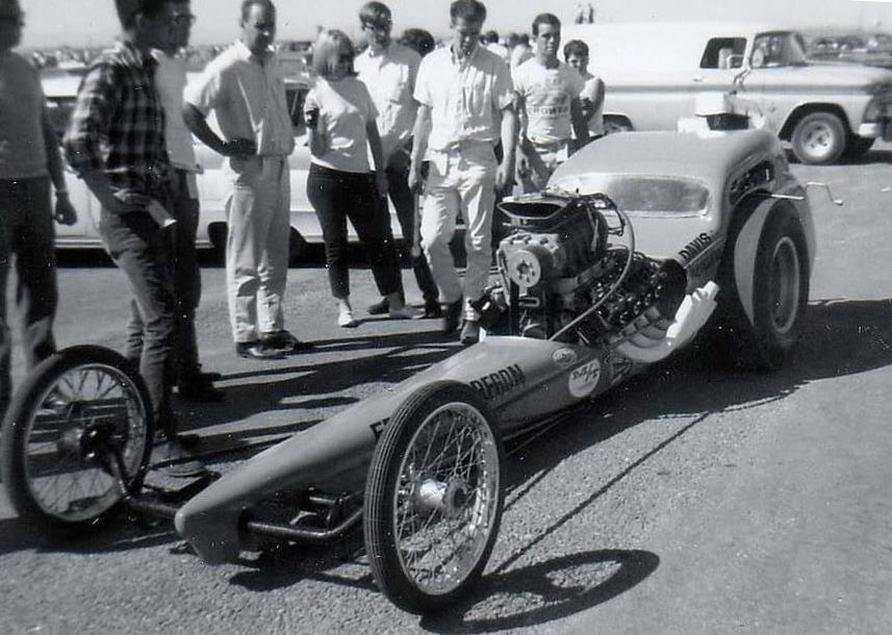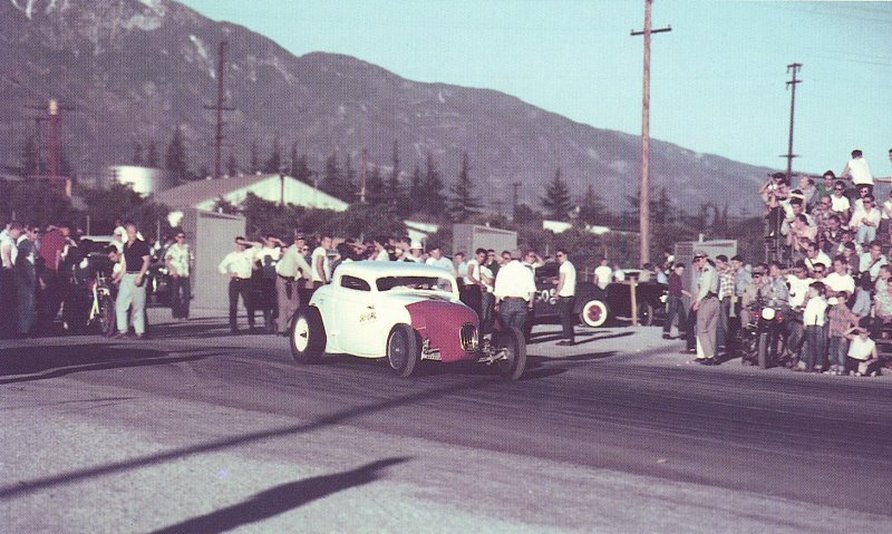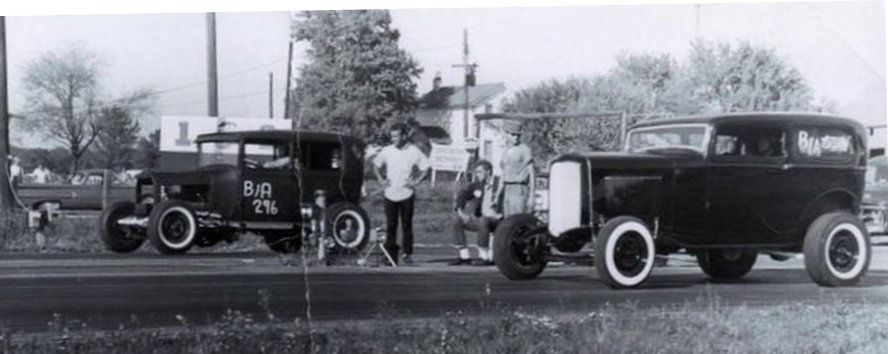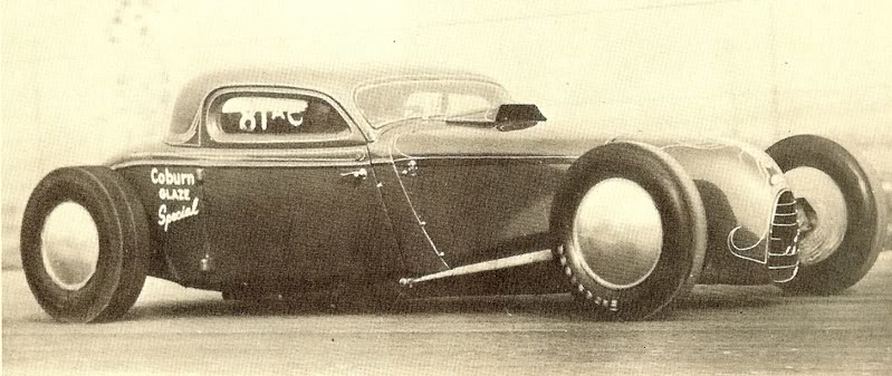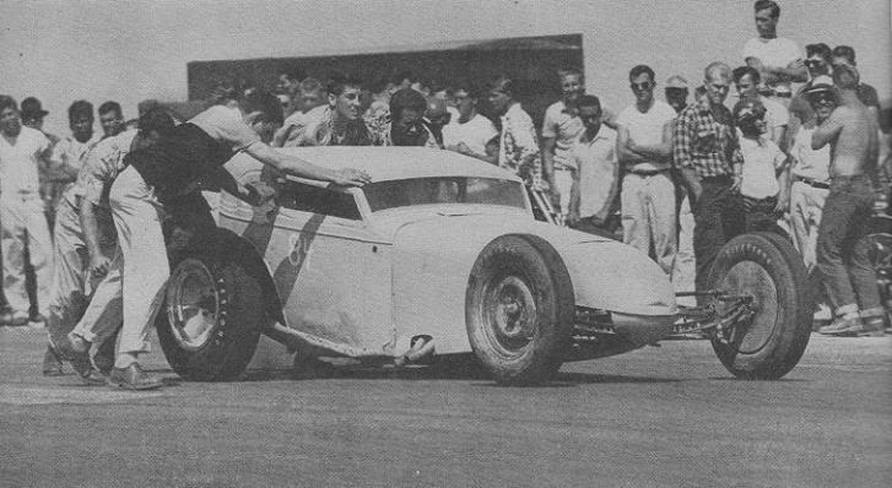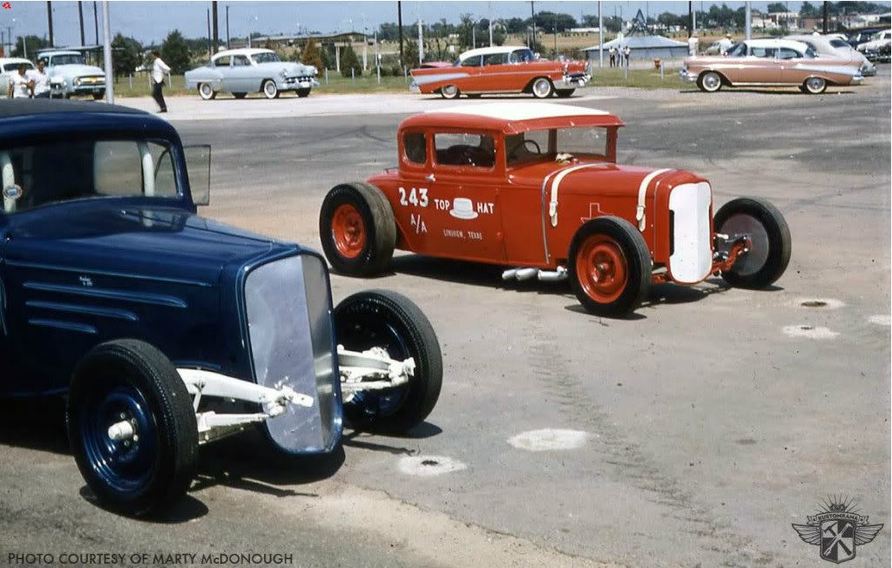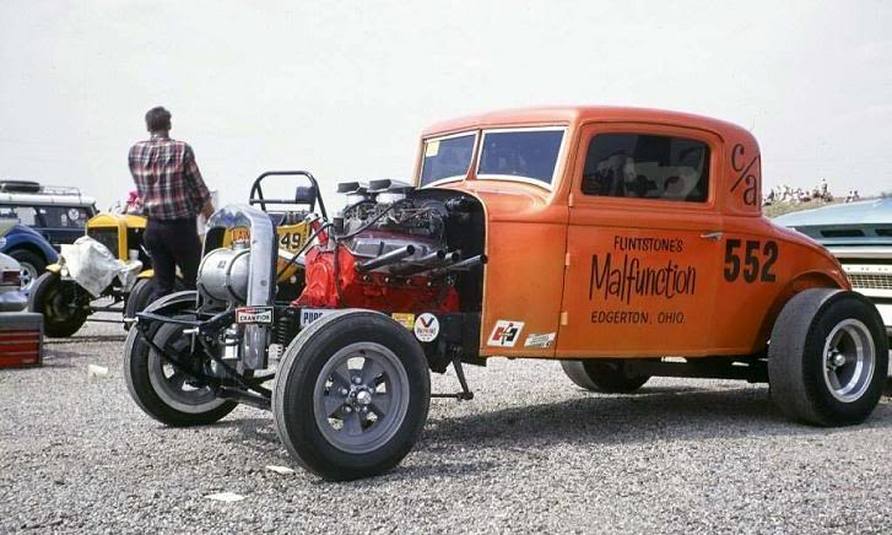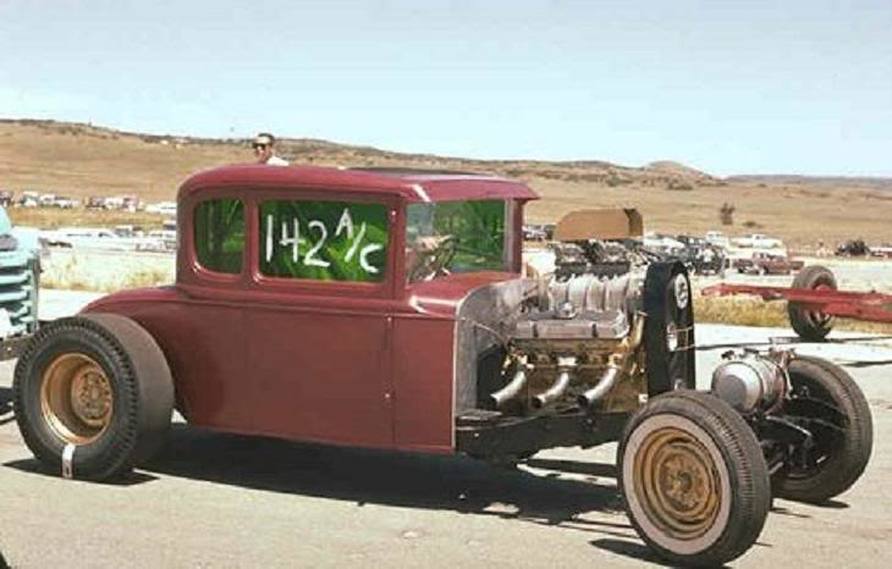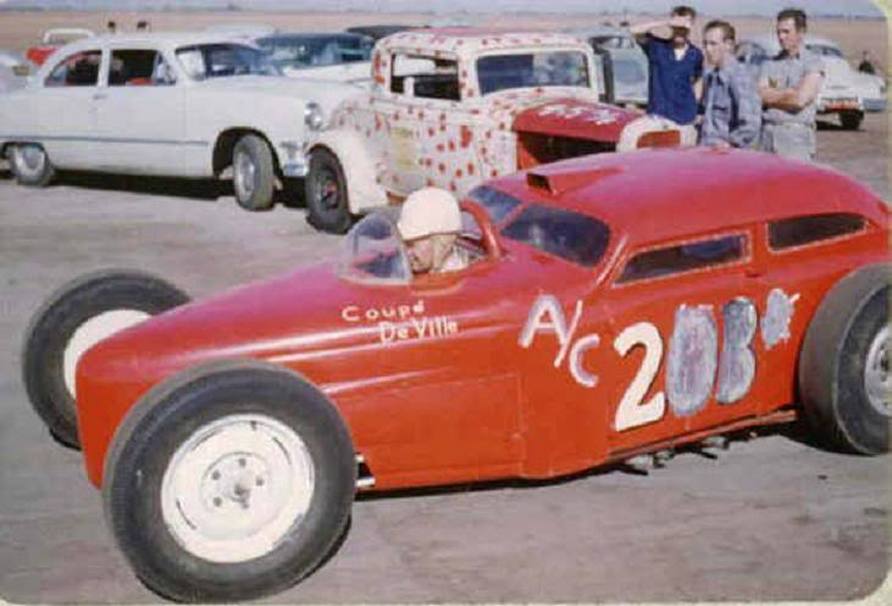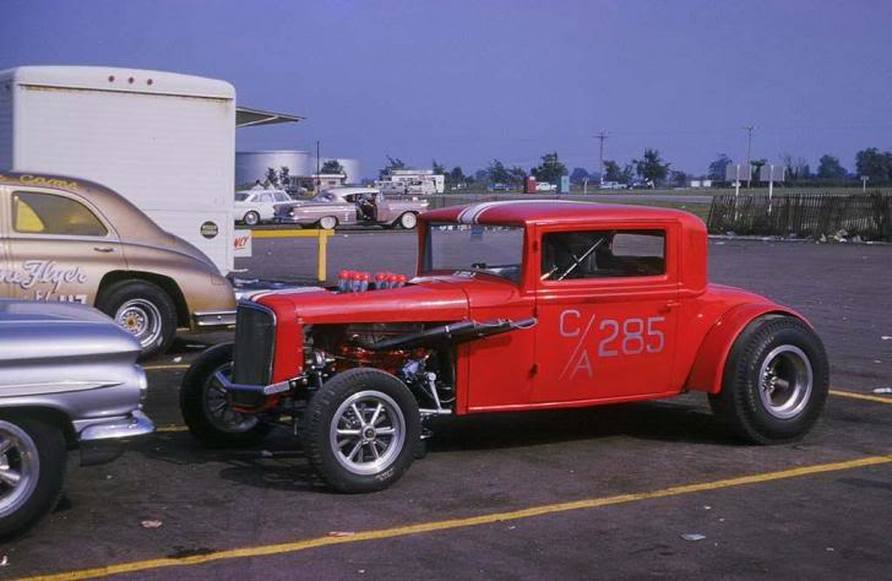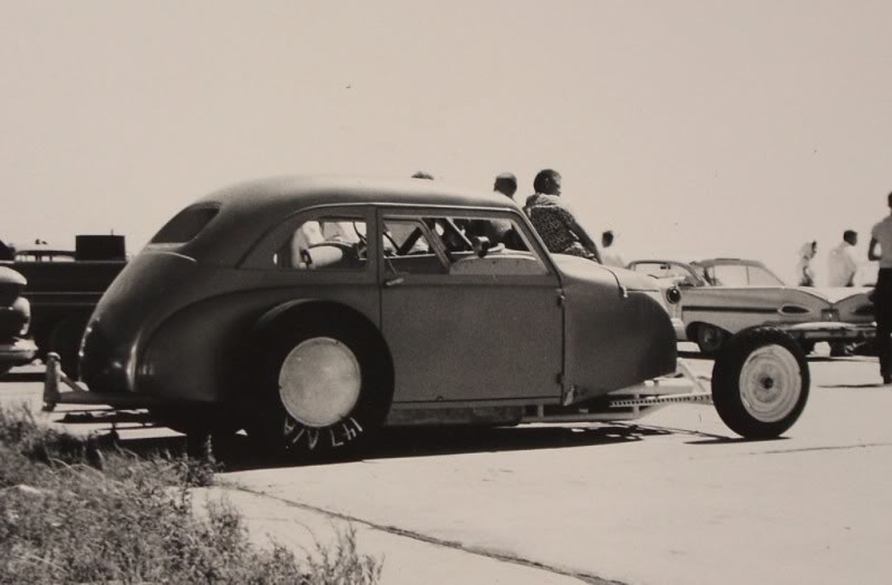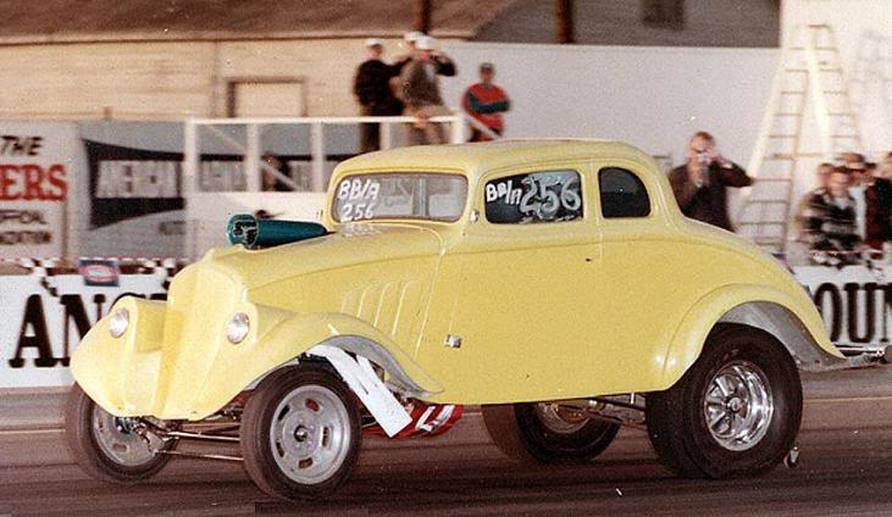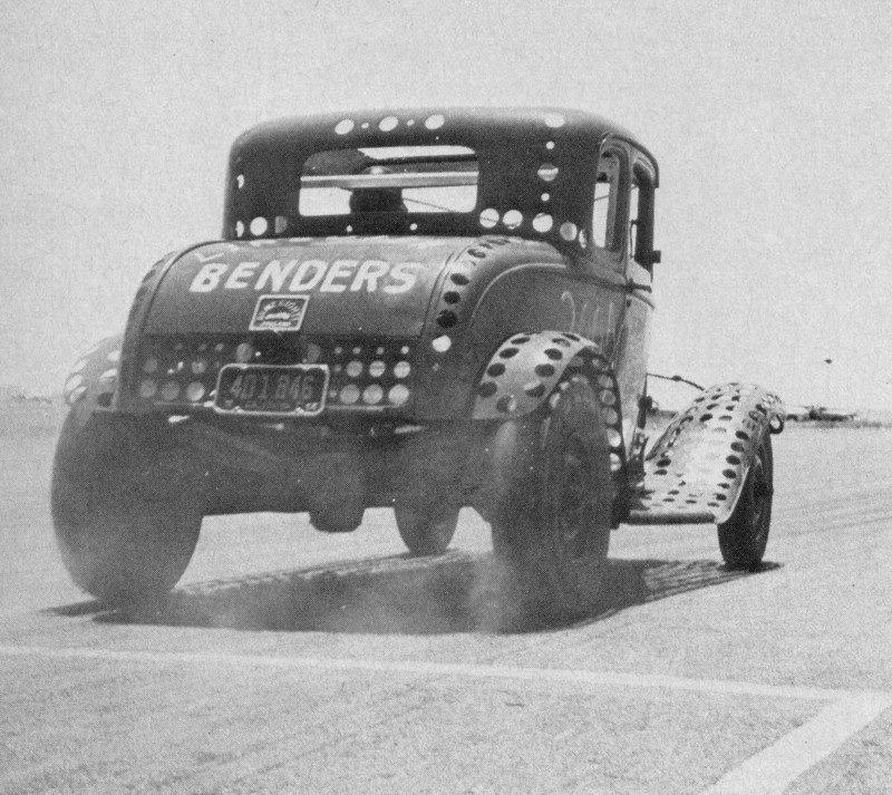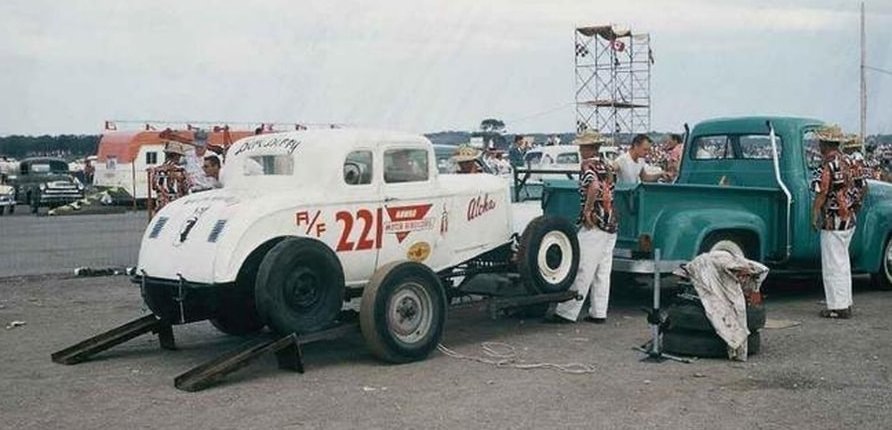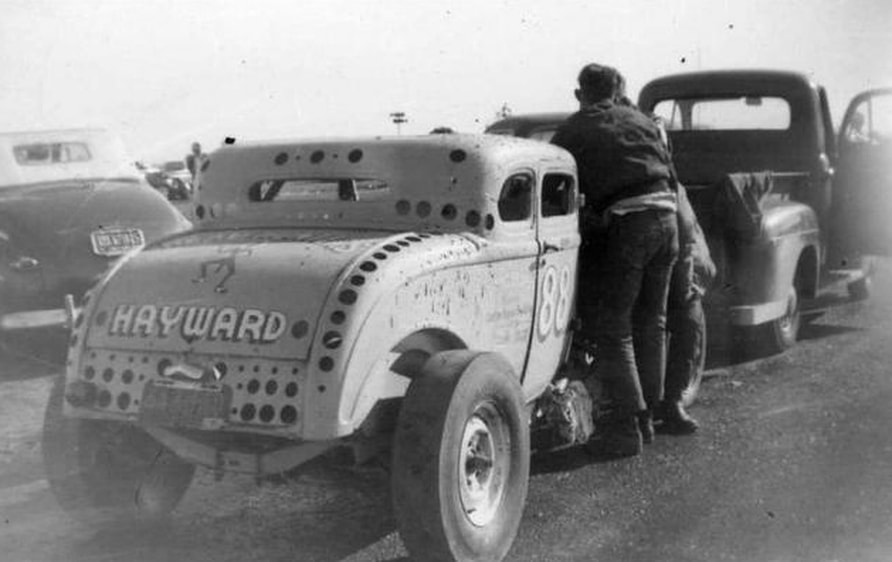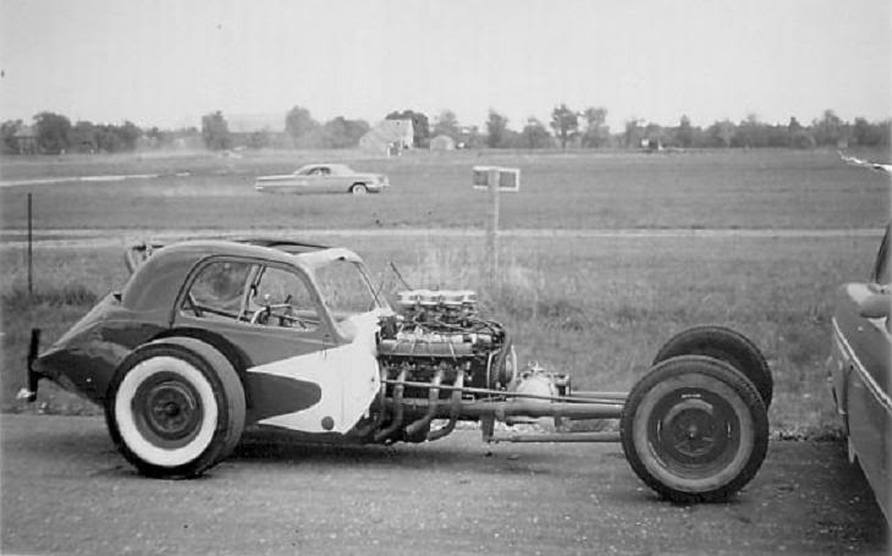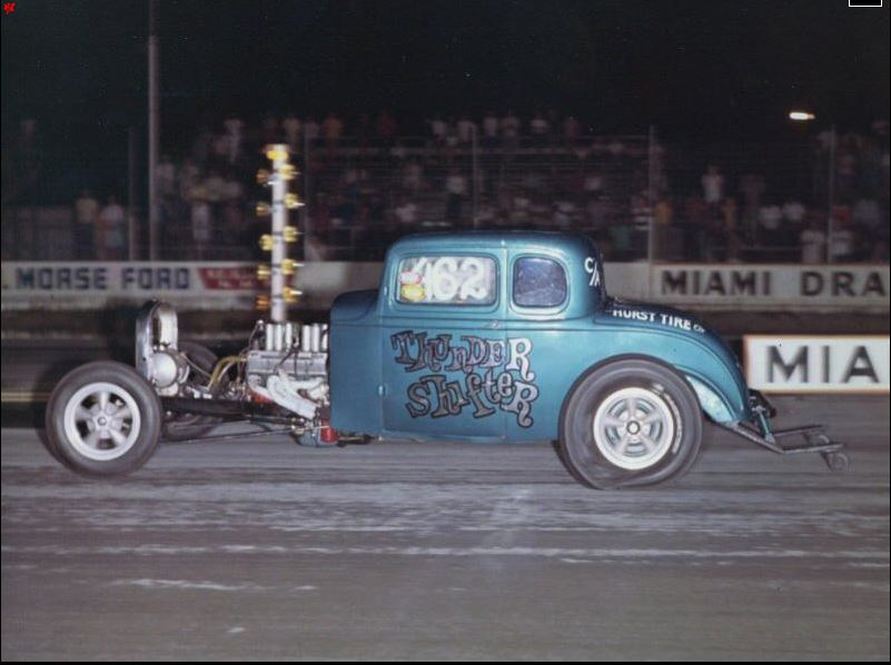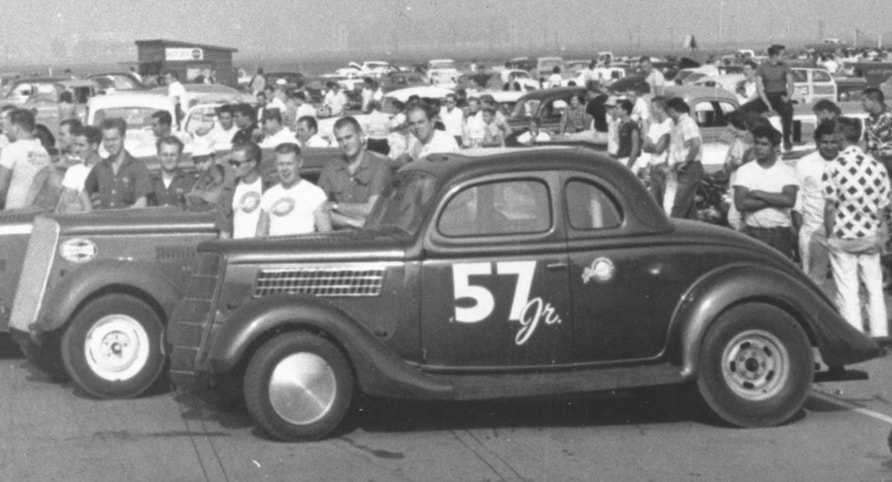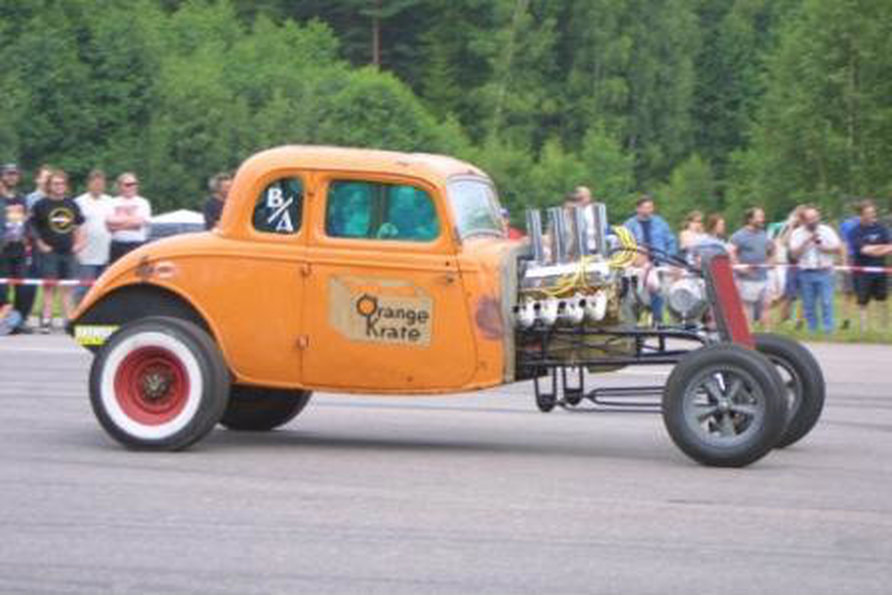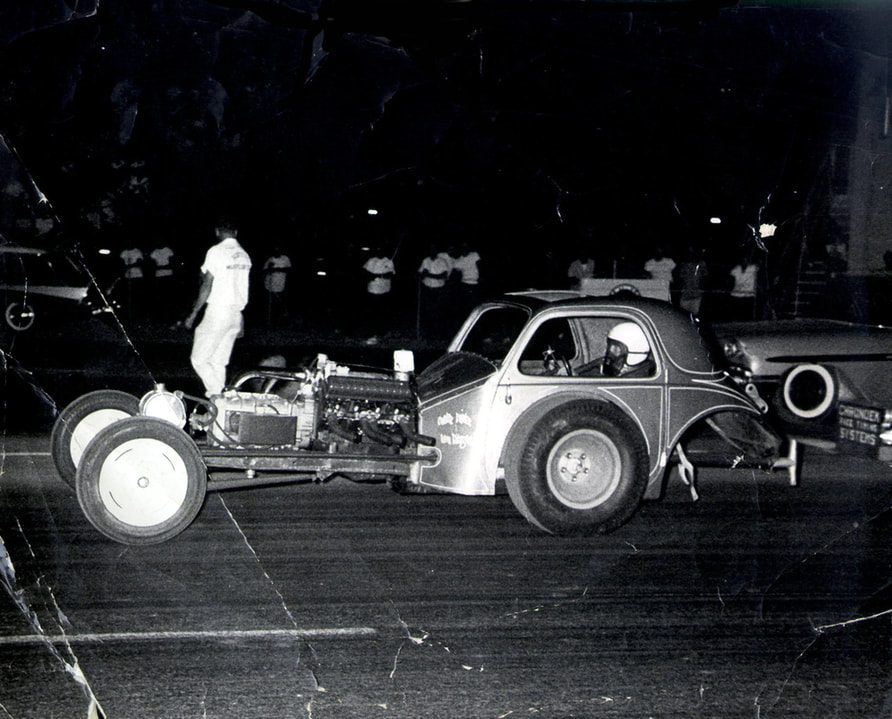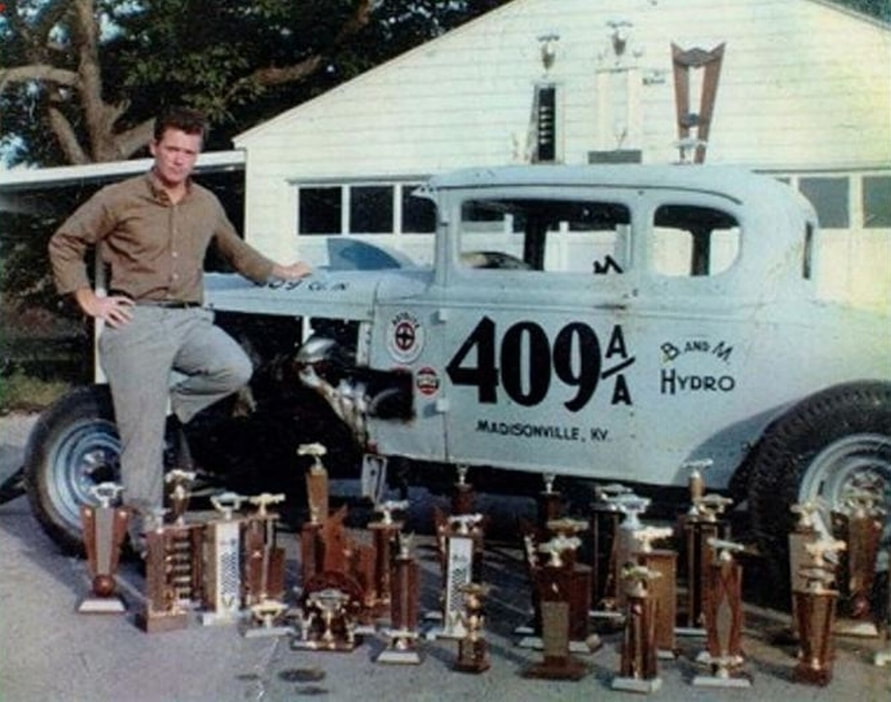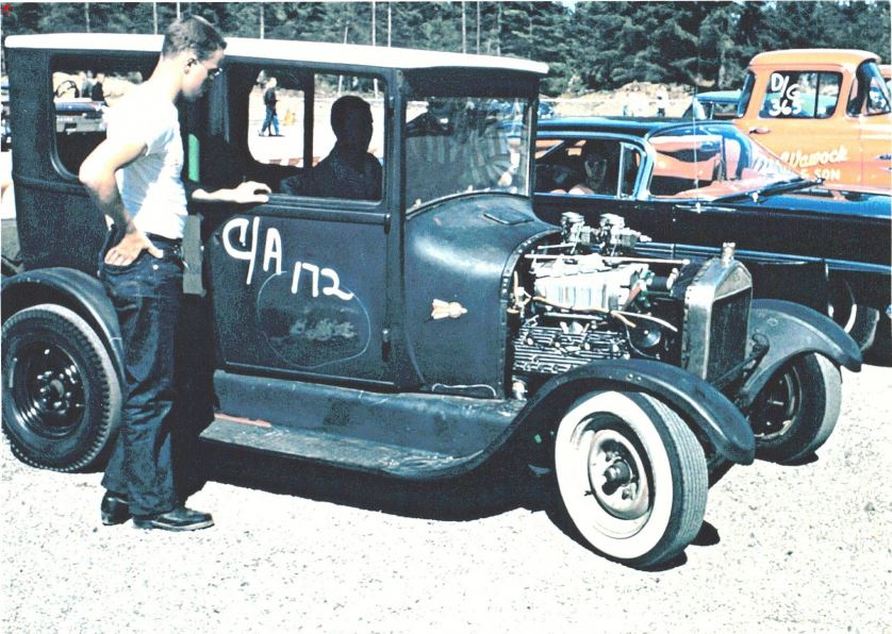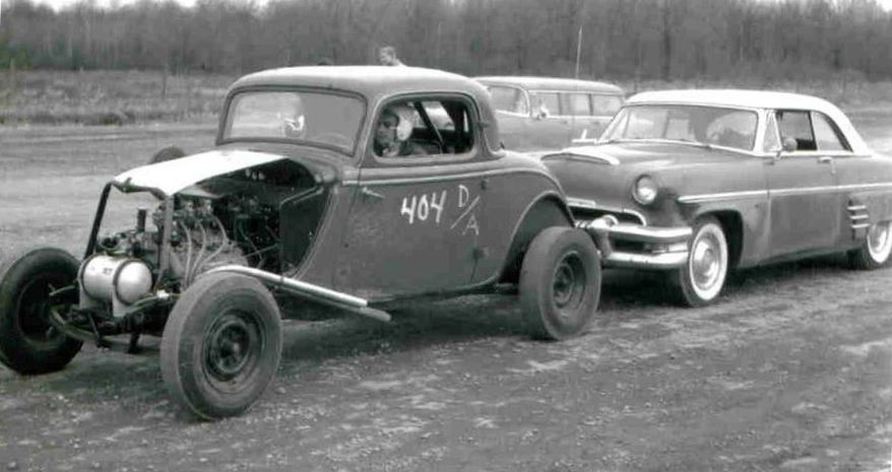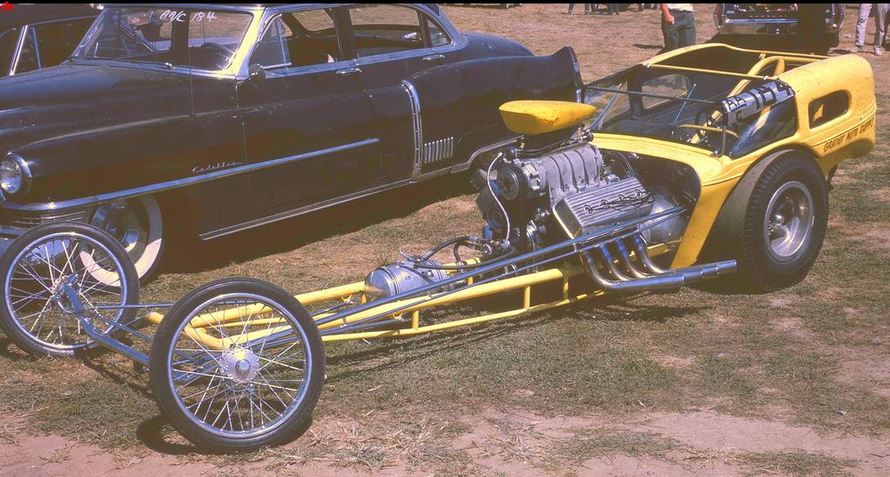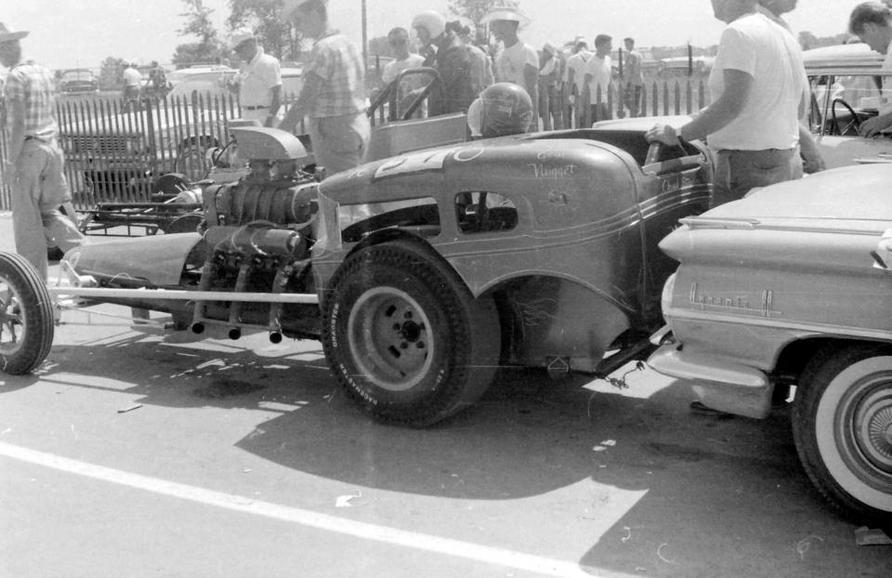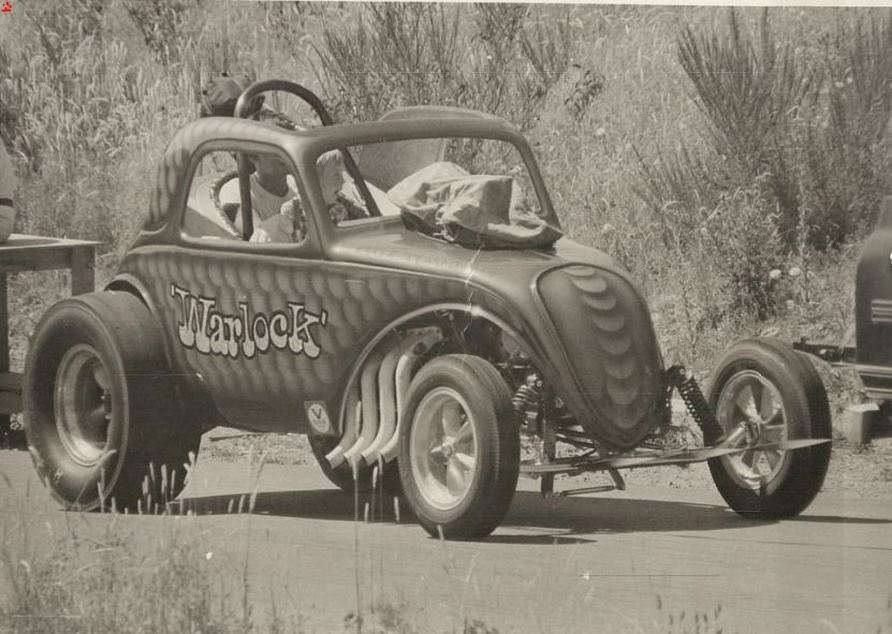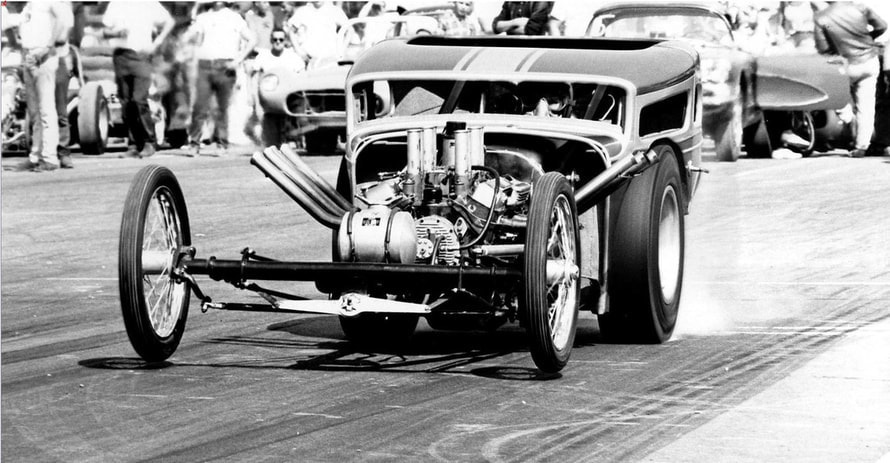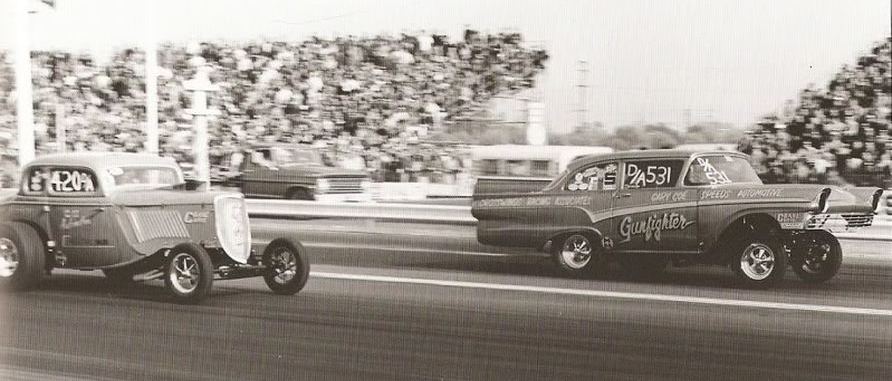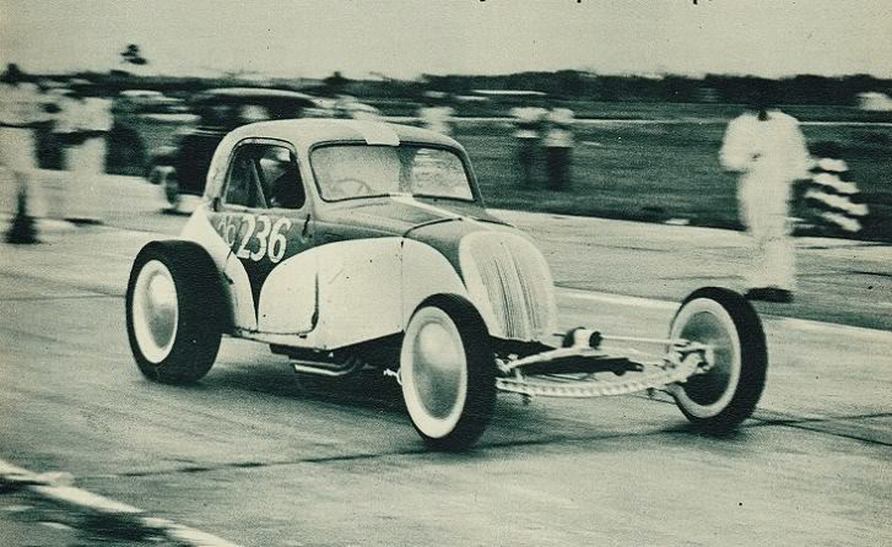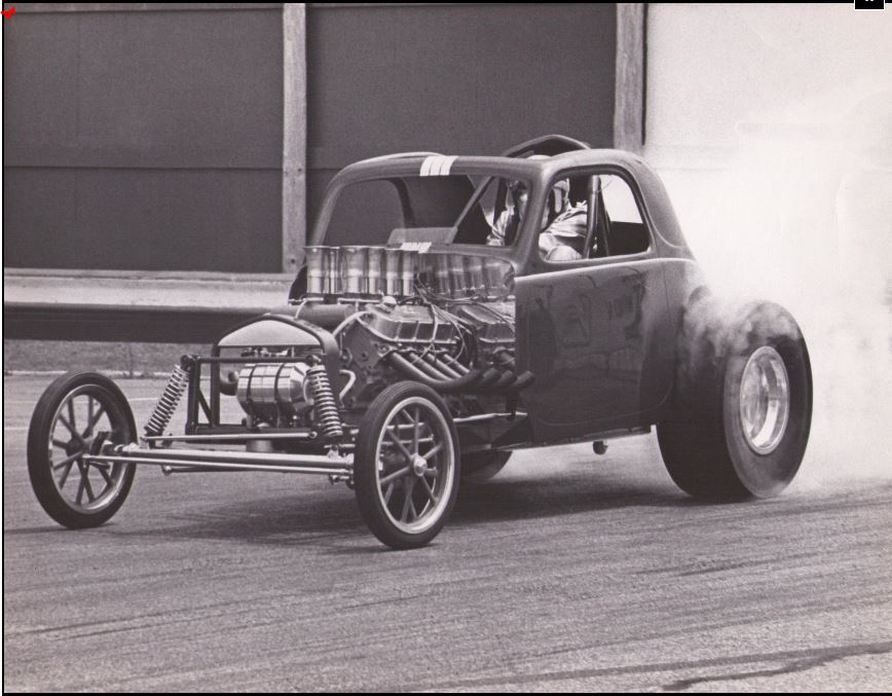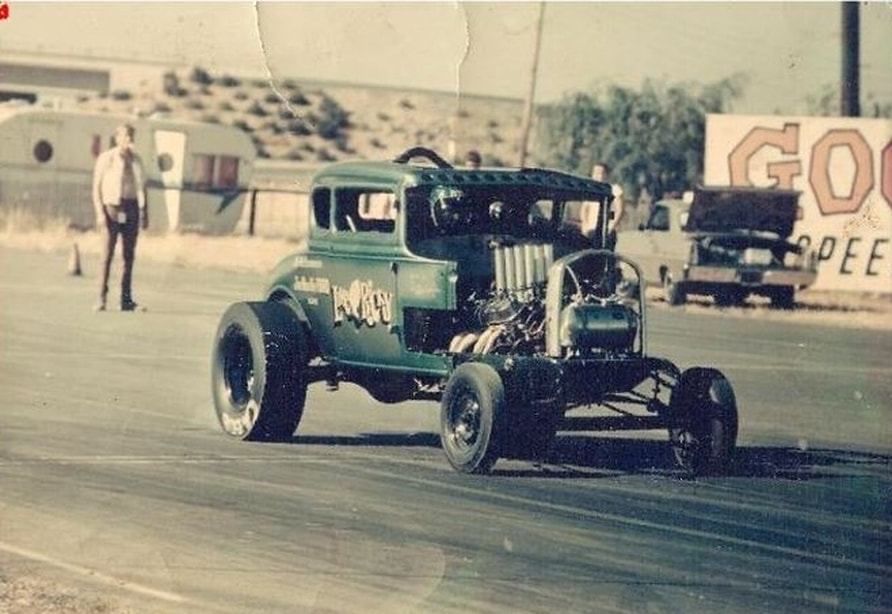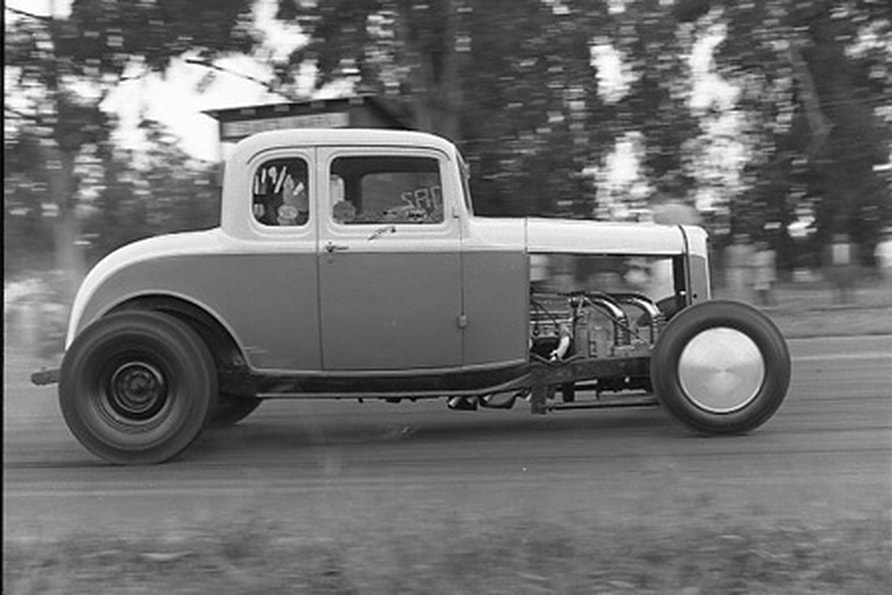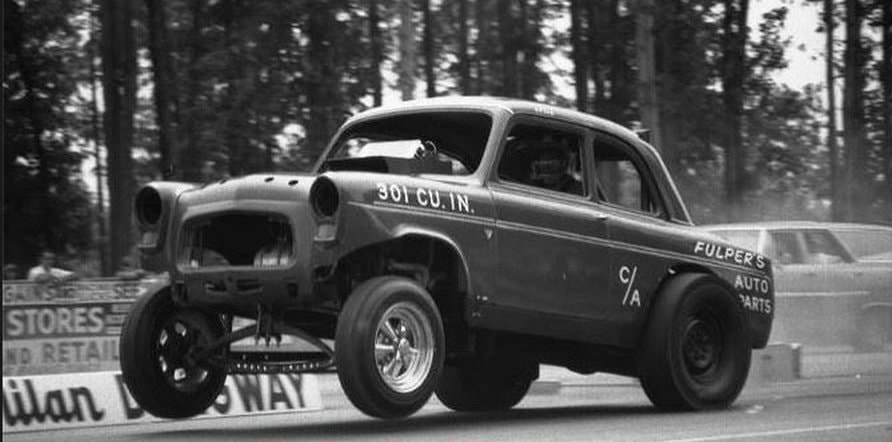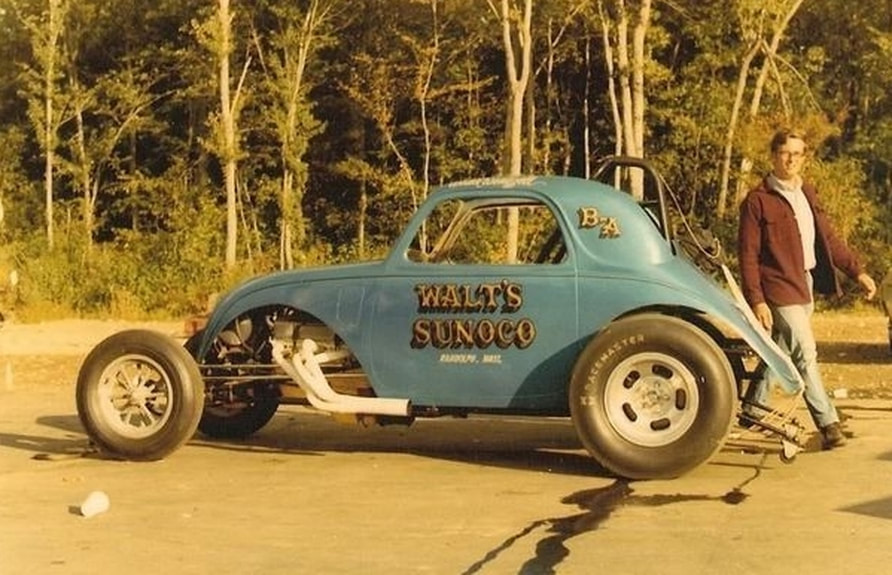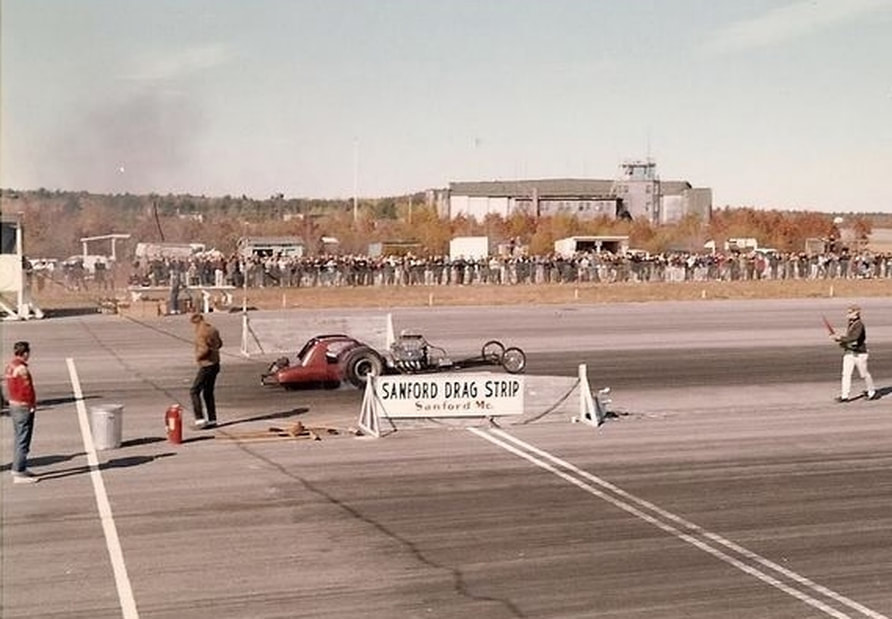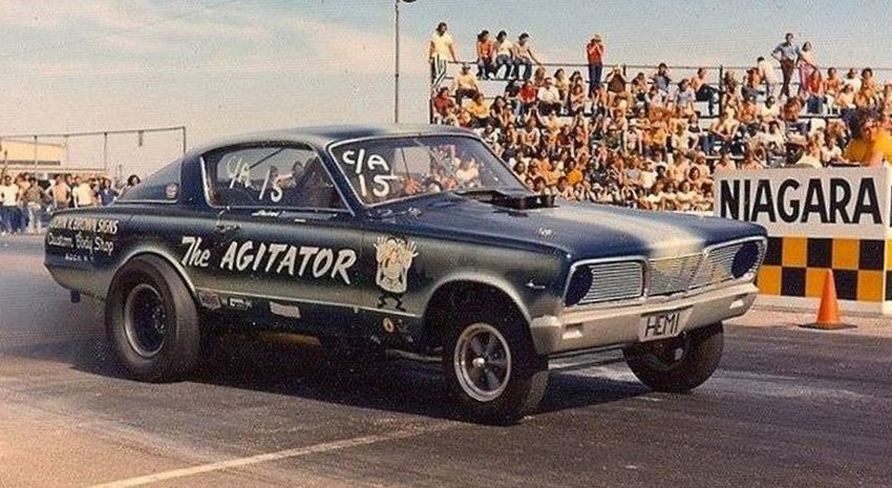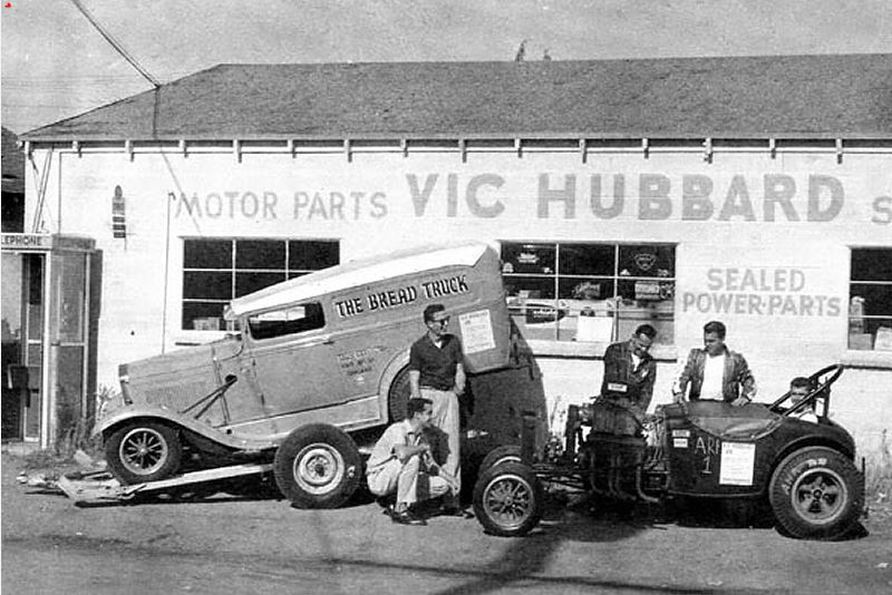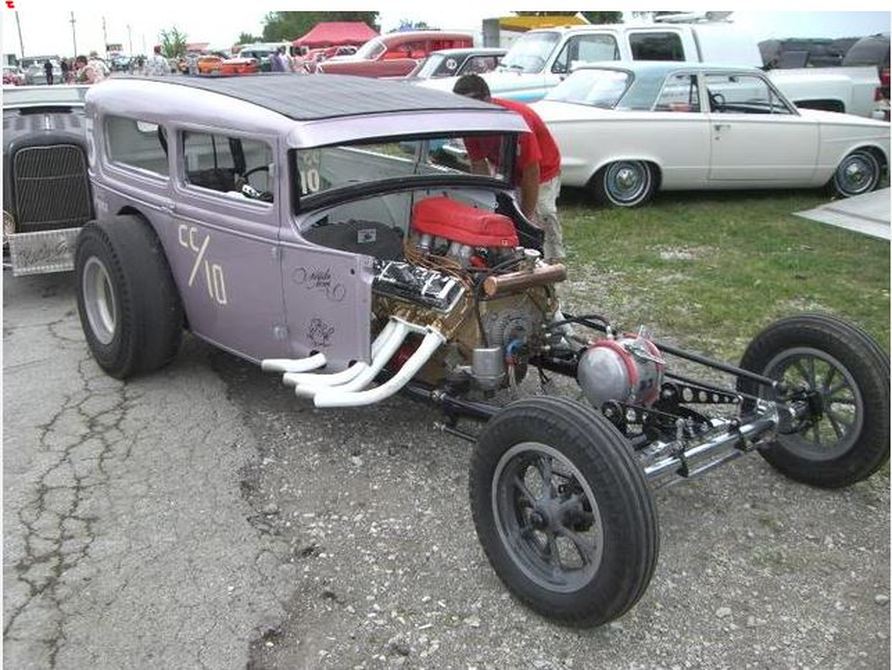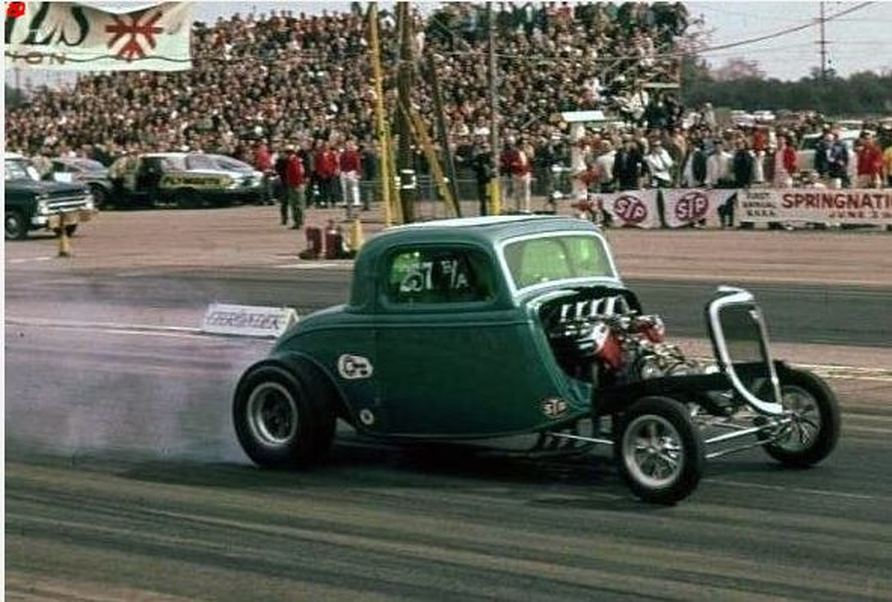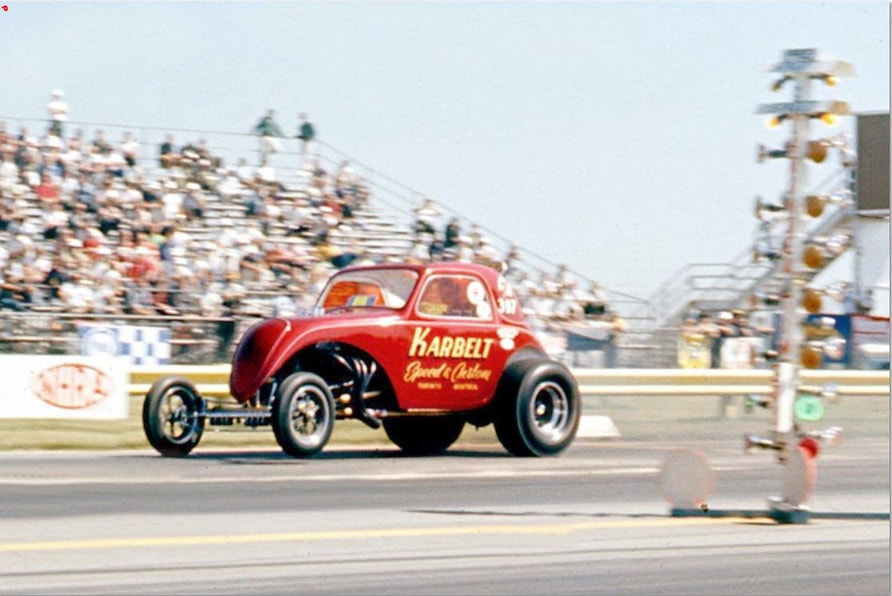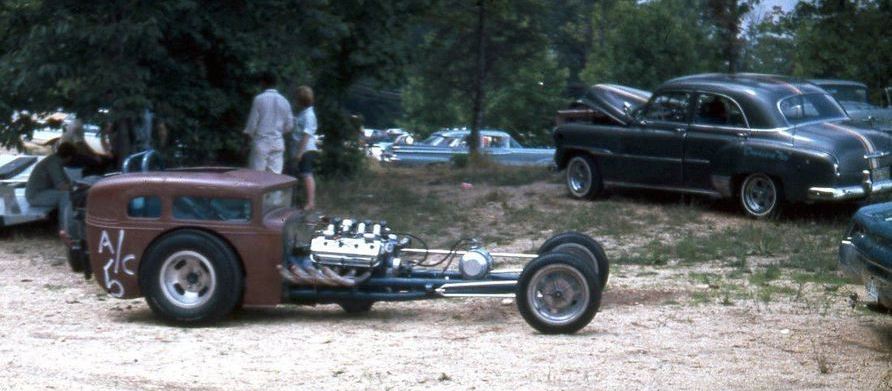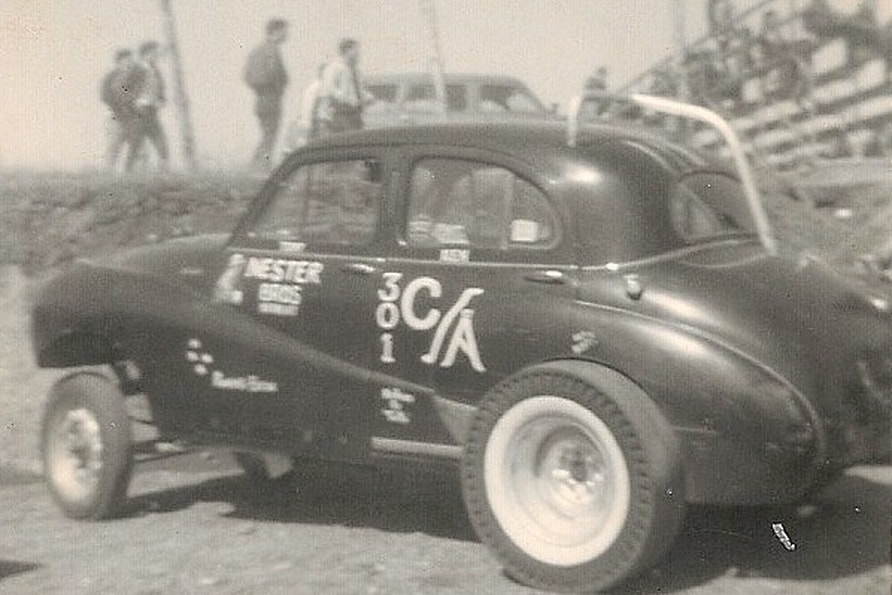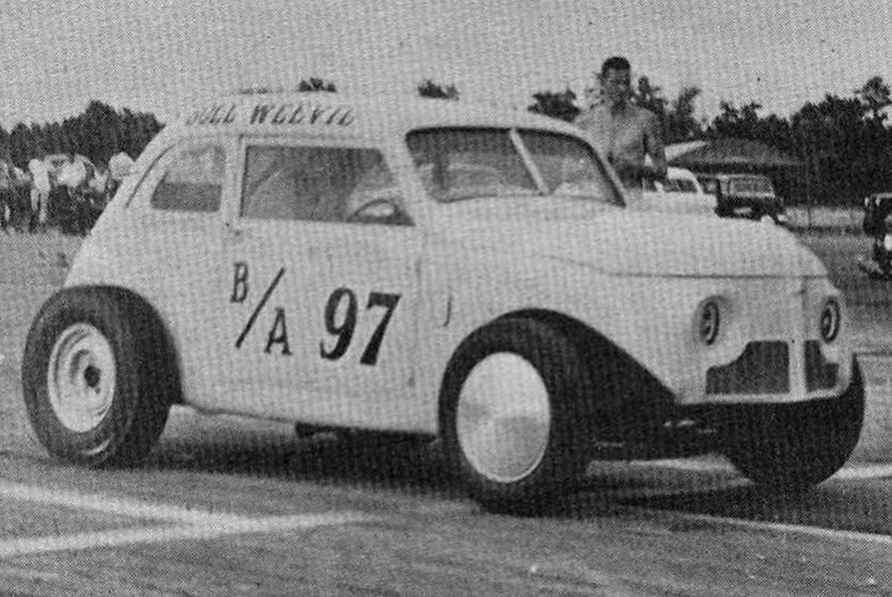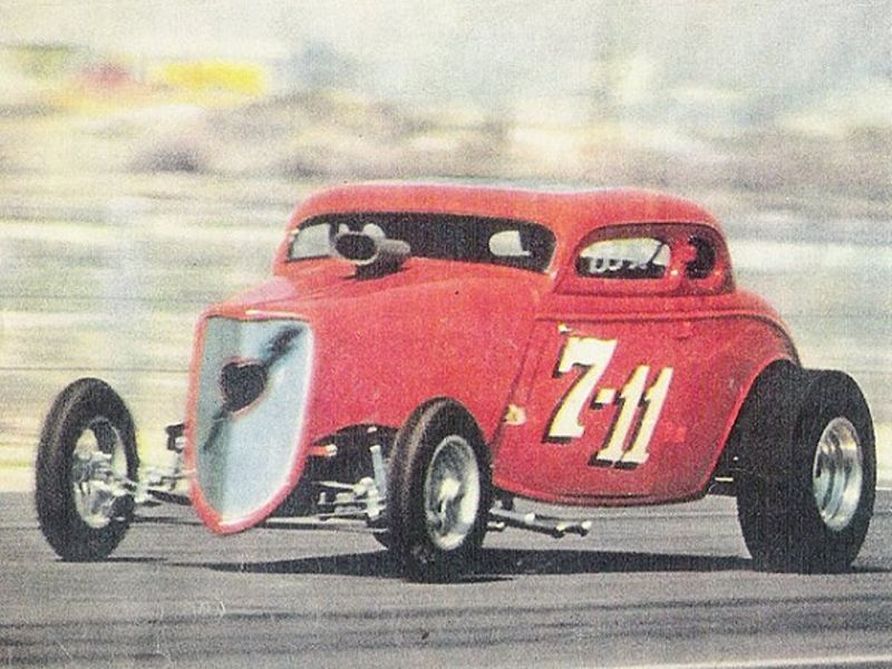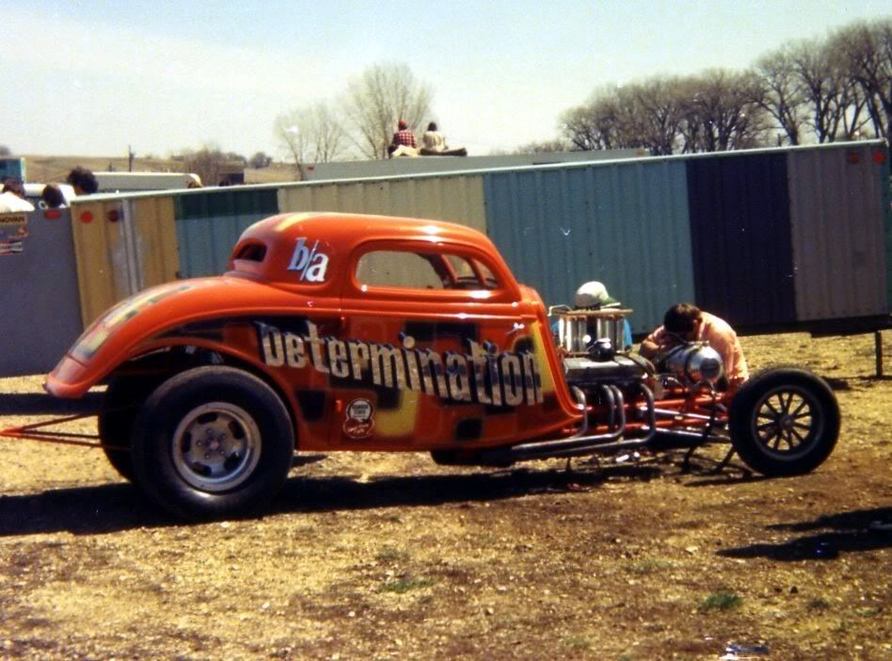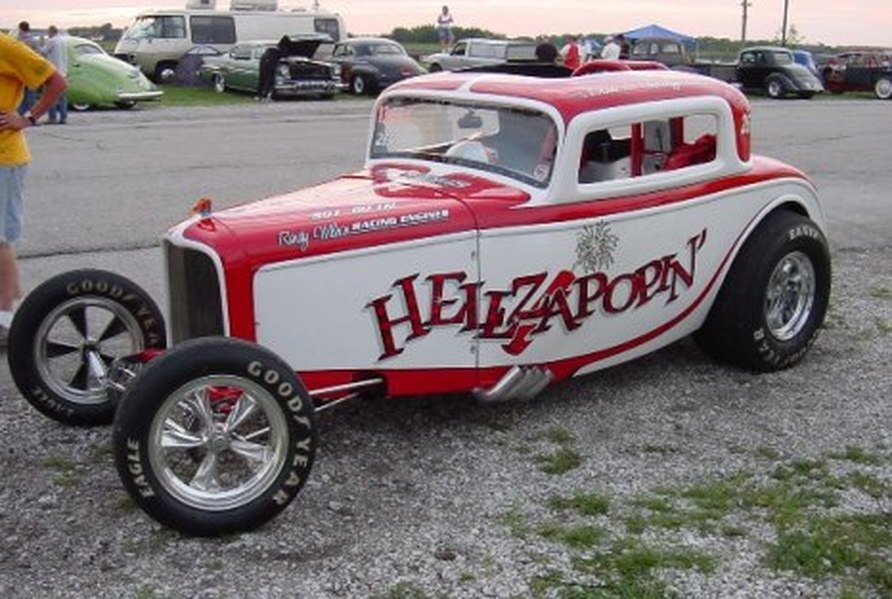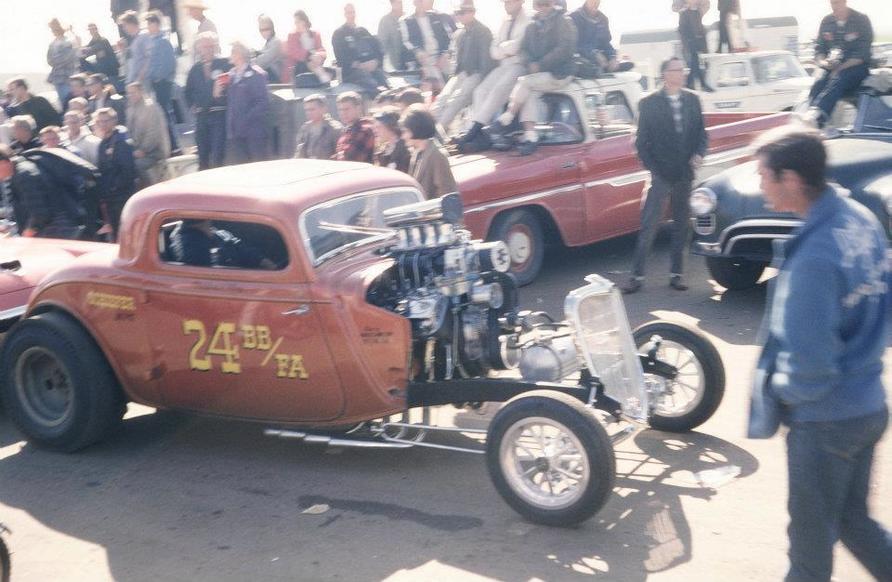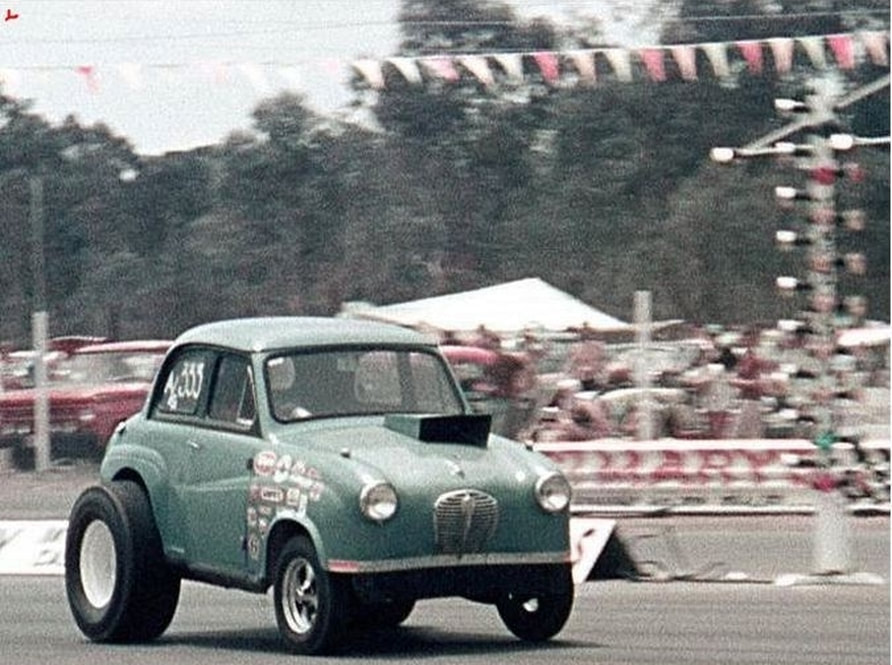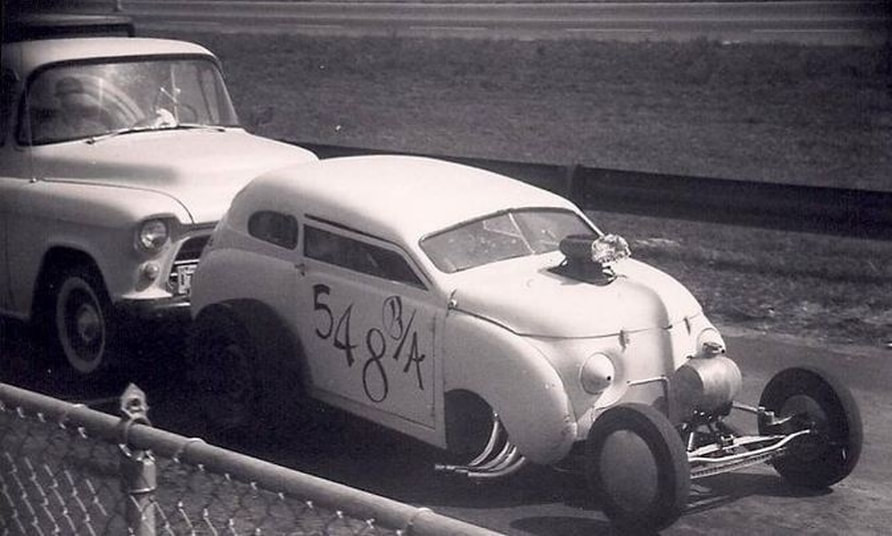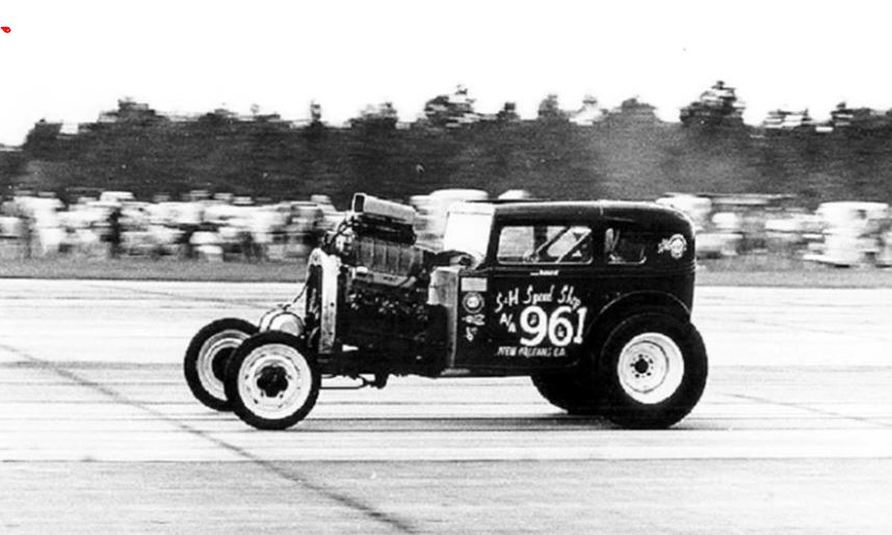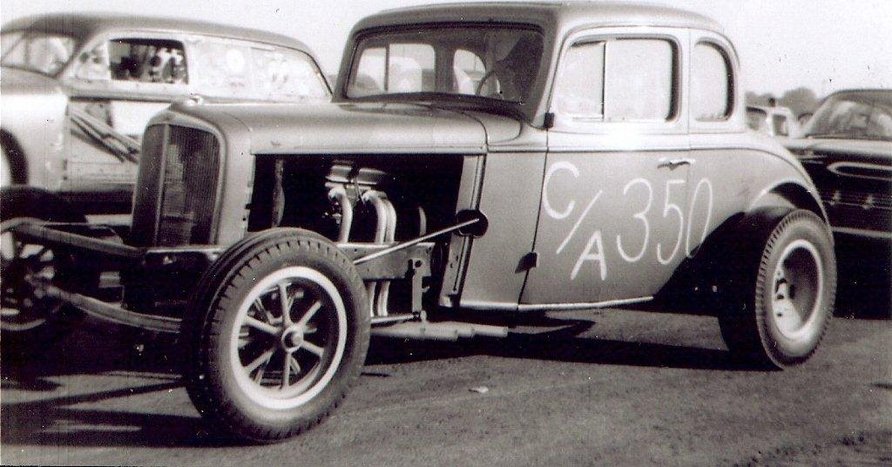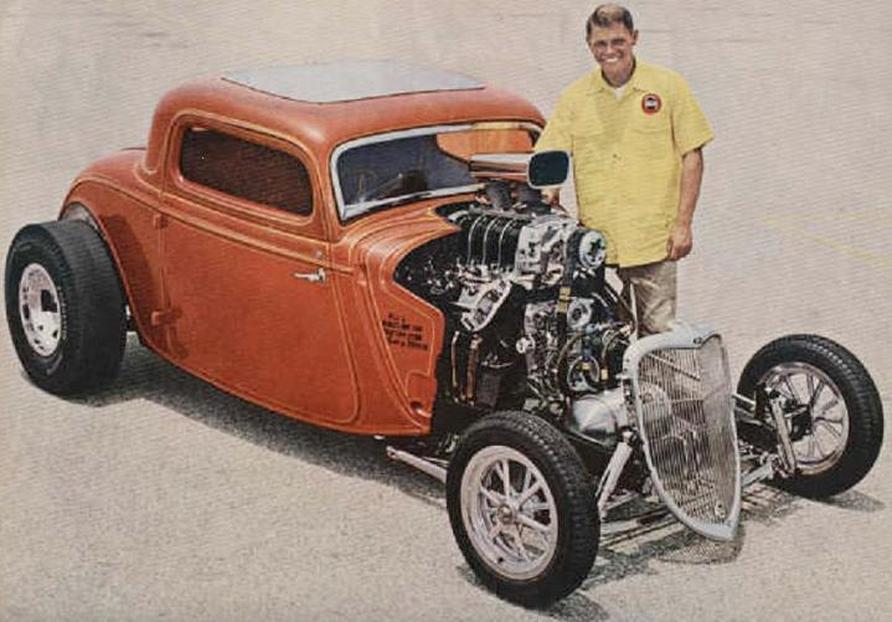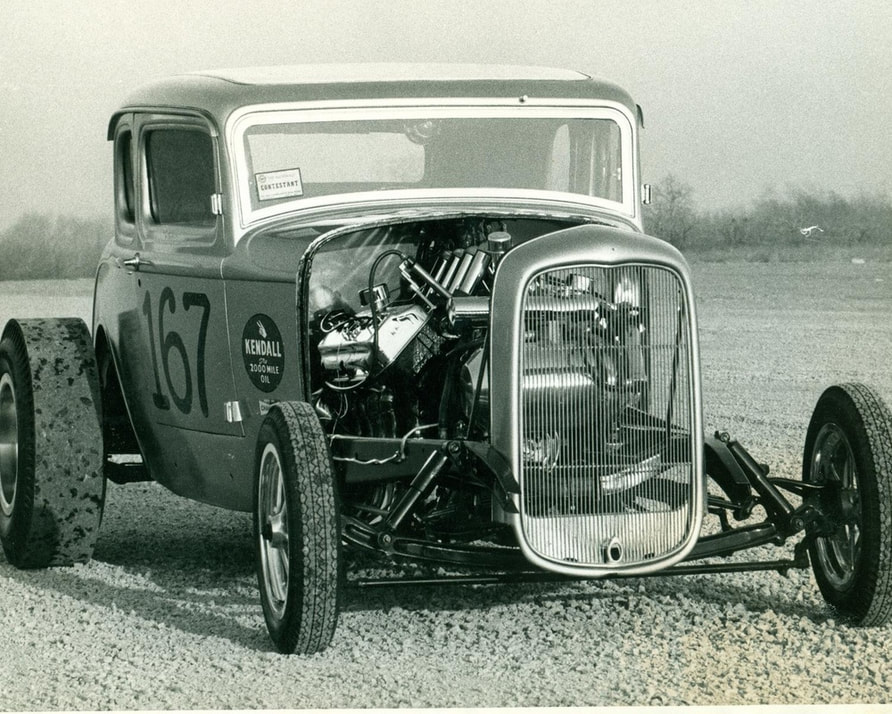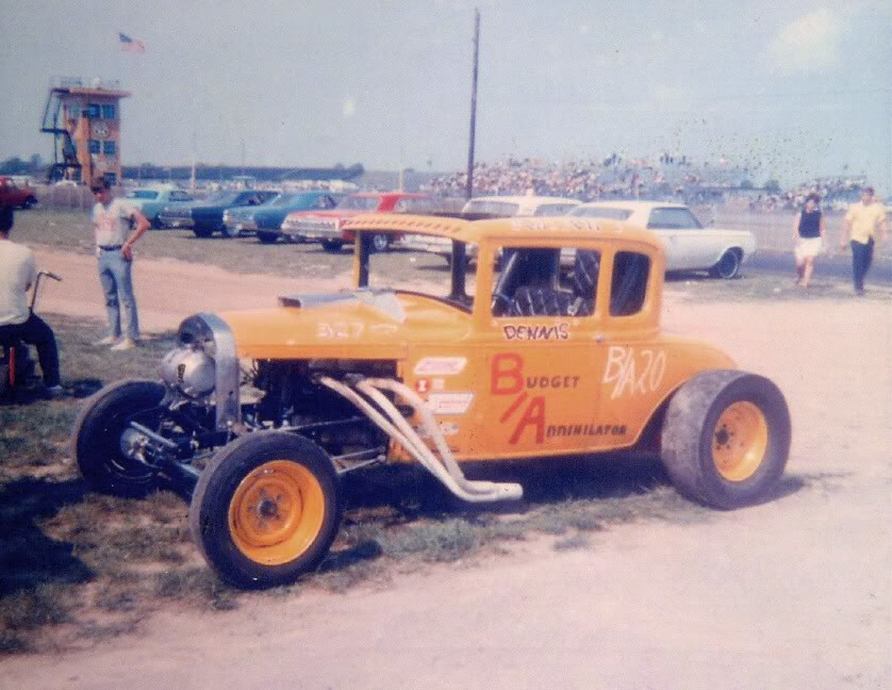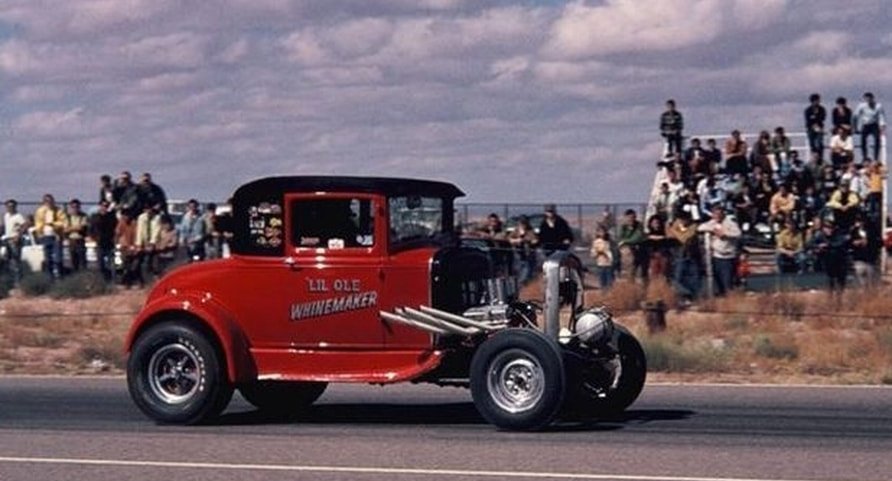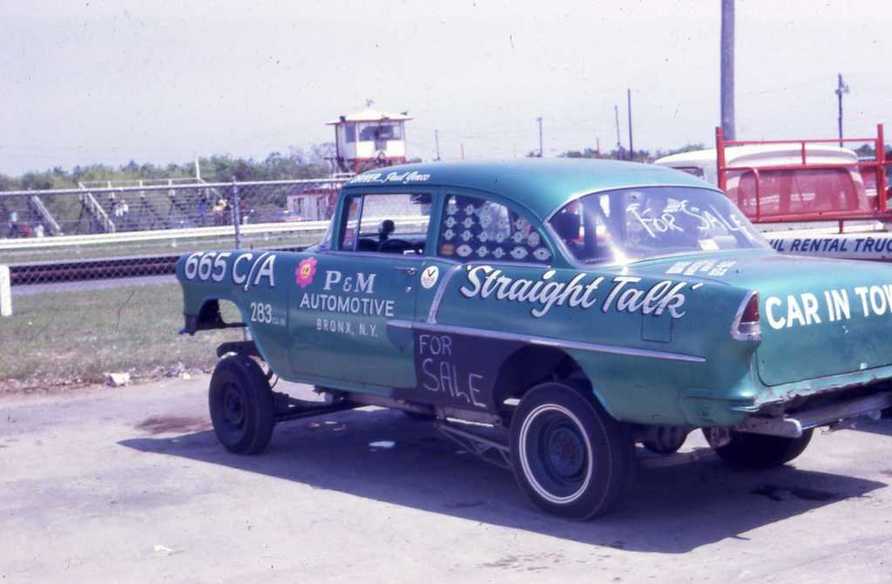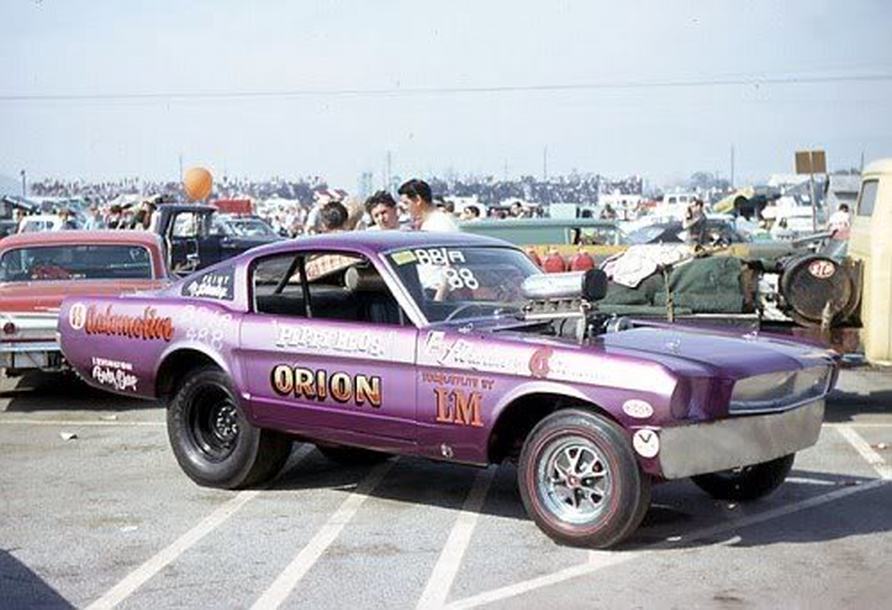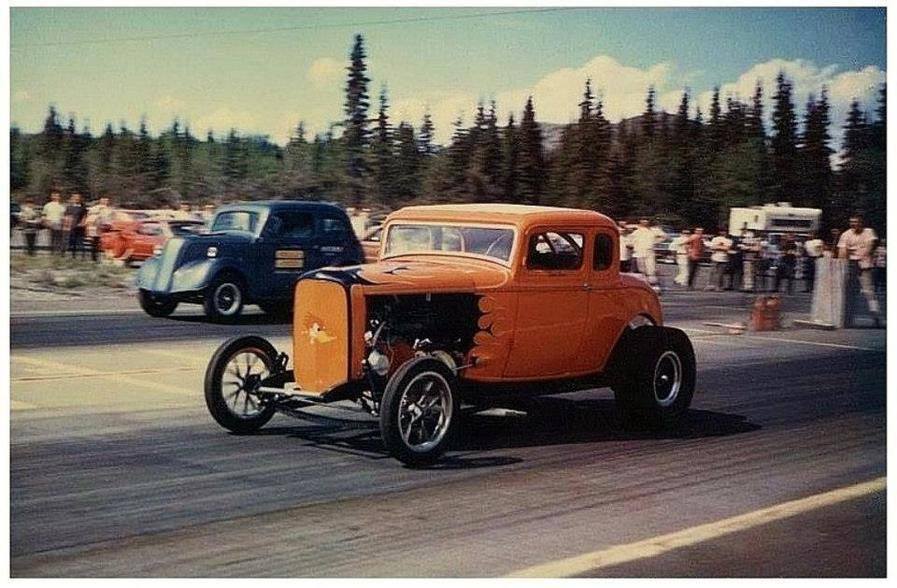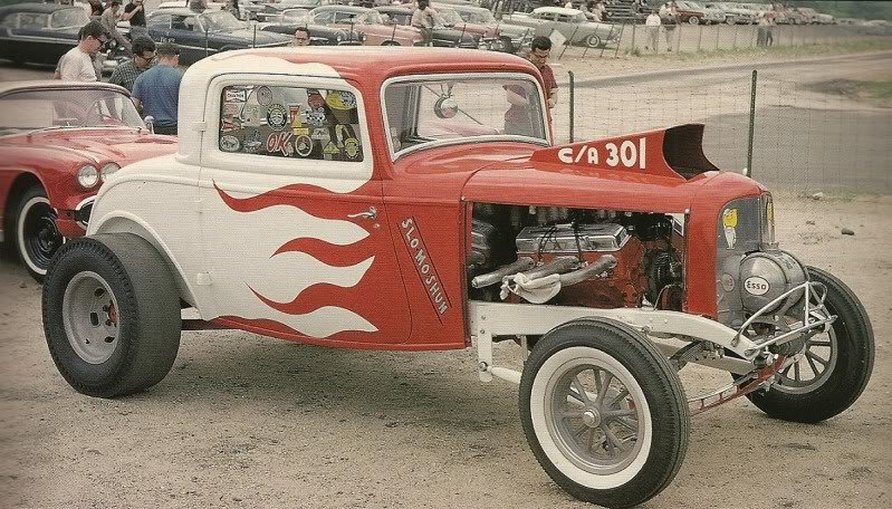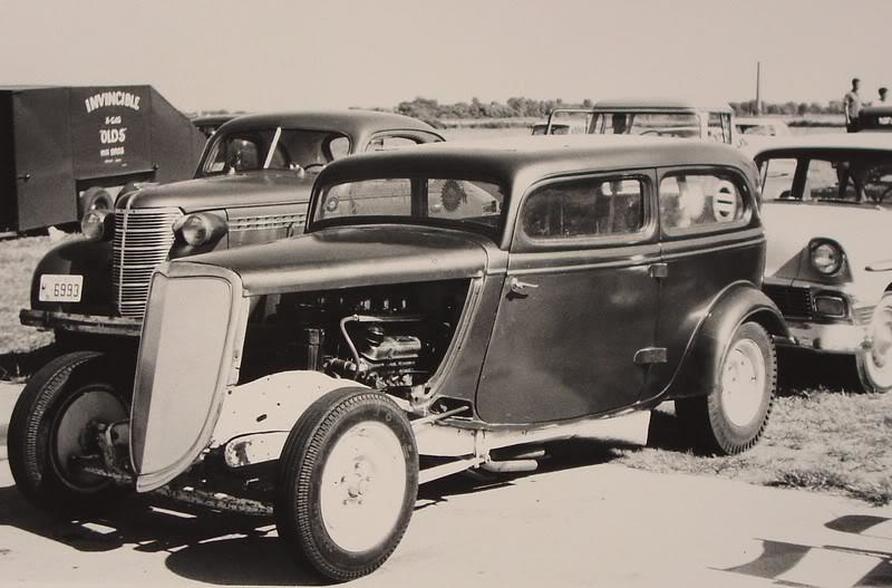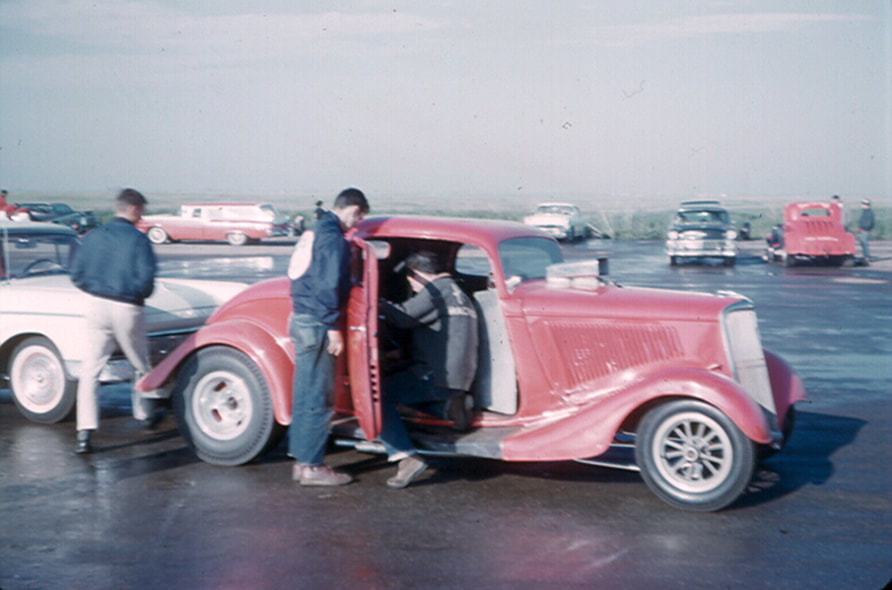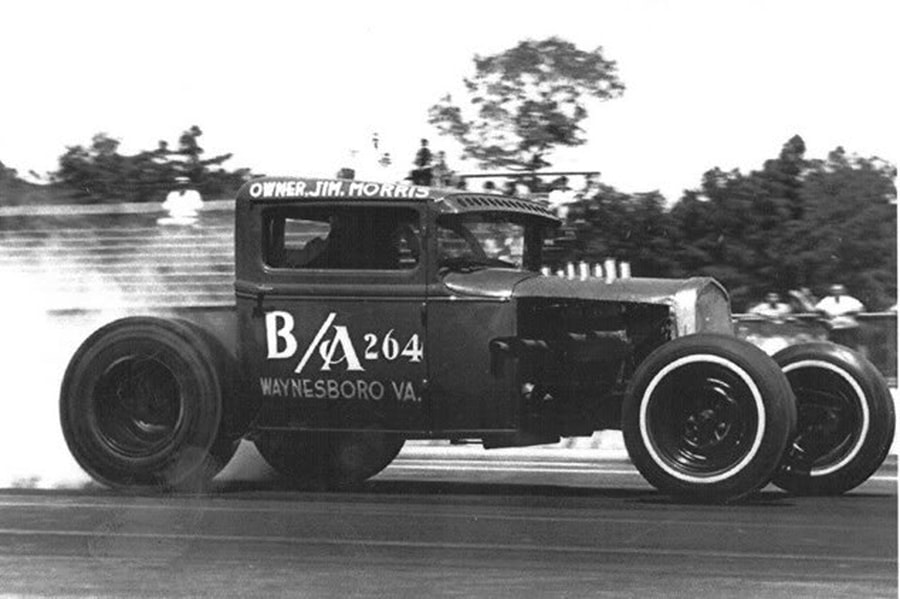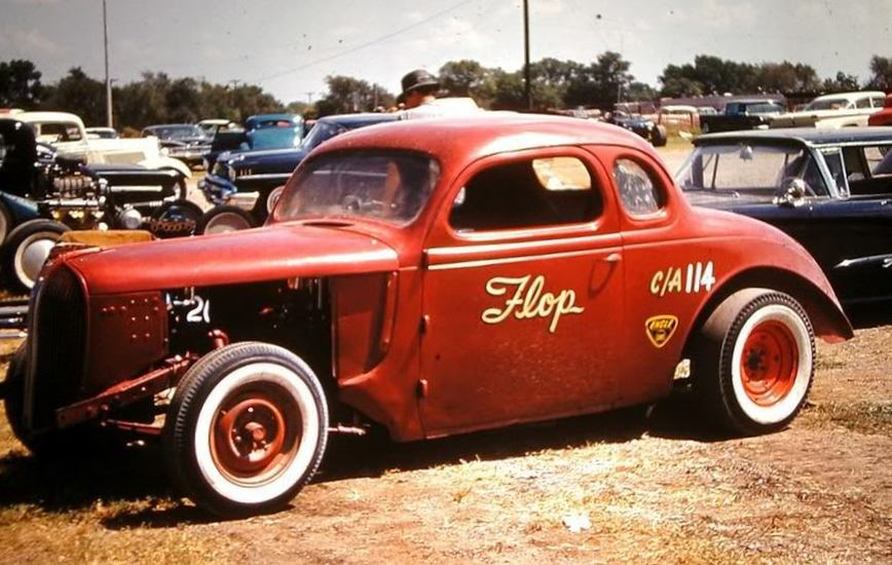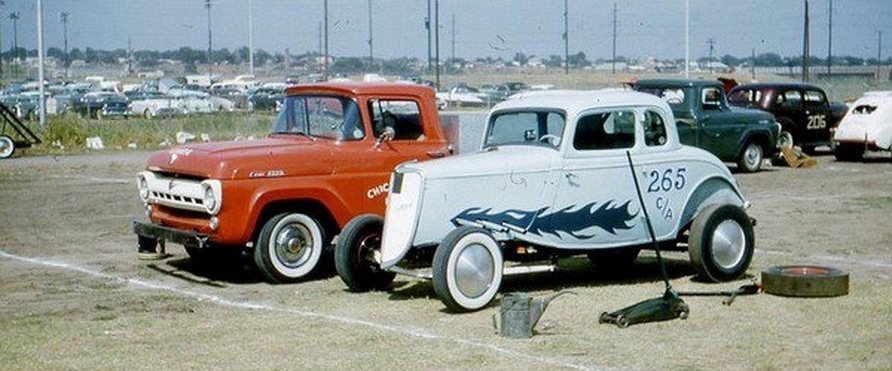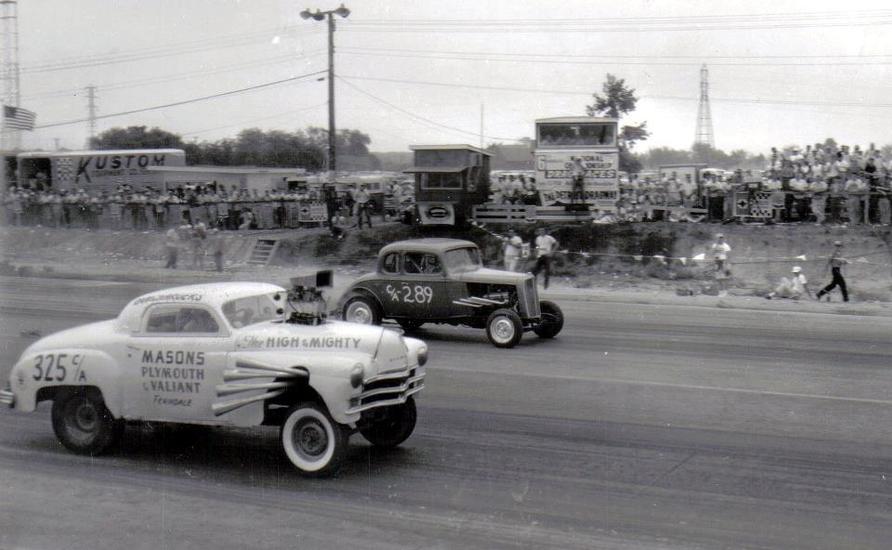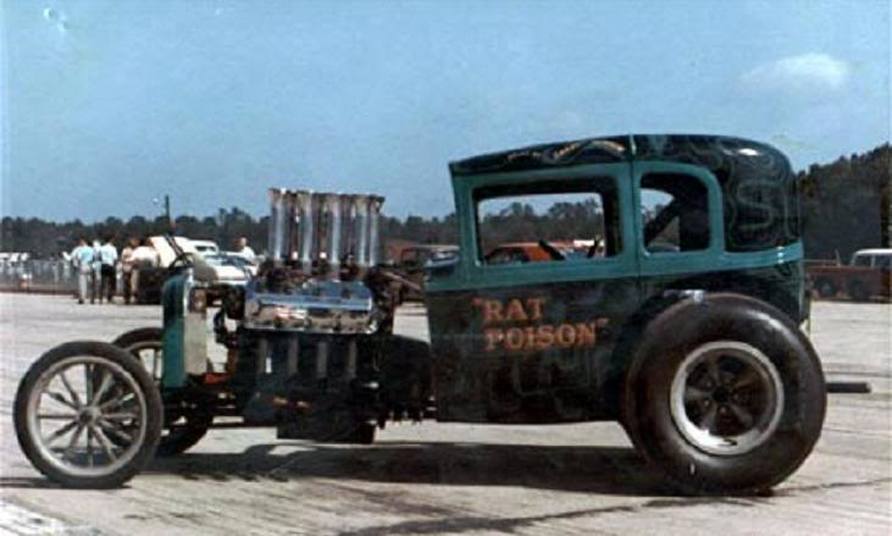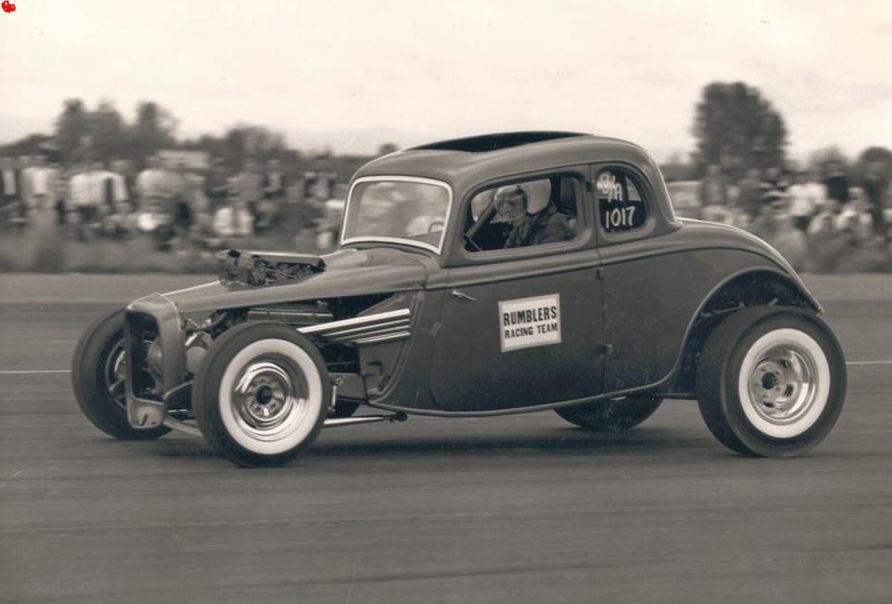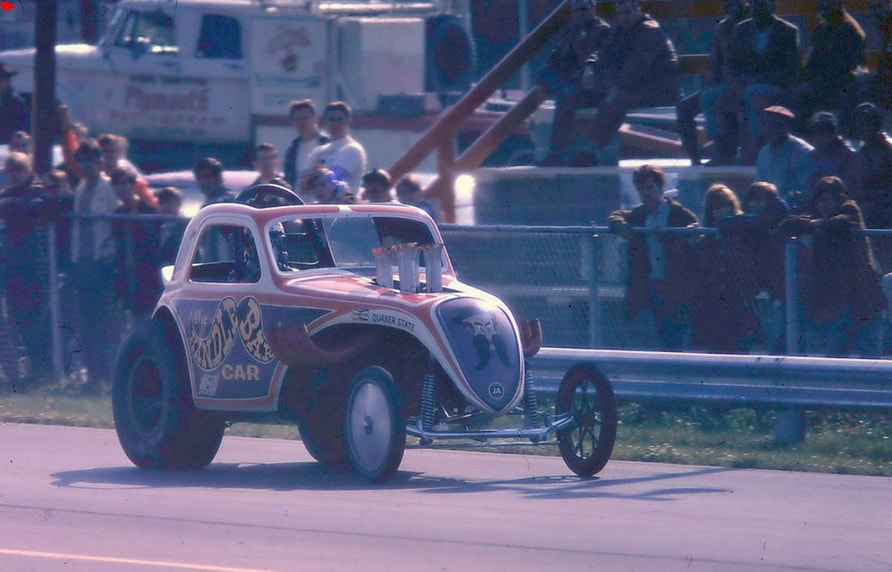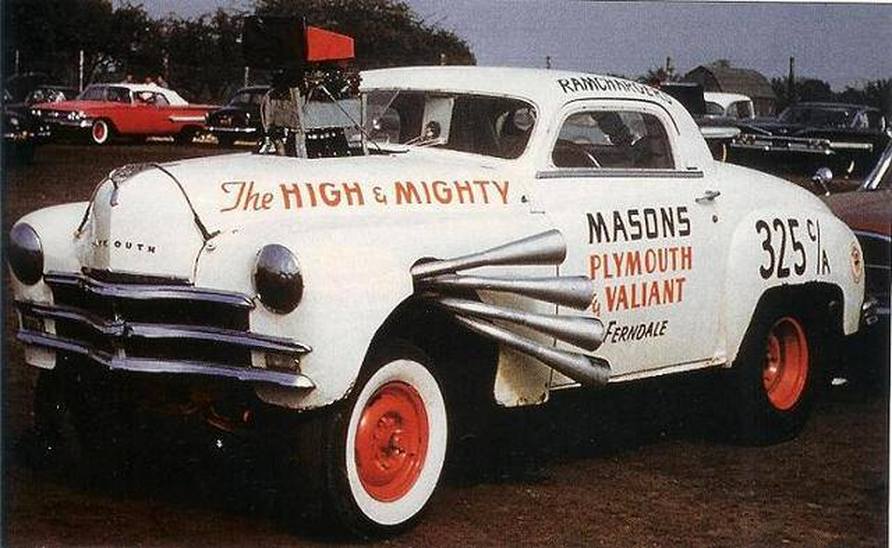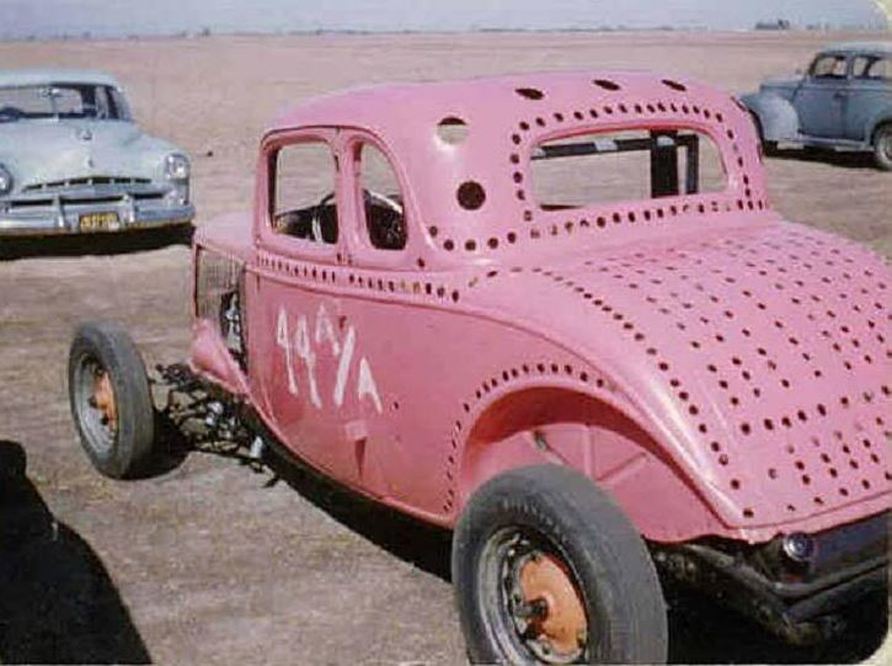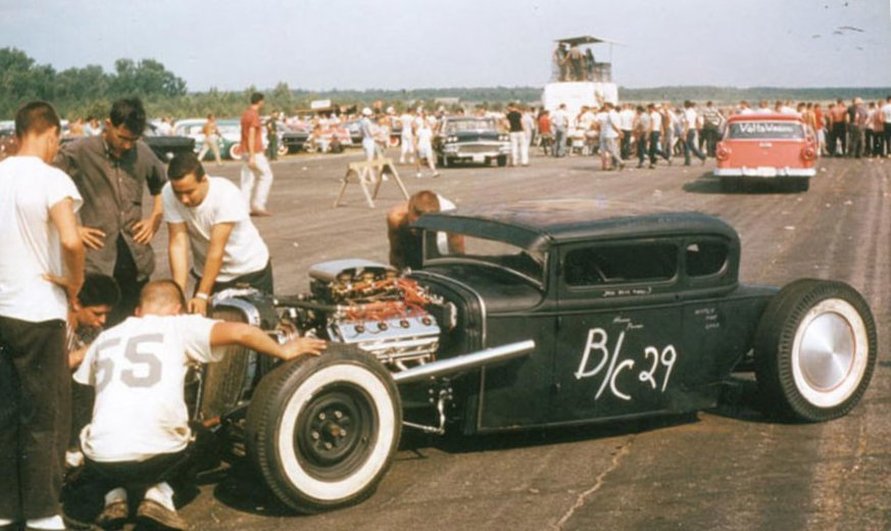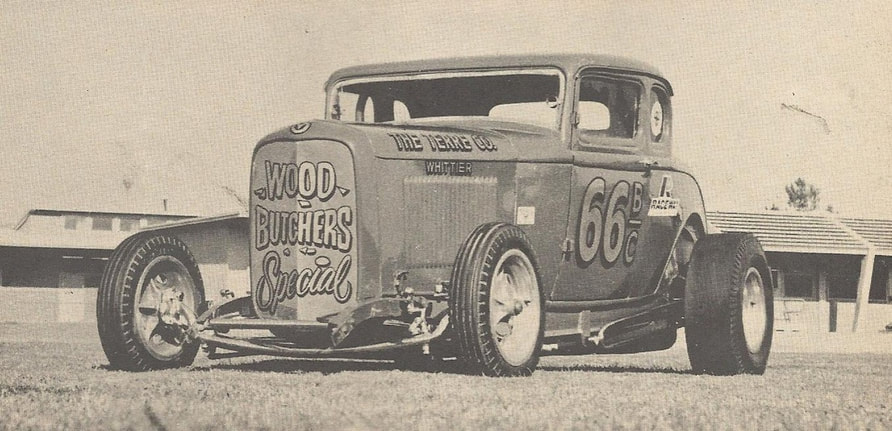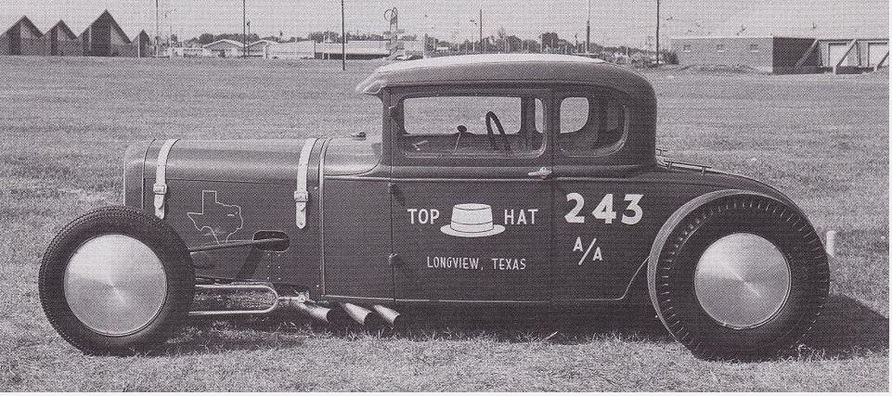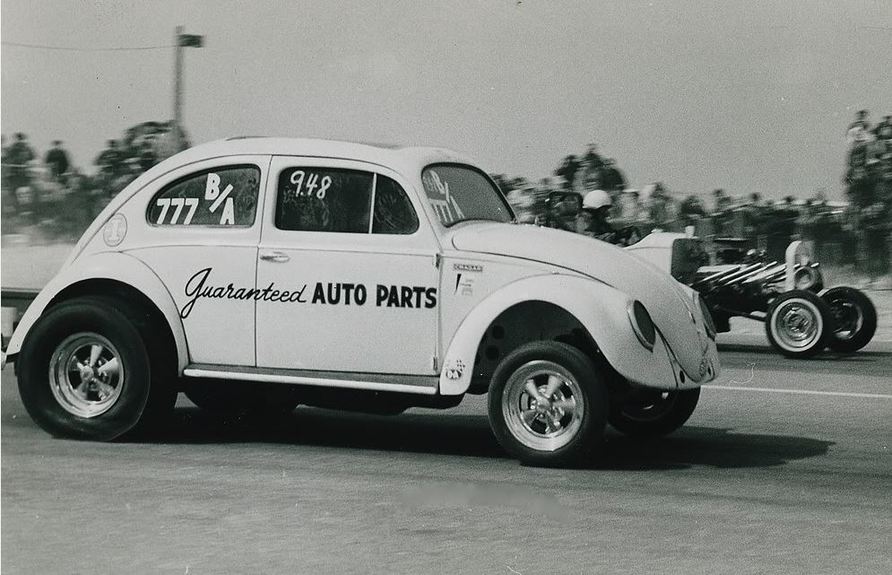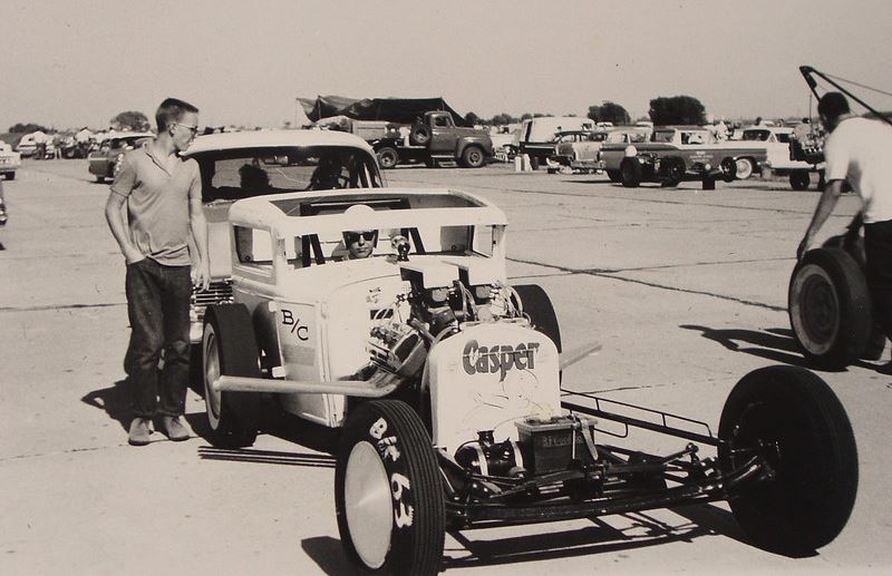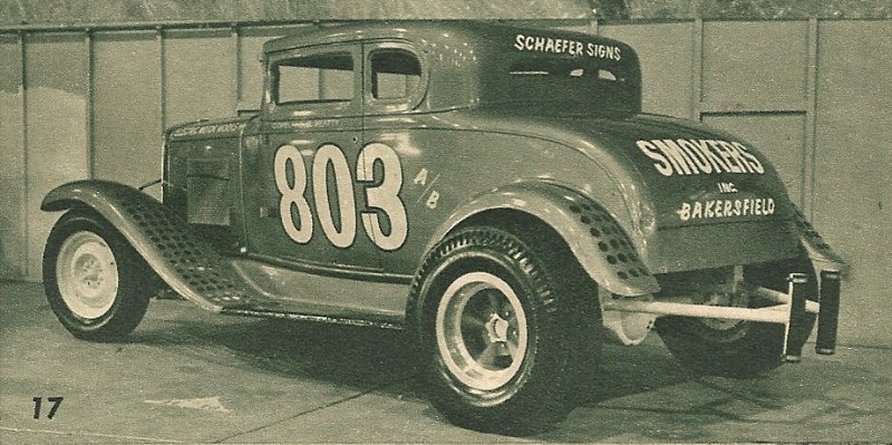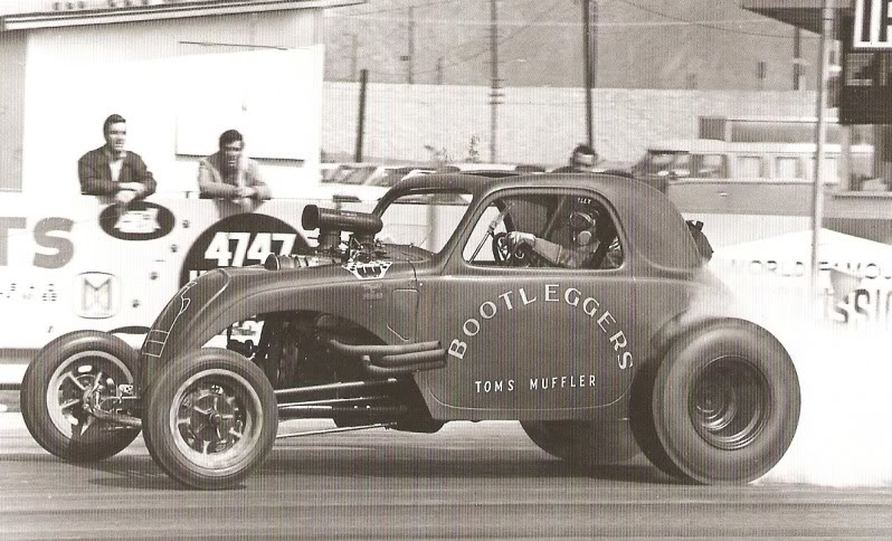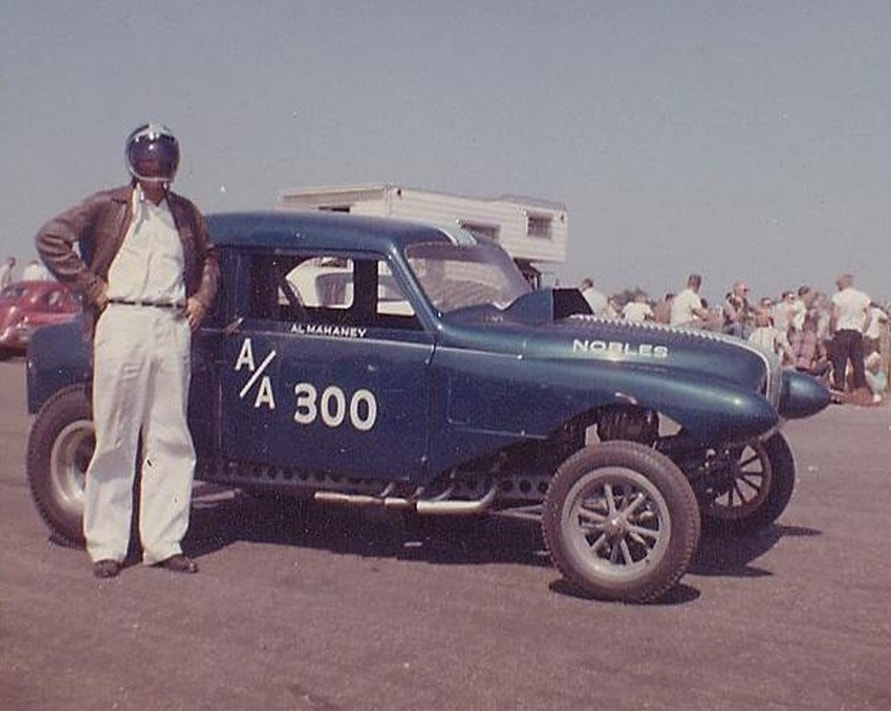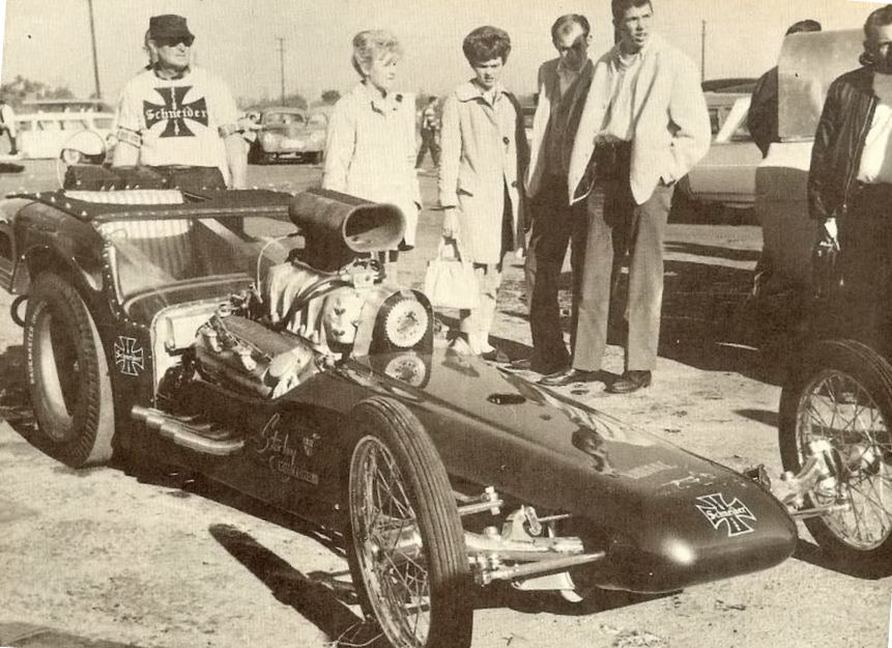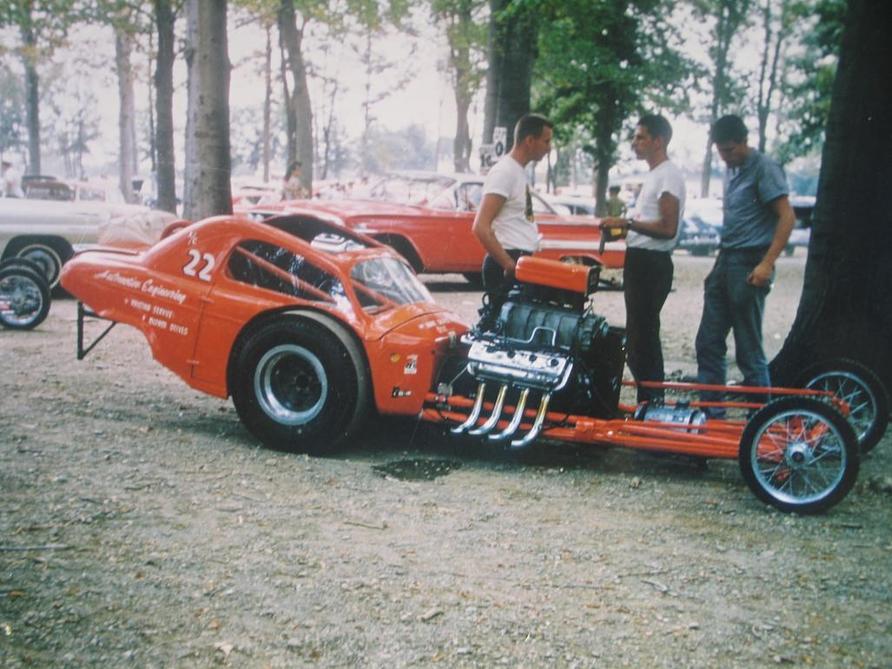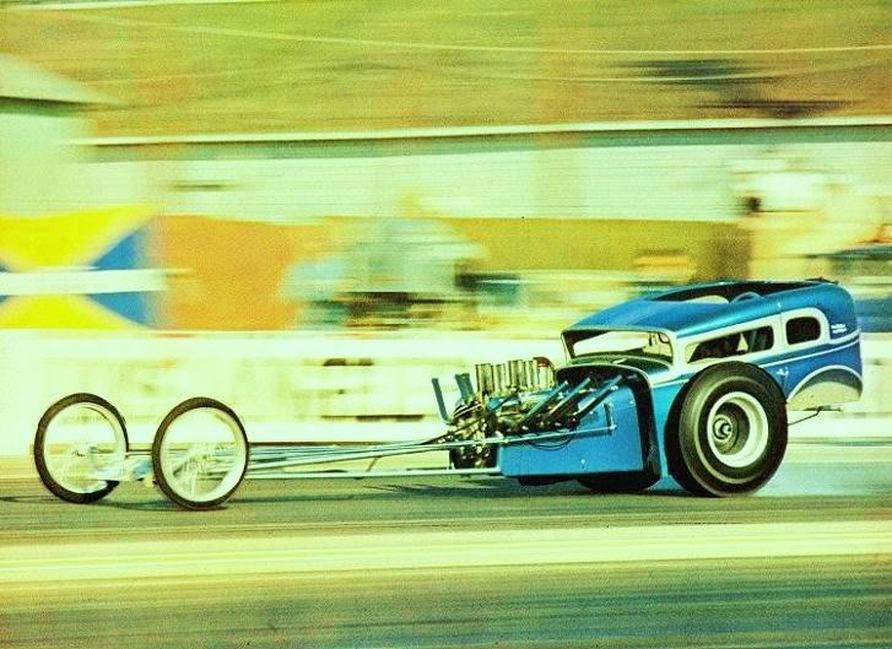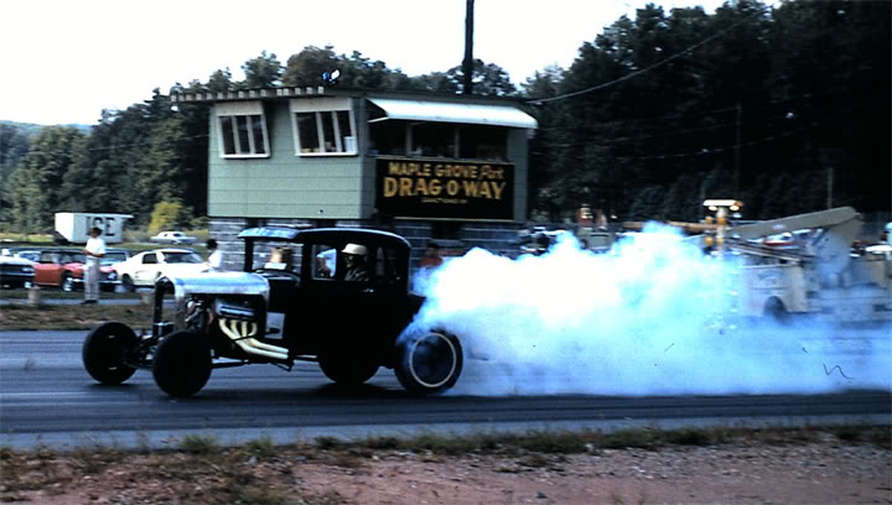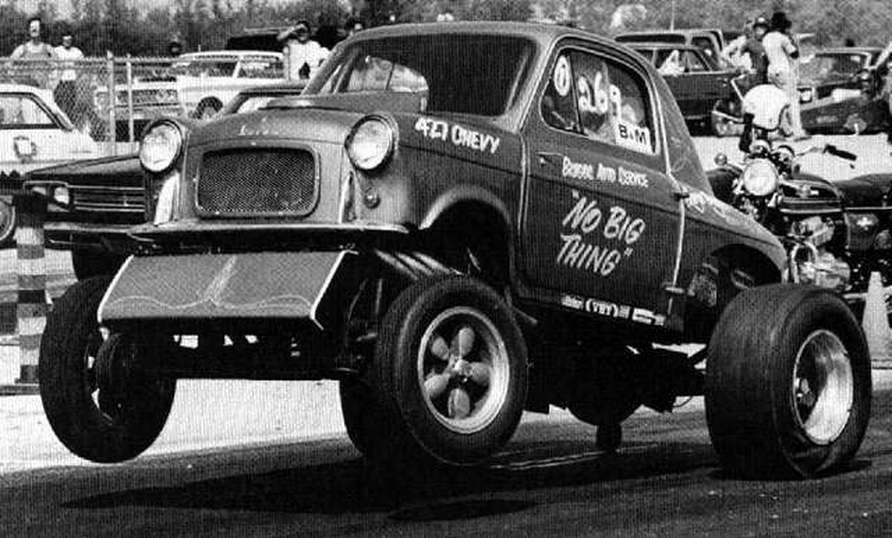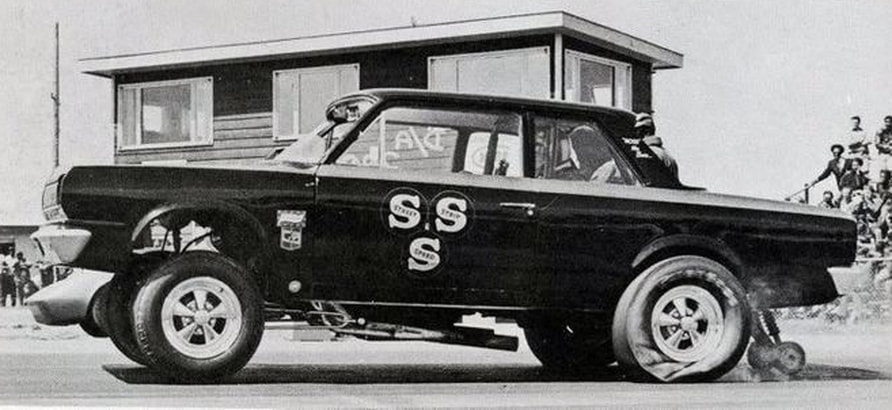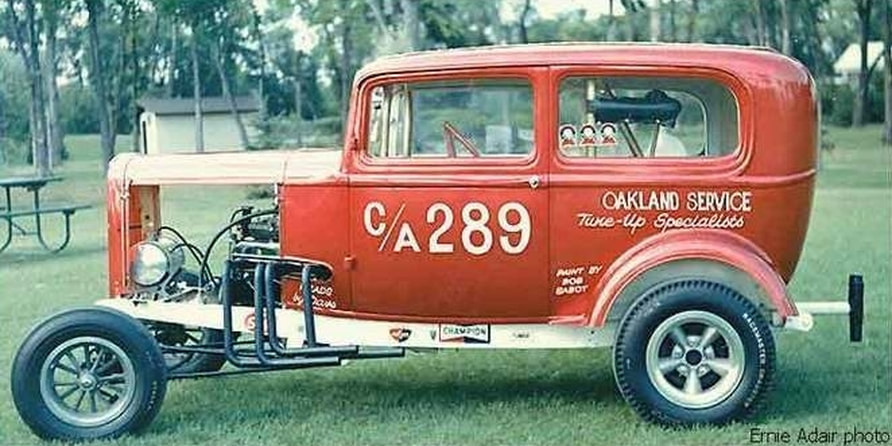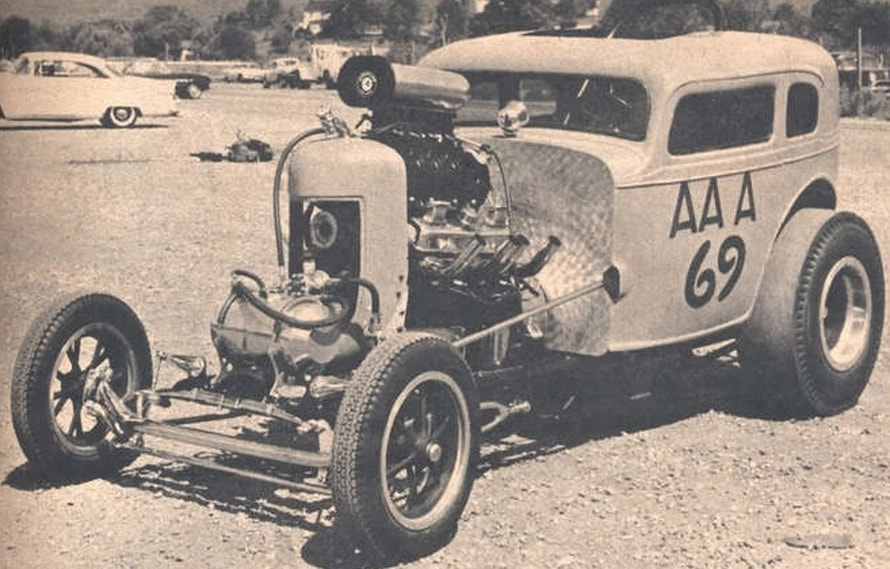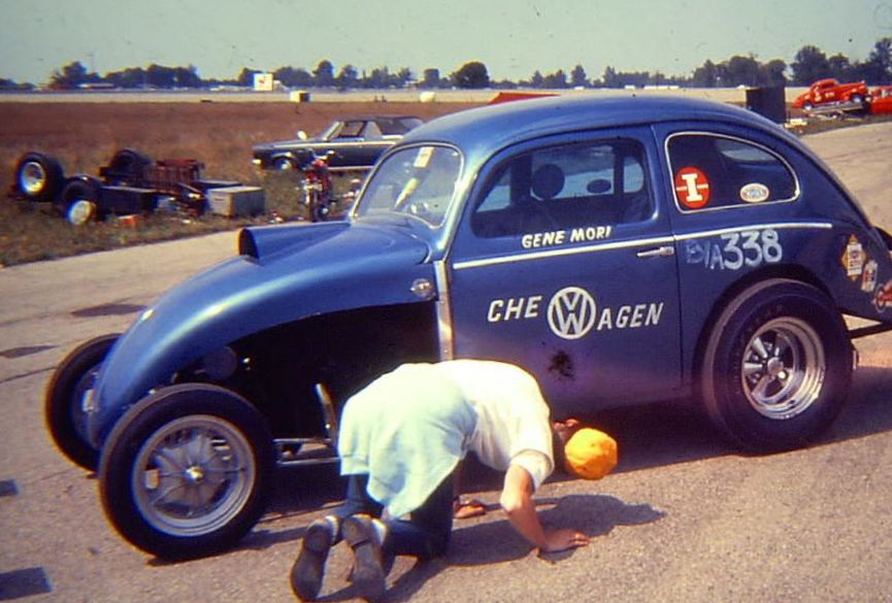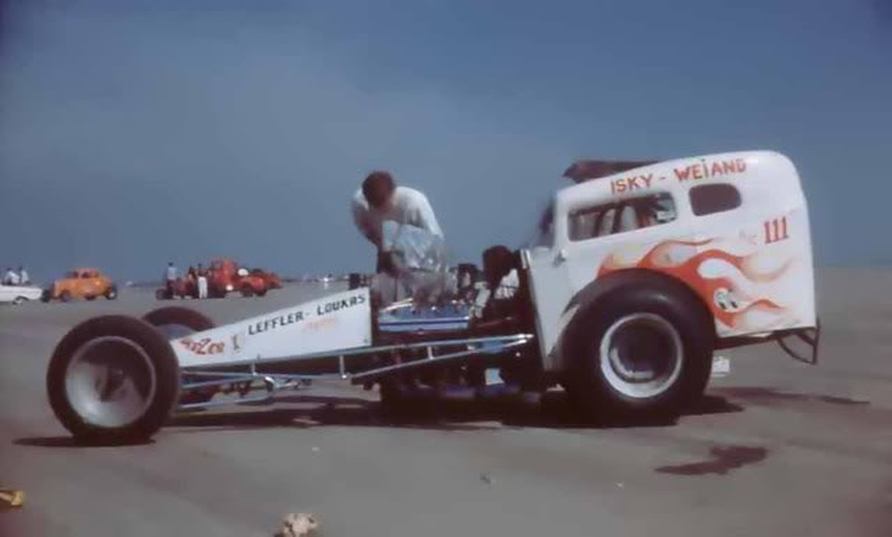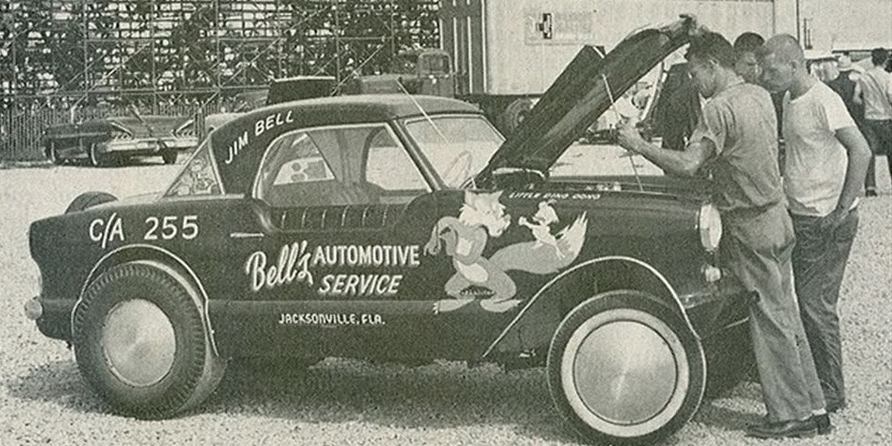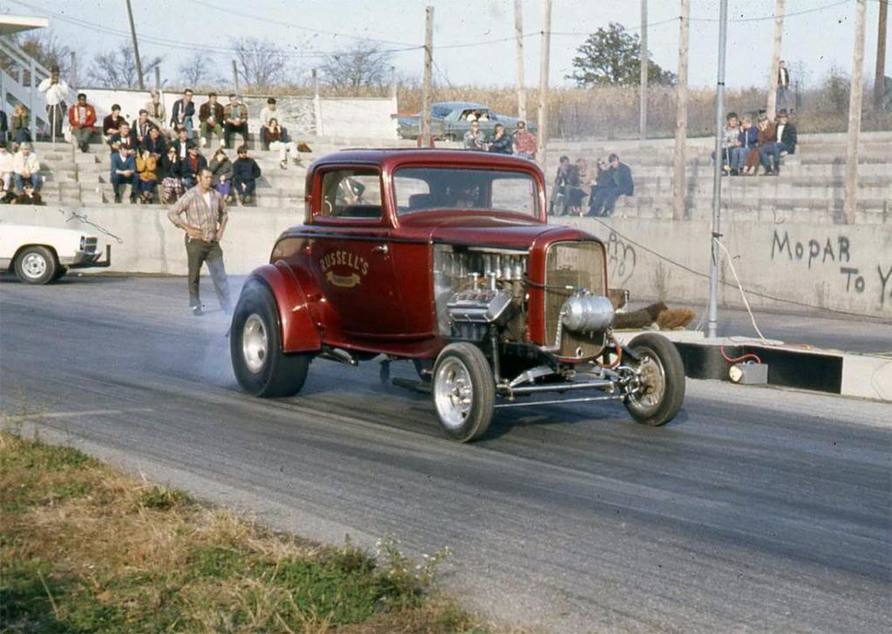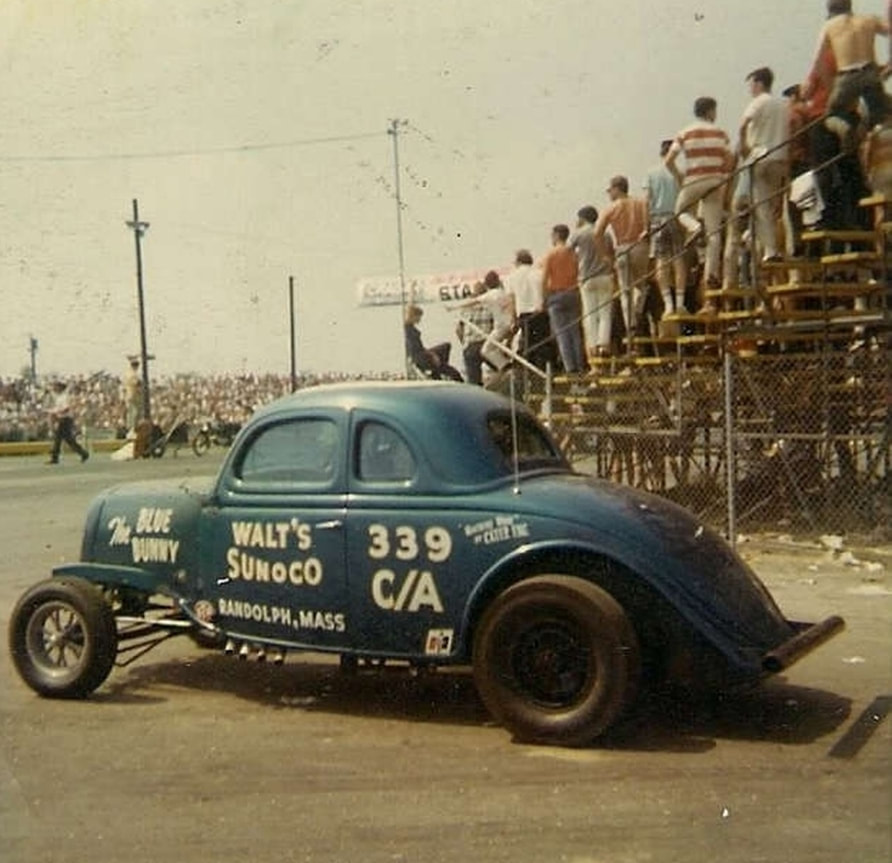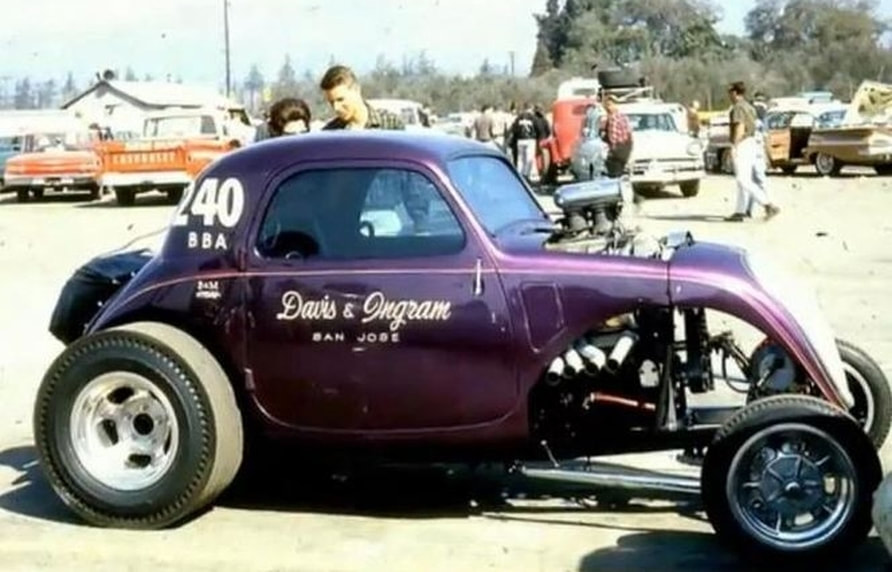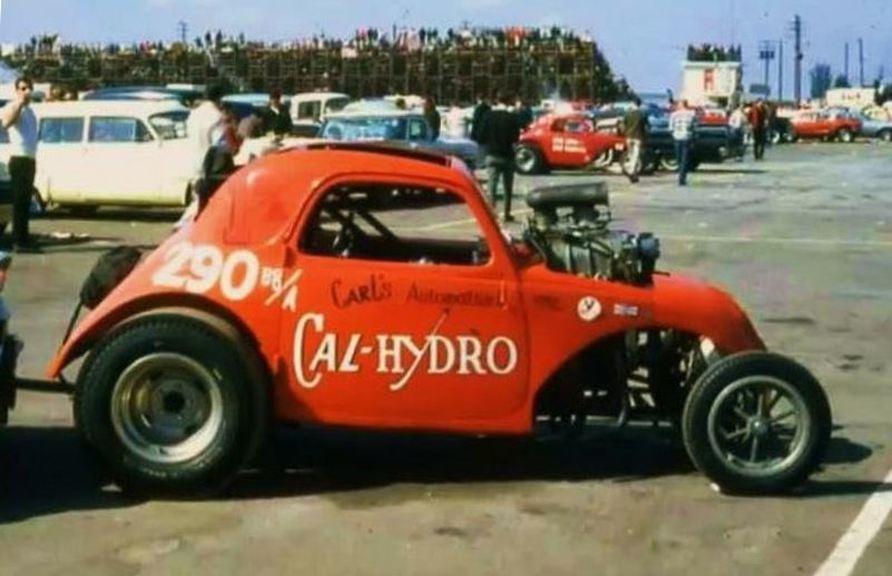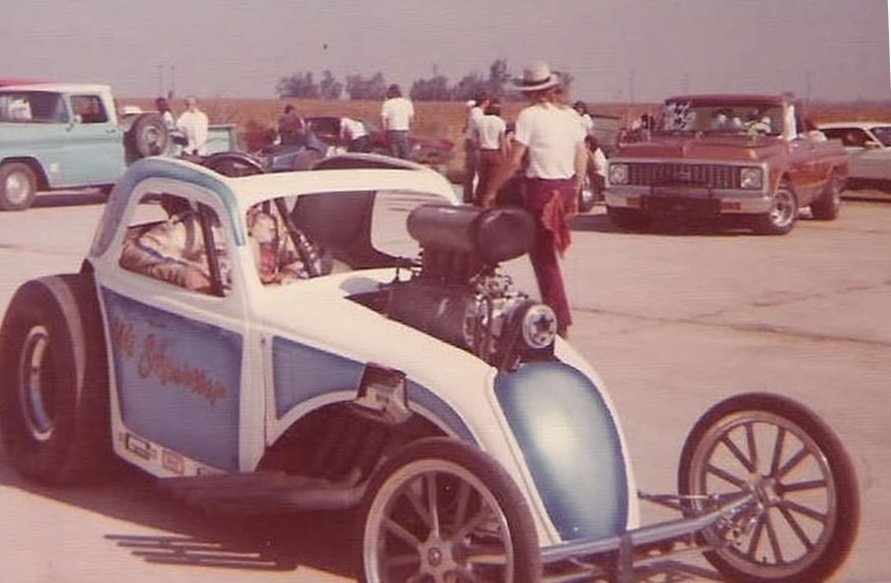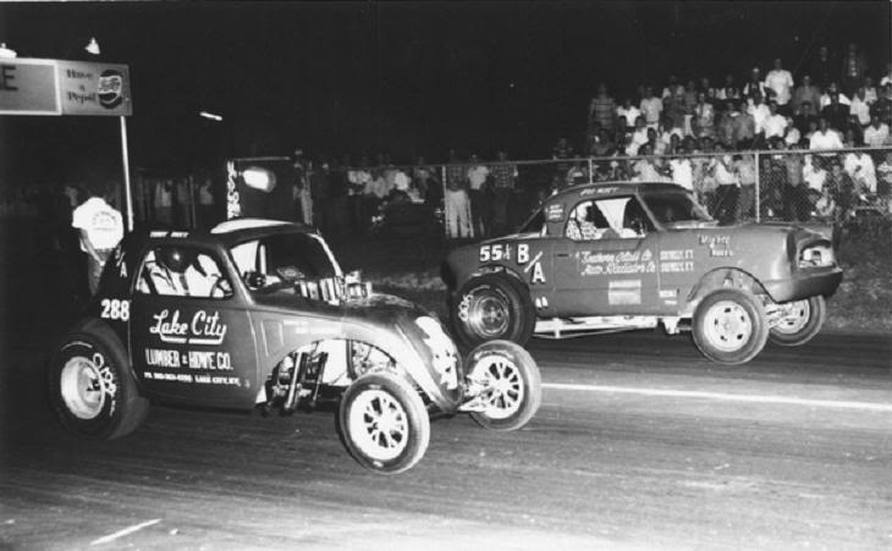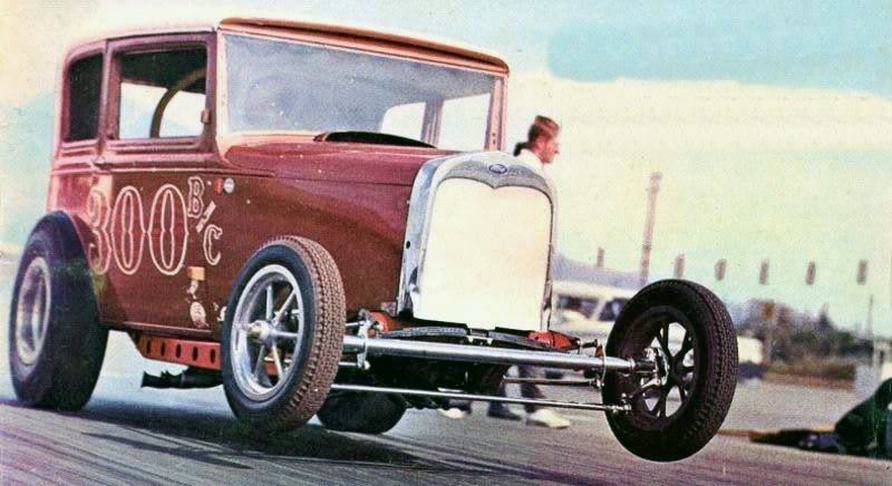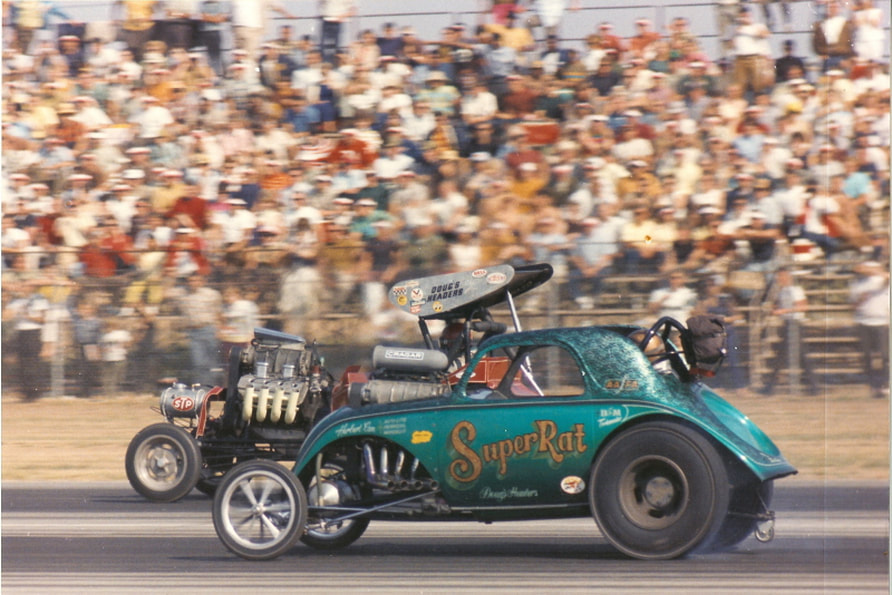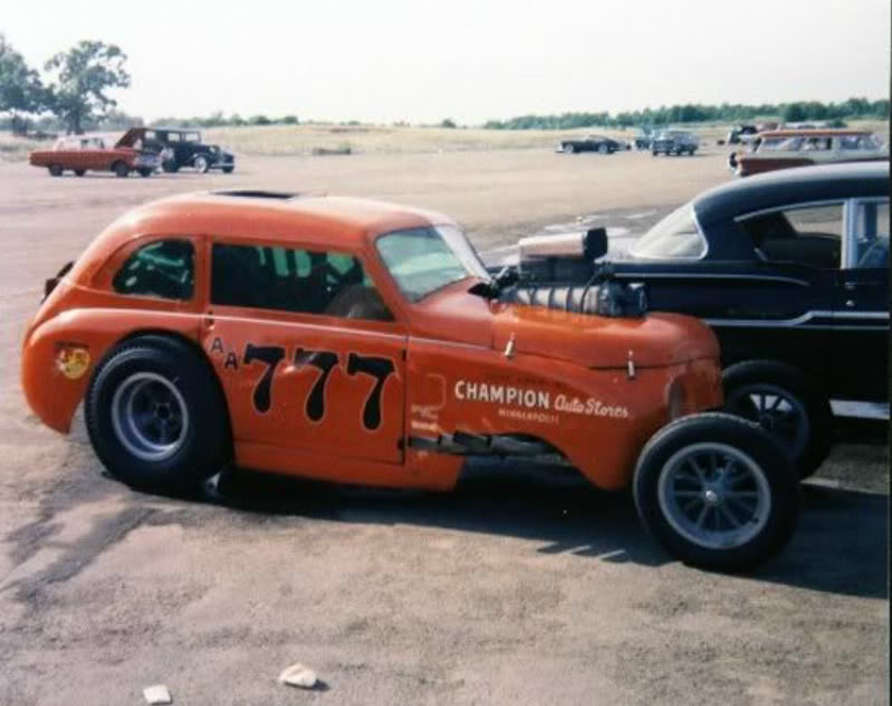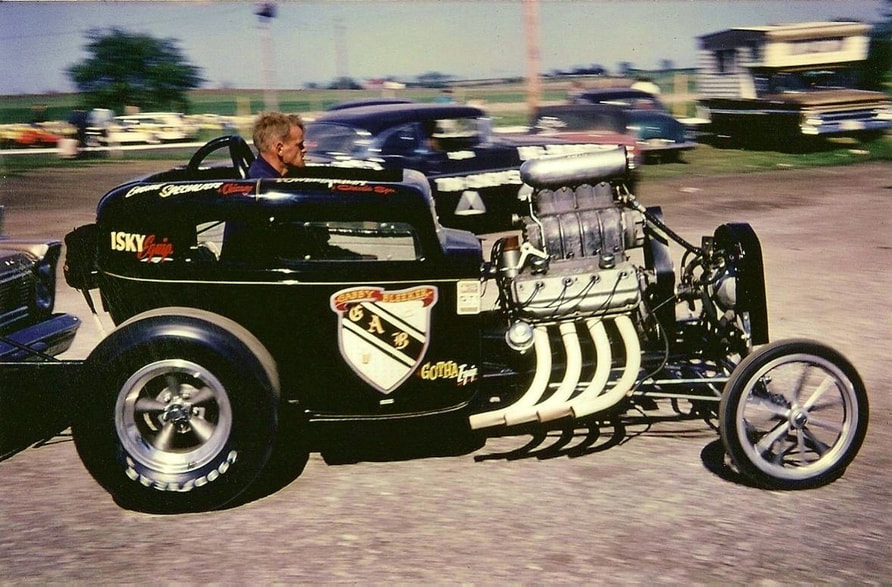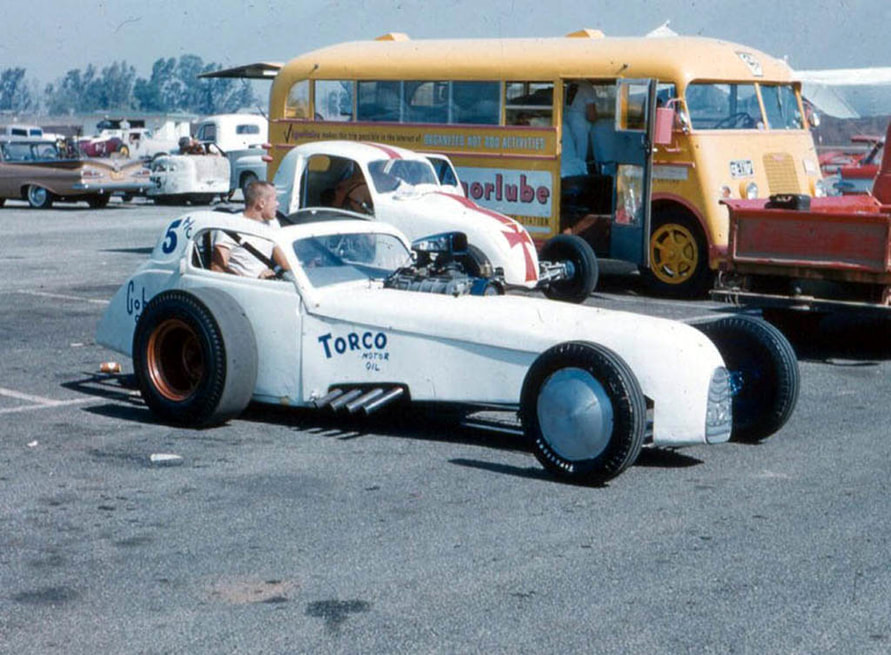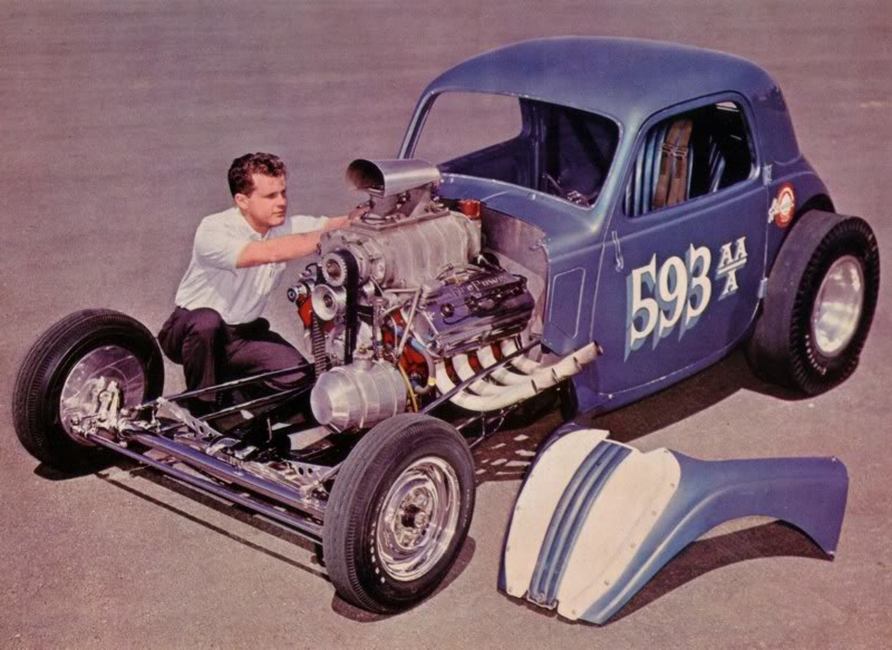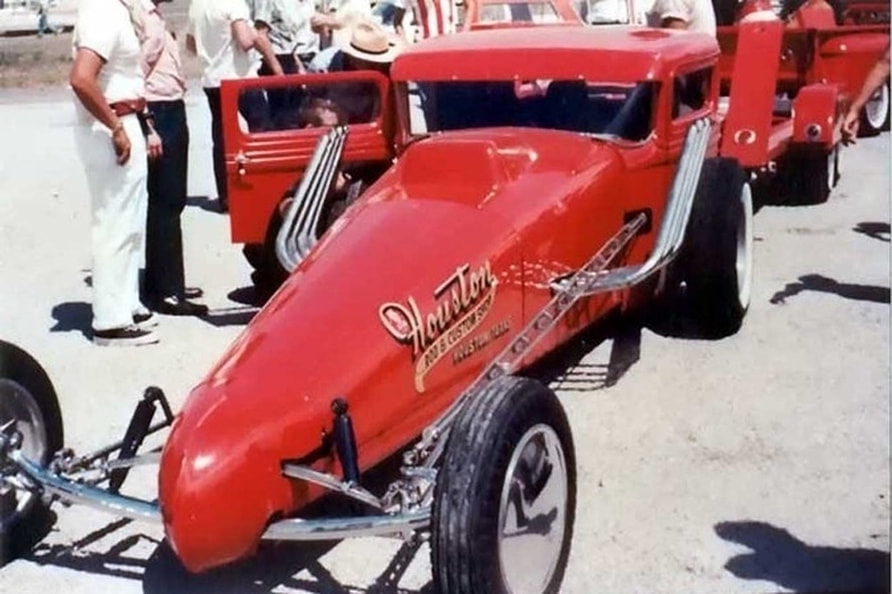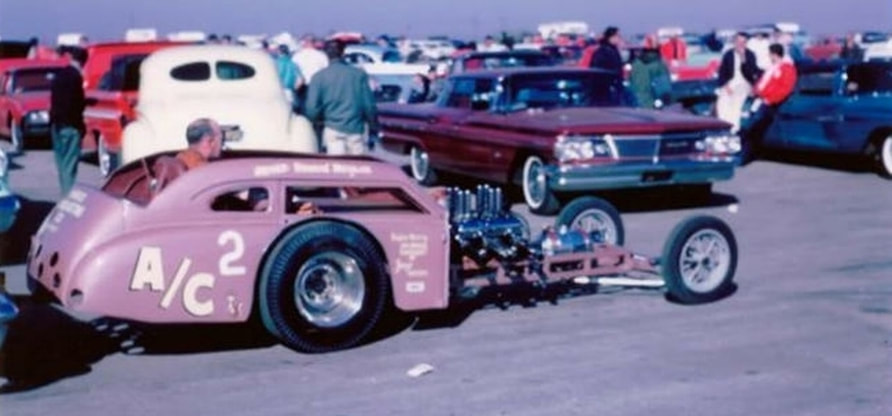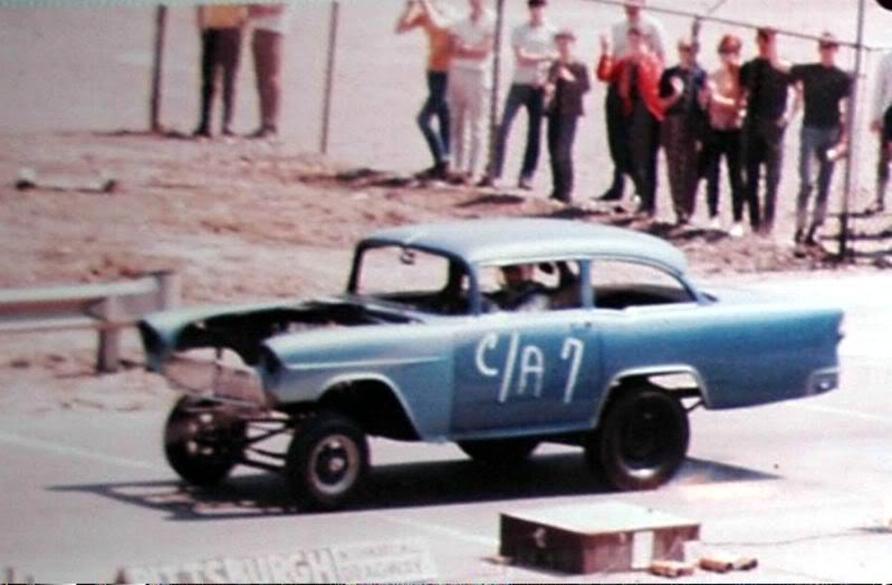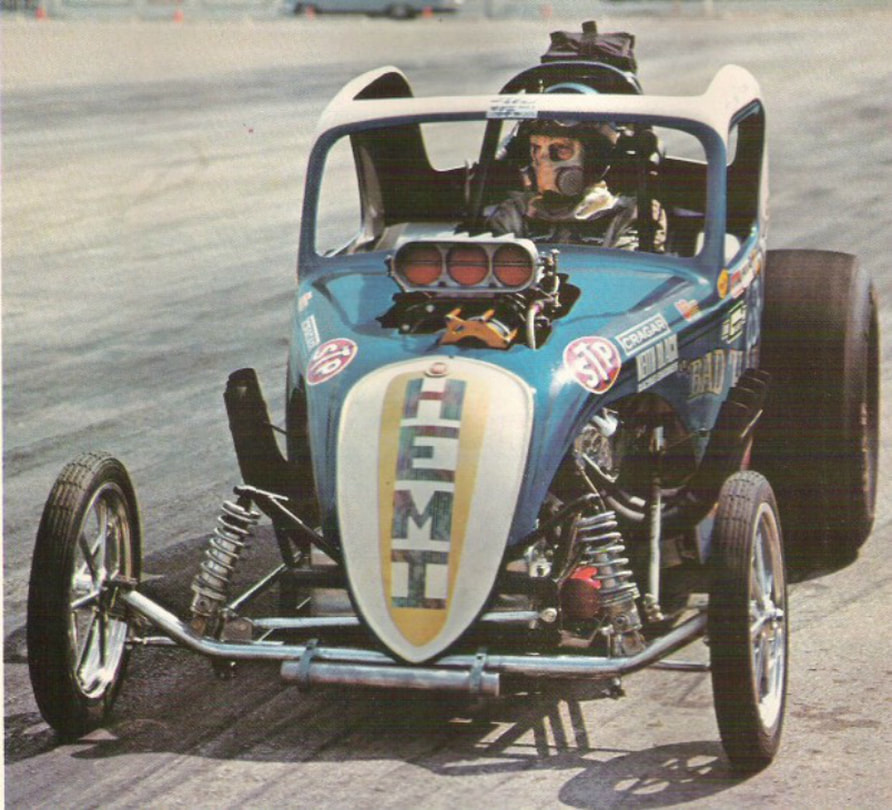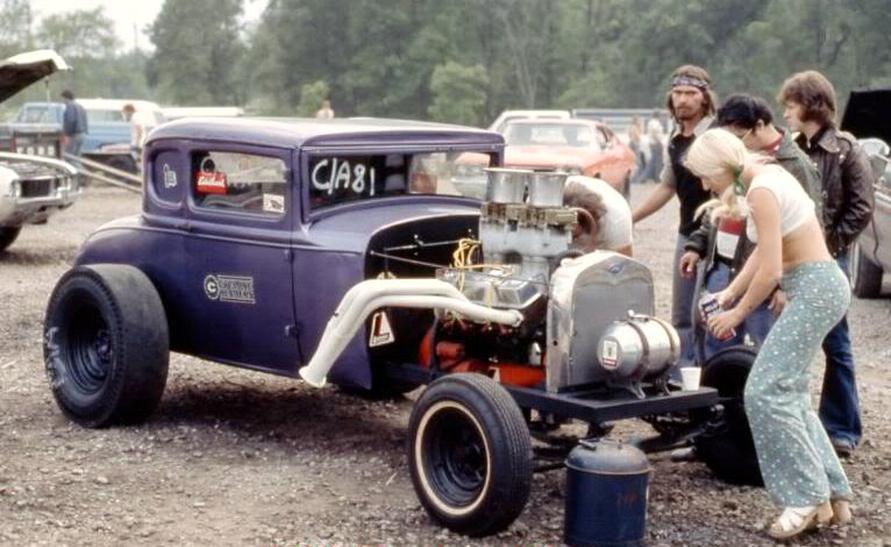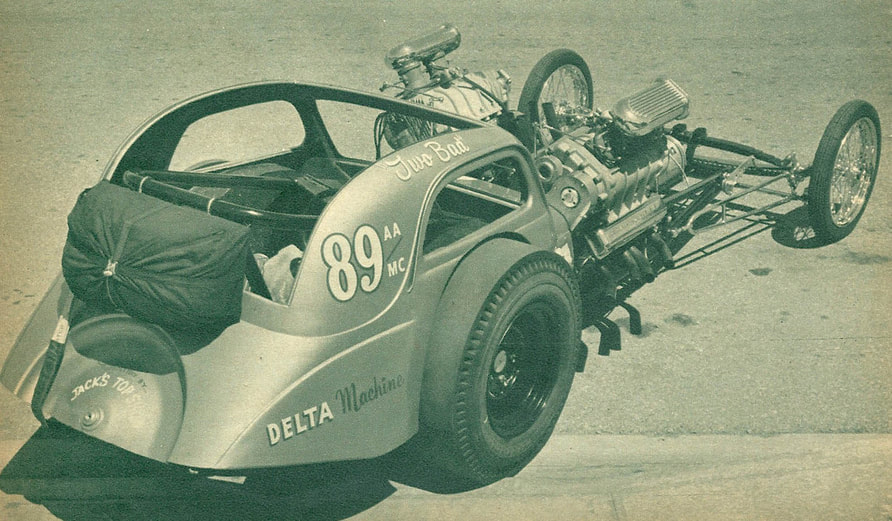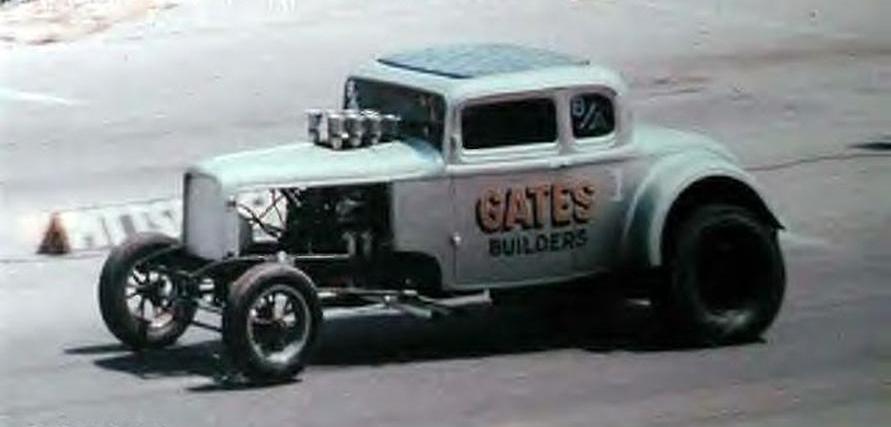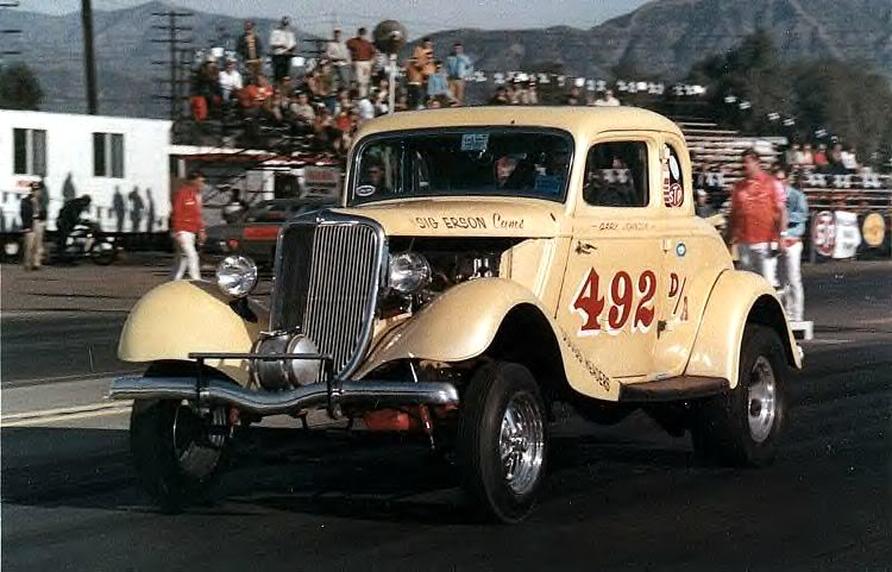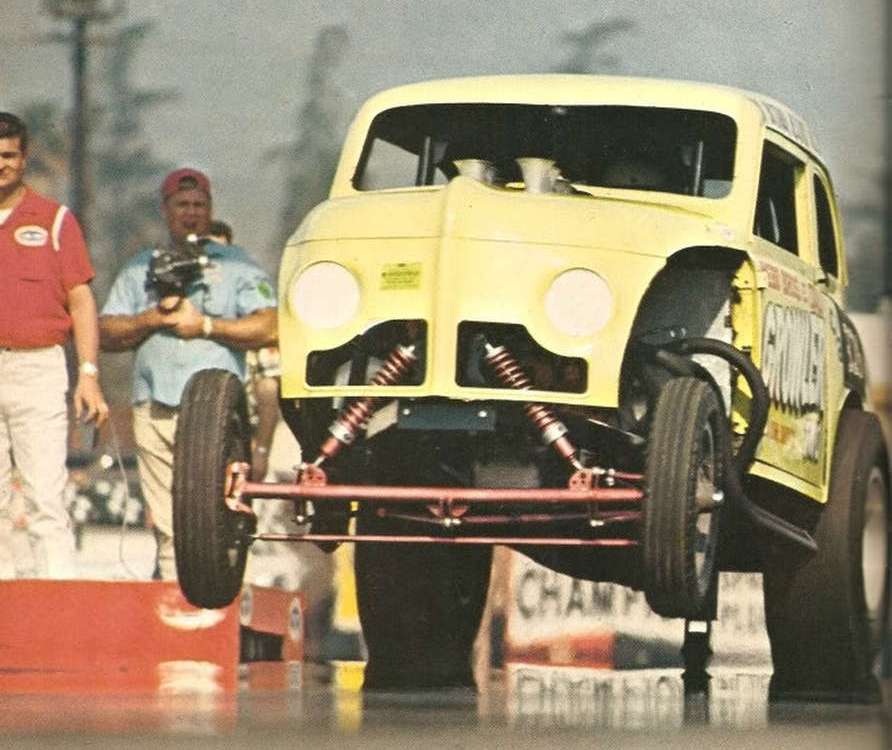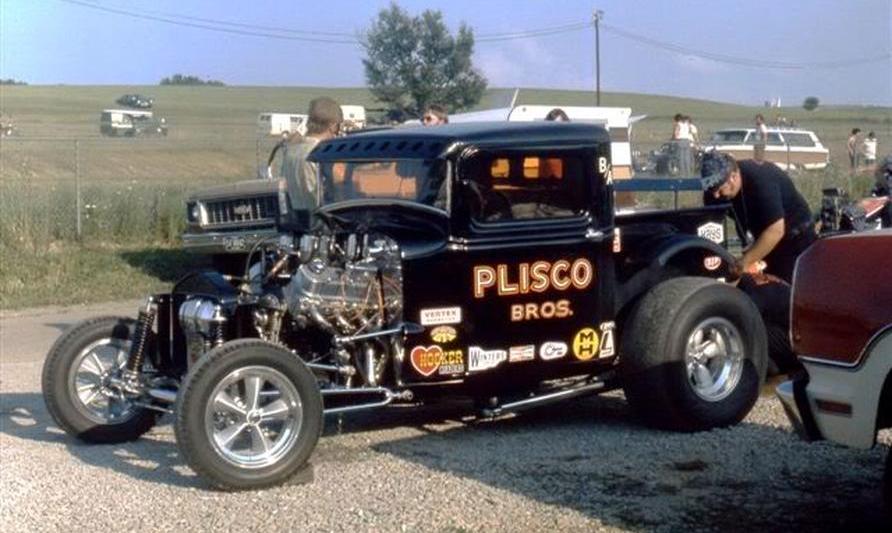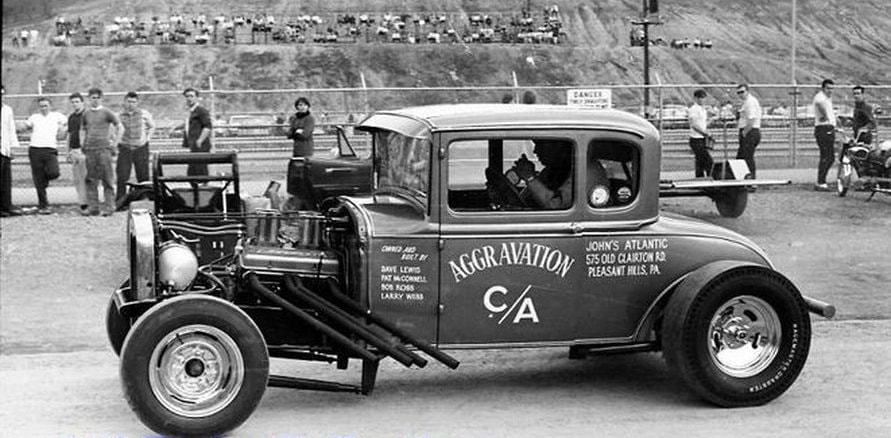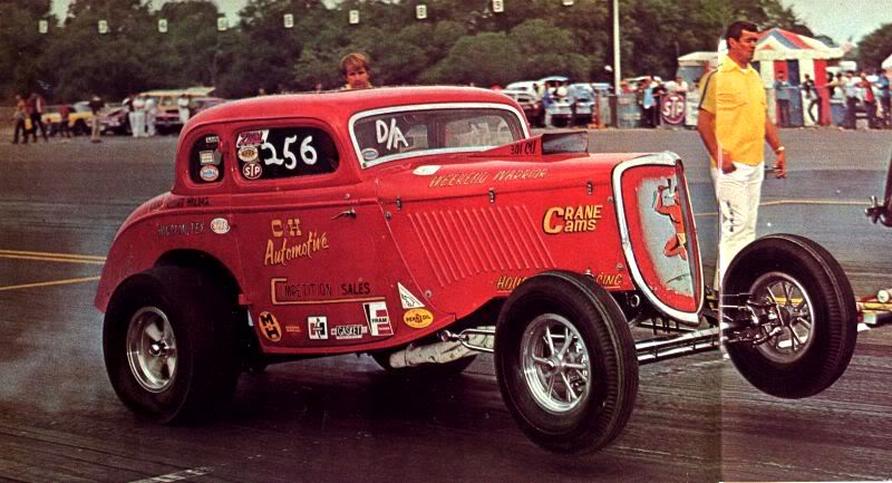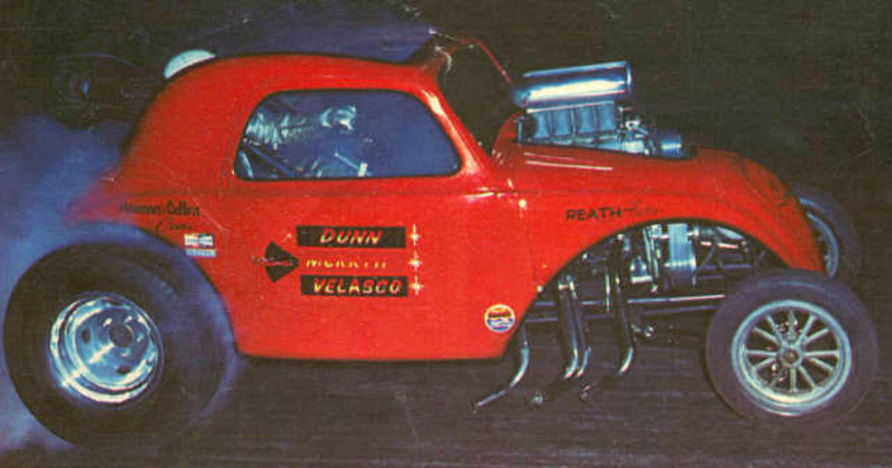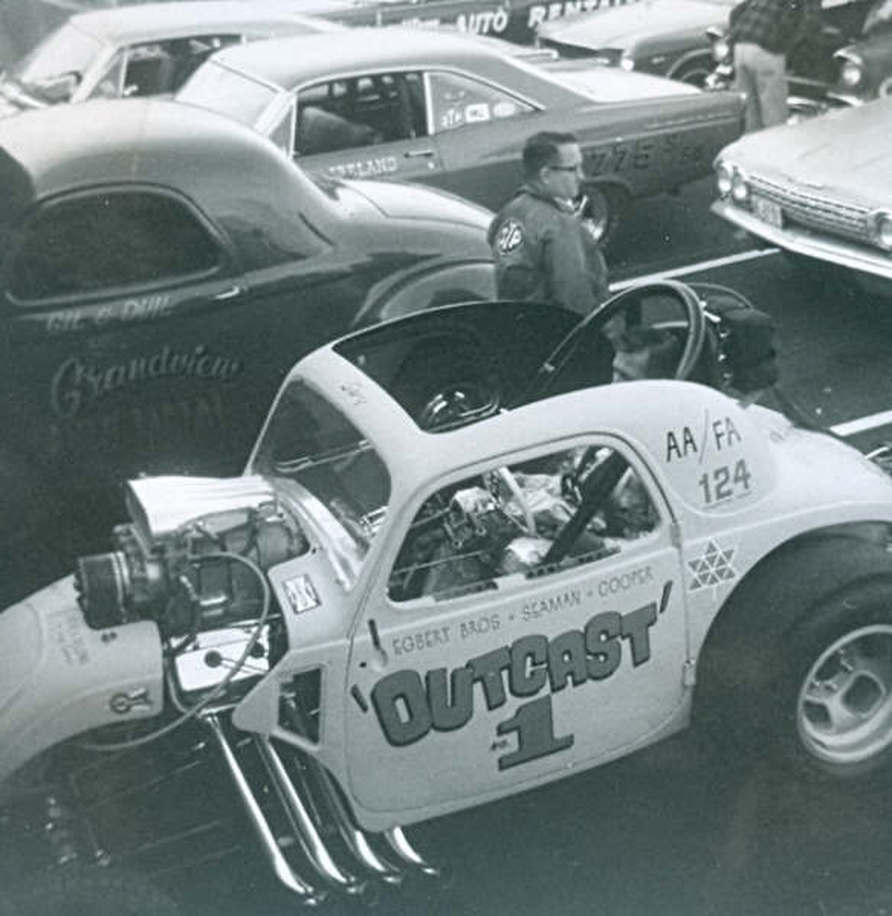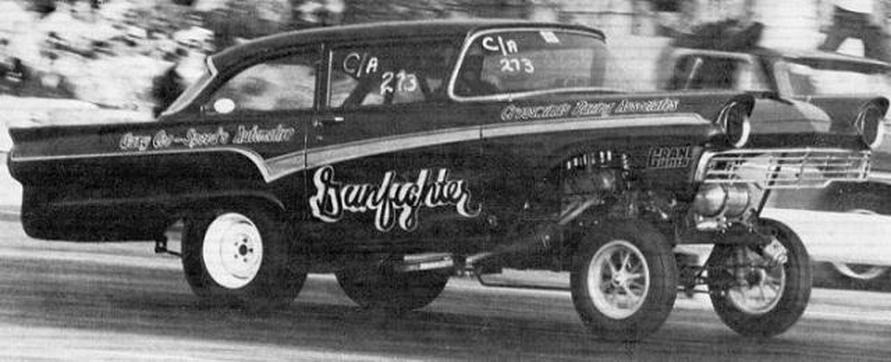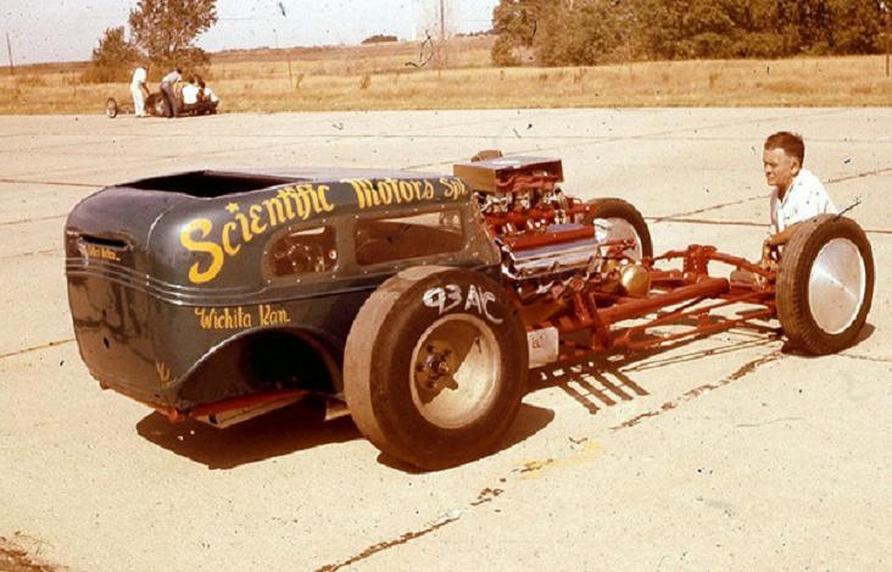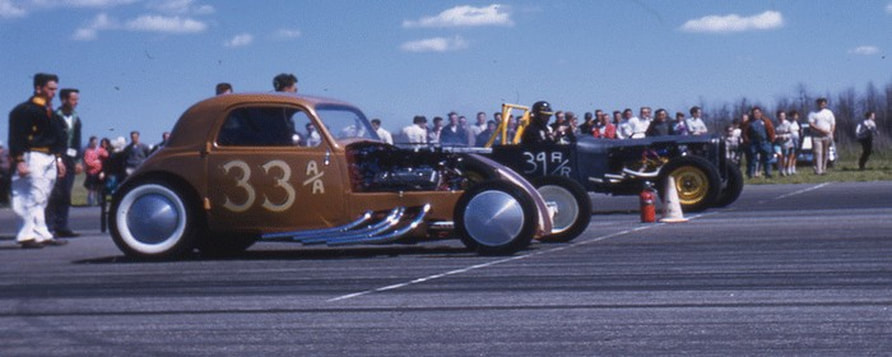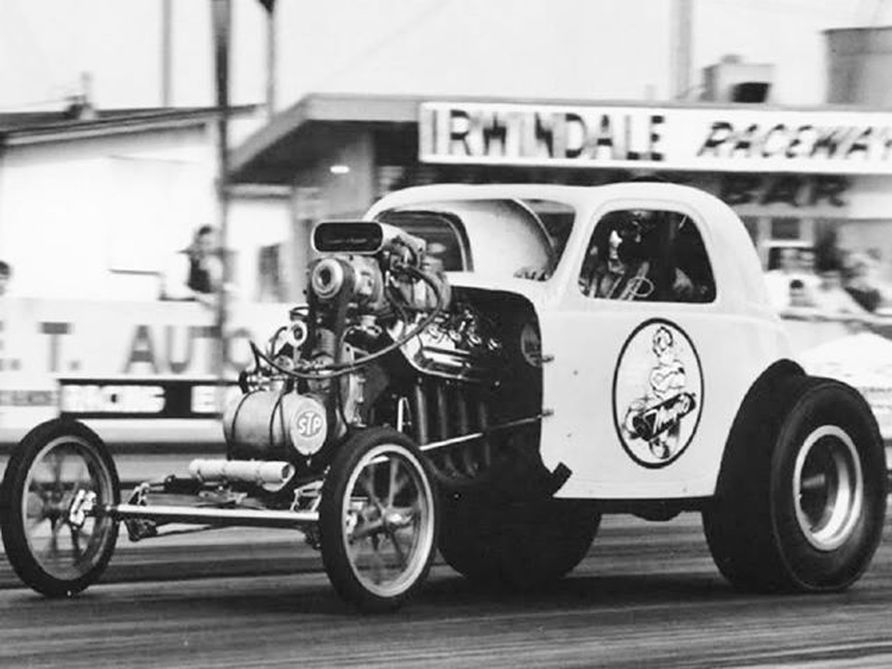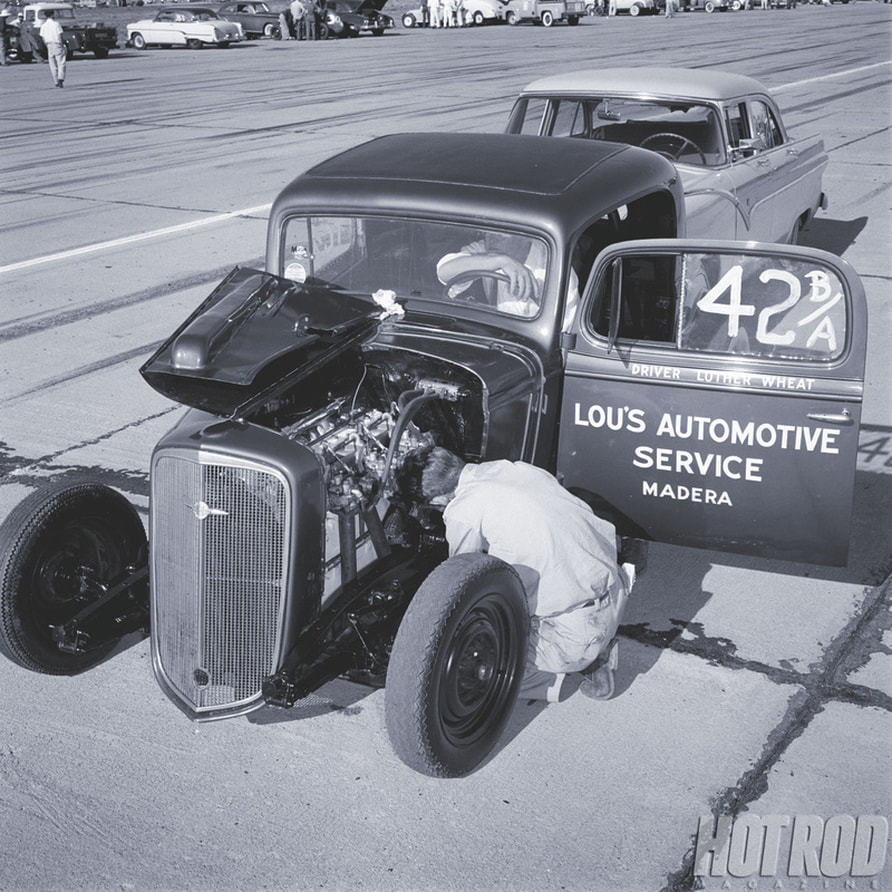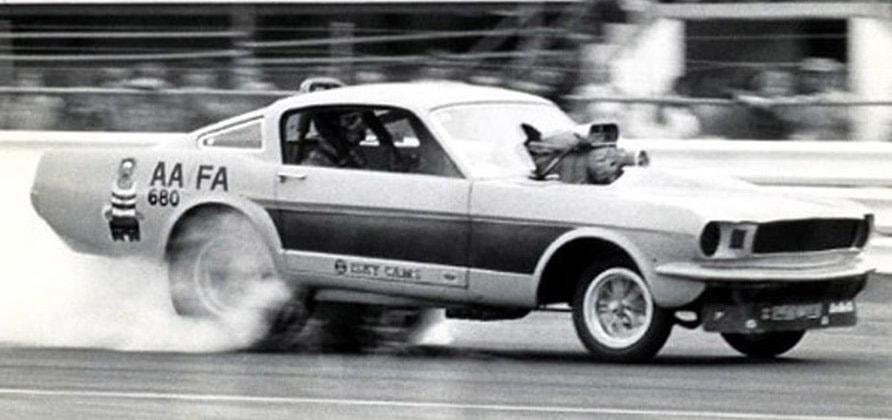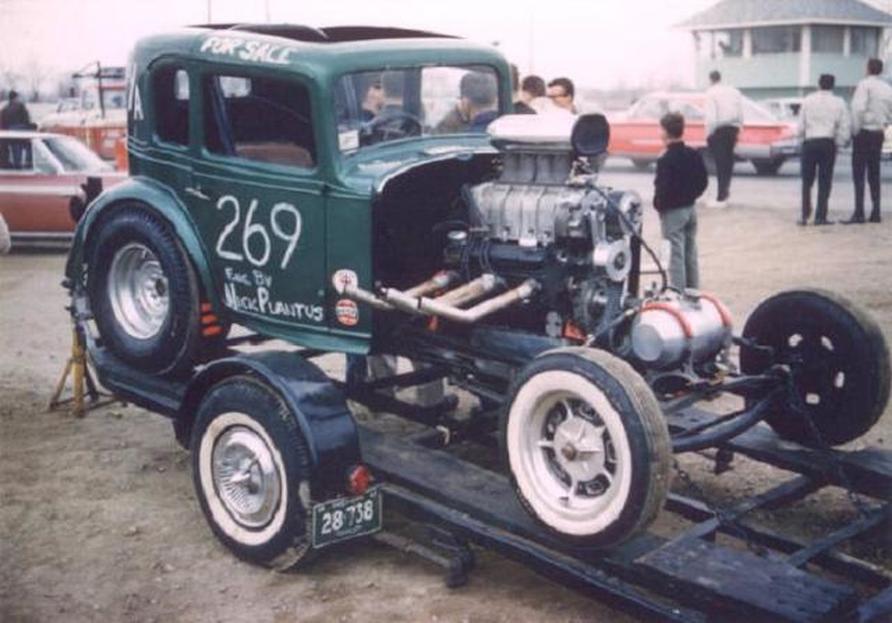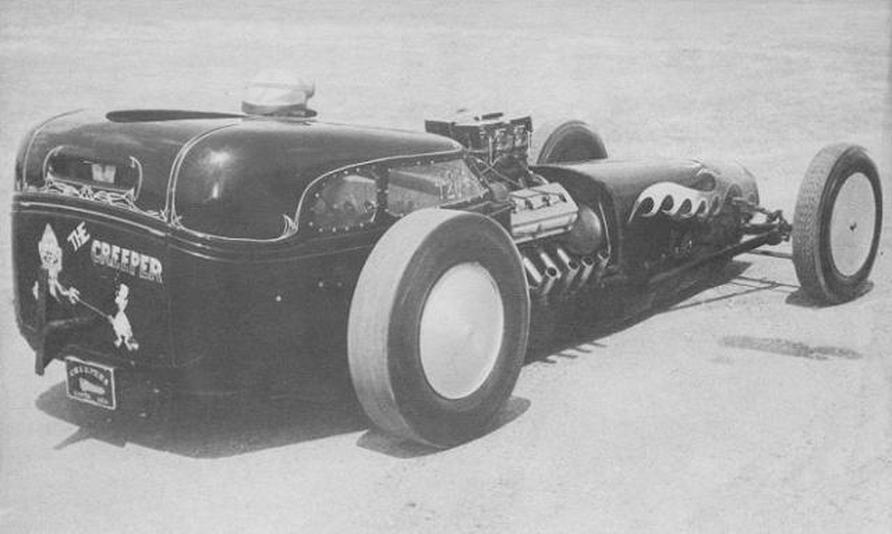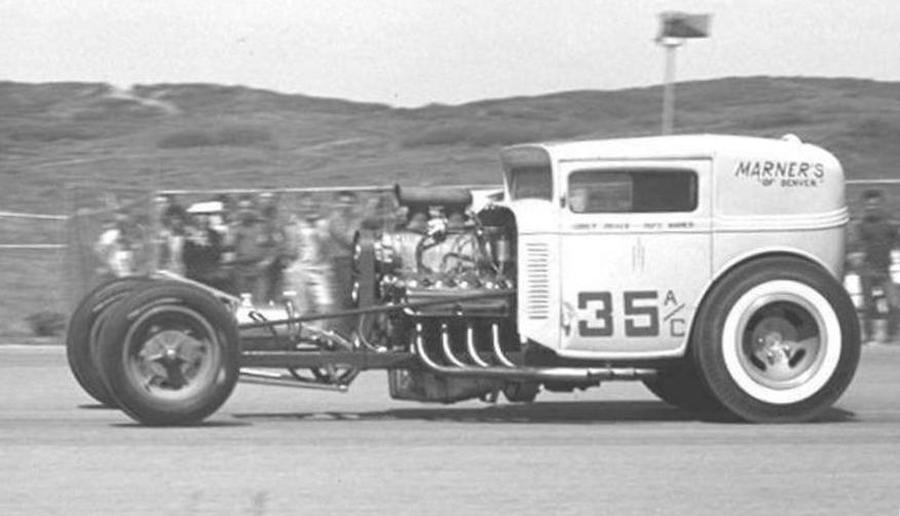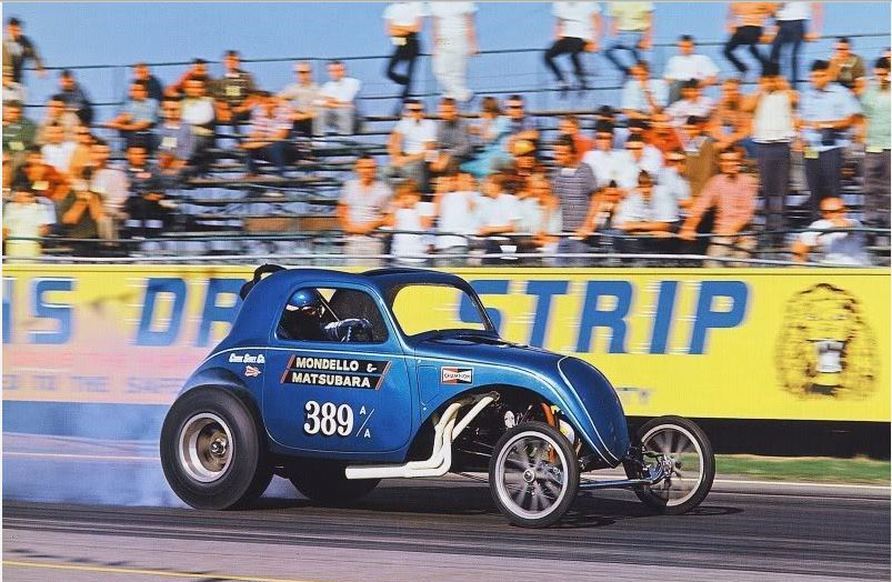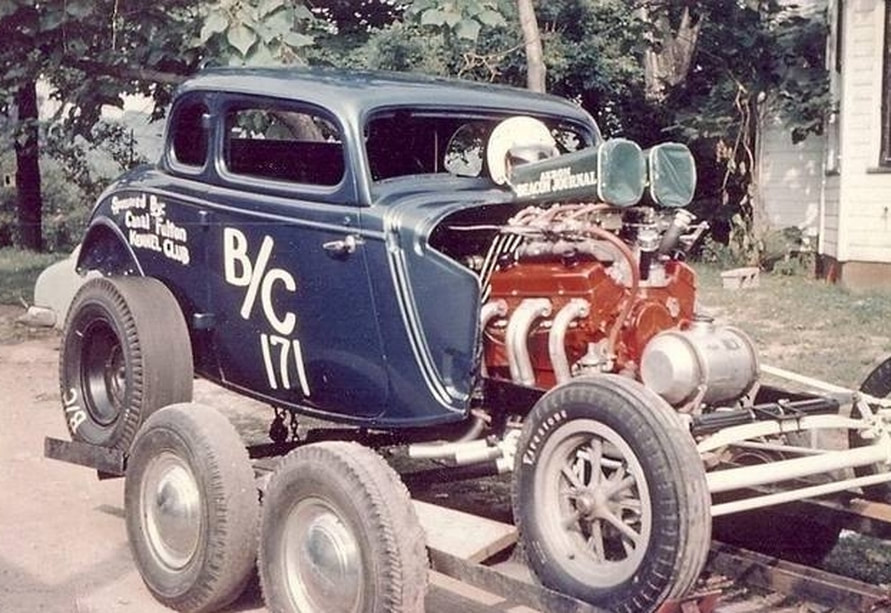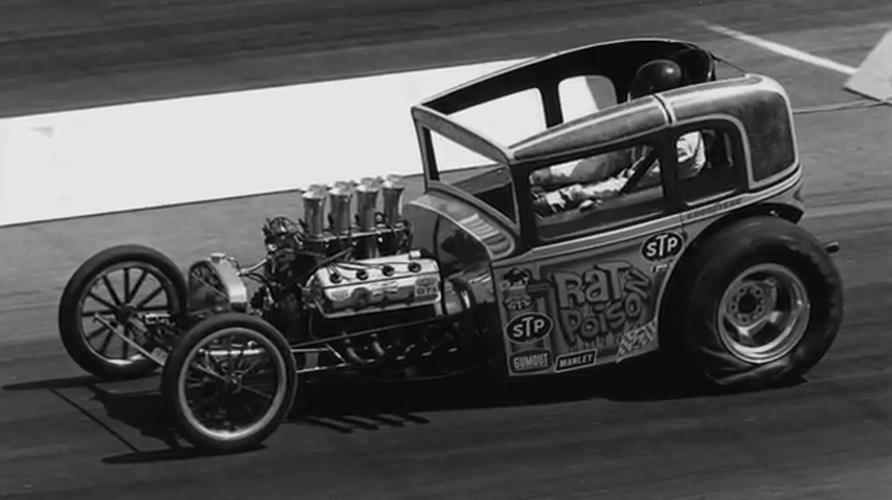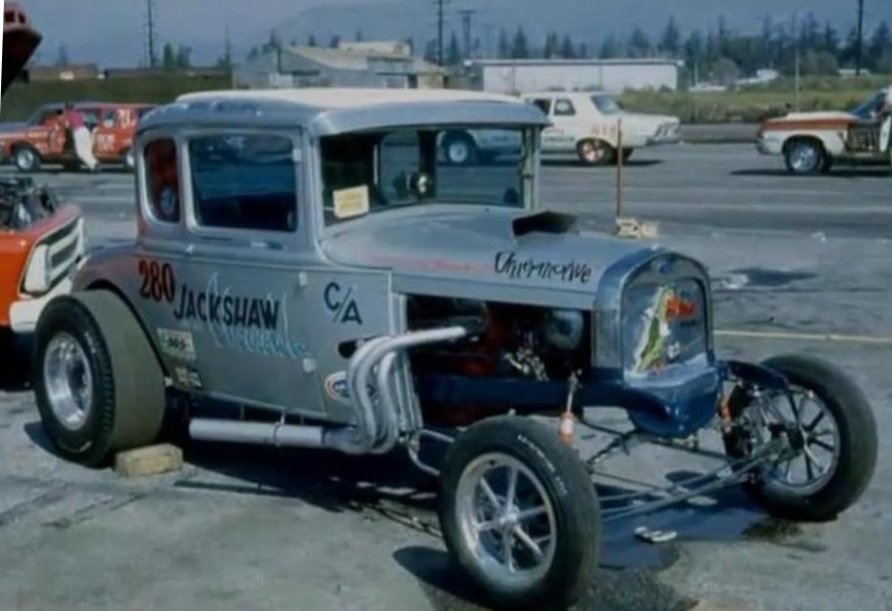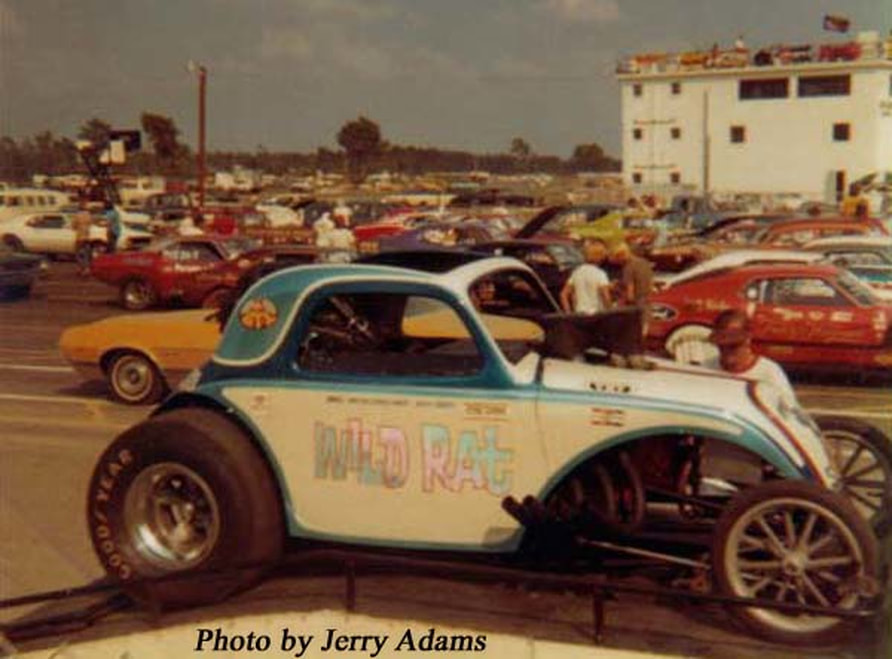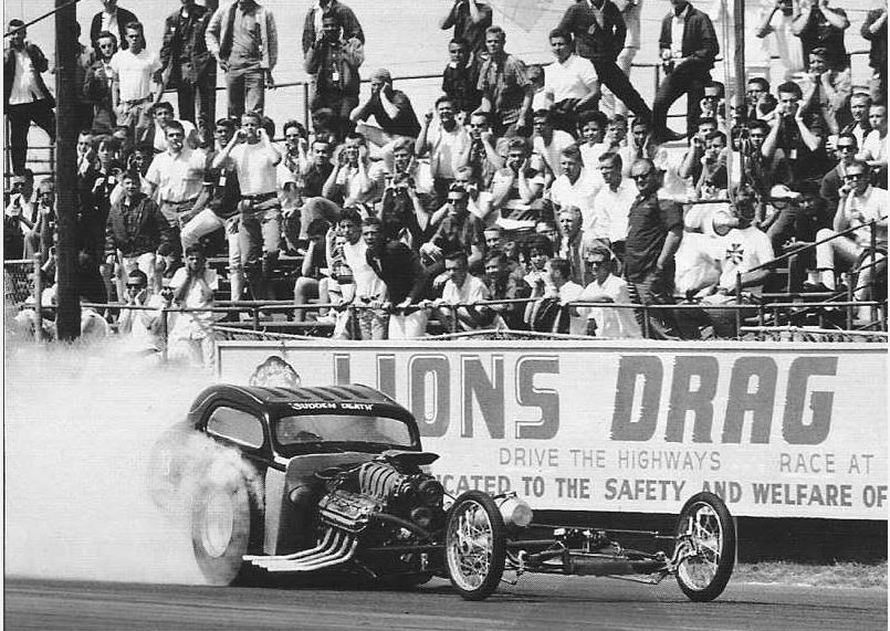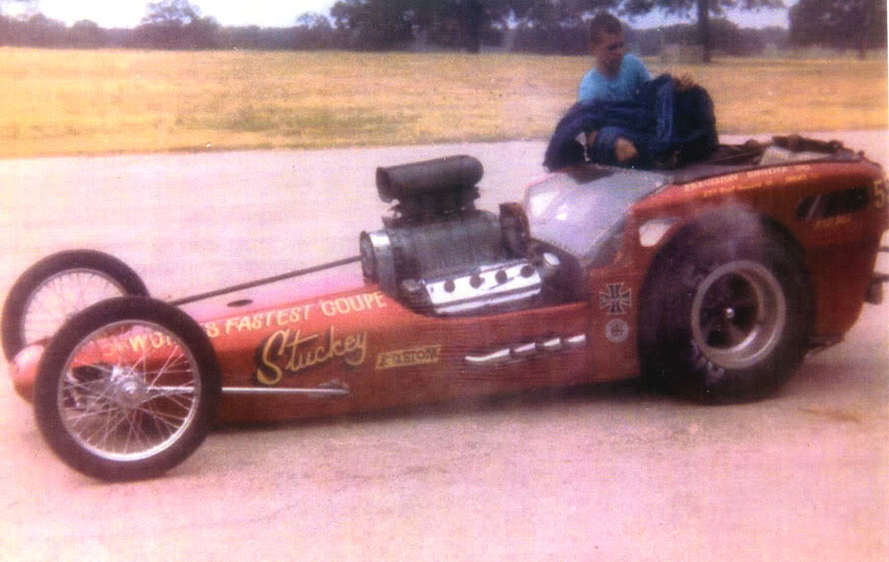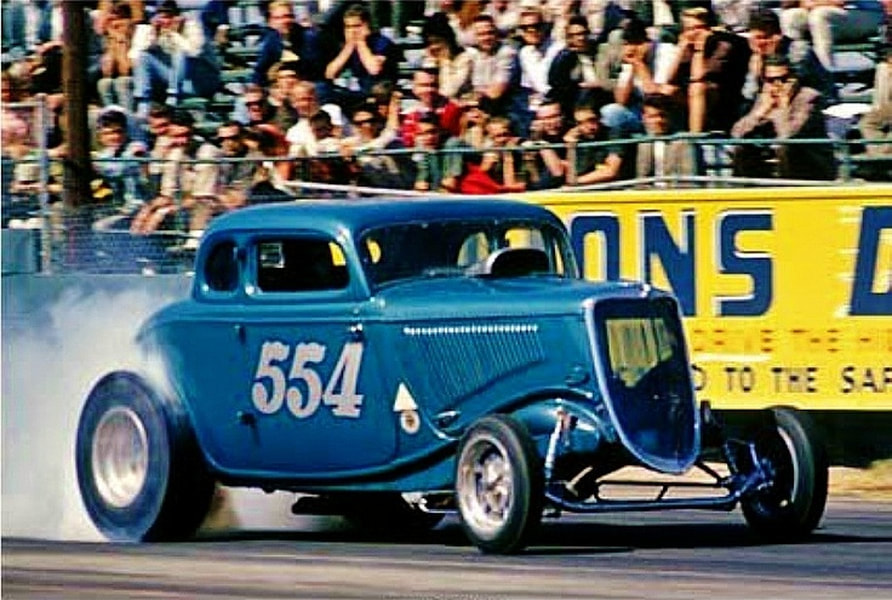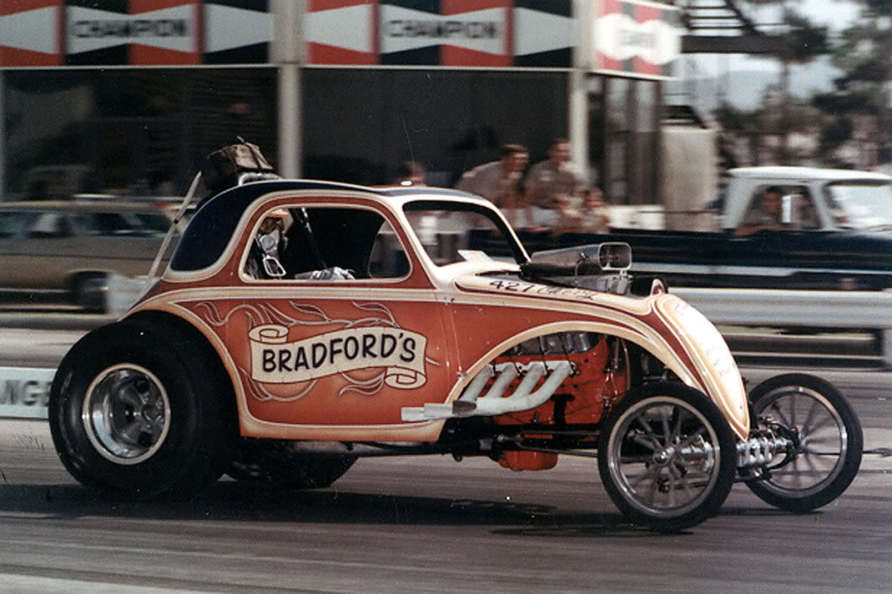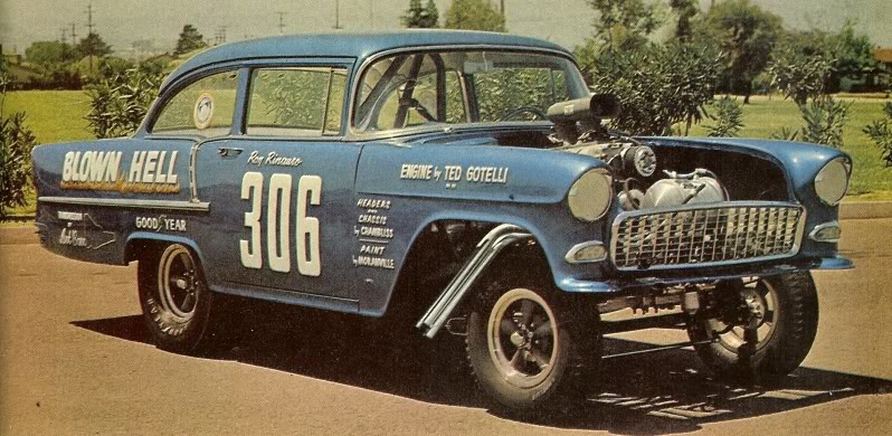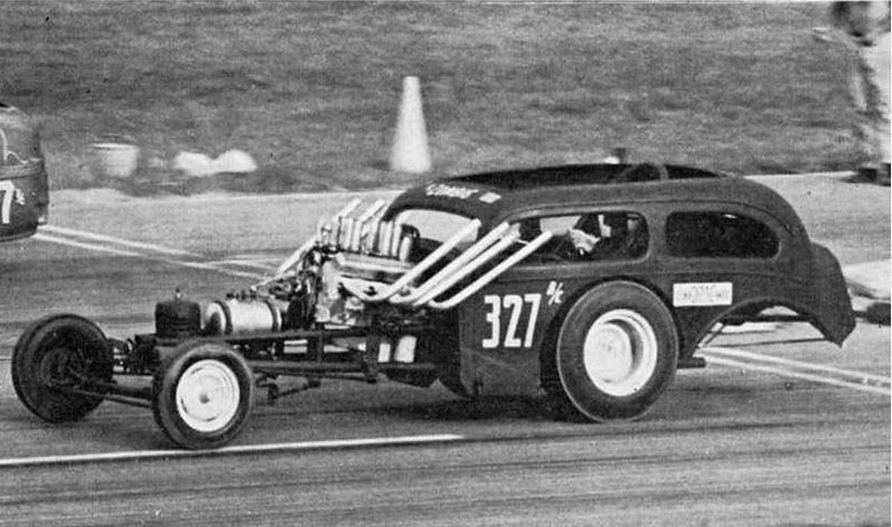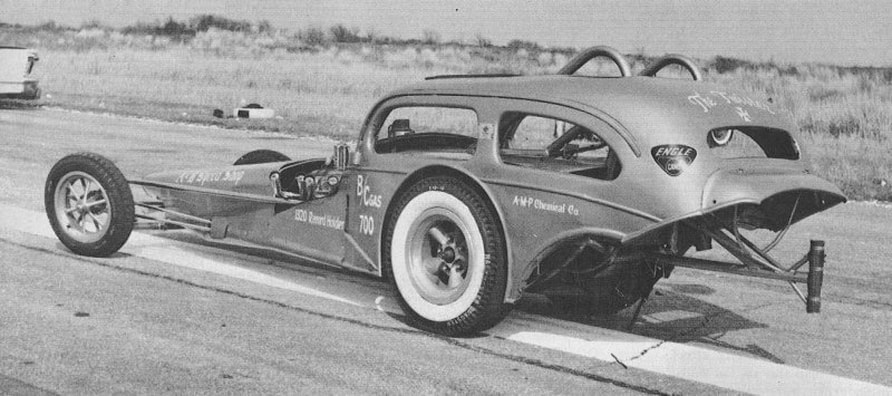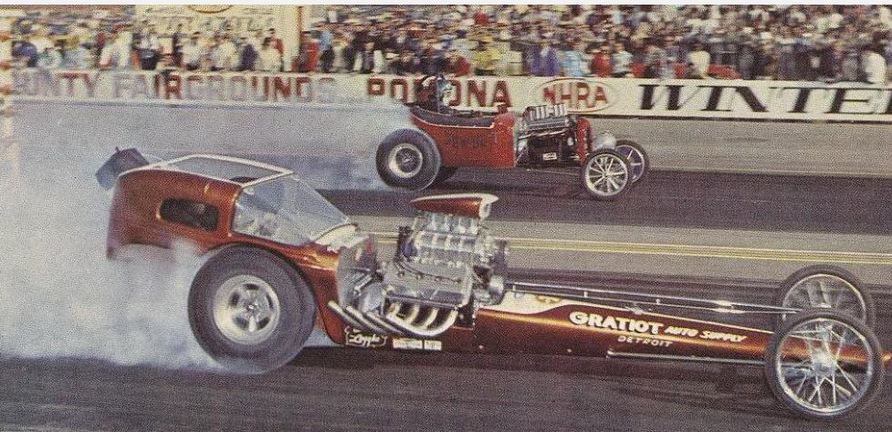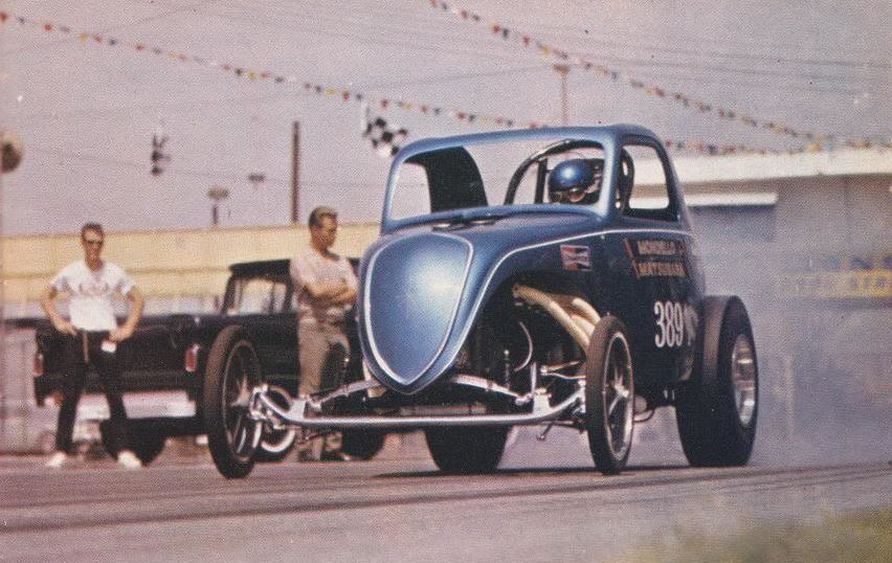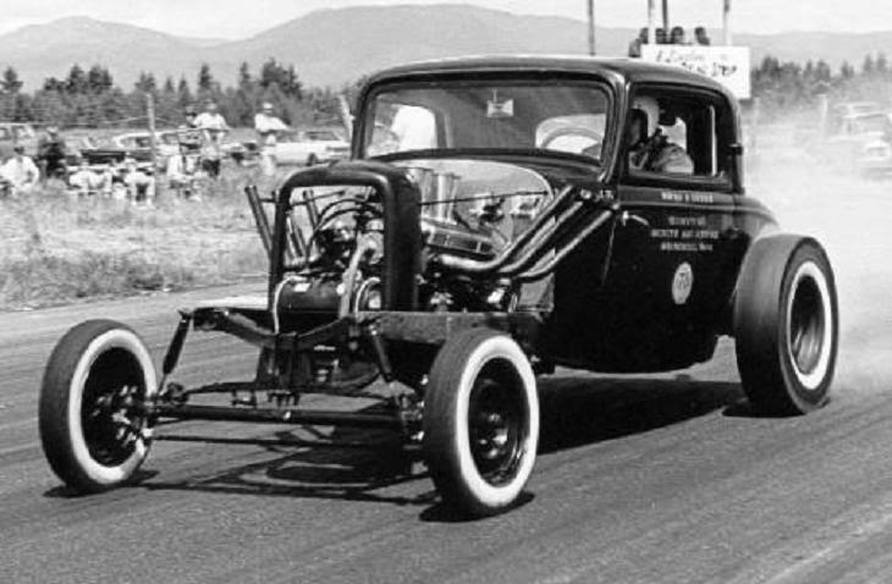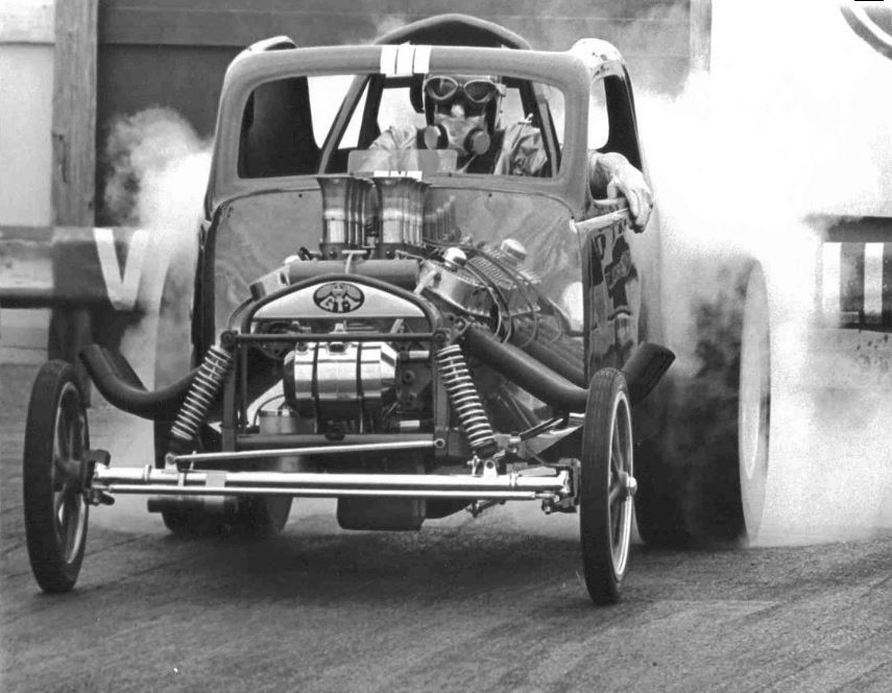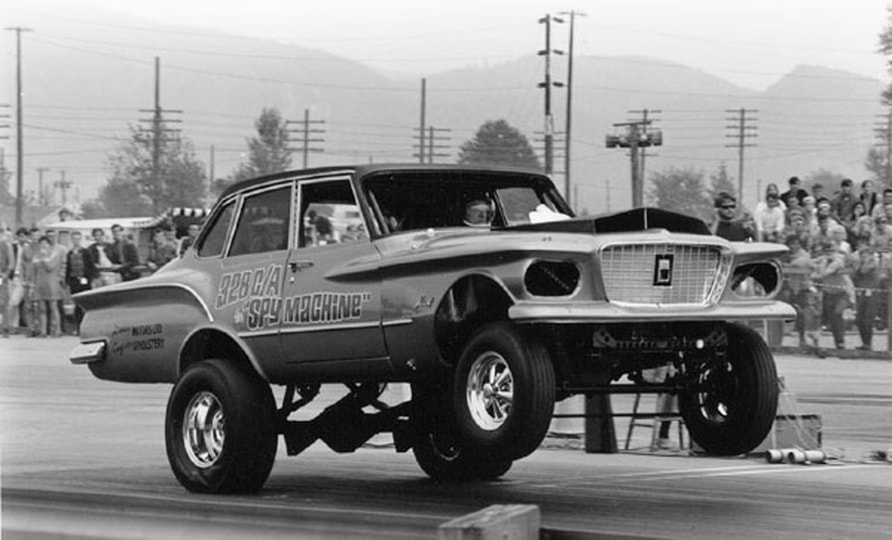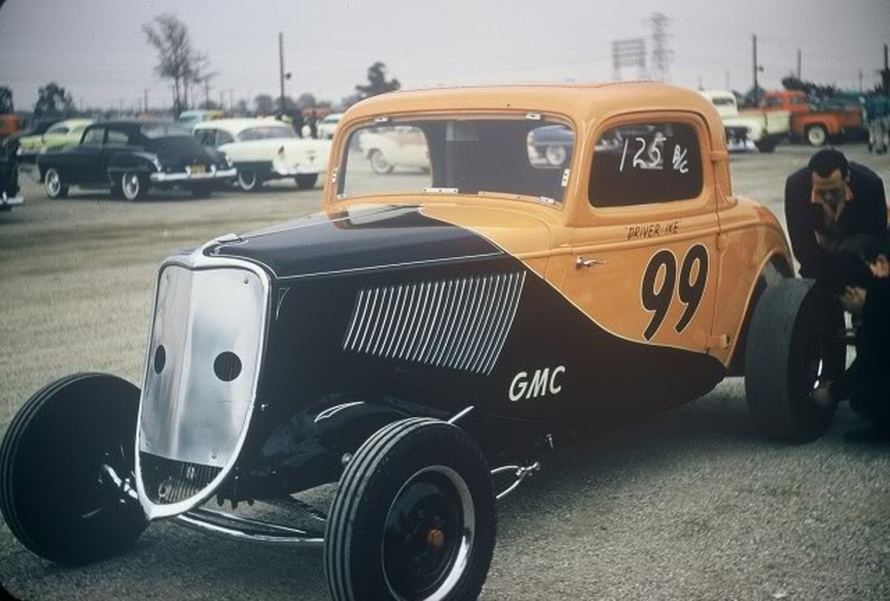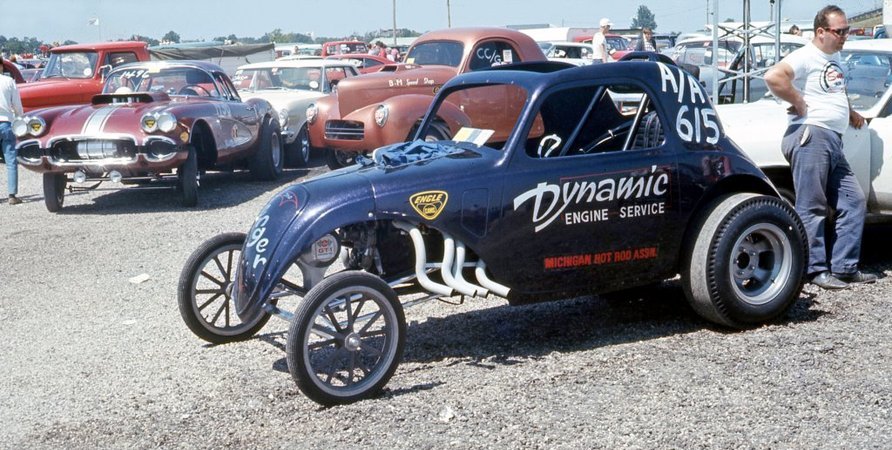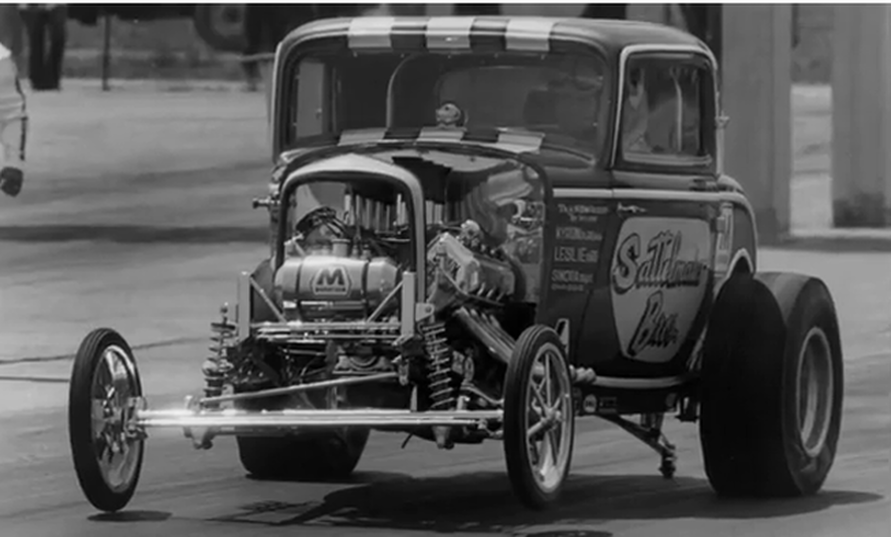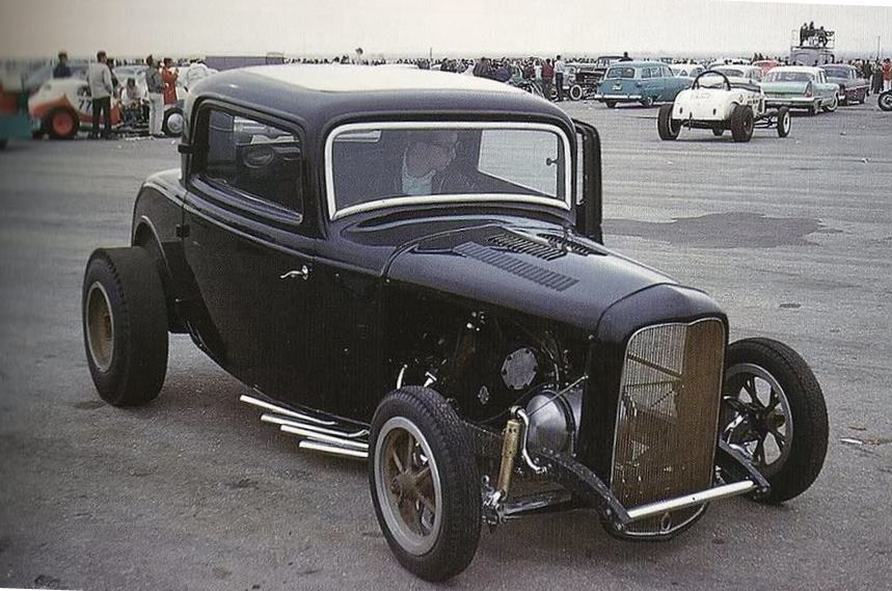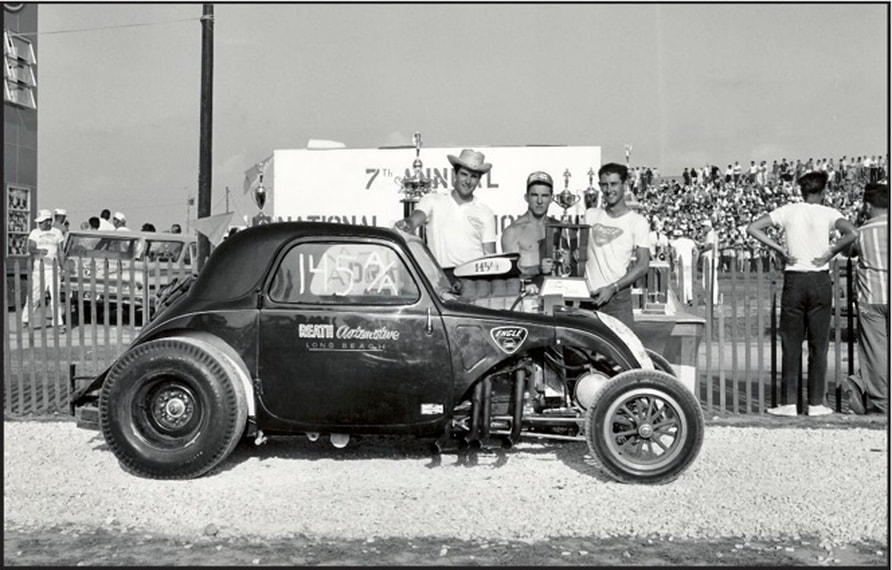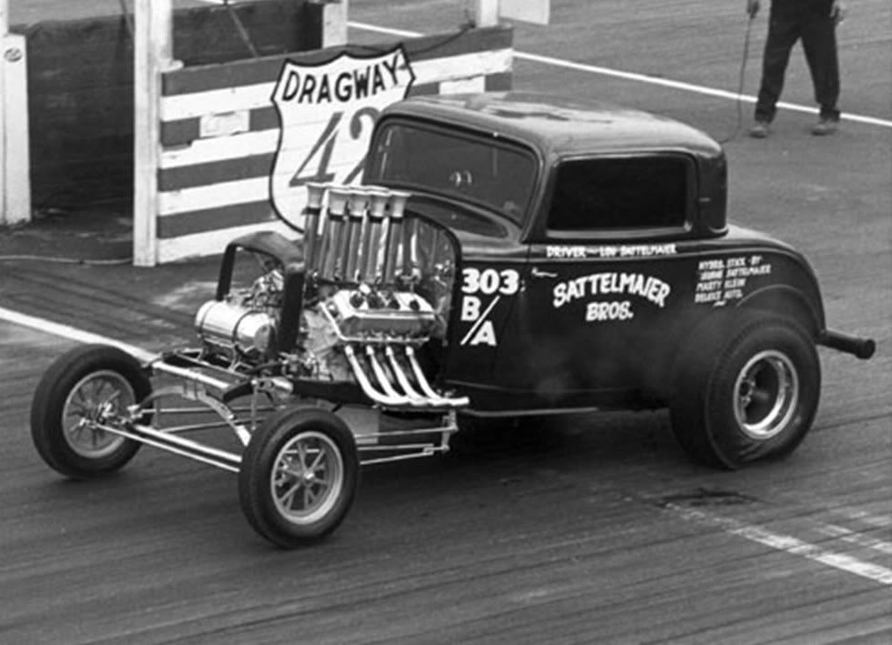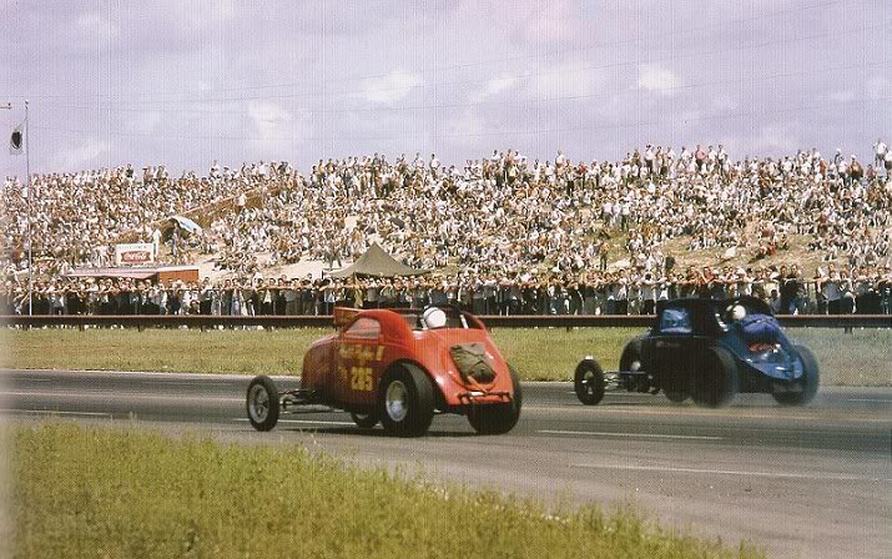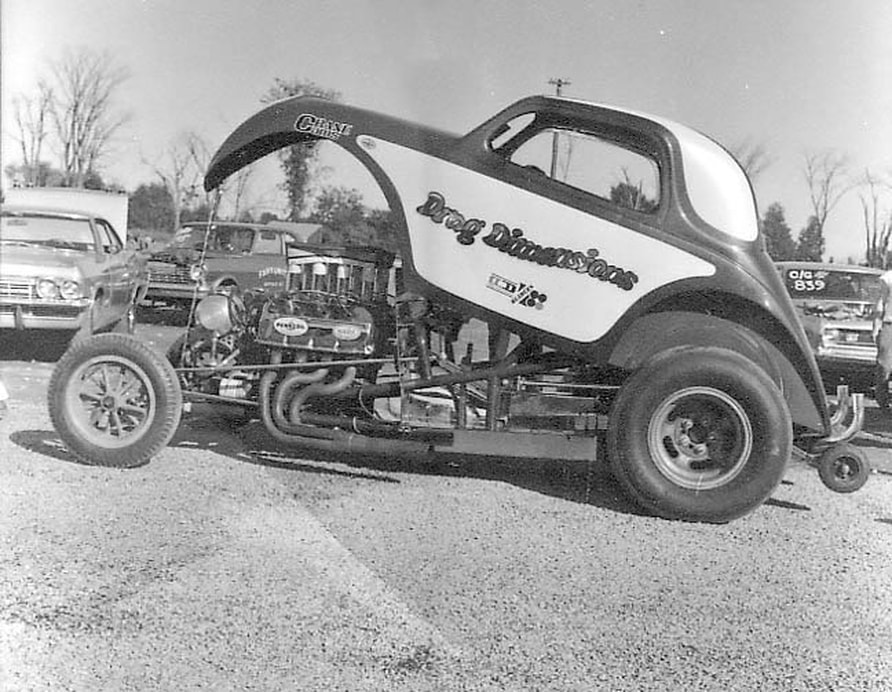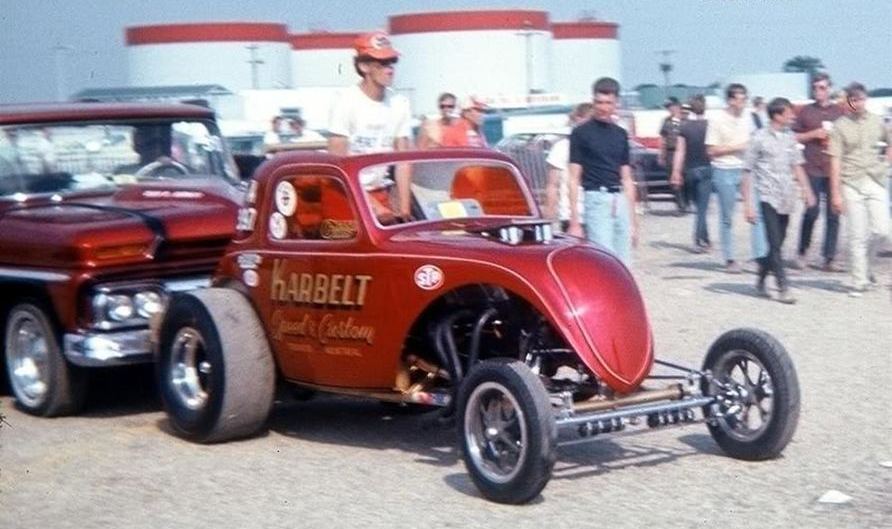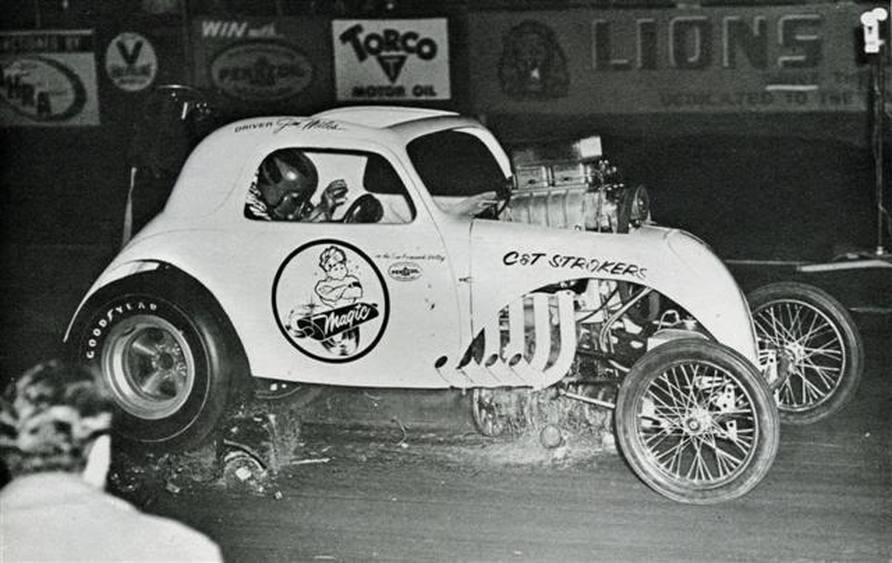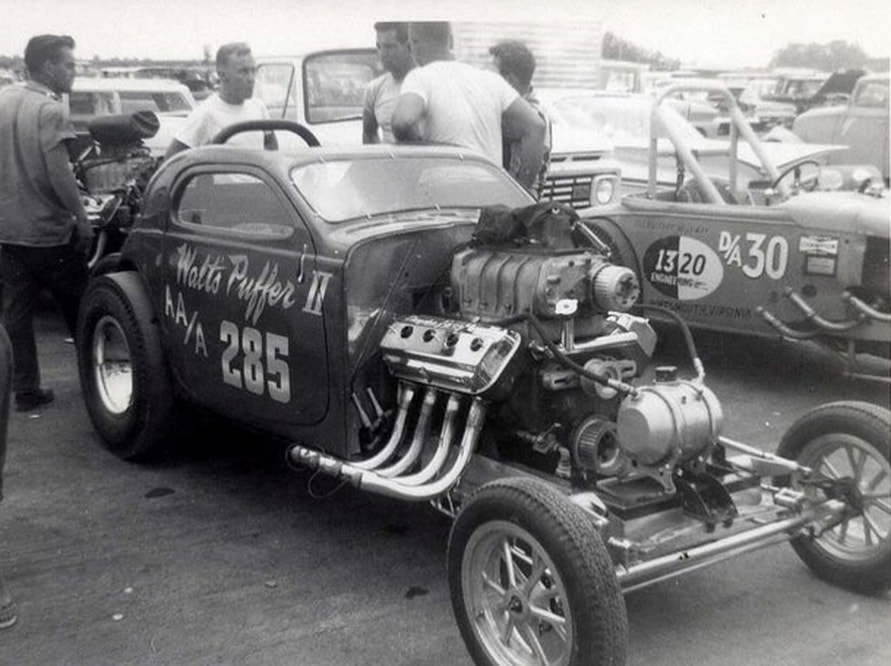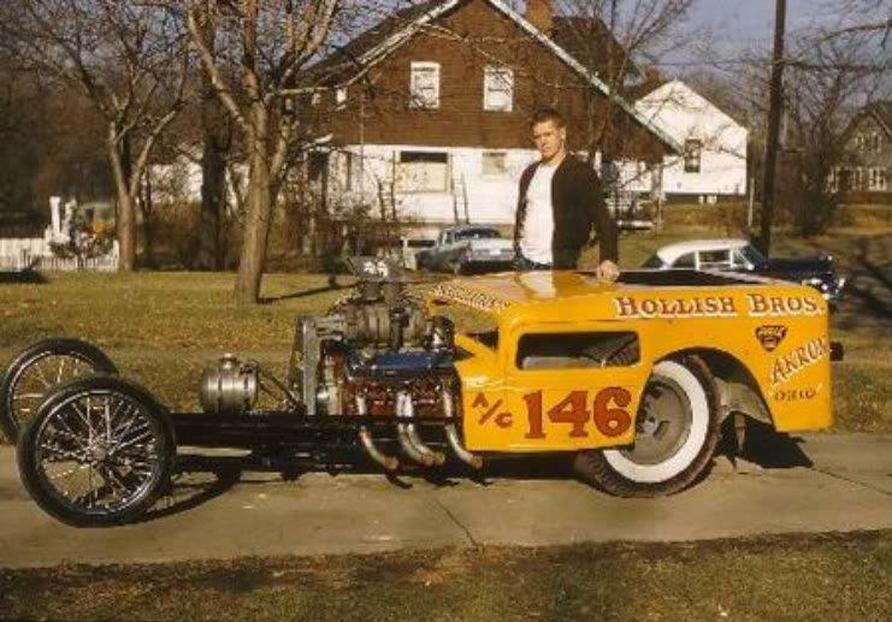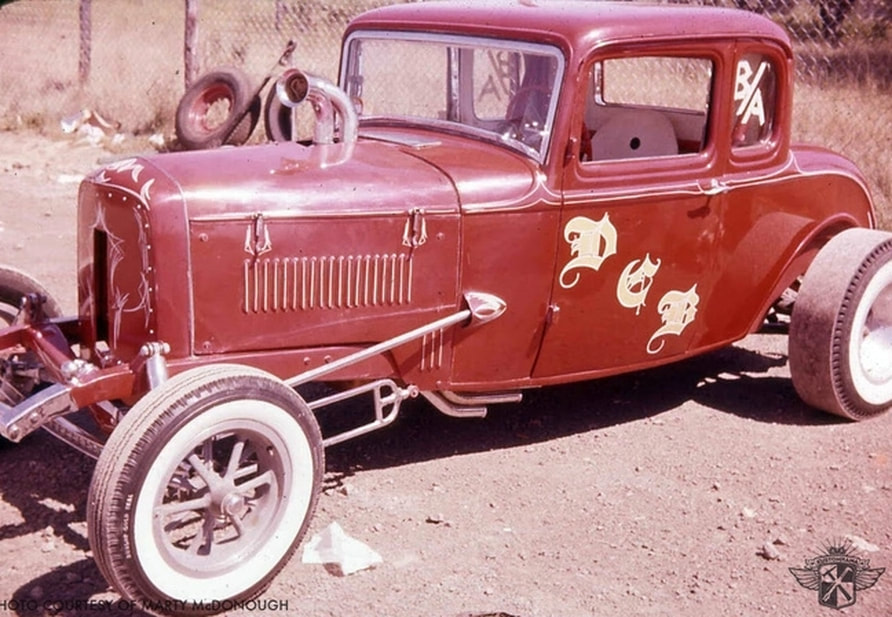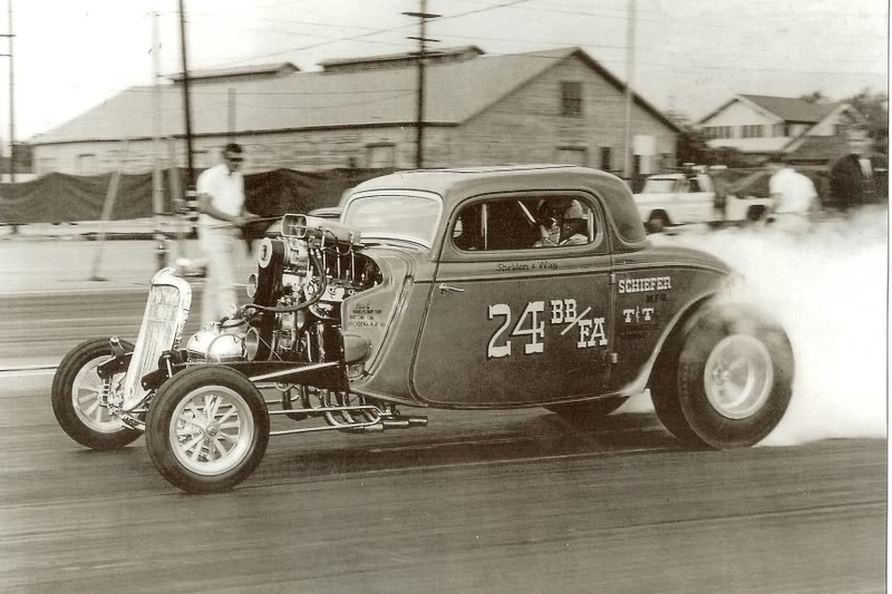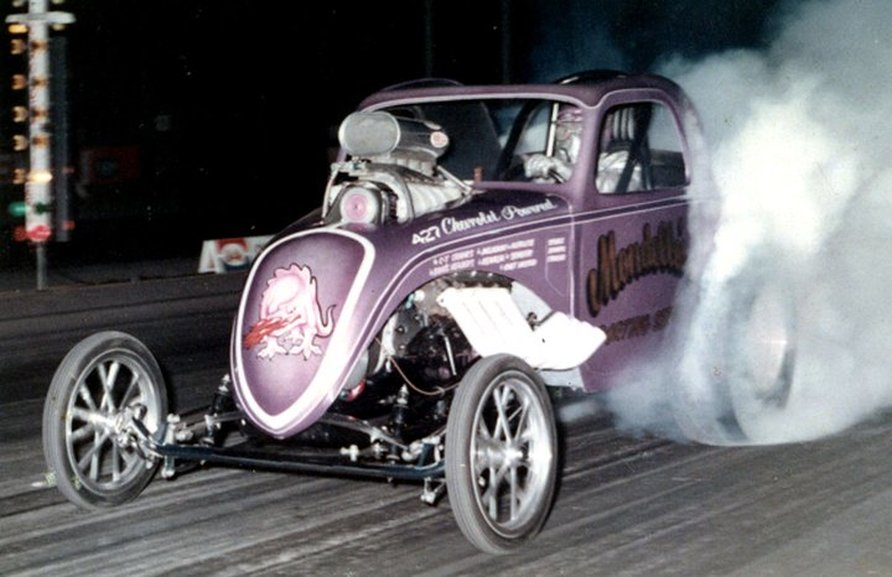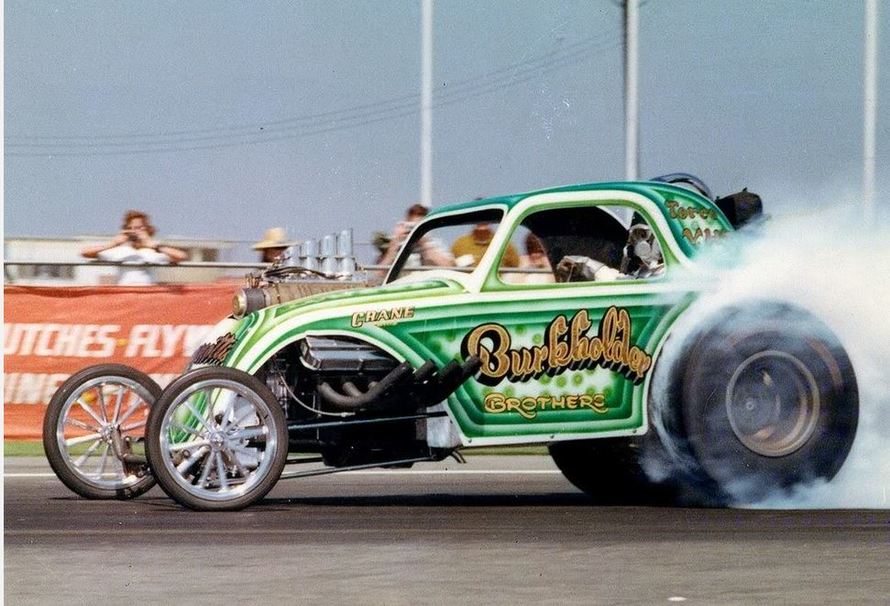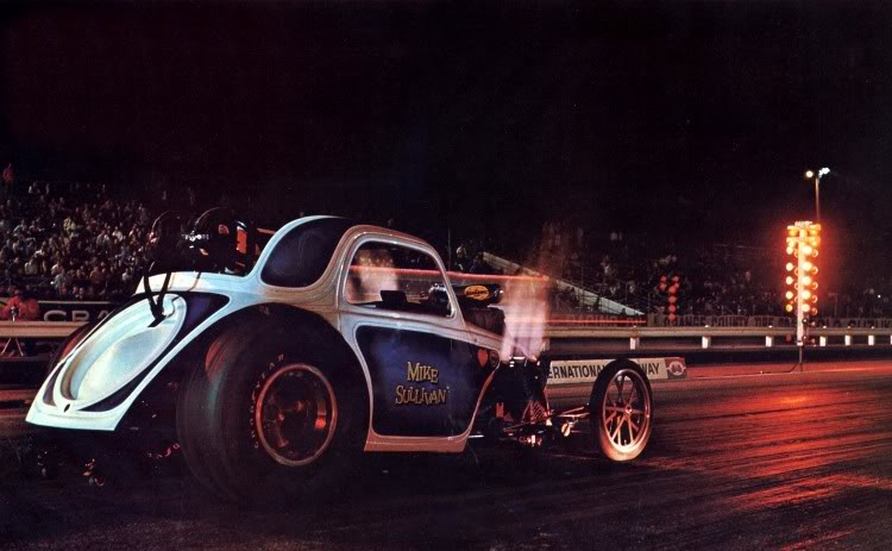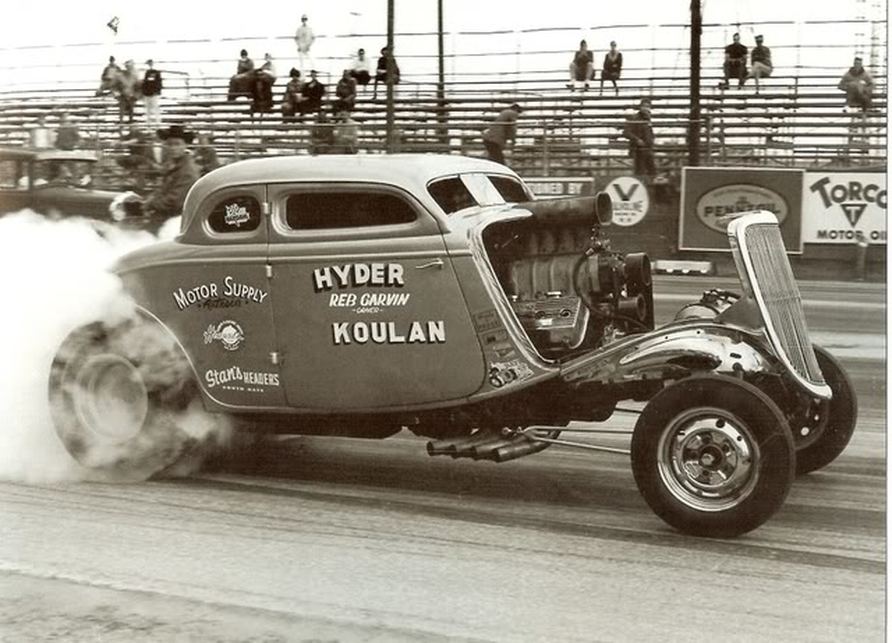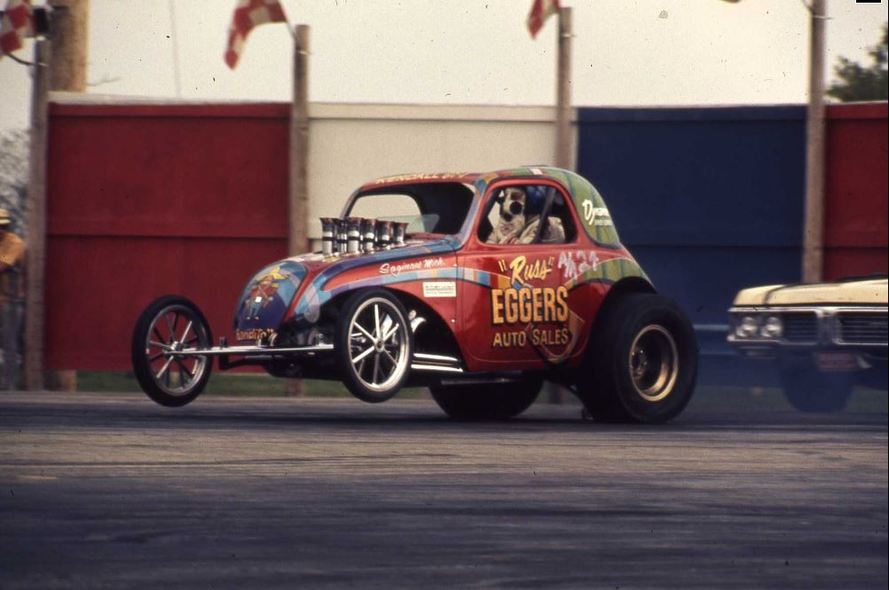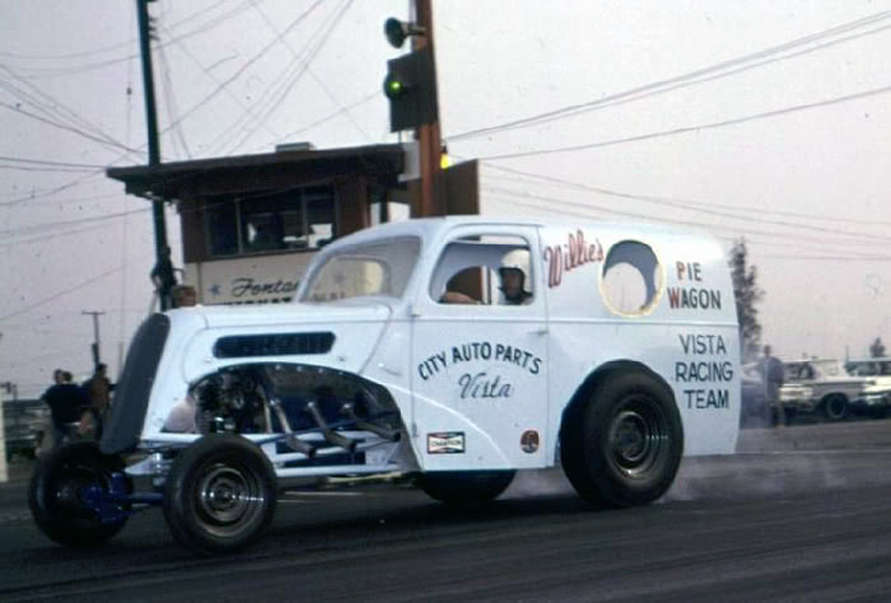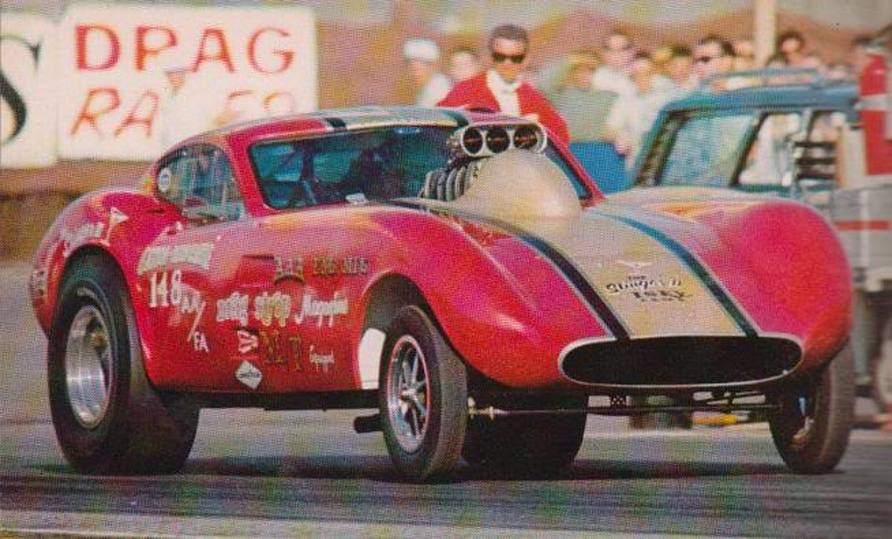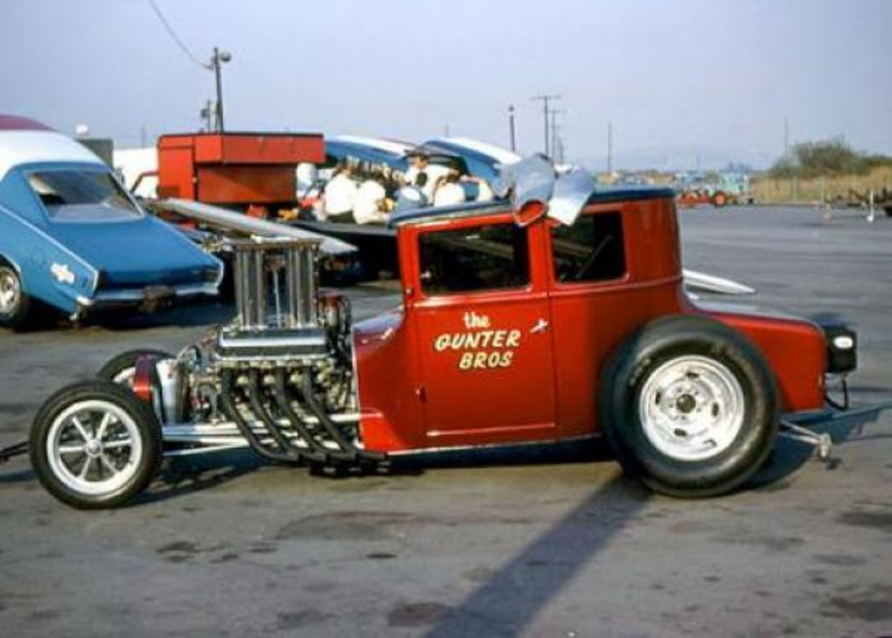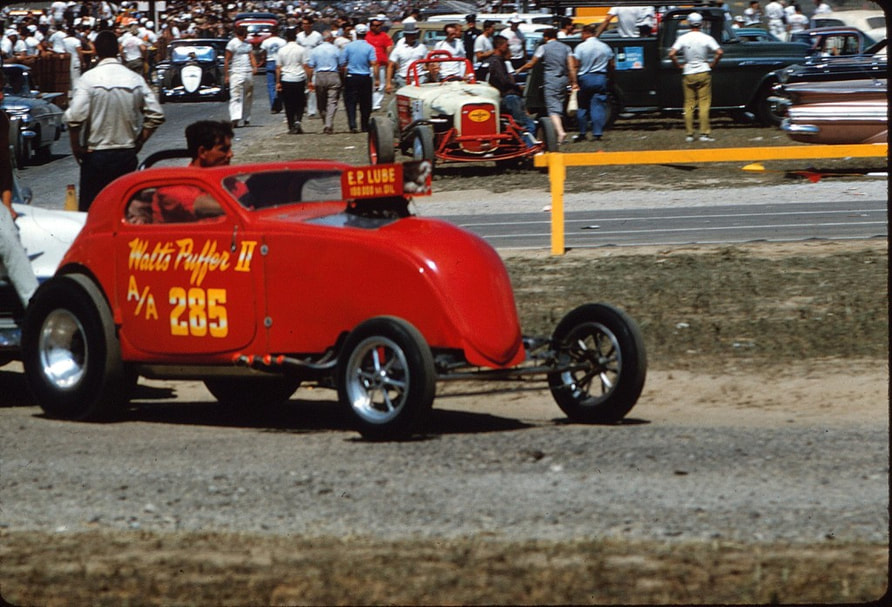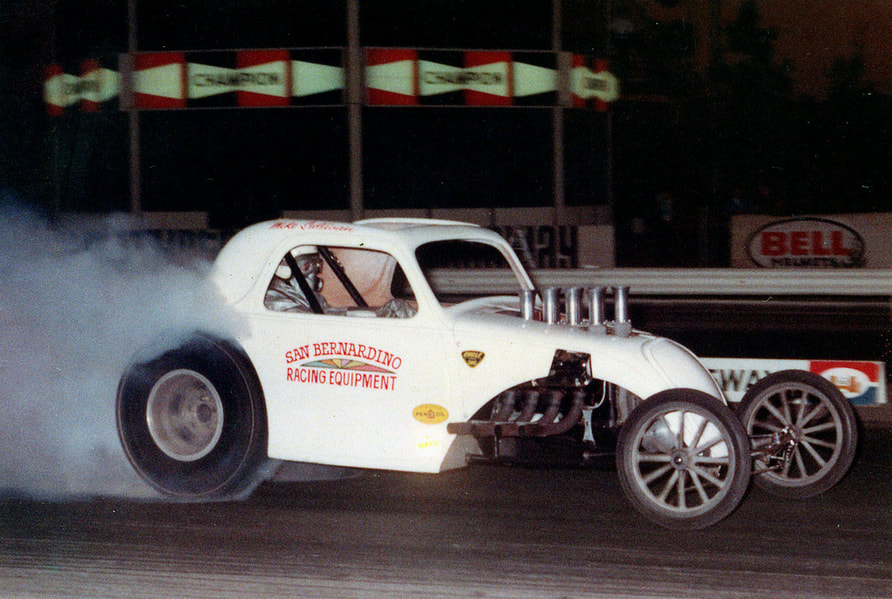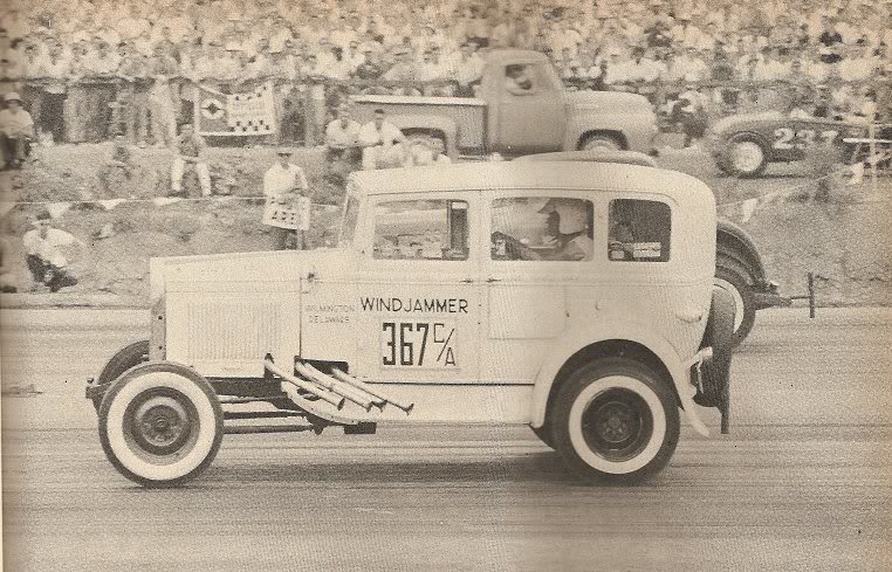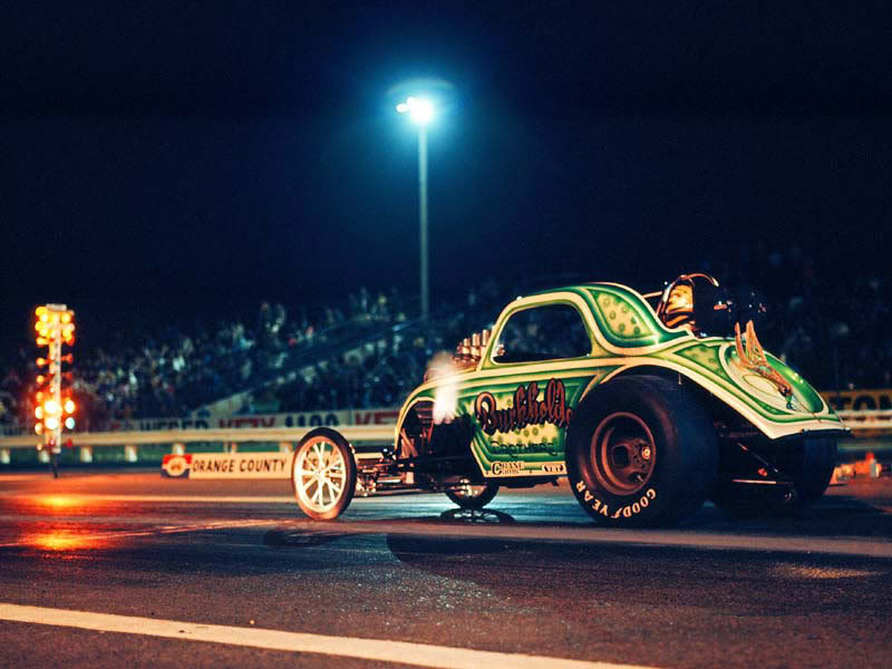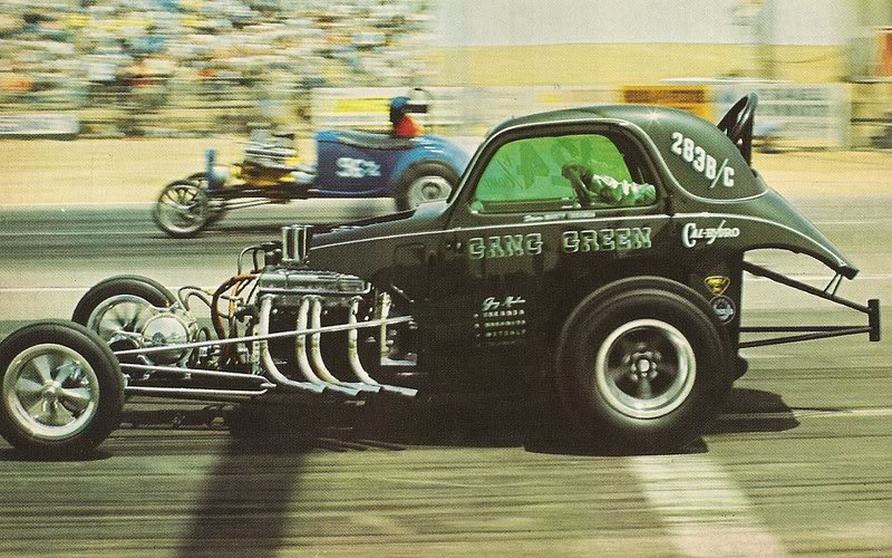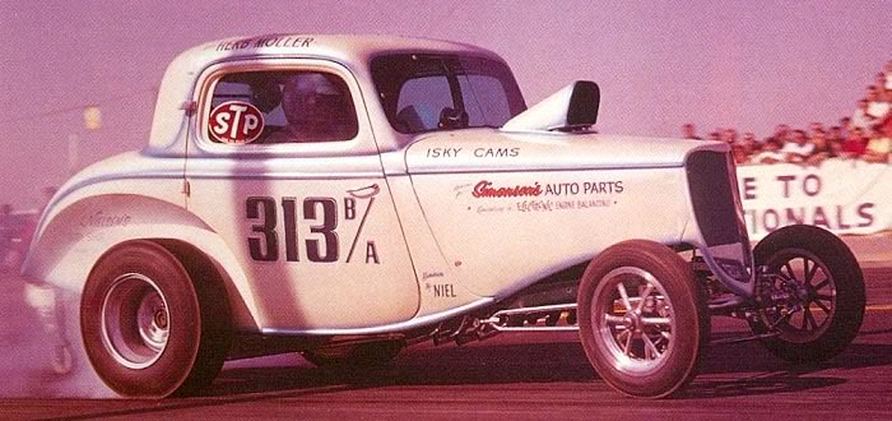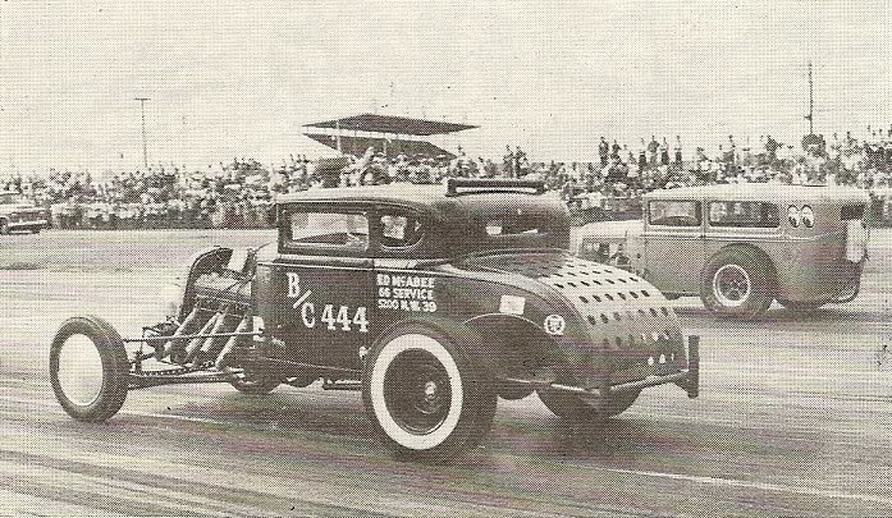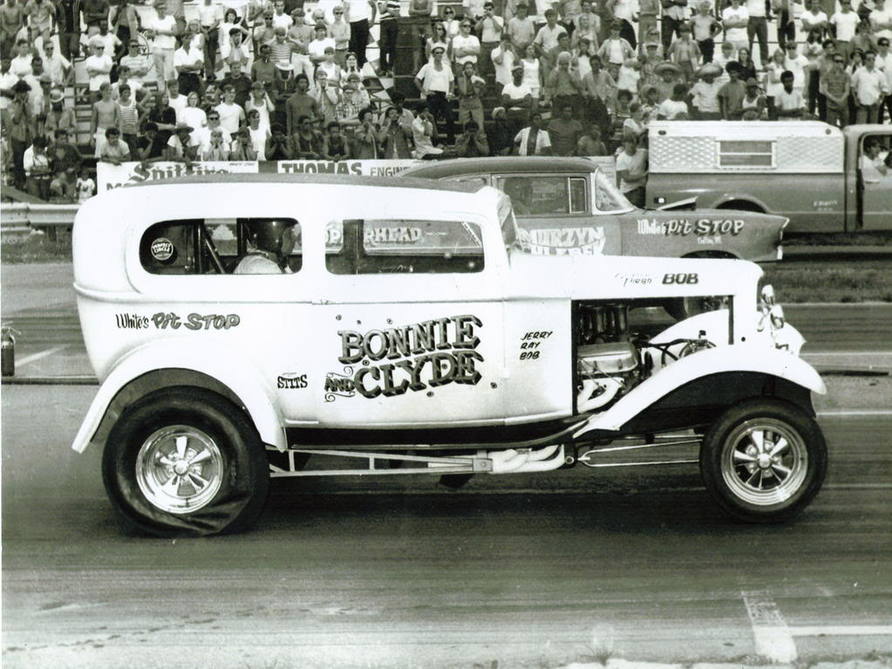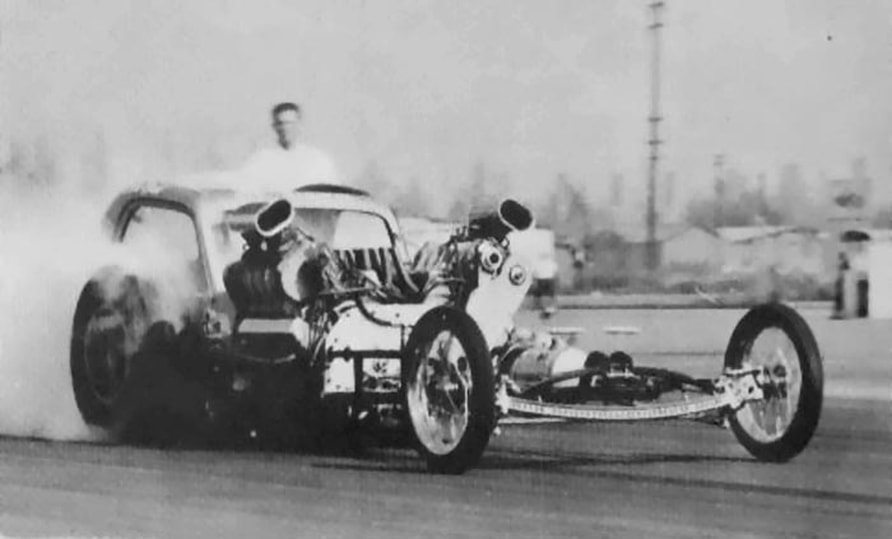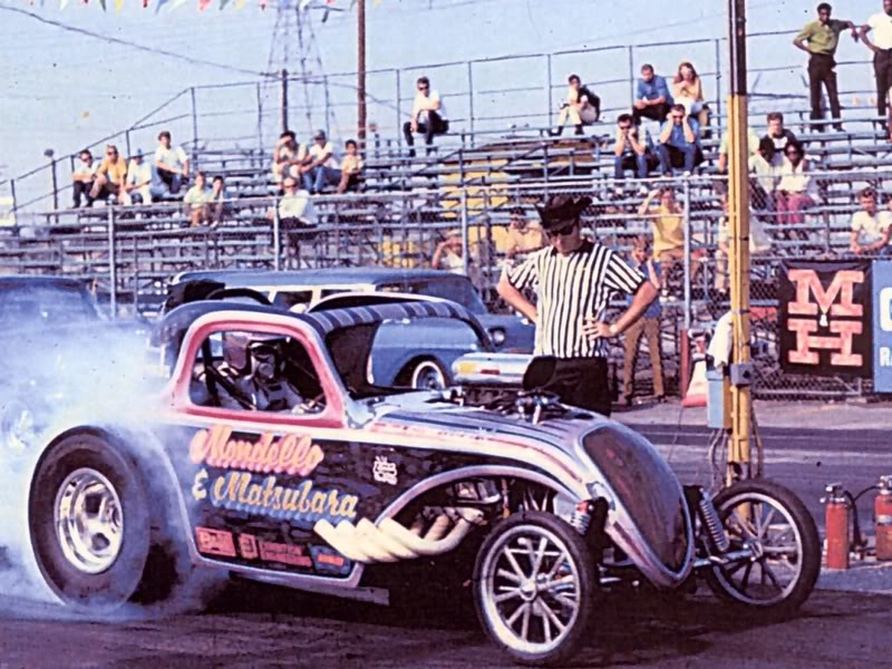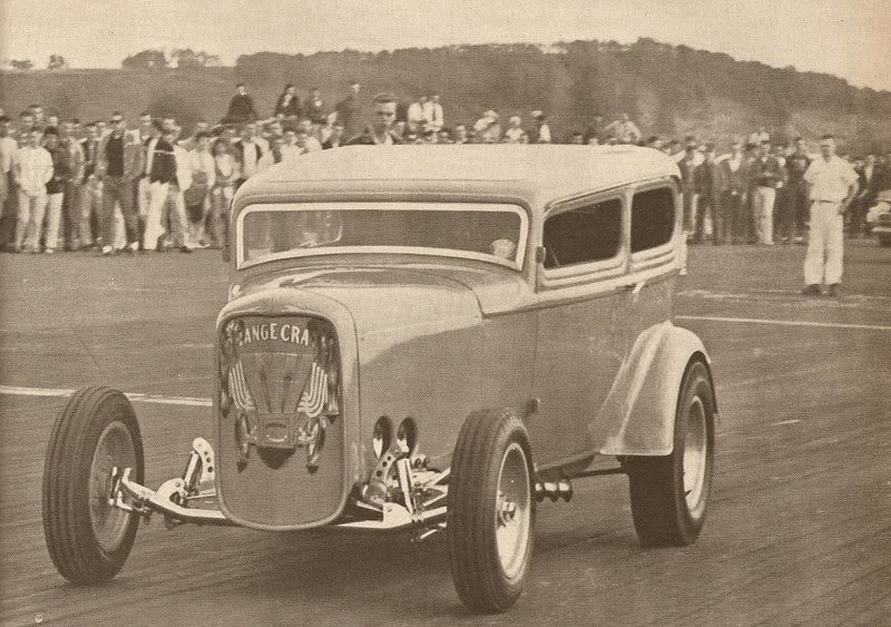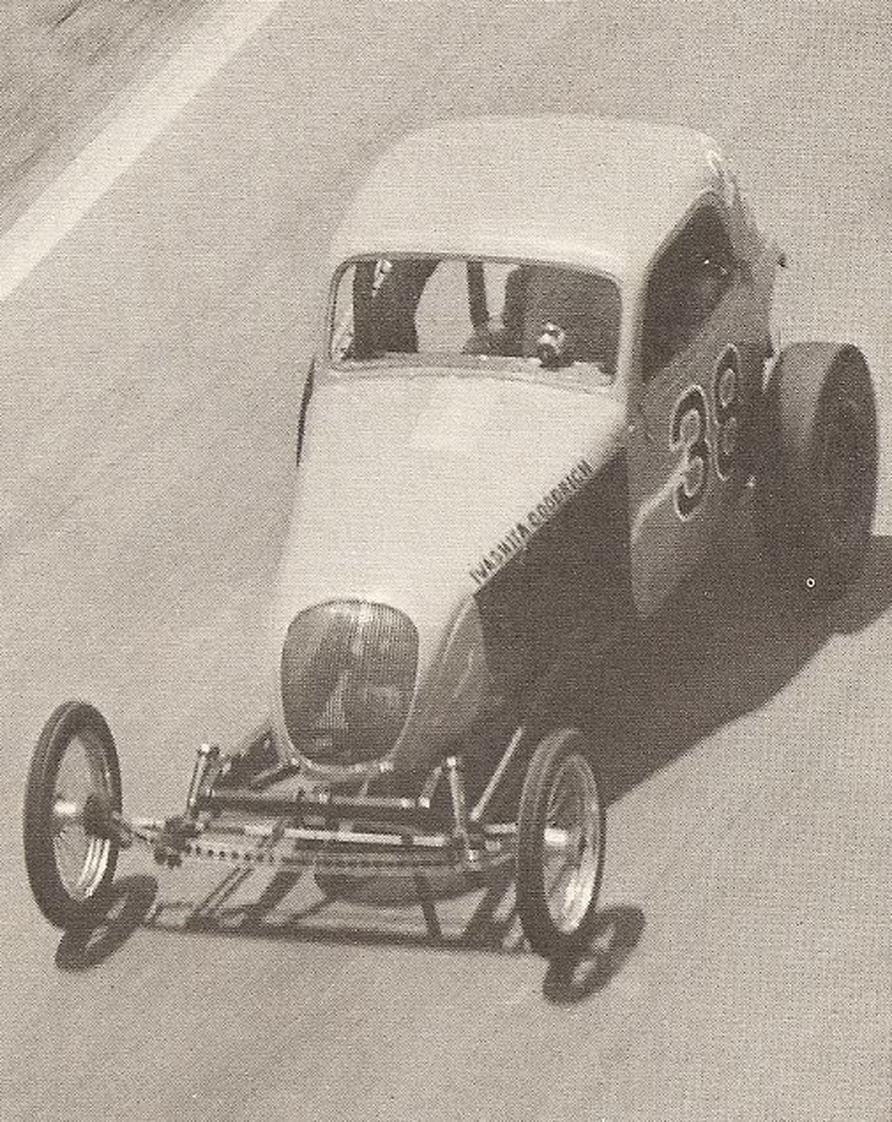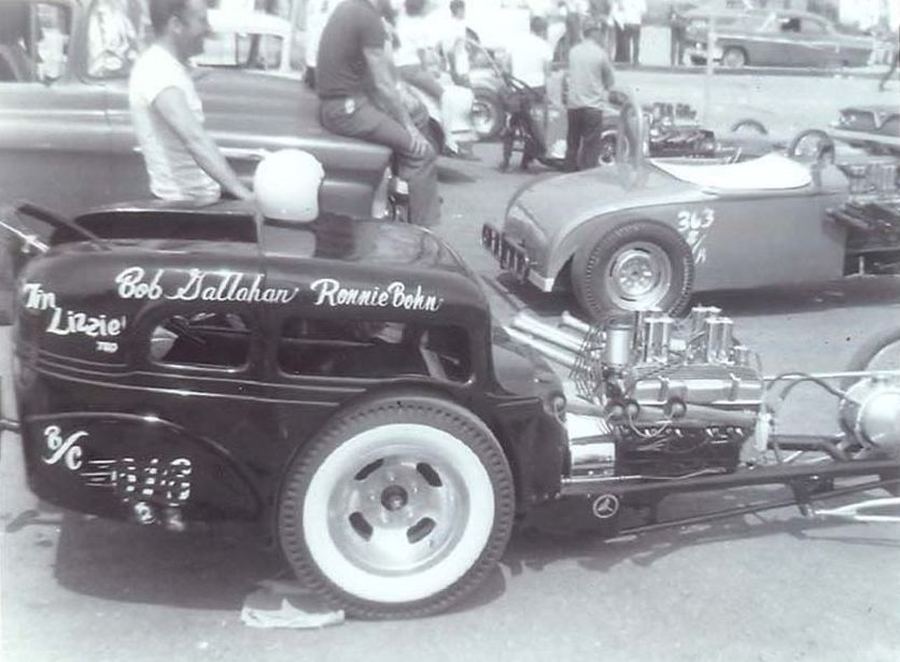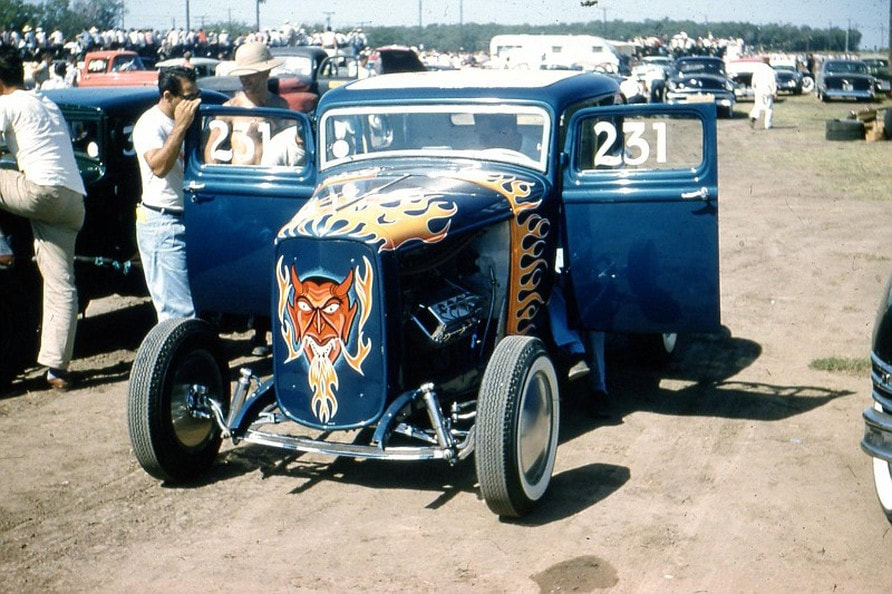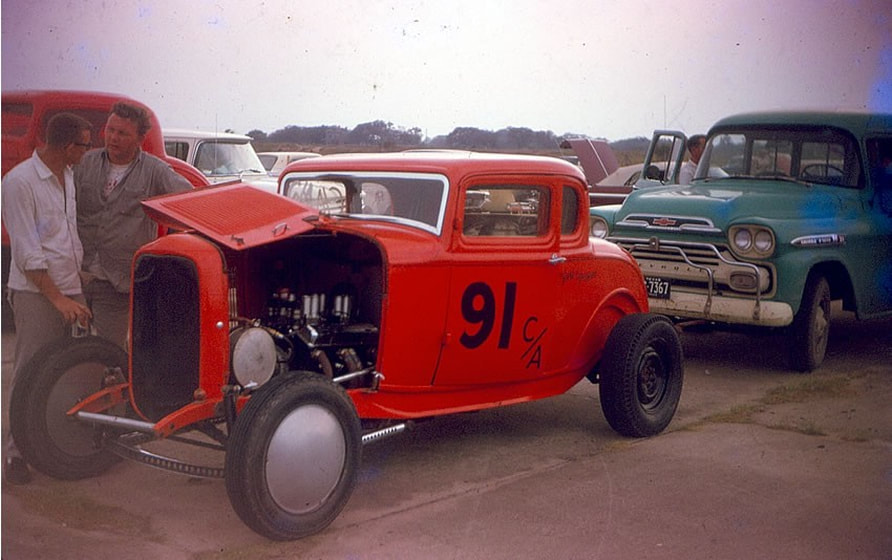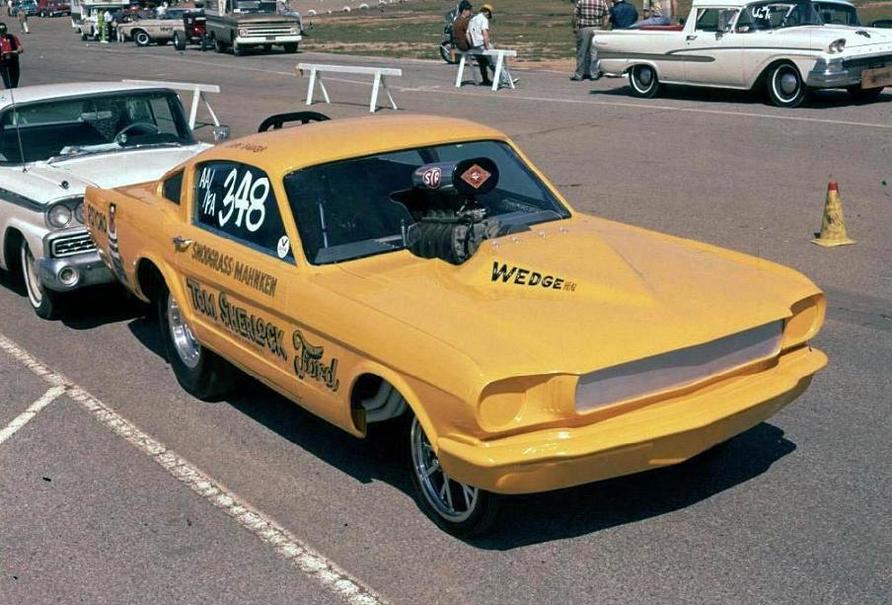ALTERED COUPE/SEDANS & COMPETITION COUPE/SEDANS
Gone forever, one of the nastiest drag racing classes of all time, the Altered Coupes/Sedans & Competition Coupes/Sedans. The baddest of the bad, including the nitro burning Double A Fuel Altereds, rounded off to AA/FA. Folks referred to the AA part as "Awful Awful".
I think there has always been some confusion about the Altered classes. In the Stock Classes, the cars had to be basically stock production vehicles. Although highly modified, the cars still needed to rely on factory produced and available engines, transmissions, chassis, etc. In the Gasser and Sports Car Classes, the vehicles themselves were basically production vehicles with highly modified engines. In the Street Roadster Classes, the vehicles were for all practical purposes, Gassers without roofs. And of course, the Dragster Classes were, well, dragsters. For pretty much everything else, they would typically fit only in the Altered, Competition or Modified Classes. It was not uncommon to see a Gasser or a Match Race F/X type car running in one of the Altered classes. It's also important to remember that Altereds came in both open and closed configurations. For this section, we are going to concentrate on the closed (coupes, sedans, etc.) configurations. The open configurations are shown in the Roadster section.
The term "anything goes" applies to these classes like no other in drag racing, and whether they were running gasoline or nitromethane, they were a sight to see.
I think there has always been some confusion about the Altered classes. In the Stock Classes, the cars had to be basically stock production vehicles. Although highly modified, the cars still needed to rely on factory produced and available engines, transmissions, chassis, etc. In the Gasser and Sports Car Classes, the vehicles themselves were basically production vehicles with highly modified engines. In the Street Roadster Classes, the vehicles were for all practical purposes, Gassers without roofs. And of course, the Dragster Classes were, well, dragsters. For pretty much everything else, they would typically fit only in the Altered, Competition or Modified Classes. It was not uncommon to see a Gasser or a Match Race F/X type car running in one of the Altered classes. It's also important to remember that Altereds came in both open and closed configurations. For this section, we are going to concentrate on the closed (coupes, sedans, etc.) configurations. The open configurations are shown in the Roadster section.
The term "anything goes" applies to these classes like no other in drag racing, and whether they were running gasoline or nitromethane, they were a sight to see.
This 1934 2-door Ford sedan is an Altered. I'm sure that everyone by now understands that almost anything can run in the Altered class. The tow bar tells me this car was not driven to the track The head lights have been discarded, the steering wheel has been moved to the rear so the driver can steer. The engine is a 296 cubic inch flathead (equipped with the overhead valve Ardun cylinder heads). It runs on 100% nitromethane...
A little plastic body and a blown Hemi makes for a nasty Altered...
An NHRA class that is long since gone. The Watson & Roberts Fiat bodied B/Competition Coupe, running an injected Mouse motor. This photo shot during the opening on the New England Dra Strip...
Ah, right out of the 1950's. This is a 1936 Ford 2-door Sedan, running in the Competition Coupe/Sedan Class. I snitched the photo from David Sorenson's fantastic early hot rod Facebook site. "Pre-'55 Period Correct Hot Rods". If you want to know what early hot rodding was all about, this is the place to be, with hundreds and hundreds of photos to see. Get on Facebook, type in Pre-'55 Period Correct Hot Rods. and once you are on, click "media"...
This photo was taken at the NHRA Nationals, held in Oklahoma in 1957. Built for the Altered Class. Pretty neat, eh what?
The Altered Class has always been a "catch all" Class. These two cars are running in the D/Altered Class. Probably could have also raced as Gassers, too...
It says D/Altered on the side window of this sharp Ford Model-A coupe, but I bet it could also run as a Gasser if the racer wanted too...
Can't get much cleaner than this 1932 Ford 2-door sedan. Chevy for power, full moon disks on the wheels, and whitewall tires...
Looks like a mid-1930's Chevy coupe, and yes, it has defiantly been Altered...
This was once a nice little Crosley Coupe. Modifications to it created a slick Competition Coupe for owners Booth & Rosen...
A simple Altered coupe. A stock steel body, sans fenders. Power looks like a Small Block injected Chevy...
Careful, it may bite you...
An early Ford bodied Fuel Altered, with a lot of holes. It must have taken hours and hours to perform this modification. However, these holes offered several benefits. They did lighten the car a little, and they did allow air trapped inside the car or under the fenders an escape route, and they did offer an advantage in minimizing aerodynamic lift...
What became the standard body for many Altereds, the Fiat coupe body also worked on this Competition Coupe...
Almost anything can qualify for the Altered classes. Super Stockers, Gassers, Sports Cars, you name it. The Altered classes are the ultimate catch-all classes. The "Snow Job" above could easily run as a Modified Sports Car if the owner wanted it in that class...
From way "back in the day"", this nasty Altered...
Before the Altered Coupe & Sedan class racers began using the Fiat sized miniature car bodies, they used the full size coupes and sedans that were always available. This one is a Model-A 2-door sedan...
I'm pretty sure that this Competition Coupe is owned and driven by Frank Pedregon, sometimes known as "Flaming Frank". Comp Coupes like this typically ran in the Dragster Class at local events...
A B/Altered 1934 Chevy 3-window coupe, with Chrysler hemi power. If the owner stuck some OEM front fenders on this car, it most likely could run in a Gasser class...
Sims, Duncan, Randall, and McClure, at Colton, 1955. This Crosley bodied coupe ran a 296" flathead at this meet, but the team, out of the Oceanside Oilers, would replace the flathead with an Olds for the '55 NHRA Nationals. The photo is from the SCTA meet that drew a lot of regional drag cars to Colton. (Thanks to David Sorenson for the text)
The thing that attracted me to this photo were the rear tires. Notice how narrow the drag slicks were. In the very early days of drag racing, the majority of drag slicks were actually recaps on regular street tires…
The thing that attracted me to this photo were the rear tires. Notice how narrow the drag slicks were. In the very early days of drag racing, the majority of drag slicks were actually recaps on regular street tires…
A very spiffy Altered Willys pick-up truck, with a shotened bed, a chopped and raked top, and a blonde lady with nice legs squirting some raw fuel into the scoop to get the engine started...
Not your grandmother's go to the market coupe, this 1934 Ford 3-window owned and driven by Jim Miles is running on nitromethane in the A/Fuel class, a class that would soon be known as the Fuel Altered class. This photo was taken at one of the big "Fuel-Gas" events held annually at Bakersfield, CA...
A slick looking Competition Coupe, powered by a supercharged Ford flathead engine, using the Ardun overhead valve cylinder heads...
A couple of Fuel Altereds have at it at during eliminations at Lyons on a Saturday night. Lyons Drag Strip always had a million (it seemed) of cars on the Saturday Drag Races (they usually did not race on Sundays). Qualifying took place all day long. By the time eliminations began, it was starting to get dark. Lions Drag Strip was not an easy track to tame. During qualifying, the track had plenty of bite, but once eliminations got under way in the evening, the mist started coming in from the ocean, which was just down the street. Running a lot of nitro in the evening could actually hurt your ET, as it would go up in tire smoke...
Not your everyday Fuel Altered (meaning it's not a Fiat). A 1934 Ford 2-door sedan. The driver can stretch out in the back seat, and let the Ford flathead under the hood do the work...
The team of Ewell-Stecker and their flathead Altered Coupe. If I'm not mistaken, this may be Jim "Jazzy" Nelson's original Fiat, which took on and defeated many dragsters in it's day...
A all steel '34 Ford coupe running on nitromethane. I was so fortunate to have been alive in the 1950's, to see drag racing in it's infancy...
Dave Deichman's 1934 Ford B/Fuel Sedan (fuel as in nitromethane). Engine is a Mercury Flathead running an Ardun OHV conversion cylinder head. Note the set-back driver's location. It looks like the car just arrived at the track; it still has the tow bar attached, and the towing "street tires" on the back.... (photo by Bob Gunnet)
A spiffy looking Competition Coupe, or in this case, a pick-up truck. I bet that the battery is in the pick-up box in the back. As far as how the driver gets in and out of the cab, there must be a trap door in the top of the cab, doesn't look like the doors have much room to open...
I can usually tell if a photo is a true vintage photo or not. If I see people sitting in the shade under an Ez-Up, it's not very vintage. Not the case with this photo. This has to be in the 1950's. Before the advent of the little Fiat coupes that ultimately became the defacto standard for the Altered classes, the majority of Altereds (both coupes and roadsters) were the early Ford vehicles. On the left we have a Model-T bodied 5-window coupe (1927?), with a radically chopped top. On the right is a Model-A (or 1932) Ford 5-window coupe with the stock, non chopped top, both racing in the B/Altered class...
A street driven Altered sedan? Jack Chrisman's notorious Model-A sedan. Originally powered by a nitromethane fueled Flathead engine, it was later converted to Chrysler Hemi power. I'm just guessing, but this looks like the photo was taken at Pomona Drag Strip...
Gabby Bleeker, from Chicago, and his AA/FA Bantam bodied Altered. Power come from a blown Oldsmobile engine on nitro...
A little maintenance in the pits. Charles McCandless, from Santa Ana, ran this wicked-looking Bantam bodied race car in the Competition Coupe class, seen here at a NHRA National Event in 1958. Well known hot rodder, Doug Hartelt, owned the Chrysler engine, with a Potvin crank-driven supercharger… (Photo by Glenn Ward)
A 1934 5-window Ford Coupe, with just the perfect chopped top. Just stting there, it looks nasty. Having nice big shade trees at your local drag strip can be a blessing in the summer time...
Harry Duncan's super neat chopped and channeled Ford coupe (1932 I think). Race cars like this were kind of considered from the "cross-over era", meaning that they were originally built for dry lake and salt flat racing, and then transitioned into drag cars...
A D/Altered coupe running at a NHRA National Event. I'm not sure if the rear end should have been narrowed, or if the fenders needed to be wider, one or the other...
A 1929 Model-A 2-door sedan with a back seat driver...
The long forgotten Competition Coupe/Sedan Class. Basically a Dragster with an enclosed Sedan body. The body may be from an early Chevy, but that's just a guess. This photo does not look like it was taken at any drag strip that I know of. Looks like an airport landing strip to me. In some places in the country, airport landing strips made for a perfect drag strip when real tracks were in short supply. It was not unusual for the drag races to be paused, until a plane landed or took off...
Before there was a Fuel Altered Class, race cars like this '34 Ford Coupe ran in the A/Fuel class. This photo was taken at Pomona Drag Strip...
A Fiat coupe with an original all steel body, and sharp as a tack. If it had a hood, we could say that under the hood, the power comes from a big Oldsmobile engine with multiple carbs. Or, we could say that the power comes from a big Olds engine with multiple carbs. This Altered was run by Jack Doyle, a member of the Hi-Winders Car Club...
A very rare photo of Sheldon Schmidt's blown Chrysler powered '34 Ford BB/Fuel Altered smoking the hides at Lions Drag Strip. This neat car had an interesting history. Short. The second time out at Pomona, the throttle hung wide open and it went off the end of the track and destroyed itself...
A nasty '34 Ford Altered. The Masters Drag coupe, run by Kirby and Moseley. Dig the cut-a-way front fenders...
Trying to identify the bodies on some of these Altereds or Competition Coupes is not always easy. A friend told me it's an Italian Vespa body. On this Comp Coupe, about all I know about this car is that it's painted bright red. In fact, there's a lot of things painted bright read on this race car...
Of all the bodies used in the Altered Coupe/Sedans and the Competition Coupe/Sedans classes, I'm guessing that the little Italian Fiat Topolino was by far the most popular...
From the Los Angeles Harbor area, San Pedro, another super neat '34 Ford Coupe...
There is just something about an Altered coupe. A stock Model-A body, orange tinted plexi-glass windows, and an injected Chevy engine. Perfect...
Calling this car an "Altered" is putting it mildly. I'm not sure what this car was when it was new, maybe a '36 Ford, I don't know...
A stock body, fenderless 3-window coupe, probably a 1933-1934 Ford. What caught my attenion was the rear brake light and license plate. Maybe the owner drove in on the street, too...
This car goes back aways. Belmont "Beach Ball" Sanchez's Bantam bodied Competition Coupe. Sanchez was a legendary early hot rodder in SoCal, raced his cars on the Dry Lakes, Bonneville and at the drag strips. This car may have run at all three at one time or the other. Sanchez became famous when he set records at the Salt Flats, being the first to use a 1953 Studebaker, with it's swoopy (and areodynamic) body lines. Photo by Norm Gruden, and posted online by David Sorenson...
According to my friend David Sorenson, this Fiat Coupe is owned and driven by Johnny Burrell from Birmingham, Alabama. He ran in A/Competition Coupe using a Chrysler engine with a McCulloch supercharger. Note that the wheelbase has been stretched for better handling, and the front tires have whitewalls on both the inside and the outside of the tires. You don't see that every day...
A Competition Coupe powered by an injected Chrysler Hemi. What's left of the original Bantam coupe is tacked on the the back of this race car. What caught my eye on this photo was the Cadillac ambulance behind the the race car. "Back in the Day", old Caddy ambulances were sought after by drag racers, they made great tow vehicles. they had a powerful engine and a LOT of room in the back for spare parts, and room to lay out your sleeping bag if you were going to hang out in the pits overnight...
An interesting photo of a nice injected Chevy powered Fiat Altered. It gives you a perspective of really how small the body was, compared to the guy in the driver's seat. There are three important things to remember if you ever have a chance to drive one of these things. (1) Short wheelbase cars are notoriously poor handling cars, and if you get out of shape near the top end, you could easily tangle with one of those old fashioned guard rails, or if there were no guard rails, a light pole or a tree or a tree stump, or the guy in the other lane. And (2), if you hit something hard enough to put a dent in the steel body, there was a good chance that it would put a dent in you. And (3), if the car had a plastic body (as in a fiberglass replica, like the photo above), it would most likely put more than just a dent in you...
A 5-window Model-A coupe with a carburetor equipped Chevy engine. There is an old adage that states that chrome plating does nothing to increase your top speed or lower your ET. In fact, spending money on "cosmetics" instead of purchasing more speed equipment or lighter weight parts can do just the opposite. This photo was taken at the old Niagara Airport Drag Strip, in New York, around 1961. Mike Williams of Sandy Hook, CT filled me in on the '29 Model-A closed cab pick-up in the background. A fully street legal hot rod, owned by Stan "Pete" Faruga from Eden, NY, running in B/Gas that day, powered by a 301-inch Chevy...
As far as the "who", the "what" and the "where". I can only address the "what". It is a Model-T, 2-door sedan, with an radically chopped top. The rear window looks like it's about the size of the slot in a mail box, and right below that is his Car Club Plaque...
The Competition Coupe that thought it was a dragster. And why not, this nitro burning coupe usually ran in the Dragster class, and whipped many of them in route to the finish line. The owner/driver of this beast was "Flaming" Frank Pedregon, a "never lift" driver if there ever was one. Why "Flaming"? Frank would smoke the tires all the way down the track, and many times they got so hot they burst into flames, as they did in this photo...
If this nasty looking coupe looks familiar, it should be. It was built and raced by Jim "Jazzy" Nelson and at one time, was a threat not only as an Altered, but also racing in the Top Eliminator class. Jazzy eventually sold the car to Bill and Jack Stecker, and I believe that Jack Ewell was also involved in the program. The Stecker Brothers raced with a flathead engine (shown in the photo) and also a supercharged 271 cubic inch Dodge "Red Ram" hemi. Based on this photo, the dragster in the other lane is going to have to play catch up if they want to move up to the next round... ( I stole this photo off of my friend Manuel Maldonado's Facebook page)
A couple of cars leaving the starting line at Santa Ana Drag Strip in the early 1950's. Although this was before NHRA created the Altered class, there is no question that these two race cars have been "altered". It looks like the "locked" rear end on the car on the right became "un-locked", as in broke, and as to the sedan with the flame job on the left, I have no clue about the "letter box" size windshield...
Drag racing in the early days was not just about the cars, it was about the entire experience. Starters today press a button with their thumb. In the 1950's, starters needed to have athletic ability...
"The Tank". A 1929 Model-A 2-door sedan, with a chopped top and a supercharged engine, probably a small block Chevy...
Another example of an "Altered" built prior to the Altered Class being created. AF refers to a "A Fuel" coupe. Light weight material for race cars had not been developed yet, which is why holes were drilled in the stock frame. The holes in the back of the fenders was for aerodynamics. Air trapped inside the fenders created aerodynamic drag, and so the holes gave the air an area to escape. Later in the evolution of the class, racers realized that the best way to keep air from collecting inside the fenders, was to remove the fenders...
A 1935 Ford Coupe, powered by a fuel burning Dodge V8 engine. Technically, it's not correct to call this car an Altered, as the Class Name had not been invented yet (early 1950's). It's an A/Fuel coupe, and owned by Russ Palmer...
Harry Duncan's '34 Ford 3-window coupe pulling up to the starting line at Colton Drag Strip. If it looks a little like a Dry Lakes or a Bonneville car, it probably is. Change the gears in the rear end for 1/4 mile work, add some drag slicks, and it becomes a drag car...
Powers & Riley's well proportioned A/Altered Coupe. The body is (was) a Crosley...
A couple of Altered Coupes, in every meaning of the term. And the starter in his "flagman stance"...
With the poularity of the small Italian Fiat coupe body, some racers thought about using the small German VW "bug" body. On paper, it seemed like a good body to use in building an Altered drag car. But as the speeds of these cars started going up and up, the rounded top on the VW caused the cars to became ill handling. The air flow over the roof acted like the air flowing over the top of an airplane wing, causing the car to "fly" (or lifting the rear of the car off the track surface). Today, we call that "aerodynamic lift". This racer mitigated that problem by drilling hundreds of holes on the rear sloping area of the roof line...
The little Crosley 2-door sedan looks great as an Altered. I think it's the big blown engine and the larger wheels and tires that give it that "look". I say larger wheels and tires because the original wheels and tires that came with this car were not much larger than the wheels and tires on the little red "Radio Flyer" wagon I used to pull around the neighborhood when I was 6-years old...
There is no doubt in my mind that this neat truck is an Altered. It says so, right there on the door. There is no doubt in my mind that it could probably run in the one of the Gasser classes too. Might even be legal for the street with a different exhaust system. That's the beauty of the Altered classes, almost anything could compete in one of the Altered classes. Now, about the engine in this neat little truck. It looks like it's a small block Chevy, with a Latham Axial Flow Supercharger. I bet that most of you have never heard of that brand, but they were actually pretty popular in the 1950's (do your own Google search)...
This ultra sanitary 1934 Ford Coupe, owned by Jerry Dilbeck, has been "altered and modified"...
This 1934 Ford Coupe, owned by Bill Coburn, has been DRASTICALLY "altered and modified". You pay your money and you make your choices...
What a great scene, a cloud covered sky, the ground still damp from an early shower, and guys standing around BSing with each other in the pits because there was nothing else going on. The 1929 Model-A Sedan is nice to look at too. In fact, it's real nice to look at...
An interesting Fiat Altered Coupe. It looks like it still has the original steel body but that tube frame was not original equipment. They used square tubing on this one, and get a load of the drastically lightened front axle. It was owned by Peter Lodge and built by Peter and his brother in law, Alan Smail. It was the first supercharged 392 Chrysler Hemi to run in new Zealand, and held the New Zealand speed and ET record in the early days. The short Fiat wheelbase made it a handful to race. It's a legendary car in New Zealand, and has been restored and appears from time to time, but they have yet to find someone brave enough to stand on the throttle very hard... (Thanks to Steve Gibbs for passing along a note from Garth Hogan, a well known drag racer from New Zealand)
They must have called the Competition Coupes to the lanes. The silver car on the right was owned by Jerry Card. He ran an auto repair shop in El Cerrito, CA...
The Altered Coupe/Sedan catagory. This would be the "sedan", as good of an example is there has ever been in my opinion. Every part of this car says "race car", even if it features a padded top usually seen on show cars...
This photo tells it all, the fans at Lions standing up, many with their fingers in their ears, as a couple of supercharged Fiat bodied Altered Coupes pull up to the line...
If someone ever decided to take a clean sheet of paper, and design the "perfect" body for the Altered Coupe/Sedan class, I can assure you that it would most likely look exactly like a Fiat Coupe...
Holy Moly Capt. Marvel. Some times the neatest looking Altereds were Alterdes that didn't look like Altereds. The very neat holes punched in the tin were not drilled to reduce the car's weight, they were drilled to allow air to escape from under the fenders and inside the car as it goes down the track. The car is a very clean Willys 4-door sedan, all steel, with the driver sitting in the back seat, and with tail lights and a license plate. I'm guessing it has a 283-inch Chevy installed in there somewhere. This is probably a "club car", in which all the members of this hot rod club (the Outlaws, from Santa Ana, in Orange County, CA) chipped in...
A 1934 Ford Coupe with a chopped top, and a 301-inch small block Chevy to make it go...
As a kid in High School, I used to work for Henry J. Kaiser at his estate up at Lake Tahoe, during summer vacations. I think that Henry (I never called him Henry when I worked for him, it was always Mr. Kaiser or Sir.) would have liked watching his Henry J.'s drag racing in the Gasser Classes. But whether he would have loved this radically modified Henry J. Altered, I'm not so sure...
The little Crosley Station Wagon, always a good choice for an Altered Coupe/Sedan class race car. No problem getting the driver's seat to the rear of the car and still leaving room for a big engine. This one is powered by an Oldsmobile engine...
Wow, this is going back to the 1950's. This chopped top coupe was sponsored by one of the best known speed shops in the country, Champion Speed Shop out of the San Francisco Bay area. Note the use of dual rear tires, to gain a traction advantage...
A 1934 Ford coupe running in the C/Altered class making a pass at Pomona. But wait, where's the driver? If this car had come with a back seat from the factory (which it didn't), that's where the driver (Jerry Dilbeck) is seated. Everything in this car has been moved toward the rear, the engine, the driver, and of course, the steering system. Note that the location of the steering link interferes with opening the driver's door, but there's always the door on the passenger side...
I should know this Competition Coupe, but the name escapes me. I think it may be the Lakewood Auto Parts "Missfire" but I can't be sure. If any of you "senior citizens" out there can help me on this one, please jump in...
This is like a Norman Rockwell painting (in black and white) for a senior citizen like myself. What I wouldn't give to be able to go back in time and wander around in a dirt pit and look at cars like the ones in this photo. This looks like it was a pretty big event, based on the crowd in the stands in the background...
A nasty looking Chrysler powered 5-window coupe. Note how the body has been "channeled" (lowered) over the frame. Also note how the doors have been modified so that the bottom of the doors are even with the new location of the floor boards. These kinds of modifications used to be called "Hot Rodding"...
One of the best things about having this website are all the photos and stories that people send me. I received this photo the other day from Al Bino, at least, that's the name he used in his email. I'm going to let Al tell the story:
"In the 1960's, my father, brother and I ran this 1931 Model-A Ford coupe. It ran as A/A, B/A, and as a B/Comp. Initially, it was powered by a Packard V-8 engine with four carbs. My father made the intake manifold, I think from a Nash driveshaft. It looked like a Crower U-Fab manifold. Bruce Crower ground the camshaft. The best I ever ran with the Packard engine was 12.10 at 115.53 MPH. After a serious clutch explosion, my old man pulled the Packard engine and installed a 354 cubic inch Chrysler. We shredded transmission,s, tires and axles. With my father driving and the Chrysler engine installed, the car managed a smokey 11.85 at 121 MPH. Great times."
"In the 1960's, my father, brother and I ran this 1931 Model-A Ford coupe. It ran as A/A, B/A, and as a B/Comp. Initially, it was powered by a Packard V-8 engine with four carbs. My father made the intake manifold, I think from a Nash driveshaft. It looked like a Crower U-Fab manifold. Bruce Crower ground the camshaft. The best I ever ran with the Packard engine was 12.10 at 115.53 MPH. After a serious clutch explosion, my old man pulled the Packard engine and installed a 354 cubic inch Chrysler. We shredded transmission,s, tires and axles. With my father driving and the Chrysler engine installed, the car managed a smokey 11.85 at 121 MPH. Great times."
There's a lot going on in this photo. In the center is "The Duke", a 5-window Ford coupe running in the C/Altered class and on the left, a maroon colored sprint car turned dragster, and the guy on the right working on what appears to be a blue hemi powered dragster. On the extreme left, and out of view in this photo, is most likely a big breasted lady in a halter top, which is why all the guys in this photo are looking in that direction. If the black '56 Chevy in the background was brand new on the day this photo was taken, it would have been 62 years ago...
The Walker Brothers (Jim and Bill) and their 1929 chopped Model-A sedan. Power comes from a 296-inch Flathead. This was a pretty hot Altered at the time. Despite the hub caps, you can be sure that this was no street car... (Thanks to David Sorenson for the info.)
Gene Adams' "Lil Red Rocket" Competiton Coupe. Yes, I can see that the all steel Fiat is blue, but the sponsors logo was a red rocket. This car put driver Leonard Harris on the map. Power came from Gene's supercharged Oldsmobile engine. This car was a very strong runner and it led to Gene and Leonard teaming up (along with the sponsor, Albertson Olds) on a dragster, with the same engine that was in the coupe. And that led to Leonard Harris winning the NHRA Nationals in 1960 and then winning 18 top eliminator races at Lions Drag Strip (with 12 of those events in a row)...
A neat thing about the Altered classes is that it didn't matter much as to what kind of body you had on your car. This B/Altered is definitely not a "me too" kind of a car. Race cars with Nash Metropolitan bodies were few and far between on the drag strips...
The term "channeling" means that the body did not actually sit on the frame like it did when it came from the factory, it was lowered over the frame and then reattached to the frame. It gave the vehicle a "lowered" look, like what you see on this 1934 Ford Coupe. Power is provided by an FE Ford engine, which could have been anything from 332 cubic inches up to 427 cubic inches from the factory. This racer saved some money on light weight body parts, by just removing the stock parts and not replacing them with anything...
This perfectly proportioned Model-A sedan looks real mean, with it's dark paint and chrome wheels. Plenty of leg room in the back for the driver, too...
A Competition Coupe of the first magnitude. Looks like this racer used an early Ford pick-up truck body, although there's not much left of it. Notice the size of the parachute pack on this car. Before companies started turning out 'chutes especially designed for drag cars, racers used old surplus military stuff from Army-Navy stores...
I posted this photo not because there was anything particular exceptional about this clean Fiat Altered, but because of the size of the "drag strip". Okay, it's not a drag strip, it's an aircraft landing strip, somewhere in the middle of nowhere. You might be surprised at how many landing strips and / or aircraft taxi strips were used as drag strips on the weekends in the early days (as in Santa Ana Drag Strip, a small airport in Orange County, which eventually became John Wayne Airport). Very few actual drag strips were built from scratch in the 1950's or even into the early 1960's. Fortunately, people that managed smaller airports around the nation allowed local organizations the use of their facilities (usually for money or a piece of the action of course). There were very rarely any place for the spectators to sit, usually had to be satisfied squatting in the weeds, like these guys did...
Another Sunday at "the Pond", San Fernando Raceway. Magic Mufller's blown hemi Fiat Altered storms off the line on another quarter mile run. If it was not a perfect run at this track, the driver would have his hands full. On his left were hay bales stacked up up against a chain link fence. If you went off to the left, and after you went through the hay bales and the fence, there was a 30-foot drop into a flood control channel.
On the right, at least you didn't have any fear about the guard rails. There weren't any. All you would do is to crash into the cars on the return road. And if by chance you could keep the car on the track, there was the shut-off area full of boulders and a very low highway bridge...
On the right, at least you didn't have any fear about the guard rails. There weren't any. All you would do is to crash into the cars on the return road. And if by chance you could keep the car on the track, there was the shut-off area full of boulders and a very low highway bridge...
Nothing too exotic about this Chrysler powered Competition coupe. The intake manifold was what was called a "U-Fab". It consisted of a couple of flanges that bolted to the cylinder heads and some pre-cut tubing, and required the racer to weld it together himself. They would accept either six carbs (as shown on this car) or eight carbs, racers choice. Looks like this team had matching uniforms (or sweaters)...
Other than possibly the cylinder heads on the flathead Ford engine, there is not a single aftermarket light weight part on this Fiat Coupe. The reason, of course, was that light weight race car components did not exist at the time. Steel parts was the order of the day, although this racer did what he could to cut into the excess weight. The frame is drilled, as is the front axle, tie rods and even the front frame cross member. If you have ever used a hole saw to cut holes in a piece of steel, you know how long it must have taken this racer to accomplish his task...
I love this car, I'm a sucker for plenty of chrome plated parts. The question is, is this a coupe or a roadster? Flathead Ford power under the hood (the only light weight body part from what I can tell) on this Model T body. An "Altered" in every sense of the word...
A nice little Chevy II coupe, running in the C/Altered class. Judging by the sign on the trunk lid (Car in Tow), this baby was most likely towed to and from the track with a tow-bar. So, here's a question; how many of you out there have ever owned an Altered? I'm going to bet that not many answered in the affirmative. The truth is that if you ever owned a hopped-up car, of any kind, coupe, sedan or a roadster, you once owned an Altered. The reason I say this is that almost anything that was NOT a dragster, was eligible to compete in the Altered class. I have seen Super Stockers, Gassers, street roadsters, just your everyday car that you drive to work or to school, running in the Altered classes at your local drag strip on any given Sunday. Anyone that thinks that to be an Altered you needed to have a Fiat Coupe or a '32 Ford sedan with a chopped top and a blown Chrysler under the hood is seriously mistaken. The Altered classes were the "catch-all" classes at the drag strip, anything goes.
Look at the Chevy II in the photo, a simple car with a 283-inch V8 under the hood and a set of drag slicks. Thousands of guys back in the '60's had cars like this. So, let me ask again; have you ever owned an Altered? And your answer could have been,"Yes, but I never chose to enter it in an Altered Class at the drag strip"...
Look at the Chevy II in the photo, a simple car with a 283-inch V8 under the hood and a set of drag slicks. Thousands of guys back in the '60's had cars like this. So, let me ask again; have you ever owned an Altered? And your answer could have been,"Yes, but I never chose to enter it in an Altered Class at the drag strip"...
One thing that never changes, an open wheel Altered 1929 Model-A sedan always looks mean...
Boogie Scott, out of New Orleans, LA, and his Altered Coupe. Supercharged Olds for power. Note the chain drive blower, eventually made illegal for safety reasons by the NHRA...
There are Competition Coupes and then there are perfectly proportioned Competition coupes, like this Fiat bodied car. I'm guessing that the engine is a Cadillac. Many times when you cannot see the valve covers, the headers give it away. The Caddy cylinder heads had a siamesed exhaust port for the #2 and #3 cylinders on each side, which is why there are only three header pipes on each side. The center two cylinders shared a single exhaust port...
What was once a 1934 Ford 5-window coupe looks right at home as an Altered. I'm pretty sure this is an all steel body, including the doors...
I really can't be sure what or which body is used on this Altered, other than it was once a 2-door sedan and not a coupe. A finally detailed specimen, that's for sure...
The Competition coupe "Aggravation", out of Detroit, Michigan. I'm going to take a wild guess that their wheel standing problems have been eliminated...
From the files of "what you see is what you get", this no frills, blown Chevy, Fiat bodied AA/Altered...
This drastically modified Crosley coupe was running in the A/Fuel class, a category that predated the Altered Class. The car was built and driven by Archie Ary, of Colton, California, who was one of the founders, along with Charlie Scott, of Colton Drag Strip (1954 - 1963). He called the car, "Archie's Flying Saucer", which explains the picture on the door. Power came from a carbureted Chrysler engine. Ary went on to race in Top Fuel... (Thanks to David Sorenson for the information)
This 1937 Ford coupe, with GMC power on fuel, looks like it could have been at home on the dry lakes around SoCal or the drag strip. Visalia is located in the foothills of the Sierra Nevada Mountain range and is the Gateway to Sequoia and Kings Canyon National Parks, and is in Tulare County, California. Beautiful country up there...
An A/Fuel Coupe, probably a 1940 Ford. If I had to define this Altered with a single word, it would be "smooth"...
I'm not sure if someone races this car (a Fiat maybe?) or wears it. Appears to be powered by a Chevy V-8. One of the benefits of having a tiny race car is that there may be no need for a trailer. Four guys could probably pick it up and put it in the bed of a pick-up truck...
Opening and closing factory doors on this Altered Model-A Coupe, just the way I like 'em. I'm guessing that this is an all steel car. 327 Small Block Chevy under the hood...
"Bad News", Roberts-Zartman-Cookery's Bantam Competition Coupe, out of Pennsylvania...
This Comp Coupe belonged to Jack Costella. The body was originally a Crosley sedan, I have no idea where the front nose section came from. Power was most likely a flathead...
Bill Coburn's hard charging Modified Coupe. Blown Chrysler for power, and a Fiat body to keep the driver out of the cold...
A '34 Ford 3-window coupe with what appears to be a stock frame and a supercharged fuel burning Chrysler engine. In the very early days of drag racing, the term "door cars" did not exist as it does today. There were basically two types of drag vehicles "back in the day". Cars with doors (roadsters, coupes or sedans) and dragsters...
Anyone old enough to remember watching full fendered Fuel Altereds (with running boards) racing has to be on Medicare today. This immaculate chopped '34 Ford Coupe was powered by an injected Chrysler Hemi. When it came to hubcaps, most tracks required the full size snap-on hubcaps be removed, but usually permitted the "baby moon" style (and beauty rings) to remain on the car during the runs...
Actually, I have no idea if this Studebaker Hawk ever ran as an Altered, but if it ever ran at a National Event, NHRA would have most likely put it into one of the Altered Classes...
Just like in the dragster classes, innovation was the name of the game in the Altered classes, too. This Crosley body Altered featured a cross-mounted 324-inch Oldsmobile engine. Unlike the dragster guys running sidewinder mounted engines, this car used a gear drive rather that the more typical chain drive. The car competed in the 1956 NHRA Nationals in Kansas City, and was owned by Bert Kessler and Dean Gammill out of Mattoon, IL.
The 1937 Fords were never the most popular model to use for a hot rod back in the day, but who among us would not just love to own this C/Altered coupe? A couple of things I notice from this photo. First, the coupe is sponsored by a body shop in Stamford, CT so it's probably safe to assume that this is an East Coast car. And second, it was probably late in the season at this drag race, everyone is wearing winter coats...
Definitely a Competition Coupe. Supercharged Chrysler engine with six carbs on top of the blower. Note the ultra stout frame rails...
A Crosley station Wagon. You can usually be assured that any car sponsored by a body shop has nice paint and is dent free. Powered by an Oldsmobile engine...
The quintessential Fiat Topolino storms out of the hole at Irwindale Raceway. Mondello's AA/FA used a supercharged big block Chevy for power...
A couple of Altereds having at it. It's interesting to note that what we have here are two cars in the same class, and they look quite different from each other. There is a term that we can use that best describes drag racing during the Glory Years from professional drag racing today. The term is DIVERSITY. I looked it up in the dictionary, it means "variety". That's what is missing today, in my opinion, in professional drag racing. Every car in a specific pro class today looks exactly like every other car in that specific class. Like peas in a pod...
Anyone recognize the body (or what's left of it)? A Model-T coupe of course, with some "modifications". A blown Buick nailhead powers this Competition Coupe...
An interesting Competition Coupe. Looks like an Olds engine with a crank driven blower for power. Hopefully, the fuel tank is not actually held in place by what looks like bungee cords. Also an interesting location for the shock absorbers. There is some speculation that the driver has a very narrow head going up to a point at the top...
A couple of Altereds, off and running. At first glance, the sedan in the far lane looks like it might be a Gasser, but note how far back the driver is located. And if you look further, there is a lot of daylight showing through the front wheel wells, meaning that the engine has been moved rear ward, along with the driver...
Fuel Altereds with fenders. Why not, cars came from the factory with fenders? And I'm partial to cars with fenders. In the early days, alot of Altereds were stripped down Gassers with "pop" in the tank. These two were very well known in SoCal and very heavily modified. The '35 Ford Coupe on the left (23 Jr.) was a club car, owned by the Drifters Car Club. And on the right, the '34 Ford 2-door sedan was owned by the Hylton Brothers.
Starters had to be agile in the early days, even acrobatic. Today, like everything else in life, all they need to do is to press a button...
Starters had to be agile in the early days, even acrobatic. Today, like everything else in life, all they need to do is to press a button...
Olin Davis and his "Little Red Riding Hoodlum" Altered sedan. I believe that Olin was from Texas...
Pete Millar, the famed creator of "Drag Cartoons" and his supercharged Fiat Topolino Competiton Coupe at the Winternationals at Pomona.
Powered by a 354 inch Chrysler hemi (naturally aspirated). The body is perfectly proportioned for my taste. The thing that stands out for me is that the car has neat rear fenders...
From the "you don't see this everyday" files, a 1960-ish Plymouth Valiant Altered sedan...
Yet another Crossley Station Wagon. These English cars were small, light weight and cheap. This Altered has an extended front end and wheelbase, to give it more stability going down the track...
I posted this photo for two reasons. First to remind you that there were such things as 4-door Fuel Altereds, and second to remind you that there was a time "back in the day" when you could fill up a 16-gallon gasoline tank with high test for $4.16...
A nicely detailed '35-'36 Ford 5-window fuel coupe. This photo has to be from the 1950's...
The team of Loukas & Preising out of Cleveland, Ohio boils the hides with their fuel burning Competition Coupe...
A very nice little 5-window coupe, probably once a street hot rod for someone. It's been channeled to get it to sit lower. Dual elliptical front springs help to get a lower stance in this case. Note the front frame area has been lightened using the "drill bit method".
How many remember a time when winning a plastic trophy made your racing weekend a success? Today, many racers aren't satisfied unless they get some cash even after losing in the first round...
How many remember a time when winning a plastic trophy made your racing weekend a success? Today, many racers aren't satisfied unless they get some cash even after losing in the first round...
The holes in the back panel of this sedan were not designed to make the car lighter. When your race car has no window glass (or Plexiglass), and when the rear window is about the size of the letter slot at the post office, you need some way to let the air that enters the car to exit out. The hole saw can be your friend...
A couple of Altered Coupes, just the way I like them; steel bodies, steel wheels, and a bare minimum of chrome plating. The car in the near lane is equipped with headlights and a windshield wiper. After the race, maybe he can just drive the car home...
I'm not sure which track this is, or what kind of a car this is (or was), but I do remember that the "Motor Monarchs" out of Ventura California were a well respected car club in SoCal...
As we gaze at this photo, there are at least three conclusions to be drawn. First, the roadster left early. Second, the Crossley wagon was late off the line, or finally, the roadster was the quicker car...
Were it not for the Altered classes, how many dragster fans would have known what an early Fiat looked like? This one is smoking off the line at San Fernando Raceway. Of all the drag strips in the greater L.A. area (Pomona, Fontana, San Gabriel, Irwindale, OCIR, etc.) , my two favorites were Lions Drag Strip in Long Beach, and San Fernando Raceway in "the Valley". I lived for the weekends and it was Lions on Saturday and San Fernando on Sunday. Lions was wild where as San Fernando (called "the Pond" for some reason) was very laid back. You could sit in the bleachers or park along side the track and watch the races from your car. Running a hot car at "the Pond" took some balls, it was not a walk in the park. If you went off the track on your left, you went through some hay bails, a chain-link fence, and dropped about 30-feet into a drainage canal. If you went off the track on your right, you drove through some gravel (and if you were sideways, probably dug in a flipped a few times) and then crashed across the return road. And if you lost your brakes and parachute, you drove under the bridge at the end and almost certainly totaled the car. God I loved the '60's in SoCal...
A rather strange pairing, possibly some kind of Eliminator Category. At any rate, a Chevy II match racer (a 4-door sedan) gets an early lead on a Competition coupe...
There is no way (in my opinion) that anyone can look at an all steel Altered coupe with full fenders and doors, and not break into a huge grin...
How many of our "senior citizens" can remember back to when every little city in the country had an airport located on the "outskirts" of town. And how the operators of these small airports could make a little money on the weekends by renting out a taxi-way to a local drag race promoter? The first drag strip in the nation to hold regularly scheduled events, Santa Ana Drag Strip, started that way. But times change, and pretty soon the "outskirts" of town sort of disappeared along with the drag strips and in many cases, the little airports disappeared too.
None of that was on the minds of these two racers, with their eyes glued on the starter. A couple of fenderless 5-window coupes that looked like they could have spent time on the streets, or possibly still did...
None of that was on the minds of these two racers, with their eyes glued on the starter. A couple of fenderless 5-window coupes that looked like they could have spent time on the streets, or possibly still did...
Henry Harrison's "Crazy Horse" AA/FA Fiat, running at Bakersfield in 1966...
The rumor has always been that Adolph had Ferdinand design and build the VW for "the people". True or not, I doubt that either of those two ever thought it would eventually lead to this...
This is Jack Ditmar's and Herb Moller's "Lil Screamer II" B-Altered 1934 Ford 3-window coupe. This Altered entered the scene in 1963, several years before the flip-top comets of Jack Chrisman and Don Nicholson appeared. To say that this race car was ahead of it's time is an understatement. And it more than held it's own in NHRA competition for many years. The workmanship was beyond flawless and it ran like Jack the bear...
Aloha! The question is, did this coupe race in the states and not in Hawaii, or did it race in Hawaii and not in the states?
Wow! There's not a single body panel on this 1940 Willys pick-up truck that has not be modified in some way. Even so, it all seems to blend together in a cool way. I think that if George Barris were to have ever built an Altered, it would have looked like this one...
I have heard some people say this was the best thing you could do with a Nash Metropolitan. I don't know, the cars didn't sell that well but maybe they were ahead of their time. Anyway, it was "different", and in the 1960's, there was nothing wrong with that. An Olds engine with Algon injection...
Not alot of chrome on this Competition Coupe. In fact, there is nothing shiny on this car. But, both the chassis and the body are painted, which is more than we can say about many early (1950's) drag cars. The vast majority of early drag cars were not "professionally" built, they were constructed in someones garage or back yard. There was a term used in those days, it was called "Hot Rodding"...
A Model-A 5-window coupe with a chopped top, a flathead Ford engine and a suicide front end. Life was good...
It was not unusual to see VW bodies show up in the Altered class in the '60's. It was also not unusual to hear the drivers of these cars complain about the way the cars handled in the lights. The rounded top caused plenty of areodynamic lift at the top end, making them a real handful for the drivers...
Saugus Drag Strip. Opened in 1951, and closed in 1957...
If it weren't for the altered wheelbase, this Chevy might have been a Gasser...
In the early days of drag racing, the easiest way to turn a street car or a Gasser into an Altered was to remove the fenders. And then someone discovered the Fiat Topolino...
An all steel Fiat Topolino body, a passenger car frame, a Ford banjo style rear end and a Ford flathead engine. Jim "Jazzy" Nelson took out many a dragster with this little coupe...
Merry Christmas. It could have been worse, it could have been a flagman starter instead of the infernal 'Tree...
A chopped '32 Ford 3-window coupe. Even Henry would have approved of how this car looked...
A chopped and channeled '34 Ford 3-window...
A couple of Altereds coming at you. However, these racers probably never heard of an Altered Class in drag racing. In fact, for all we know, these two cars might have been street driven hot rods. What makes this photo so unusual is that it was taken at what many folks believe to be the very first organized drag race held in the U.S. The year was 1948 and the place is near Santa Barbara, CA, at an unused and blocked off road at the Goleta Airport. After the end of WWII, racing in SoCal was either on the street or at one of the several dry lakes in the area. Drag racing had not been invented yet, until this meet. This is Ground Zero for the world of drag racing...
If the top on this car had been chopped any more, it would have been a roadster...
A back seat driver. Approved for Altered drivers, but not for mother-in-laws...
I love this Competition Coupe/Sedan. In California, it's against the law to pass a school bus when their red lights are flashing. Meaning that if he was racing at Lions or San Fernando (or any of the other 25+ drag strips in the state), he could turn on his red light just as soon as he left the line, and win every race. This car also gives new meaning to the term, "short bus"...
Don't panic, they did this on purpose. Until NHRA found out about it. They felt it was too dangerous (which it was, of course). Apparently they never felt it was dangerous to stick a fuel tank on the front of a race car where it would rupture and spill it's flammable fluid on top of a red-hot motor at even the slightest impact with something...
An un-chopped top and a heavily channeled body, it looks perfect on this A-Bone...
When I was in high school, I worked for the industrialist, Henry J. Kaiser, at his home in Lake Tahoe. He was a race oriented guy, he owned and raced speedboats and unlimited hydroplanes. I'm just not sure he would have approved of this Altered ("he cut holes in my car"). He was a nice man. On his son Edgar's birthday one year, he GAVE him the Denver Broncos as a gift. He bought the team for his son...
A Crosley Station Wagon...
Maybe this is a dual purpose car, a B/Altered sometimes, or a Match Race Madness car sometimes...
Making some noise at Lions Drag Strip...
Another Crosley, a sedan this time...
Anyone that thinks that the special factory built 1965 Dodge and Plymouth altered wheelbase sedans was a new idea, is sadly mistaken. Jazzy was there ten years before that. So in reality, Jim "Jazzy" Nelson invented the Funny Car"...
This was not a plastic body...
Fred Wentworth's Bantam bodied Comp Coupe...
I've always loved this nasty truck. It was from up in the San Francisco Bay area and they would haul it down to Lions. The fans loved this truck too. It was loud and it was fast...
The Altered and Competition Coupe-Sedan rules called for a body from a production automobile. This was a production automobile, a Messerschmitt...
The VW Bug was pretty aerodynamic at 65 mph. Above that you're on your own...
He could have probably saved some time and effort if he just left the hood off in the first place...
The original rules for the Competition Coupe/Sedans required in general, a "production body, may be modified". This body has been modified...
The body is from a mid 1930's Chevy. The entire car is very neatly done...
This week it could race as an Altered, next week it could run as a Modified Sports Car. The beauty of the Altered class is that almost any car (with the exception of a dragster or a Comp. Coupe/Sedan) could run as an Altered. A Super Stocker with drag slicks wider than 7-inches could run as a Gasser or as an Altered. It was truly a catch-all class...
Is it a Coupe/Sedan or is it a Roadster? Maybe it's a Roupe...
There was a theory practiced by old drag racers. If you weren't sure about a part, throw it up in the air. If it came down, it was too heavy, so you needed to drill holes in it to make it lighter. Now it was light, but it was also weak. Nobody wants a weak part on a race car so you are now permitted to throw it away and not use it. Probably didn't need it anyway...
"Wild Willie" out on the Super Rat. This is serious time. These are nitro burning dragster engines in short wheelbase cars. Widow makers...
I believe this is well know author Don Montgomery's nitro burning '32...
Race cars with door handles and door hinges meant only one thing back in the day, "metal". Now, do you see that blue and yellow 5-gallon can? Do you see what it says on the label? How much of what's in that blue and yellow can is mixed with the stuff in the gray can (hint: alky), that will determine either how fast you are going to go or how much of the engine is salvageable after it goes "boom"...
Flaming Frank Pedregon at "the Beach". Every time Frank left the starting line, it was hammer down for 1/4 mile, he never lifted...
Okay, I guess if you consider a stage coach to be a "production vehicle", he's legal to run...
There was a time at Pomona when any car from any class could pit anywhere. It was more fun to pit your Super Stocker next to a dragster or a Competition Coupe. Not the blower chain and sprocket on the crankshaft on this Coupe, and the odds and ends from his garage fastened to the front axle for ballast...
This might be the old Saugus Drag Strip...
Like I said before, SHORT wheelbase. Also note the 4-inch water pipe under the push bar in the back, most likely full of lead...
This guys wife came up with the car name...
Cars like this much modified '34 Ford, and the '36 Ford a few photos above (57 Jr.) began their racing careers on the dry lakes around SoCal. And then their owners discovered drag slicks...
How many of you senior citizens remember far enough back to when we used to roll the sleaves up on our short sleave button front shirts? Like the man said, "Growing old is not for sissies."...
I wonder if he can read the oil pressure gauge on the dashboard from back there?
A 1935 Ford Fuel Coupe. Owned and built by Archie Ary of Colton, CA, one of the founders of the Colton Drag Strip (opened '54, closed '63)...
Not many racers today seem to be interested in trophies, they just want to know how much round money they get when they lose in the first round...
Allison aircraft engine for power. This is not really an Altered but I had to put it somewhere. I don't think that NHRA permitted aircraft engines in any of the Altered or Competition Coup classes...
The Albertson Olds "lil Red Rocket" Fiat Altered. Engine by Gen Adams and driven by Leonard Harris, which led up to him driving the Scrima-Adams dragster a year later. Leonard was as great behind the wheel of this Altered as he was about to be behind the wheel of the dragster...
An interesting way to build a Competition Coupe, carve up a Corvette...
Al Vandewoude's altered wheelbase Plymouth, the "Flying Dutchman"...
This has to be an airport runway or taxi way...
Based on the weather, no racing today. Bummer...
A Reath Automotive sponsored '36 Ford Altered at Pomona. Joe Reath was the racers friend, helped out many, many racers with sponsorship, either with money or parts...
Taking a break from the Modified Sports Car class...
The typical antics of an Altered, always giving the driver something to think about...
With the doors on this coupe permanently closed, the roof hatch was invented...
The "Bad Habit" was one very nasty Topolino...
An American Bantam coupe, originally manufactured by Austin...
This ultra sanitary Ford 5-window coupe could also qualify as a show car. The '32 is part of the Travel-On Racing Team, out of Los Angeles. Power comes from a 540 cubic inch Lincoln...
This Ford Model-T bodied Altered was sponsored by a salvage yard. Salvage yards were the Summt Racing and Jeg's of their time...
Nope, nobody stole the engine. It was just moved back to where the driver used to sit, after he was moved to the back seat...
Before Ike Iacono built his GMC powered dragster, he ran his fuel burning straight-6 engine in this '34 Ford coupe...
An injected small block Ford engine powers this coupe...
Eight in a row on cylinders (most likely a Buick engine), six carbs, and chrome by Aladdin Plating. He could also use an auto paint shop and sign painter for sponsors...
Just your everyday "go to the market and pick up a quart of milk" sedan...
A Ford 427 SOHC engine for power...
Fun to look at but we all know this is not an Altered...
Peterson & Beaver, twin Chevy coupe. I would be surprised if this car did not run in the Dragster class...
The body on this Competition coupe has me stumped, but I've been told that it's most likely a 1957-ish Vespa 400, a French car not much bigger than a small suitcase...
I'm guessing that the body was originally a 1937 Chevy sedan, but I'm willing to be wrong...
Looks like no expense was spared on this show car quality sedan. Even the roof is partially upholstered...
That's not a mirror on the firewall, it's got two Chevy engines for power. This is another car that probably would not be permitted to run in the Altered class...
Based on the headers just in front of the rear tires, I'm thinking this is a rear-engine car with the driver up front...
A 5-window coupe, but something other than a Ford body. Back in the day and before the internet and iPhones ruined our lives, a sponsor only needed his name and the city on the car, and people found him...
A 1939 Chevy coupe...
Ike's 302-inch injected Jimmy put many V-8's to shame in it's day...
The Hampton & Dye twin Chevy powered Modified Coupe. Note that one engine, the one on the left in this photo, is facing backwards...
Over the years, tubular frames and coil-over front suspension eliminated the stock frames and leaf-springs in the front...
I'm pretty sure this is Saugus Drag Strip...
Sparks & Bonney Automotive. I used to pedal my Schwinn over to their shop on Melrose Ave. many times as a kid, just to watch them put another Ford flathead engine together...
The "Iron Mistress"...
Two hot cars that raced against each other frequently. The red '36 Ford, part of the "Millwinders" car club and the white '35 Ford of the "Drifters" car club, both out of Redondo Beach, CA, both cars running fuel flatheads...
Don Montgomery's fuel coupe...
Before there was ever "Flip top" Comets, there was a flip top Crosley...
Before the Ramchargers became identified with the factory Dodge teams in Super Stock racing, they raced this Plymouth bodied Altered...
Ramey & Ewen's 1934 Ford sedan. An extremely sanitary race car originally built in the 1950's for Dry Lakes and Bonneville competition. Power comes from a supercharged Hemi Chrysler on nitromethane. It was eventually converted to a drag car with the addition of motorcycle wheels in the front and drag slips in the back. It was destroyed in an accident at Fontana Drag Strip when it crashed into a telephone pole on the fire-up road... (Information thanks to David Sorenson)
This does not look good...
The guys that built this super clean Altered must have been very patient. Look at the number of tiny holes someone drilled in the front axle...
Hardly recognizable today, this is Pomona Raceway in the beginning, it opened in 1951 (I was 12 years old at the time)...
Another non-Ford bodied Altered, from the same early '30's period...
How does the driver get into the car? The hole where his head sticks out looks to small to get the rest of his body in or out. And notice the coupe with the Chickenpox in the background...
Before there was light weight fiberglass or carbon-fiber body parts, there was the hole saw...
Ditto...
Despite the fact that the track (which was most likely an airport facility) had no guard rails, the spectators look like they are out of harms way (in the next county)...
Looks like a 1934 Chevy body to me...
Pitting in the shade of all those trees, pretty nice.
